Finding your way around the blog
I have written over 100 blog posts about our travels on Calliope. The latest post is below, followed in reverse chronology by the others. Search for the waterways in which you are interested.
Finding your way around the blog
I have written over 100 blog posts about our travels on Calliope. The latest post is below, followed in reverse chronology by the others. Search for the waterways in which you are interested.
of the Canal Entre Champagne et Bourgogne
7th to 11th May 2024

This canal links the Marne river to the Saône river and originally was named le Marne à la Saône, but tourist traffic and an interest in wines from different regions led to it being renamed in 2005.

The T-junction towards the bottom of the map show where we left the river and joined the canal.
Of its 114 locks 43 are in the Saône side and 71 on the Marne side – so overall we were facing just 43 ‘montant’ (ascending) locks on this trip followed by an easier 71 avalant (descending).
Maxilly-sur-Saône
We joined the canal just south of Maxilly and came up past some old industrial gantry’s to the first lock.
The site is now owned by a construction company. They have turned their back on the canal and now face the road on the other side of their complex.


Here we announced Calliope’s arrival through the telecom at the lock. The instructions are a lot clearer now than they were 8 years ago! What’s more they are now in German and English as well as French. No excuse for not knowing what to do.
Having given Calliope’s name, length, draught, and our final destination we were presented with a remote control through a little despatch box below. This would serve to operate almost all of the 114 locks over the next two weeks.

It is sad to know that éclusiers are losing their jobs through this automation, yet at the same time it is nice to have control of our own progress; a double edged sword.
Twenty-five minutes later we had come on up through the second lock and tied up at the almost empty quay at Maxilly-sur-Saône.
It was time for a pleasant relaxing evening, followed by a good night’s sleep before we set off in our upward journey next day.
Champagne-sur-Vingeanne
Our passage to the top of the canal began with 15 kms to Champagne-sur-Vingeanne. This allowed us to get ourselves back in tune with the canal and its locks.

It wasn’t long before we were trying out our new remote control.
There are signs along the canal bank a few hundred meters from each lock reminding you to press the button.
In our case, going up, it was the dark blue button to use.
We had expected to arrive in the lock and use the blue lever to start things going, but when we arrived we found an éclusier (VNF lock keeper) there waiting for us.
He was there clearing some of the weed that had coagulated around the lock doors, and stopped work to the push the blue lever up for us.




He then went back to work clearing the weed – a never ending and quite strenuous occupation. Without it the lock doors get jammed and boats get stuck with weed round their propellors or in their cooling systems.
We are lucky with our Piper boat as she has a keel cooling system that means she does not take in water from the canal. And on the rare occasions that weed round the propellor cannot be loosened with a burst of reverse, we have a weed hatch to easily remove anything that has collected. (Hope I don’t speak too soon!)

Soon we were on our way through the countryside to the next écluse (lock). The blend of sunshine and no wind meant lovely reflections on the calm waters.

Then the next lock, Cheuge.Every lock has a name and usually this is displayed on the lock house, whether occupied or deserted.
This one was empty – a sad desolate sight.
This time, with no éclusier, we were the ones to operate the system.
Pushing the blue pole upwards gets things moving – doors closing behind us, water coming in to lift us up, and then doors opening in front so that we can leave.


And then we discovered that pressing the new button marked ‘Bassinée’ on the remote does the same thing – at least in these locks.
That’s a whole lot easier!


As we left the lock we were faced with quite a mat of loose floating weed, but it parted around Calliope’s bow and we were soon back into clear waters.
The countryside was truly lush. All the rain of recent months has resulted in very verdant pastures – everywhere that they are no under water. I felt so happy out there in the fields, on the water, and hearing nothing but birds and the swoosh of the bow wave. Eeeh it’s a tough life being retired! 😅

The next ‘obstacle’ was a pont levèe, or lift bridge.
This was also operated with our telecommand (remote) and had lifted ready for us to let through by the time we reached it.
The sunny Spring weather inspired me to do some Spring cleaning. Some of the dirt that had been washed off the roof was now making the cabin sides grimy so I set to work with a bucket.

Looks a lot shinier after half an hours work.
I must get to work on the other side later, but stopped for a while for the next architectural glory.
The viaduct d’Oisilly is a Victorian masterpiece, crossing the wide valley of the Vingeanne river and the canal.

It was built around the same time as the canal and for almost a century it carried the railway from Troyes to Gray.
There was just 3 more kilometres to the night’s mooring place, and one more unexpected sight to see – a pack of Anglo-Francais hounds. Only six countries in the world allow hunting with hounds, and France is one of them. , usually with the hunters on foot.


This pack seemed to be out for exercise. Later one old lone female came for wander along the bank, looking at us with little interest, and keener on the picnic a young family was having nearby.
There are not a lot of mooring places in this part of the canal so we decided to aim for something novel to us. We would moor at a dolphin.
In this case a dolphin refers to an upright metal structure in the water with bollards for mooring. Depending on the spacing of the dolphins and the length of your boat it may be necessary to also attach to the bank. If this is the case there may be usefully spaced bollards on the land – and there may not!
The name comes from a corruption of the Duc D’Albe’s title; he was the first person to use this type of structure as a mooring in Spanish Holland some time ago.

The single dolphins are usually perfect for Calliope with a centre rope to the dolphin itself and bow and stern lines to sturdy bollards on the bank.
The spacing of the shore bollards on this one though was a little too long for us so we hammered a pin in for the bow rope.
[Where dolphins are in pairs they tend to be 20m apart, fine for the old commercial 38 metre Freycinet barges that used them in the past, but just too far apart for us.]
We were moored about a kilometres from the village of Champagne-sur-Saône. That was a nice distance for a stroll before settling down for the evening.





It has been quite a busy and well off village in the past, but very quiet now. It is probably now a dormitory village for Dijon, not too far away. There is still a small auberge with a little shop and depot de pain – but only open a few hours on 4 days a week, and not the day we were there.

We were happy to go back to our boat and enjoy a peaceful rural evening.
Saint-Maurice-sur-Vingeanne

Next morning we were off at 0900 – early for us – leaving our dolphin in our wake.
0900 is the time the locks officially open, thought we had seen the lights come back on to the traffic light system earlier than this.
Anyway 9am is certainly early enough for us. Time for a cup of tea (in bed for me), breakfast and a catch up on the news – and, these days, social media!
The Captain prefers his coffee, fruit juice and a couple of crosswords. 😊



I started collecting the metal work styles own the bridges as we went. I find it interesting to see as we pass from area top area, or time period to time period, that different metalworkers must have been used, each with their own style.
We knew we were heading for another dolphin mooring and were pleased to see it empty as we came to the top of the lock just before it.
This pair of dolphins had not bollards shore and was therefore a little trickier. Calliope is not quite long enough to tie up bow and stern across the two dolphins so it required some new thinking about how to best moor up to just one of the pair.

Stakes and the hammer were brought out and once we secure at the middle of the boat we could go ashore, put in stakes and throw ropes for mooring; soon done!
That meant I had time for a walk into the village – again about a kilometre away.

Saint Maurice is certainly on the Vingeanne and has a lovely bridge over the river.
There was also a lavoir! If you have read this blog before you will be used to me enthusing about these historic communal wash houses where people came to do their laundry in days gone by.




It was quite an impressive building – tall for a lavoir, and in sight off the bridge. It seems that a channel from the river fed the lavoir, ensuring a constant supply of clean water running though.
The village history was evident on many of the old buildings, and also had some modern touches.
For example this owl was carved from the trunk of a now dead tree standing by the bridge.
Rather beautiful.

Back to the boat for supper and a quiet evening in the sun, followed by a colourful sundown to relax us for a good nights sleep, and readiness for the next day’s cruise.
Before we leave Saint Maurice I will use its lock as an example of the old name of the canal continuing on.
If you look at the blue sign on each lock house you will see at the top ‘Canal de la Marne à la Saône’
Then the lock number and name, and finally the distance to and name of the locks on each direction.
Before the days of Google maps this must have been invaluable information for the bargees!

Piépape
Our choice of the next night’s mooring was quite easy as we have moored at, and loved, Piépape before.

The view through the galley window as I got breakfast was very promising.
Another blue blue day on the canal.
The journey was in many ways uneventful, but absolutely crammed full of photo opportunities. The blue of the sky and the various greens and yellows of the fields were far too tempting to this lover of the countryside, so my apologies for this collection of scenes along the canal.






In the words of the 1960’s Small Faces song Itchycoo Park, “It’s all too beautiful”.
Just mile after glorious mile of tranquil pastoral splendour.

Other green things did come our way as well.
This shiny green beetle scurried out from the grass at a lock, ran up my rope a way, then turned back and disappeared from whence he (or she) came.
In this generally quiet and uneventful journey small things can gain significance.
For example we came to one lock that had been completely relined. It had the shiniest steel ladder up the side I have ever seen!

They are usually more like this!


And as we drove into another lock, empty of water. we could see a heron on the sill at the far end scooping up the fish that were stranded there.
By the time I was camera ready the heron had flown up onto the lock bridge.
You can see form the photos what a quiet empty canal we were cruising, so it was with some surprise that we suddenly found ourselves face to face with two boats going in the opposite direction.

The most frequent style of the boats we passed during this part of the Canal Entre Champagne et Bourgogne were yachts with masts down. It is a popular route through to the Mediterranean, with the canal leading to the Saône, then the Rhône, and out into the sea.
There were some notable ‘bridges’ to mention too.




The first is just a little step detail I liked at the edge of a bridge. Then two smaller photos showing Calliope passing over a pond canal, or bridge that takes the canal over a river – in this case the Vingeanne which can be glimpsed in the second small photo.
And the final bridge had a lovely reflection (that I did not catch right) and also shows the red/white diamond signs that indicate which part of the bridge to go under. Go between the whites, and don’t stray into the red areas.

When we came to the final lock of the day we could see just beyond it on the left our intended mooring – pleasantly empty.

This is it -the mooring at Piépape.


A bit later I realised that this was the perfect place to do a little gardening. I needed to repot the geraniums and now had both the compost and the larger pots to accomplish it.
Grassy steps ran down from the canal bank to the field below and made a comfy perch in the shade to do it. The geraniums looked much happier with room for their roots to spread out.



I had a short wander in the early evening and was pleased to see that the yellow irises that line the banks in early summer were budding and just beginning to come out.
There were also lovely blue flowers and one more mini-beast to keep me amused.

At the end off my stroll I came up the ‘gardening steps’ to be greeted by a cheerful Captain.

As so often, our day ended with a glass of wine win the back deck.
We are so lucky to have this life.
Heuilley-Cotton
Only one more day’s travel to the top.

There were 11 locks to go and we were ready for it. The weather was absolutely perfect. I wonder sometimes how I can be so lucky as to meander through this beautiful scenery on a boat, at a relaxed pace and with the best Captain I could possible have in my life.


The first lock went well; the second had a pigeon rescue included. Sorry I cut the rescuer’s head off, aka Captain Stu.
The sun was so bright that it was sometimes hard to see the bollards at the top.
Peak cap and sunglasses were a must!
But no complaints about this superb May weather; enjoy it while you can.

As the locks became deeper (from an average 3.5m to 5.2m) the method of ‘locking’ changed. Locks 8-1 are in a chain, meaning that as we left a lock the next one knew we were coming and opened its doors.
The tele-command (remote control) was no longer operational and we had to elevate the blue lever in each lock to get it going.

Also with this depth of lock it was close to impossible to throw a rope to the top from the bottom, so the system of ‘bollards in the wall’ was deployed.
Stu and I each threw a rope onto a bollard about mid way up the lock wall, one foe and one aft. Then as the water took Calliope higher in the lock we could loosen from these bollards and throw our ropes around bollards on the lock quay. It is a system that works well especially when the bollards are spaced nicely for the length of your boat and the water rises gently.
These locks are amazingly tranquil. They have been improved over the years and this is the best we have found them. And the countryside around them is tranquil too.

I cannot help but wonder about the lives of the eclusiers who lived own these now empty lock houses. Before all the automation, and with many commercial freycinets passing by, they would have been out grafting in all weathers for long hours.
That was lock 7, leaving just 6 to the top, all within about 2 kms, and raising us the final 31m to the summit level.

The scenery was changing again. Vast green fields were mostly waiting for cattle to graze them, and the white dots of Charolais cows with their calves could be seen in the distance. The wooded tops of the hills were much closer too.
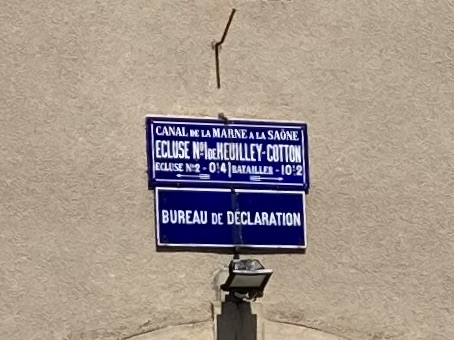
An hour later we were at Ecluse No 1 at Heuilley-Cotton.
This is now a major control centre for much of the canal, full of screens, computers and phones!
We had a conversation with the VNF* man in our ‘just-ok’ French and it was agreed that we could continue round the bend of the canal towards the tunnel and moor up to one of the dolphins there.
*VNF is Voies Navigables de France, and in English it means the Navigable Water ways of France .

Following Captain’s orders we soon had Calliope’s midships moored up to the last dolphin, with stakes in the ground fore and aft to hold her in place.
I needed a walk so went round the village, across the canal, and back. Yes, it was quite hot and sunny!





I knew from Google maps that there was not much to see in the village of Heuilly-Cotton apart from some old stone buildings. In the past it had been a fairly busy staging point for barges, but with the decline of commercial boats on this canal the village seems to have lost its focus.
The whole canal is built to Freycinet size – the Freycinet gauge is a standard governing the dimensions of the locks of some canals, put in place as a result of a law passed during the tenure of Charles de Freycinet, minister of public works of France, in 1879.
Although some Freycinet barges still work on French waterways there have been overtaken by the much bigger barges, some longer than 100m with a width to match. Obviously they cannot fit through a canal built the width of the Champagne et Bourgogne so it is largely used by leisure boats now.

Back on board we had a relaxing evening, knowing that all 43 ‘montant’ locks were behind us, and that got would be all downhill after the tunnel.
Tunnel Time
On Sunday 12th May it was time to leave the Saône side of the ‘mountain’, top through the tunnel and put onto the Marne side.
Breakfast done we called up the éclusier at Heuilley-Cotton to say we would like to depart. All was clear and a last ‘montant’ press on the telecommand gave us the green light to proceed.
The sun was shining and sky was blue, but we were about to enter the 5 kms of darkness that is the Tunnel de Balesmes.
This is quite a pleasant tunnel as tunnels go. It is more than 5m wide, well;l lit and has a rubbing strip along the side next to the pathway.
It’s ok for me – I am not driving. But I was given the task of using a torch to watch out for an area of the rubbing strip that was missing – we had been warned by a fellow bargee.

You can see here, just about, that our zig-zag fender is ‘rubbing’ along the wooden rubbing strip.
It turned out that thorough recent repairs inside the tunnel had replaced all worn parts of the strip with new wood; before long it was decided that my task was redundant.
That gave me time to notice a few ‘features’ during the 45 minute passage through.



I could see the big fans that presumably keep air circulating through the entire length; the calcium gathering on the walls and path from the water dripping through the limestone above; and the numbers every ten metres to mark our progress.
And then the light at the end of the tunnel grew large and bright ….
… showing the dirty sploshes of water we had gathered on the way.

And we emerged to the Marne side of the Canal Entre Champagne et Bourgogne where our downward journey begins – in the next episode.

6th and 7th May 2024 (plus a few days prep beforehand)
It was so good to be back on board early in May. The trip down was pleasant and uneventful once we were on the ferry. The UK side of the drive was held up for 40 minutes at Hindhead Tunnel, so we only just squeaked in to our booked crossing, but then it was calm and quiet.
Now we are a little older we choose to break the journey through France and have discovered that Béthune is a good place to stop.

Once booked into our Ibis hotel we had time for a walk into the centre and the Grand Place, where we found an ‘Irish’ pub, full of Belgian beer.
We found that we were quite thirsty!
Back at the hotel we had a good night’s sleep and after breakfast we were back on the road to Saint Usage and Calliope, with a stop at Ikea in Dijon for new Captain and Crew stools to sit on while cruising.



As always it was great to be back on board. Before long, we were (mostly) unpacked, admiring our new fishy cushions for the re-upholstered seats, and out on deck for that ever important first seasonal glass of rosé.
Then there was the excitement of our new roller blinds for the wheelhouse. Yes, Calliope has had a bit of a facelift this year. We felt it was time after 9 years good use.

There had been much debate over the blinds! I am not keen on the dusting of horizontal slats and we both wanted blinds that would shoot out sun and could ‘disappear’ leaving maximum light flooding in ay other times. So Stu worked with Laetitia Cabaret to design these roller blinds that can be as far up or down as the situation requires. I have to say we are rather pleased with the result. (Sorry, don’t mean to sound smug).
Stu installed them on Saturday while I did a mega-Intermarché shop ready for our trip up the Canal Entre Champagne et Bourgogne, where there are long stretches with no shops. We have been caught out before.
The plan was to leave on Monday, but before that we had a gastronomic treat in store.
Andouillettes!
Our lovely French boat neighbour Beatrice was determined to show us that this very French dish of pig or veal intestine is delicious. We were not so sure!
But Beatrice’s cooking, using a yummy mustard and cream sauce, actually had us asking for more!

Then final preparations had to be completed. I retrieved my ‘garden’ from Beatrice, who had watched over it while we were away, and put it back on board.
Then there was the obtaining a new gas bottle, filling up with water, and cleaning off the recently accumulated Saharan sand which had been arriving with each rain storm.



Monday soon came; it was time to say goodbye to good friends while the Captain turned Calliope round to head for the lock. (Yes, there are friends waving in each photo, tucked away almost out of sight!)
Within minutes we were tied up in the lock, and descending several metres down to a Saône river that still flowed quite fast – but not dangerously so.


The lock gates at Saint Jean de Losne are opened and closed manually, so many thanks to the éclusier (lock keeper) who pushed and pulled and wound for us.
The gates opened, and it felt like being set free to roam the waterways again. We were off to the start of another season. 😁

It was rather a grey start to our summer! But the river was wide and it didn’t rain. Here we are leaving Saint-Jean-de-Losne, heading upstream.
Within about two hours we were at the lock into the deviation for Auxonne – this canal of just over a kilometre avoids some more turbulent parts of the river and brings you into Auxonne just above the weir.

Looking back out through lock gates, if you enlarge the photo, you can just see the ‘pole’ that hangs over the water and has to be turned in order to open the lock gates.
We were lucky as another boat had arrived before us, turned the pole and then waited for us to arrive.

The lock quickly filled, the upper gates opened, automatically this time, and a green light gave us permission to carry on up the deviation to Auxonne.
Now to see where we could moor. There are options at Auxonne. First we came to the wide steps that run down to the river and have bollards at the top, but with the river still above its normal level that would not be suitable.
Next are the town pontoons, our preferred place. We had a back up plan should they be full, option 3, the H2O marina. And we thought that was where we would be heading as the pontoons looked full apart from a 12m space – not good for a 20m barge!
However …. thank heavens for friends! We suddenly realised that the barge on the pontoon adjacent to the 12m space was Martin II – the home of Belgian friends who we meet at the most unexpected places on the waterways, from Nieuwpoort in the North to Moissac inn the South.

They spotted us, came out to say hello as we passed and soon realised the issue. They quickly pulled their barge back a metre or two, and came round to help Stewart delicately nudge Calliope into a space about 1 metre longer than the boat! We were moored across the two pontoons, but perfectly safe and secure. Thank you! 🙏



Later we had been invited to other friends for supper on their boat Polaris in the marina. A very pleasant evening, with good food and wine, was enjoyed by us all.
And the walk home in the late twilight beside the marina and river reminded us yet again how day after day nature is the queen of our boating life.

Once awake we were into our second day on the river. A quick trip to the boulangerie for fresh bread we were ready to carry on upstream.
The weather was clearing as we journeyed, bits of blue emerging in the sky. We began to feel as if Summer was arriving at last. There really had been a lot of rain in France during the Winter and Spring, but in many ways that had been welcomed; so many of the canal reservoirs needed a good top up, and most were now at 100%.

The Saône is so wonderfully wide compared to being on the canals, and the scenery on the banks changed as we travelled, always interesting and something new to see.

We saw kingfishers, night herons and kites. We heard nightingales everywhere, the yellow hammer’s ‘a bit of bread and no cheese’ song, and occasional golden orioles.
But the only birds to be seen, and stay still long enough for a photo were these two swans!
As we were only on the river for a short time I am adding in extra information I might otherwise leave out.
We came to another deviation – this time the Poncey deviation. Again it was to avoid a wide curve and potential dangers on the main river.
And once again there was a pole hanging ready to turn in order to prepare the lock and let us enter the canal.

There was also a sign telling us to turn it once.
In three languages.

They are not really poles – not any more. They are tubes of a rubberised fabric, light, easy to catch hold of and to turn.


But this one did not want to leave us as we manoeuvred gently waiting for the lock to be ready! At least it means you can see what they are really like.

Sometimes there is a pontoon to tie up to while waiting for a lock.
Here there was a ‘dolphin’ -a metal structure for tying to and with access to the shore.
The name ‘dolphin’ for these structures has intrigued me. It seems that it dates back to the Duc d’Albe who first built them in the Spanish Netherlands, and gradually the word dukdalven, a Dutch corruption of his name, has become dolphin in English.
We didn’t tie up this time. We could see there would not be long to wait. Once in the lock Calliope was secured to a couple of bollards and the blue lever was elevated to set the lock operation in motion,.The doors closed behind us, the lock filled to take us up to the same level as the canal, and then the doors opened in front of us.


A bit of lock info thrown in here; scroll on down if that is of no interest!
Tying up was interesting here, with the bollard set in some railings; this made my usual rope throwing/hurling trick impossible, but we could get close enough to hook it over. You can see in this photo that the lock edge is old and damaged. I had to be careful not to get my ropes in the crevice as they can jam and cause trouble.
Mostly where you see these levers it is necessary to push the blue one upwards to set the lock in motion, and that is the case here on the Saône. Make sure you don’t pull or push the red one in error – this is the alarm. The lock will stop operating and VNF people will rush to the lock to see what has happened! We did it once by mistake – never again, so embarrassing!

On this day everything went in its usual smooth fashion and soon the top gates opened, the green light showed, and we were on our way. (Apologies for my sad geraniums, left from last year. The new ones are up on the roof!)
That left us with 13kms to reach our turn off for the Canal Entre Champagne et Bourgogne. Apart from some swirling waters at a bridge and passing some friends it was quite uneventful, but I did take photos of some river signs to share.

The kilometre markers on the banks can be handy when you have lost track of how far up or down stream you are – known as PK markers on the maps.



Red and green buoys indicate which side of the channel to be, usually to avoid shallow water, but sometimes for other reasons. And the bright blue sign let us know that we were likely to meet water sporters around the bend. We didn’t. But it was a Tuesday in early May.


Then as we approached LaMarche-sur-Saone we spied two familiar sights (not through their binoculars, but I rather like this effect). One was the waterside restaurant La Nymphe where we had moored up with friends for a delicious dinner 18 months before. The other was the boat of two Piper friends, tied up by a grassy park. A quick conversation across the water established that they had aimed for a mooring at Pontailler, further upriver, but the water there was over the quay, so they had retreated to LaMarche.
Next we passed the old wooden loading stage of the Poudrerie nationale de Vonges. It was established in 1691 and continues to this day, still producing explosives for various uses. Hidden behind those trees is quite an industrial complex.

Now it was our turn to pass Pontailler-sur-Saône, and under the bridge.
The yellow diamonds indicate which arches you can go through, normally on the right because that is the side of the river to ‘drive’ on. But occasionally you are told to move across to the centre or left, as is the case here. The bridge is on a bend; boats coming downstream and heading to their right would find themselves caught in the centrifugal force of the current, so they need to go to their left; the upstream boats reciprocate.

That did not stop it from being quite a ride for this upstream boat! You can see in the photo some of the current and eddies swirling around the arch!
And the logs, branches and trees that are whizzing down, or caught up on the bridge give an idea of how much water is still rushing down the Saône after all the rain of previous weeks.


We call the logs ‘alligators’ and keep an eye out for them so that they don’t get caught below the boat or on the propellor.
This makes it all sound rather dangerous, but it’s not. Calliope has a strong engine and can cope with the current. It just means that the Captain must be ever alert.
After that it became a lot calmer, with typical rural scenes and my favourite Charolais cattle.


Then we were at the next deviation. This one also led to our canal junction, so it was almost good bye to the wide wide river.
At this point the river sweeps round to the right and you can just see the entrance to the lock and deviation to the left.

Here’s a close up view, including the inevitable ‘pole’ to turn.
There was a short wait for the lock to empty and prepare for us. While we waited another boat arrived behind us and we chatted midstream until the lock was ready.
It was almost as if we were both dancing round a watery green maypole!
Then into our last Saône lock for a while, in the company of the other boat.
I rather liked the tops of the ladders in this lock – different to this I have seen before.


Coming out of the lock we immediately saw our turn to port – and into the Canal Entre Champagne et Bourgogne.
It’s one of our favourites.
So we waved goodbye to the other boat, swept gently round to the left, and into our next adventure, away from the wide and wild, and onto the straight and narrow – le Canal Entre Champagne et Borgogne – the next two episodes of the blog!

For one weekend every April Saint Jean de Losne in France becomes the lively home of Salon Flauvial, a major French inland waterways boat show. We knew about it for years before we finally managed to be there at the right time. The trick for us is to winter in Saint Jean de Losne – or in Saint Usage, next door, to be precise. Then we are definitely close enough in April to join in the Salon Fluvial fun.
This year the Salon was moved from the end of April to the first weekend. Accordingly we came out to France on 19 March, to give us plenty of time to put an extra shine on Calliope.
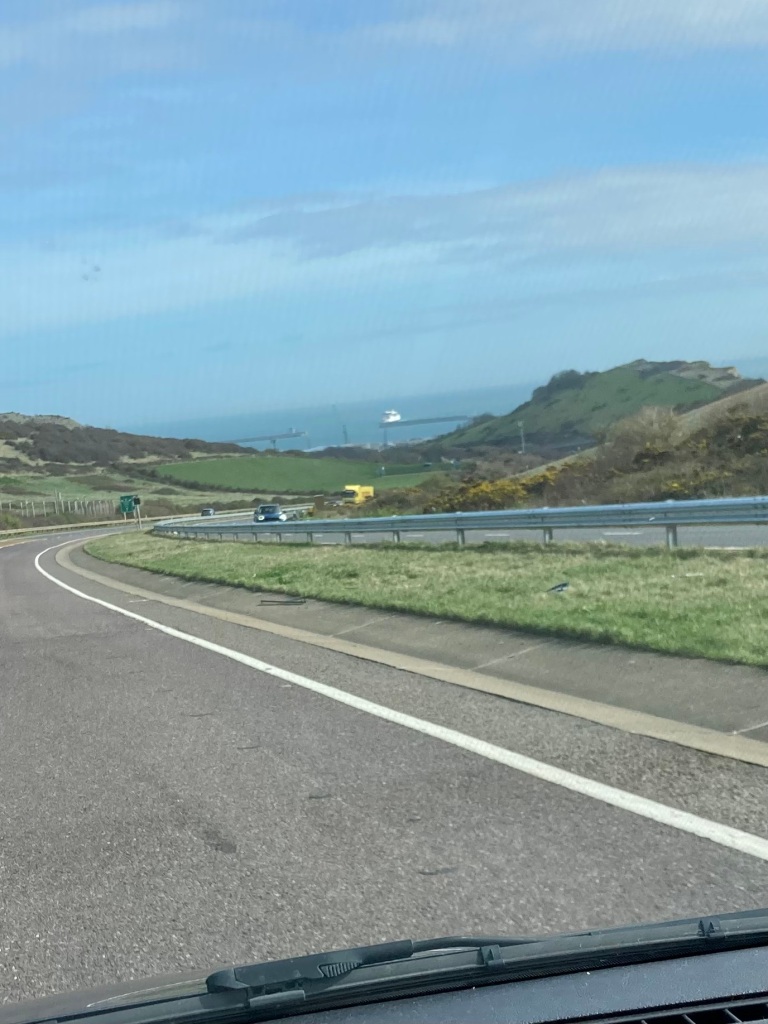
The journey to the ferry was a bit eventful with more hold-ups than normal – so we were pleased to see Dover!
And once on the ferry it was not too long before we could see France as well.
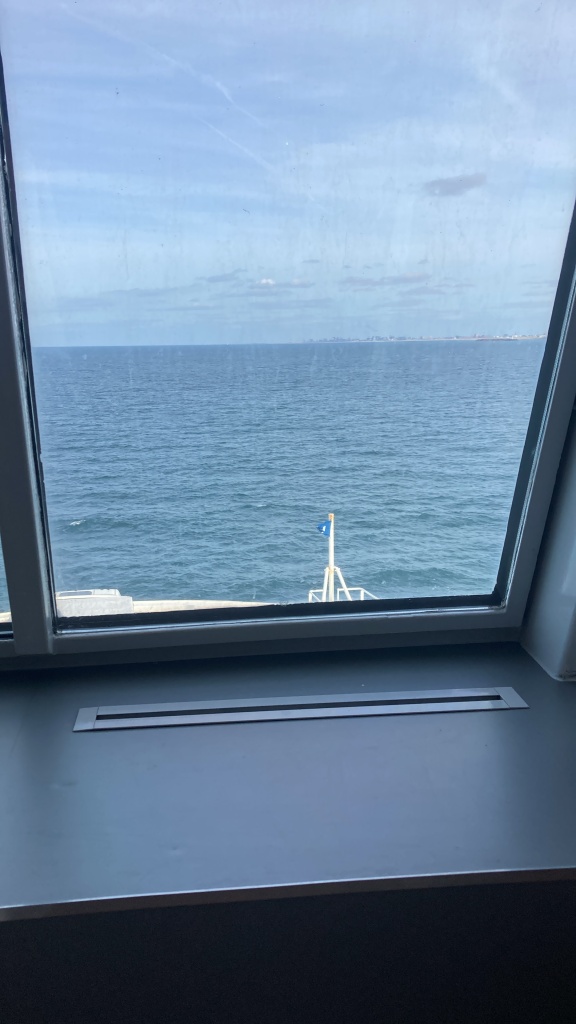
We made an overnight detour to Kortrijk (Courtrai) to see good friends on their barge, and to bring them some crumpets from England!
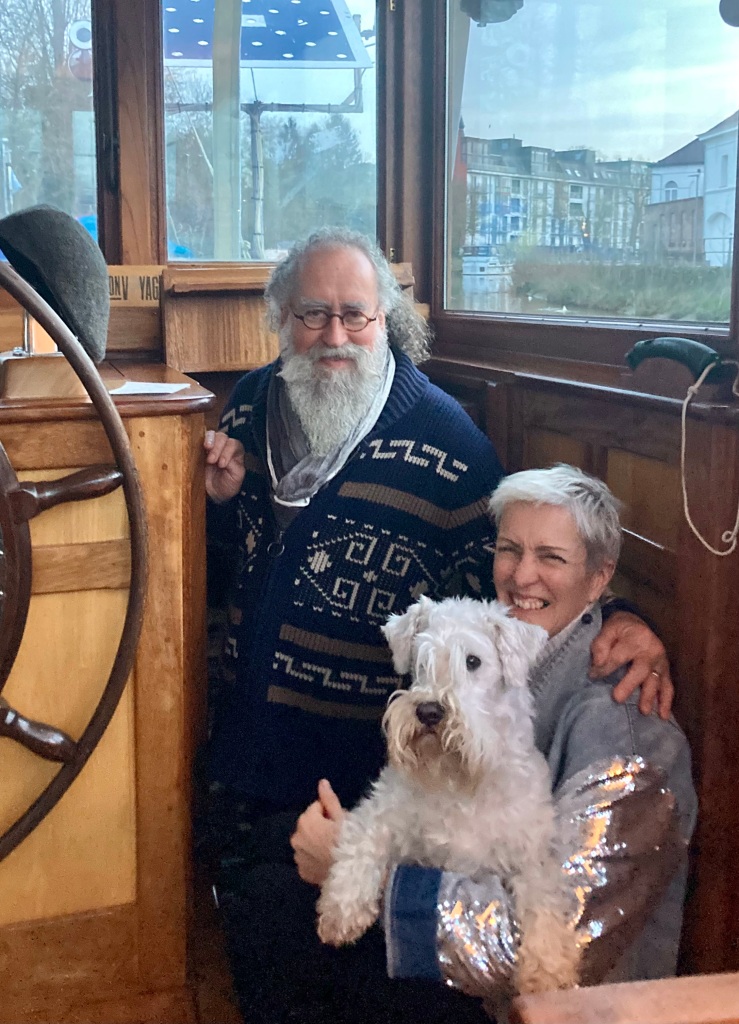
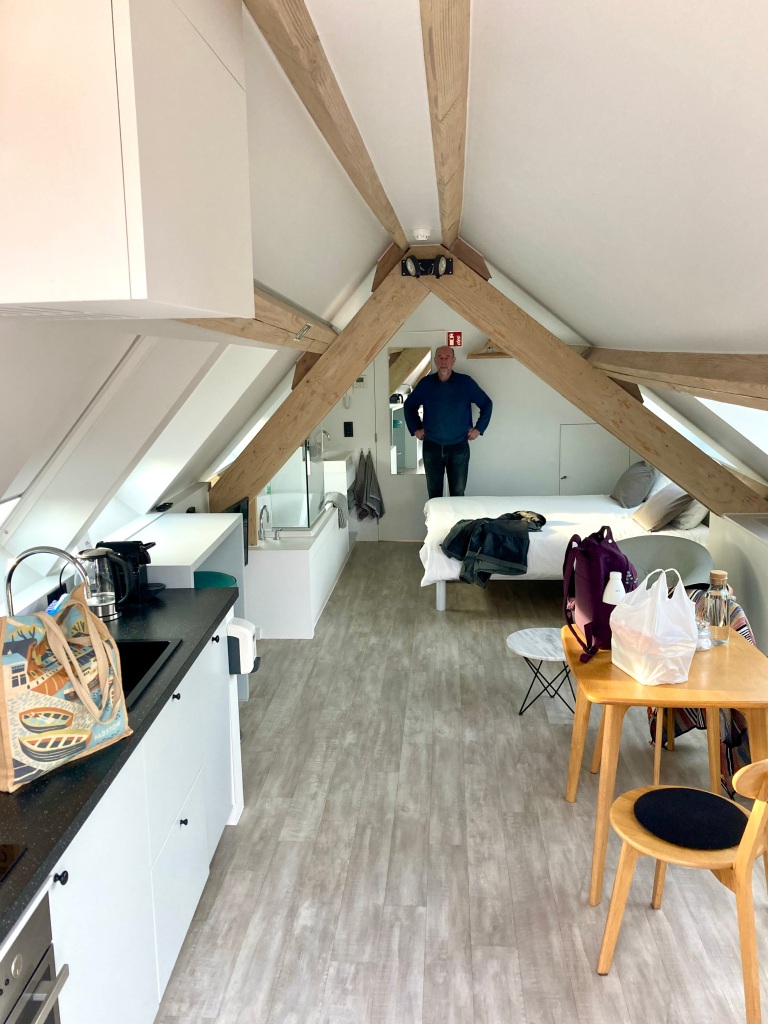
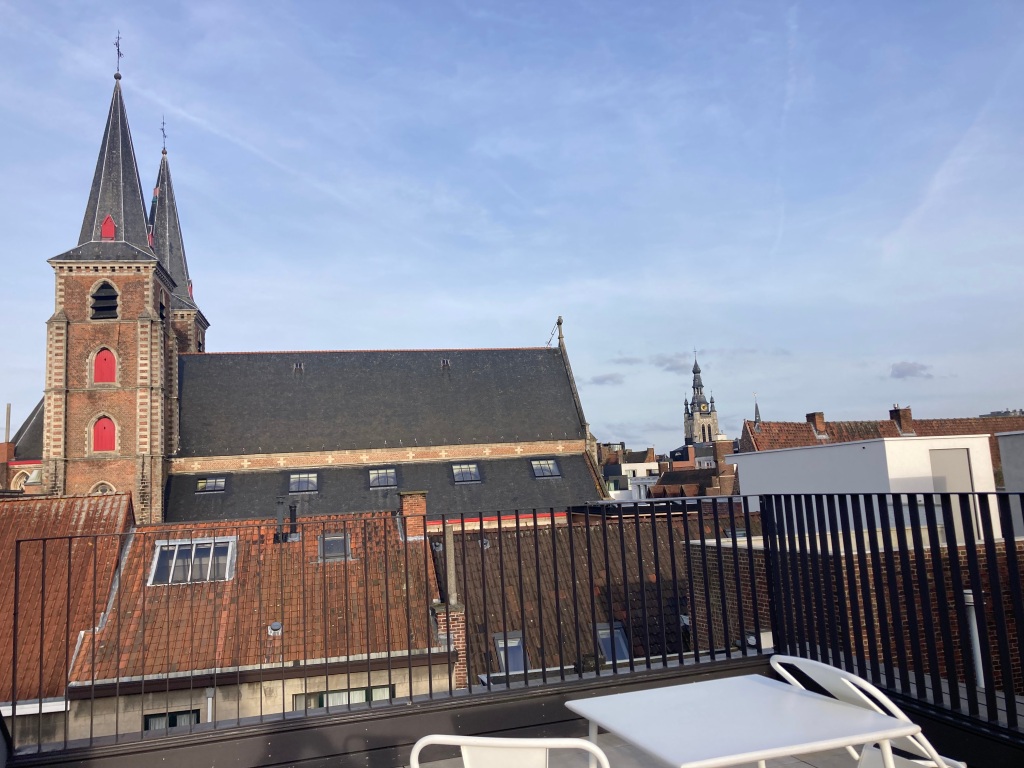


We booked into a rather marvellous studio apartment with roof top views – Homely – in case you need a place to stay in Kortrijk. Then a great start to the evening aboard Pavot with our great friends, out to their choice of a good fritteur, and a walk home with the UNESCO World heritage Site Broel towers lit up just for us (not!).
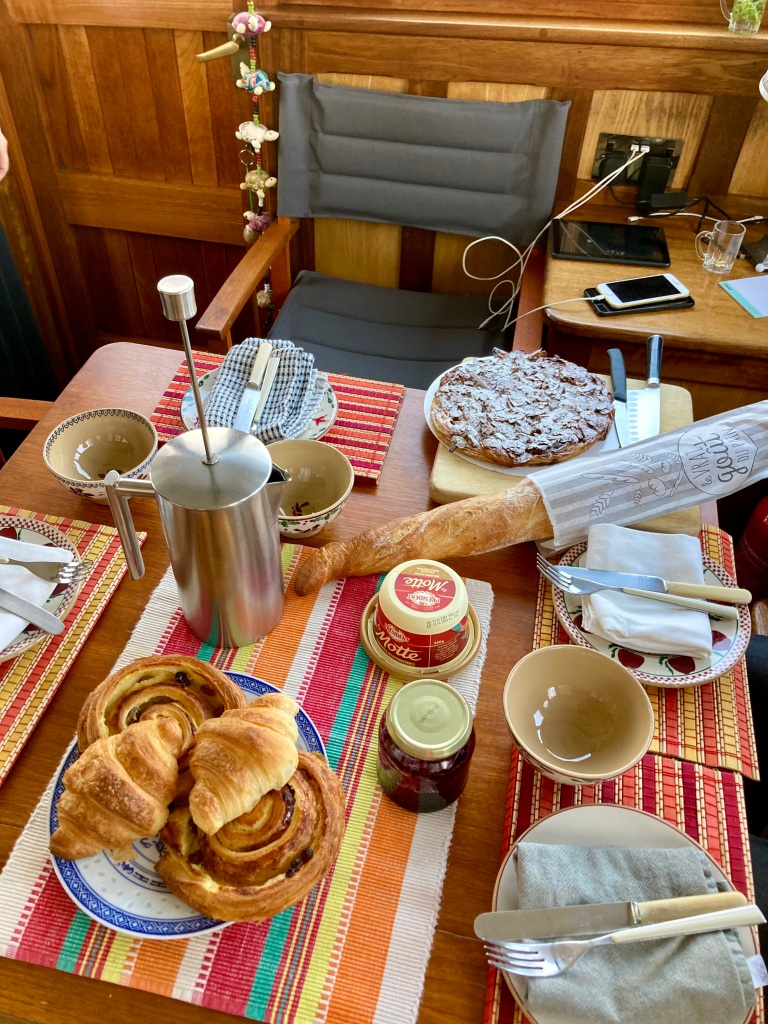
And we were not allowed to escape next morning without a Full Belgian breakfast send off!
Five and a half hours later we were in Saint Usage, next to the better know Saint-Jean-de-Losne, stepping back aboard Calliope and enjoying some unexpectedly warm weather – 22C on March 20th.
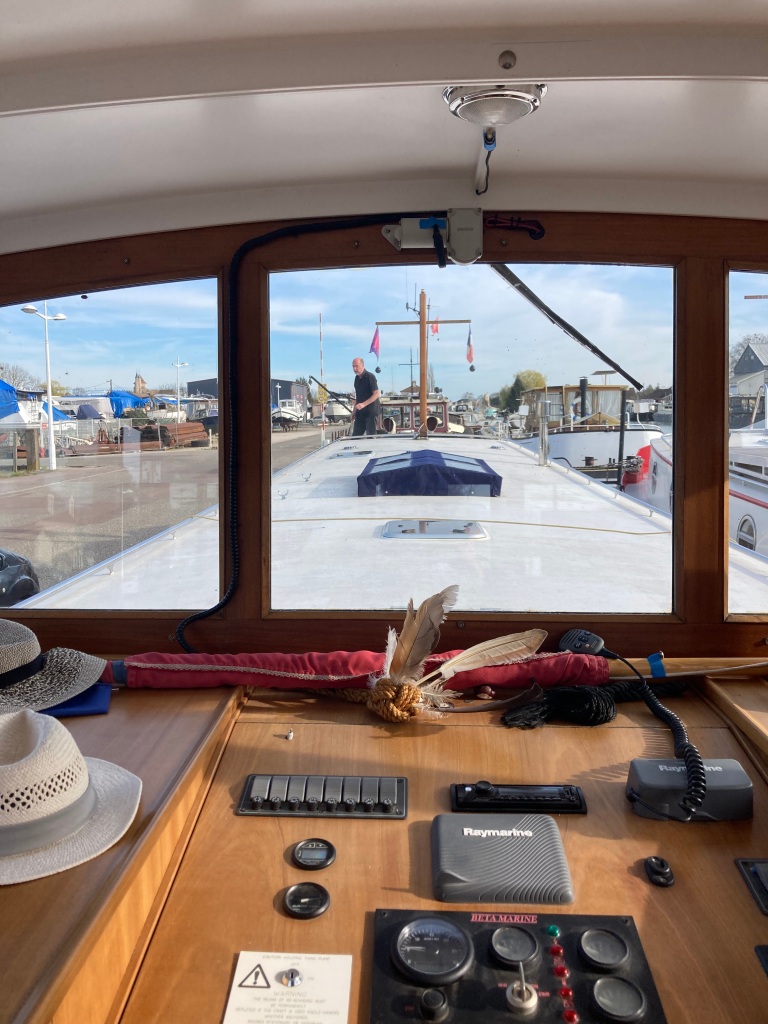
The warm weather lasted into the following day, making the first cleanup so much more enjoyable. It was not long before we had the major accumulation of winter dust and grime removed and our lovely barge began to look ship-shape.

In addition to some Spring cleaning inside and out we had shopping to do and friends to meet.
I think we deserved that first glass of rosé on the back deck!
Another blue sky day and the opportunity for the second clean up – getting into a few more of the nooks and crannies!
She scrubs up well. 😁
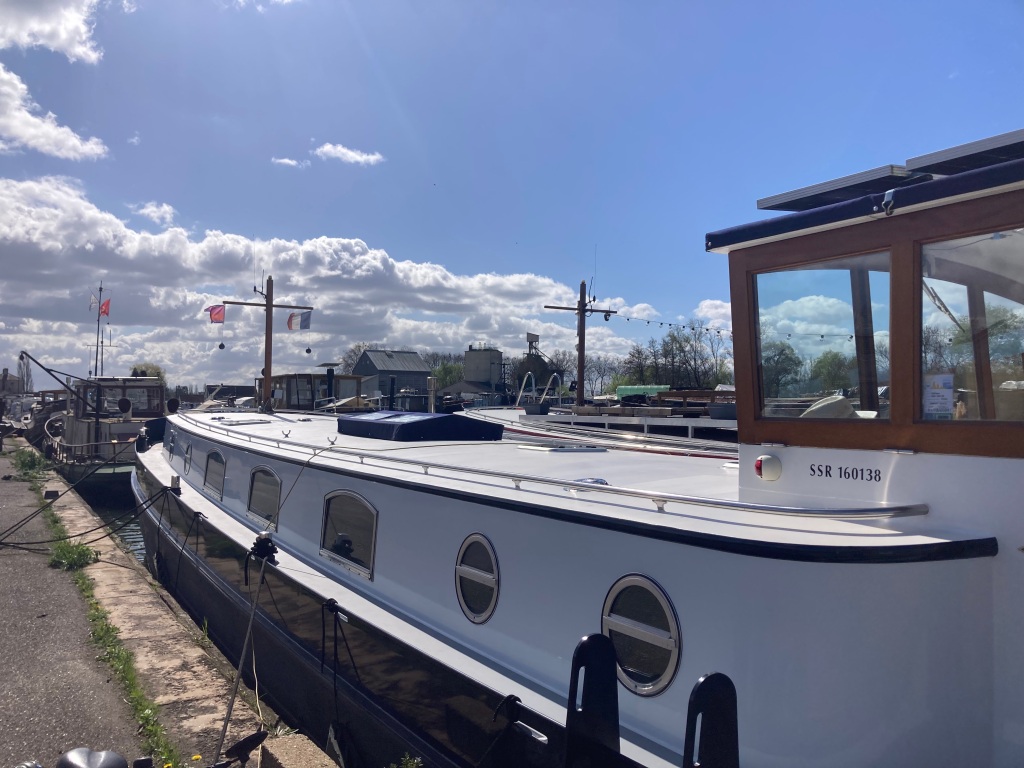
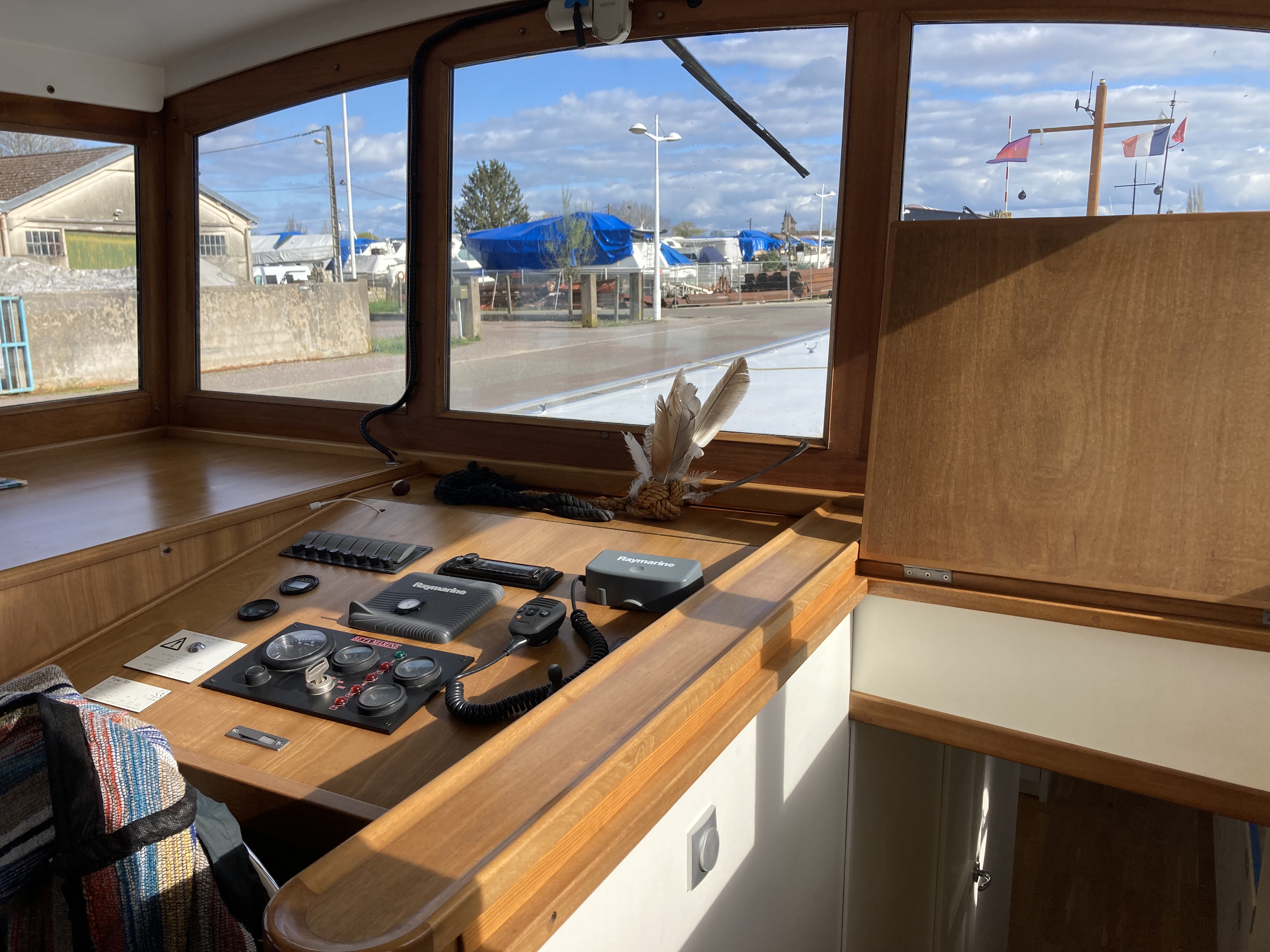
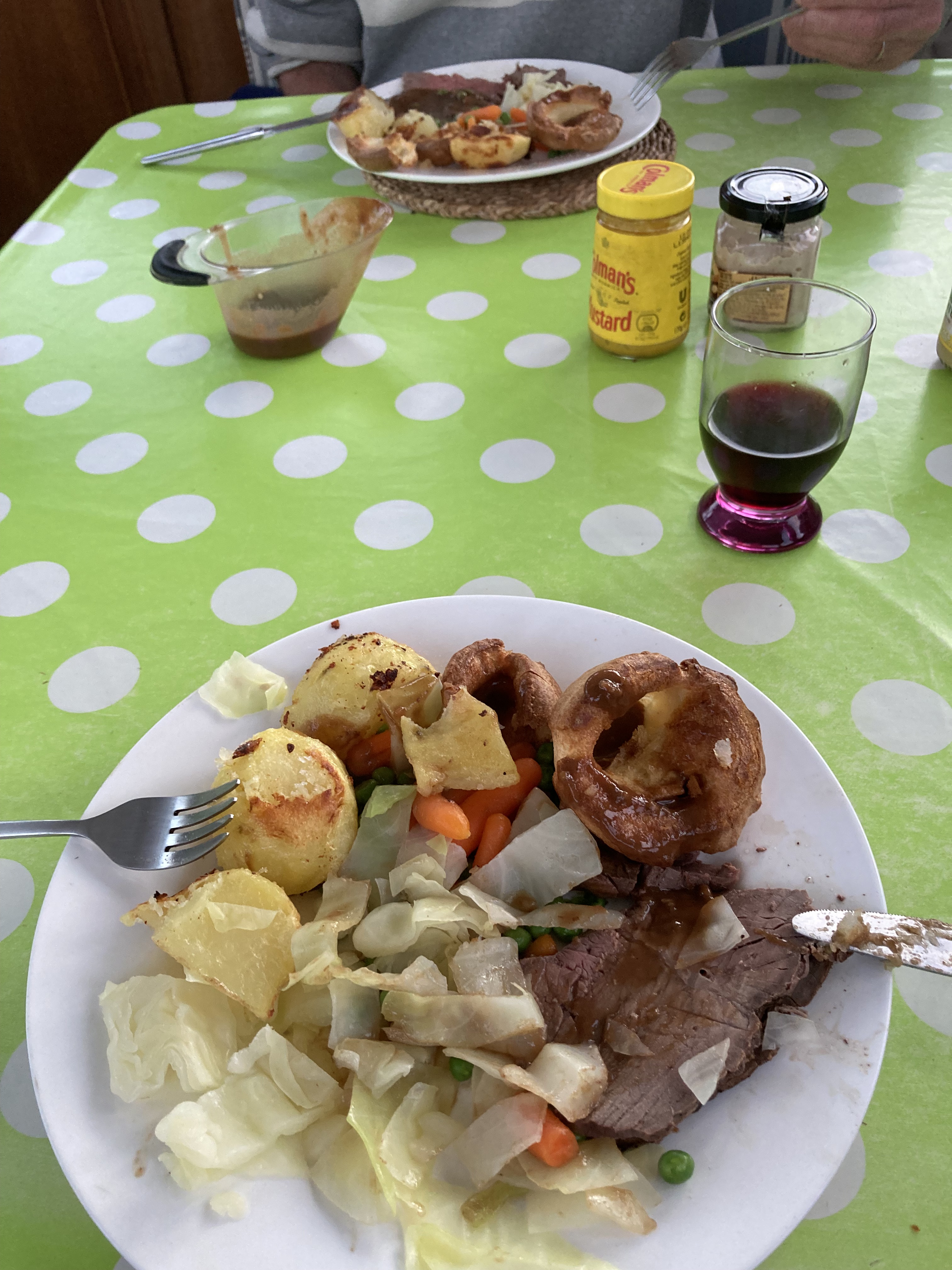
By the time we got to Sunday the wind had changed and suddenly it was ten degrees colder – and more like the expected temperature for March! I got on with oiling all the wood in the wheelhouse – it’s well worth the effort. Then we cooked a Sunday treat – good British Roast Beef Dinner, complete with Yorkshire puds. Yum yum.
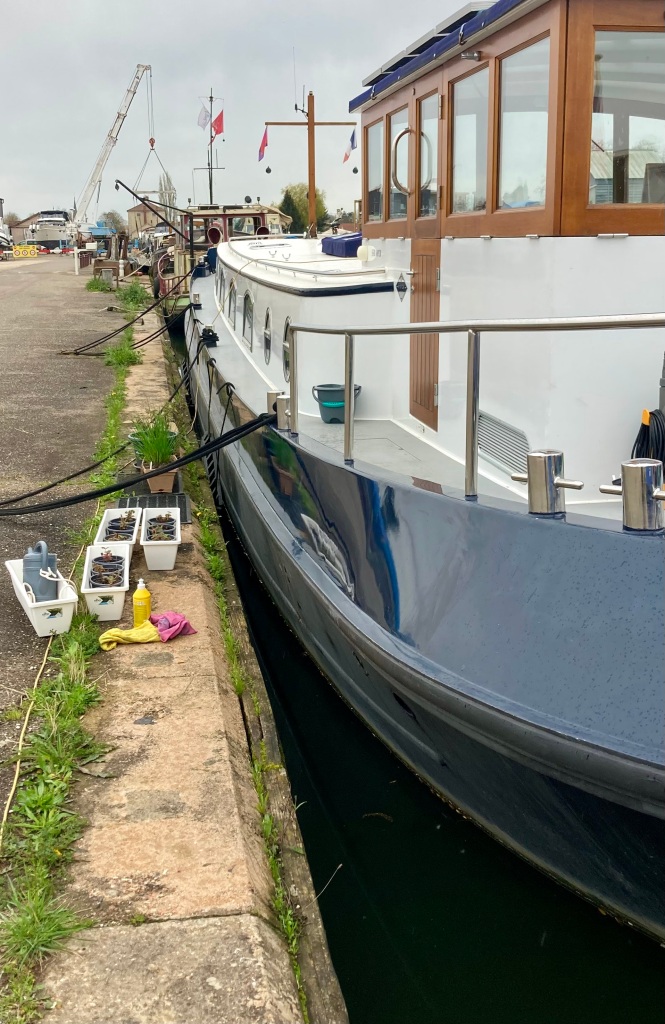
Despite the drop in temperature it was not raining, so some polishing of the hull took place.
You can see the difference between sections I have and have not polished!
We like Calliope to look smart for Salon Fluvial. She may not be the newest boat in the Piper fleet, but she can show potential customers how well a Piper boat lasts.
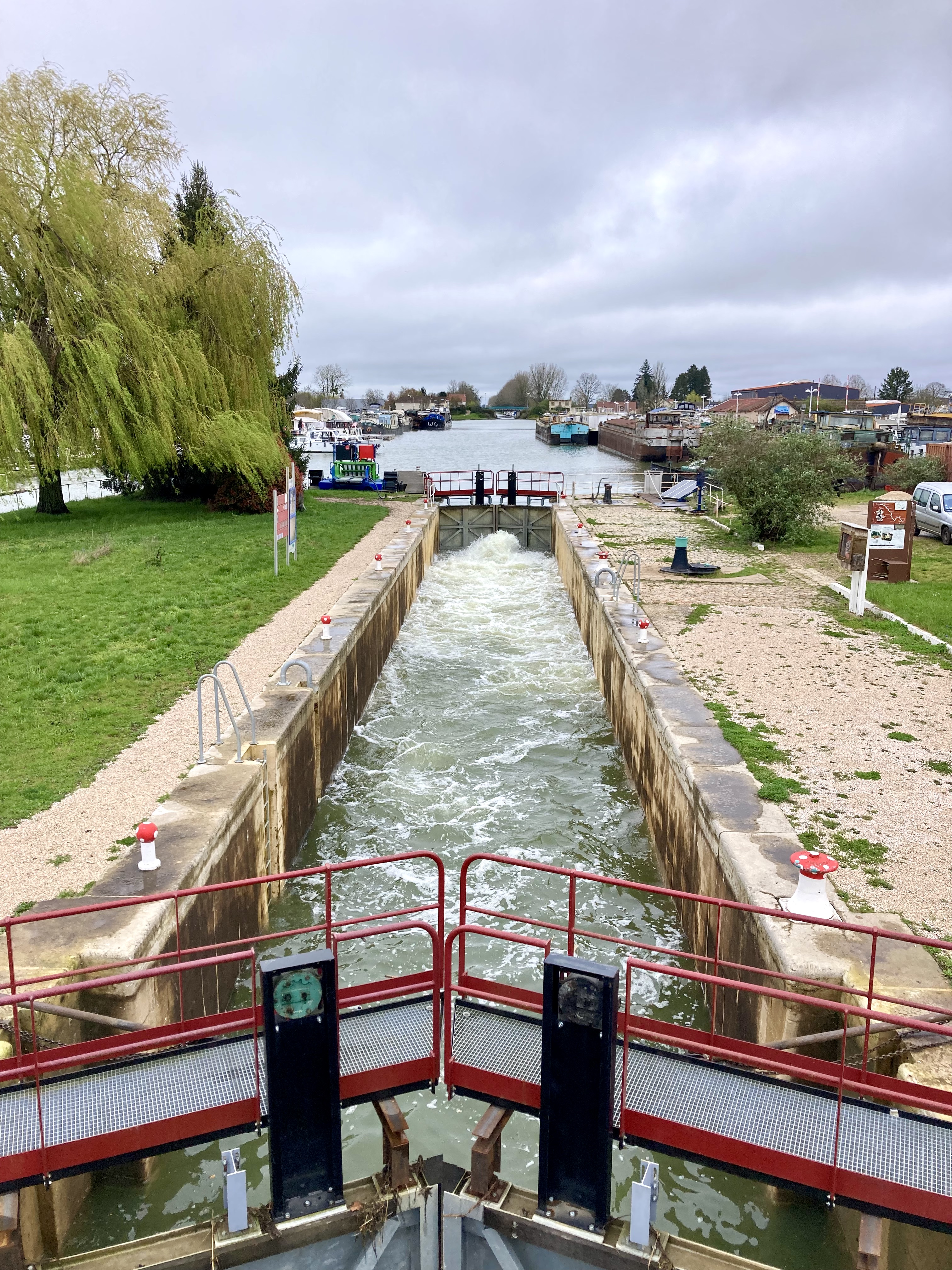
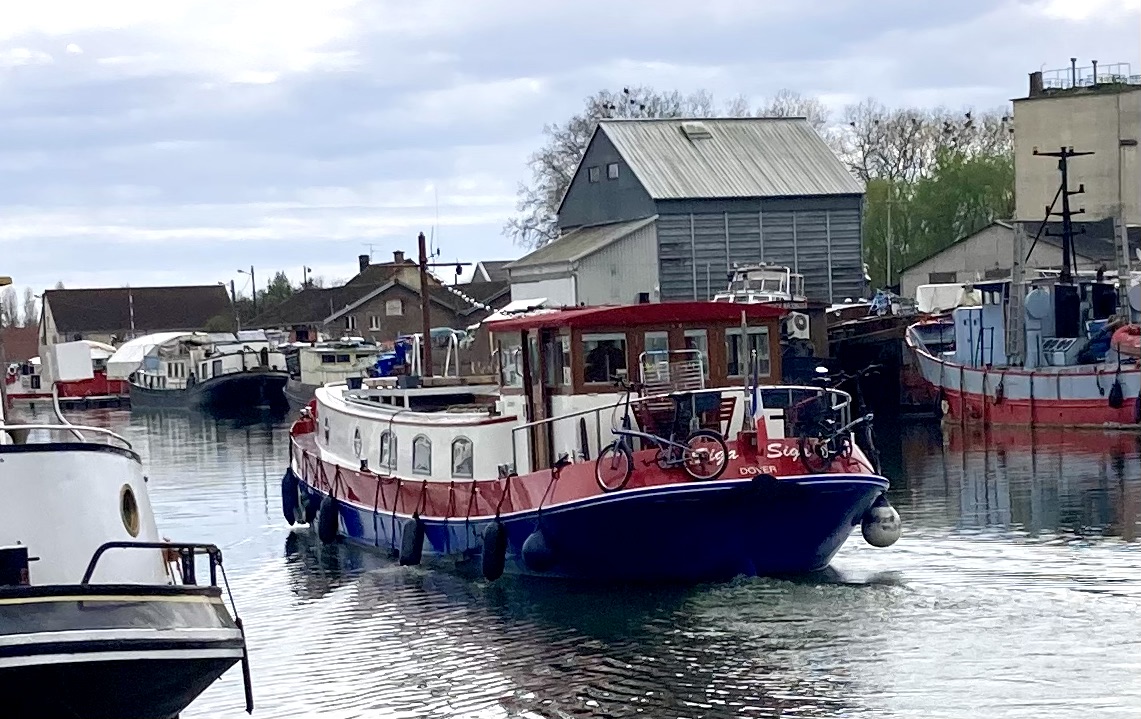
Later I went to watch the lock up from the Saône River fill to allow a boat down, and then Piper boat Songbird came up to join us.
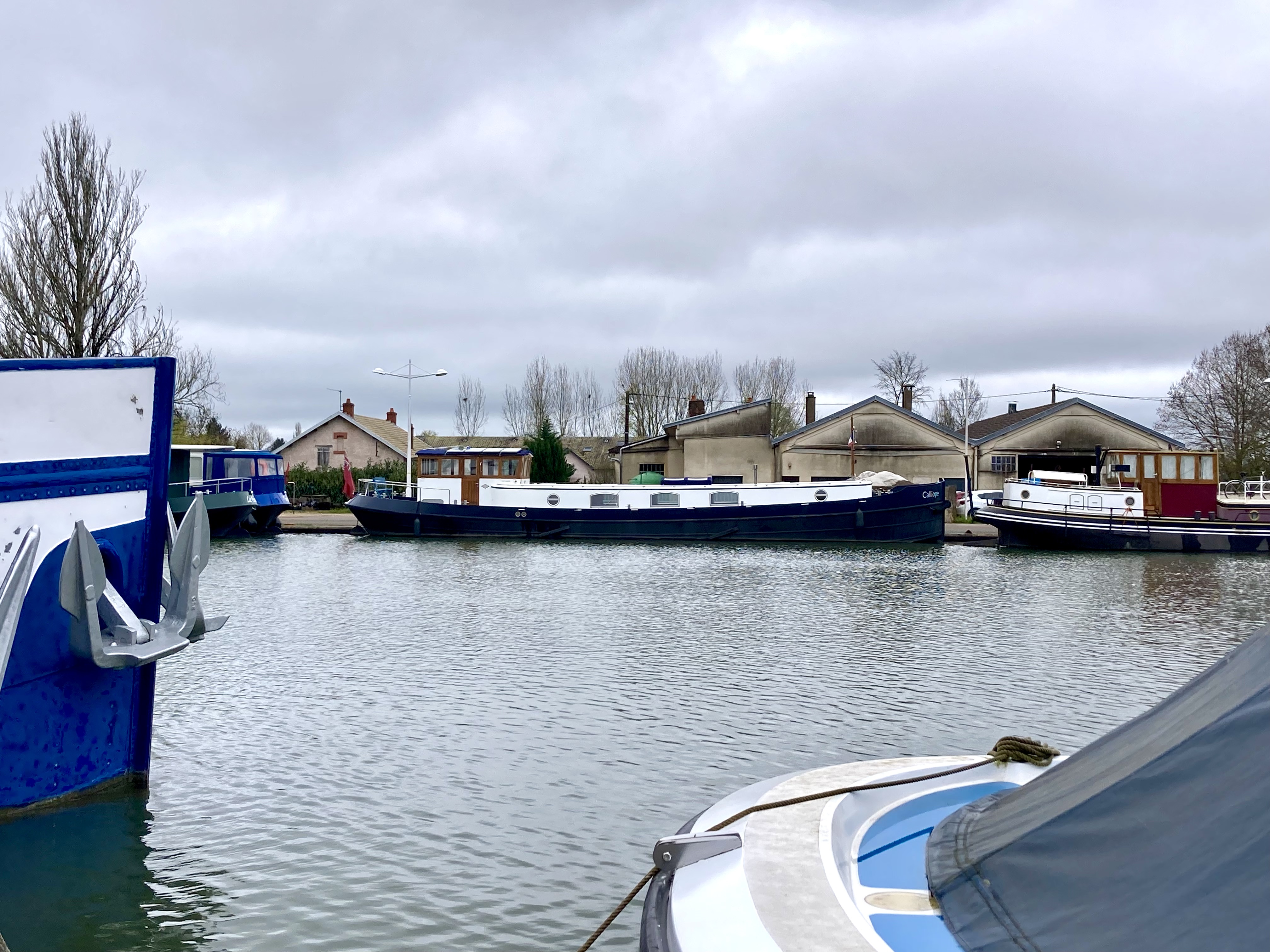

I took the opportunity to walk right round the basin and get a photo of Calliope from the far side – and a photo of some nice pale pink Spring flowers that were growing at the edge of the water. To be honest I don’t know what they are!
Stewart had borrowed a guitar and wanted to get a capo to use with it. There is nothing like that in Saint Usage so we planned a drive to Dole, where we could also look at new cushions for the wheelhouse.
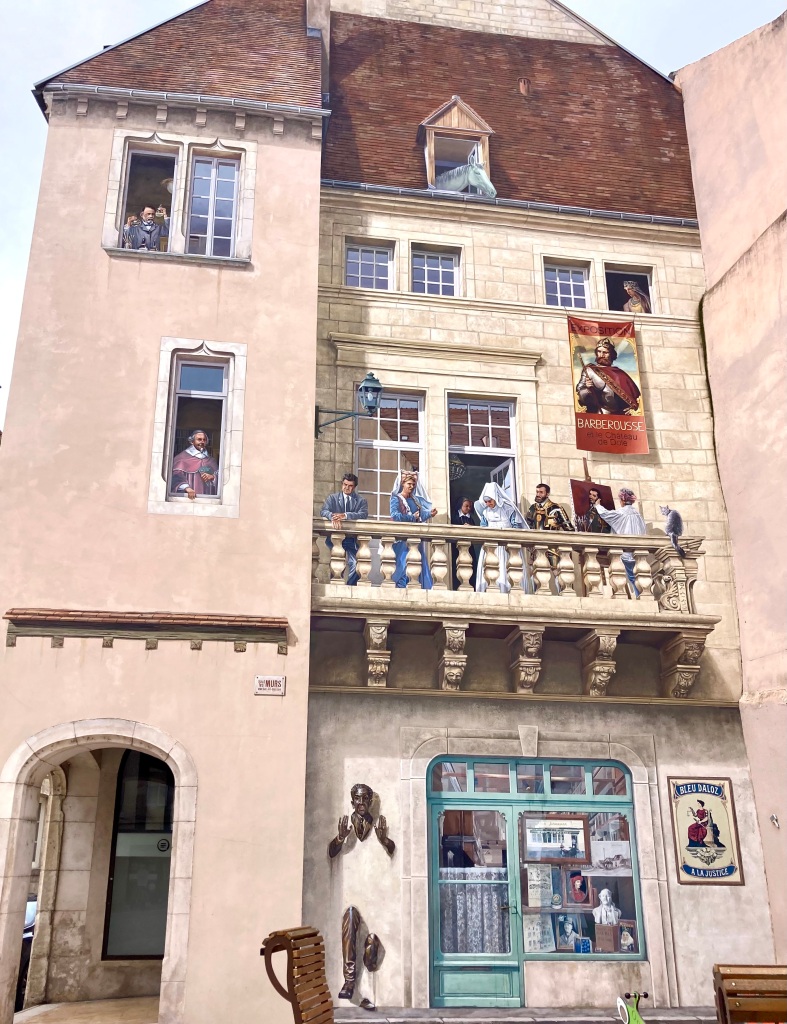
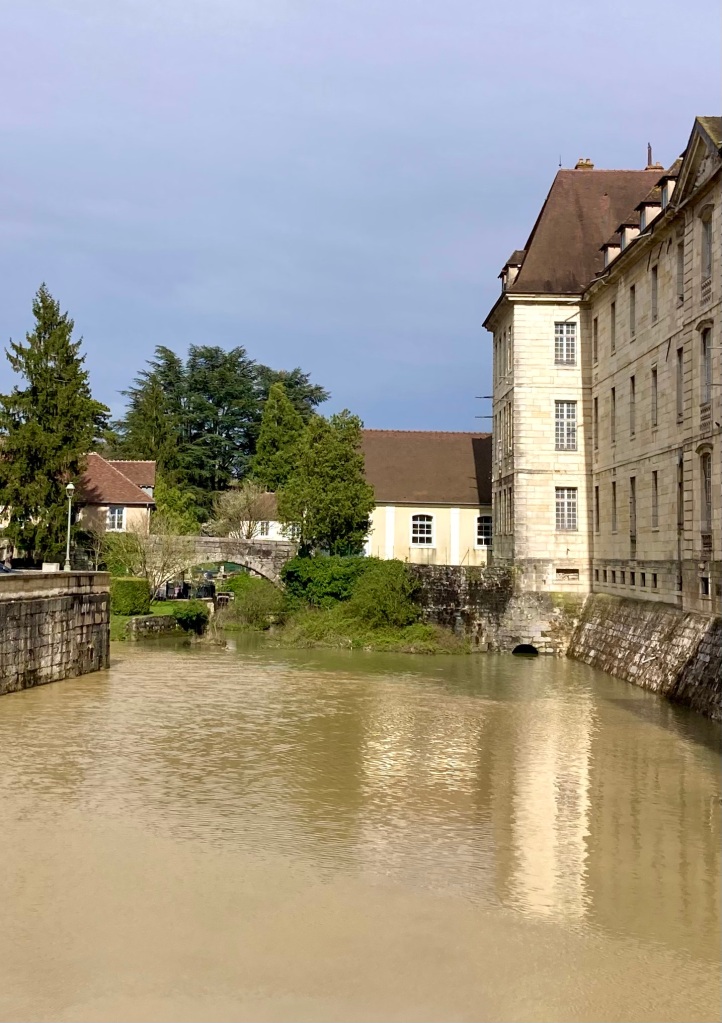
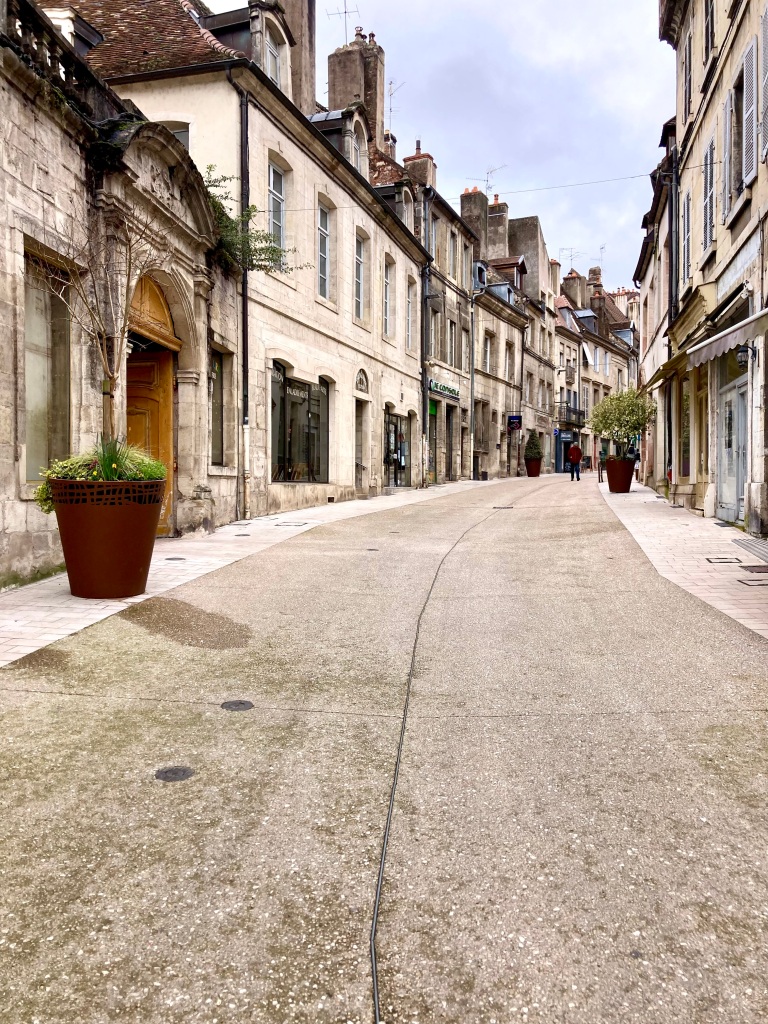
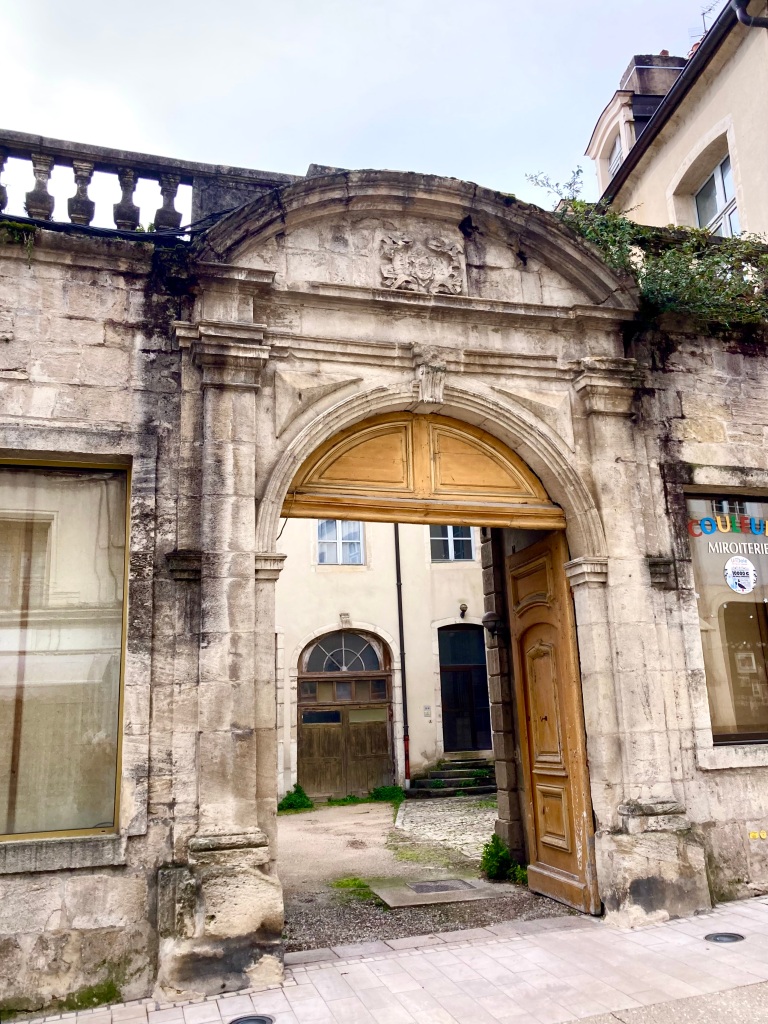
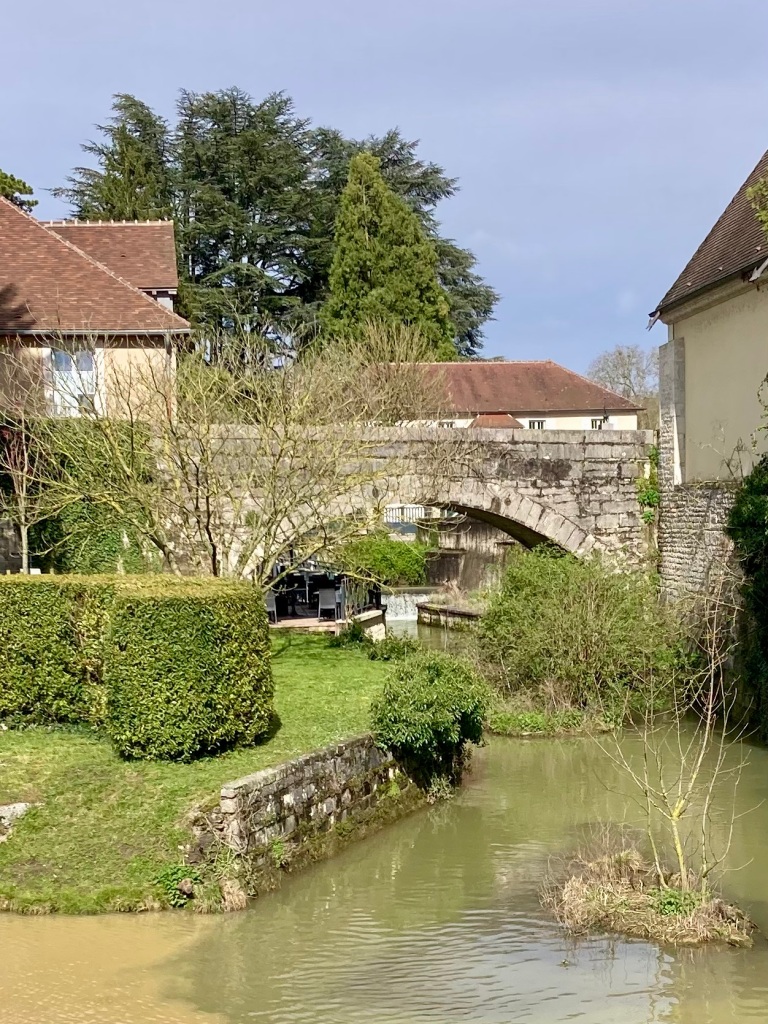
Dole is a lovely old town (city?) and these few photos do not show it anywhere near its best. But the day was a bit cold and we were not in the most ancient characterful parts, so this will have to do. But if you get the chance to visit, do!
Louis Pasteur is from Dole; there are quite a few references to him in the old town.
We returned home to Calliope with a capo, but no cushions. Ah well plenty of time to find them elsewhere.
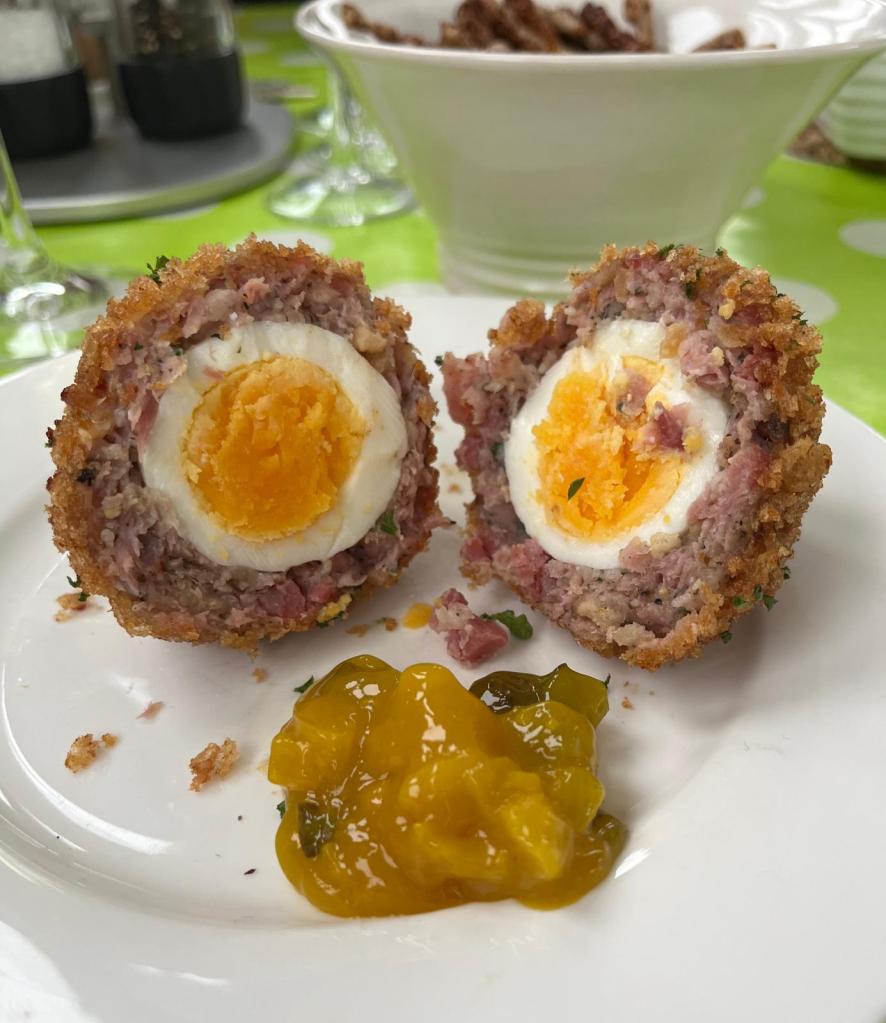
They were treated to Hula Hoops and twiglets, followed by Devils on Horseback.
And then home made Scotch Eggs, Mini toad in the Hole, scones with clotted cream and jam, and English cheeses with good old Branston Pickle!
Amazingly (to me) it all turned out quite tasty.
Now back to enjoying all the French food again!
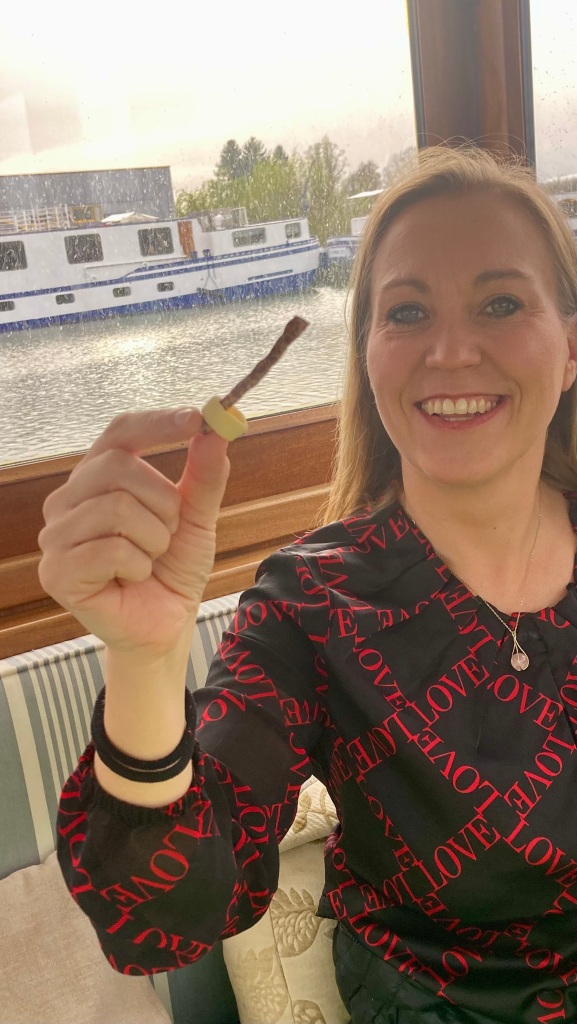

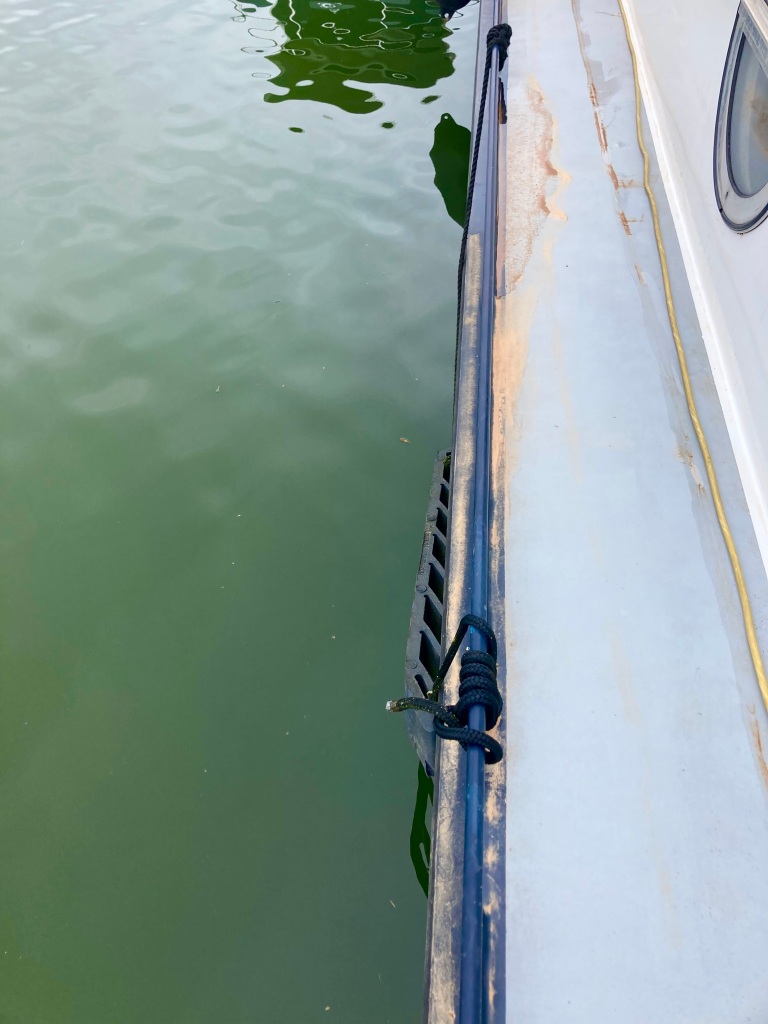
As we got closer to the dates for Salon Fluvial the weather turned in another direction. We had lots and lots of heavy rain, apparently blown in from the Sahara and bringing with it deposits of sand on all our cleaned up boats!
Ah well, that washes off easily enough.
But the floods were more of a problem. We were expecting another six Piper boats to arrive along the Saône and up through the lock into the Saint Usage basin. The floods had two negative affects.
The boats wanting to come up the river from the Seurre direction felt it would not be safe to push against the current whilst avoiding the large logs and fallen trees that were floating downstream.
Meanwhile the boats that came down from Auxonne found the lock closed for two days and had to moor up in the H2O marina nearby.
The lock was closed to traffic as it was being used to help manage the water levels in the Canal de Bourgogne, allowing water to escape at a great rate from the canal into the river, night and day.
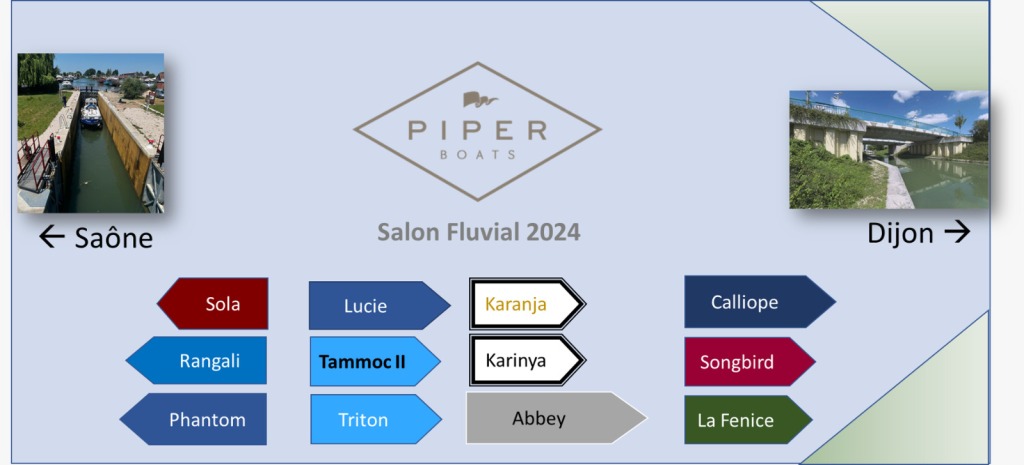
But this is all part of life on the water. Everyone was safe, and one day before Salon Fluvial the lock opened to allow 5 more boats to join us and gradually take their place in the Master Mooring Plan.
12 Piper boats were expected to be in place and await the visitors, although of the two coming from a Southerly direction, Tammoc II decided not to risk the strong flow, and Solar came a day later. So 10 of us in the photo below.
We had one brand new boat amongst us – the sleek and shiny and very beautiful 65foot Abbey.
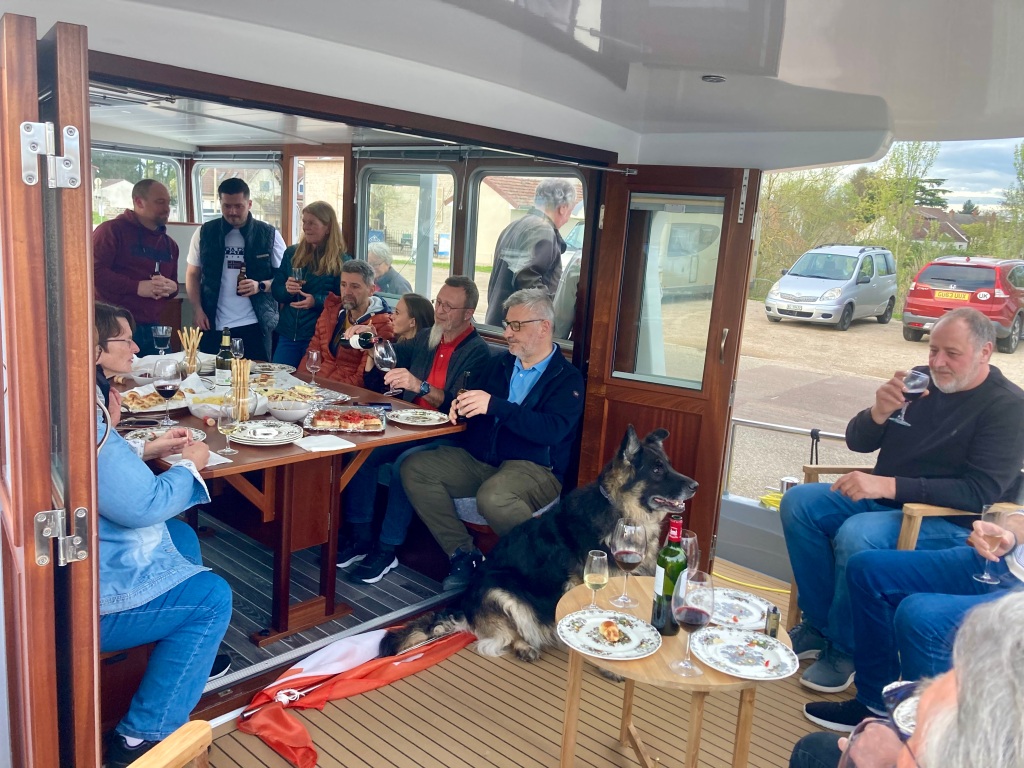
Abbey is an ideal party boat, with an extra large wheelhouse table and open doors onto the back deck. The new owners were keen to try it out and, knowing no better, invited us all on board.
I even tried out the resilience of the wooden deck by spilling red wine on it. It cleaned up perfectly. Phew!
As darkness arrived and we all returned to our barges we felt almost ready for Salon Fluvial.
On Calliope we still had some new bits to add. Our new seat cushions for the wheelhouse arrived!
We also had smart new sun shields for the dog box and windows, and some blinds on order for the wheelhouse; a good refurb!
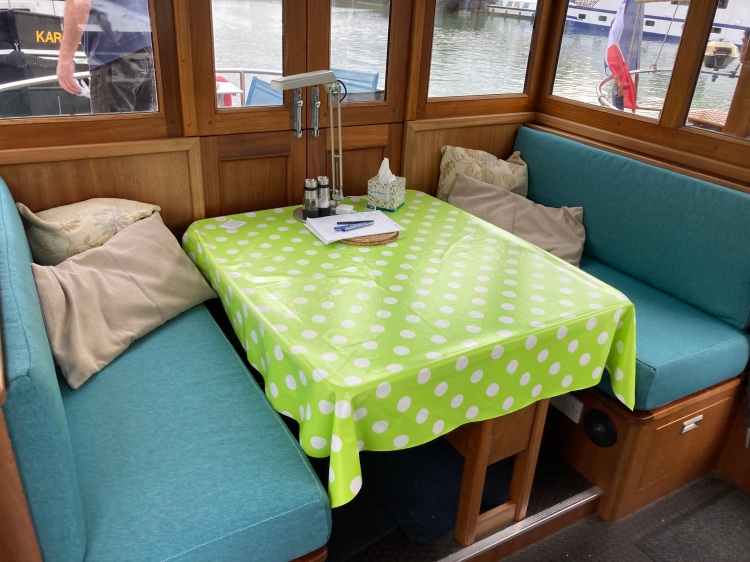
Over the next two days Saint Jean de Losne and Saint Usage were taken over by the boating fraternity and marine industry.

A row of small marquees along the grassy edge of the H2O basin was filled with companies offering all kinds of things of interest to boaters.
We were at number 31, our boats all in the basin at the start of the Canal de Bourgogne.
We did not get to see much of the other exhibitors this year as we were on board Calliope, ready to show round potential Piper customers.
It’s a very pleasant occupation, gentle and friendly. Stewart and I love to show our beloved Calliope to people. She still looks good after 9 years and it gives buyers confidence that buying a Piper boat is a lasting investment.
So the days might be slightly business like …… but the evenings are pure social.
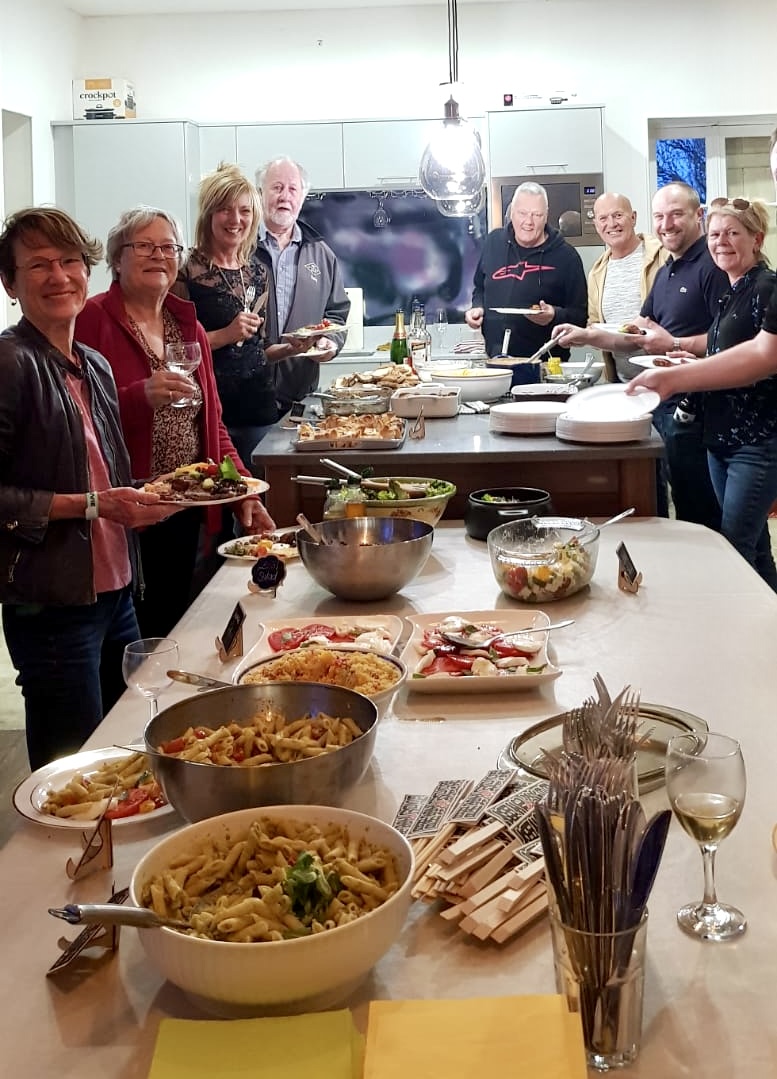
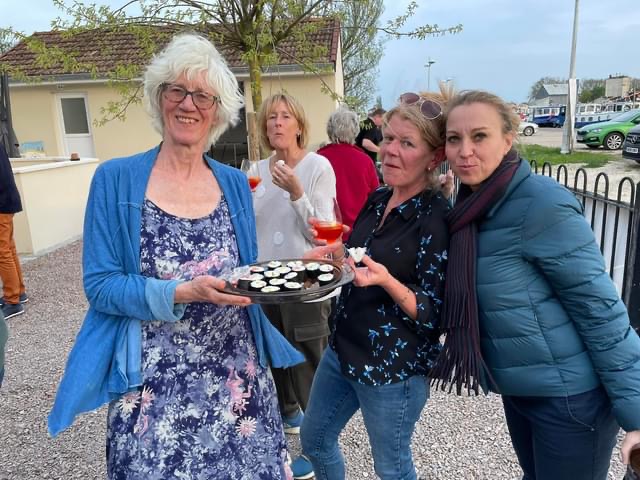
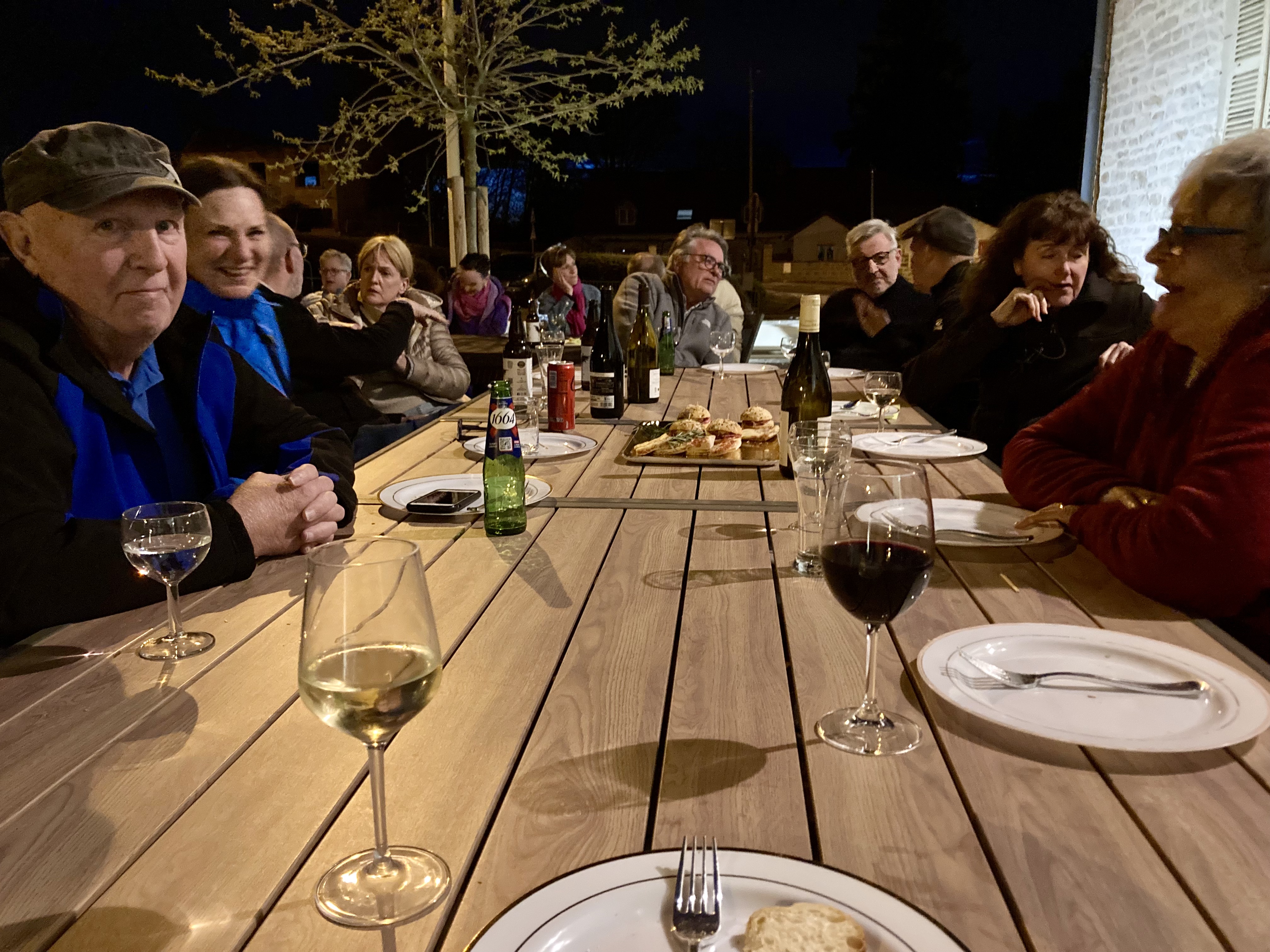
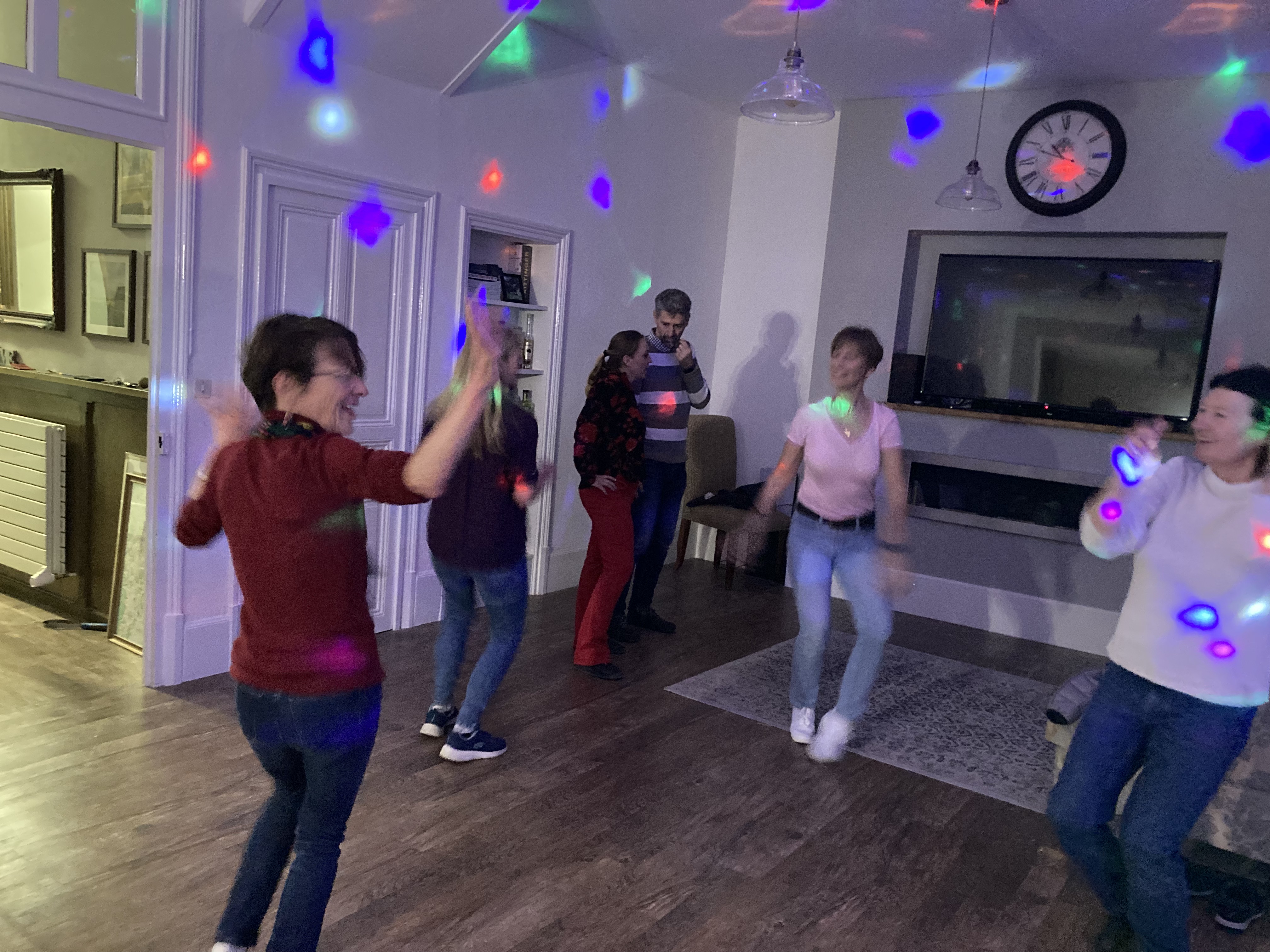
There were parties at the Piper house two evenings running! Its a time to socialise with other matelots, with some of the great Piper team and other local friends.
For one of them we boat owners brought the food. What a selection, from sushi to chilli, quiche to piri piri chicken, salads galore and desserts to die for.
I won’t dwell on the fun we all had. Suffice it to say that Simon and Andrea Piper are the most wonderful of hosts.
All too soon the two days of Salon Fluvial were over and everyone was planning their next move. For us it was a return to UK for a couple of weeks, waiting for our French visa to kick in.
We had a good day with Piper guys on board giving the engine a thorough service, changing a crucial Volvo Penta seal, and generally giving Calliope the once over.
Our favourite new bit of kit is the ‘silent’ DAB pump! Now when water is pumped to the basins, the sink, the showers, washing machine or toilets, you can hardly hear it; wonderful!
Then we were packing up and back on the road to UK, spending a night at Wambrechies, just North of Lille and an hour and a half form Calais.
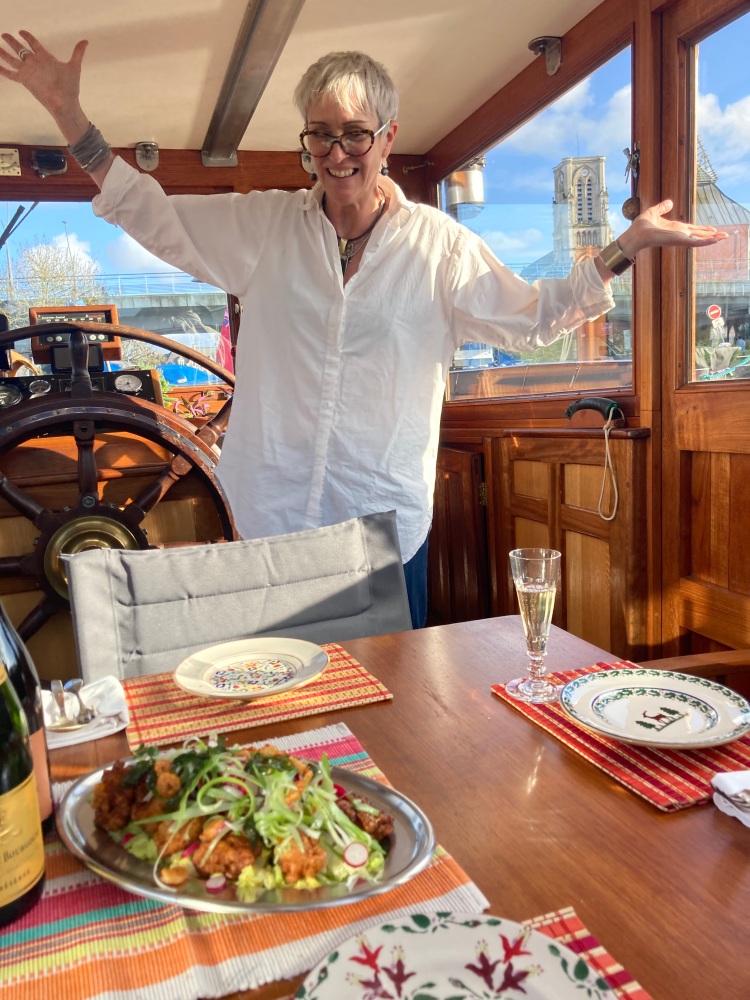
That meant we could visit again our good friends Martrin and Sally, and be treated to another great meal!
This time Sally was chef supremo, dishing up some very fancy tasty food.
And we managed to contribute with some bubbly and a slightly decadent Armagnac and chocolate dessert!
We stayed at a delightful off the track B&B, and were stuffed with very fresh croissants, baguette, home made jams and fruit before we left in the morning.
The roads to Calais were good and the weather was just right for a crossing.
It was such a lovely day that seals were basking in the sunshine on the beech next to the port.
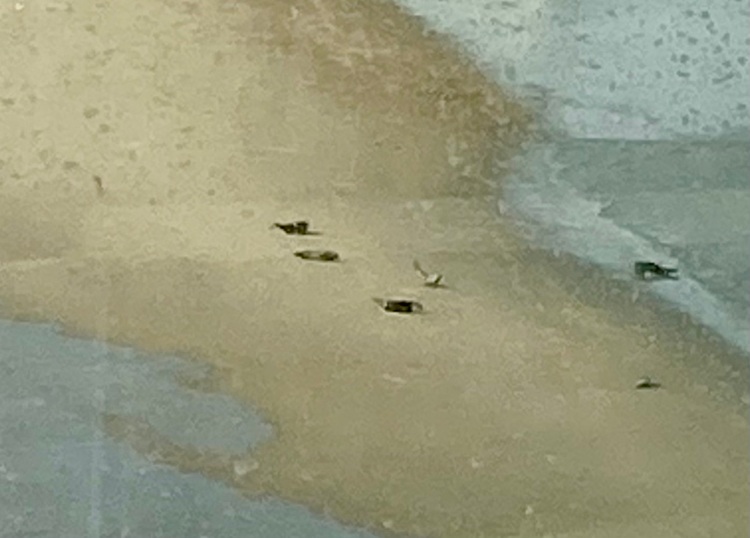
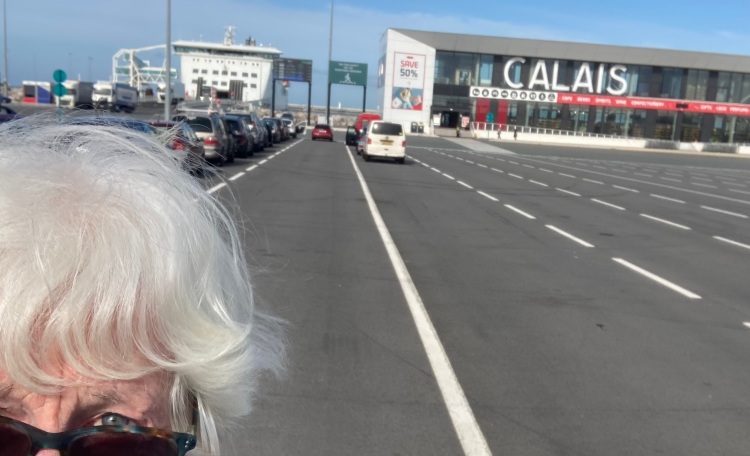
And that’s it really. The build up to and excitement of Salon Fluvial were behind us for another year. A few hours after reaching Calais we were back home and unpacking, but already mentally re-packing for our return to Calliope quite soon.
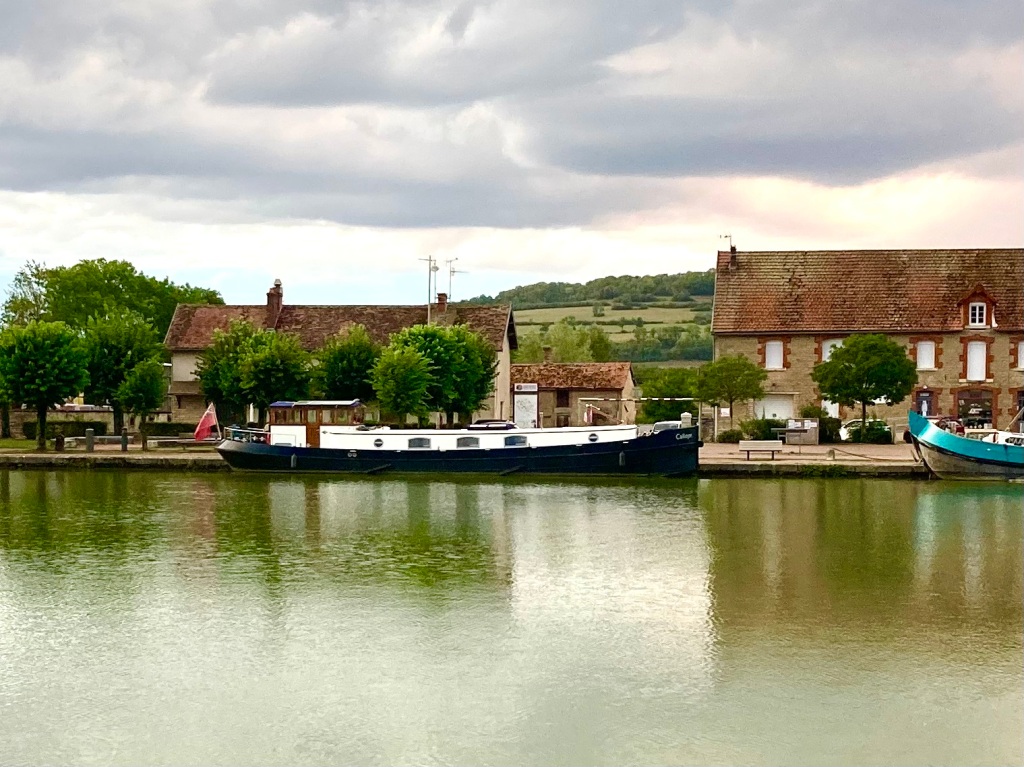
19th to 29th September 2023
The last blog I posted left us at the summit of the Canal de Borgogne, enjoying a rest at Pouilly-en-Auxois after a quite hectic climb up the Yonne side of this marvellous canal.
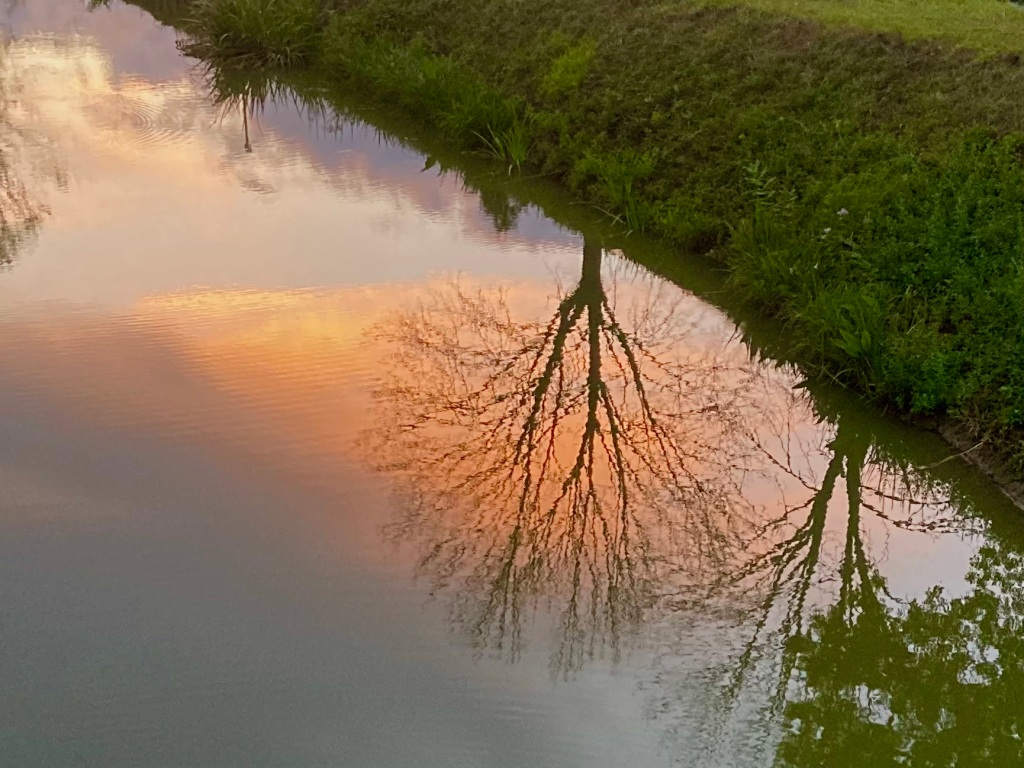
And after three days enjoying the sunsets, the convenience of a supermarket near-by and general relaxation we were ready to make the descent down to Saint Usage and our winter mooring.
We also had some interesting things to do – a tunnel to go through; the famous medieval hilltop village of Chateauneuf to explore; and our son arriving in 6 days time to see Dijon with us.
We had agreed with the éclusiers (lock keepers) that we would leave at 9.15 on the 19th September – you need to ‘book’ them for your start day and times.
This meant visiting their office and collecting the tunnel radio and a list of safety instructions. This included wearing our life jackets ✅, having two oars or barge poles available ✅, on-board navigational lighting ✅ and a fire extinguisher ✅.
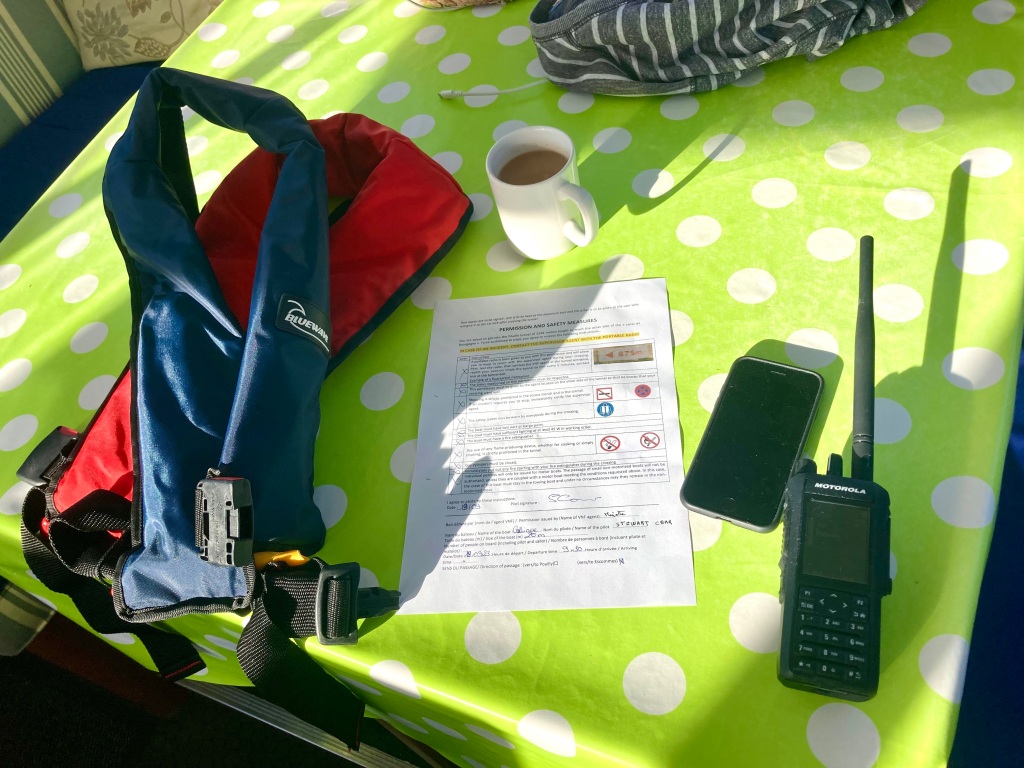
The other two essentials were a) a cup of hot tea, because gas must be turned off as you go through the tunnel, and b) a timing device, because you must radio in your position every five minutes as you go through; two more ticks ✅✅.
The approach to the tunnel is through a pretty tree lined cutting that leads directly out of Pouilley basin towards the little town of Pouilley-en-Auxois.
The approach is so nice that I had a go at capturing it on video – although I was disturbed by a radio call from the éclusiers just as we were about to enter. If you are interested it is included here – about 2 minutes long. You can observe Captain Stu’s straight as an arrow steering.
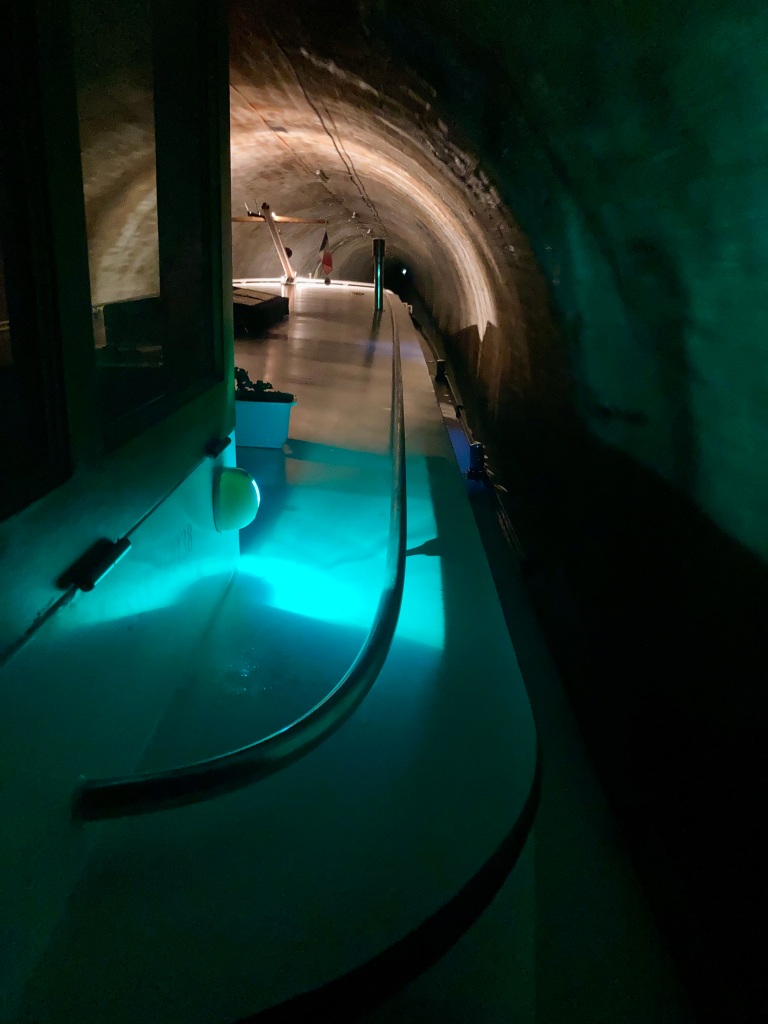
The tunnel is 3.3 kms long and 5.8m wide. It has no path alongside the water, and no lights, but with Calliope’s steaming light this is not a problem.
The ‘turquoise’ light in the photo is from the green starboard navigation light; the light ahead is from the steaming light on the mast.
You cannot see it here, but every 100m there is a marker telling you how far through the tunnel you are; this is what musty be reported to the éclusier, by radio, every five minutes.
But what you can see are the old electric ‘tram’ wires alone the roof of the tunnel that powered the electric tow craft that pulled barges through in the past.
And you can just see the light at the end of the tunnel. We were about a quarter if the way in at that point, but at least we could see where we were heading.
In less that 45 minutes Calliope was out the other side into the sunshine of another cutting.
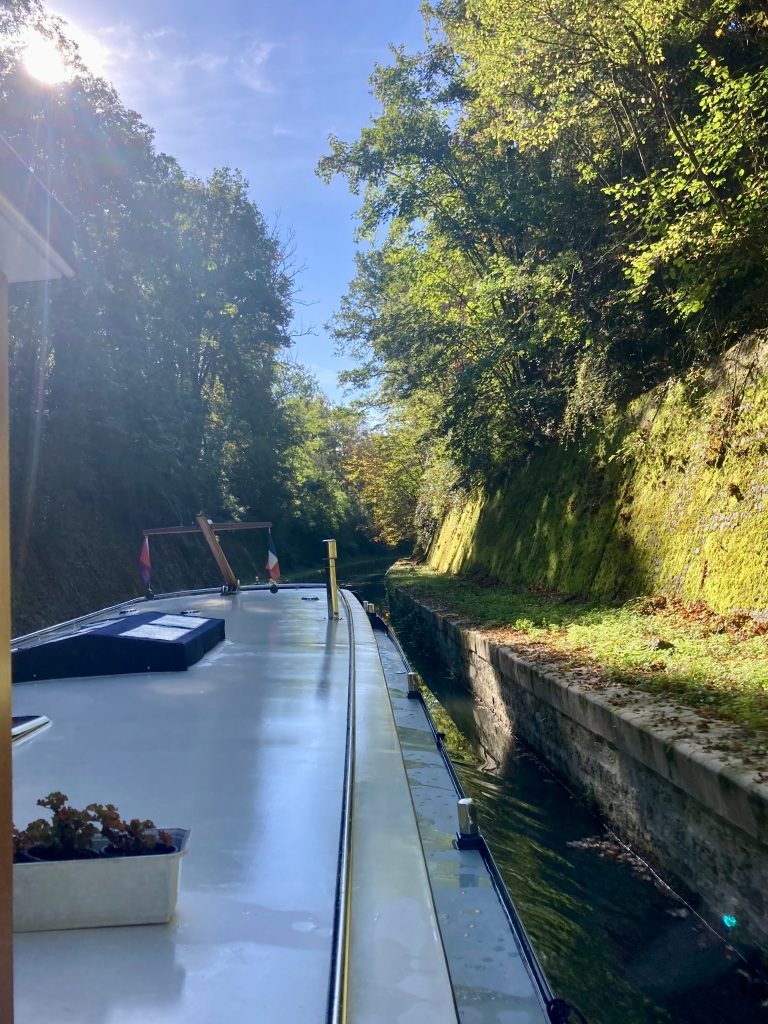
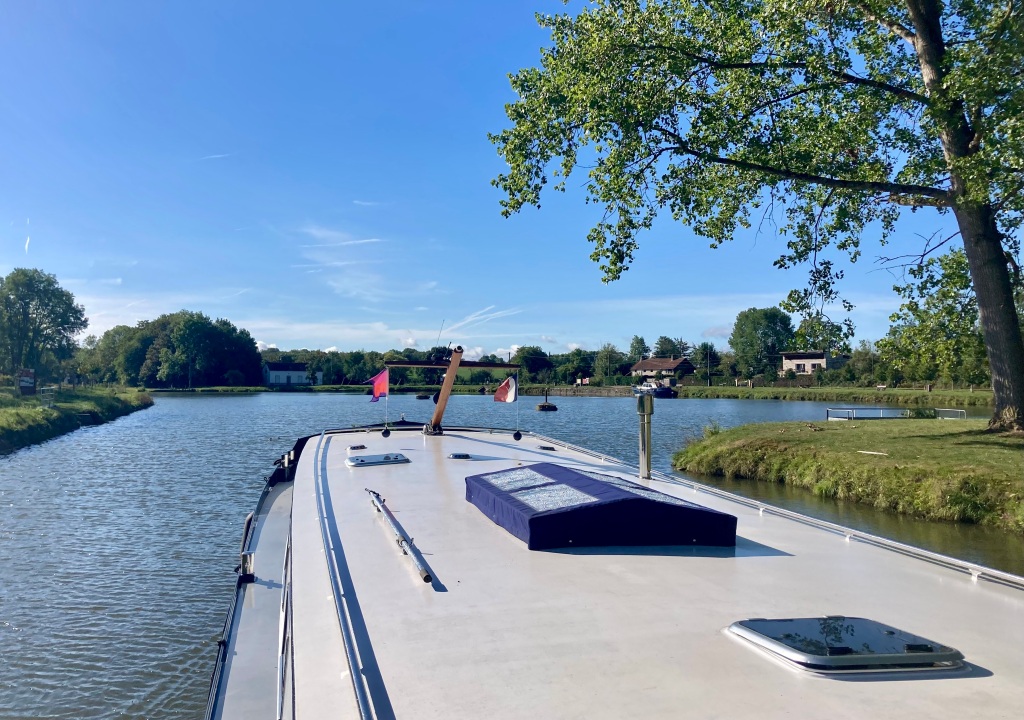
This cutting led us into another basin – Escommes – where, in days long gone, working barges would wait their turn to go through the tunnel. It is possible to moor at this tranquil spot but we had decided to go another couple of kilometres, and down 8 locks, to Vandenesse-en-Auxois.
Initially it seemed that our plan had not been conveyed from the Yonne side éclusier team to the Saône side team, as no-one was there to meet us. However a phone call soon put that right.

Another friendly team arrived and although it meant working through their lunch break they said they would get us down to Vandenesse as quickly as they could.
It is easy to forget how much quicker it is to go down a series of locks than it is to go up!
Everything is easier; we arrive at the same level as the bollards, making tying up simple, and water can be let out of a lock faster than into a lock – the boat is not in danger of being tossed around on a surge of incoming water.
The canal was looking absolutely beautiful this side.
And it was a joy to see an almost normal depth of water from side to side! The canal up from the Yonne was painfully short of water; we were the last boat allowed through to the top.
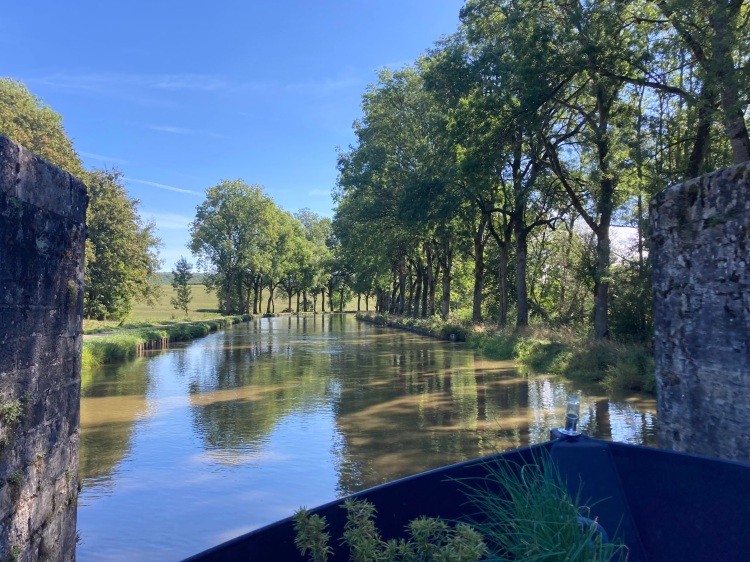
There are 8 locks to go down from the Escommes basin to Vandenesse, all quite close together, but not all the same.
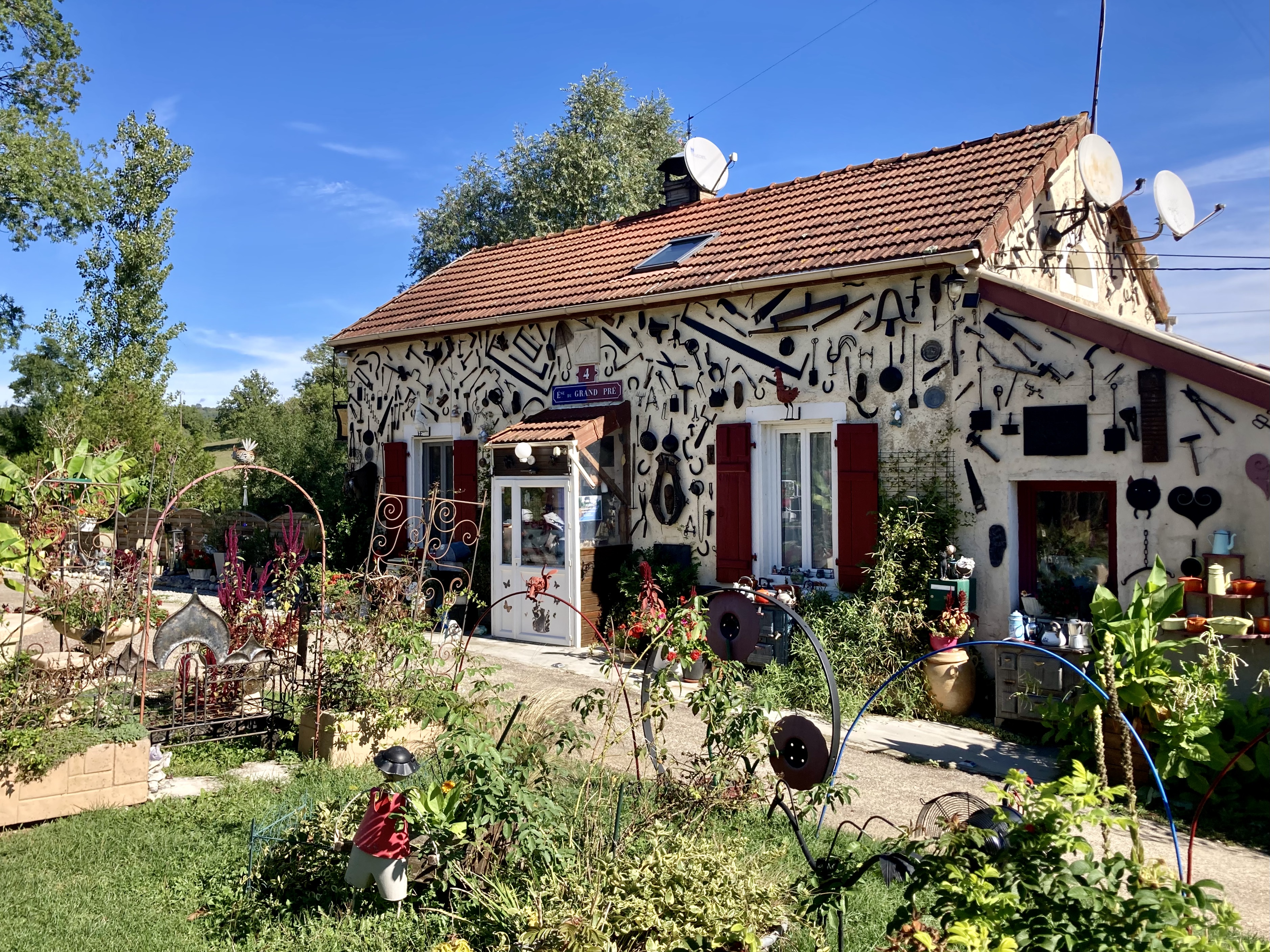
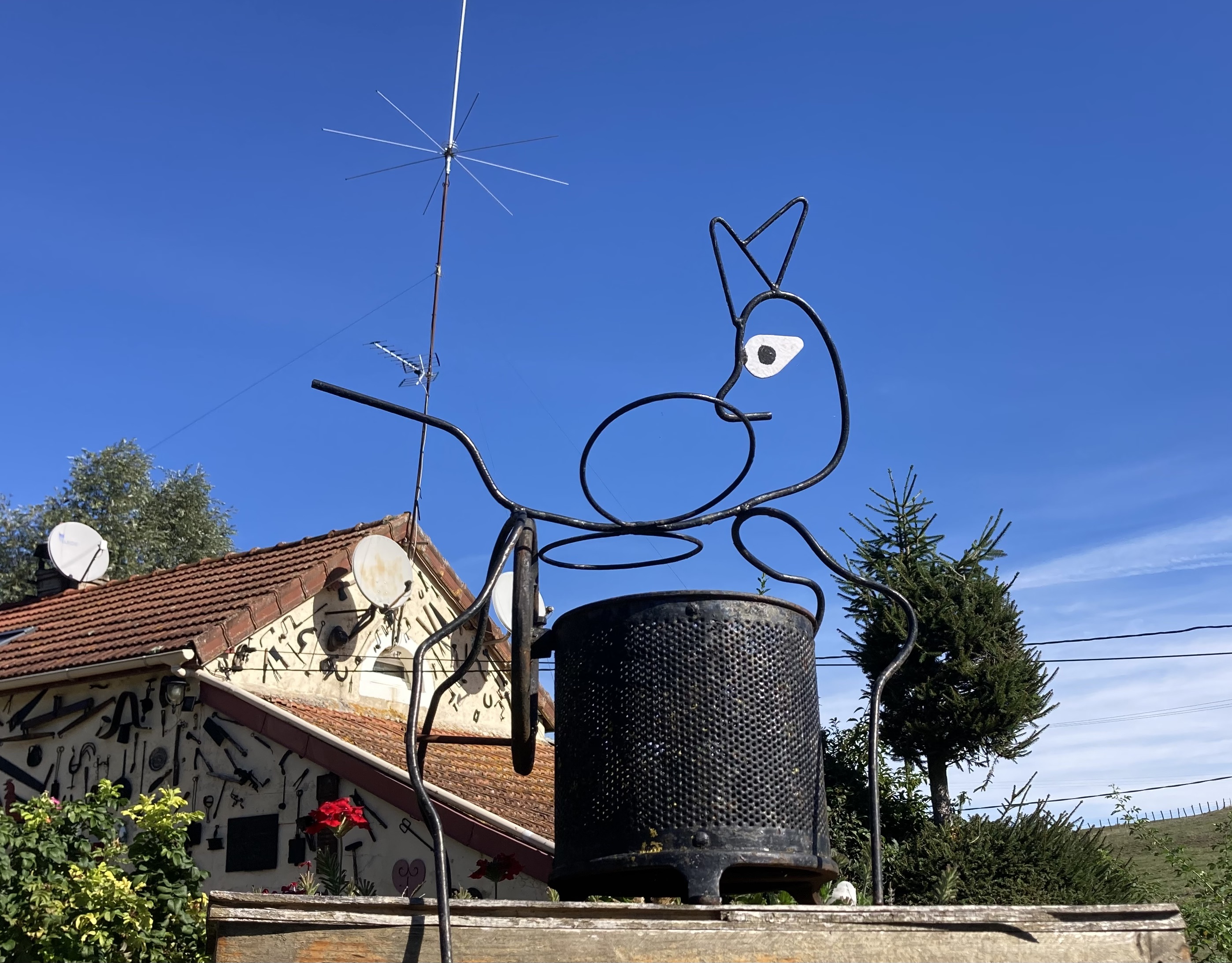

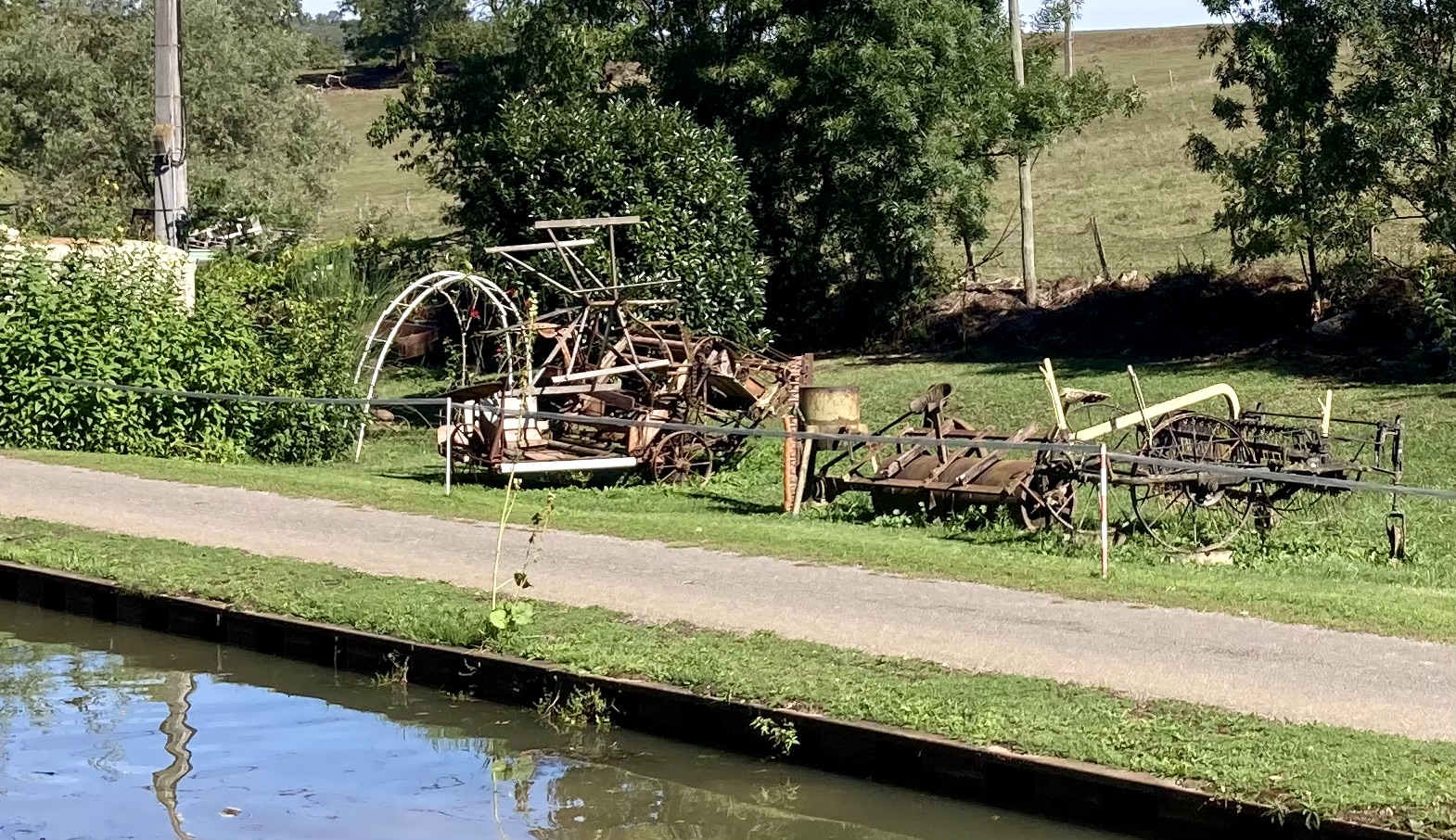
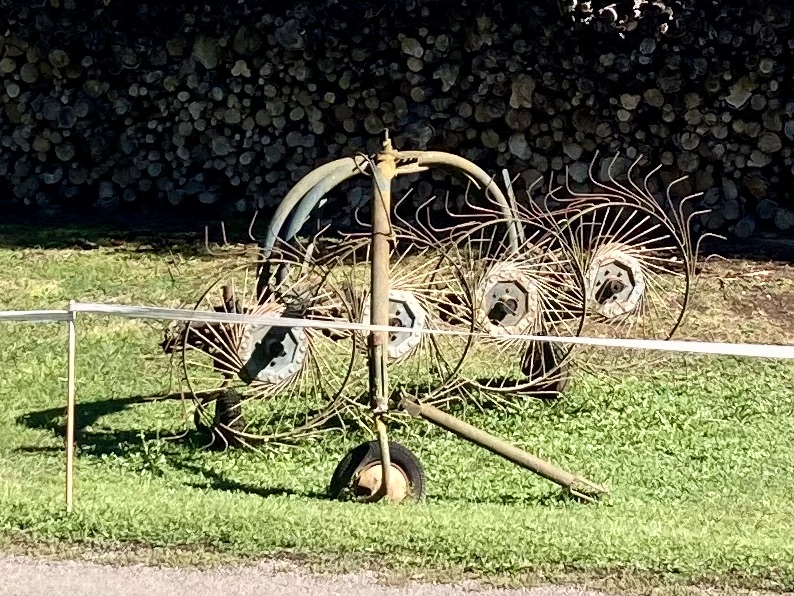
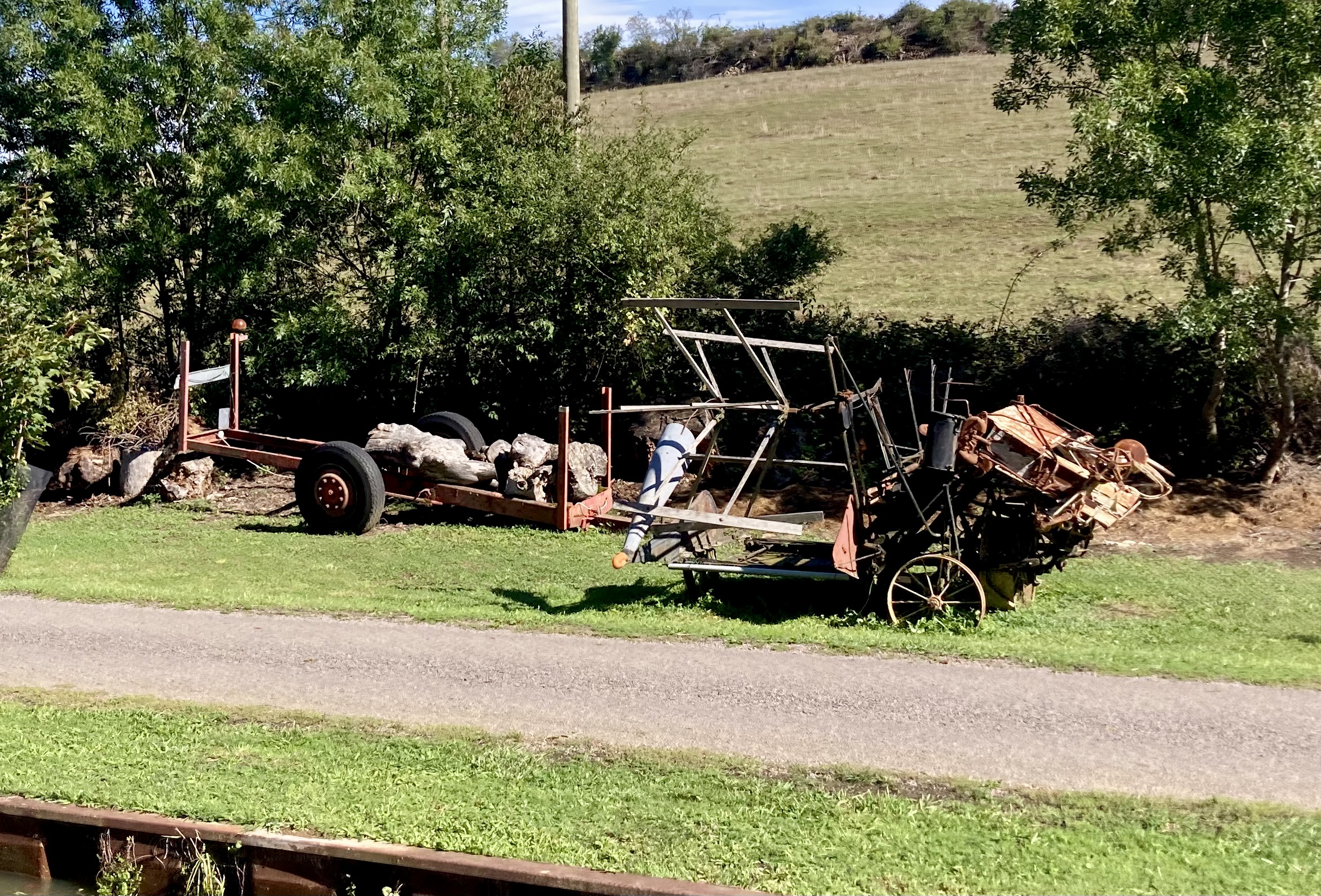
Écluse number 4S*, de Grand Pré, is particularly interesting with its grand array of historical tools and agricultural accessories! With more time not would be a good idea to moor up and have a good investigation!
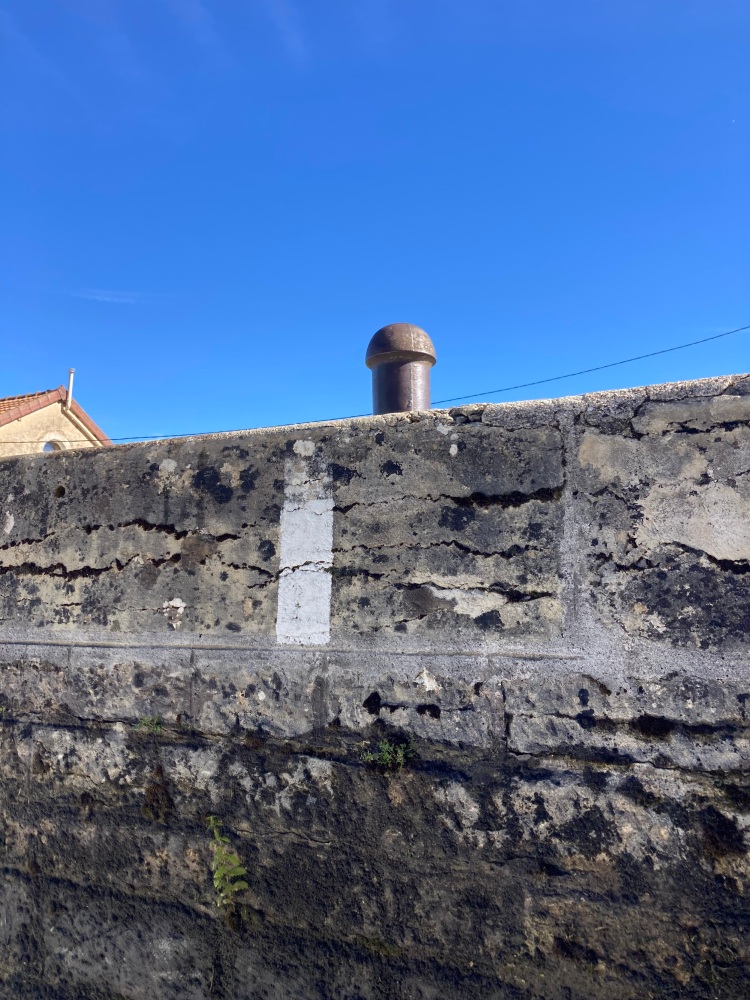
A couple of skyline views came into sight.
First was the usual view of a bollard against the blue, with the white marker for those trying to lasso the bollard from below.
The second was more impressive, and something we were looking forward to.
As we came into écluse 8 we could see ahead of us, atop the hill, the outline of Chateauneuf – our target for the next day (on foot, not by boat!!).
Vandenesse-en-Auxois
Now all we needed to do was choose a mooring in the big basin below the lock and gather up our energy for the hill climb walk tomorrow.
Having initially checked in to the long port side quay we realised that there was a chance of a hotel barge arriving there, so we moved over to the nice shady spot on the right.
We did allow ourselves a walk around the village, on both sides of the canal. There are a few nice houses and other buildings, but I am saving my photo show for Chateauneuf.
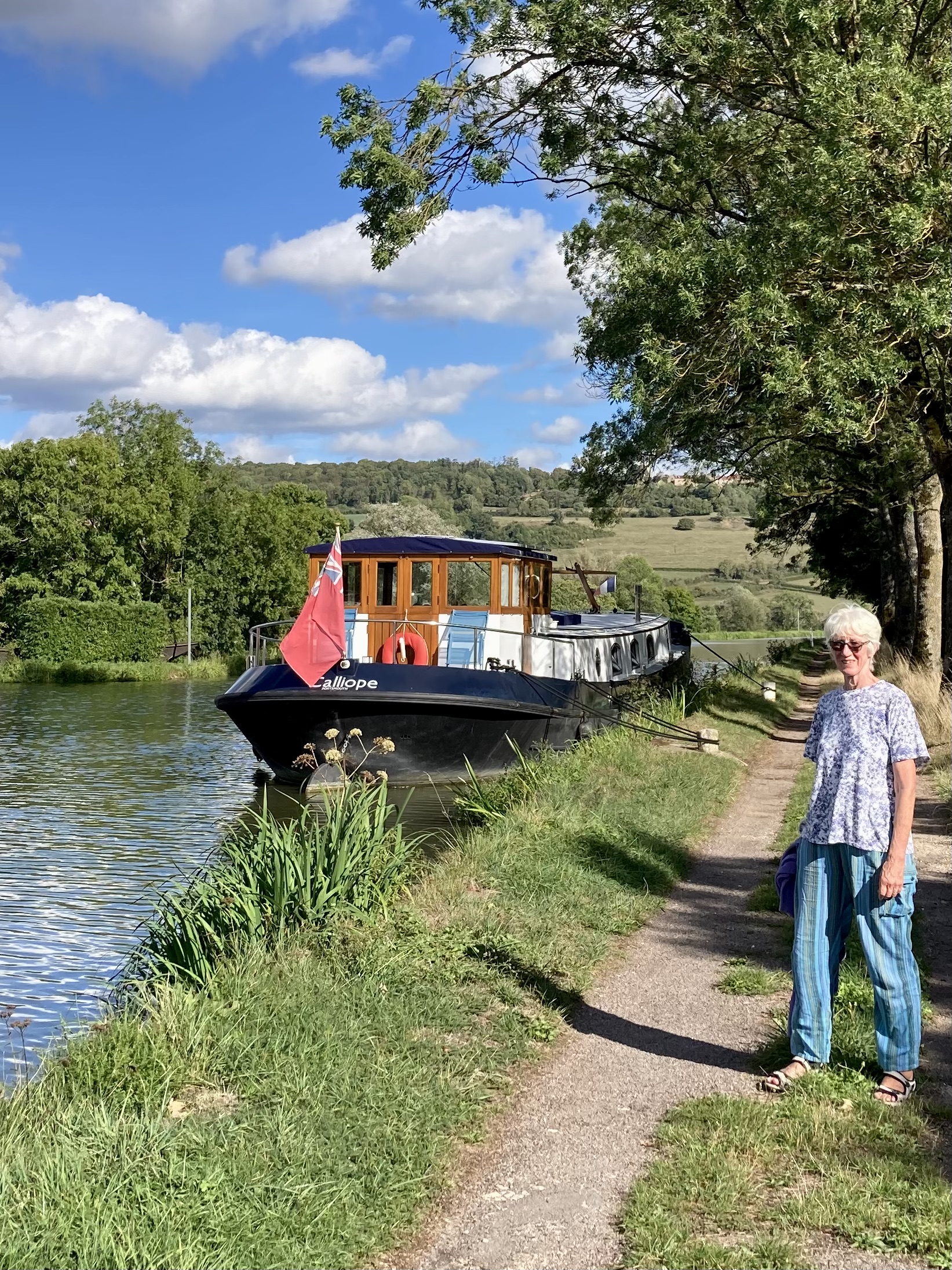
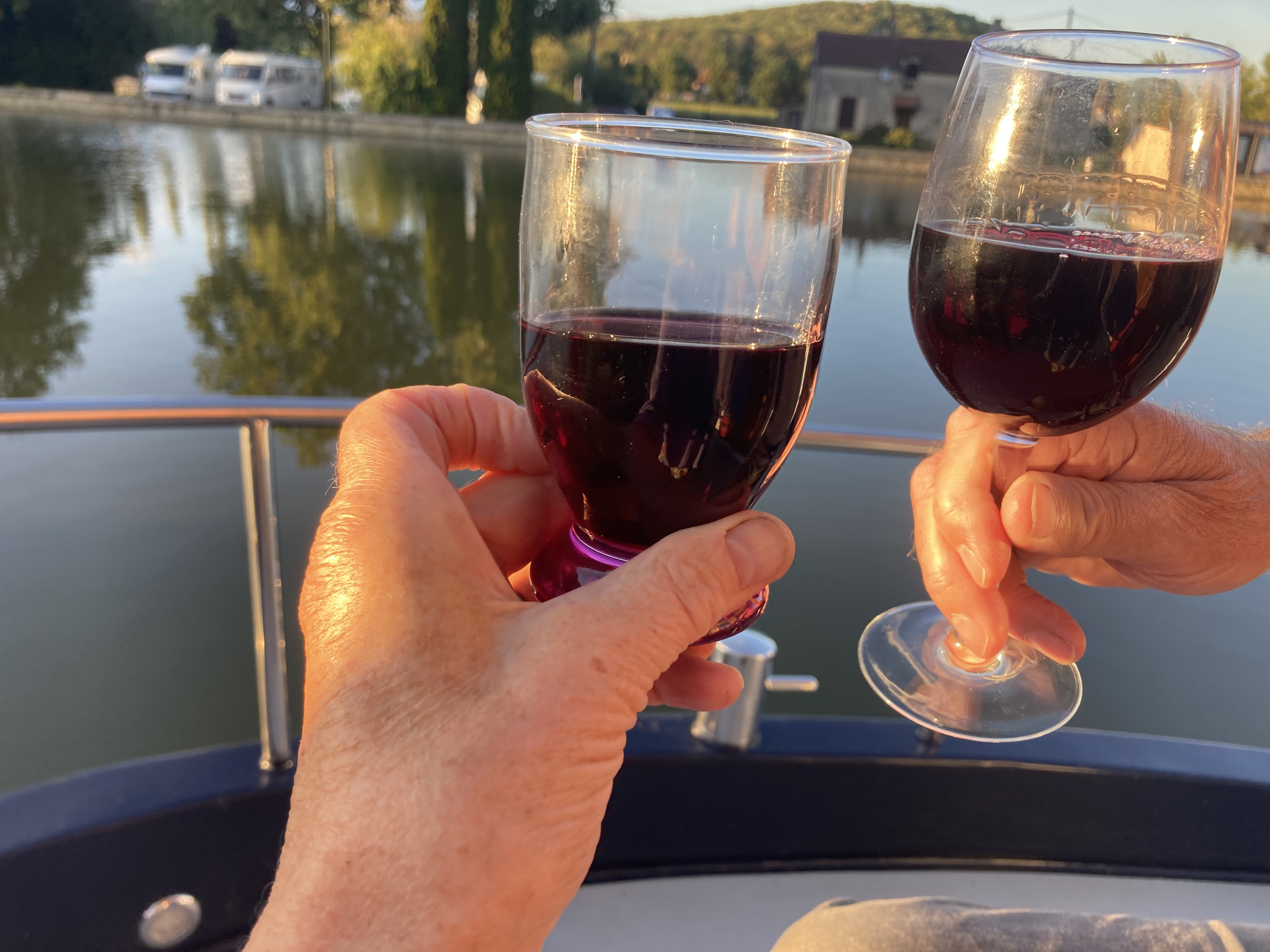
That was us, happily ensconced in Vandenesse-en-Auxois for the night, and now on our way down towards the river Saône.
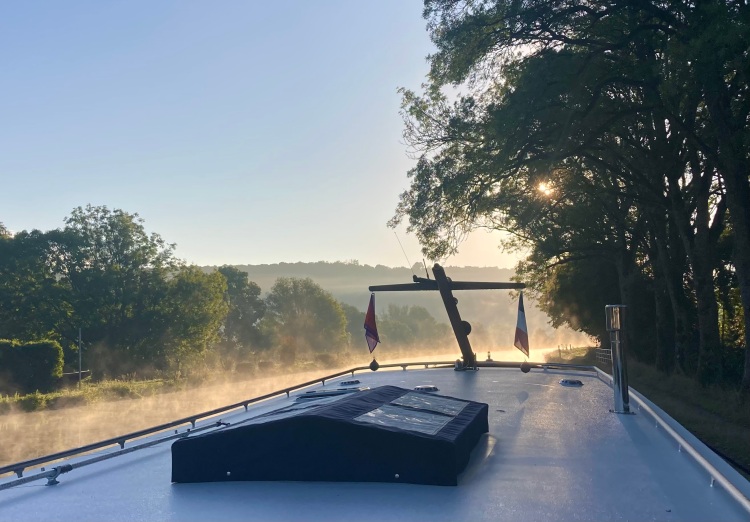
The day of our walk arrived in sunshine, and with that touch of autumn mist rising from the canal that makes everything even more heavenly.
Breakfast was eaten and the trek began.
To be honest it’s not far to walk from Vandenesse to Chateauneuf. Google maps has it as 2.7 kms, 45 minutes, and a climb of 120m at the end. But we were both a bit weary from ascending to the summit over the past 10 days, and I was still slightly wary of the ankle I had broken a few months earlier. Makes us sound such crocks! But we are happy crocks, so that’s ok.
I will try to limit the photos of our day – it was such a fabulous amazing day and I want to convey the joy and fascination of it all. So here is a photo warning – scroll on quickly if you want to miss them!
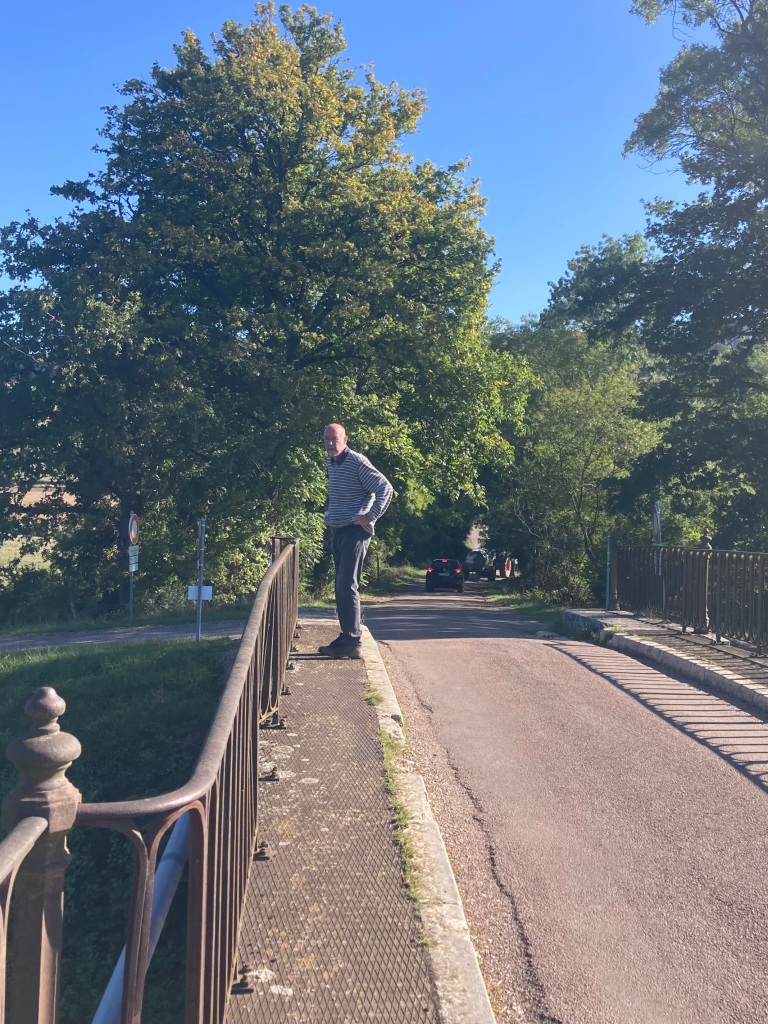
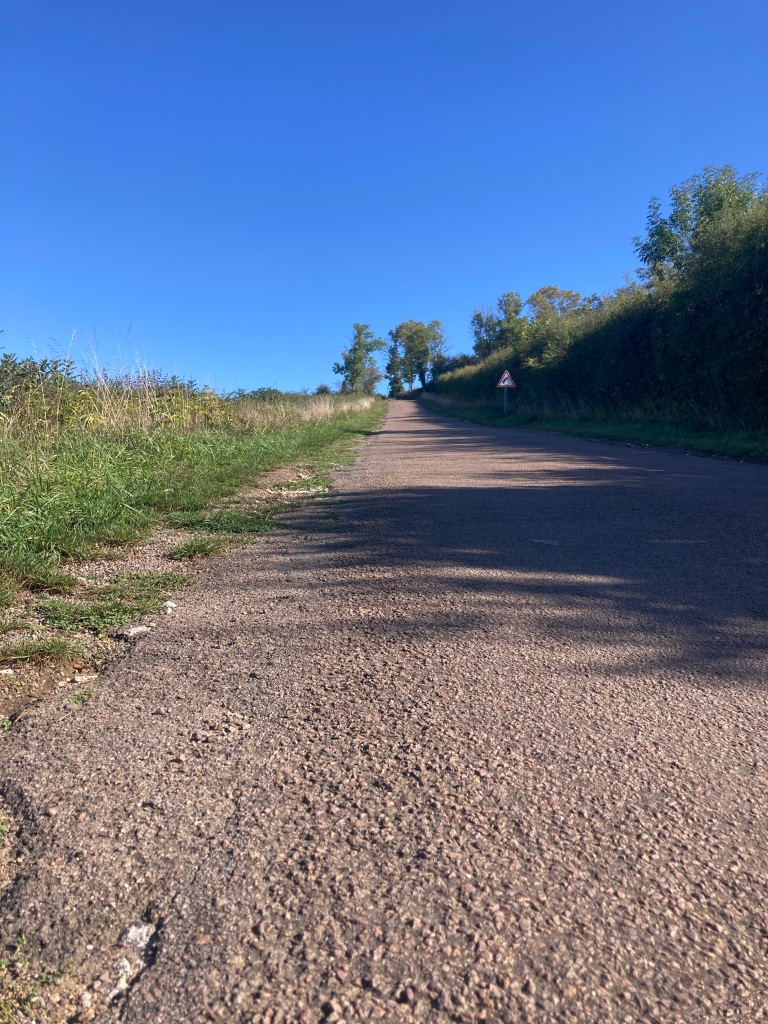
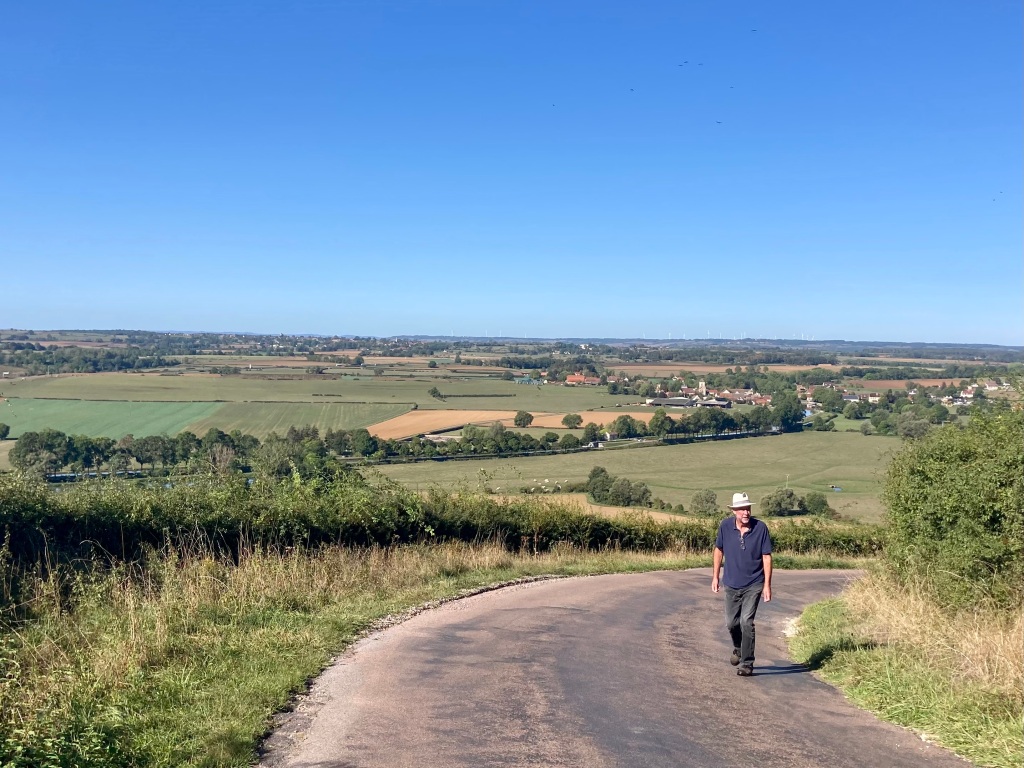
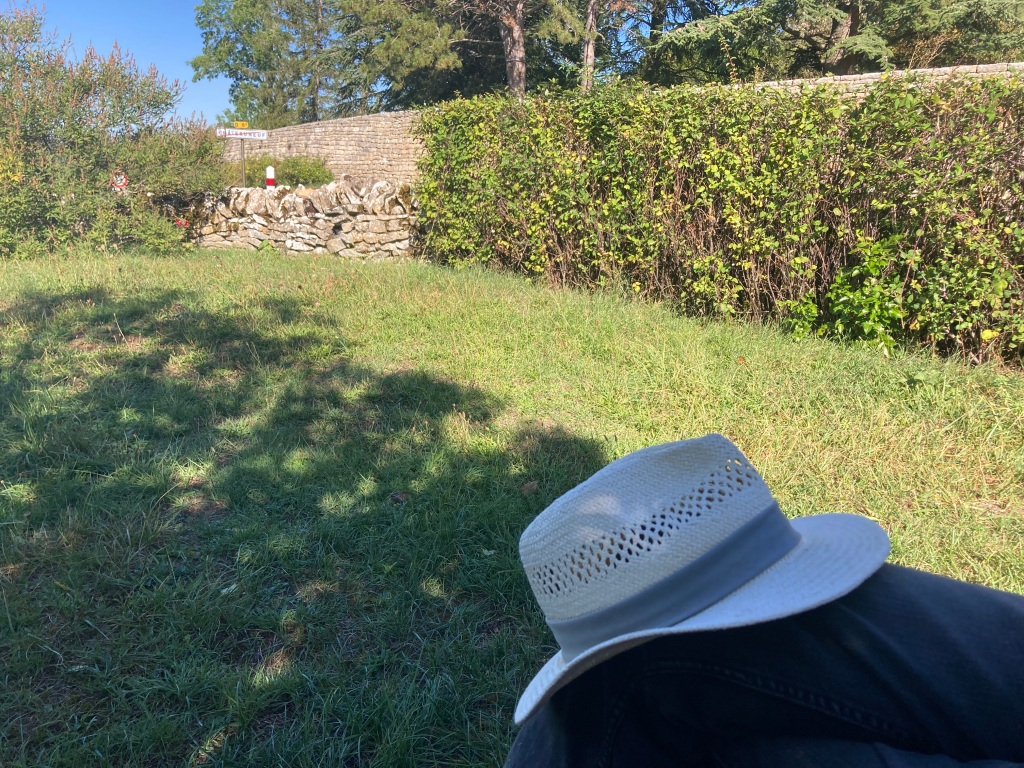
It began with our walk up, starting along the canal bank, then crossing to the other side to follow a winding country lane steeply to the top of the hill that hosts Chateauneuf. We were pleased to find a shady seat for a rest before we entered this well preserved medieval village.
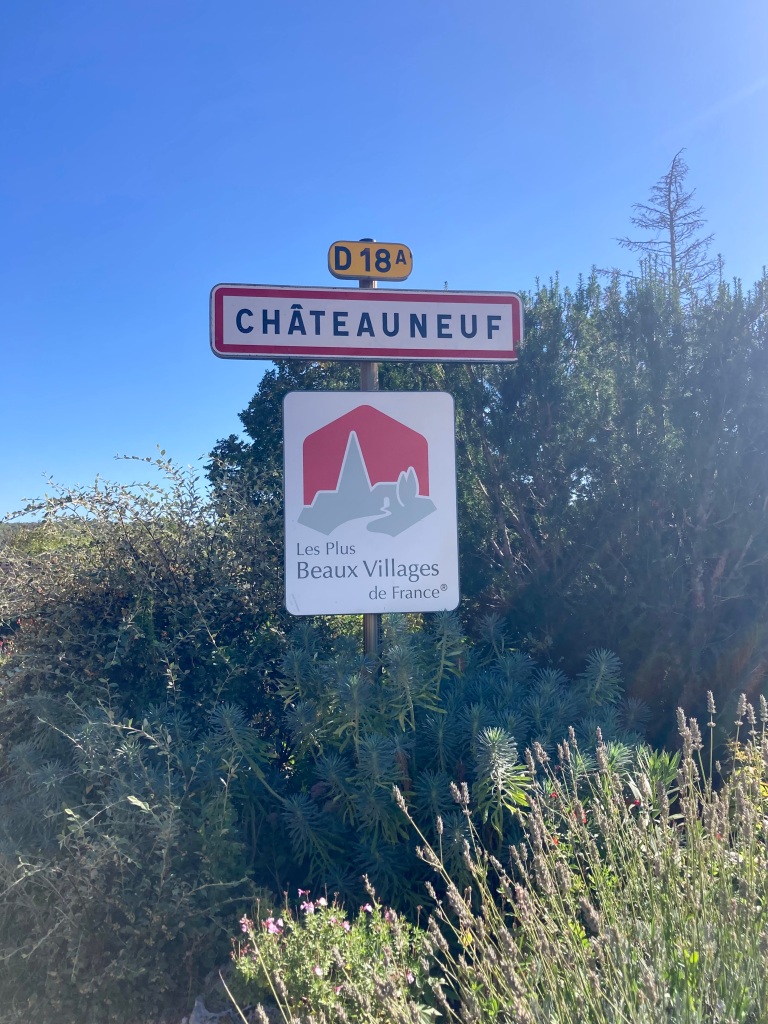
We had arrived!
And within the prescribed 45 minutes.
I will summarise our visit into three sections – the lavoir (laundry washing pool), the village, and the castle after which the village is named.
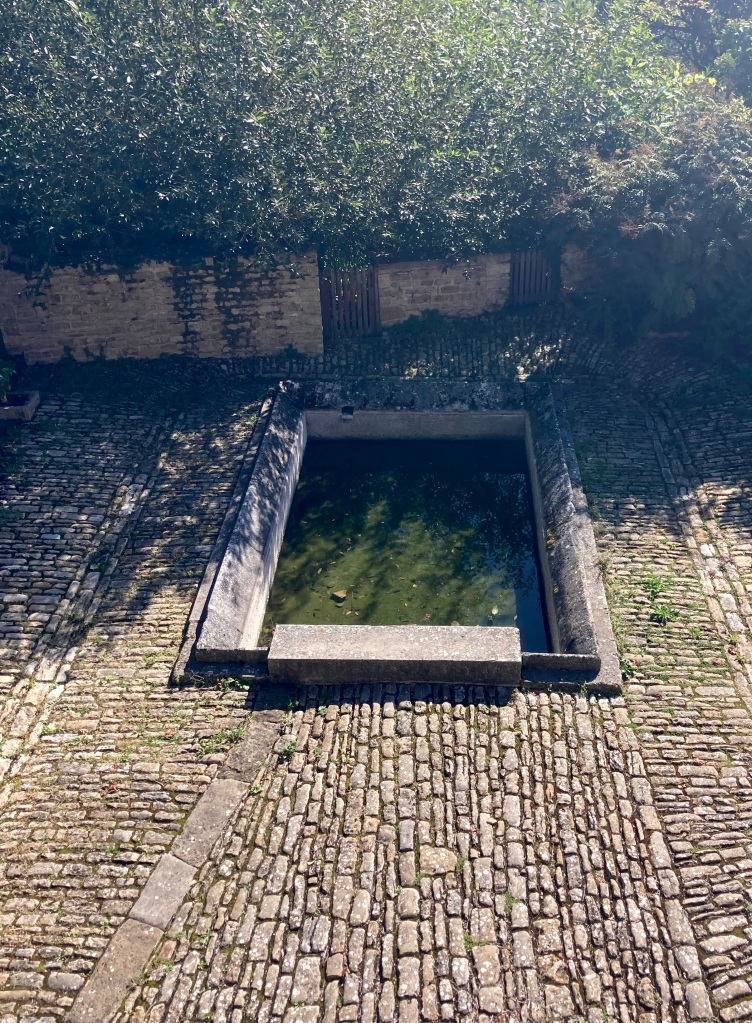
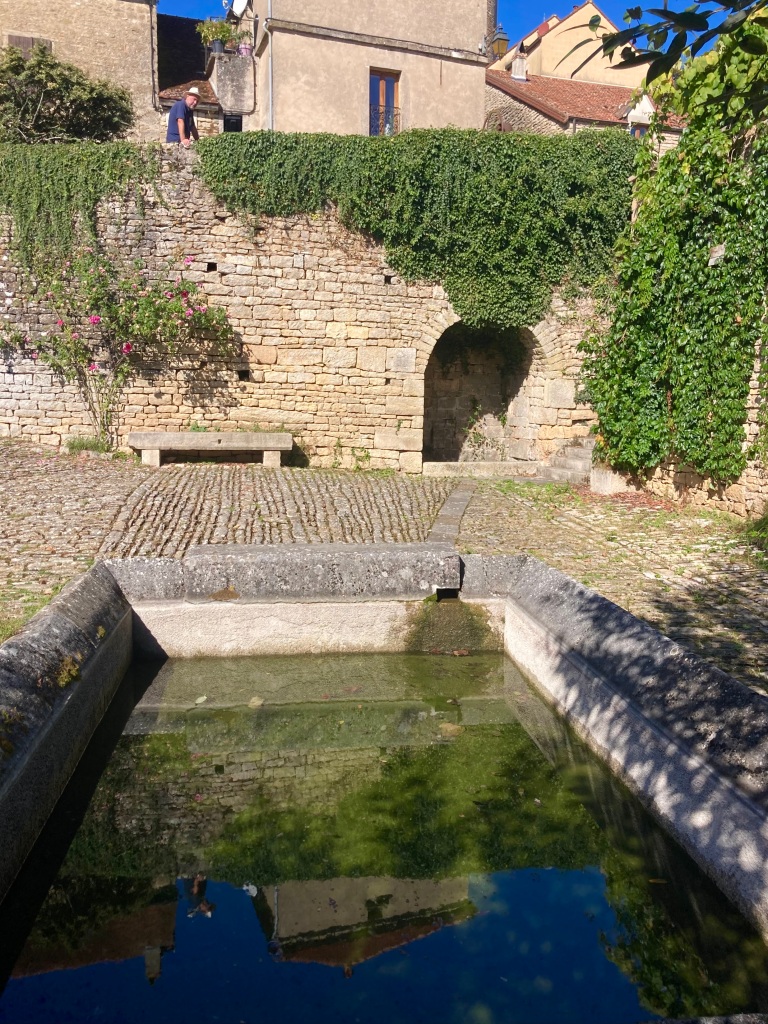
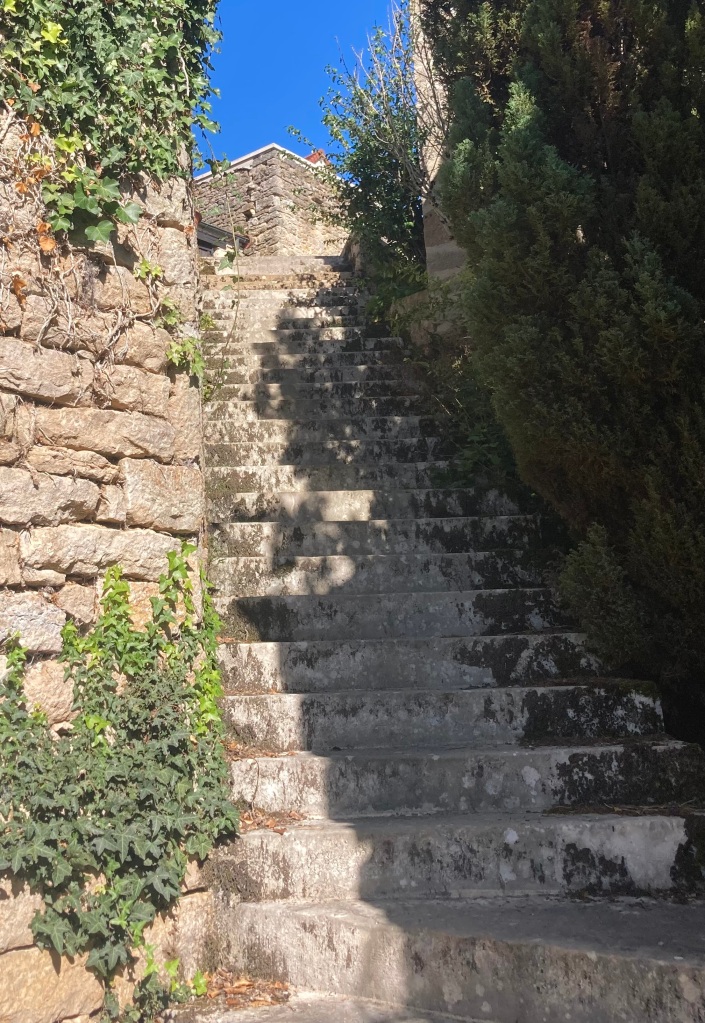
The lavoir is at the bottom of stone steps and in a sunny cobbled yard. The water is below a usable level these days, well below the sloping edging stones where village people would have knelt with their washing. At the back, in the arch, a stream gushes from the wall and comes under the cobbles to feed the lavoir.
Those who have read my blogs before will know that I have a love of lavoirs! But on to the village!
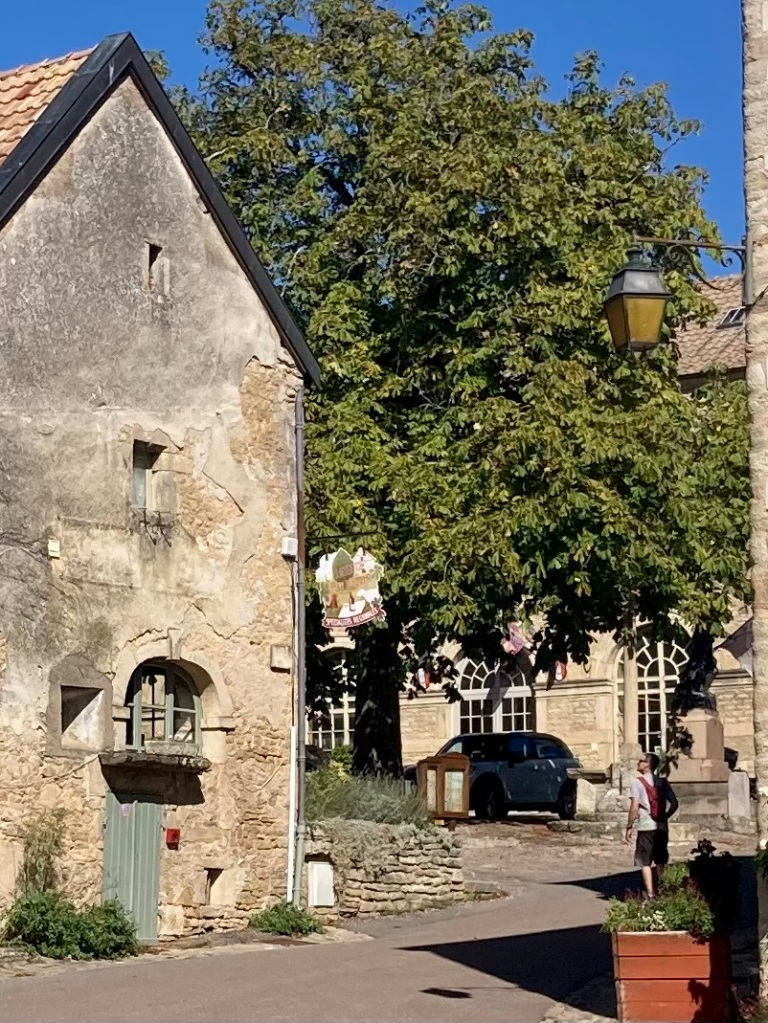

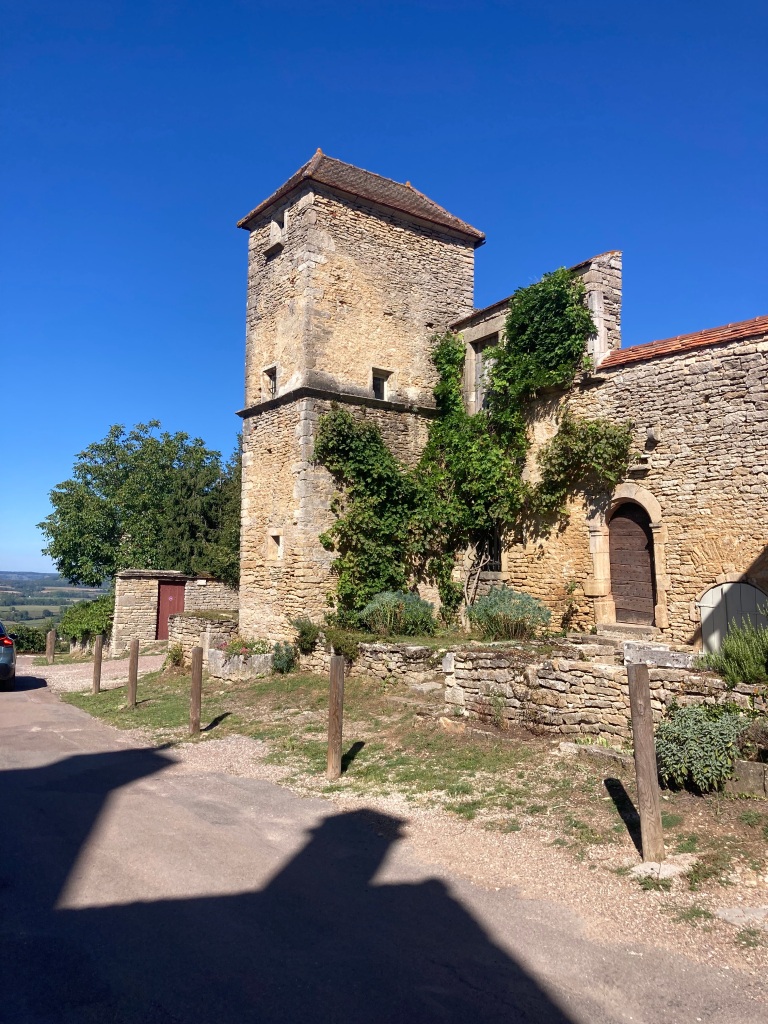
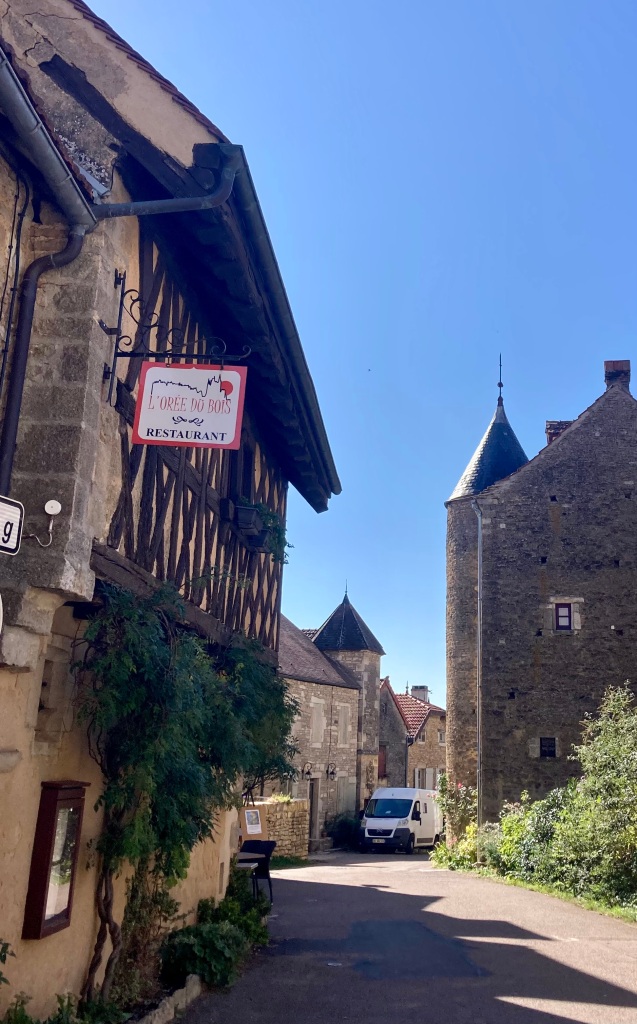
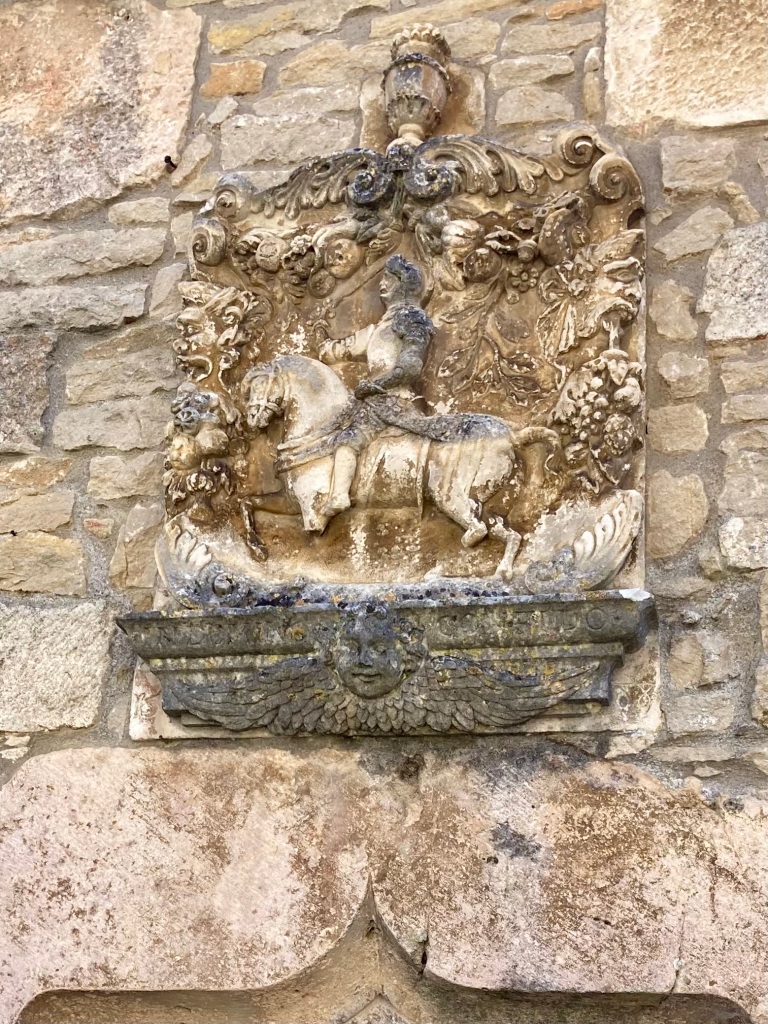
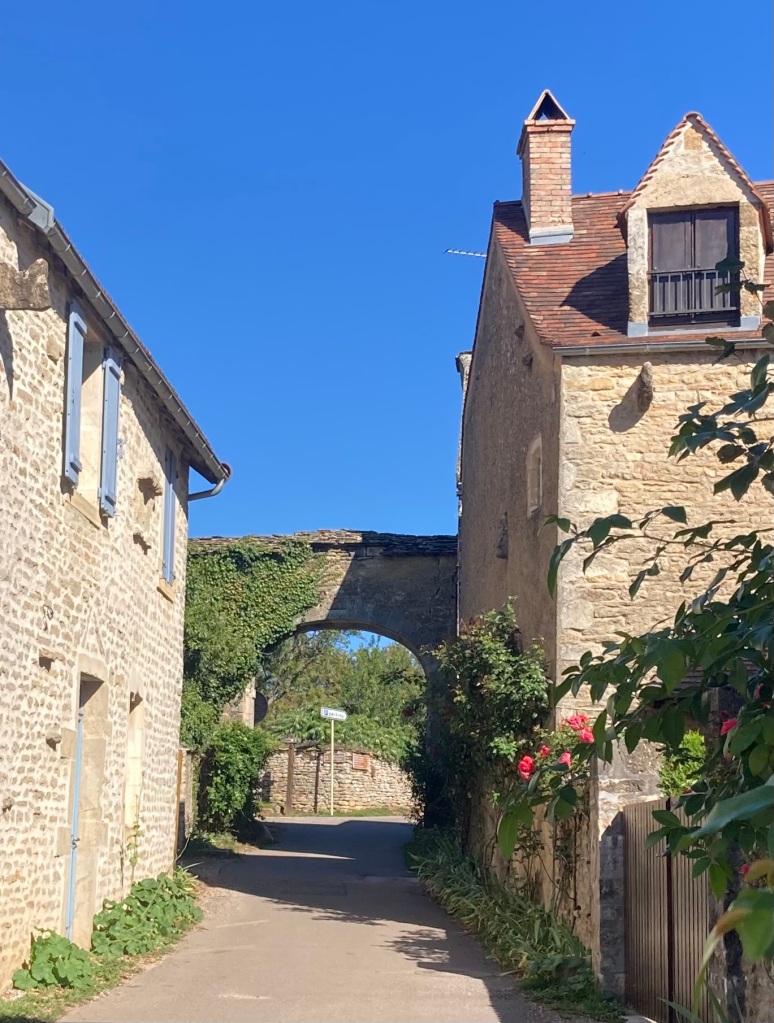

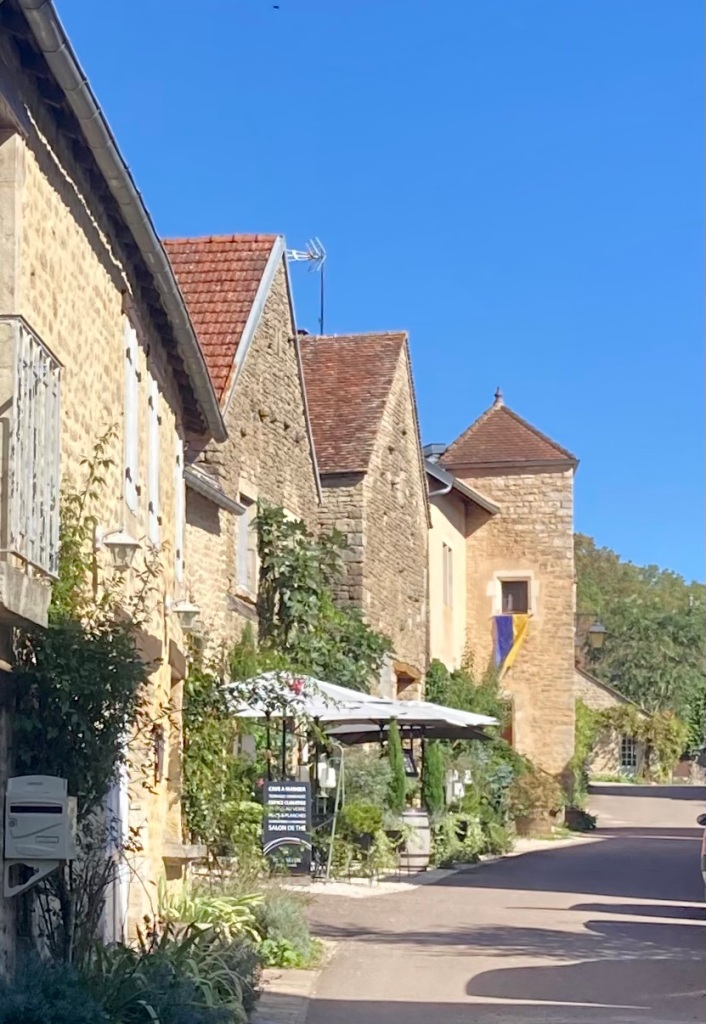
Of course this does not manage to convey the sense of history, the ancient character and atmosphere of Chateauneuf, but if it encourages you to go experience it for yourself, then job done. And you want to explore from your armchair, here is a link to a bit more.
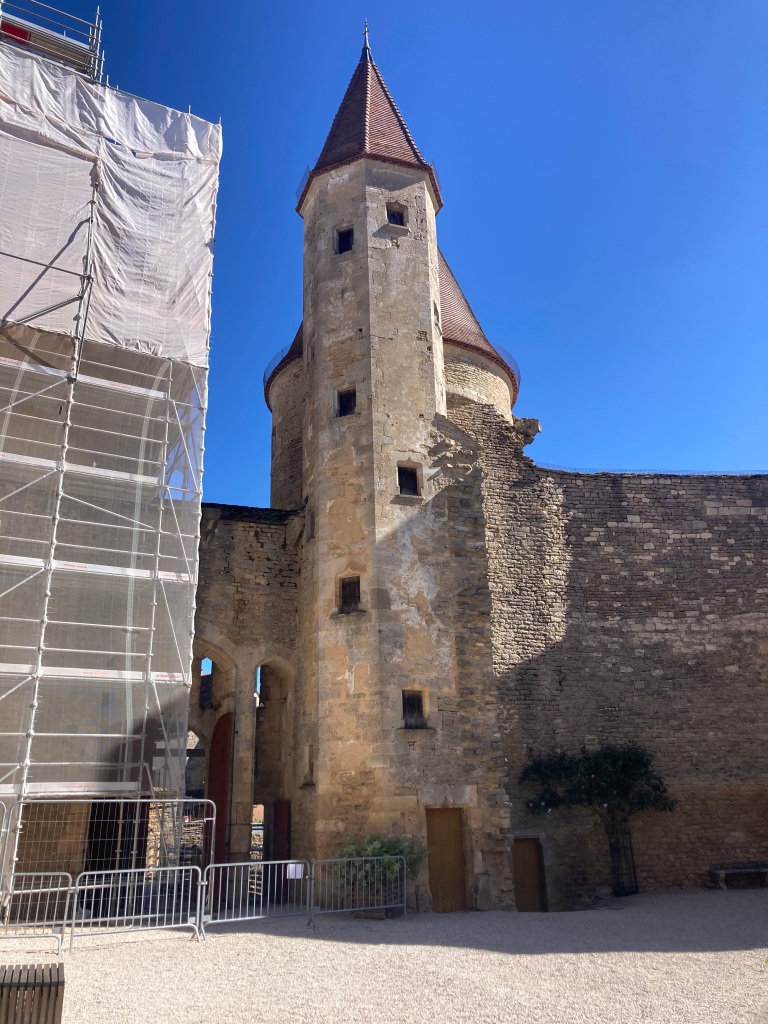
And of course I must include the castle itself, which now encompasses castles old and new, built, changed and developed over the centuries.
When we visited it was undergoing some very sensitive maintenance, so parts were shrouded, or closed off.
Nonetheless we spent a good long time there!
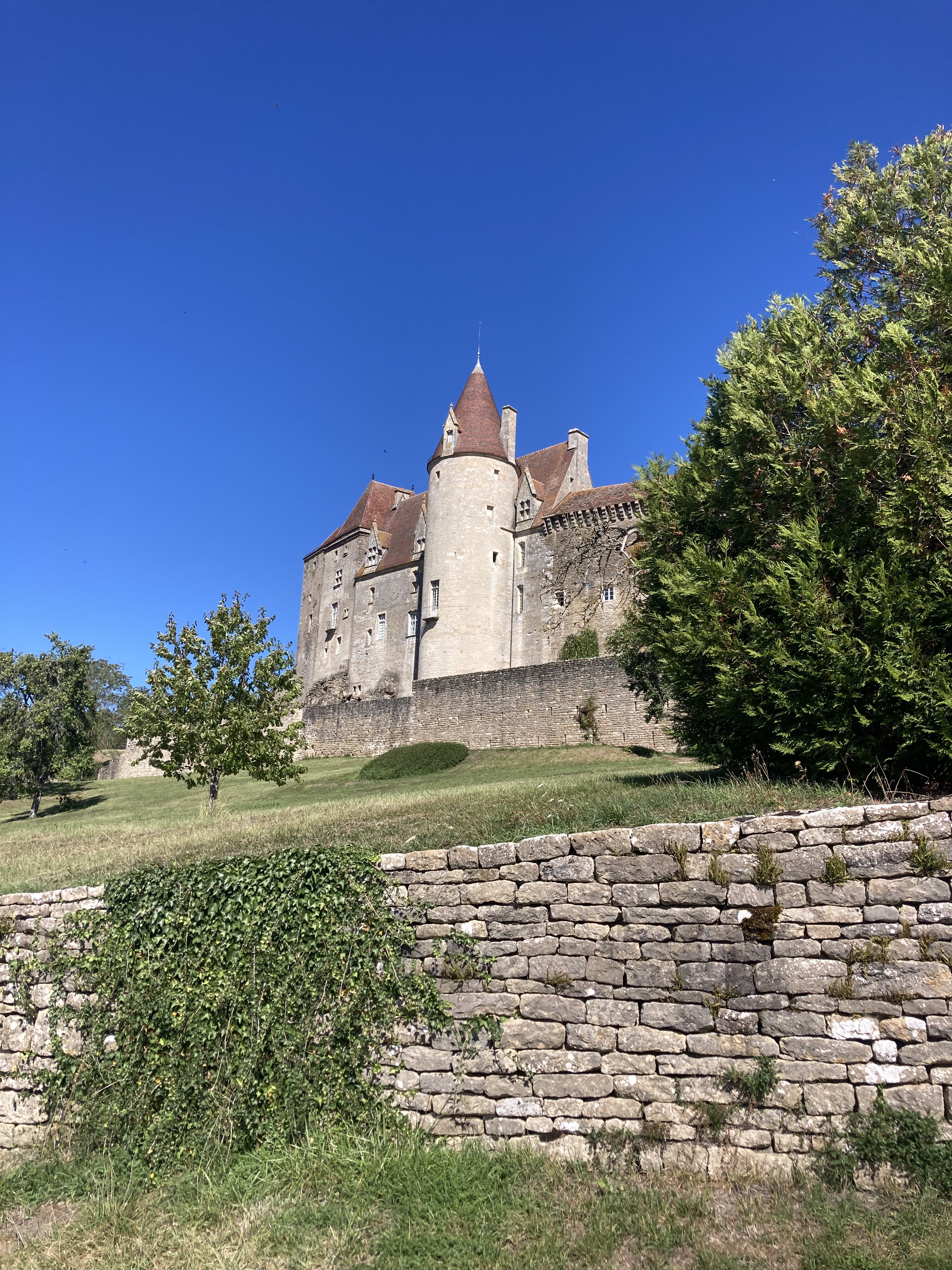
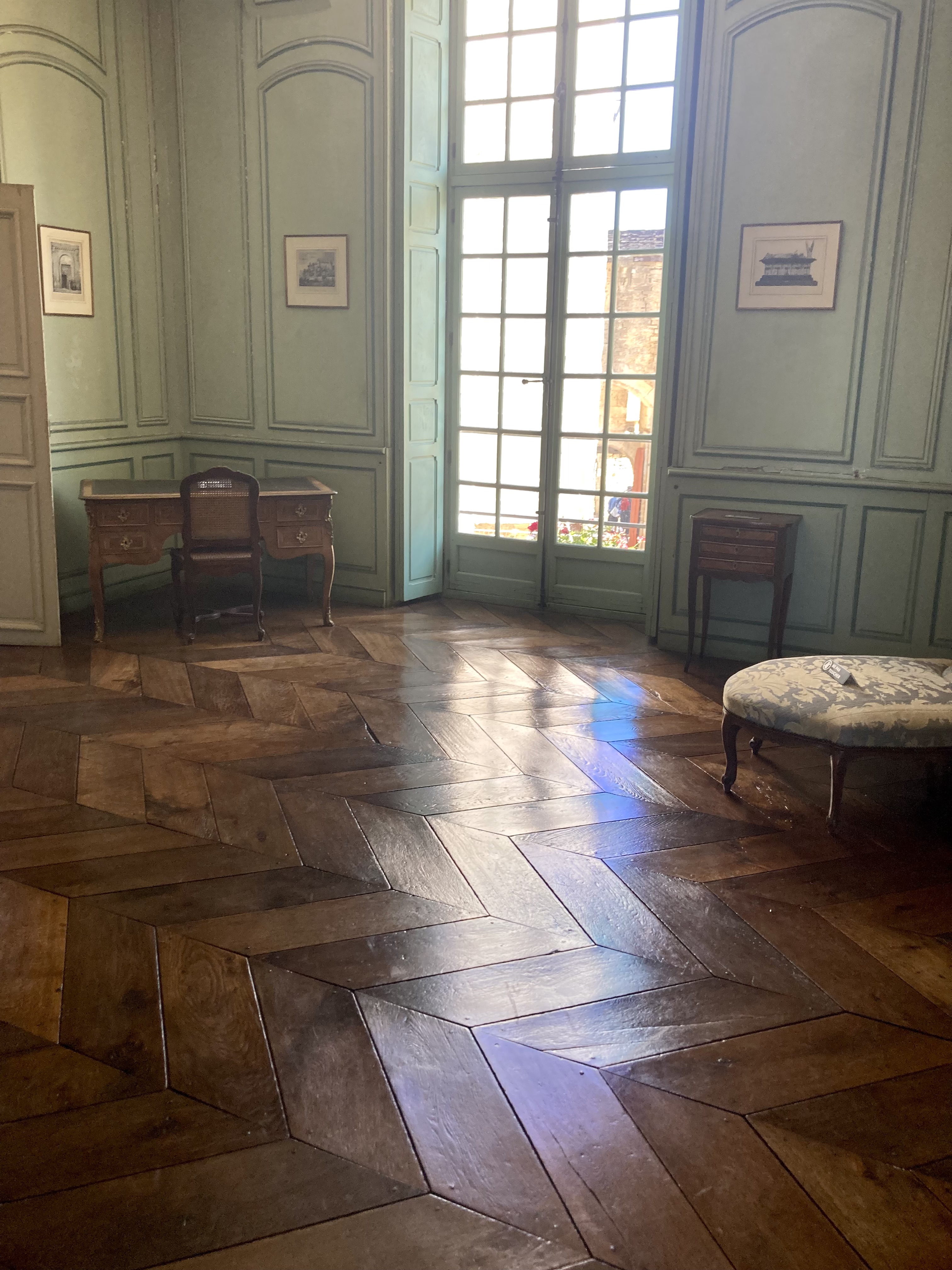
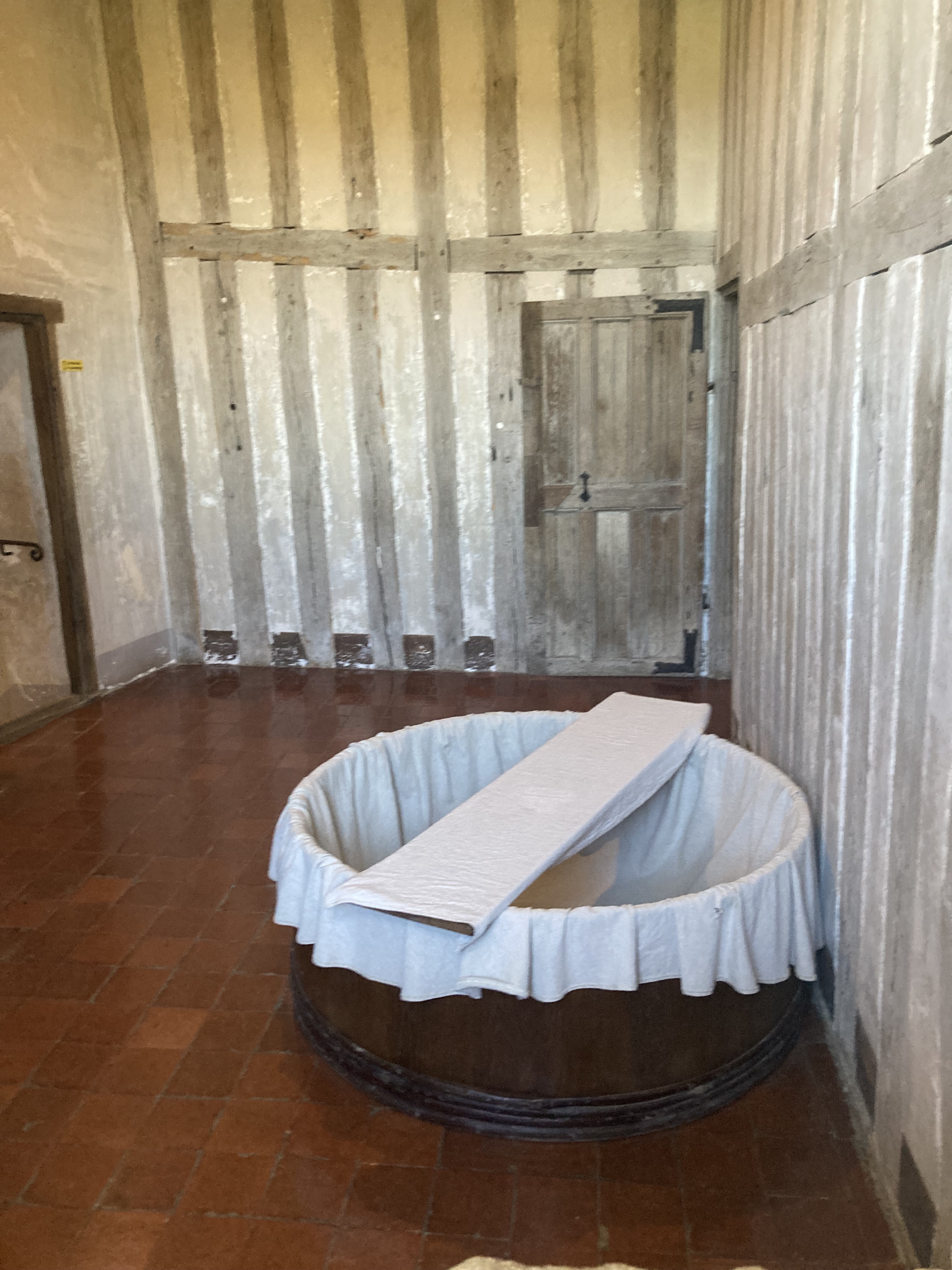
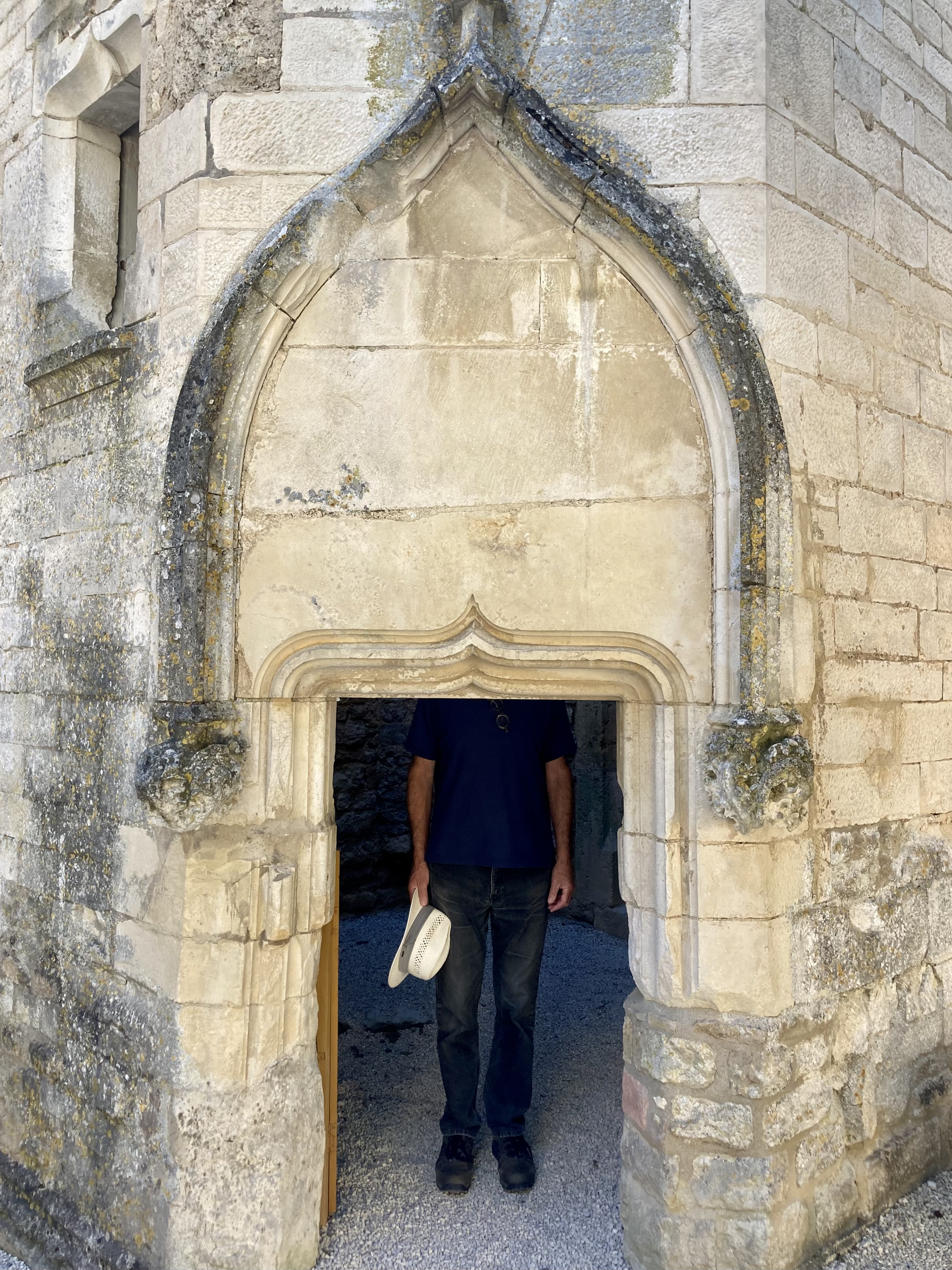

Here is a selection, and a link to the website about the castle, as there is far more to it than I can explain here!
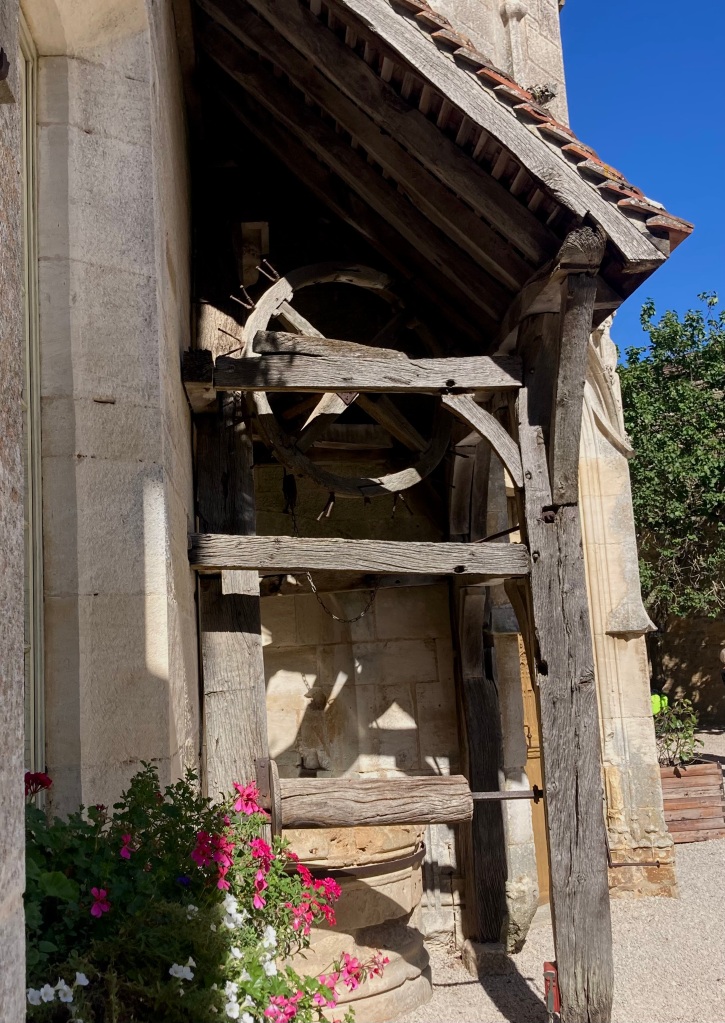
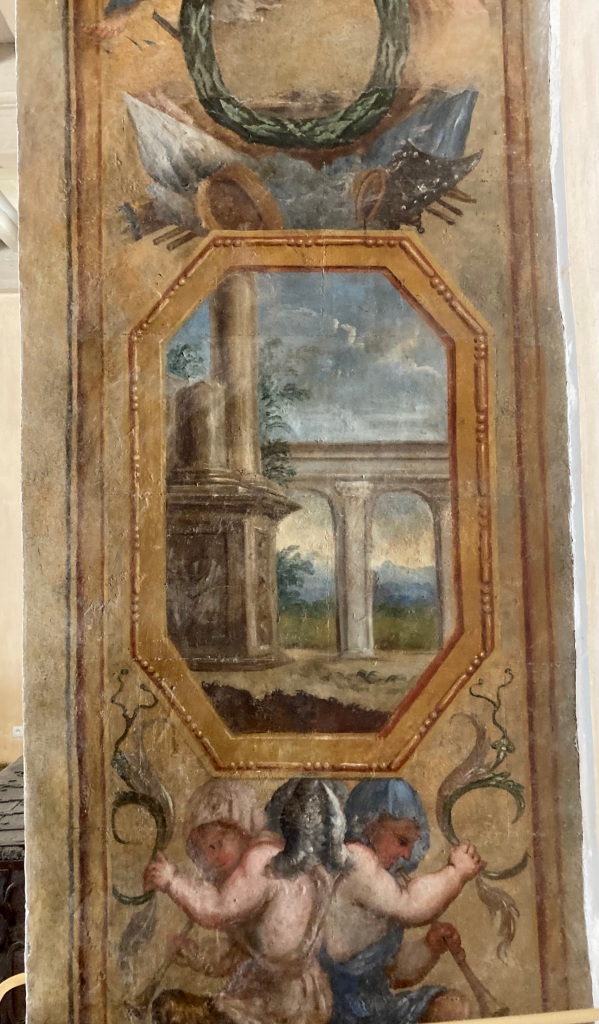
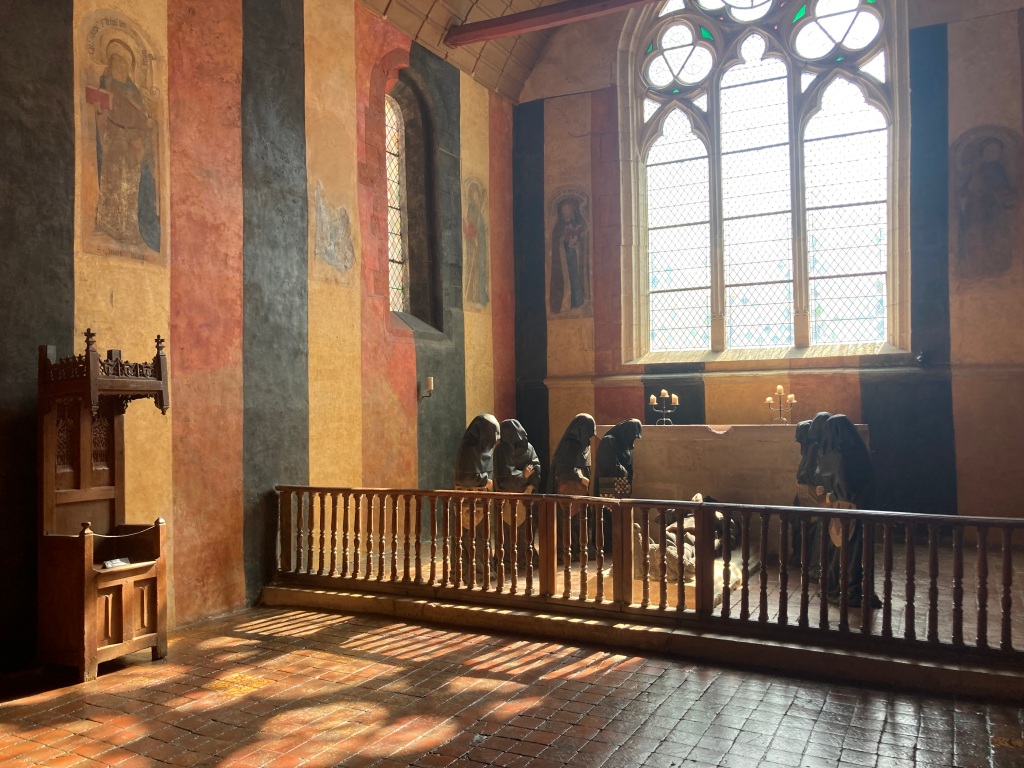
We loved the old well in the courtyard, and some of the painted walls. One of the most atmospheric areas was the chapel with a tableau of mourners around the body of Philip the Good (I think).
I suspect you have had enough of ancient castles and villages by now, so just to say we had a good lunch there in the village, with refreshing cider to wash it down .
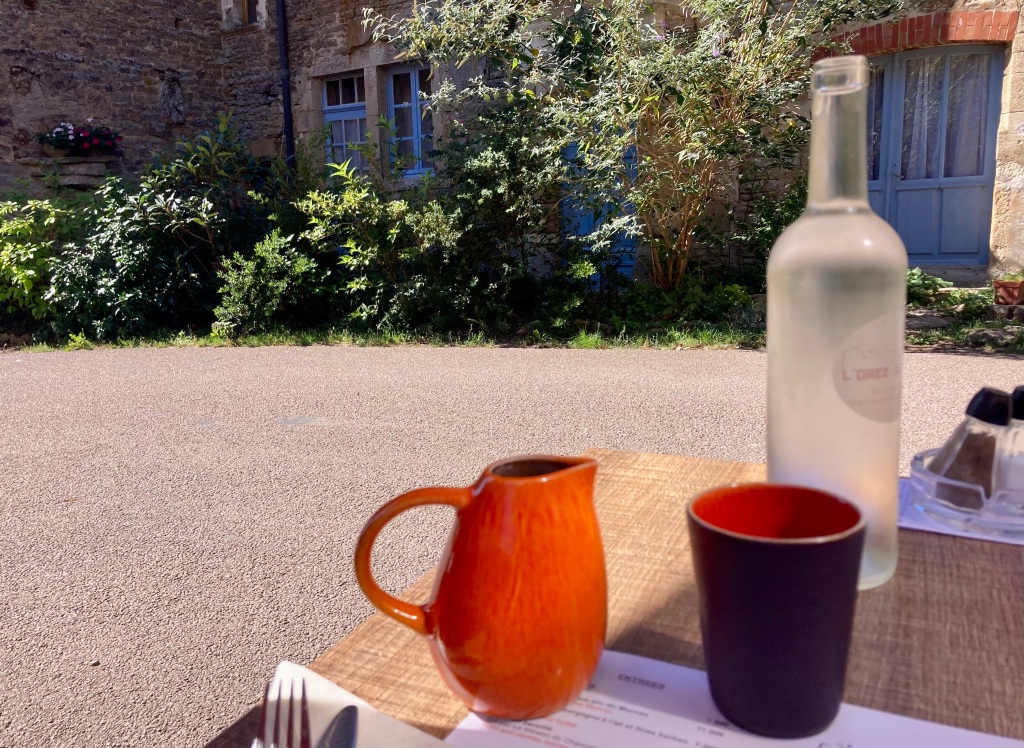
and then time to consider the walk back down to Calliope …..
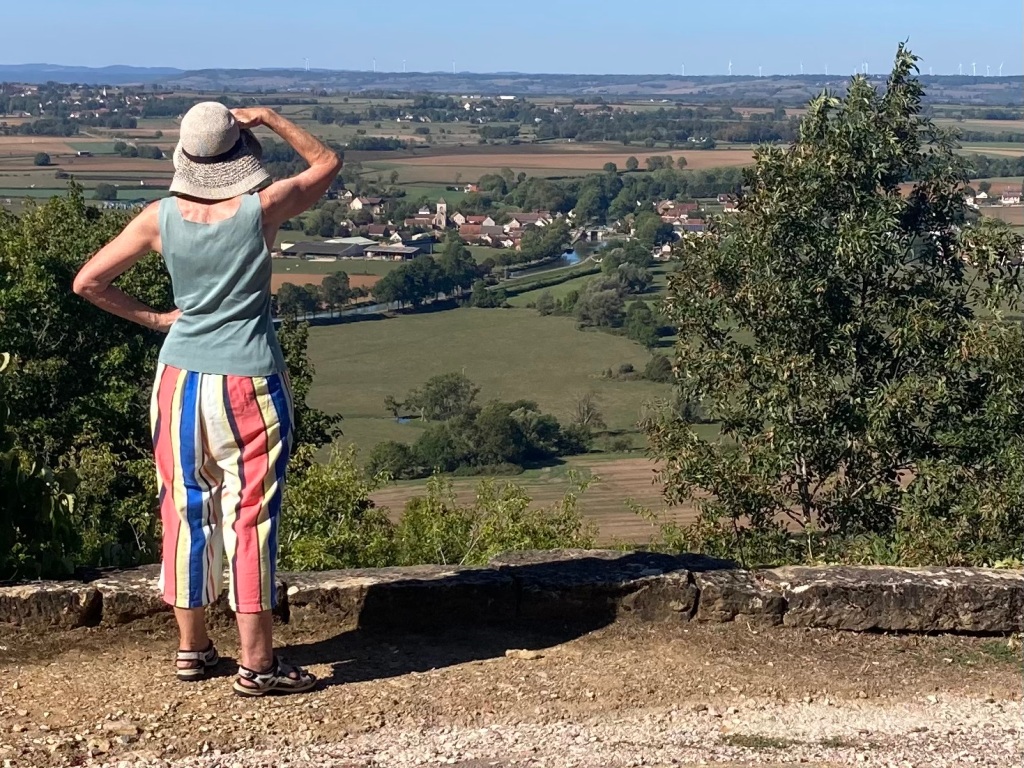
…… who can be seen way down below on the canal, next to the blue splash of reflected light in the photo.
The walk down was certainly easier than the walk up, not just for the gradient, but also as it was a bit cooler. It led to a gently quiet evening on Calliope, and our second night in Vandenesse.
Morning brought cloud in the sky, and the threat of rain later. We were all in favour of rain, filling up the canals and reservoirs for future voyages! Calliope set off with the hilltop climb of the day before in view, and a quacking duck to say goodbye.
Today was a short travelling day to Pont d’Ouche; about 9 kms and 11 descending locks. so there would be plenty of contact with éclusiers for the next few hours of travel.
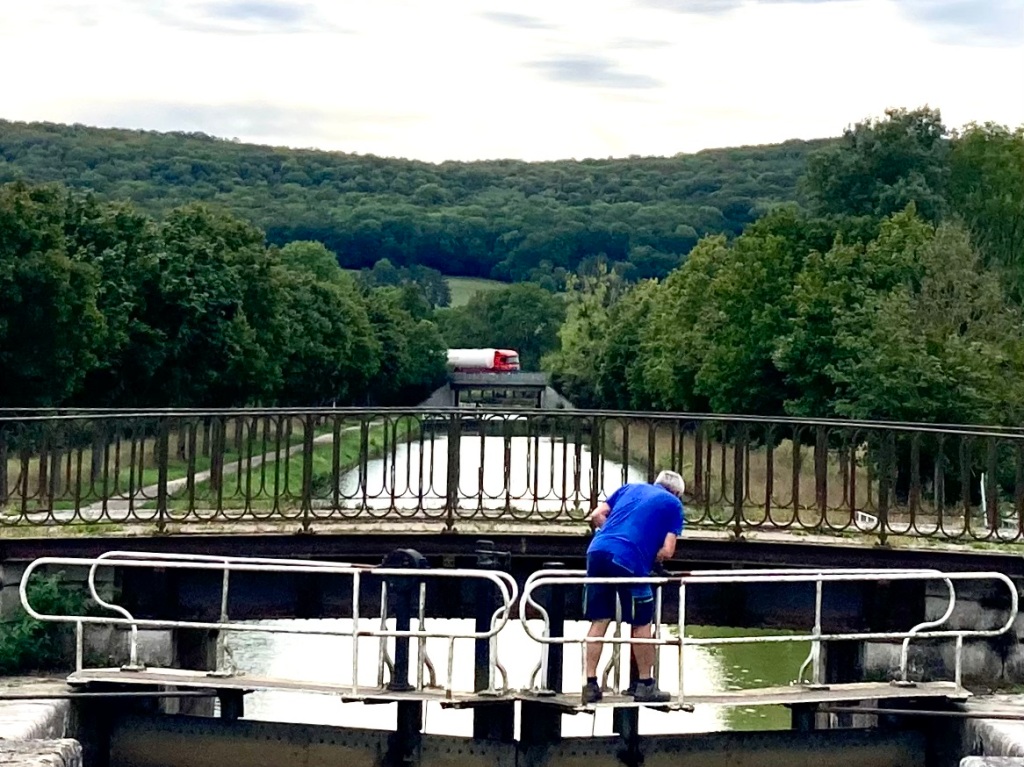
The journey was mainly rural, but just ahead of us at this lock was the big A5 main road that we would go under.
Éclusiers were working hard as always, so coffee and biscuits were handed round.
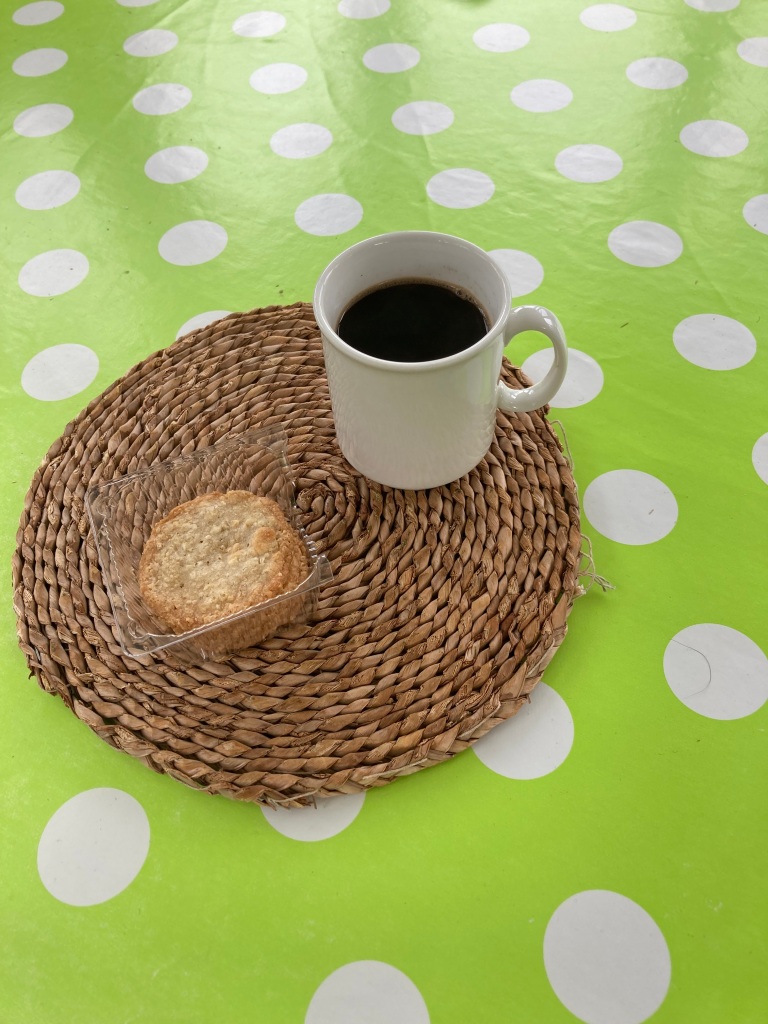
After a couple of hours we were down at Crugey, passing by the church, settled in well to its place next to the canal.
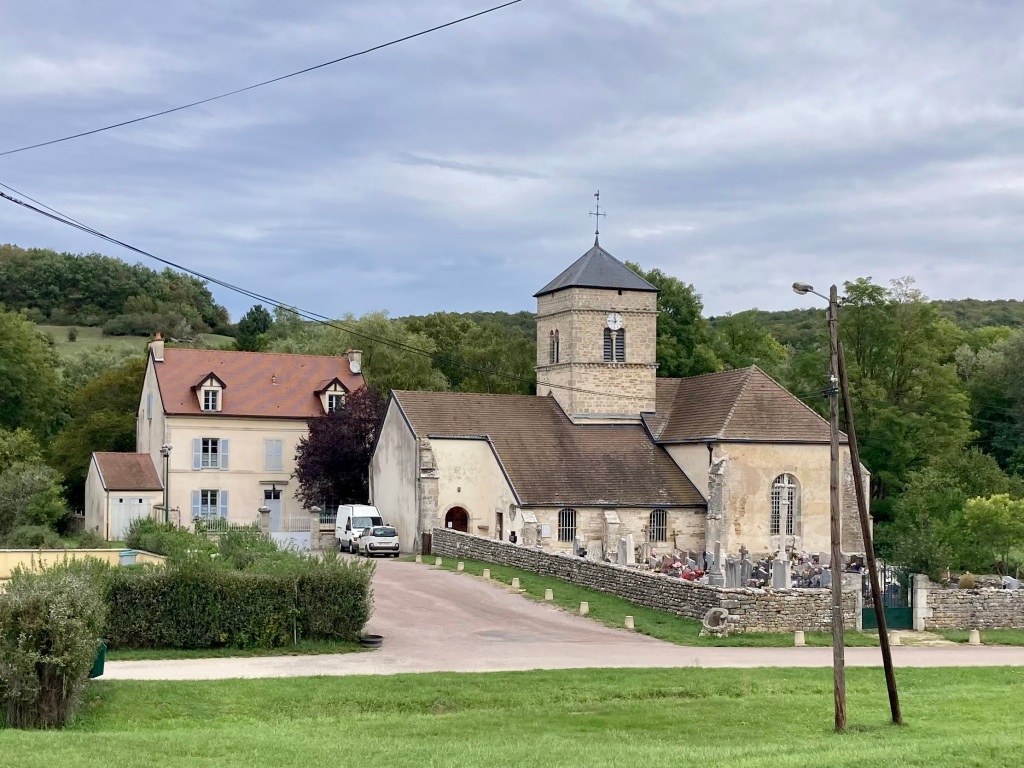
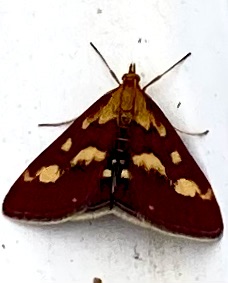
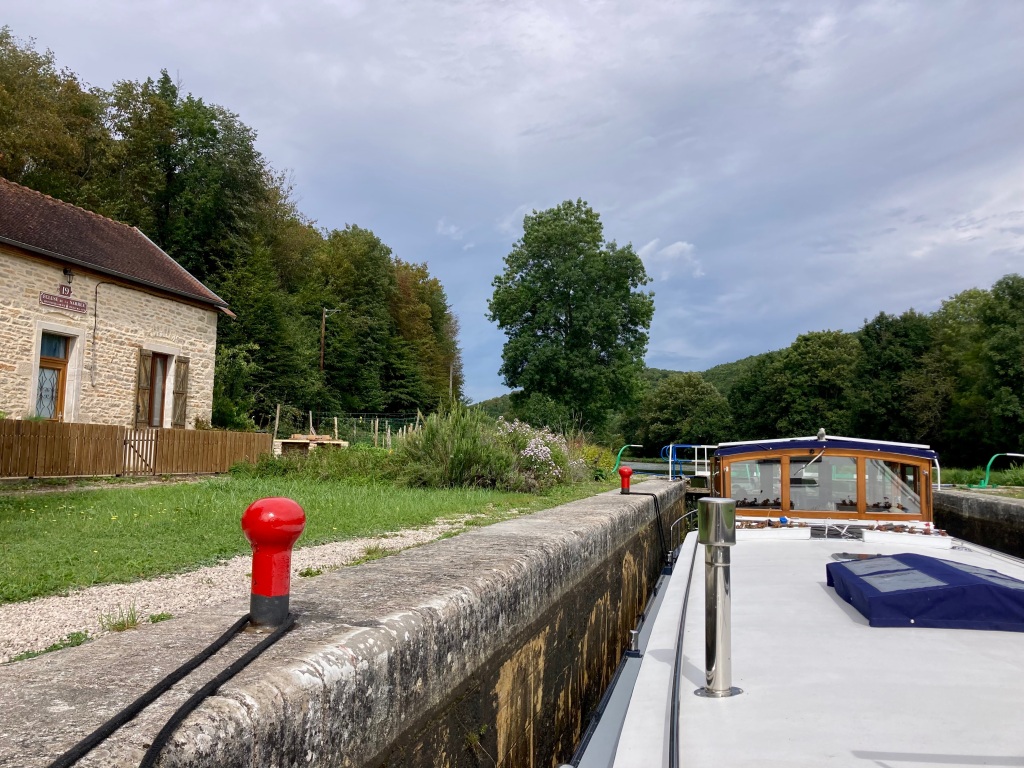
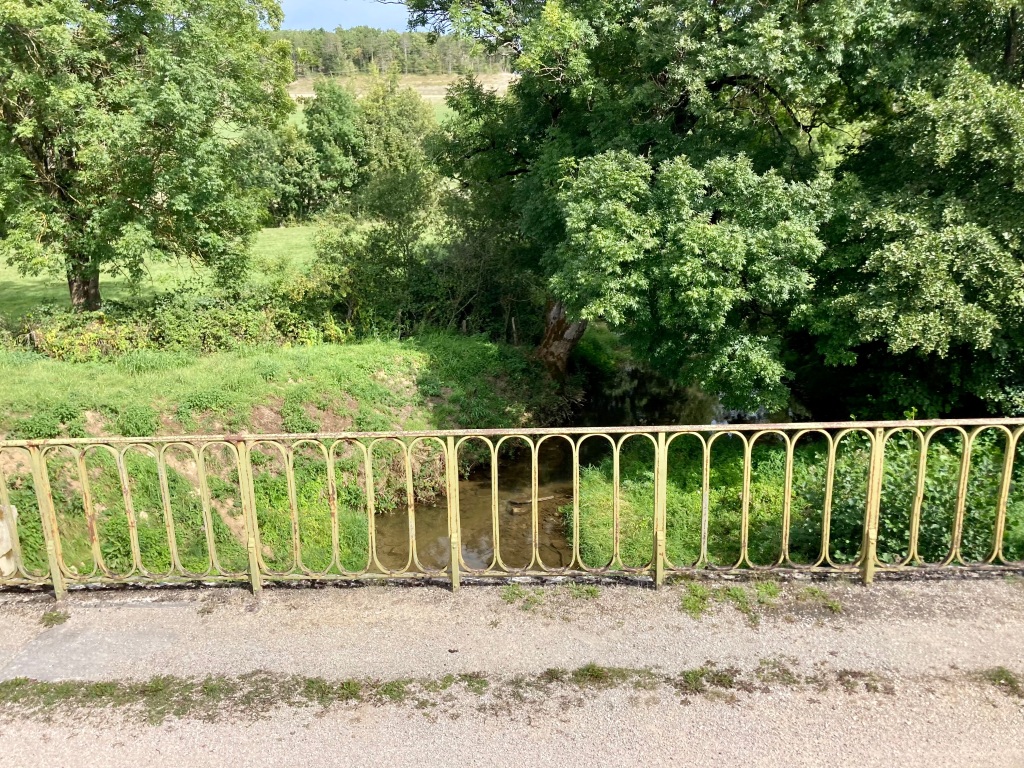
There were a few other things of interest to me as we slipped along. A beautiful moth joined us – I think it is a mint moth, but not certain. Please correct me if you know.
Then at a lock just past Crugey we suddenly had red bollards! Different people, either for fun or as their job, paint bollards in different colours and designs – one of the many things that gets you thinking “ooh, that’s different’.
And then, just on lunch time, we passed over the river Ouche, on a little aqueduct outside the village of Pont D’Ouche - where we were to stay the night.
This is actually a small tributary of the main Ouche, which mainly flows along on the left of the canal for some miles.
Pont d’Ouche
Within minutes of the aqueduct we were dropping down through the last lock of the day and mooring up to starboard in the shade of the trees.
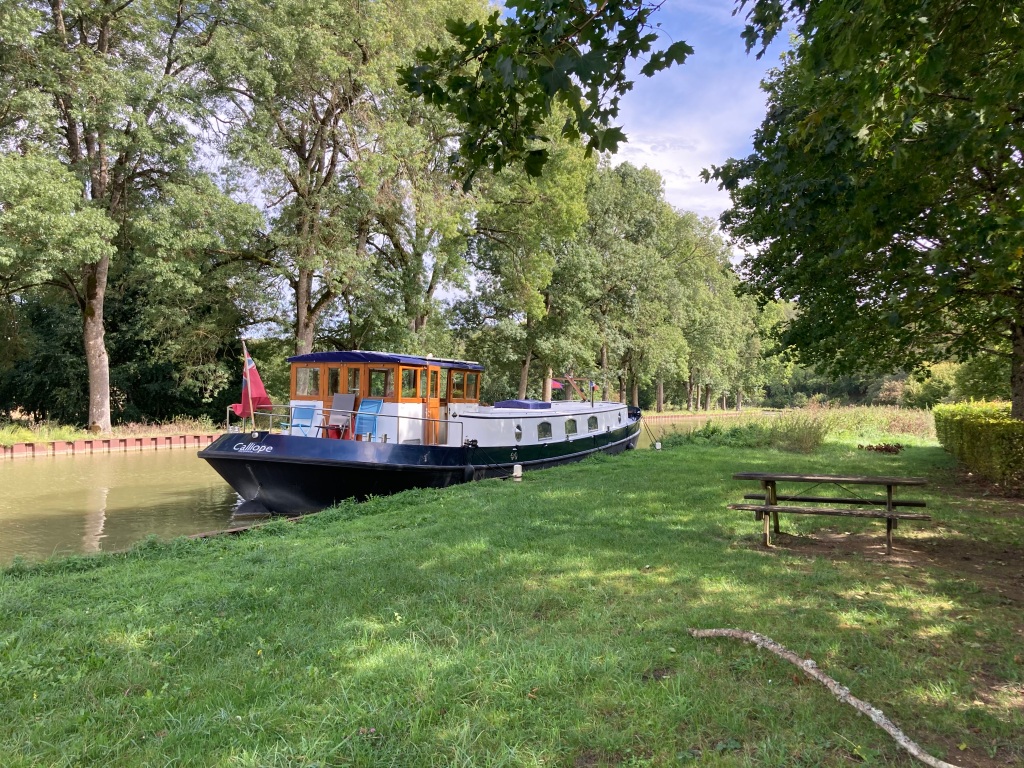
We had been here before a few years ago, and I remembered the rather unstable wooden posts that we moored up to.
I am pleased to report that these have been replaced with firm metal bollards, which was just as well given the weather that was about to arrive.

An hour later the threatened storm blew in, with the wind howling and the rain pouring.
It rained most of the afternoon, but when it finally passed on the evening colours were magnificent.
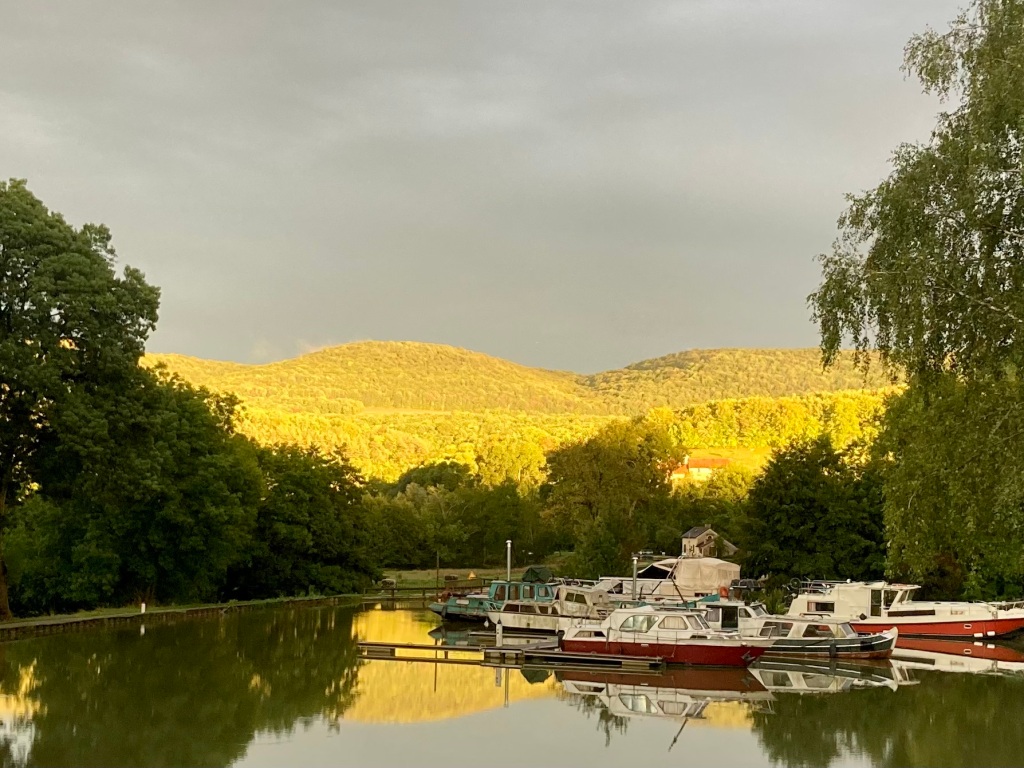
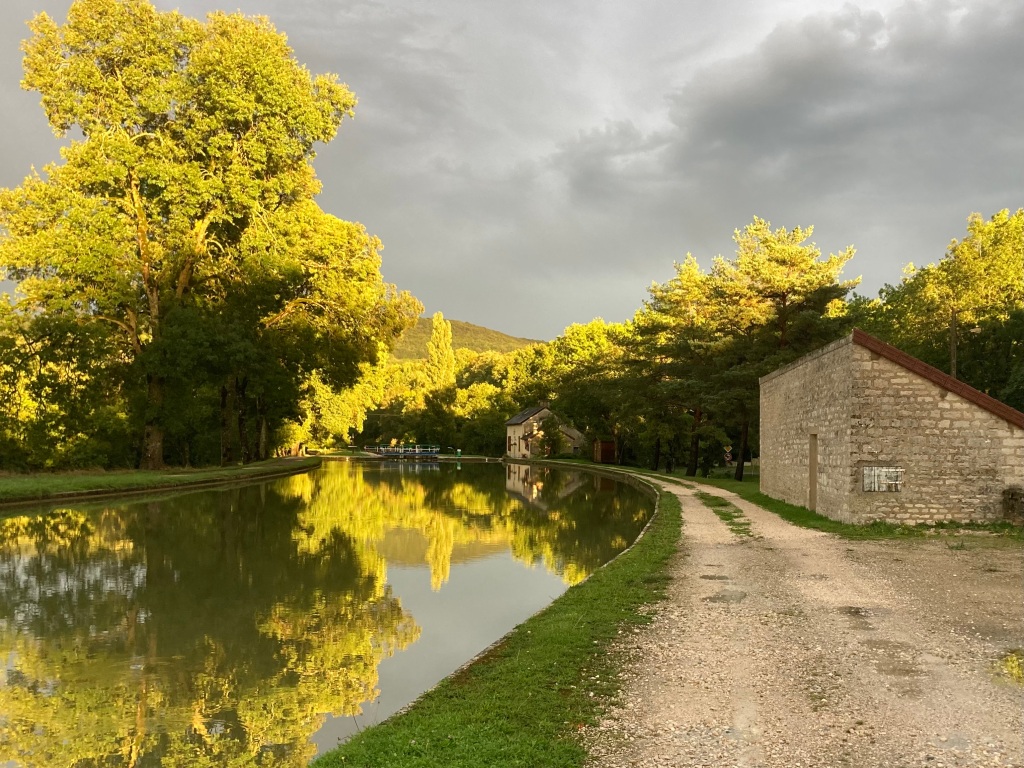
Just look at those shades of green on the hills, and then reflected in the canal.
Every change in the weather brings something to life on the water!
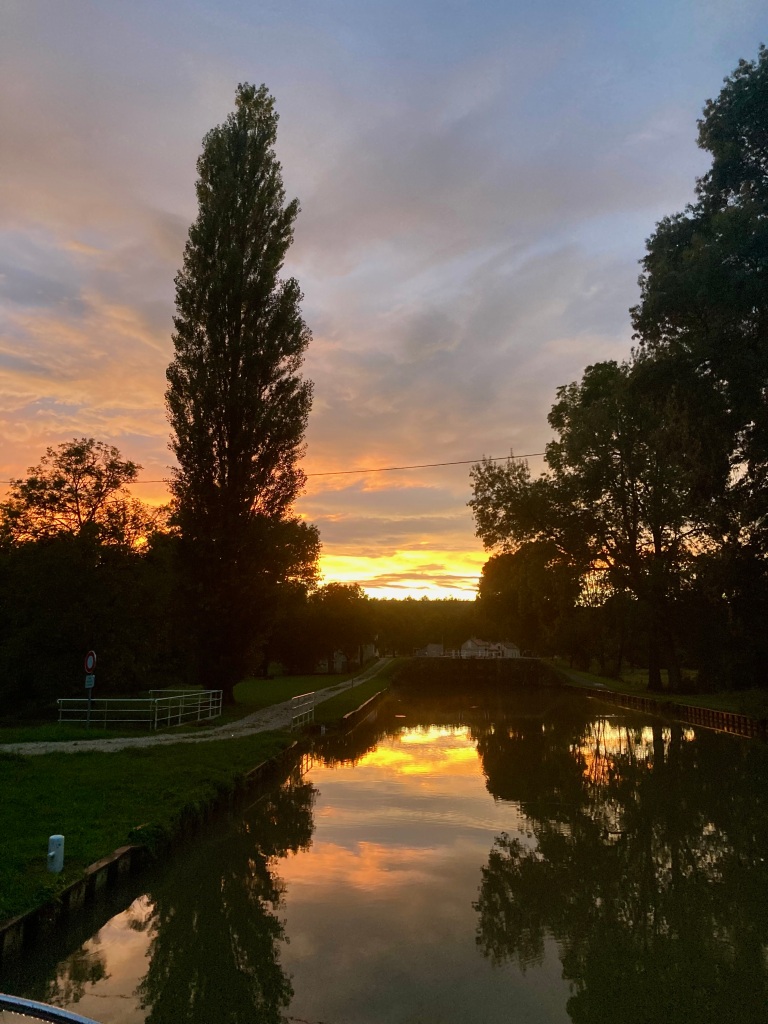
Half an hour later the sun had almost disappeared astern of Calliope and we enjoyed the next palette of colours across the canal, to go with a relaxing evening glass of wine.
Next morning the sun rose forward of Calliope, and the final part of nature’s stormy art exhibition appeared – the mist rising from the surface, and the gleam of early rays from the cabin roof.
A nice accompaniment to breakfast before we were underway again.
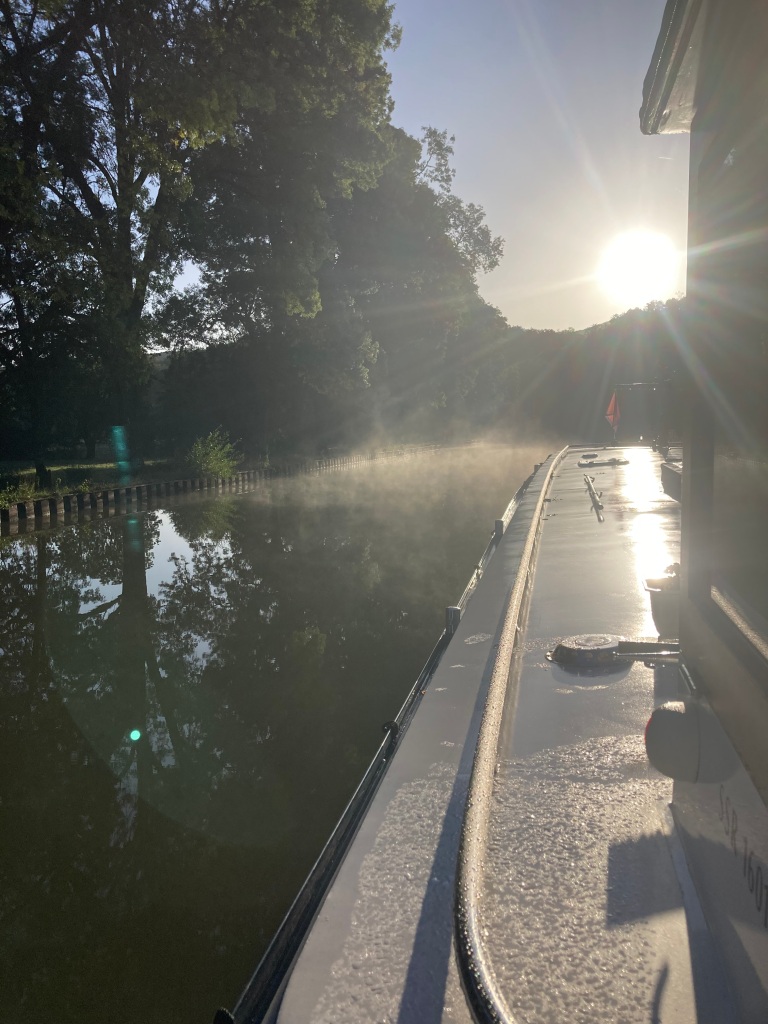
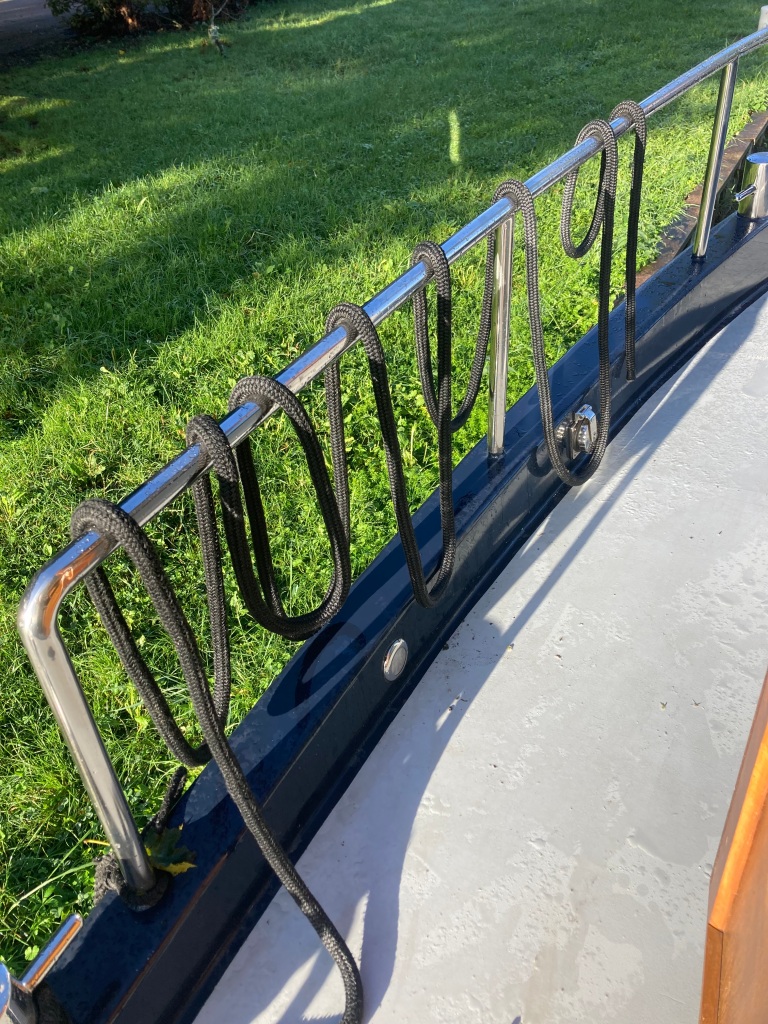
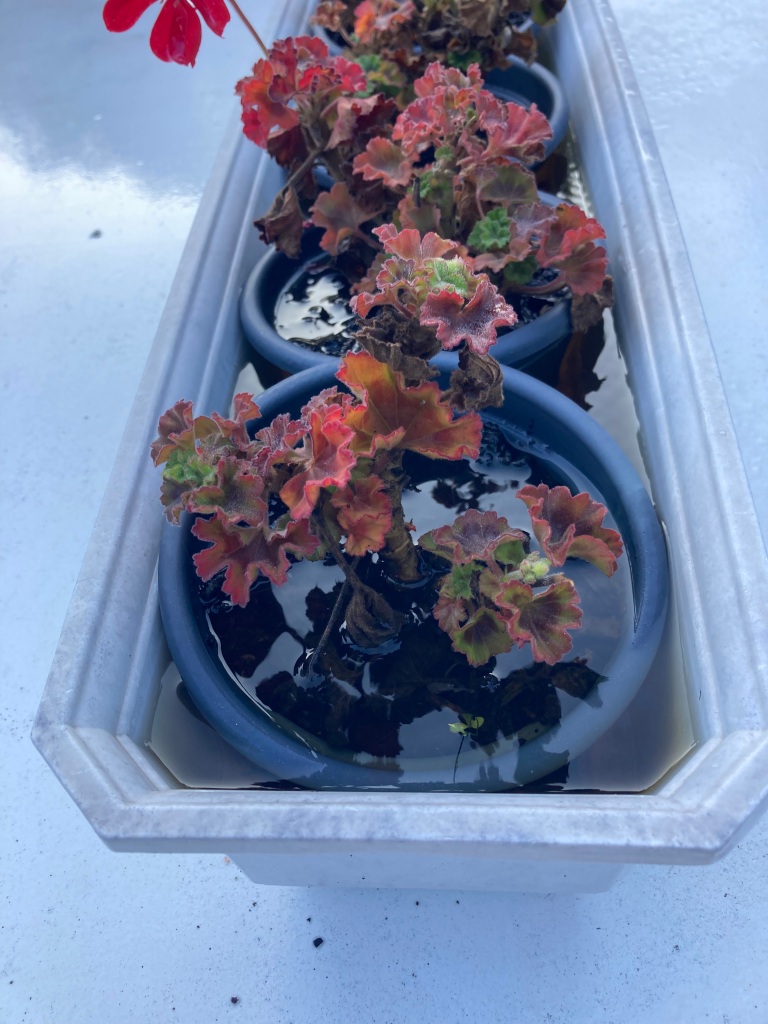
On going outside we found other after effects of the storm! The ropes were all sodden, so we strung them up to drip and dry. The poor geraniums were drowning! The water was not only full in each pot, but also to the brim of the trough. Quite a bit of emptying to do before we left Pont d’Ouche.
As things gradually dried out it was becoming a beautiful day to get going again. We had a couple of days to reach Fleurey-sur-Ouche where we were picking up with our son Ashley.
The was ahead was blue and green with hills sloping down into the Ouche valley as we glided along.
We were still running along side l’Ouche, and would be for a couple of days.
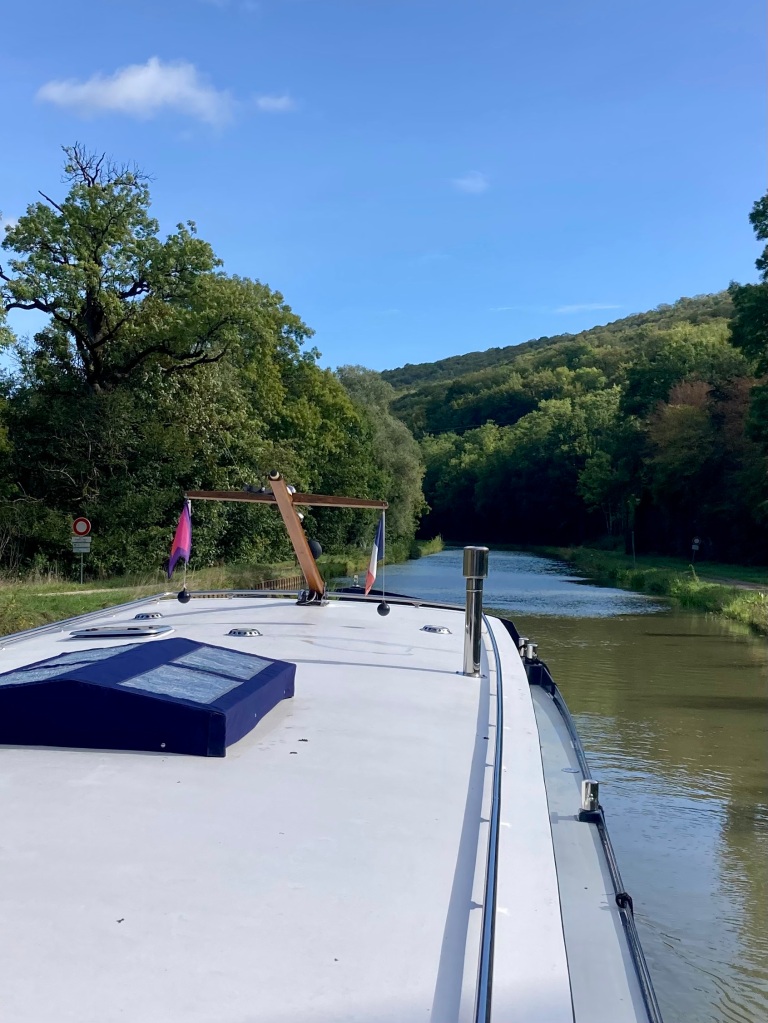

At lunchtime, the usual one hour break, we were moored in the élcuse at Barbirey-sur-Ouche, next to someone’s tidy home – another ex-lock keeper cottage. It is possible to come to an arrangement with the VNF to have a long-term rental of these cottages at a very low cost, whilst contracting to do shared maintenance work and bring the more ruined houses back to life.
Gissey-sur-Ouche
About an hour after the lunch break we had reached Gissey-sur-Ouche – this photo is from the bridge, showing Calliope to the left and – unexpected delight – a lavoir to the right!
This is a very different lavoir to that at Chateauneuf, though serving the same purpose.

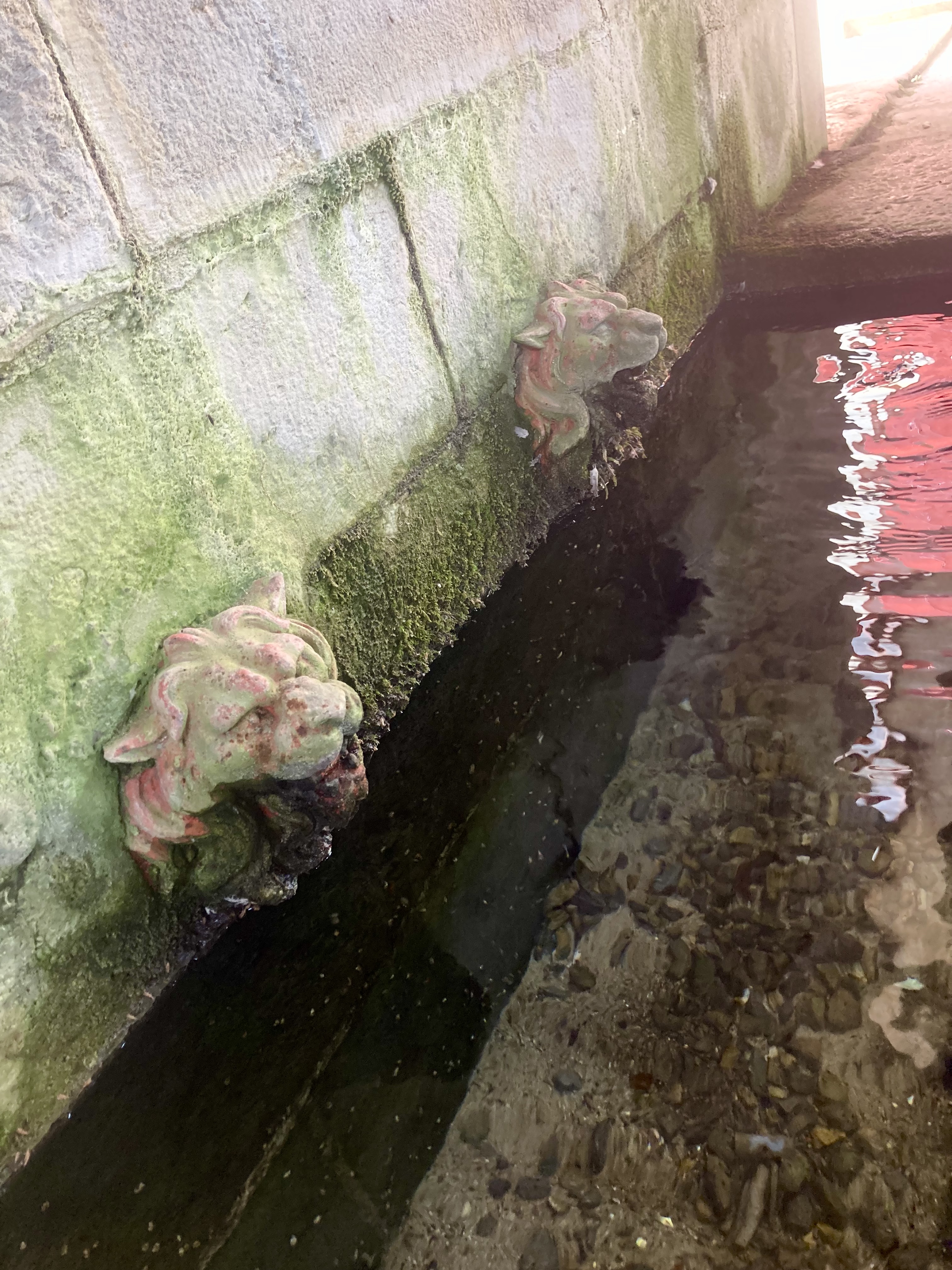
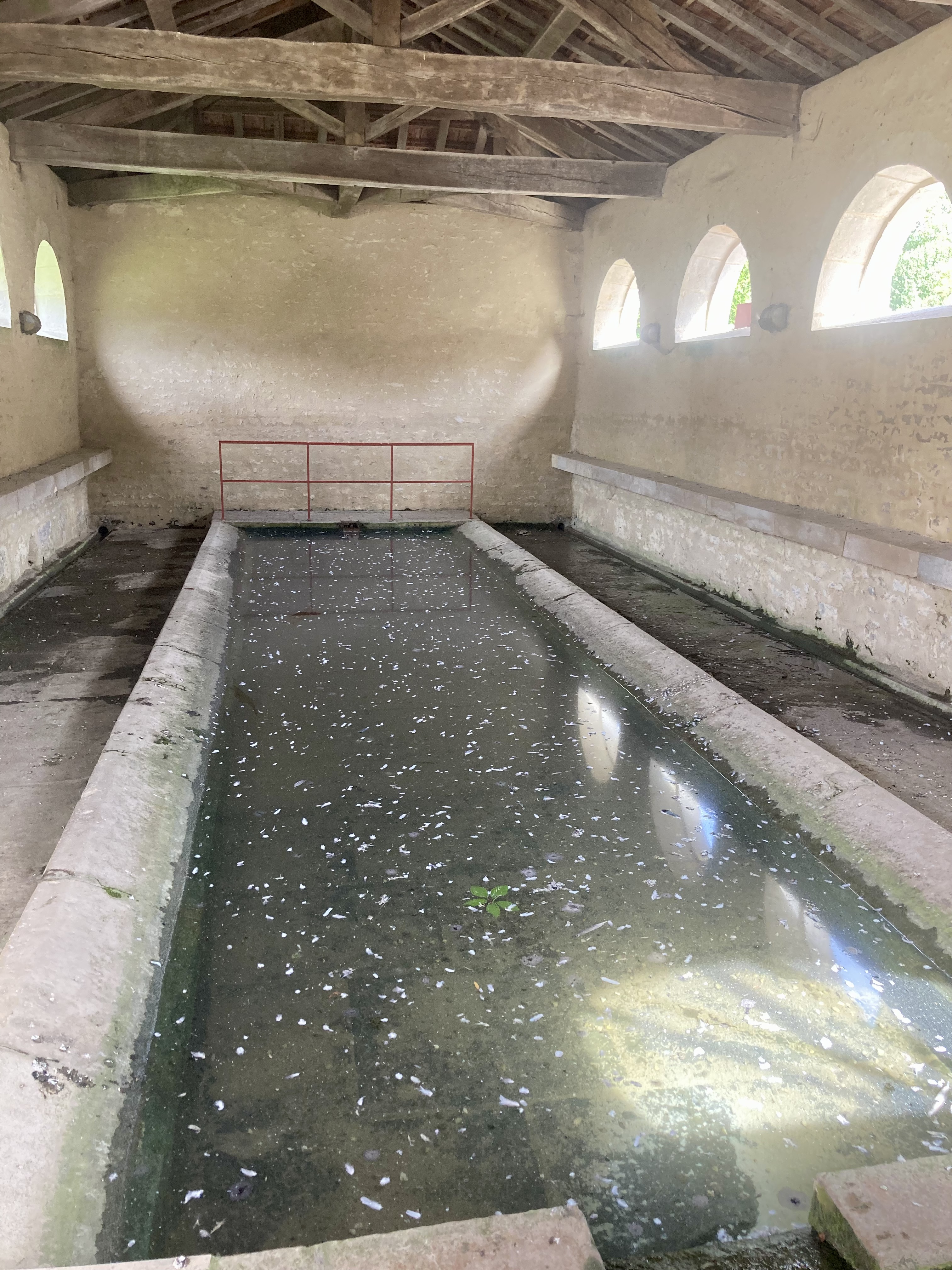
This lavoir has walls and a roof – not open to the elements as in Chateauneuf. A shelf runs along each side – maybe used for lanterns on dark days, or spare soap, or the bundled up shawls of the launderers, taken off while they were up to their elbows in cold water.
The spring feeding the lavoir can be seen outside, between the two doors; where it comes into the building there are two lions standing guard. I have discovered that the lavoir was built in 1846 according to the plans of the architect Auguste Sirodot, and had a major restoration in 2009. Perhaps it was originally paid for by the owner of the big house on the other side of the canal ….. who knows?

We crossed the old bridge over the Ouche to have a brief look at the little village of Gissey.
There is what looks like a good small restaurant on the main road and one or two characterful old buildings – plus the big house, hidden behind high walls!
We had just the one night at Gissey. Others have recommended the little basin upstream of the bridge, but no space there for us . We found this spot a totally agreeable mooring and a good spot for a few quiet days. If you choose to do this make sure you arrive with food supplies. The pizzeria/auberge in the village looks good, but no food shops for miles!
However three and a half kilometres further downstream, next to écluise 34, is a special restaurant. We had thought to moor up there for the night, instead of Gissey, but it seemed to be closed for the winter – or maybe because of the health of the restauranteur.
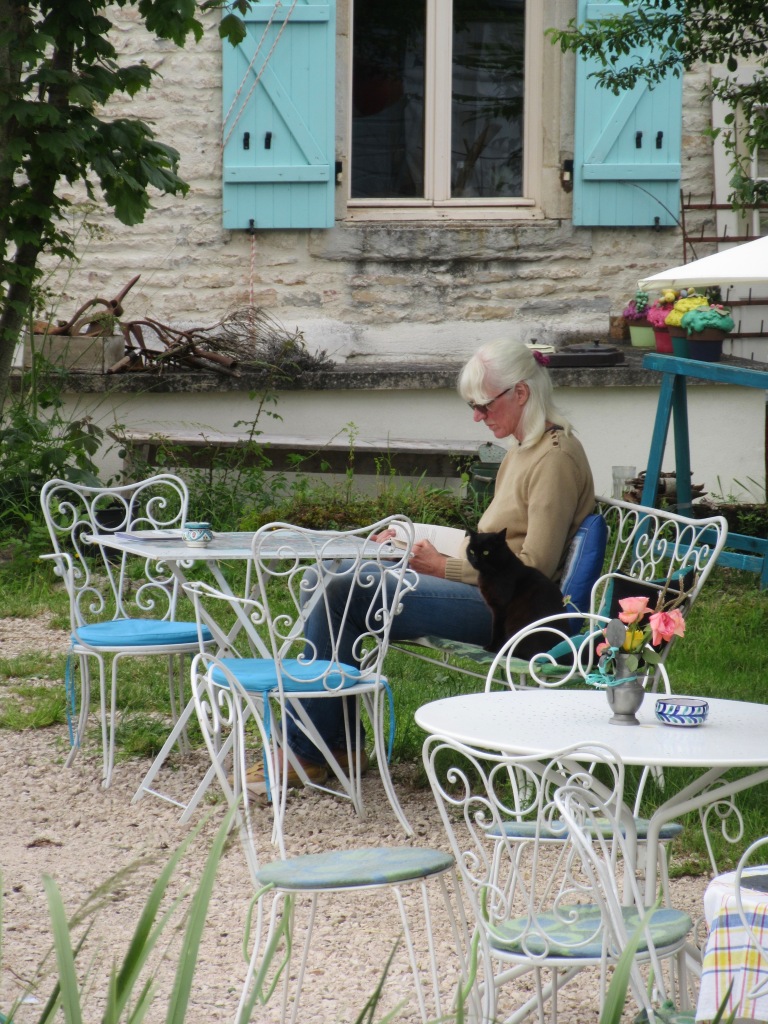
Seven years before on our travels in the other direction we had moored up near this restaurant for the night.
It being our first year retired we were feeling a bit broke and felt we couldn’t afford to eat there!
So I sat outside with the restaurant cat and had a sundowner drink instead.
And now in 2023, when we can afford to eat there, it is closed!
Never mind – it was a great day for cruising – not too hot as can be seen by me wearing a jumper at 1015 in the morning.
We were soon coming into Sainte-Marie-sur-Ouche and our éclusier was gesturing to me to come and look at the bridge we were about to pass under.
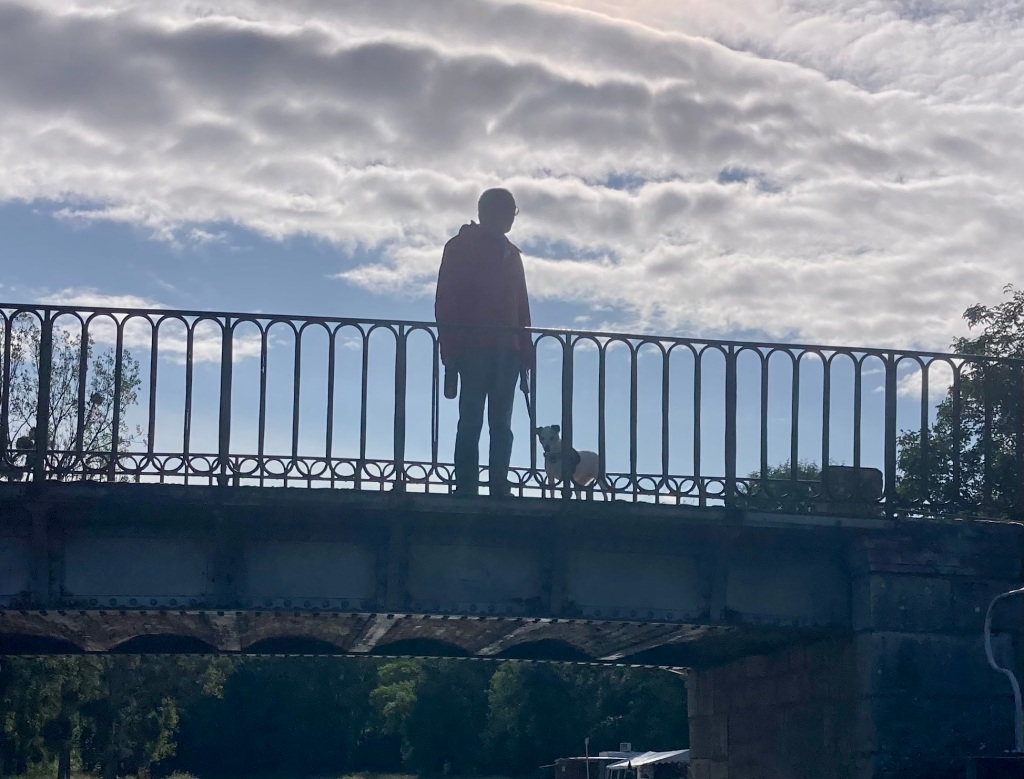
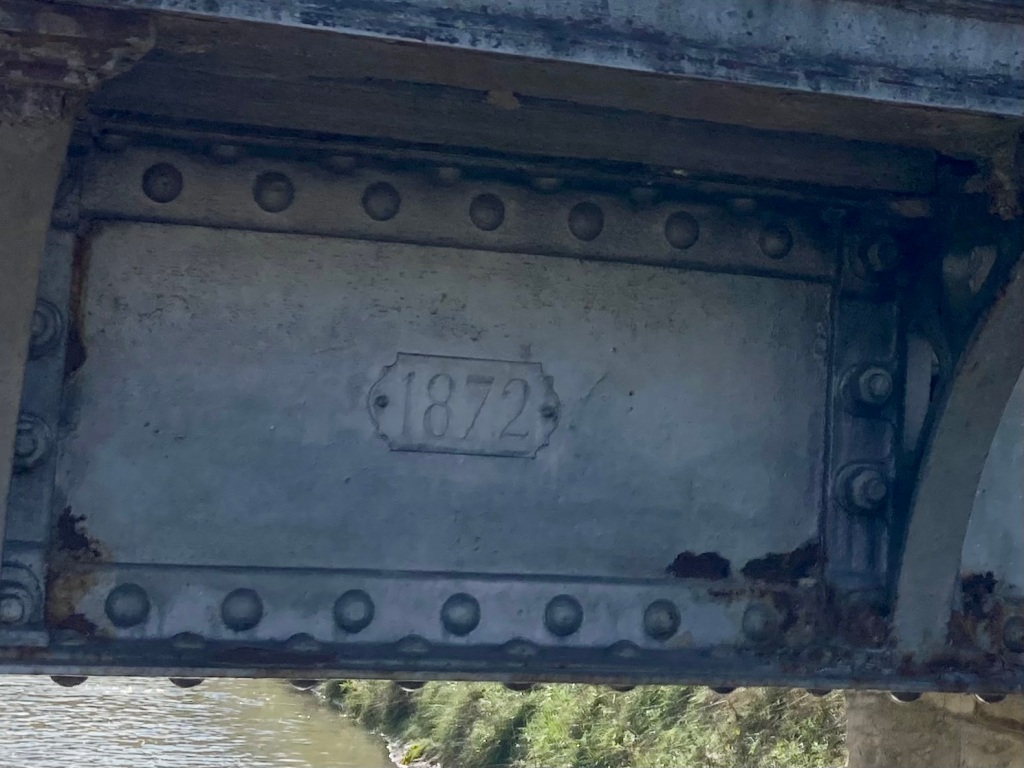
I was not entirely clear why he thought I should take a photo of the bridge, but thinking back maybe it is the only, or first, iron bridge over the canal. I’m fairly sure that most of the other bridges we had been going under were stone – so I include this one here in the hope that it is a special feature!
As we got further from the summit we again started to see evidence of a lack of water in the canal.
It was definitely much better than the Yonne side but ‘beached’ mooring posts like this suggested that more rain was needed.

Fleurey-sur-Ouche
By lunch time we had come into Fleurey, feeling very organised. Our son did not arrive until the next day so we had time to relax, explore, and shop before he got off his bus from Dijon.
Part of our plan was to use the long stone faced quay near the lock for our mooring. However when we arrived we found that a hotel barge was occupying that space. On their suggestion we tried mooring behind them, but lack of depth thwarted that idea.
So master helmsman Stu reversed about two hundred meters back up the canal to a space we had already spotted. Soon we were tied up and enjoying our midday meal.
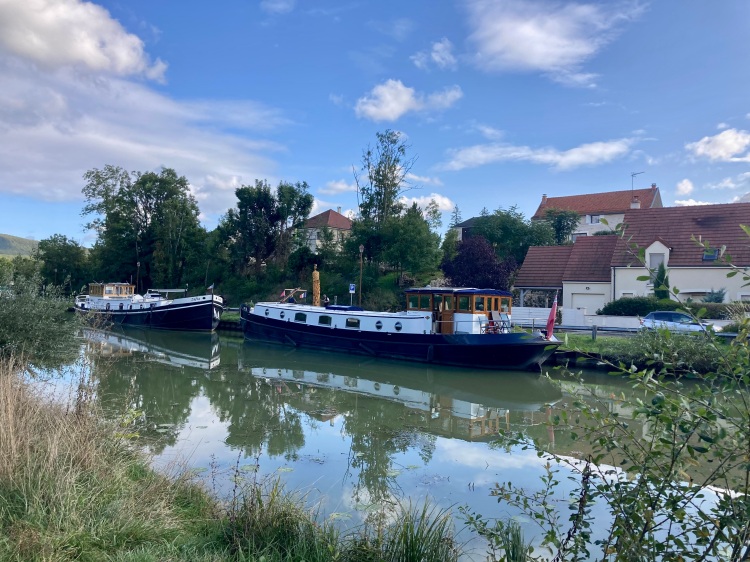
After lunch and a siesta it was exploration time.
The town extends both sides of the canal and river – the Ouche was still running alongside us. So we crossed over both canal and river to see ‘the far side’.
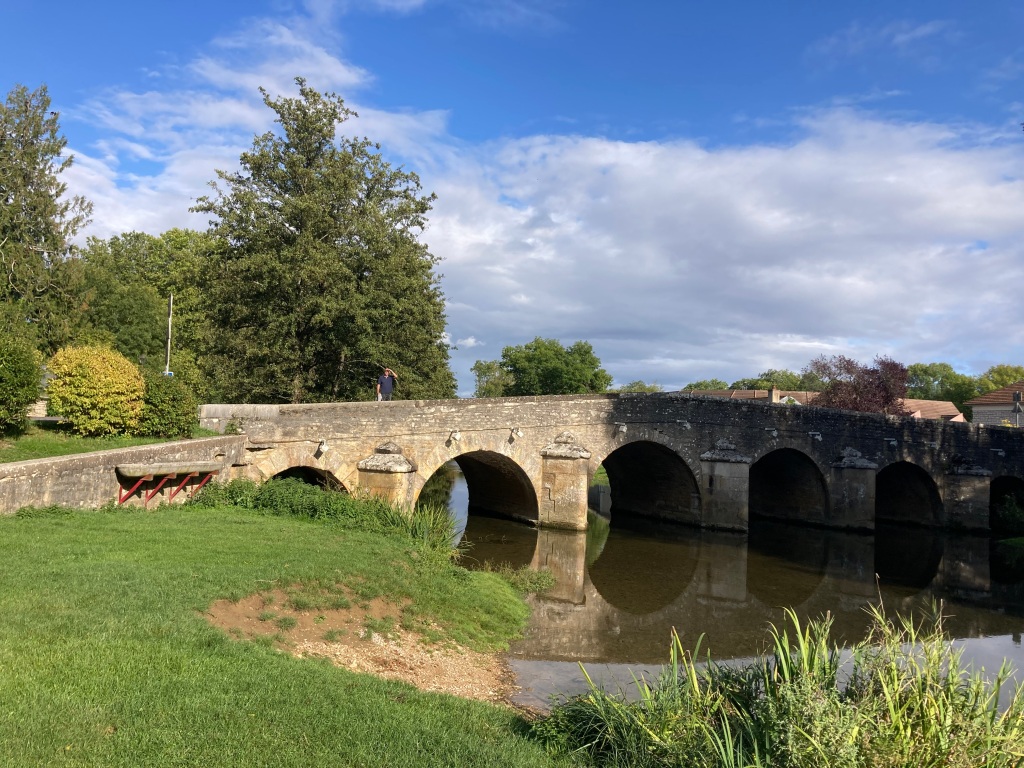
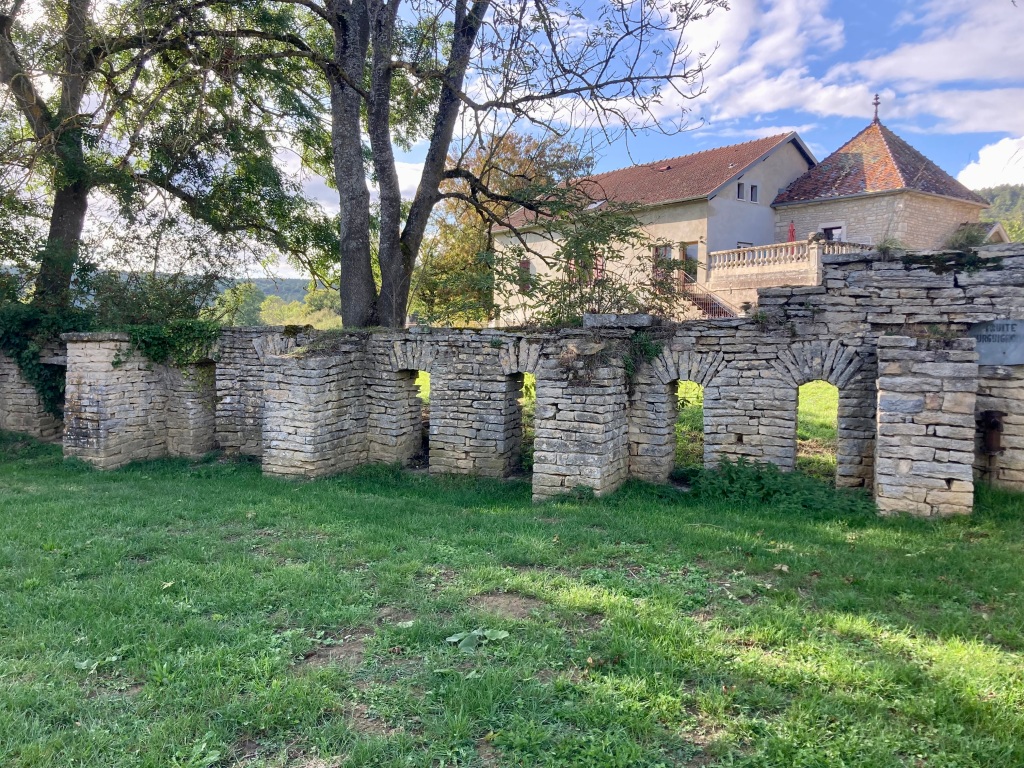
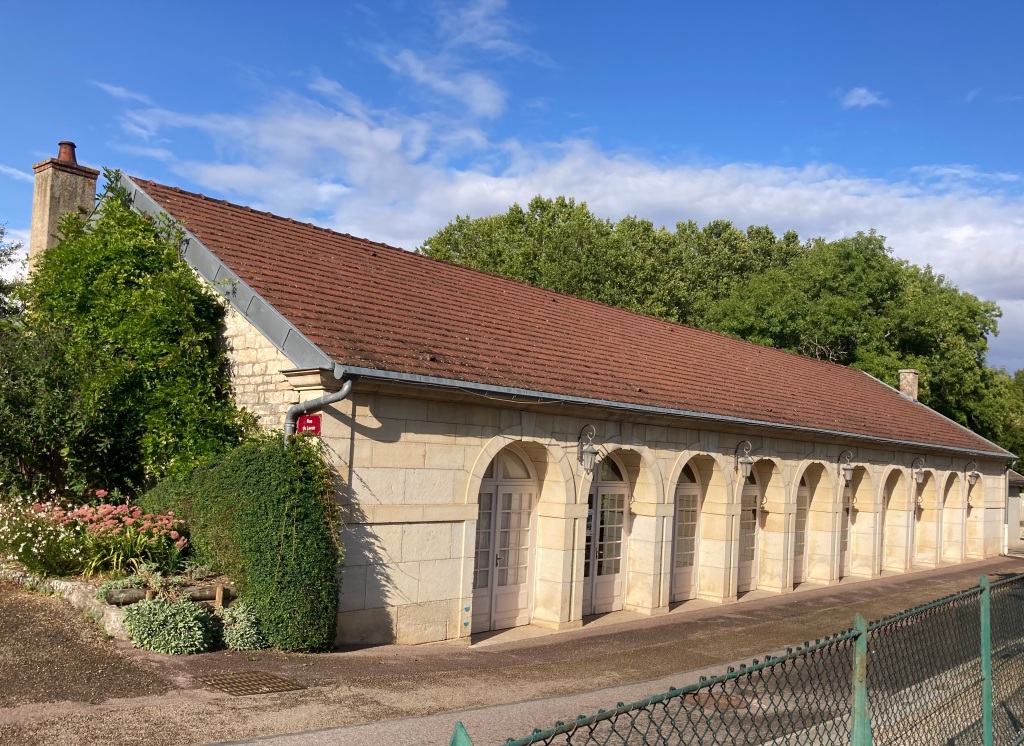
The bridge dates back many centuries, being part of the old road from the Saône to the Seine. It fell into ruin due to wars, famine and epidemics, and was rebuilt in 1673 – the 7 arches continuing to stand.
A very interesting feature here is in the central photo. This wall with ‘windows’ is part of an old flood control system. By opening the windows flood water could flow through to the meadows behind, protecting the village. The after the flood, when cattle were grazing, the windows were closed to keep the animals in.
The third photo is the big lavoir next to the river – these days converted to an event venue for weddings and parties.
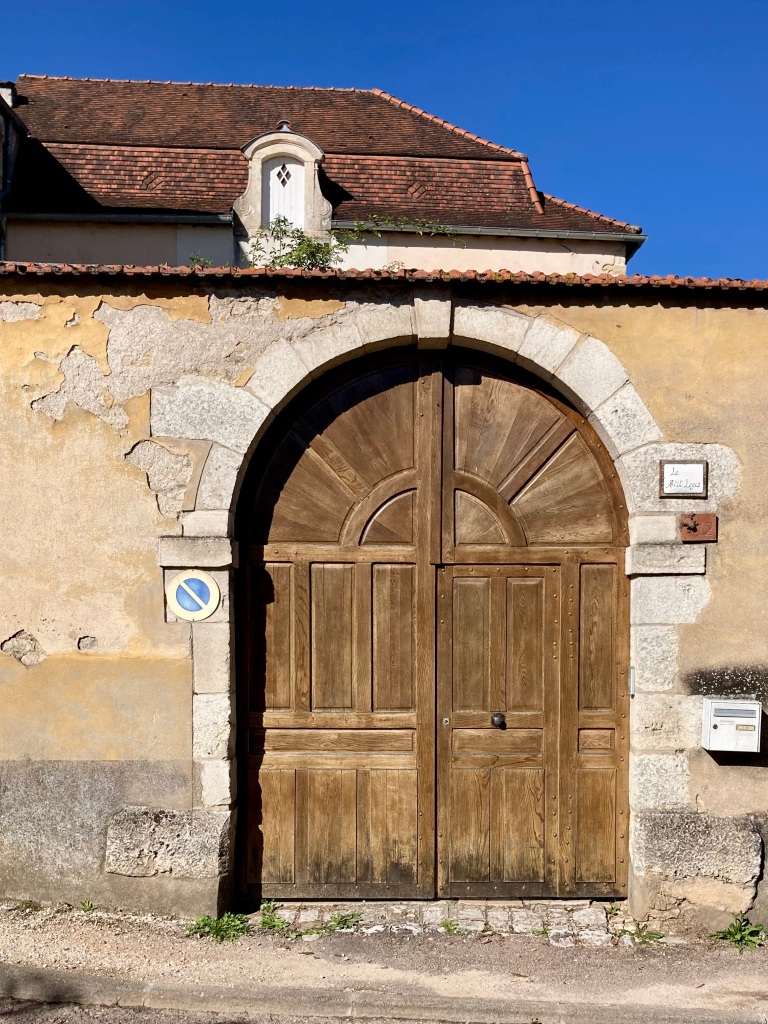
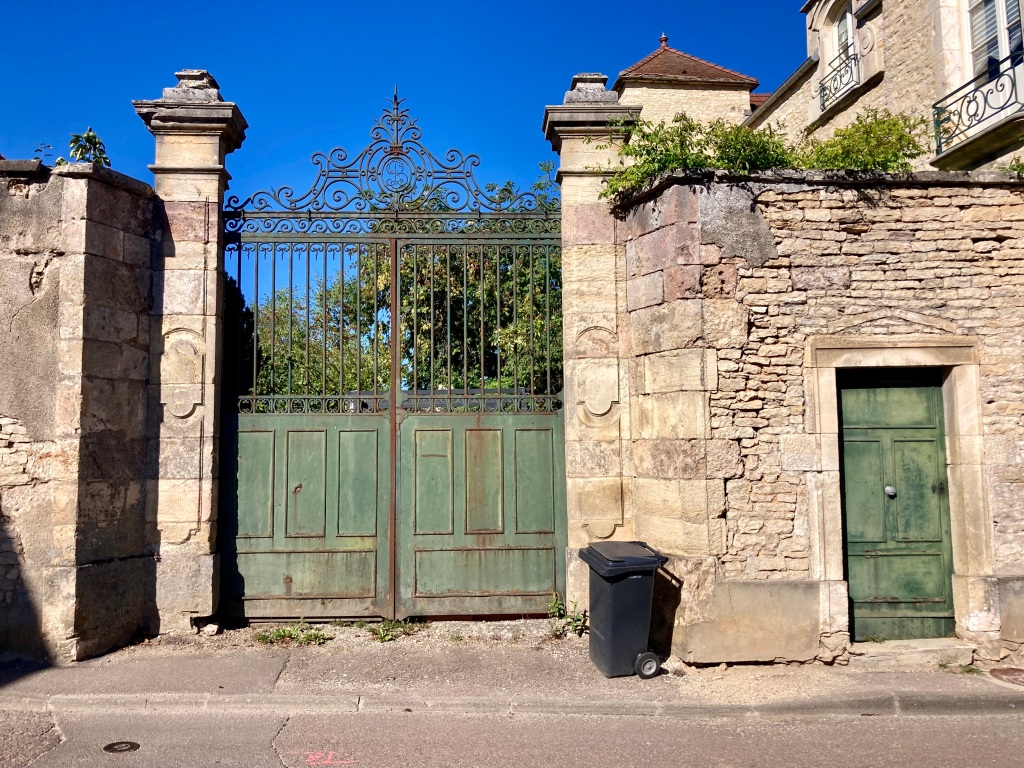
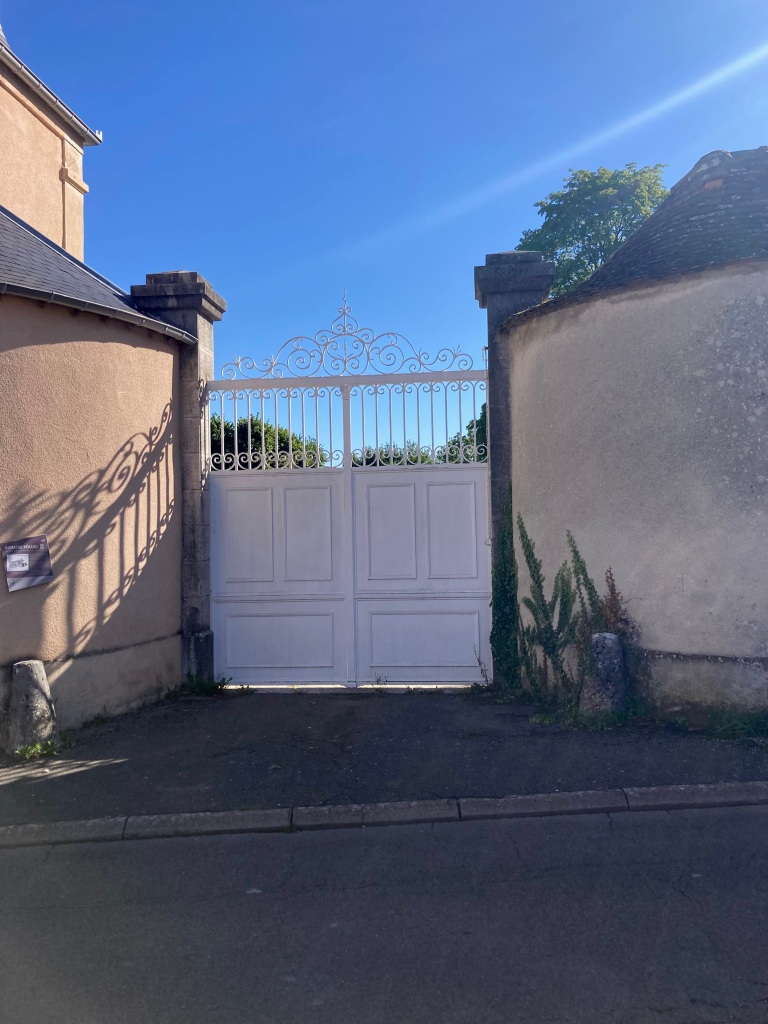
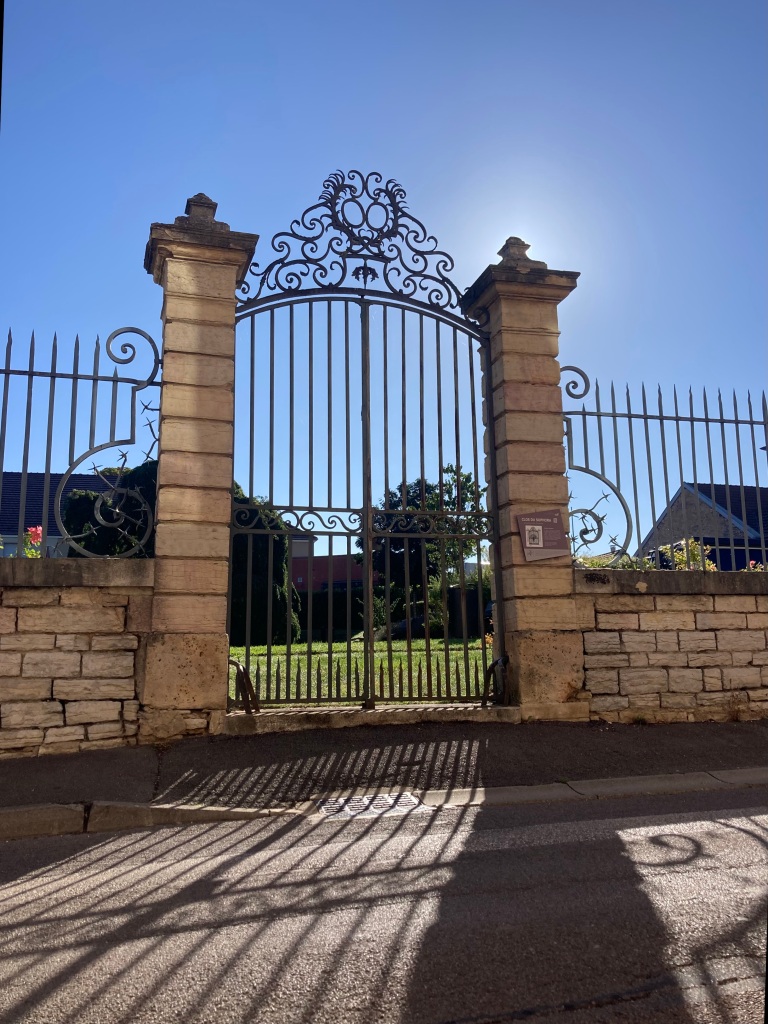
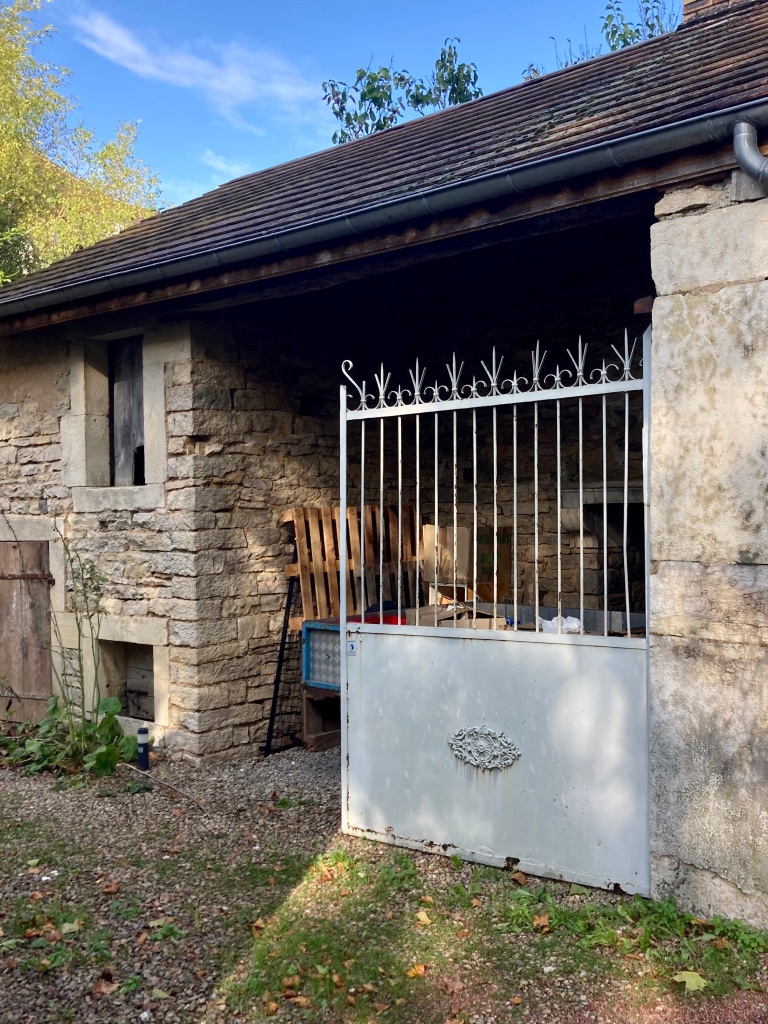
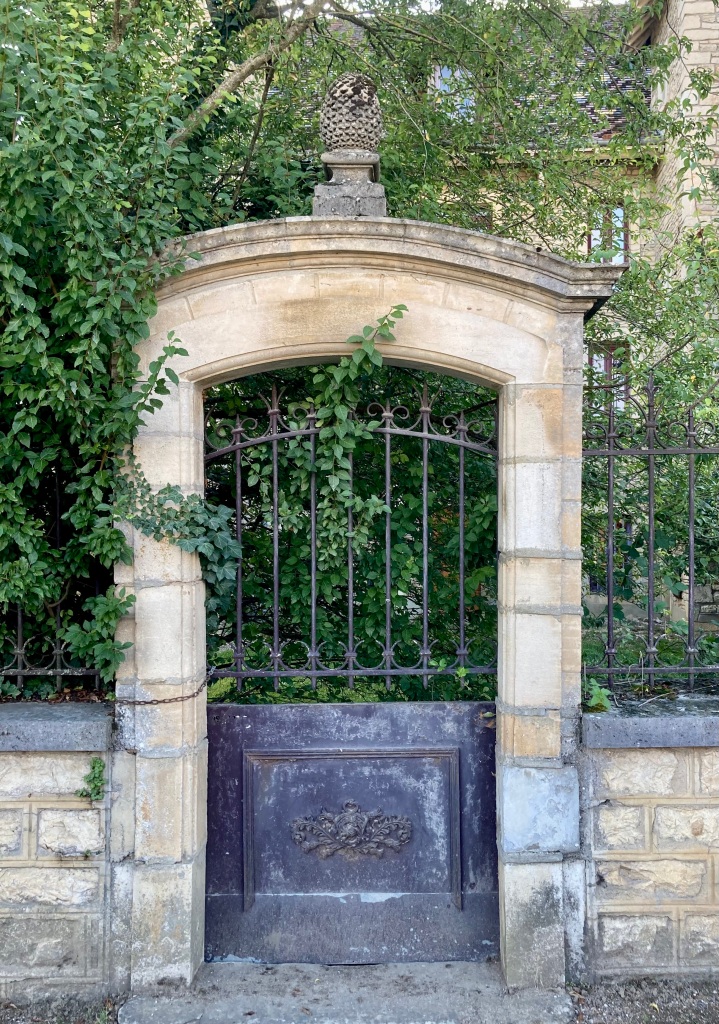
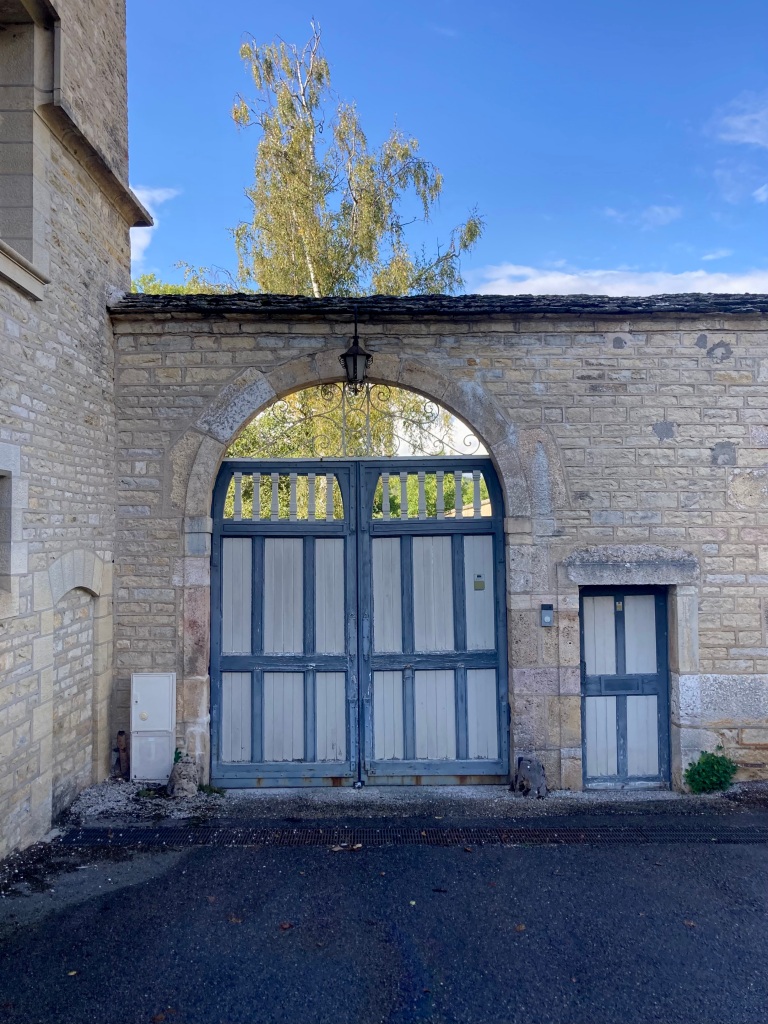
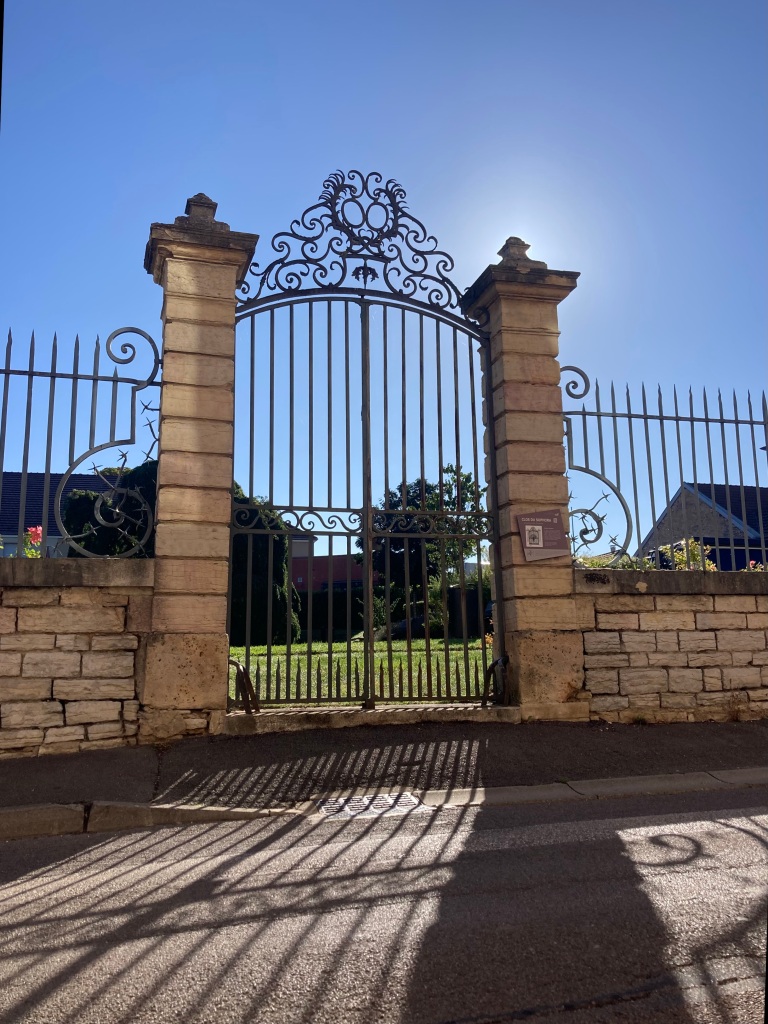
Fleurey has definitely been an important town in its day. There are many beautiful big doors, archways and gates into what have been large houses and estates – some still existing – and a few rather sweet small ones as well.
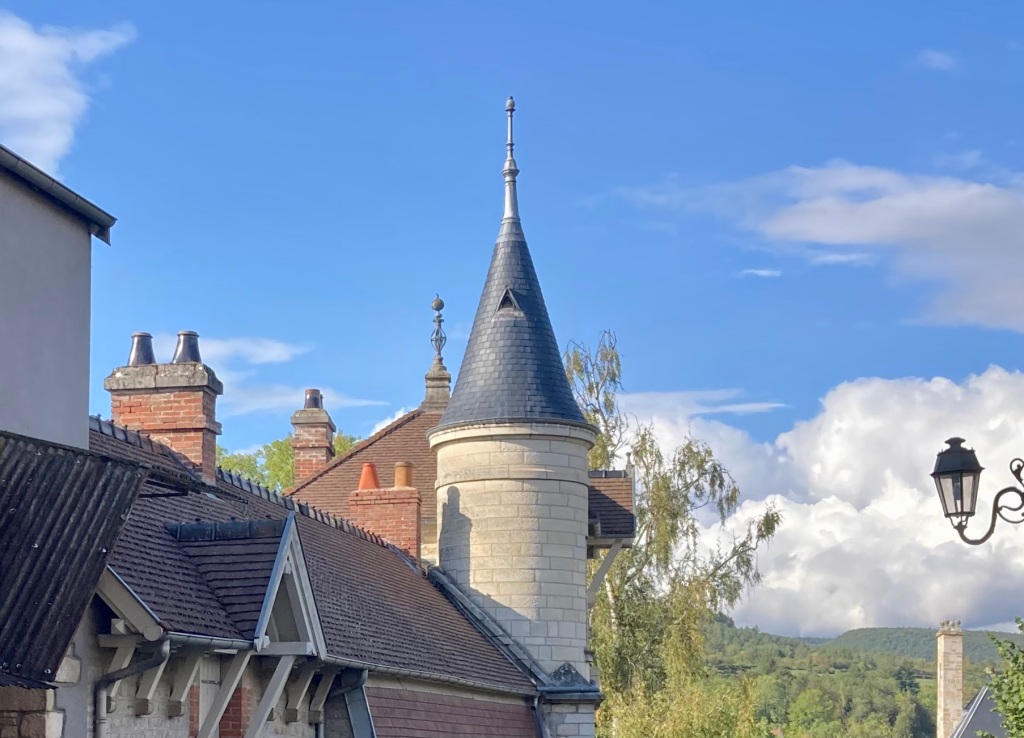
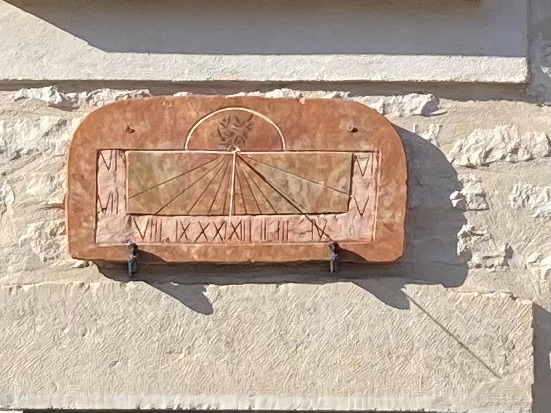
There is a lot of history in Fleurey; it dates back to Gallo-Roman times. There appears to be a local group investigating and writing up the history, but I regret my French is not good enough to understand it all.
Back on board we took a deep breath and relaxed into a sunny evening.
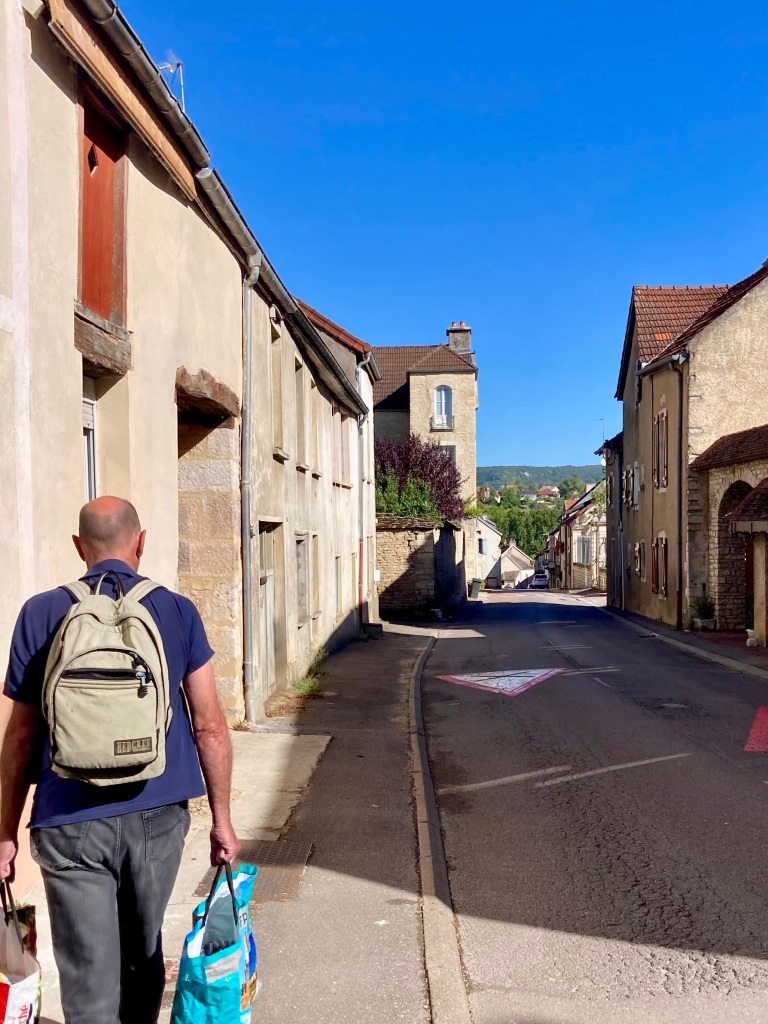
In the morning it was time to focus on the main reason for stopping in Fleurey for a couple of nights – to meet our son. He had Eurostarred to Paris and on to Dijon, then to catch a bus to Fleurey.
After a few days out in the country it was time to get provisions!
The main shopping centre, including an Intermarché supermarket, is at the top of town, so luckily all downhill when carrying the full bags!
By 5pm Ashley had arrived, hungry, and was installed on the back deck with wine and a tray of quickly assembled tapas!

He is a bit like us and likes to explore, try out local beers and bars etc. Stu was cooking that evening, but gave Ash and I leave to go ashore.
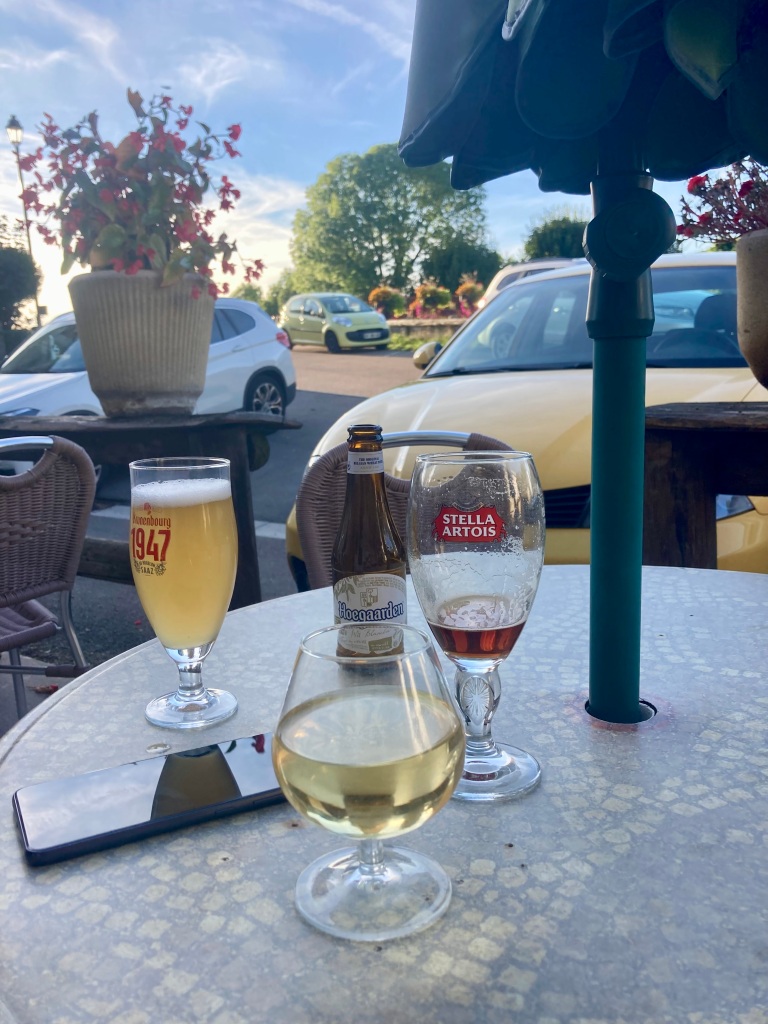
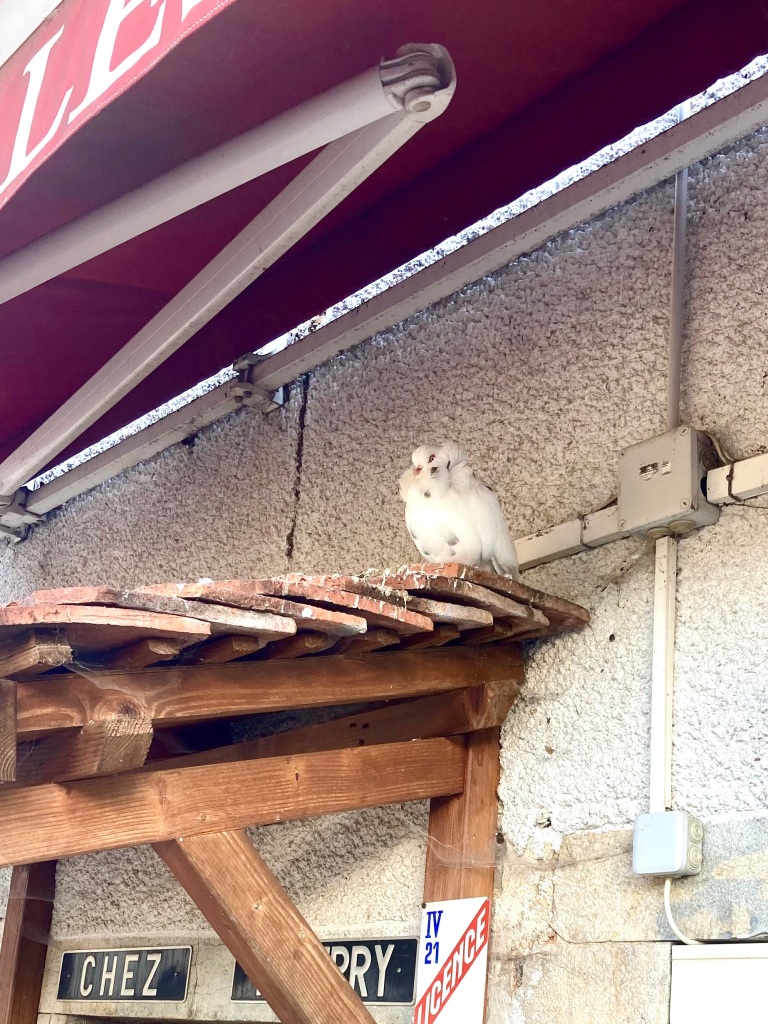
Only 100m from Calliope is a canal side bar. In addition to the expected wine and beer there were other friendly drinkers and a very fluffy pigeon, that lived in a dovecote behind the bar.
A couple of drinks on and it was time to go back for our dinner – and another superb sunset sky.
Before we leave Fleurey-sur-Ouche, two little touches of nature that I loved.
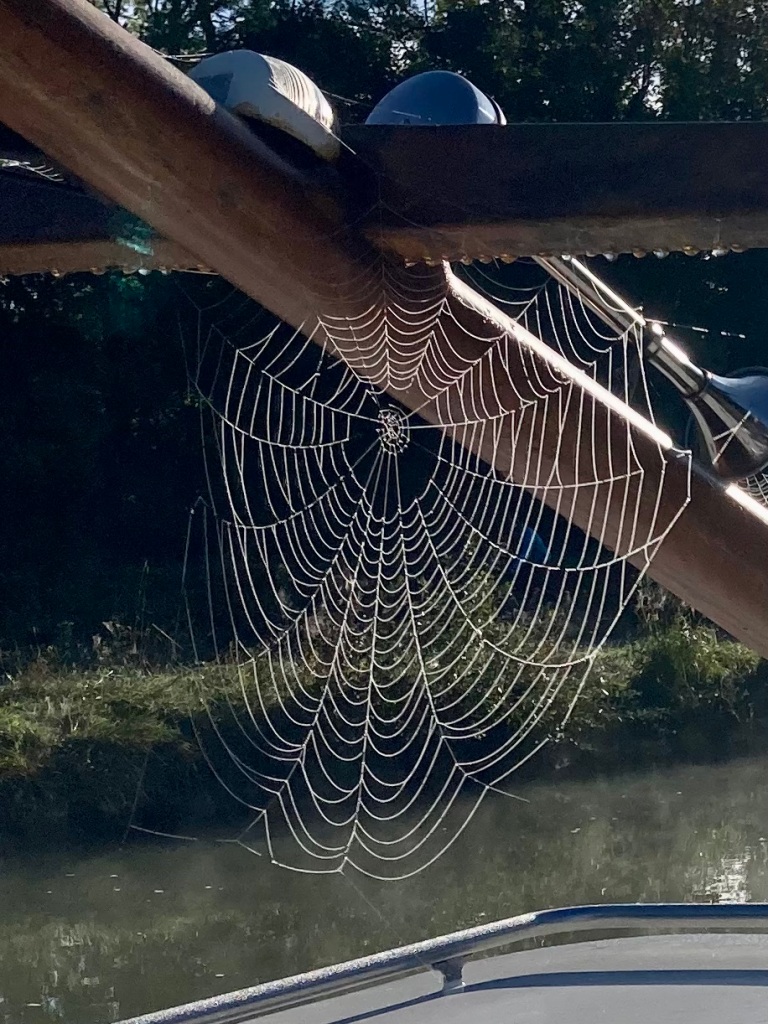
Spiders work their magic all year, but it is often in the spring and autumn sunlight, slanting in low, that the the beauty and delicacy of their webs is best seen.
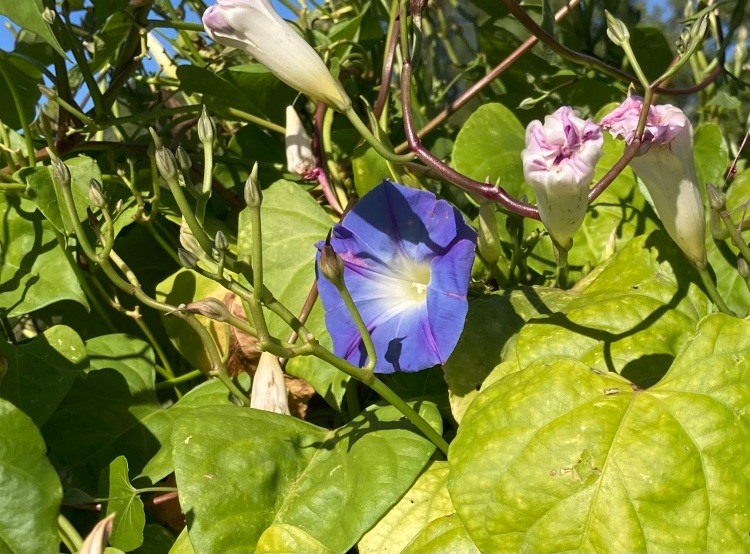
And this Morning Glory bloom close to our mooring was just the best shade of floral blue you can get.
Ashley was with us for 4 nights, needing to be in Dijon for the last night in order to catch his early train back to UK. Our itinerary for the day was therefore a 9 kms and 8 lock trip to Plombiéres-les-Dijon, a small town outside the city. (Lès means near, so Plombières near Dijon)
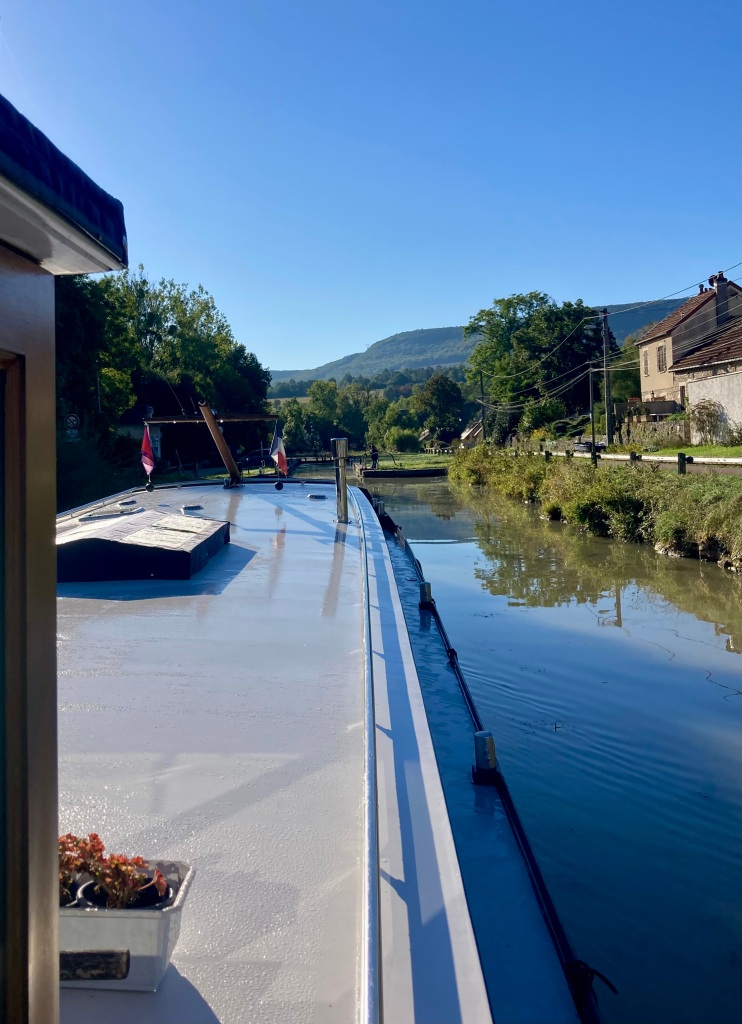

By our usual (on this canal) start time of 9.15 we were arriving at écluse 42S de Fleurey with its pretty little lock house – no longer an éclusier’s home I feel.
The hotel barge had moved on earlier and we had a clear run to the lock gates under a clear sky.

Within 45 minutes we were already at our third lock – 44S de la Combe-de-Fain.
Having been on board a few times now Ashley is very handy crew – both with the ropes and at the helm.
(Nearby, though not in sight, is a double storey stone arched railway viaduct built in 1849 and still in use.)
I had earmarked the next lock for a short stop as there is a Colruyt supermarket next to it. We could buy bread and one or two extras for lunch. Ashley came with me to choose some French goodies to try. Good – when we later reached our lunch stop lock, interestingly called Crucifix, we had tasty food to eat.
Shortly after this we met a hotel barge coming upstream. It was quite a surprise. We had had the canal more or less to ourselves for days now. It’s normally a simple thing to pass one of these big barges, but a little more difficult with the lower than normal water. Both Captains took care and we glided past one another gently.
Now the topography began to change.
We were entering a steep sided section of the valley that takes the Ouche all the way down to Dijon.
And although hard to see there is a crucifix on top of that craggy outcrop, giving the next lock it’s name.
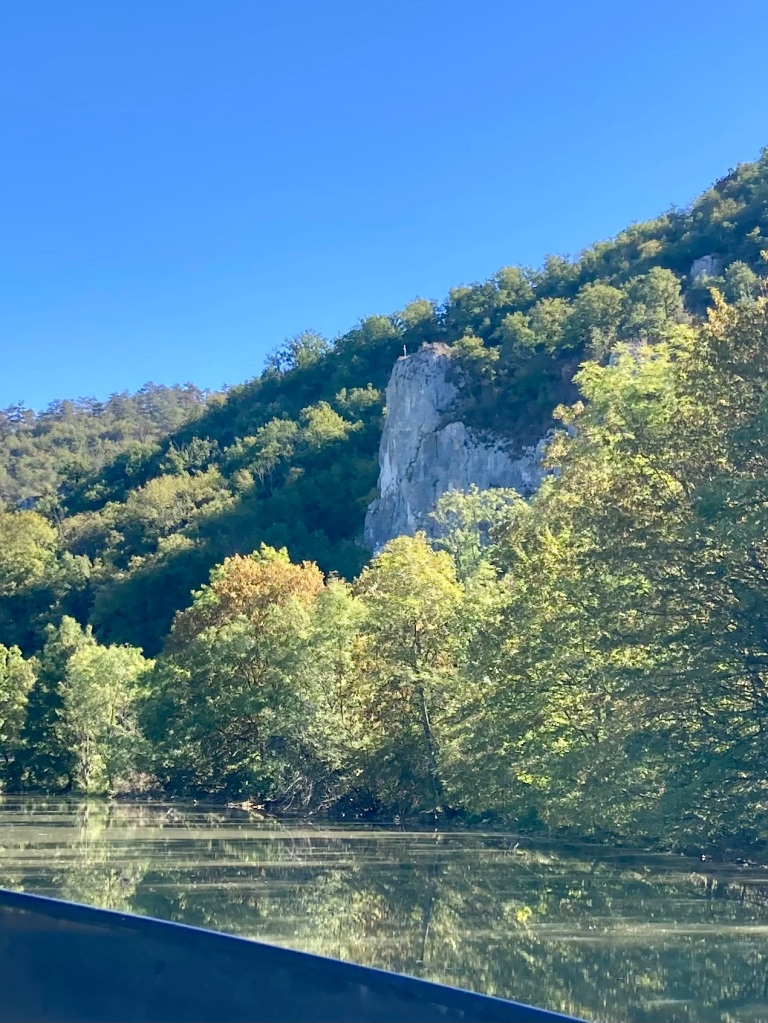
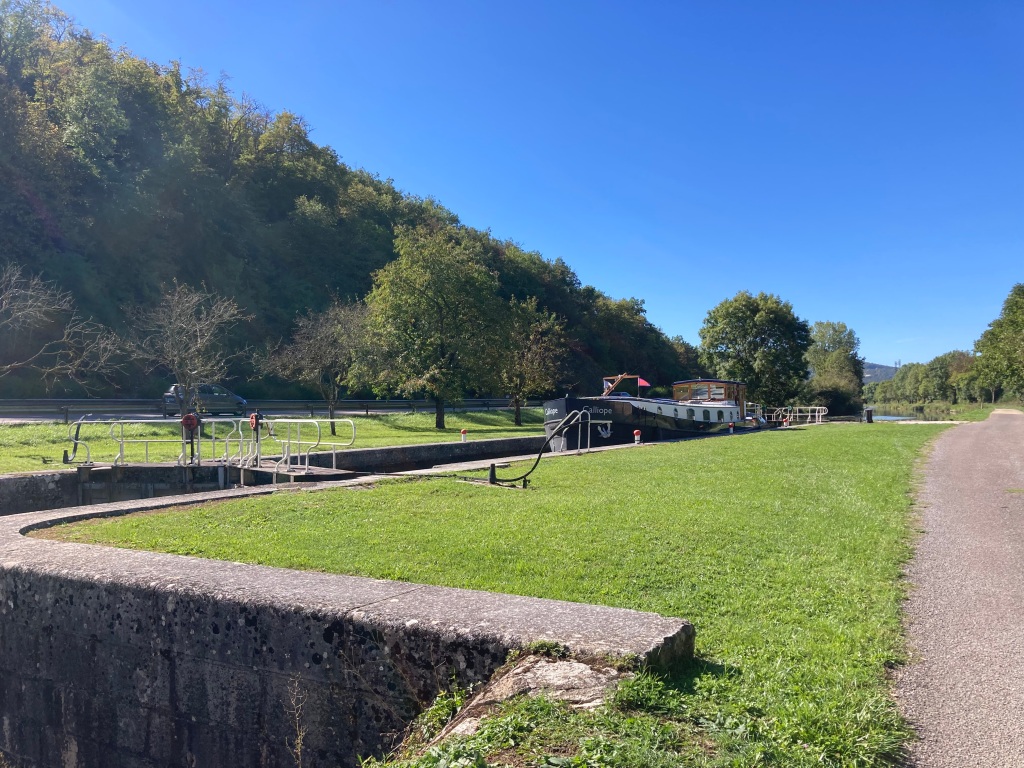
As so often we were left in the lock for our lunch while the éclusier nipped off home for his.
When it is very very hot we ask to be left at the bottom of the lock to keep cool, but on this perfect autumnal day we were happy to picnic at the top.
From this angle it looks like a quiet rural setting. It is rural, but not quiet. At this point the busy A38 runs alongside the canal! So with the A38 on one side and the Ouse on the other we continued on to our destination for the day.
Plombières-lès-Dijon
There is a good size basin at Plombières and plenty of good mooring space. We secured Calliope and went for a wander round the town – partly to let Ashley have a look (we have been there before) and partly to see if we could find somewhere to go out for supper.
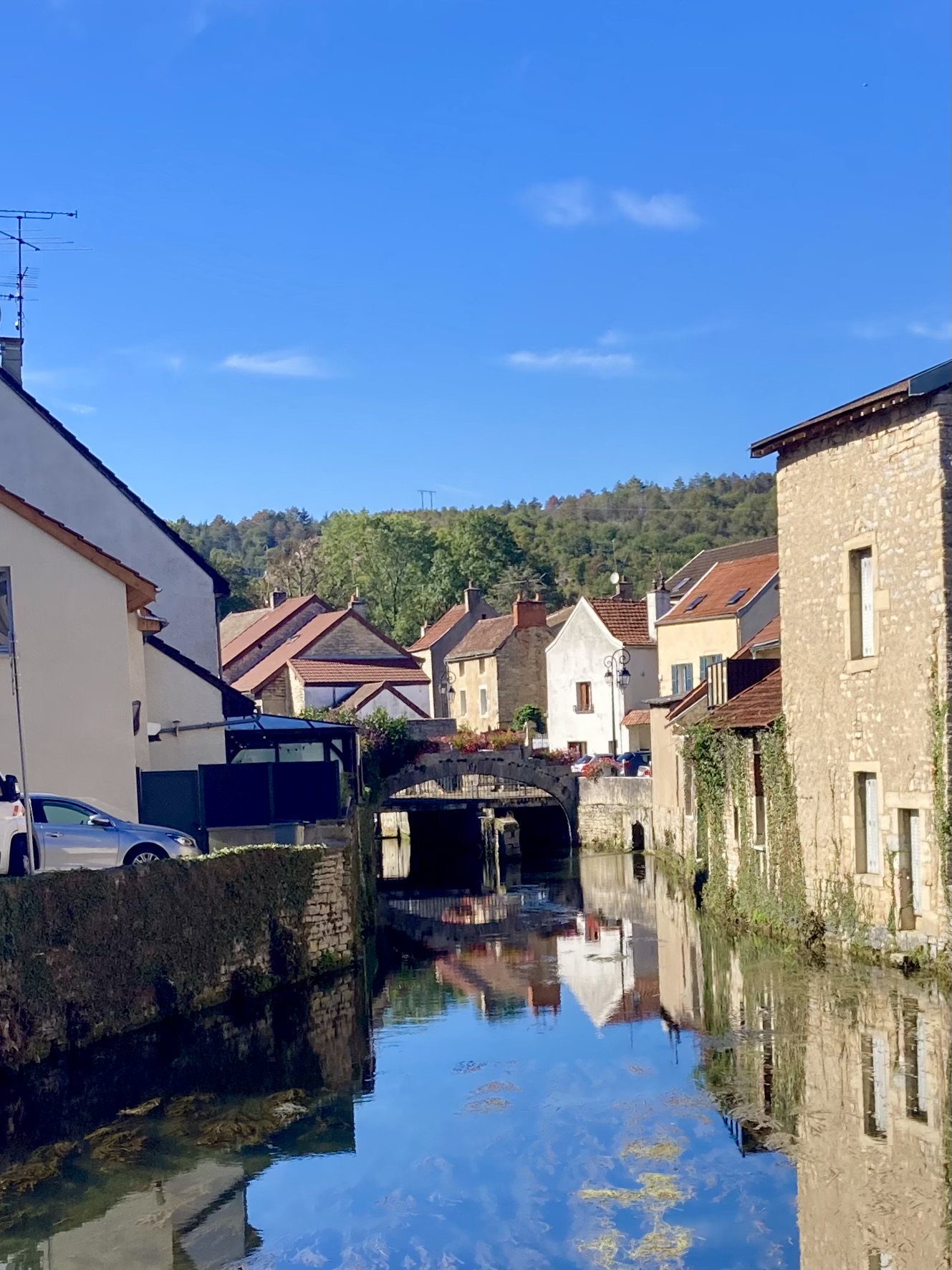


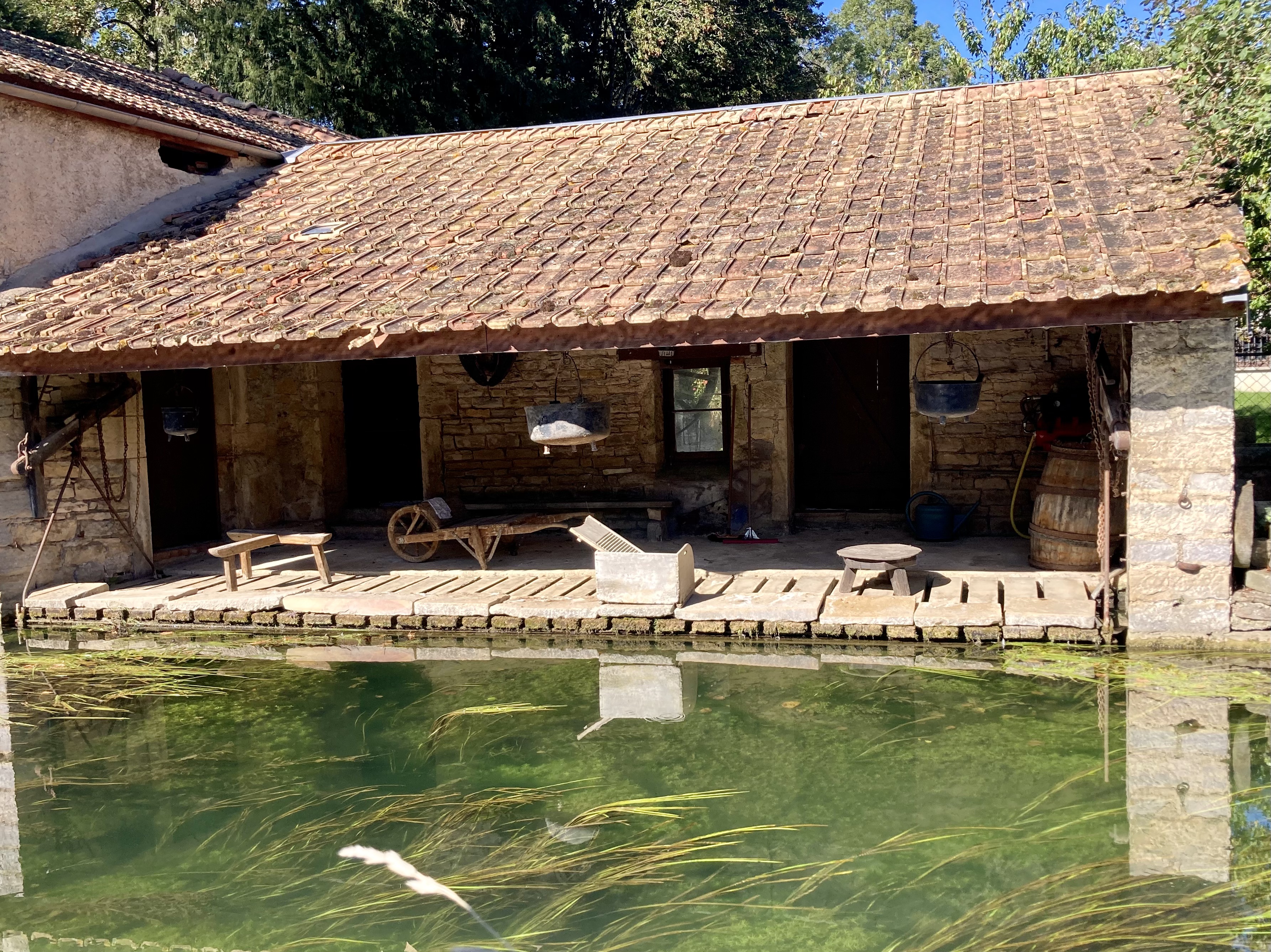
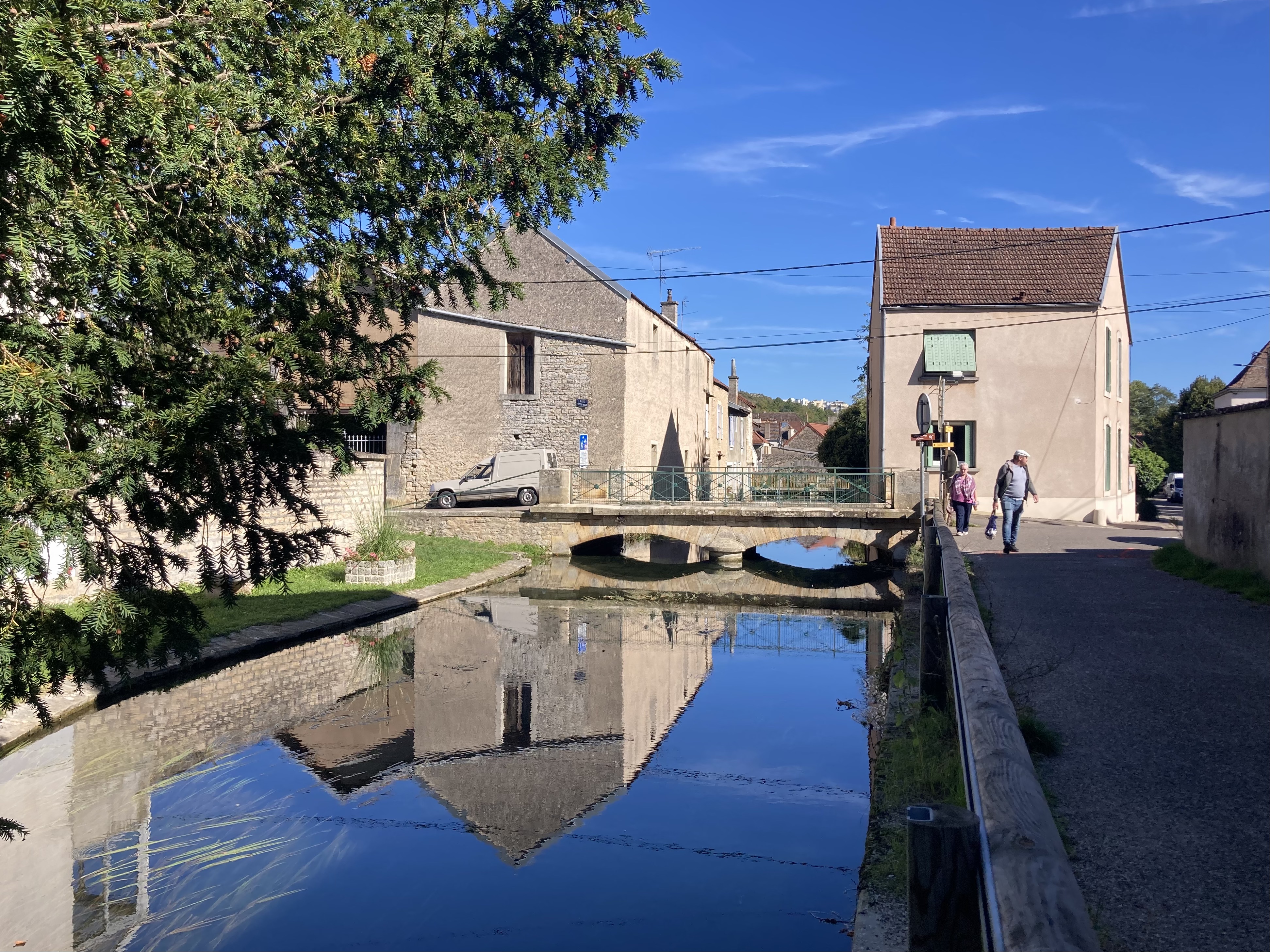
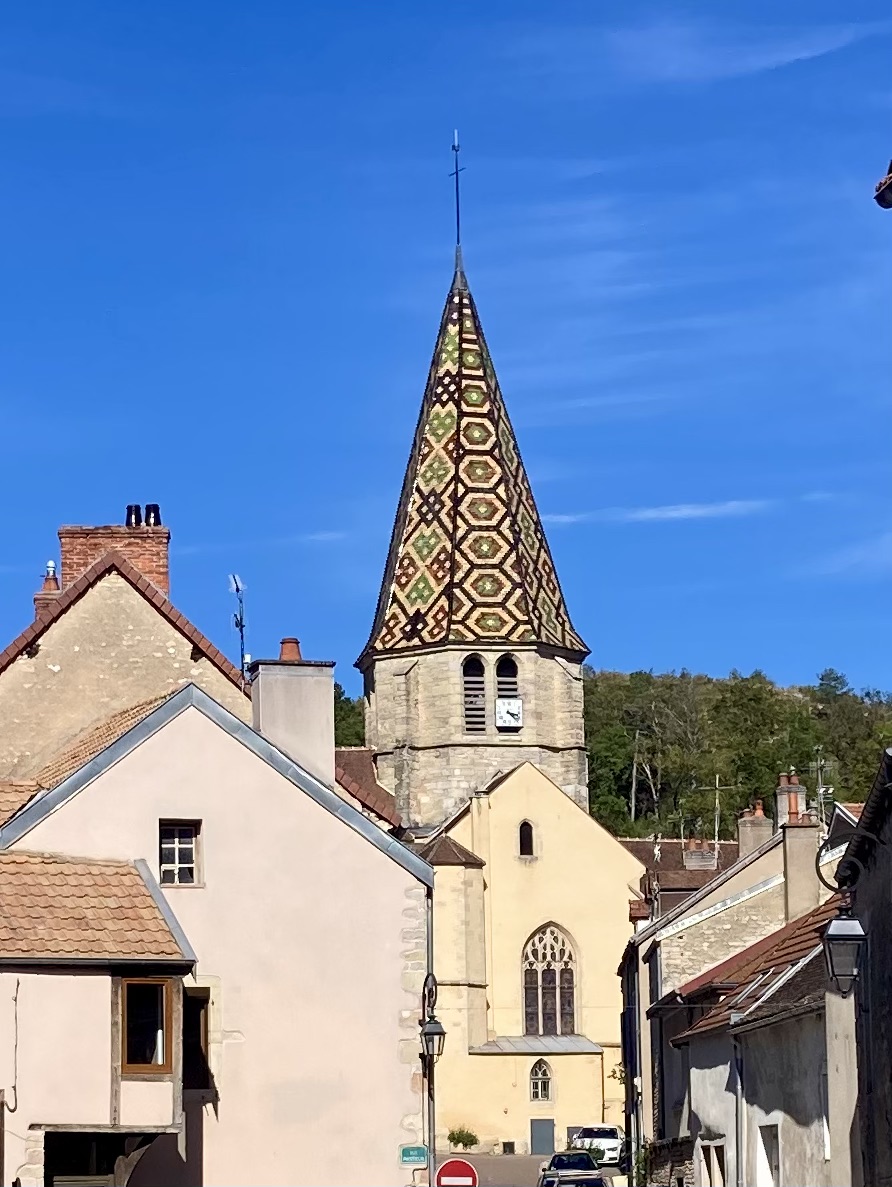
Various tributaries of the Ouche run through Plombières. If you take the time to walk away from the main road that passes through the newer part of town and go down into the older streets you will find lots of picturesque corners. Here are a few, including the inevitable lavoir!
But we didn’t find anywhere to eat that evening, probably because it was a Monday, frequently a day that shops and restaurants close in France. Never mind – we have Dijon to come!
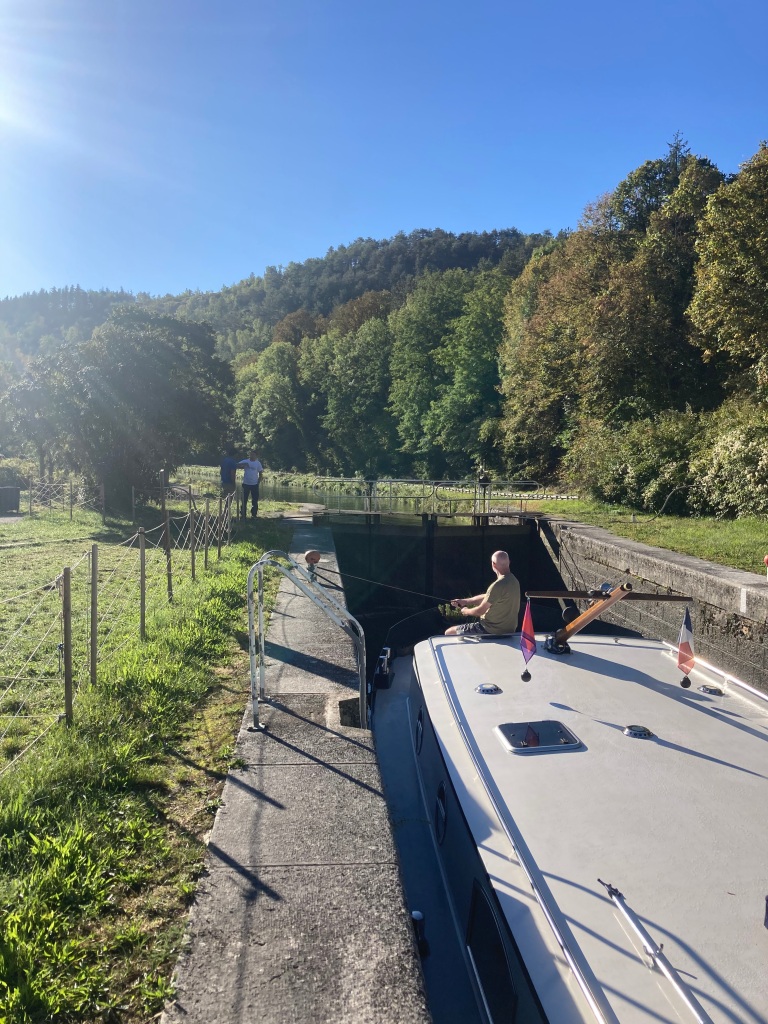
It’s just 5 kms into Dijon from Plombières. We set off at around 9am as usual in order to get plenty of time in the city.
There are only 5 locks to go through as well, so a gentle cruising day for all.
Even easy on the éclusier at this lock, 51S. You can just see him in the shade with automatic controls to operate the lock.
Dijon
In 2016 when we passed through Dijon we had heard that it could be a bit rough and noisy down by the canal. This put us off and we didn’t stop. Since then we had heard lots of good things about the area being tidied up and we planned to see for ourselves.
I am so glad that we did!
There is a small marina with finger pontoons for smaller craft and a lovely long quay with bournes for electricity and water for barges. If you don’t need these utilities it appears to be free to moor there, in pleasant park like surroundings.
Yes, you do get quite a lot of passers-by in the day time. People like to walk by a canal. But it was quiet at night and we would definitely return again – it’s such a nice city.
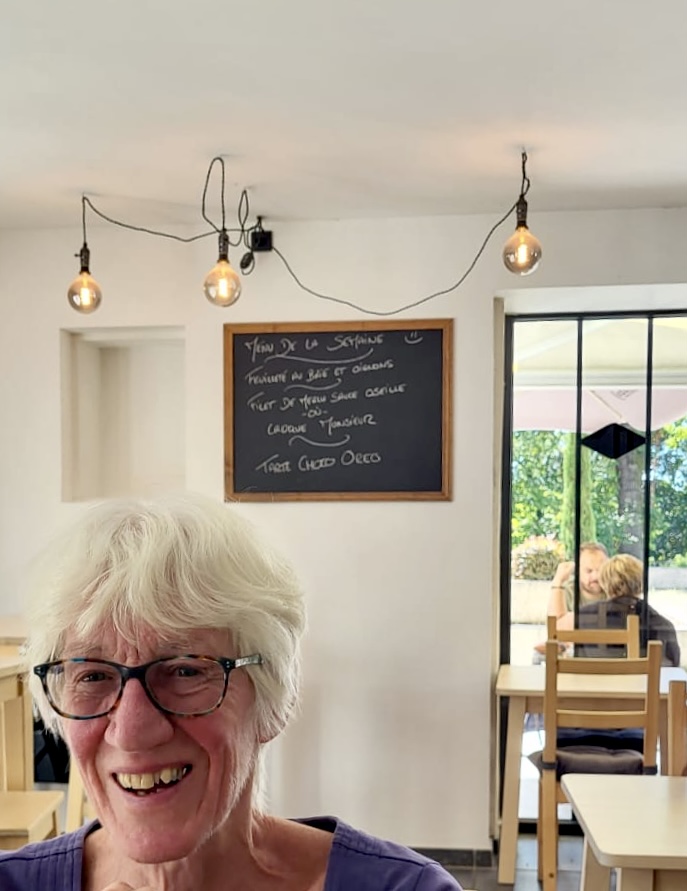
the journey from Plombières was so short that we arrived in time to moor up and look on line for a local restaurant with a menu du jour at a good price.
Within an hour we were enjoying a good meal nearby.
Then we were off for the first of several explorations around Dijon – some including food and drink and others not.
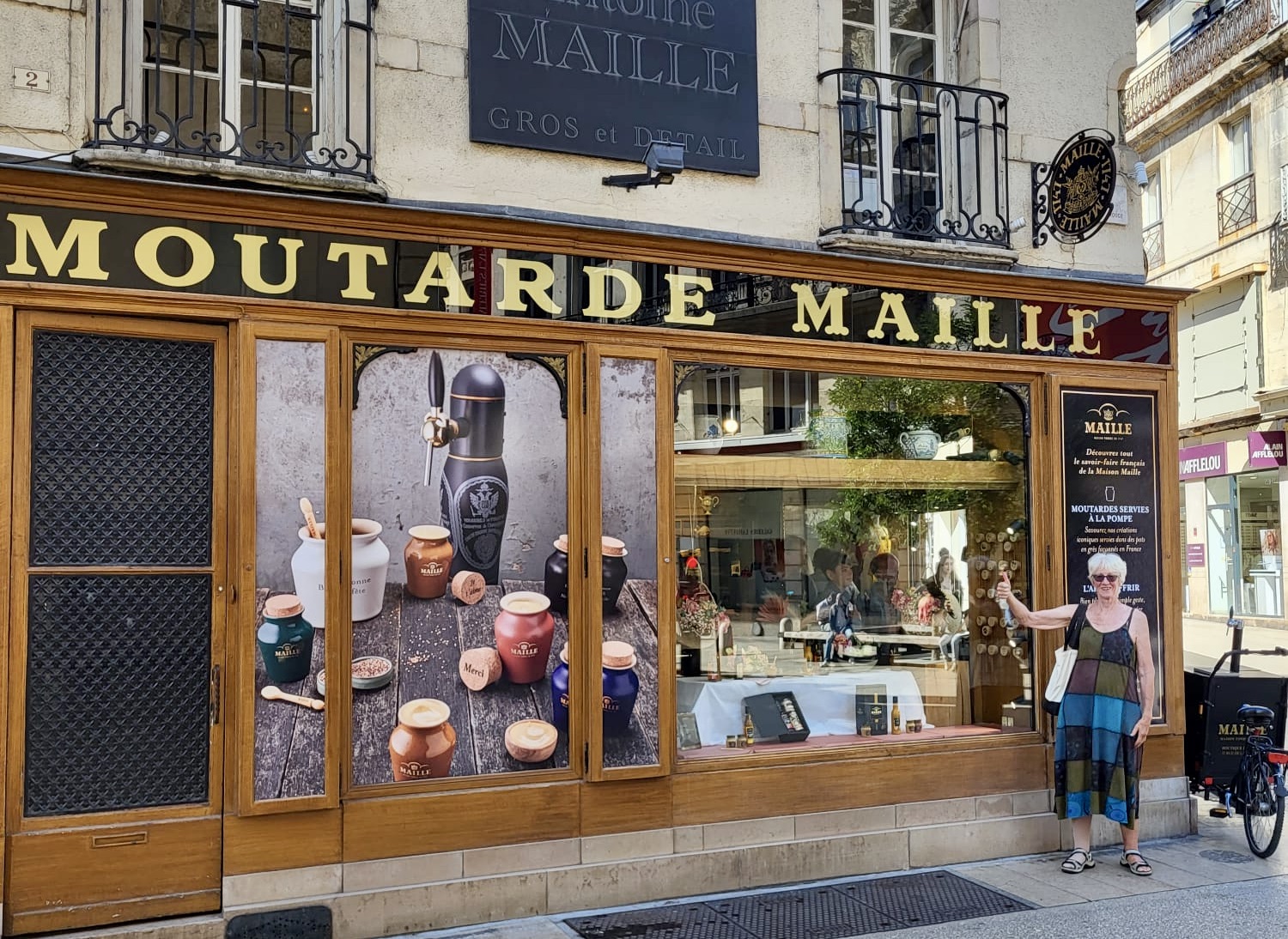
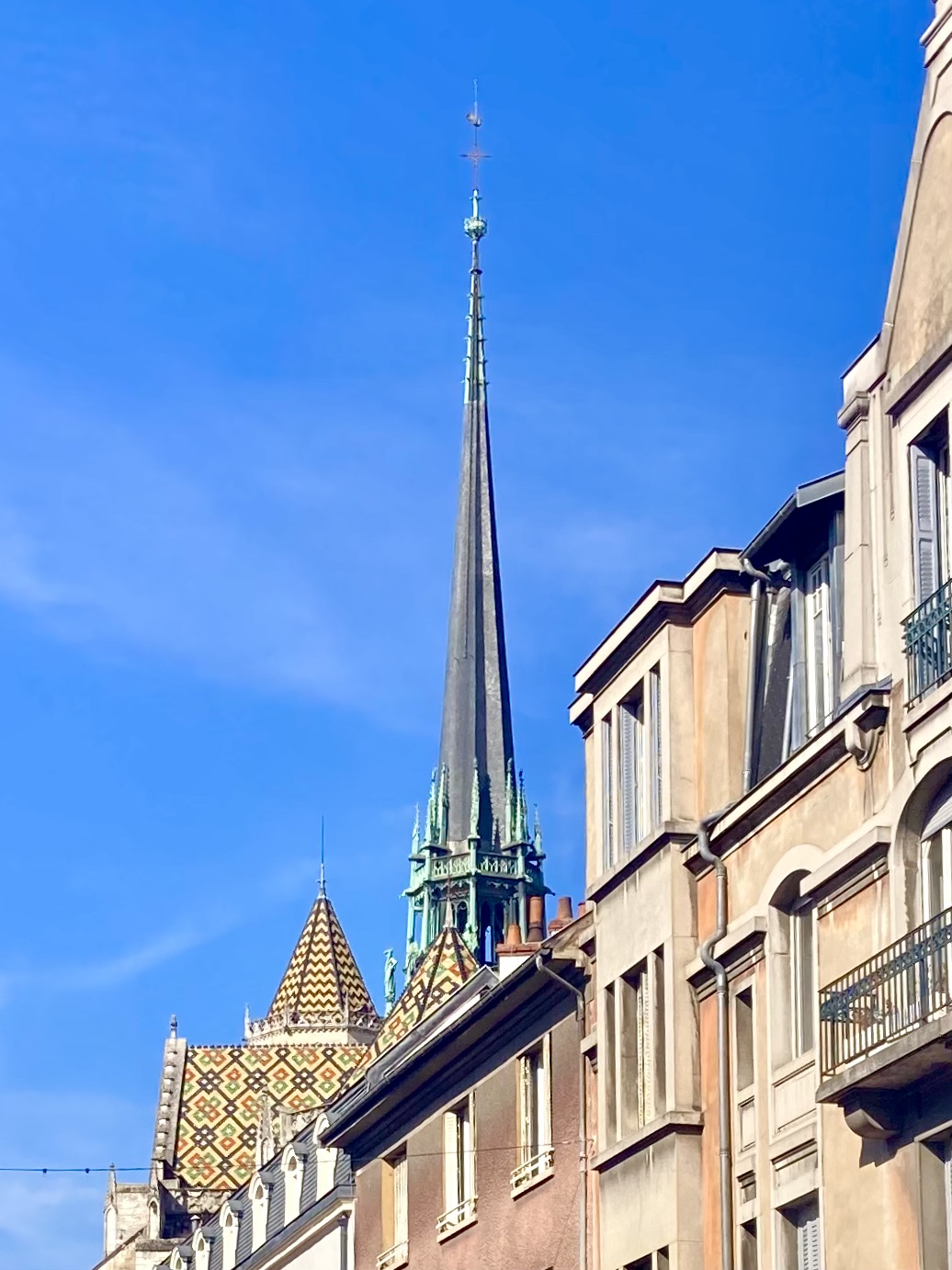
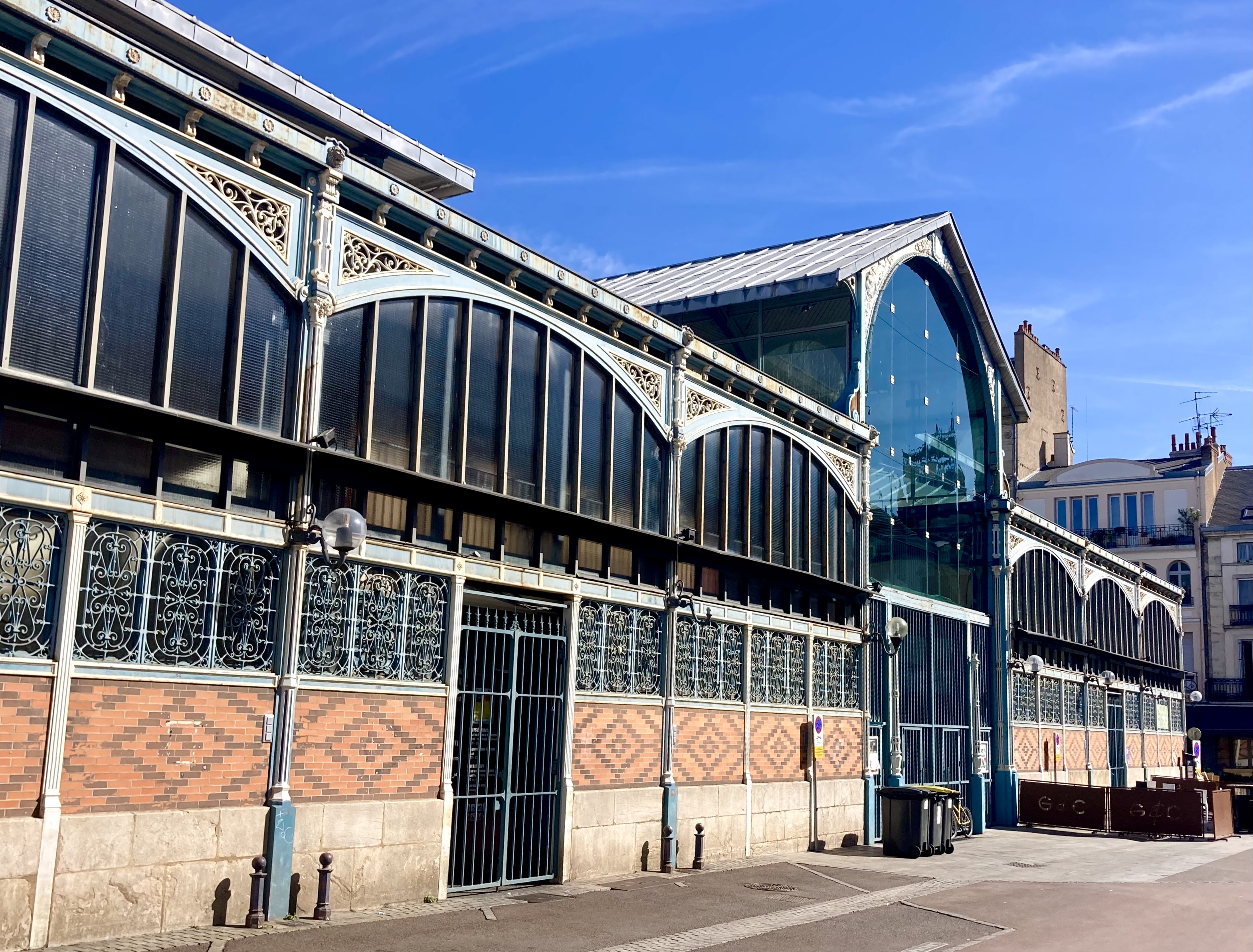
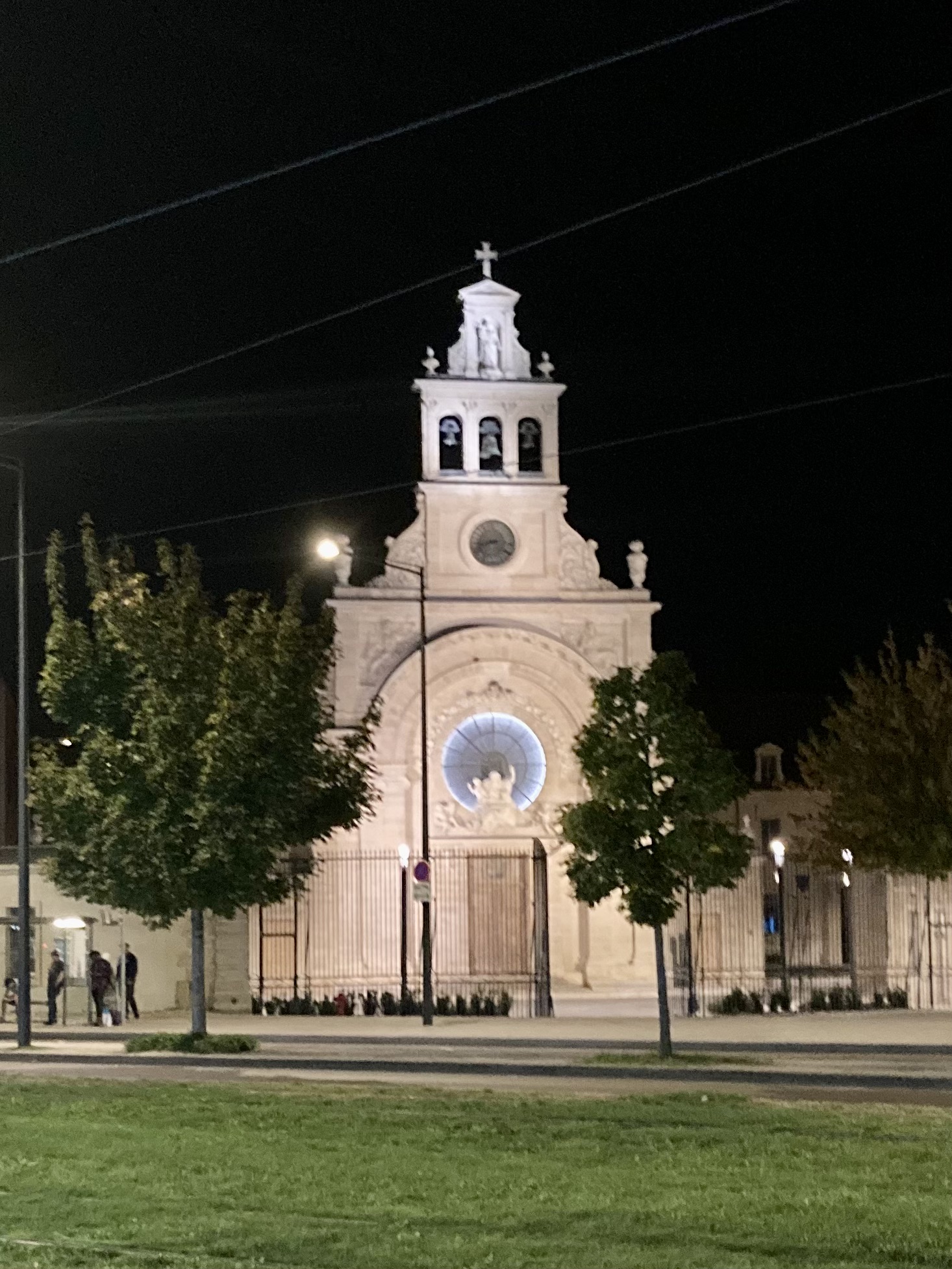
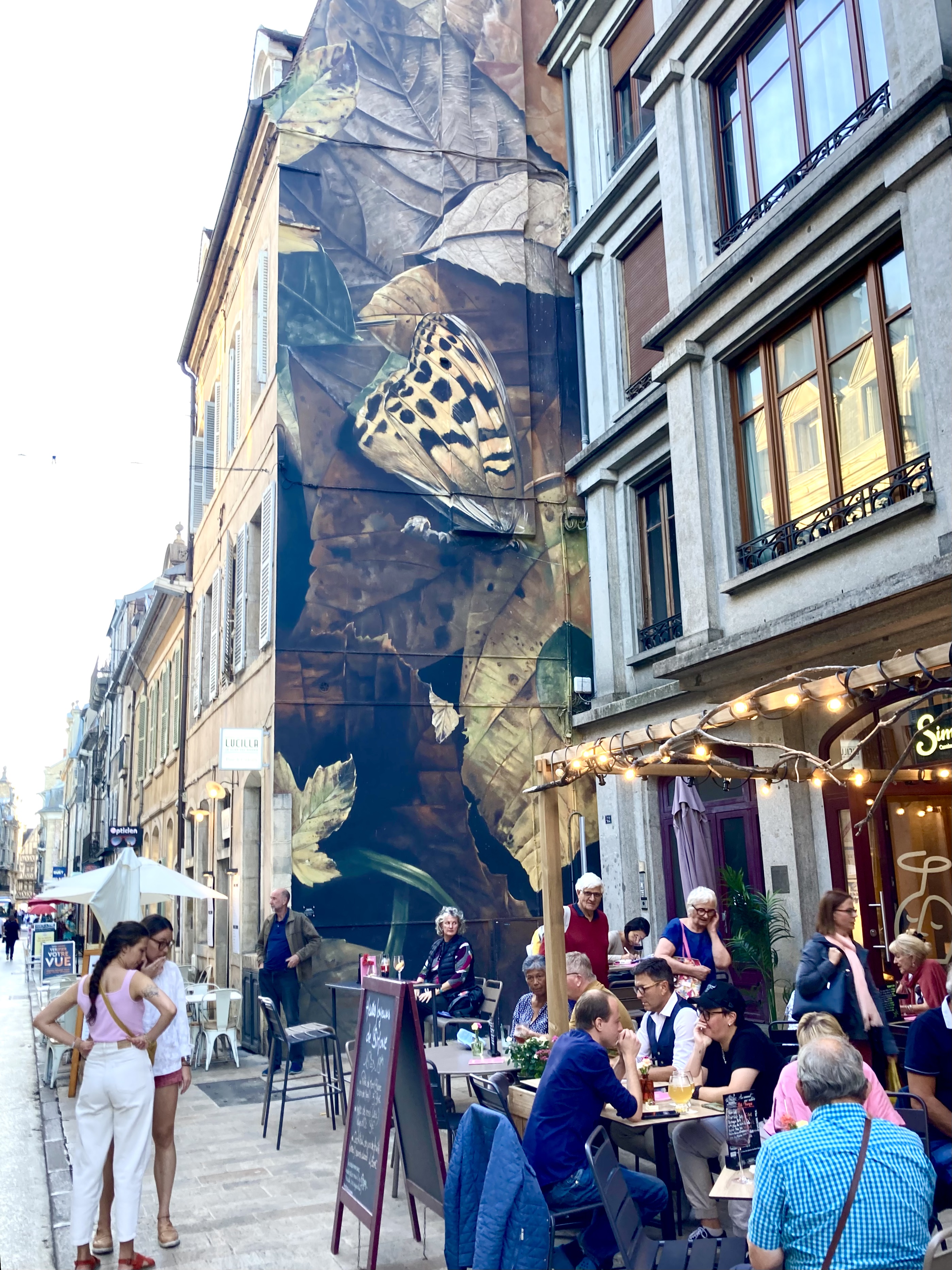
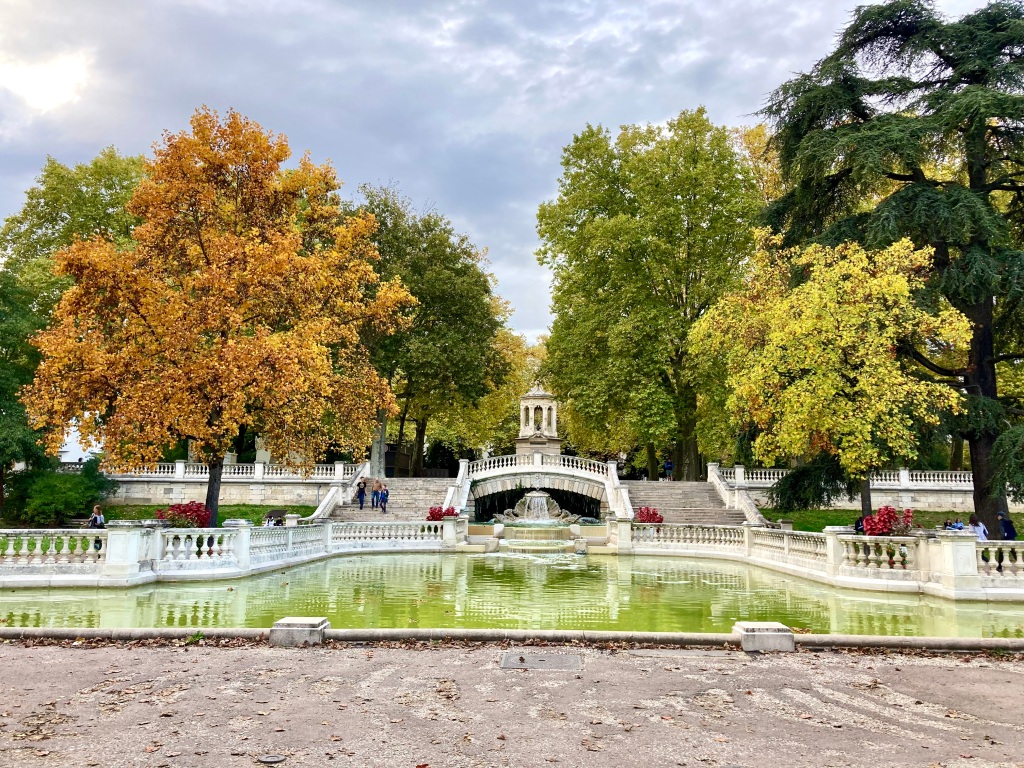
If you have visited Dijon you will know that I have not done justice to this city with these few photos; it gives just a little flavour of the place. I’ve started with the famous Maille Moutarde (mustard) shop – set up these days for the tourists, but an experience nonetheless. Then a couple of the many beautiful spires and churches, Les Halles, (indoor fresh produce market), an example of the busy side streets, and the beautiful Jardin Darcy.
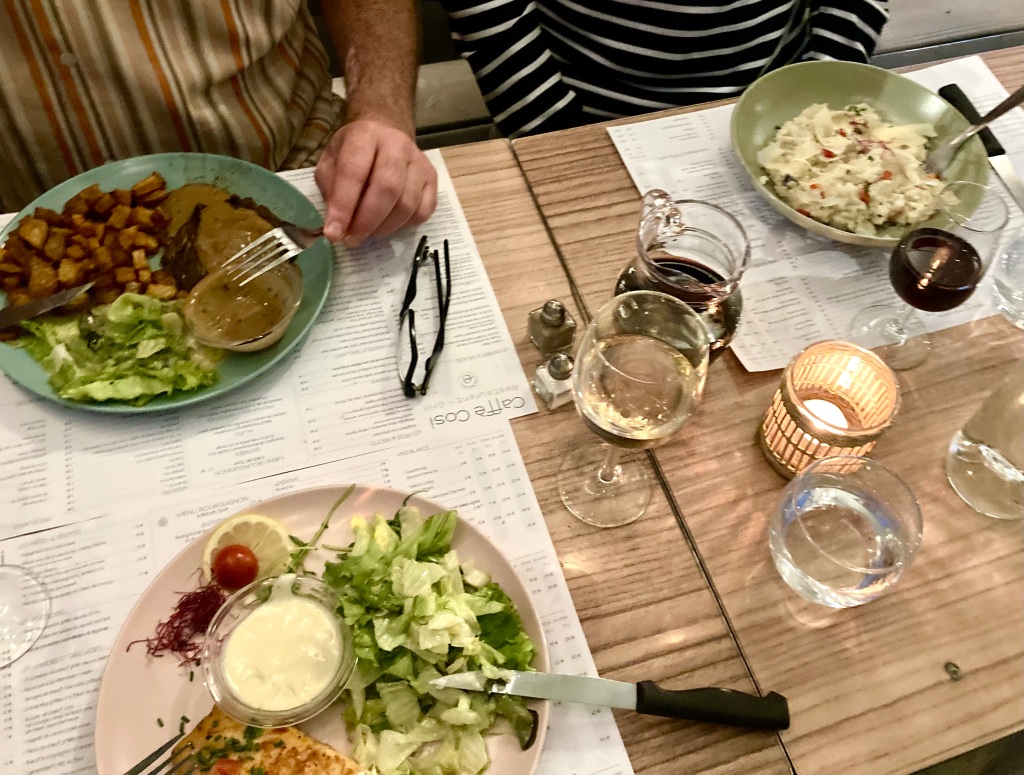
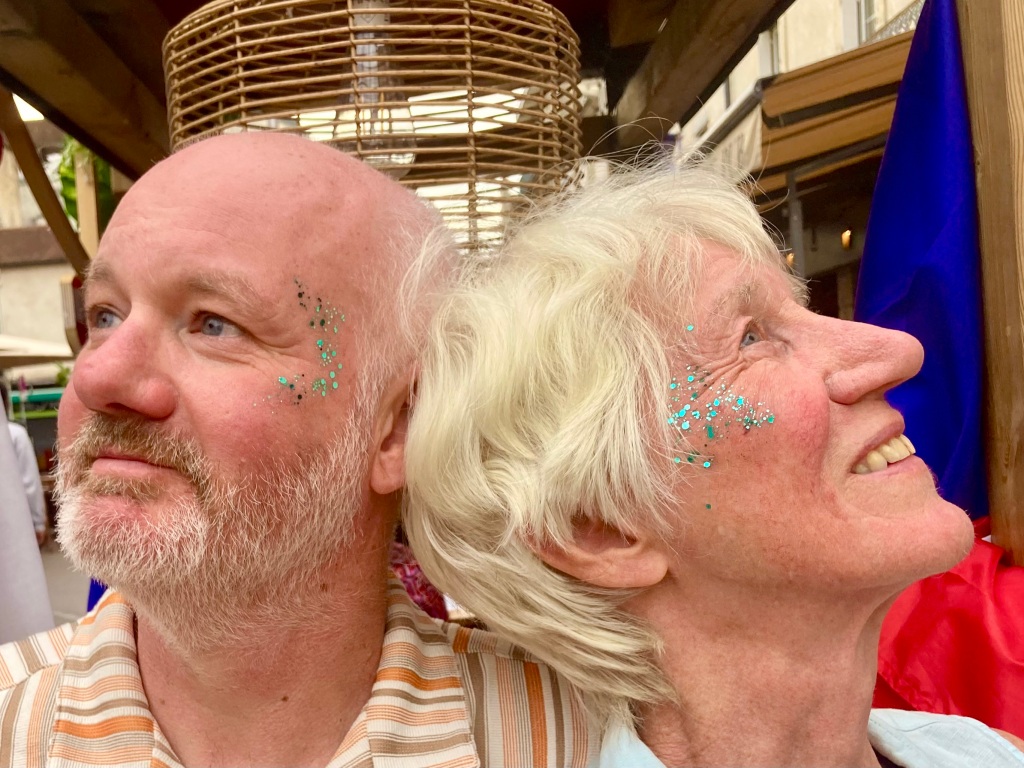
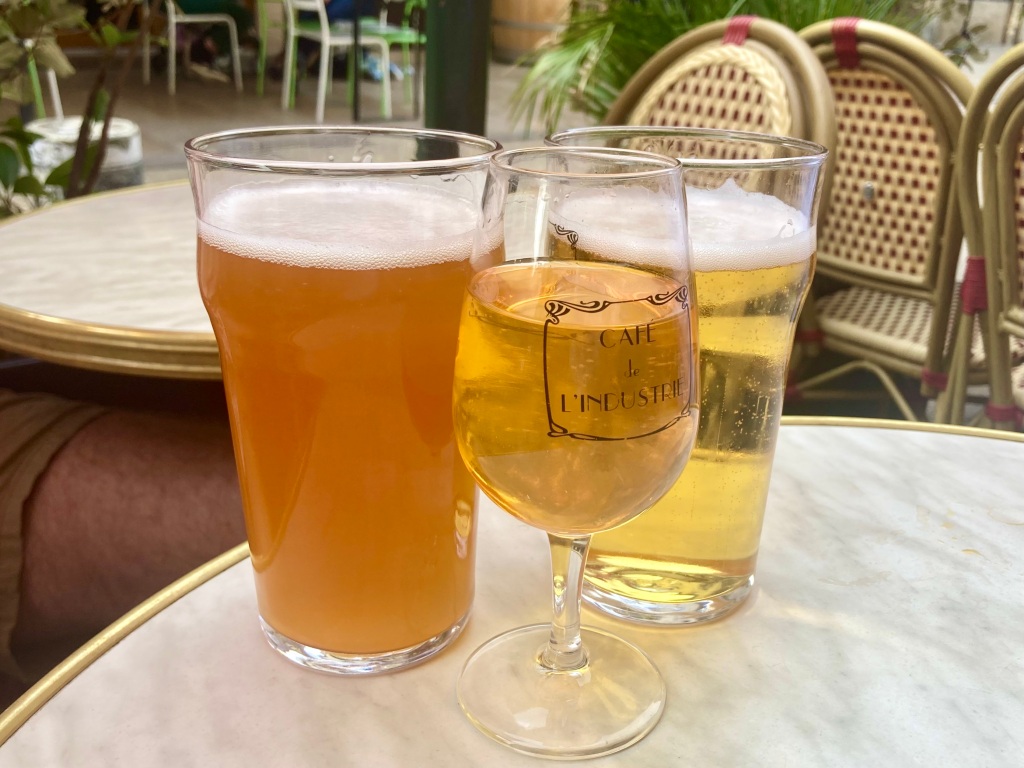
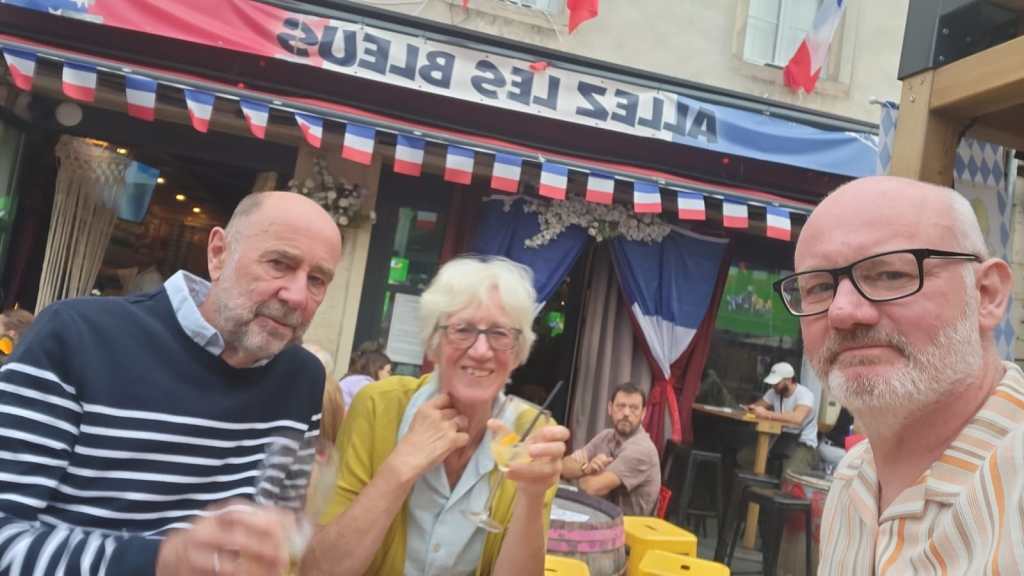
But when you are with friends or family it is the social side of the visit that you remember most. The centre is thriving, with an abundance of bars and restaurants. We only had time over our two days to try a few!
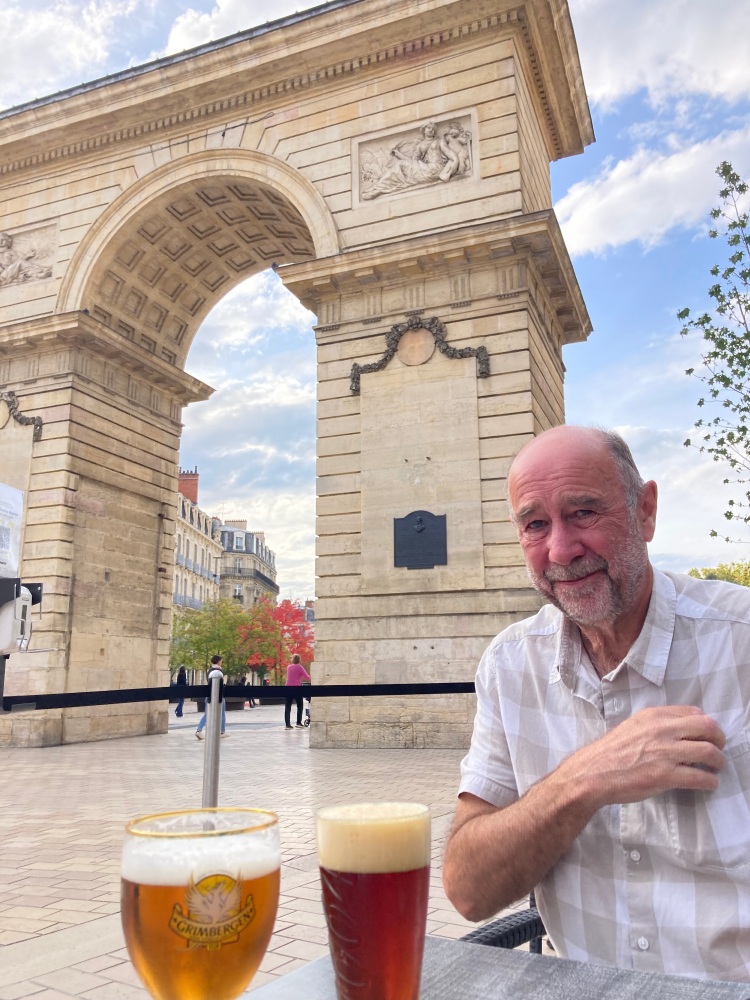
But I think you can tell that we had fun!
With Ashley leaving us at about 0630 on the last morning we decided that we might as well continue down towards our hivernage (winter mooring) at the bottom of the canal. It is possible to get all the way there in one day, but in our usual spirit of gentle slow cruising we chose to stop part way down for a night.
That would also allow us to pick up a new friend who was keen to have a day on Calliope, going through locks. She could get a bus from Saint Usage up to Breteniere to meet us the next morning.
Stu set off at the wheel and I walked the two hundred yards from the mooring to the lock at the end of Dijon basin, allowing me to get a photo of Calliope’s approach.
Leaving the lock is not as scenic; you have to pass under the dual carriageway that is rushing people into Dijon – and it is not much wider than the lock! Captain Stu saw us through.
Three locks and 4 kms further brought us to the pretty little lock at Longvic. Two lines of autumn crocuses suggest an old pathway from the door to the lock gate.
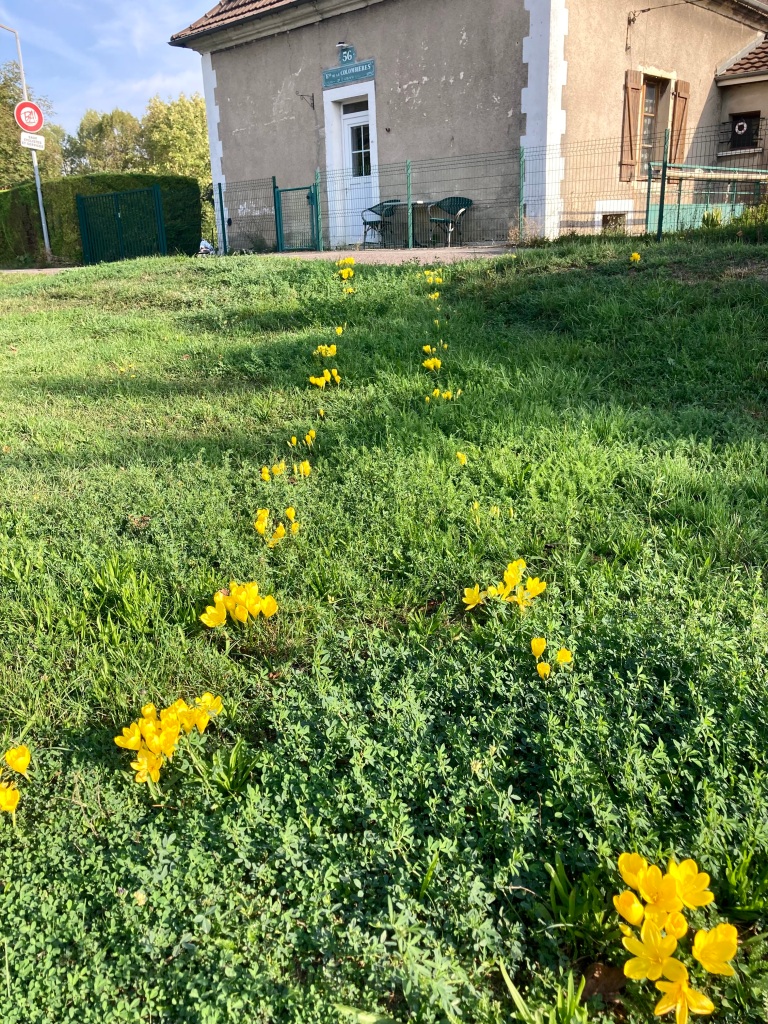
After all the hills and valleys we had been moving through the landscape seemed very different here.
Long views across wide plains pushed the skies to the furthest point – its no wonder that Dijon airport is on this flatland!
Breteniere
By 2pm we had traversed 10 locks and 10 kilometres – all in four and a half hours, including an hour lunch beak.

Now we could moor up for our last night out of the summer.
It’s always a bit of a bittersweet moment.
A last afternoon stroll down one side of the canal , across a bridge and back up the other , creating an elongated circular walk.
Then ….
And later allow the moon to take over the light show, washing through the trees, down the canal, and silvering Calliope from end to end.
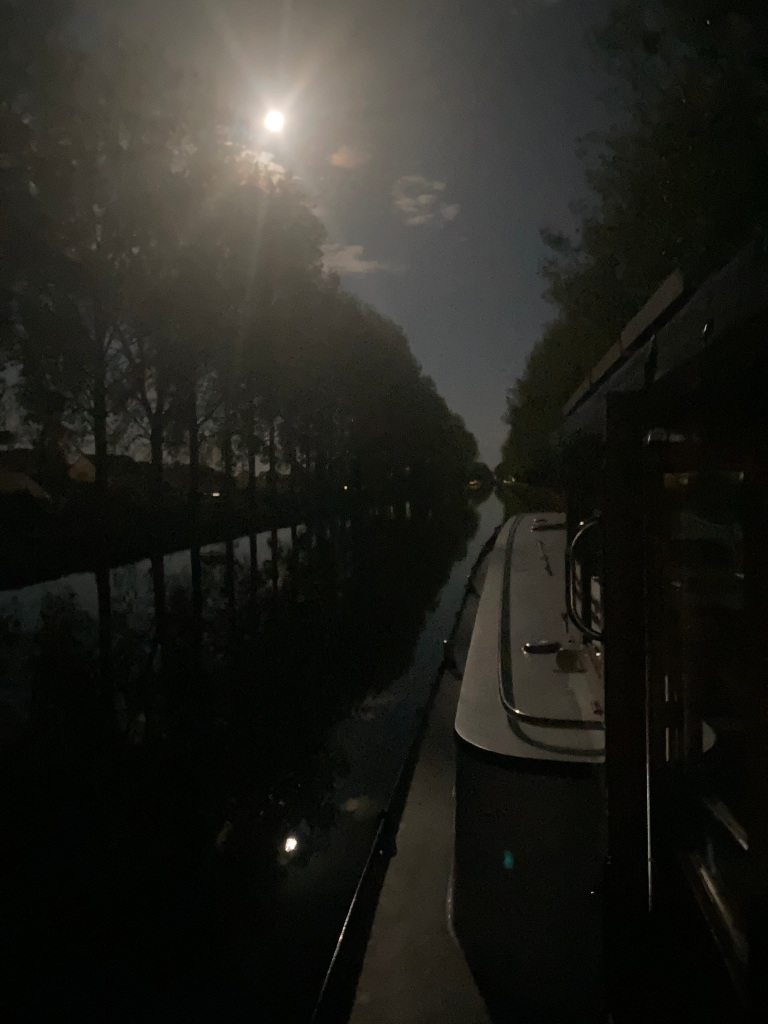
Good night Calliope.
In the morning the canal was centre stage again. I walked down to meet our friend from the bus stop, and then together we visited the local supermarket to choose food for lunch.
We reported back to the Captain in time for coffee and croissants before casting off and starting the final leg of the season, down to Saint Usage.
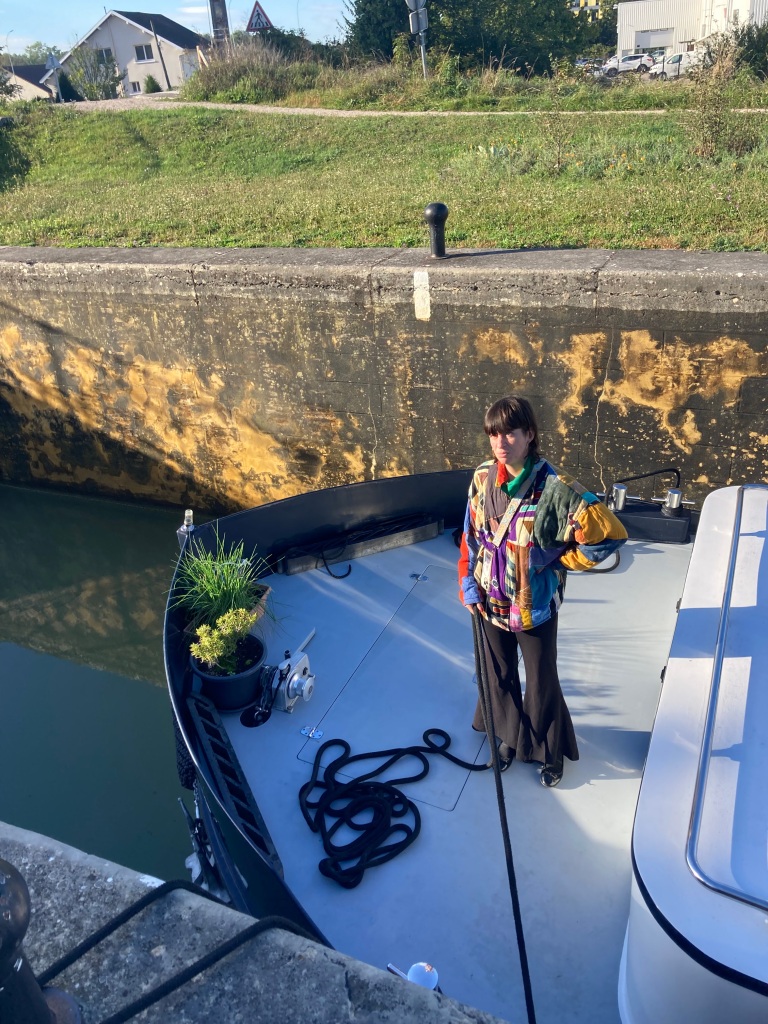
New crew quickly proved her competence, with quite a bit of boating experience already.
With her on the bow rope I was able to help the èclusier with the gates, take photos, make tea, and generally have a day off!
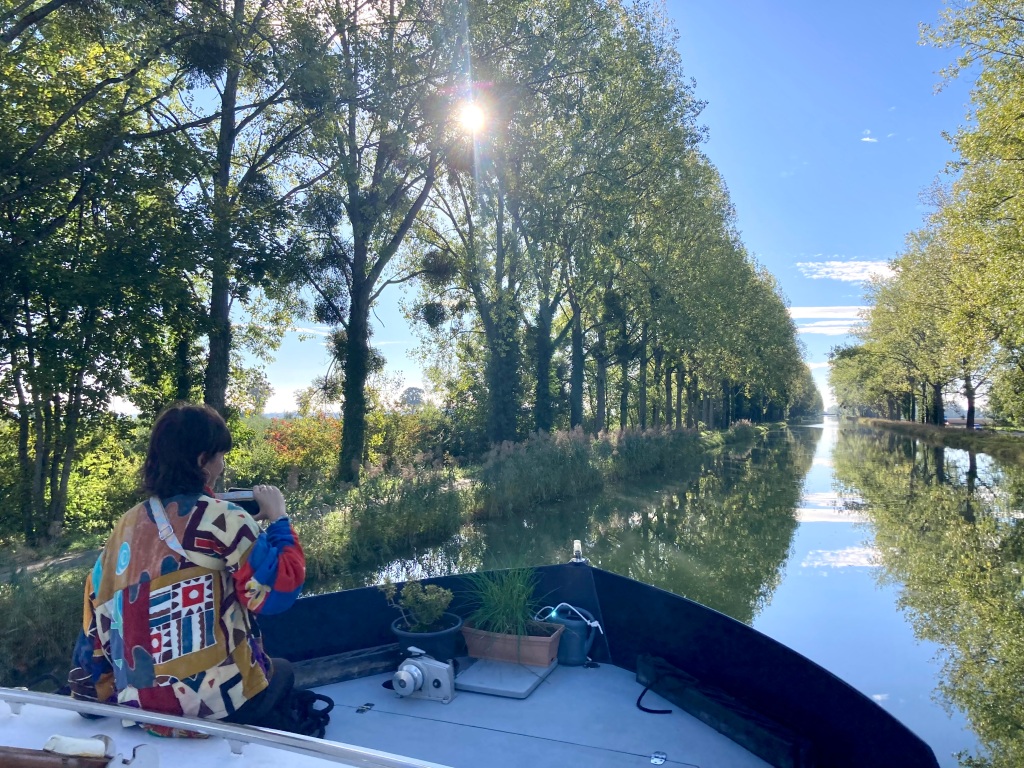
You have probably noticed how straight the canal is in this area.
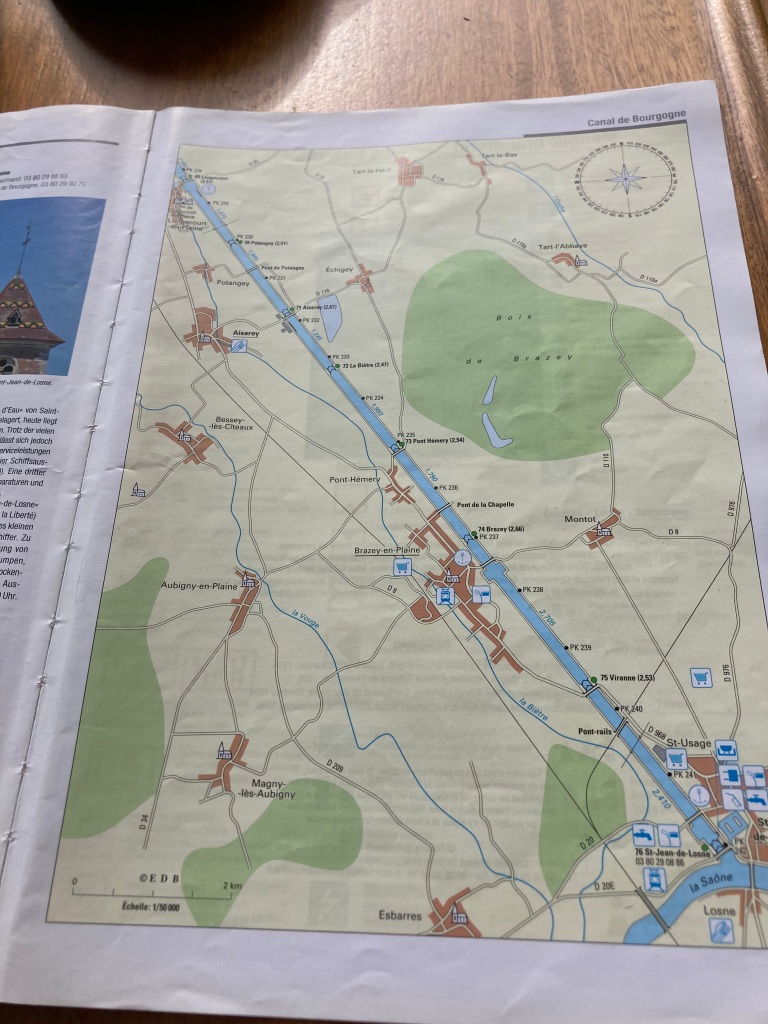
These flat plains allowed the waterway to be cut directly from the Saône at Saint Jean to Losne through to Dijon. No need to deviate round mountains here, though we are still dropping down this ultra wide valley – an additional xxx
The map says it all.
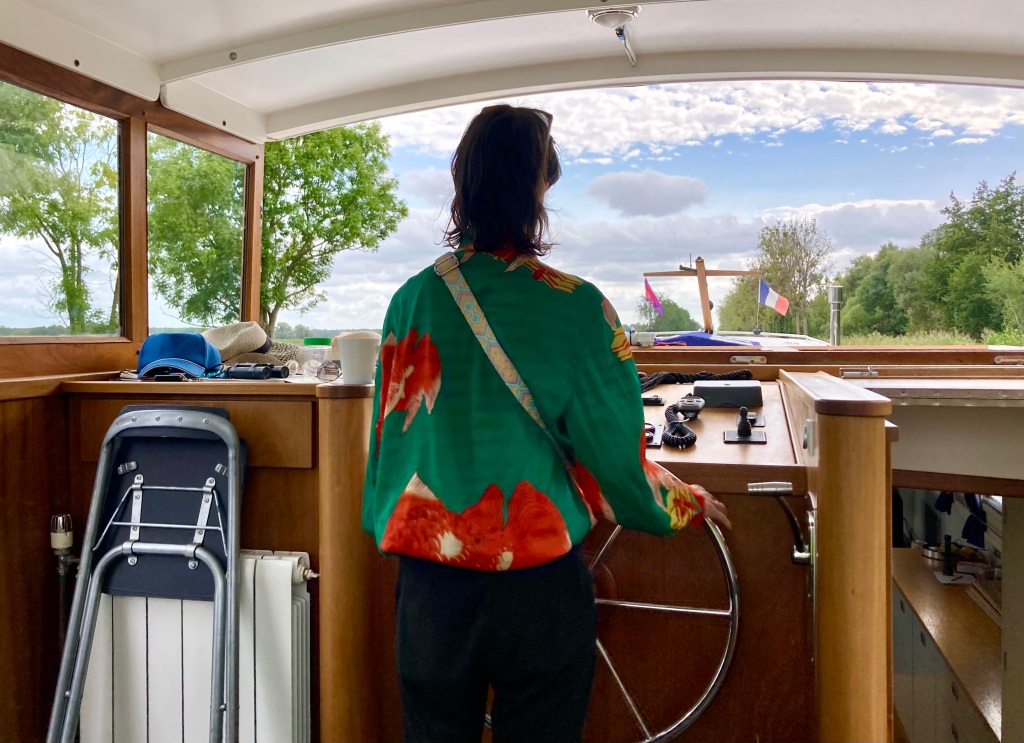
It is so straight that even I might have been allowed to steer (joke!). It was certainly a good area to get the feel of driving Calliope. But even this unswerving line requires concentration. Changes of depth can cause a pull on the barge to one side or the other.
Such a lovely clear view on days like this when we put the front windscreen down.
Virtually all lock houses, where the éclusiers used to live, are old and traditional. So number 67 came as a bit of a surprise.
I am not sure if it a complete rebuild, or a clever wrap-round of the original house.
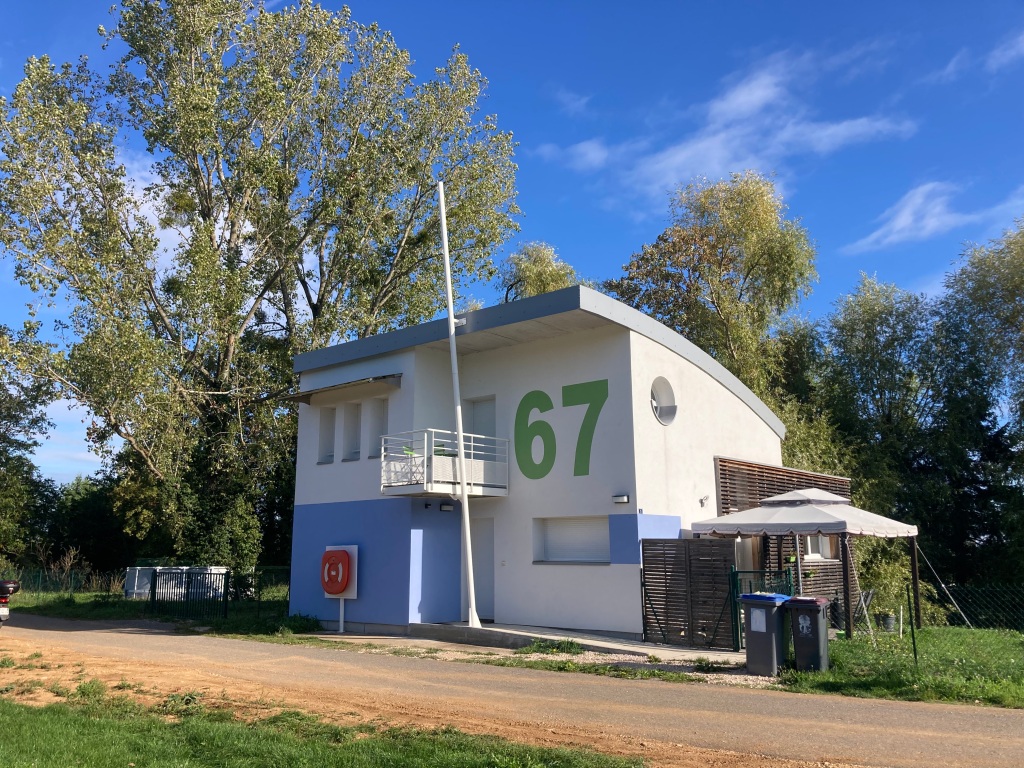
I rather like it, especially the colour, almost matching the sky.
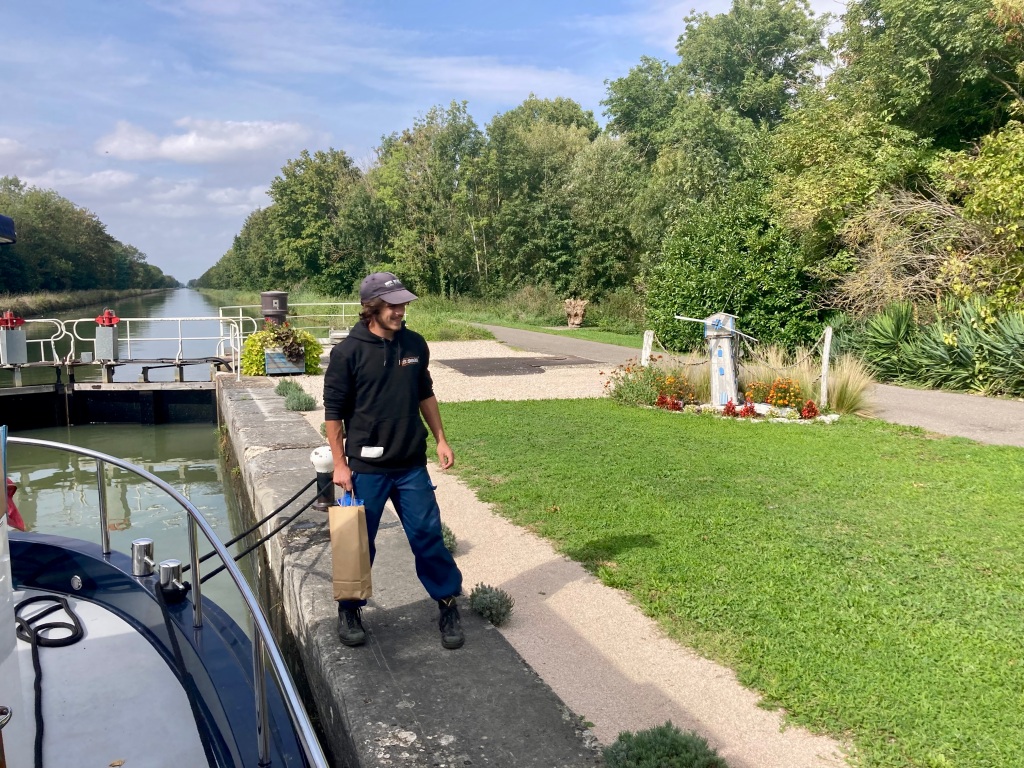
Four and a half cruising hours since coffee and croissants and we reached the last lock of the day, in fact the last lock of the season.
We had a small bag of beer and wine to give our final éclusier pair, who turned out to be a pair out of work as well. Thank you for seeing us through almost to the end of our journey.
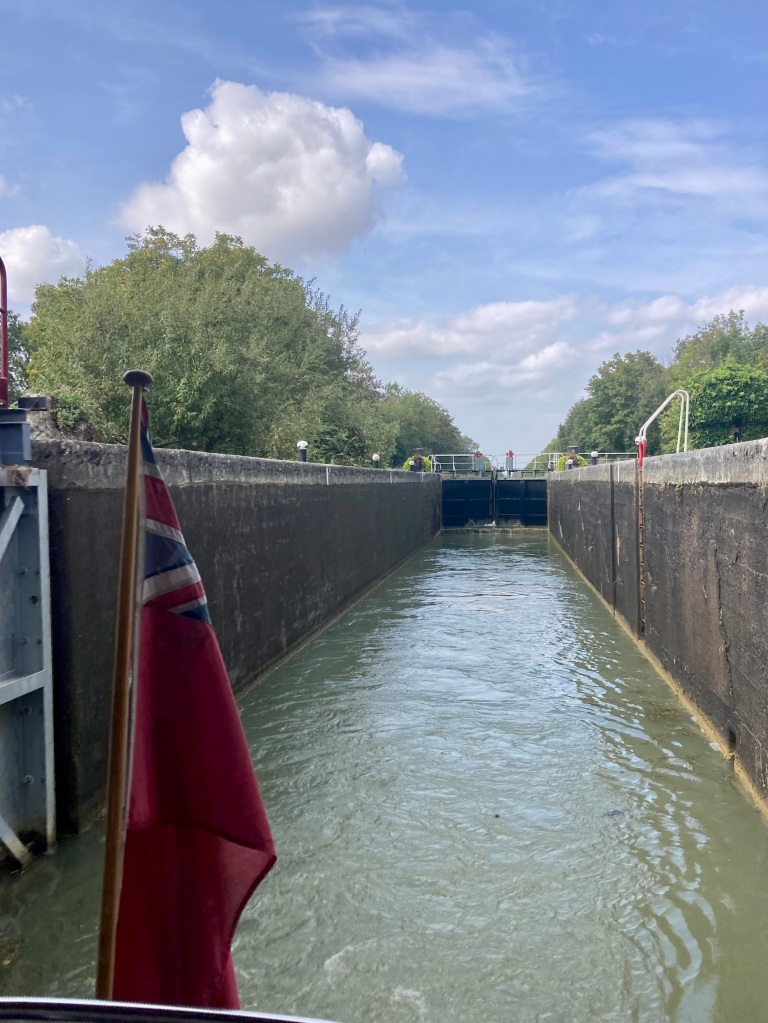
Here we are moving out of that last lock.
The red ensign looks a little drab and sad, but I think it is a shadow, not the emotion of the moment!
Now just a 20 minutes direct waterway to our terminus – our haven for the six winter months.
Saint Usage
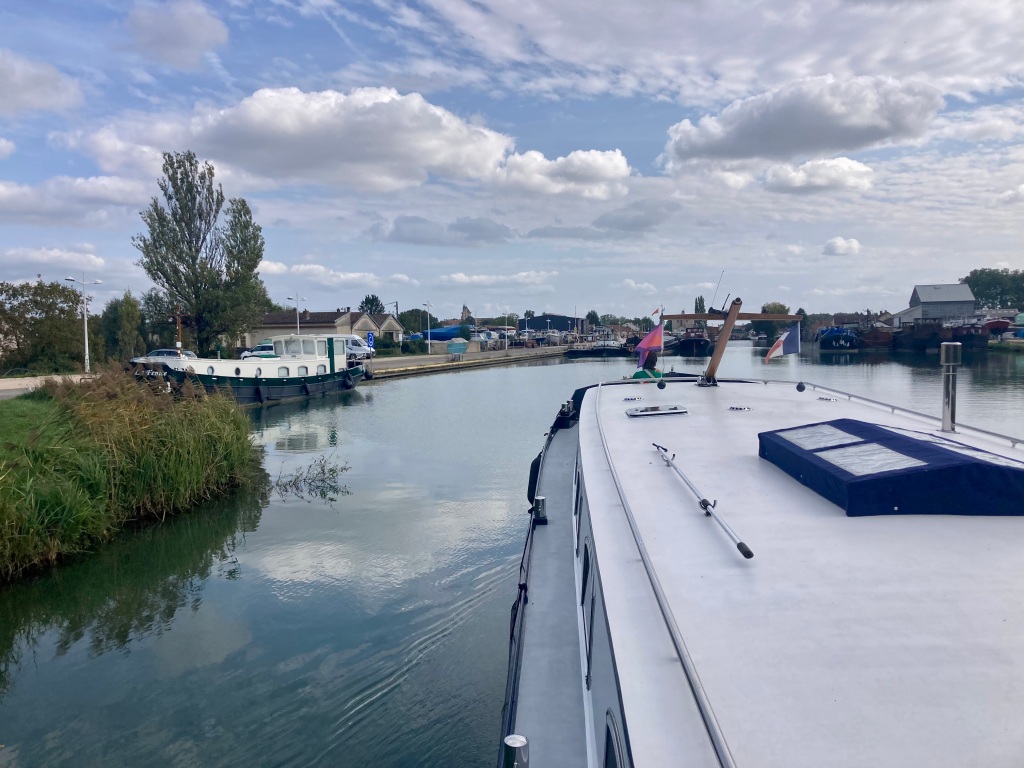
As we came under the bridge at Saint Usage we could see our place on the quay, behind La Fenice, another Piper barge. The quay is across the road from Piper’s French HQ – a great place to be both for meeting friends and for advice if and when it is needed.

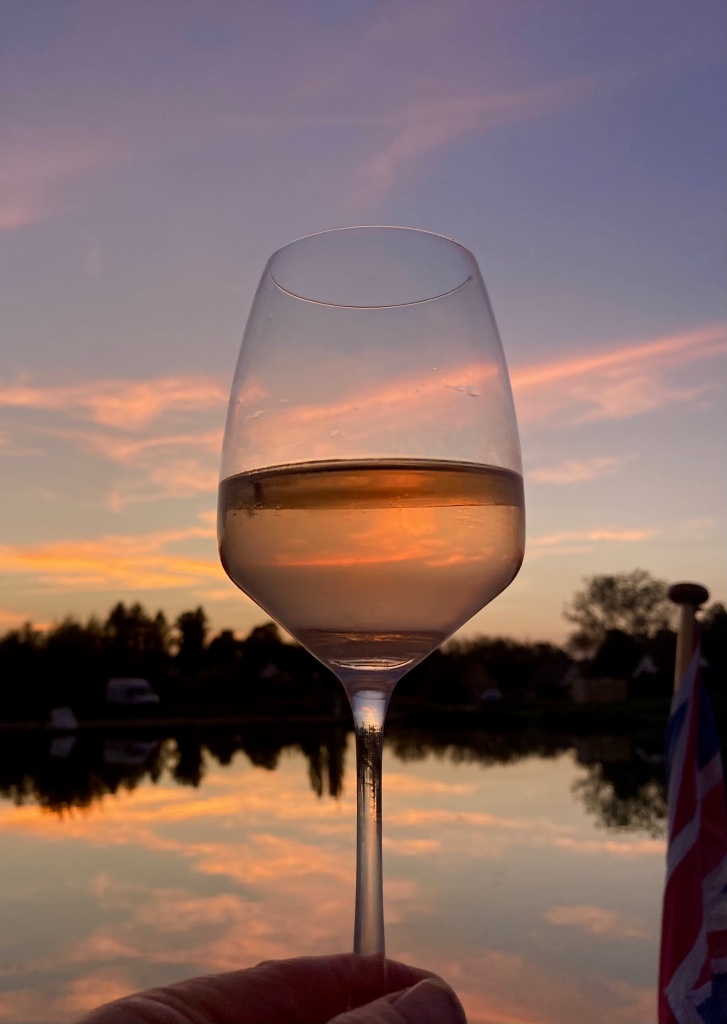
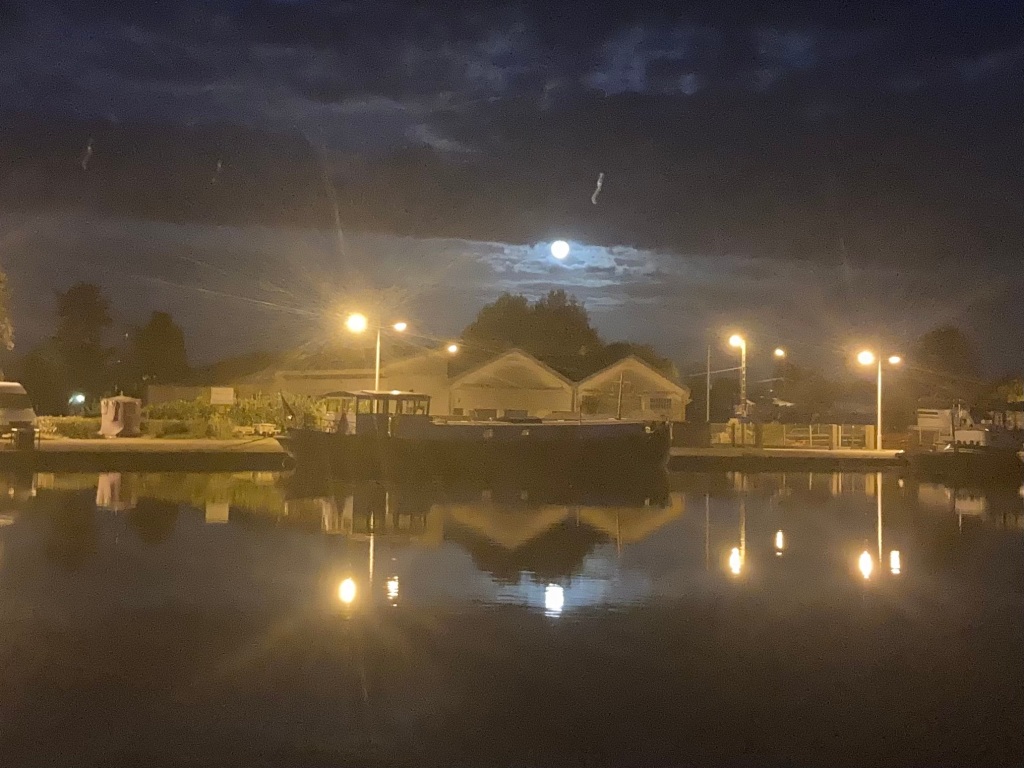
So that’s it. Another fabulous, happy, sometimes challenging, but always manageable, season. A couple of days to put Calliope to bed for the winter and we will be back to the UK until 2024. 😁
By the way, to really get to know the canal the best thing is to cruise it yourself; or for a sofa option, look at this quite detailed and readable website.
5th to 16th September 2023
After some lovely summer months coming vaguely north west on the Canals Centre, Loire, Briare and Loing, then on the river Yonne to Auxerre, it was time to head southwards to our winter mooring at Saint Usage.
Saint Usage is at the bottom of the Canal de Bourgogne where it joins the Sâone – normally a lovely cruise through the countryside. But this summer had been very dry and several canals had already closed due to lack of water. We carefully watched all the VNF Avis (notices from the French Waterways Authority). Despite lower than normal water levels on the Bourgogne we, with our 0.9m draft, could still get through. Hooray!
Of course it wouldn’t be the end of the world if we could not go to Saint Usage – plenty of alternative winter moorings to be had. But nice to know we could complete our planned 2023 cruising loop.
Calliope had been in Auxerre for a few weeks while we made a short trip back to the UK. On September 3 we back and ready to set off, giving ourselves two final nights on the Yonne river before arriving at the lock from the Yonne to the start of Canal de Bourgogne, at Migennes.
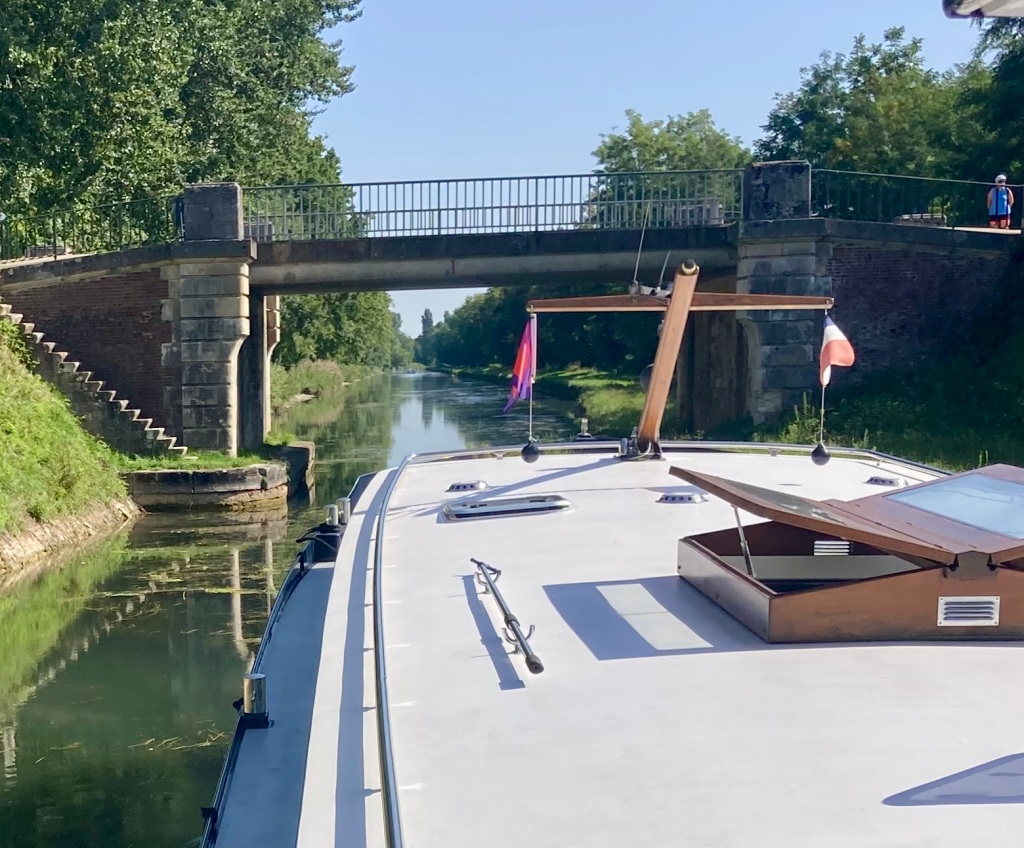
The sun continued to blaze down from its cloudless azure sky and we were pleased of the breeze flowing through the wheelhouse with the windscreen down and back doors open.
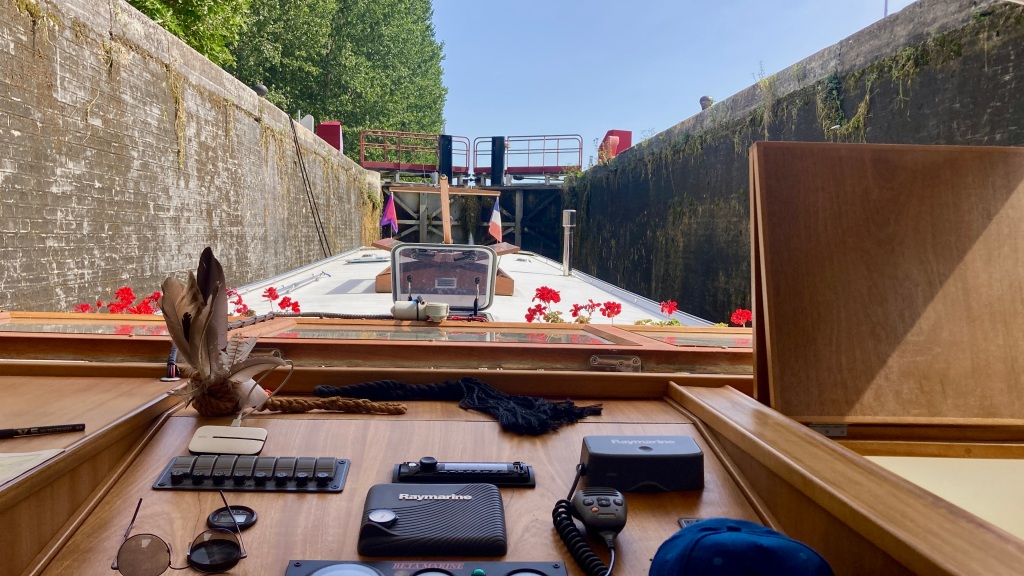
It was also nice at the bottom of each lock, in partial shade and with water pouring in! We had just three locks on our first day, taking us to Brienon for our first night.
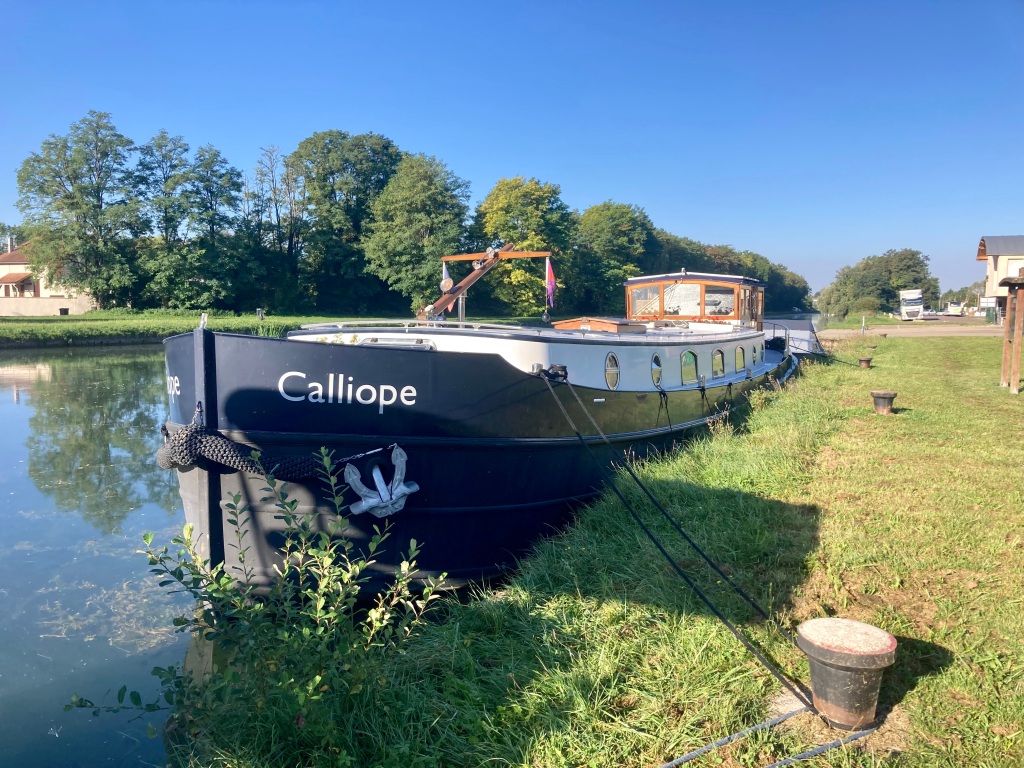
Although it was a relatively expensive place to stop (€19) there was a nice long grassy mooring at Brienon – with good strong bollards to tie up to!
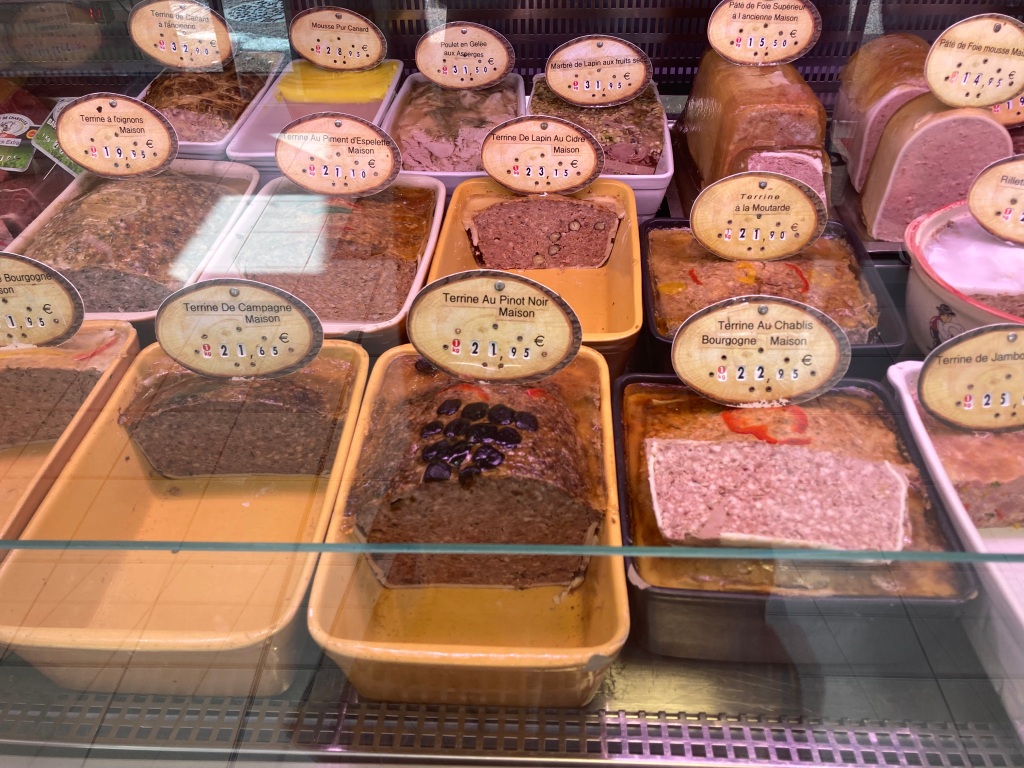
And across the road were a supermarket, a pizza kiosk, and a really good butcher with so many ‘Maison’ made patés etc!
We gave trade to all three.
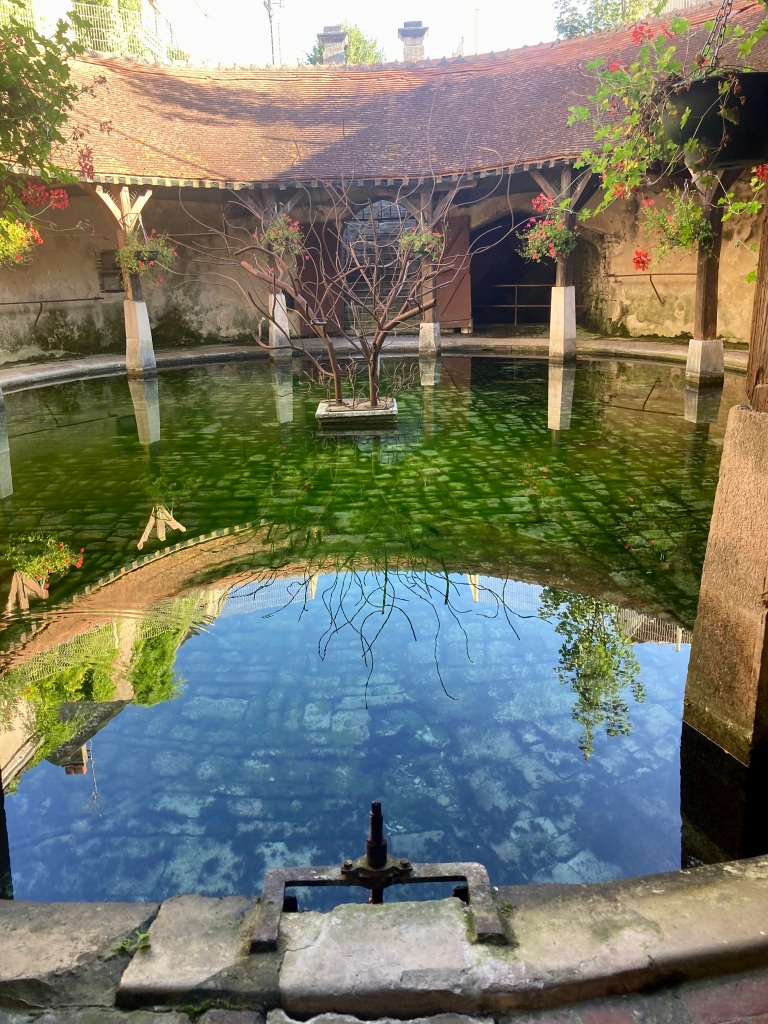
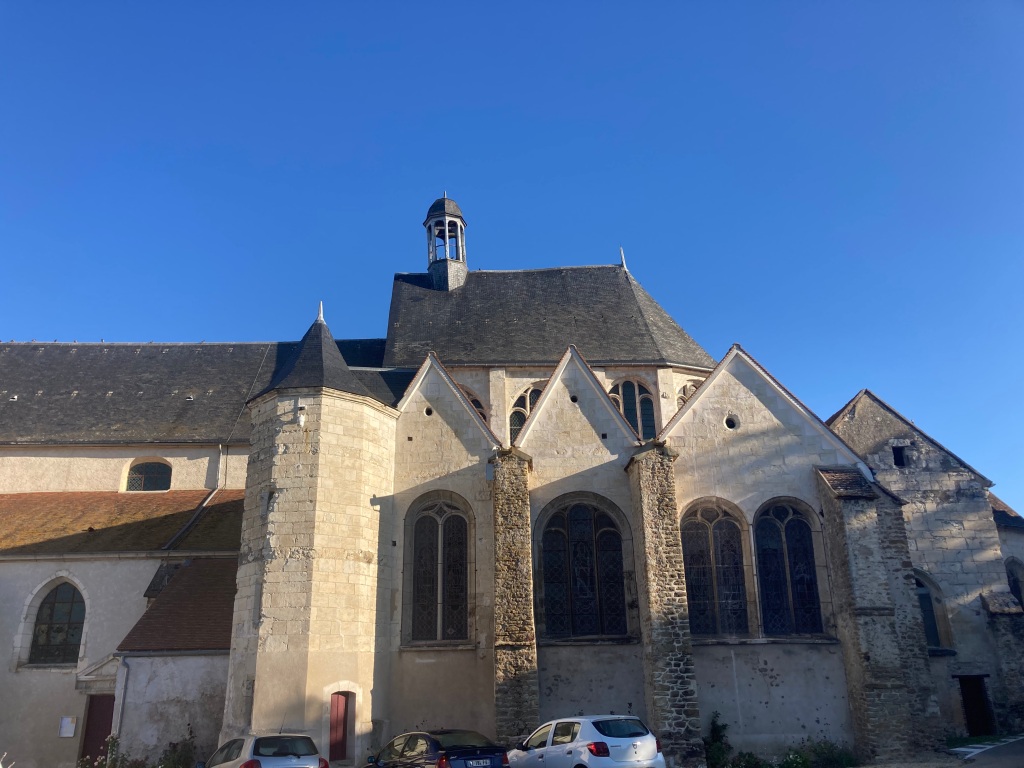
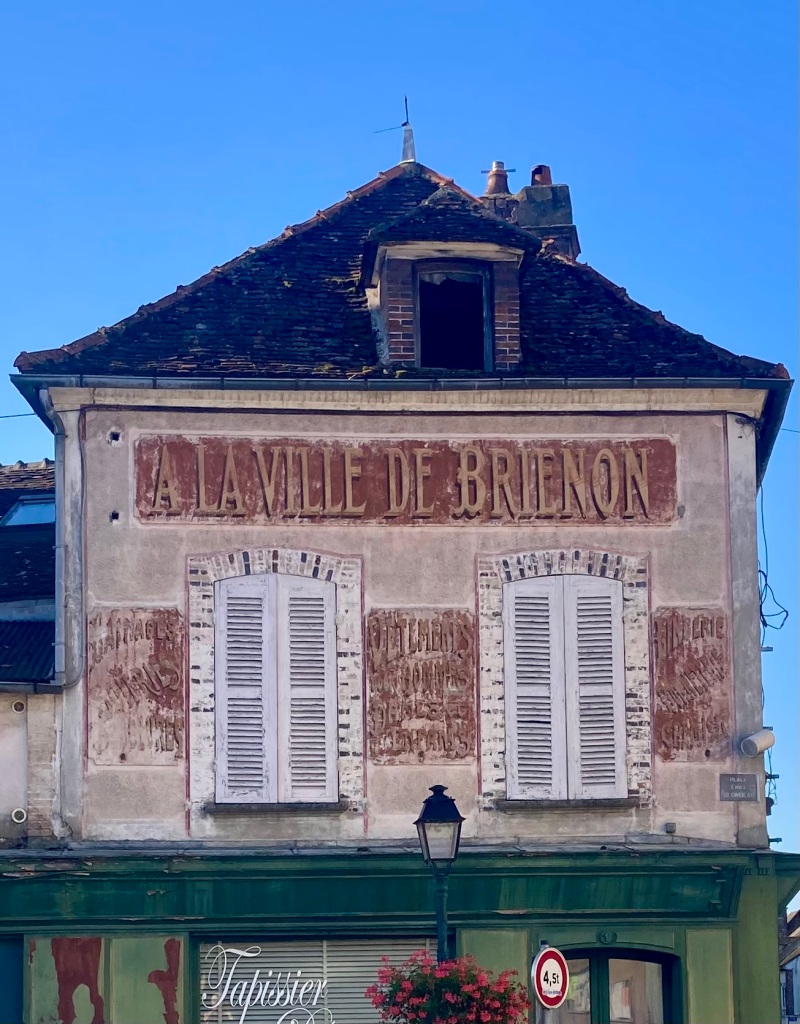
Next morning before leaving we went to buy bread, find an ATM, and for me to see quite a famous and lovely oval lavoir – so reflective at that time of day.
That allowed us to discover an interesting church and several characterful buildings that we might otherwise have missed. Always worth a walk away from the canal.
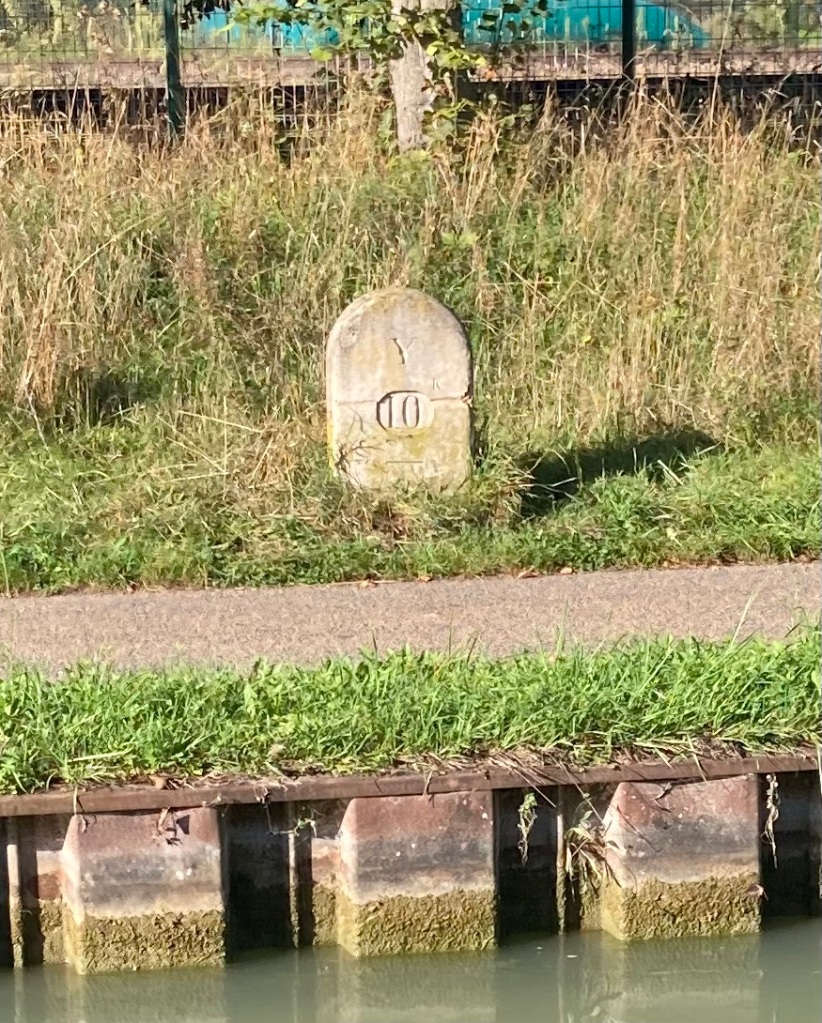
By 0930 we were on our way, soon passing by the marker showing 10km from Migennes and our start on the canal.
Our aim was a saunter through the canal – not much more than 10kms per day – but this was to change. over there next few days
😁 Let’s not get ahead of ourselves!
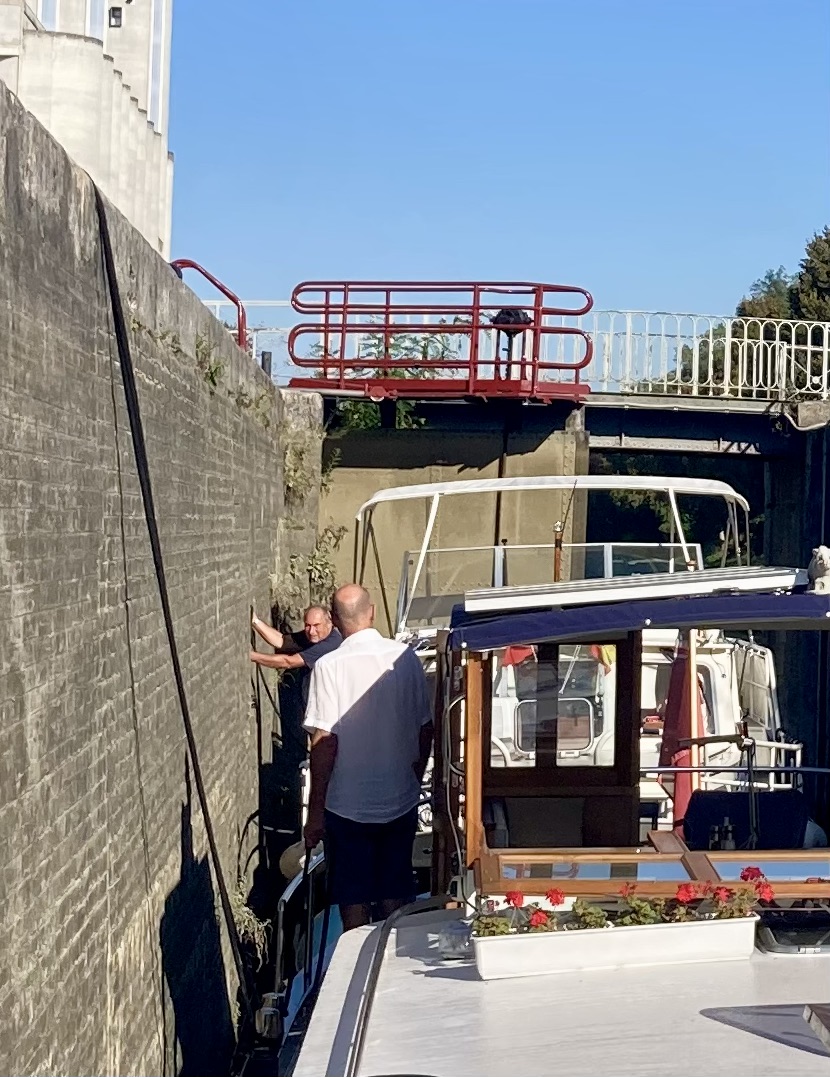
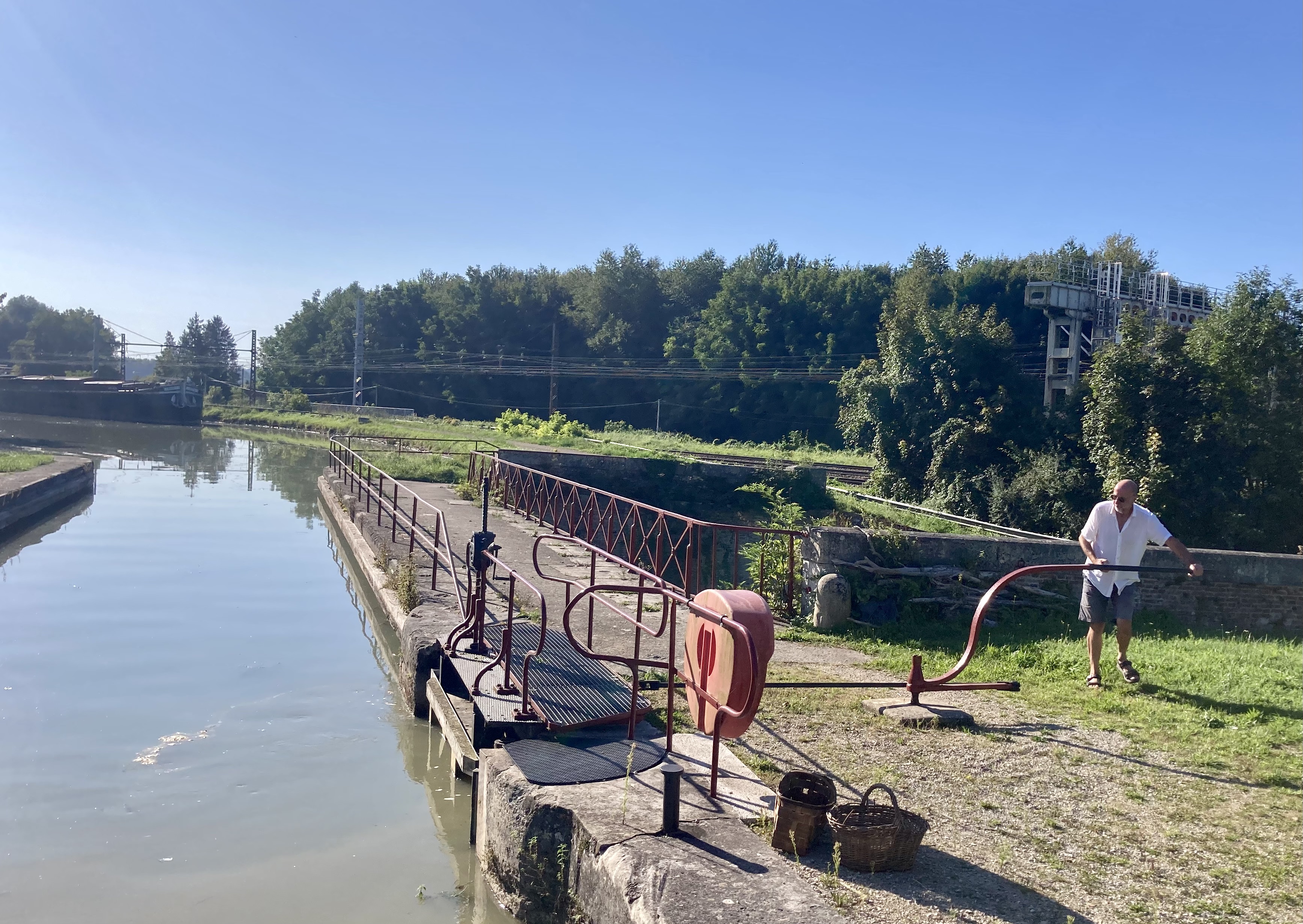
At the first écluse (lock) off the day we were asked to wait for another boat and after a while we were joined by a solo sailor on his recently bought boat. It is not always easy alone on a boat at the bottom of a lock, without good ropes.
With some help from the éclusier (lock keeper) and Stewart he managed a rope amidships onto the ladder – not an ideal situation, but it worked.
At the top Stu jumped off to help the éclusier open the gates. This canal is consists entirely of manual locks, with various means of being and closing the gates – here the good old push bar method.
We came out of the lock onto a pretty little pont canal, or aqueduct, over the river Armançon …………….. to find a big long commercial barge waiting to enter the lock and go down towards the Yonne. In fact the captain was waiting to go back down.
The barge had planned to go through the canal, but there was not enough water so had turn round before she ran aground.
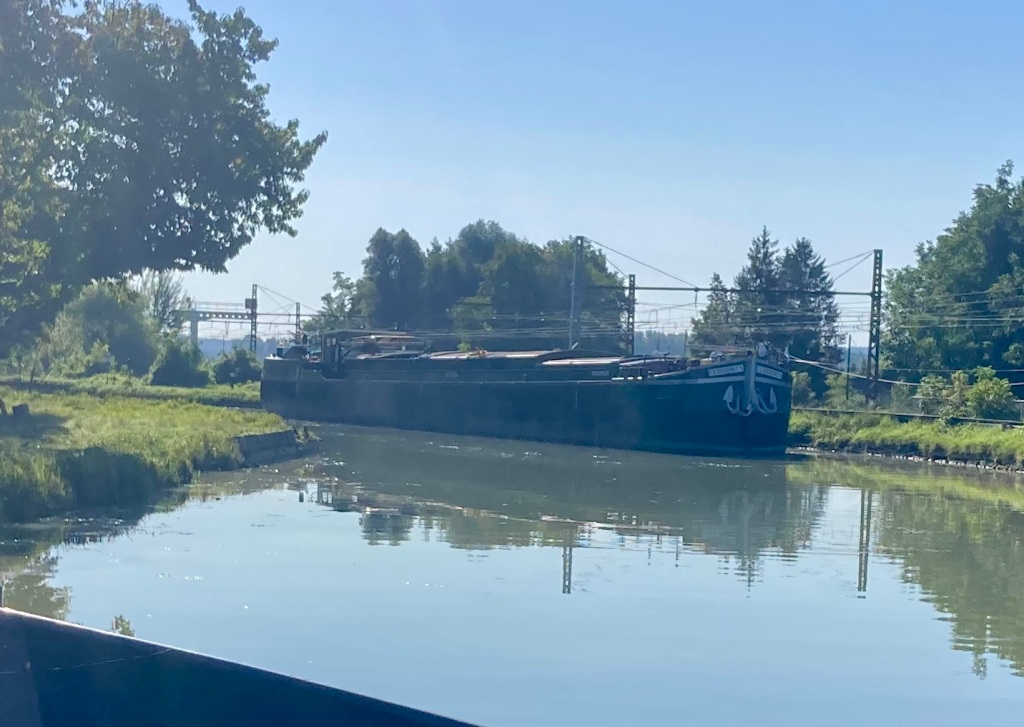
The September weather was hot and sunny, so much so that the crew gave little whoop of joy whenever we turned into a shady section of canal. It’s usually quite cool in the wheelhouse as we cruise, with the front windscreen down and the doors all open. But nice to let the whole boat cool off a little.
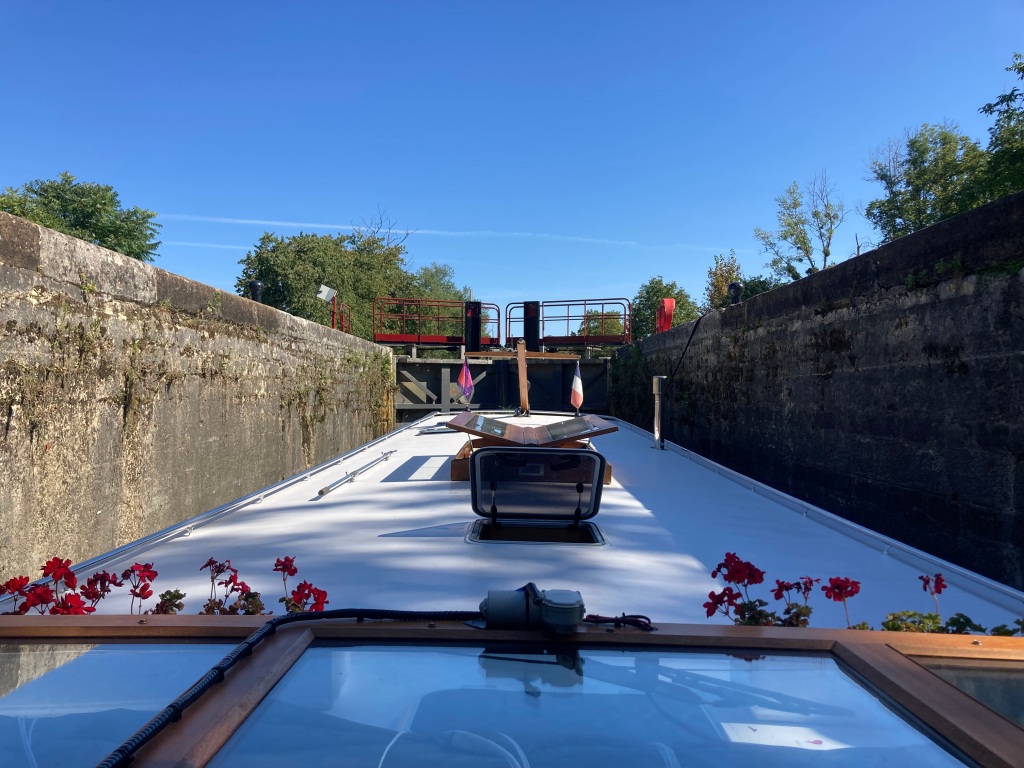
it is an added treat to have lunchtime at the bottom of a shady écluse during the éclusiers hour lunch break.
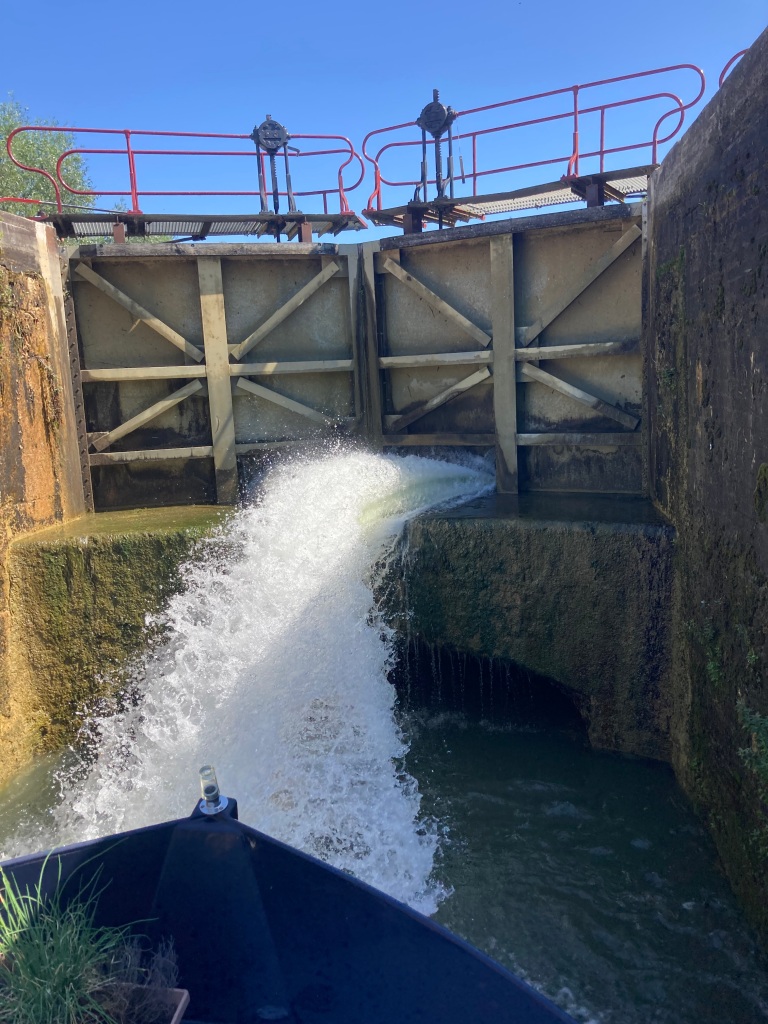
Even better when they leave the top gate partly open so that cool water pours in.

The stone edging of this lock showed smooth beautiful signs of wear from the ropes of past decades.
I love these grooves – signs of barges past.
Soon we were on our way again, with more work for Stewart at the locks. It’s not compulsory to help, but we both enjoy the physicality of it, and it builds relationships with the élusiers. We also move through the locks a little faster.
We were now at St Florentin, and a post canal over a smaller river that ran into the Armençon.
It was the last lock where we had the company of our solo sailor friend, seen behind Calliope. He had a mooring booked at the St Florentin marina.
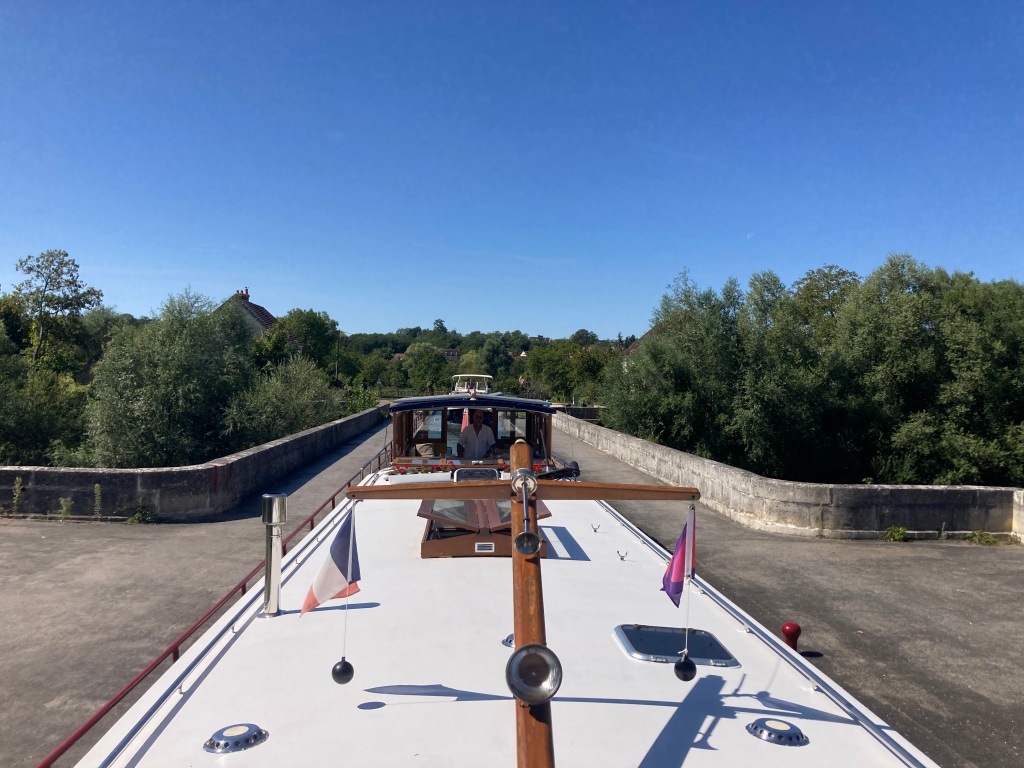
We were going on just a bit further and expected to moor at Germigny where I knew I could go for a swim in the river. But it was not to be.
Despite trying several times at different places along the Germigny mooring there was not enough water for us to get alongside, despite Calliope’s shallow draft of only 0.9m.
We had said goodbye to our éclusier at Germigny écluse, expecting to stop there for the night. We now had to call him up and ask for suggestions for an alternative near-by mooring deep enough for Calliope.
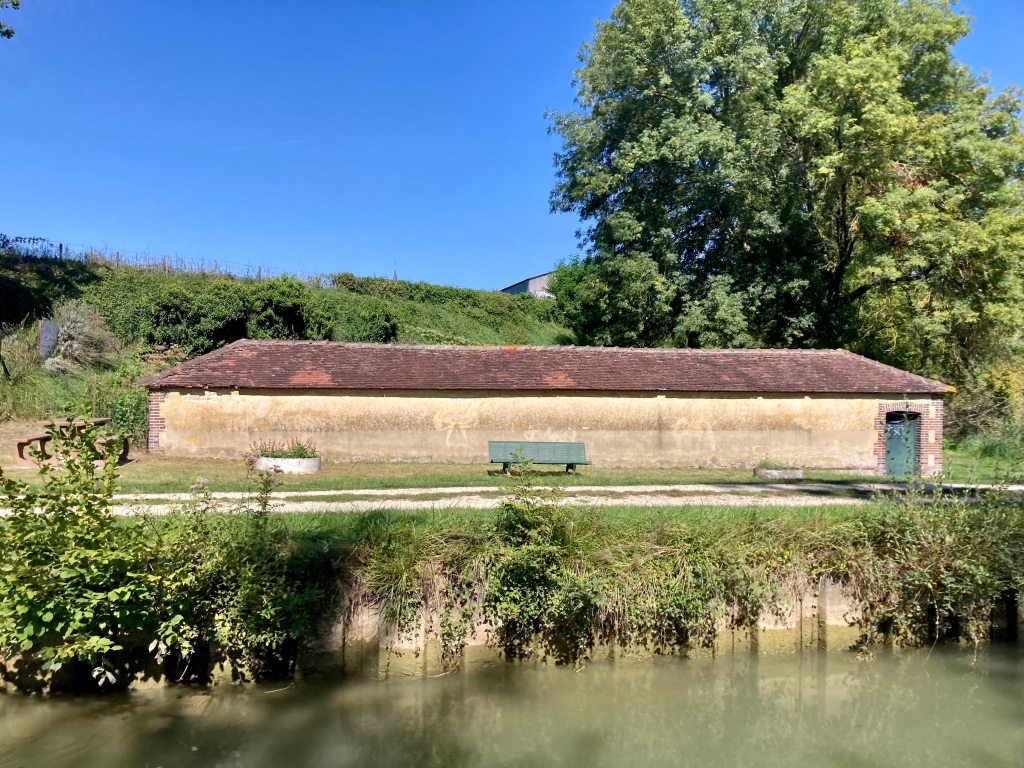
And he had an idea! He sent us on up the canal to Pont de Butte, a small rural road bridge.
As we left Germigny to find the mooring we passed by the bermigny lavoir – not for me to explore on this trip.
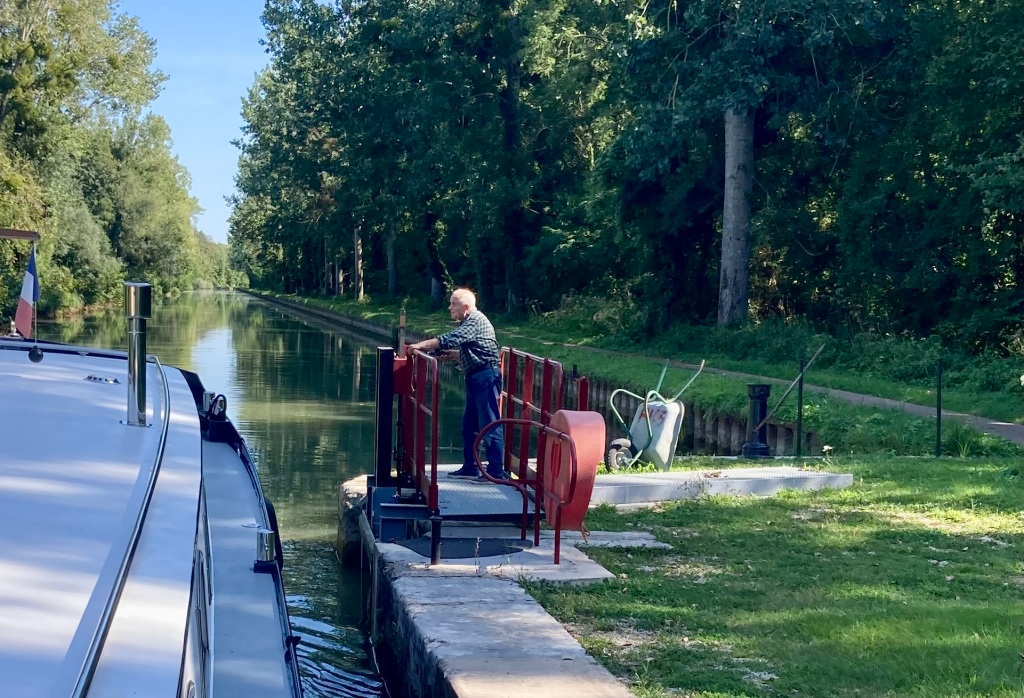
He joined us again at the next lock up the canal, where the retired éclusier who lived in the lock house came out to help us on our way through.
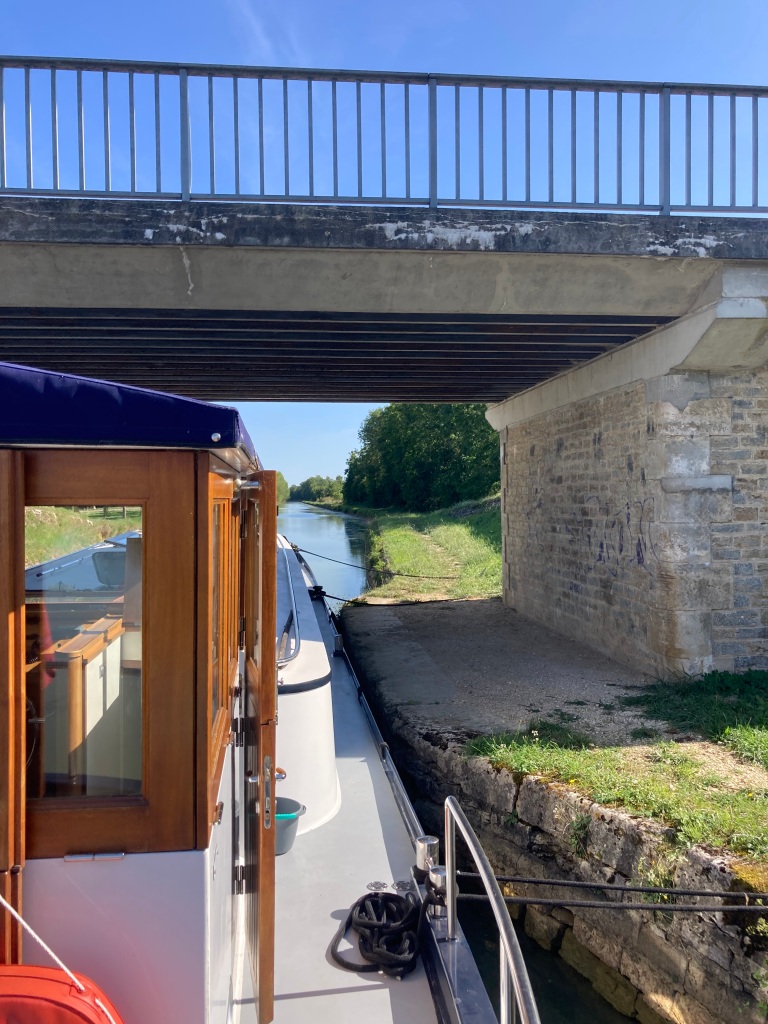
We soon reached Pont de Butte. Due to the canal narrowing to go under the bridge, and because the sides of the canal are vertical stone walls at this point, the water remains deeper.
Se we moored up under the bridge – one of our more unusual, but quite pleasant, moorings.

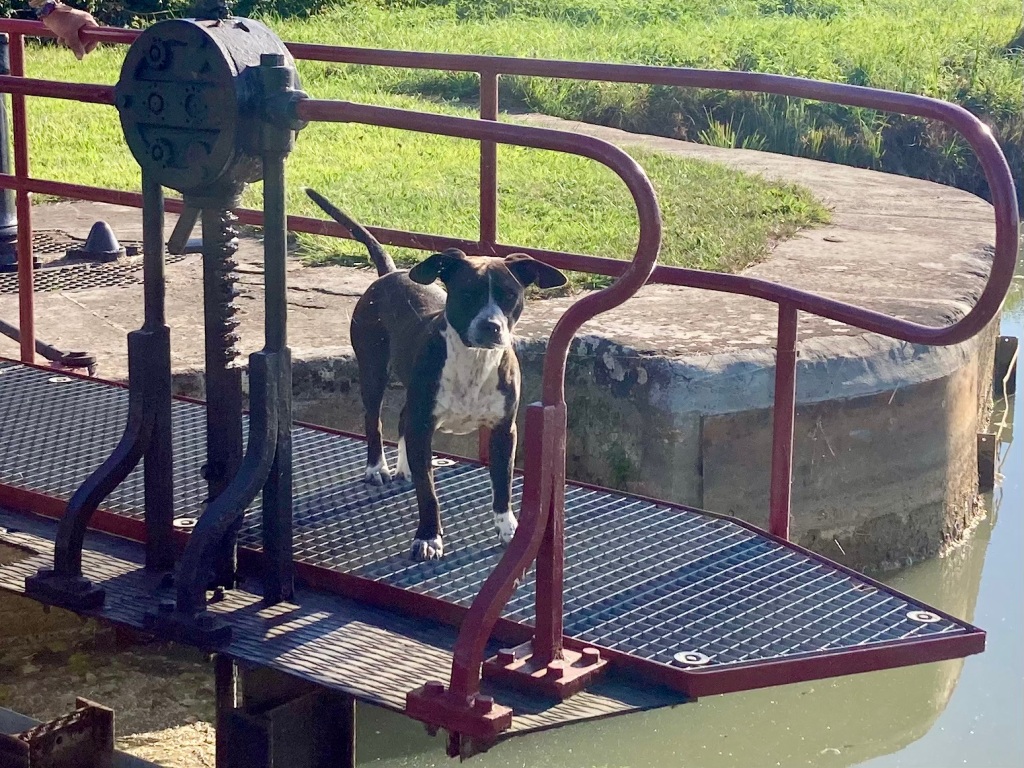
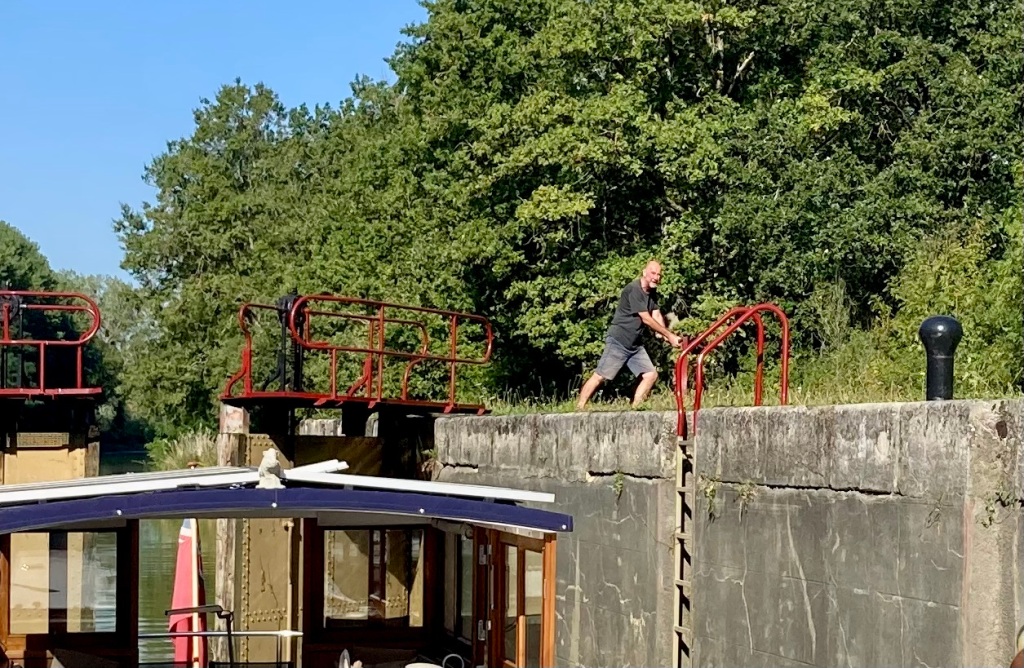
Next morning provided more sky blue skies, and the hint of another hot day. We were soon under way and gapping through the two écluses de Percey. The first of the two had a bright red wheel mechanism to open the lock gates and a very willing 4-legged helper.
Then on to écluse 102Y, Villiers-Vineux. The Y stands for the Yonne side of the canal. It was back to the push-bar method for closing the bottom gates, and Stewart climbed up the ladder to help.
We find we have to get the right rhythm for helping out, especially when coming into the bottom of a lock. First we need to see which side of the lock the éclusier is waiting. Then we moor near to a ladder on the opposite side, or tie up loosely and drift across to the ladder if the bollards are inconveniently spaced on the side we preferred.
I hope that makes sense!
The house at écluse Villiers-Vineux is occupied by someone who likes the livestock and horticultural possibilities of a rural retreat. Goats and chickens were wandering around and signs offering miel (honey), aspèrges (asparagus) and girolles (a type of mushroom) stood along the top of the fence.

Here I am taking my turn at the gate opening work – and at quite a momentous écluse.
This is 101Y.
Once through this lock we had exactly 100 locks to the top!!
Not long after this we were joined by a little green traveller who flew in through the doorway.
In this photo s/he has their wings folded, but with white wings outstretched we think we identified it as a locust, not a grasshopper.
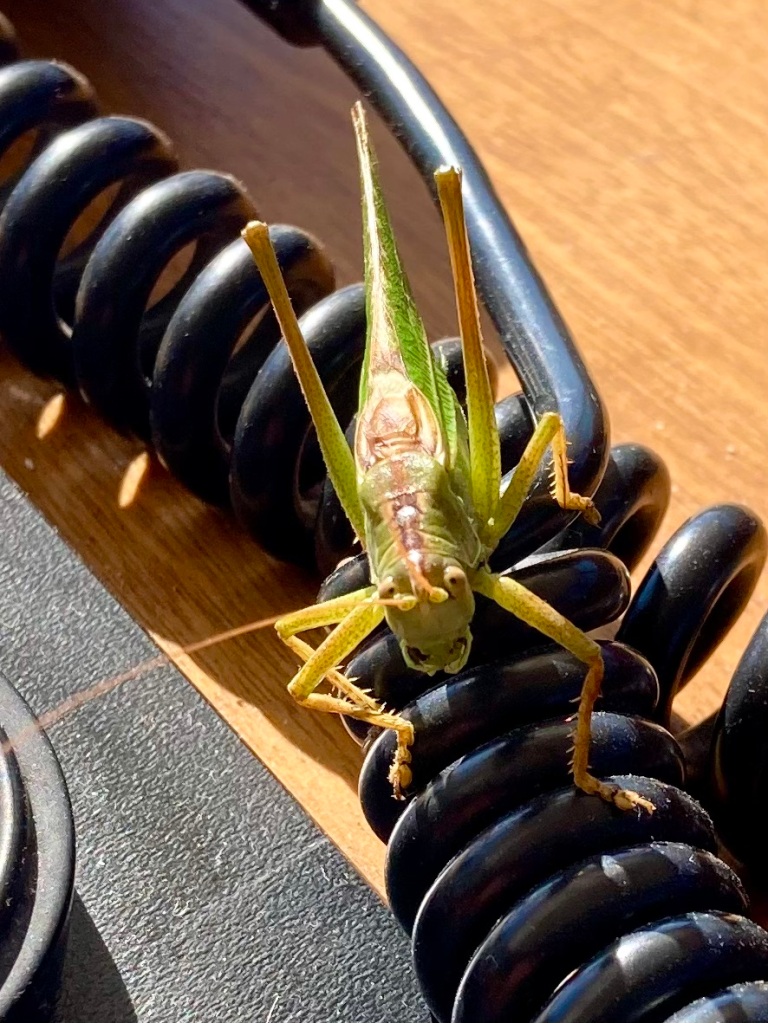
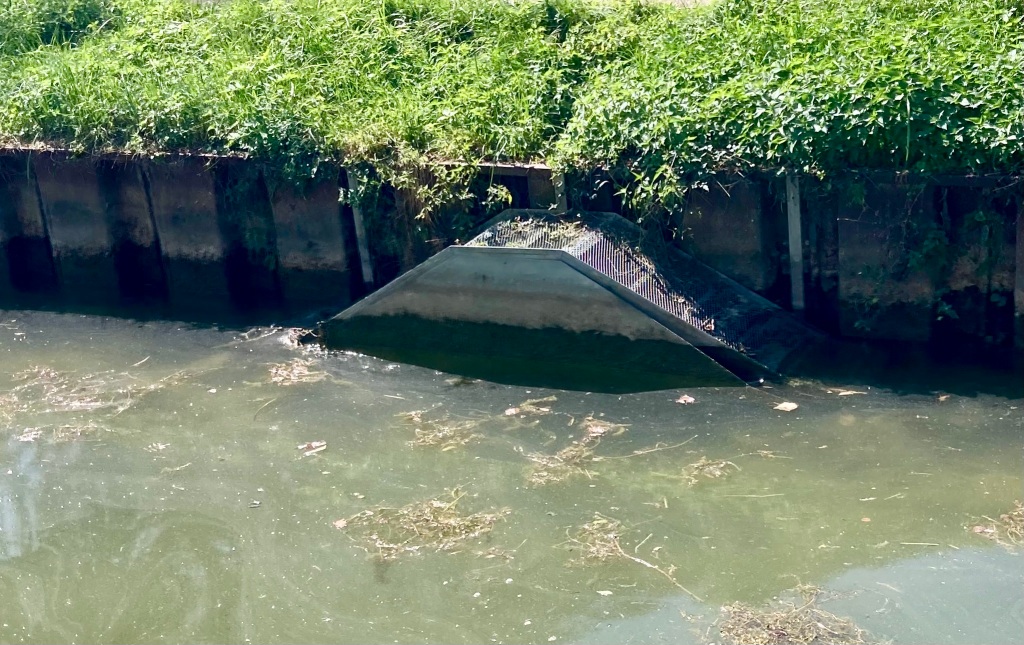
Along this stretch we saw the ramps that are built into the canal side every few hundred yards to help deer climb out if they have fallen in.
We also noted the low water levels. Normally most low the ramp would be under water!
We were keen to find a shady mooring for the night; the temperatures were touching 30C again. I had read about some old railings at Charrey that were supposedly in the shade, and sure enough they were; beautiful!
And out in the countryside try too!
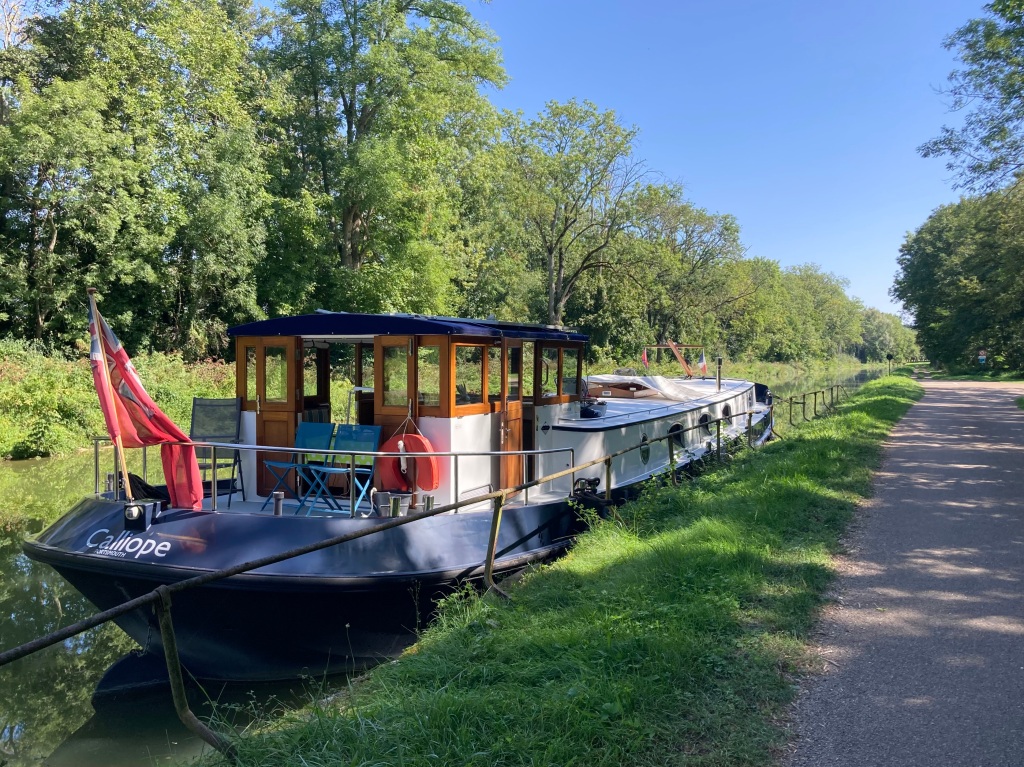
Not only that, but a short walk along the towpath brought me to a little path down to an ideal swimming spot on the river!
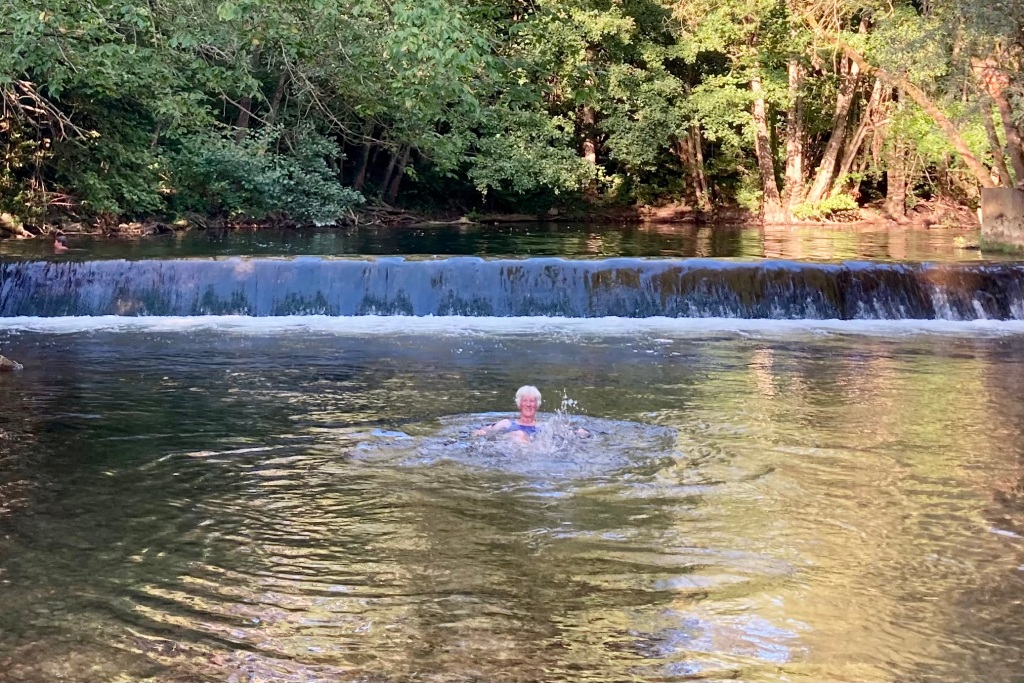
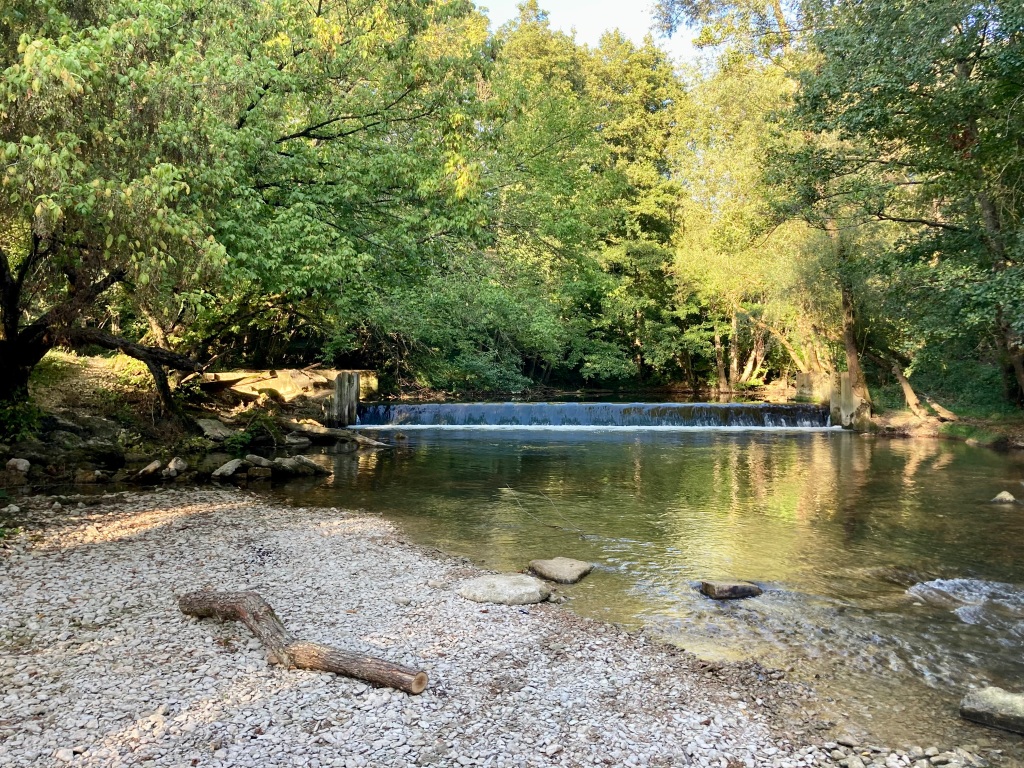
It was the perfect place to cool off in the evening – fresh clean water falling over a small weir into a wide shallow pond. Mmmmmmm.
Next day we were on our way to Tonerre – home of one of the most beautiful lavoirs in the world, although this time we did not plan to visit it. If you are ever near by it is well worth a visit!
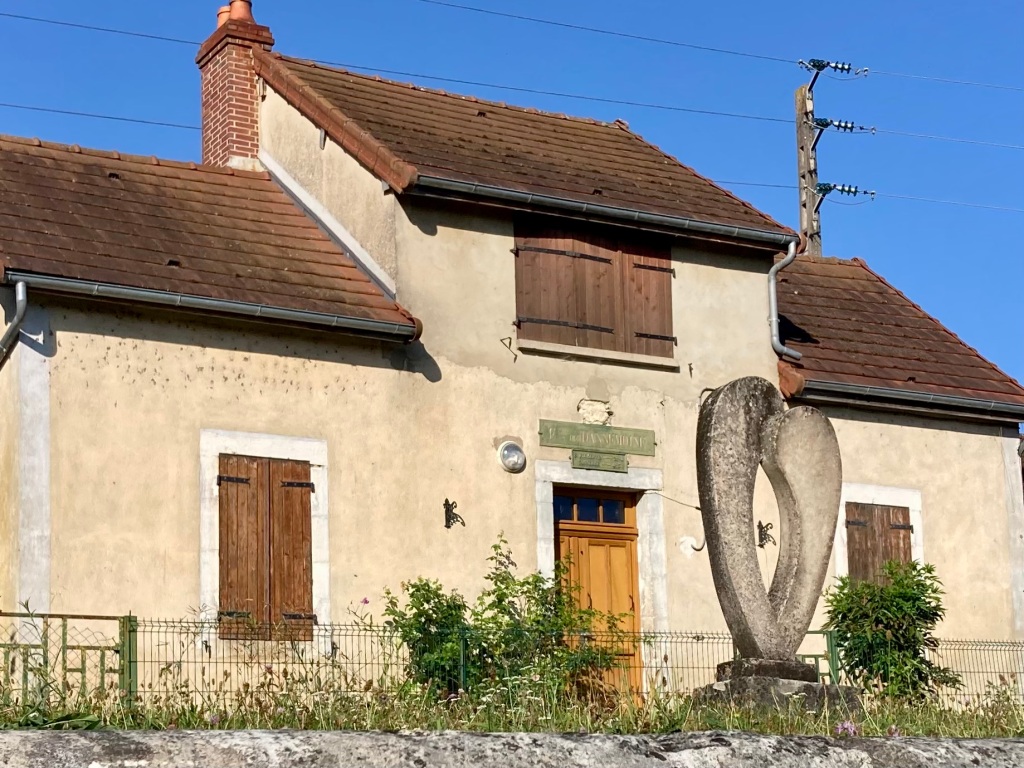
On the way to Tonnerre we passed Dannemoine lock where there is rather a nice heart shaped sculpture.
I have tried to find out who made it – maybe Joy Jaroba, but I am not sure.
The startlingly blue skies show that the hot weather was continuing and we were pleased to find another shady mooring as we arrived at Tonnerre.
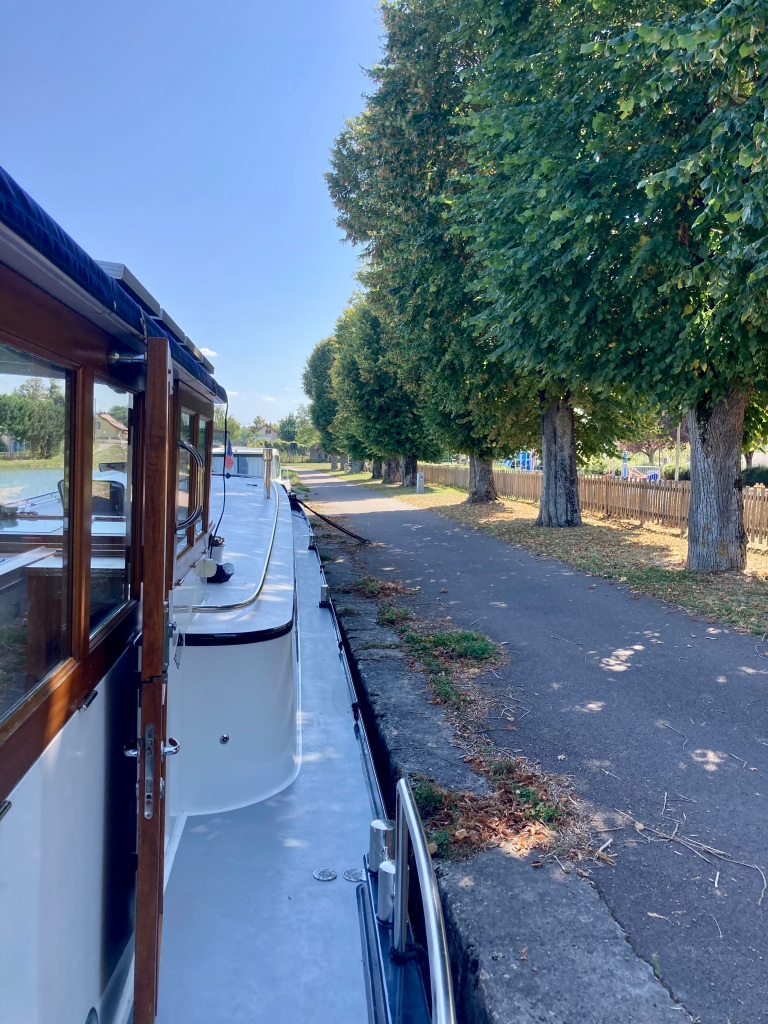

There was not much more to do that day – a walk to the boulangerie the far side ion the canal, and a gently drift into a pleasant evening on the back deck with some French jazz and some red Burgundy wine.
We just stayed the one night at Tonnerre as we wanted to reach Montbard and spend a bit longer there; we have cruised straight through it 7 years before when last on this canal. It had looked interesting a note in our map book told us to stay longer next time!
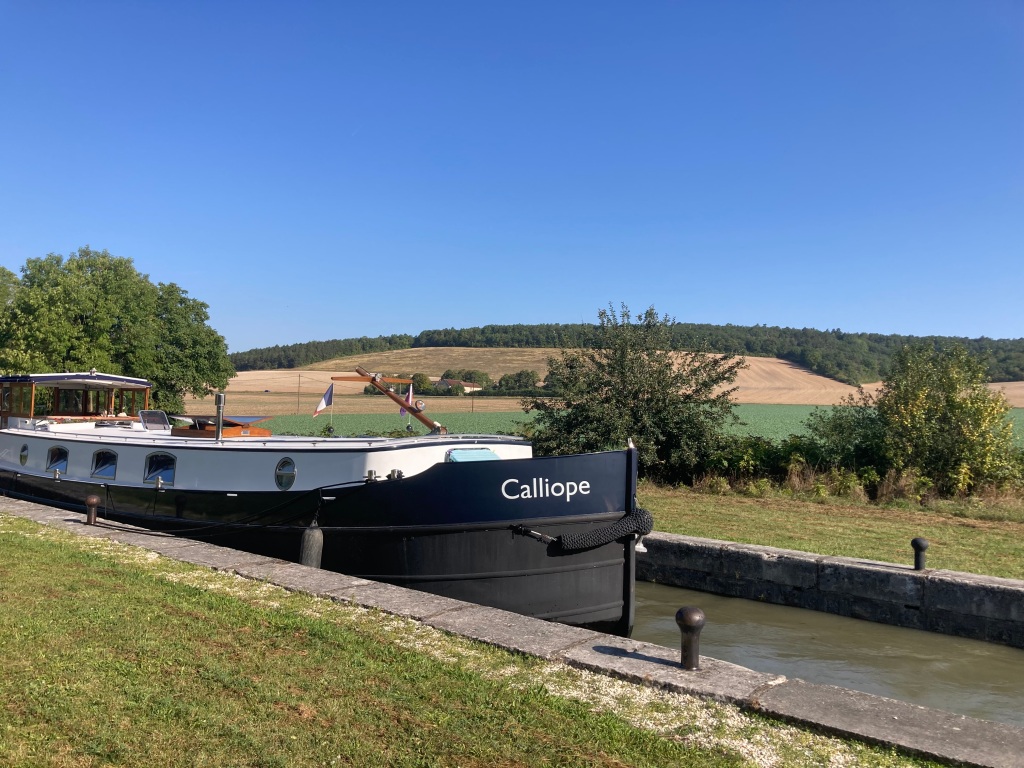
About an hour upwards out of Tonnerre we were enjoying superb views across the hills. Lots of space for deep breaths of morning air before the summer heat rose to its midday high.
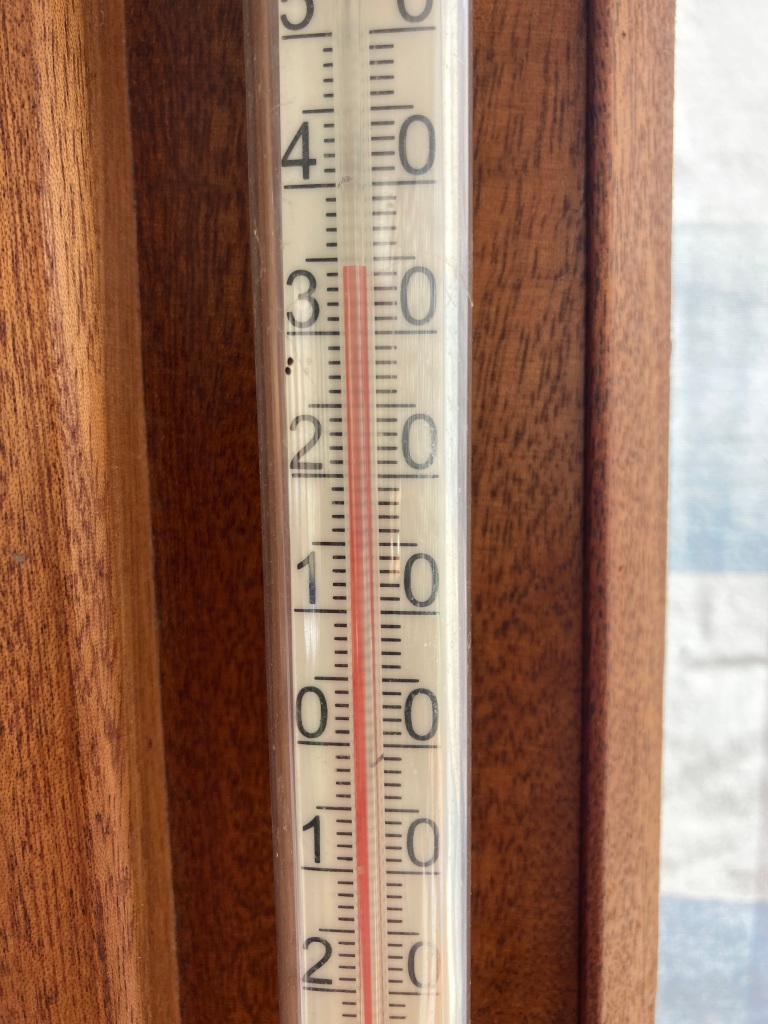
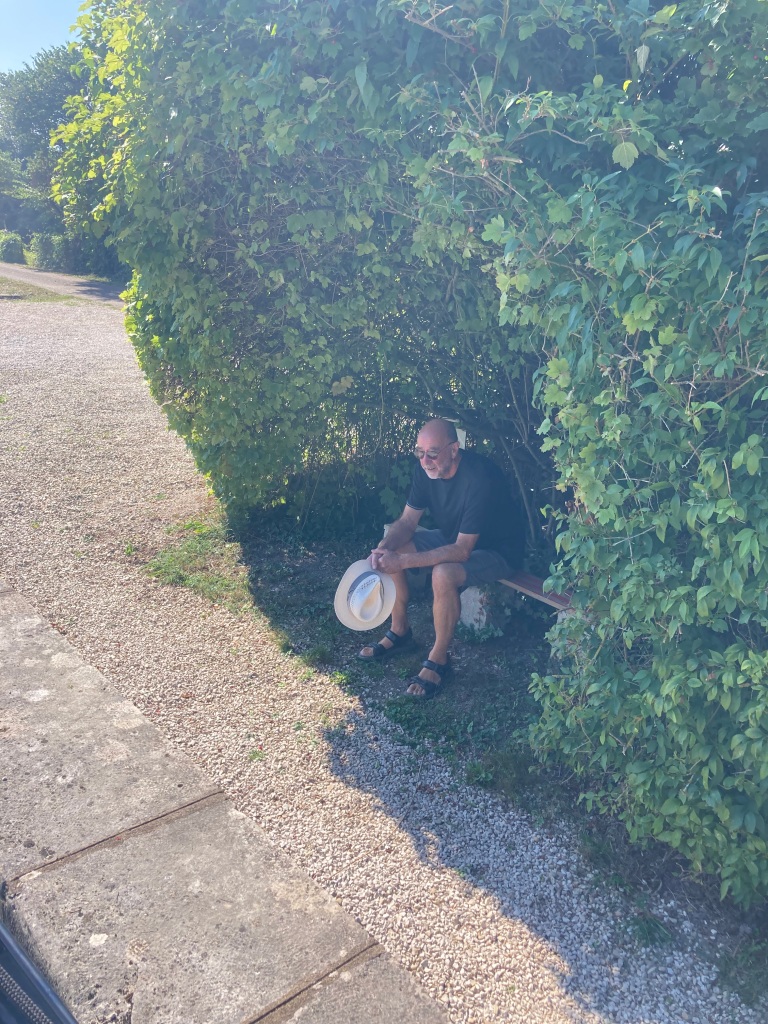
As midday and éclusier’s lunch break crept closer the Captain was glad of a shady seat to sit and wait for the lock to fill.
The éclusier had cleverly calculated that we could reach the lock where he lived by lunchtime and we enjoyed an hour just outside Tanlay at the bottom of a lock in the cool and spray.
The éclusier returned with a plate full of all sorts of tomato for us, grown in his garden.
At first I thought he wanted to sell them to its, but no – it was a gift.
Yum yum, what a treat!
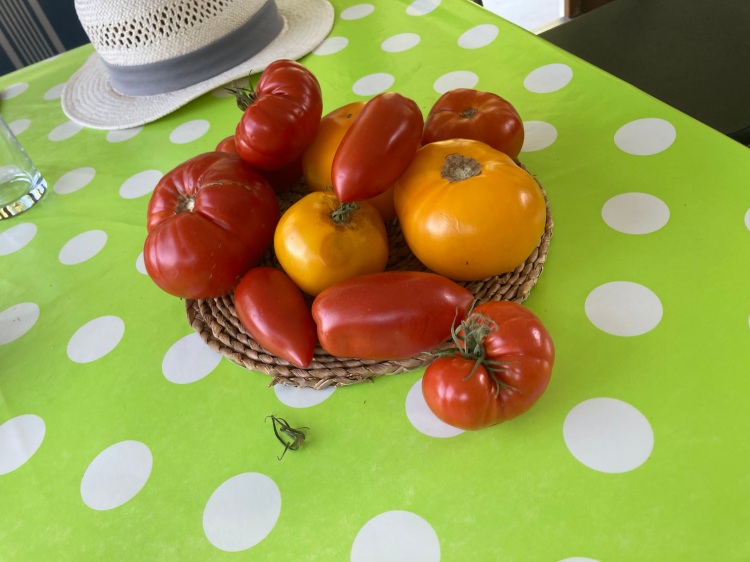
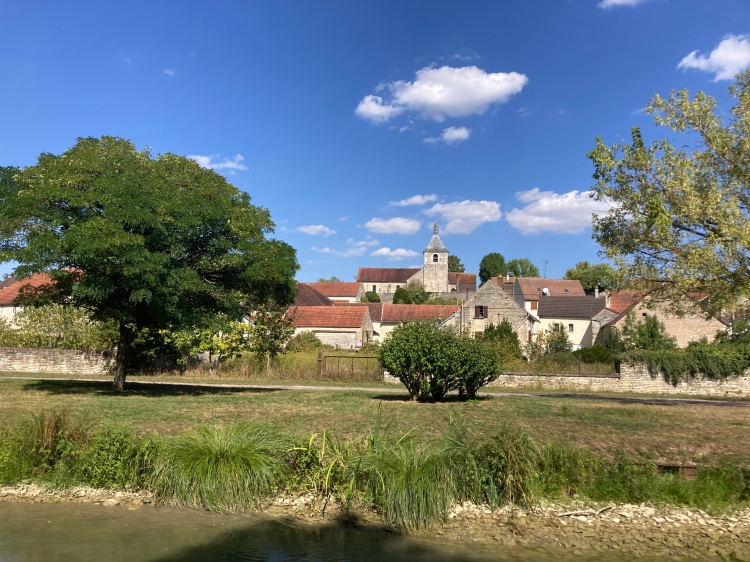
We came past Tanlay and then Saint-Vinnemer, pictured here.
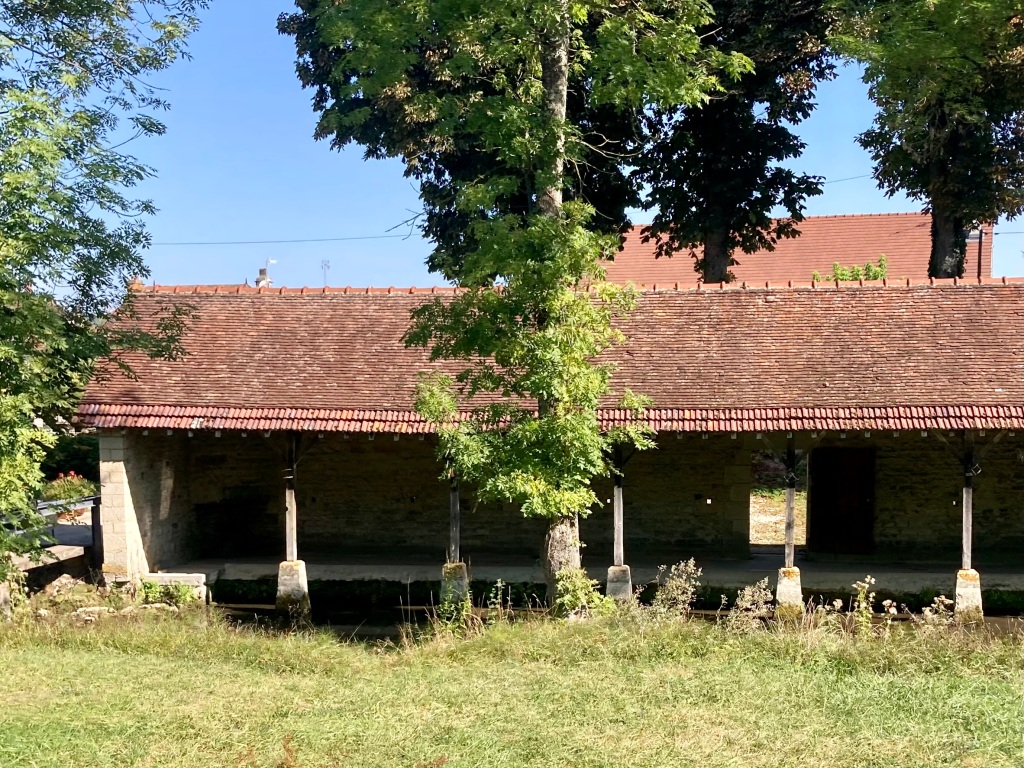
That gives me an excuse to sneak in a photo of Tanlay lavoir – one waiting for a bit of TLC.
After lunch we went on to Lézinnes. We had begun to understand that the éclusiers were keen to keep us moving along, so out usual lazy day of about 3 hours cruising in the morning began to change.
The lack of water was increasingly obvious, although not really a worry as there was always enough water in the centre for us keep moving.
And the éclusiers were helpful, letting us know which moorings were deep enough for us to go into the side and tie up for the night.
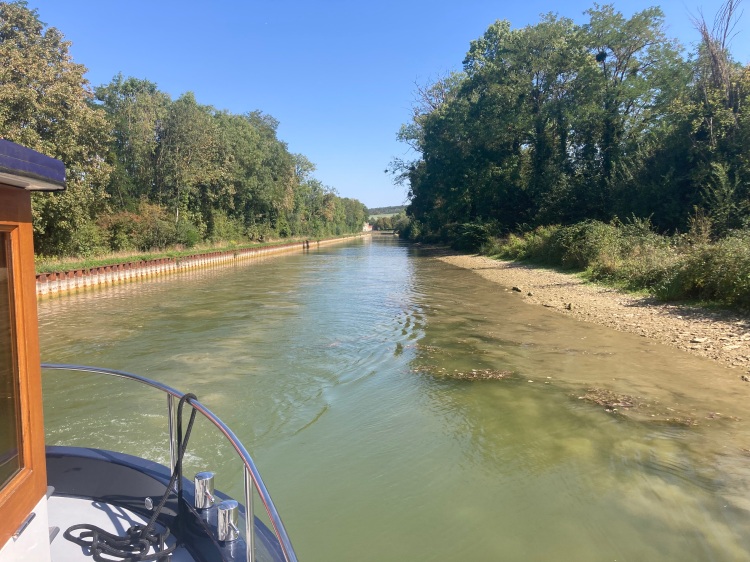
The next such mooring was at Lezinnes, an interesting little village built around the river Armançon, and with the canal flowing past just above on the side of the valley.

We were pleased to find another place in the shade, in what is now a quiet area, but in its day was a very busy industrial hub.
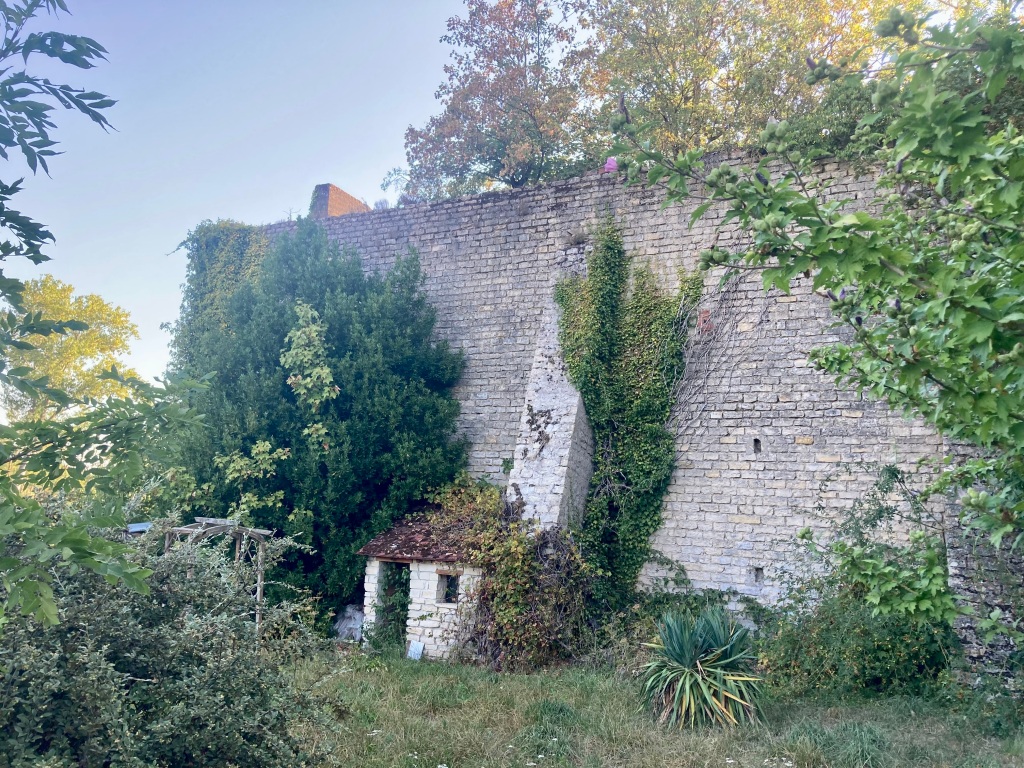
Lézinnes had a big lime extraction business; some of the old buildings are still very evident near the canal.
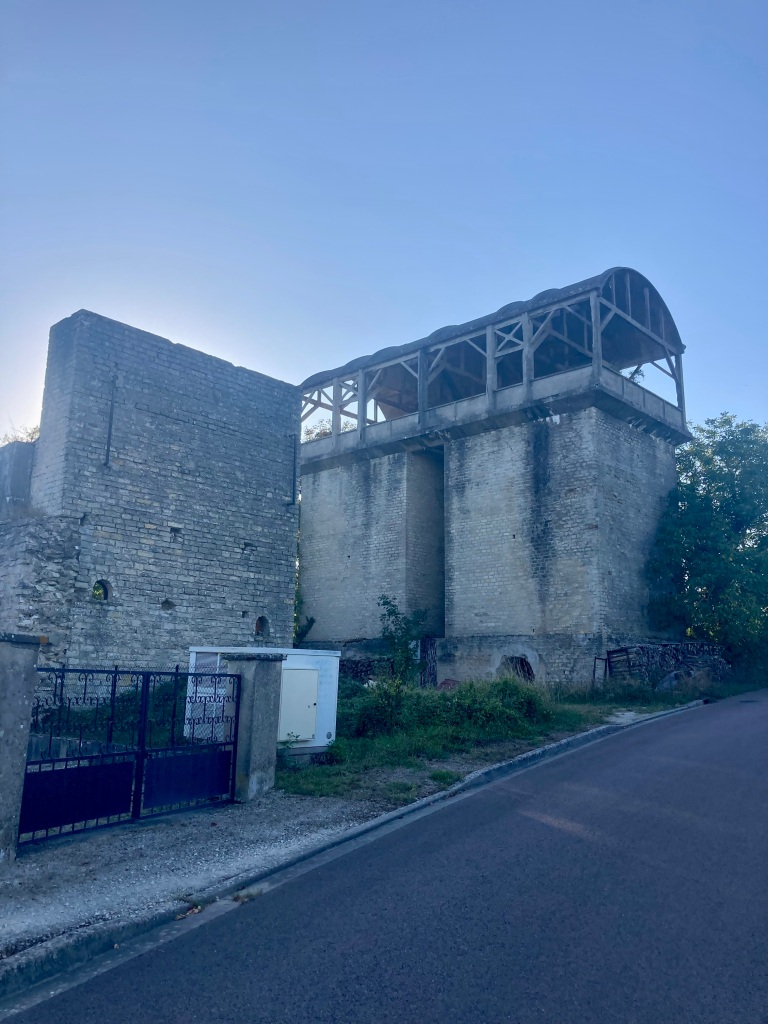
I only had a quick chance before we left to grab a few photos; well worth exploring!
The journey as always included a couple of ‘I-spy nature’ moments. On this occasion we had a drop-in praying mantis visitor in the shower, presumably flown in through the roof hatch, and a highly perched heron.
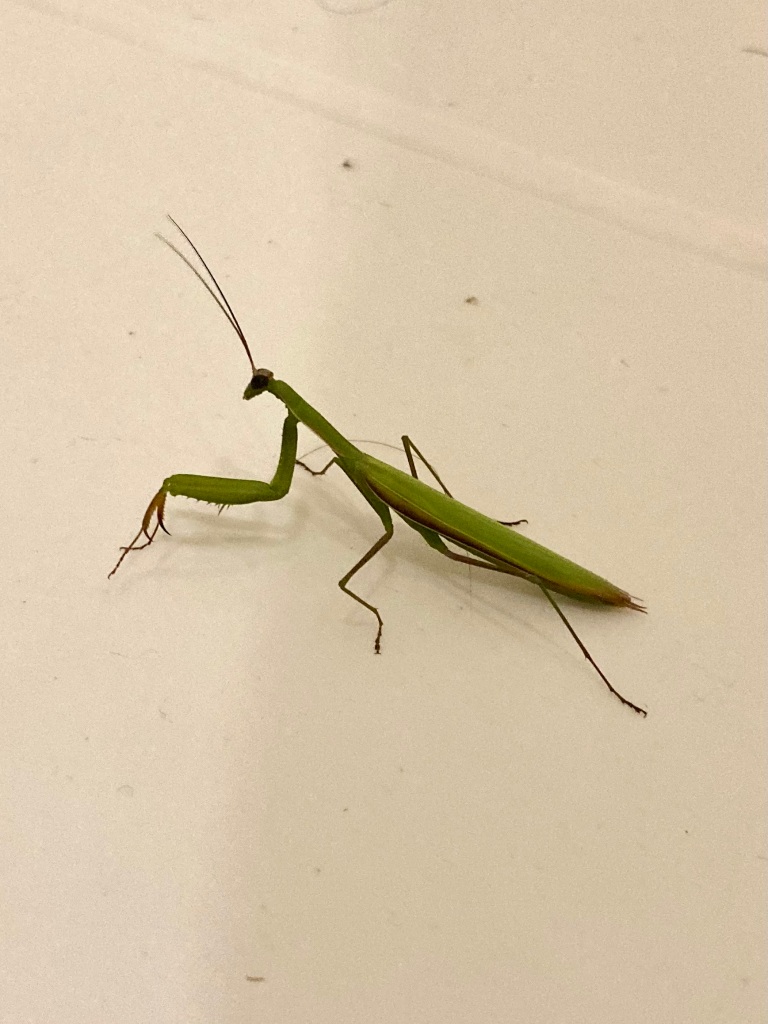
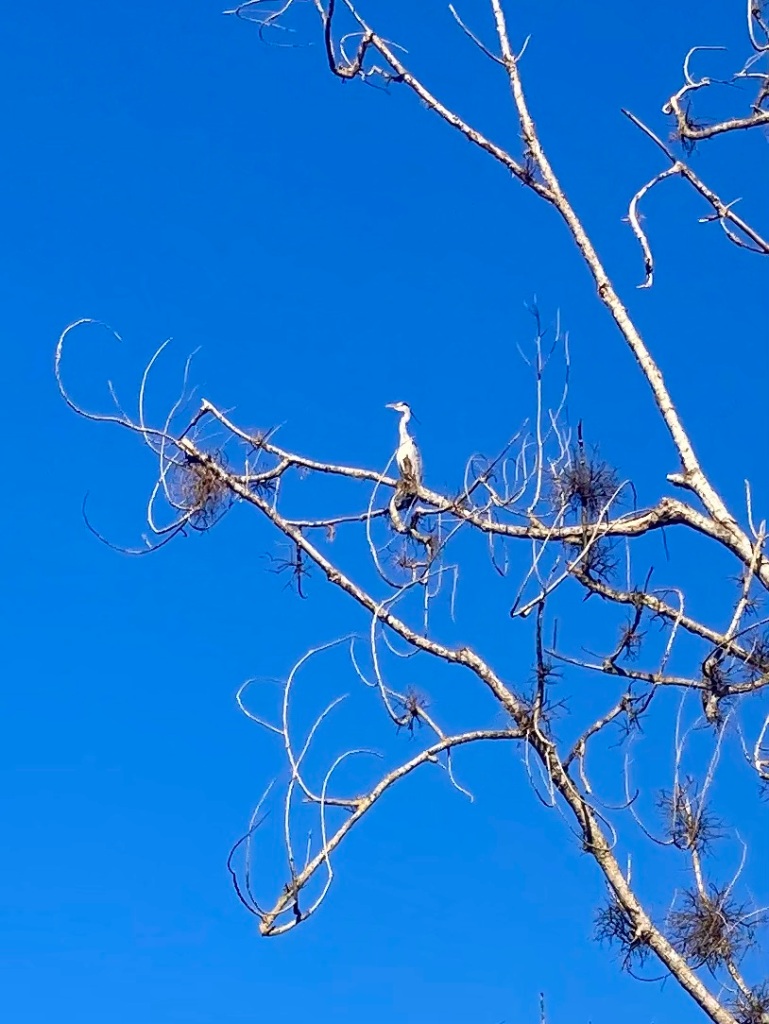
I guess neither are very remarkable. I just like to share some of the French flora and fauna that we see.
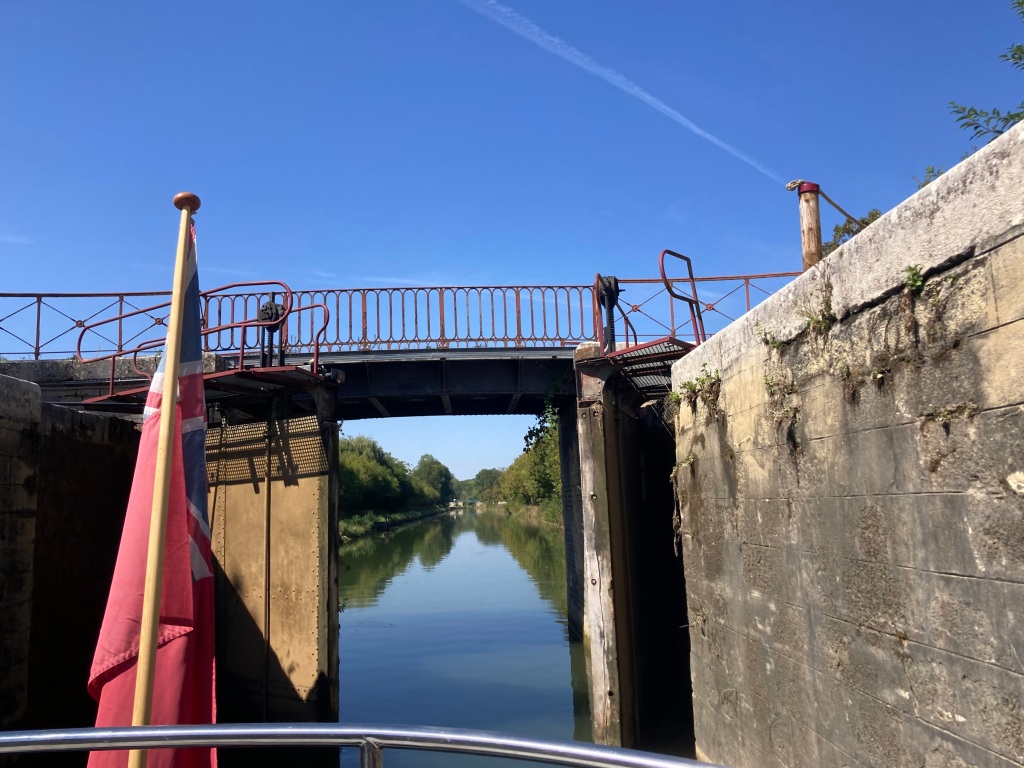
We were treated to another lovely lock lunch stop – this time at Ancy-le-Franc.
I like the view back along the canal, the shadow on the lock door, the bridge metalwork against the sky; the hot midday peace of it all.
Our éclusier along this section was Gillaine – a super friendly lady who took a photo off Calliope approaching a lock.
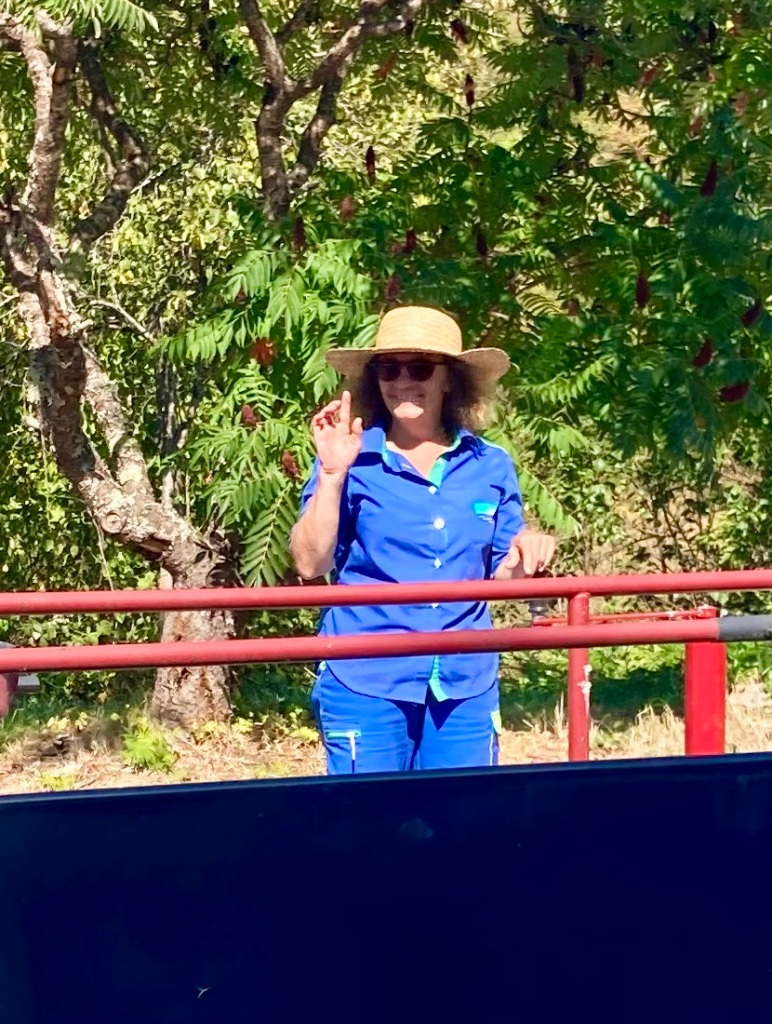
She also borrowed my sunhat; she left hers at home!
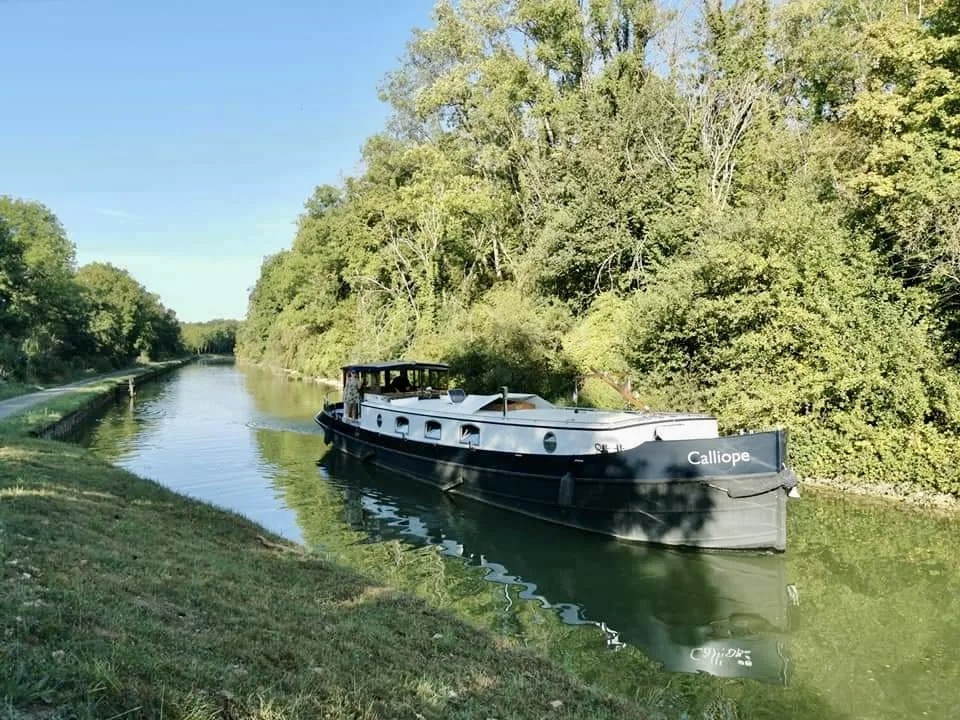
We were feel ng very comfortable le about our next stop – Ravière – having moored up here before and knowing it had a good stone edged quay. In addition we had been told that there was plenty of water at the edge for us.

It looks a bit plain in this view, but there are interesting old houses behind the trees on the left, and the right hand side of the canal looks through some more trees to expansive countryside – as you will see below.
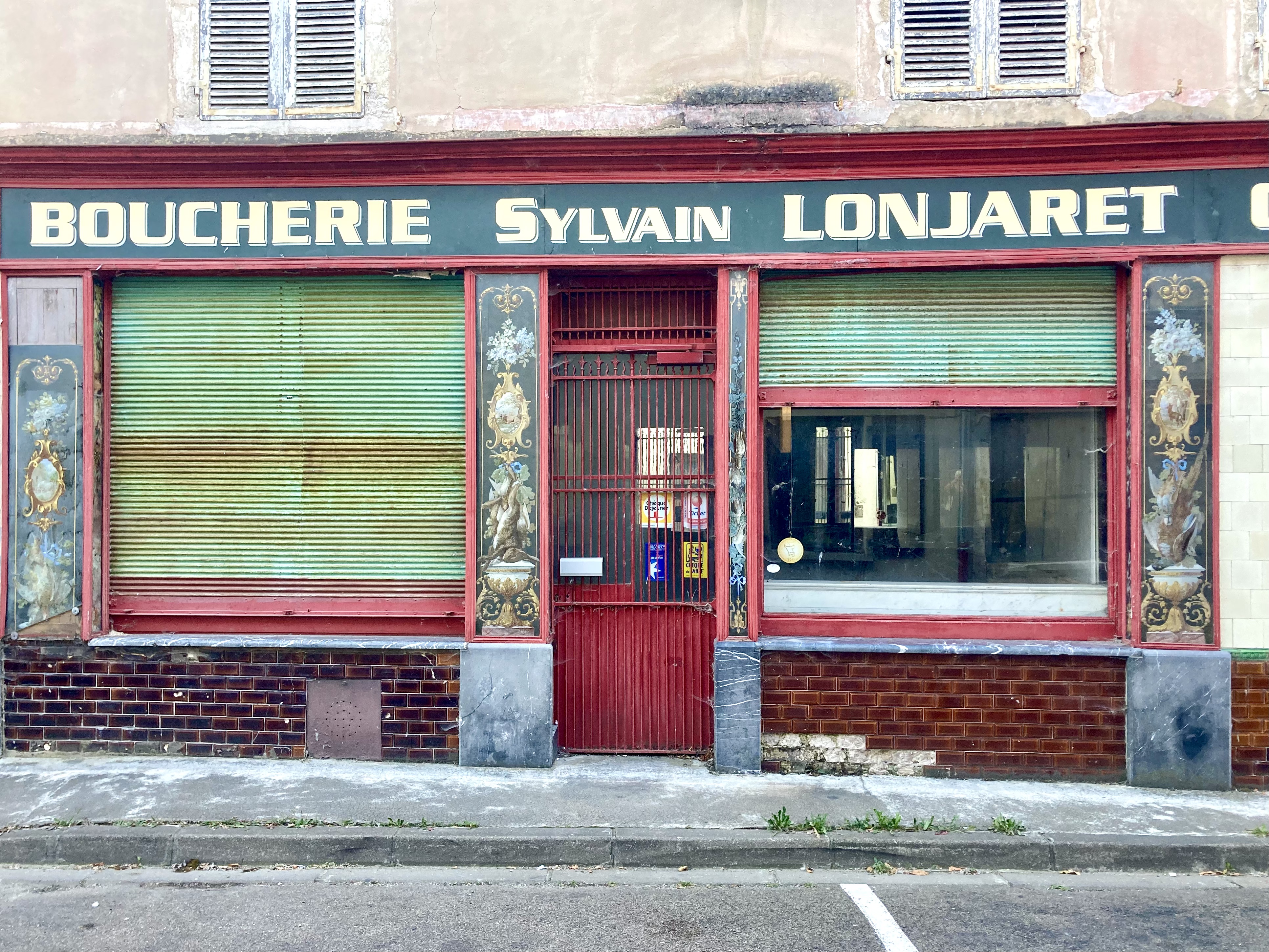
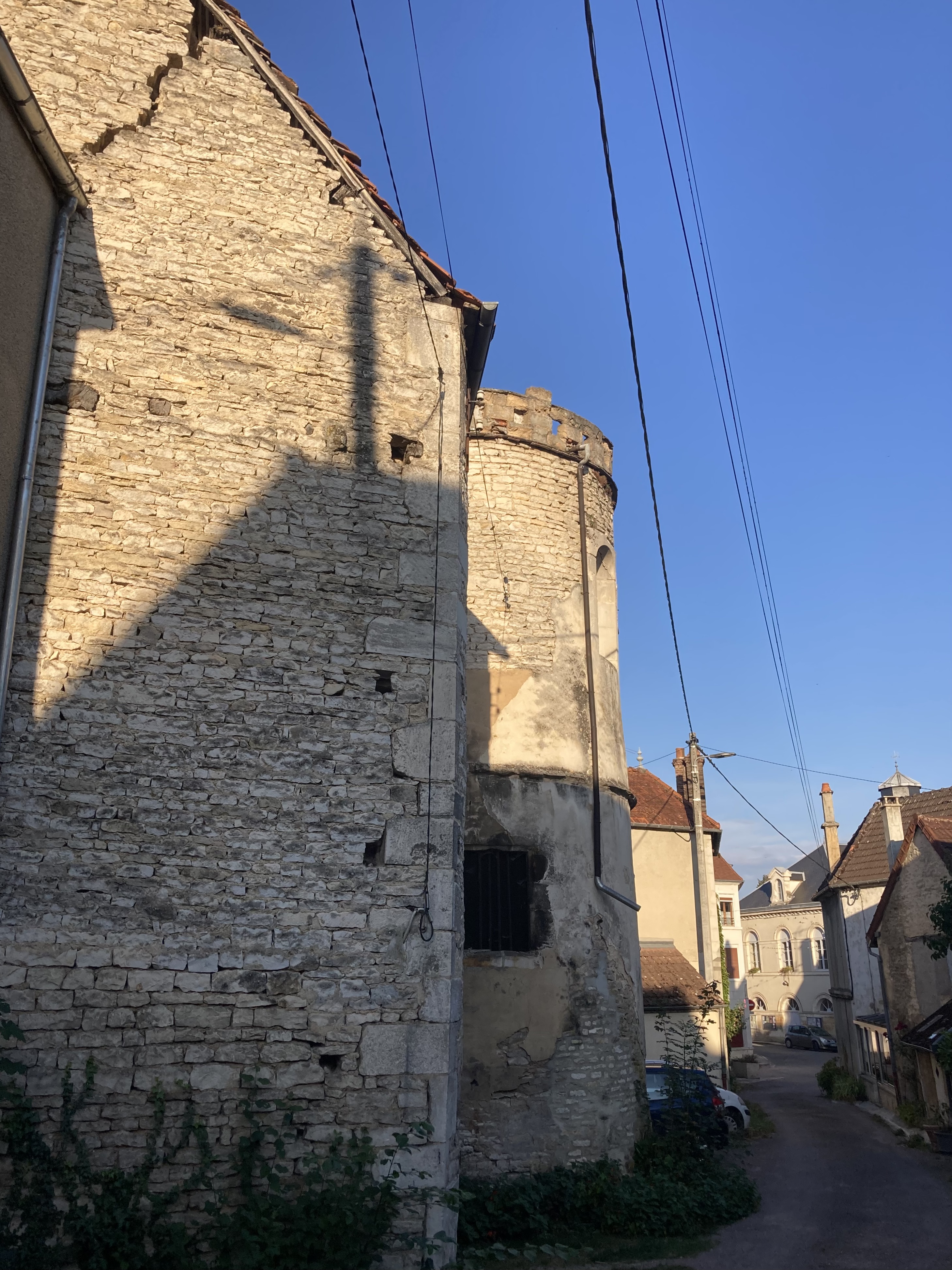
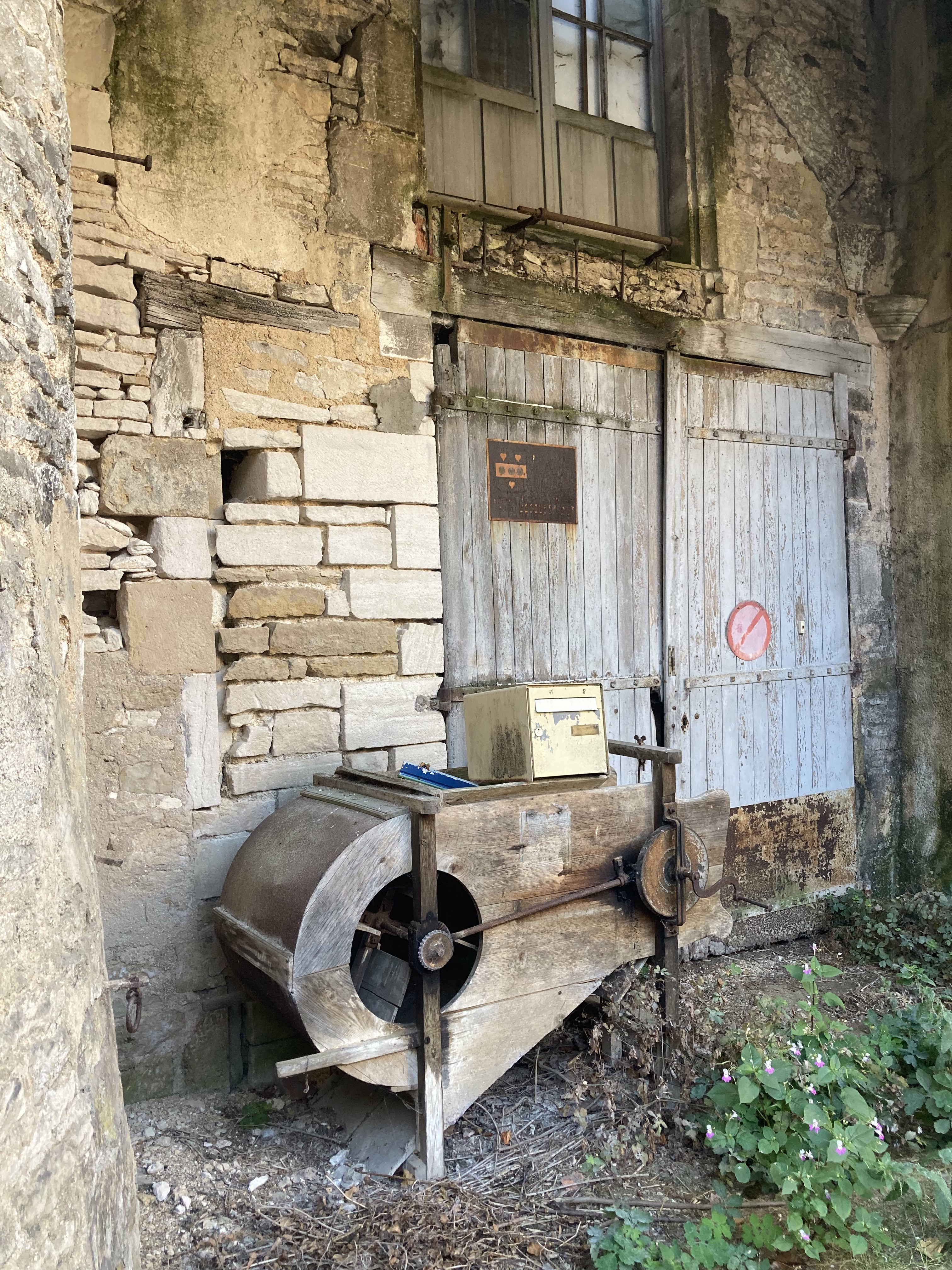
The old town of Ravière was built on stone quarrying and stonework. Although now a lot quieter there are still many wonderful corners to discover. For example the tiles around the boucherie (butcher) windows, the ancient chateau, and bits of deserted agricultural equipment are just waiting to be seen.
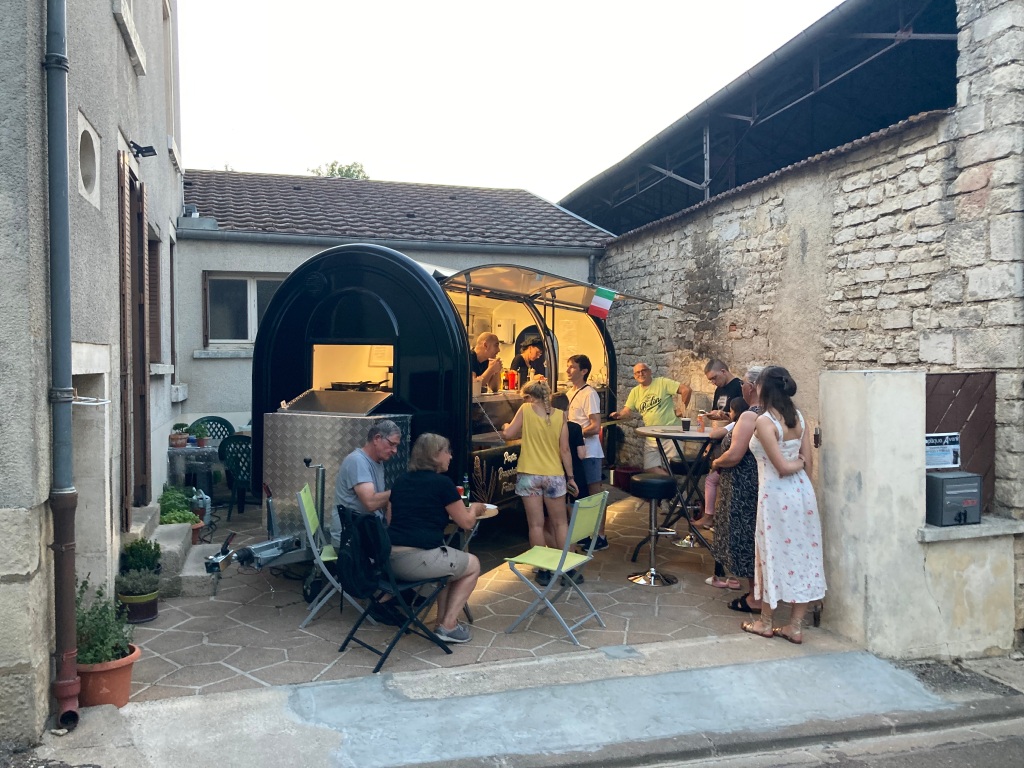
We decided to treat ourselves to a casual meal out, and it was delightfully more casual than expected.
A travelling pizza/pasta café was dues in town that night, parked up in hideaway location!
We had a lovely authentically Italian meal, along with local families, cats and dogs!
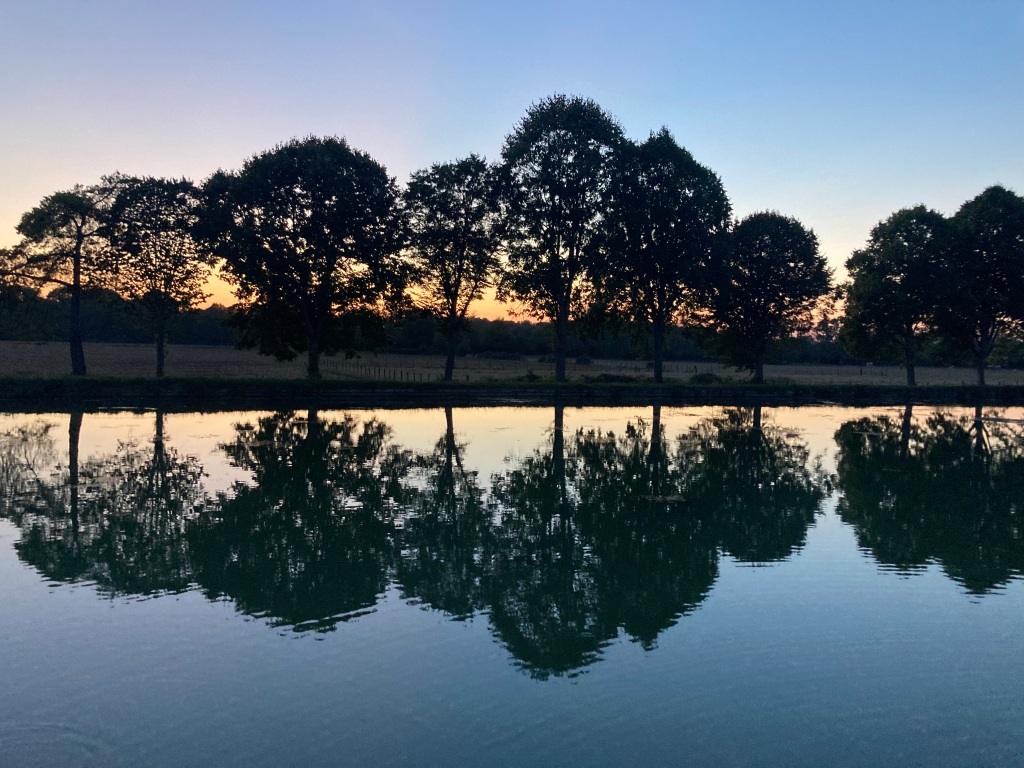
Then back to Calliope, and that view to the other side of the canal that I mentioned, probably more beautiful at sunset than at any other time day.

Next to the quay is an example of the old way of moving the huge stones form the quarries.
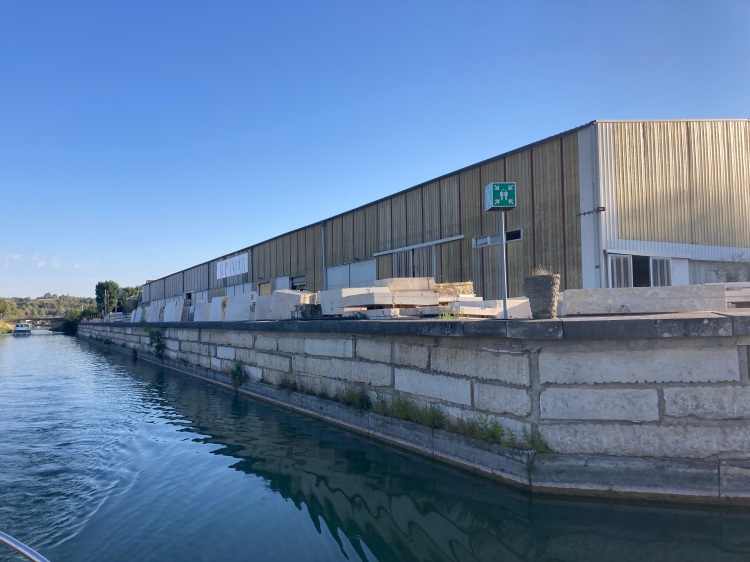
And as we set off we passed the modern complex showing Raviére is still working in stone.
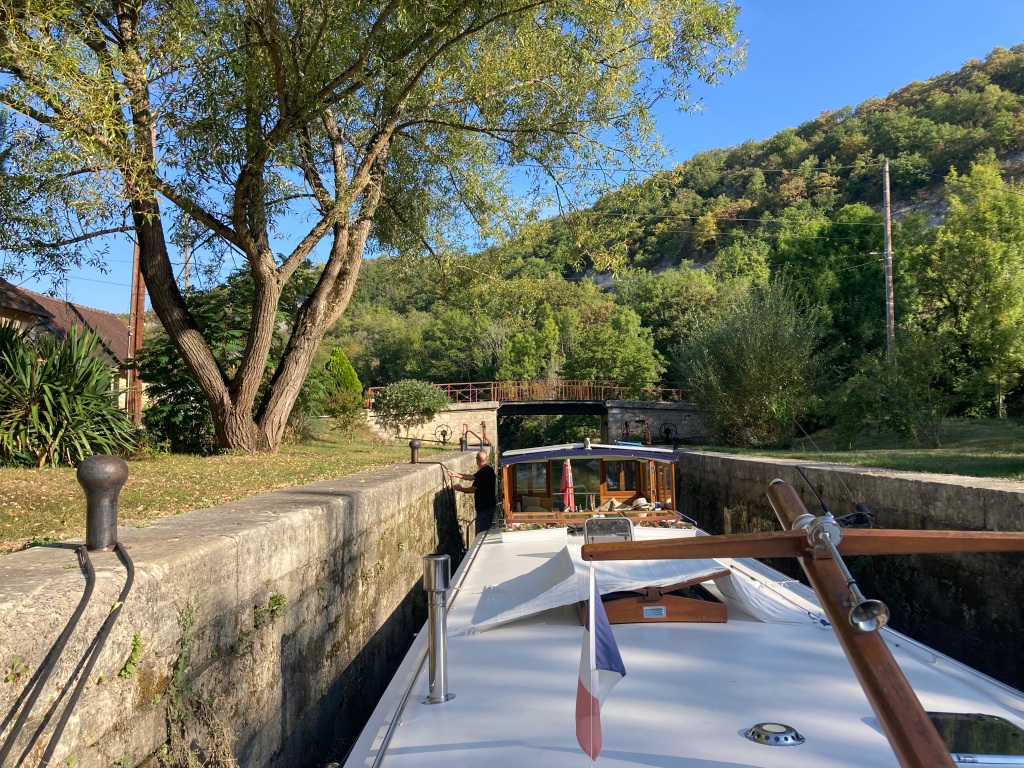
An hour further up the canal and Calliope reaches ècluse 74Y, d’Arlot; we are getting (slightly) closer to the summit! Most of the locks along the canal are about 2.5m deep, making it quite an easy stretch for Captain and crew to throw a loop over a bollard.
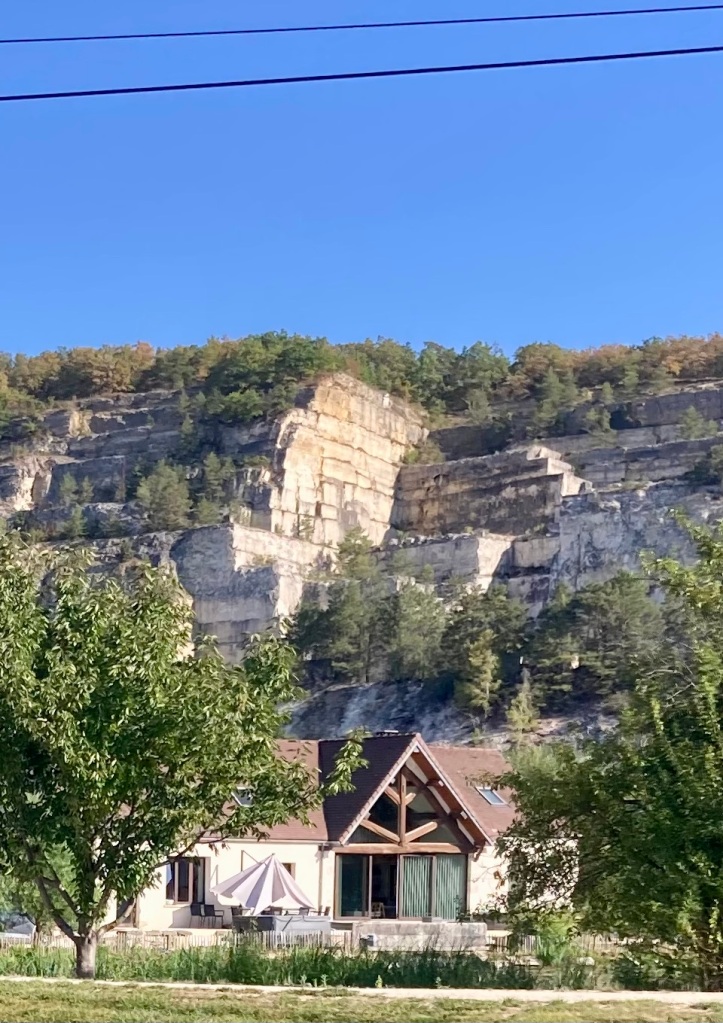
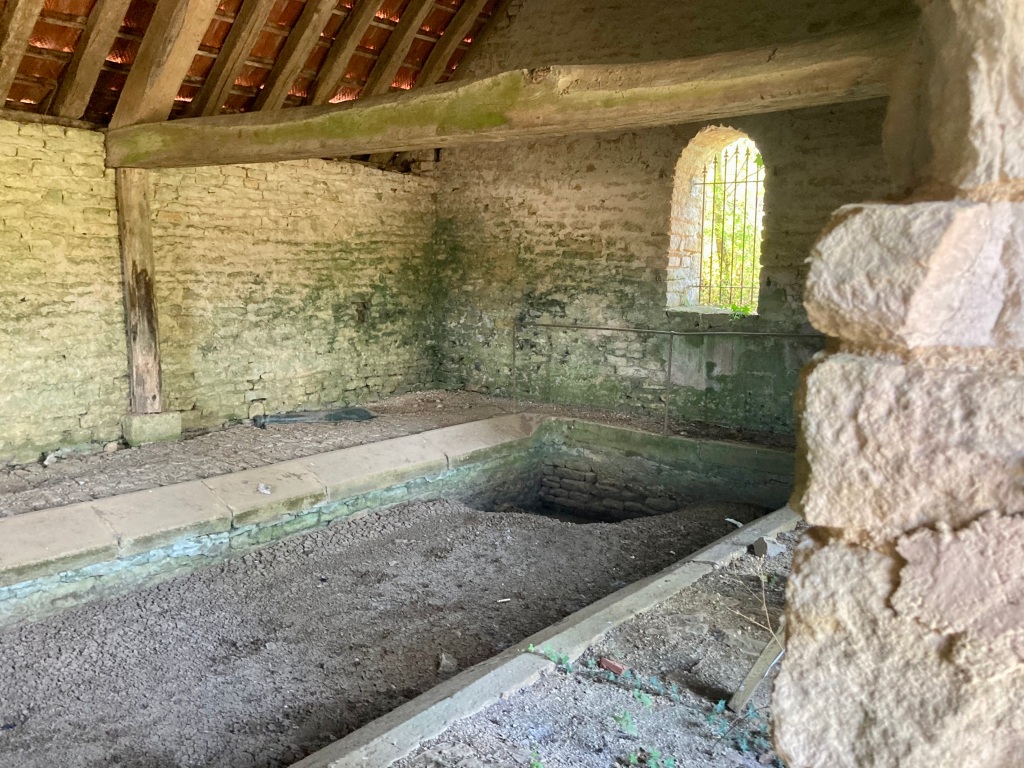
We carried on past more reminders of the stone history of the area – big quarries in the hills, and another stone built lavoir, at Perigny. This one, although signposted from the canal, was relatively hidden and unloved. It still spoke of its social history, silently yet eloquently.
Lunchtime was spent at Rougemont lock where some effort had been made to paint all the metalwork, from bollards to fences, in the VNF colours of blue and green.
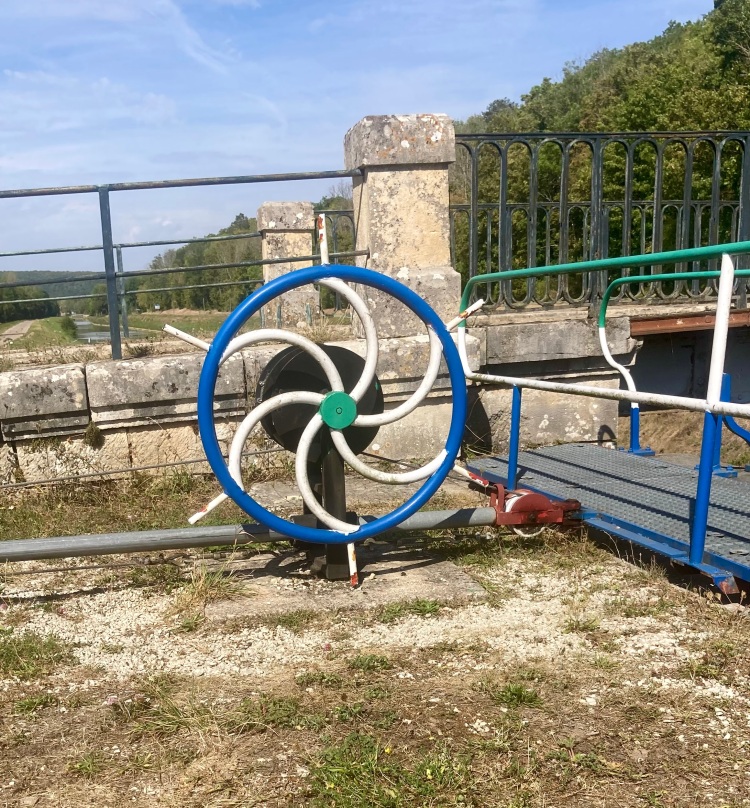
It all looked rather smart. When I commented on it to the éclusier he told us that he had done it all himself.
Well worth the effort.
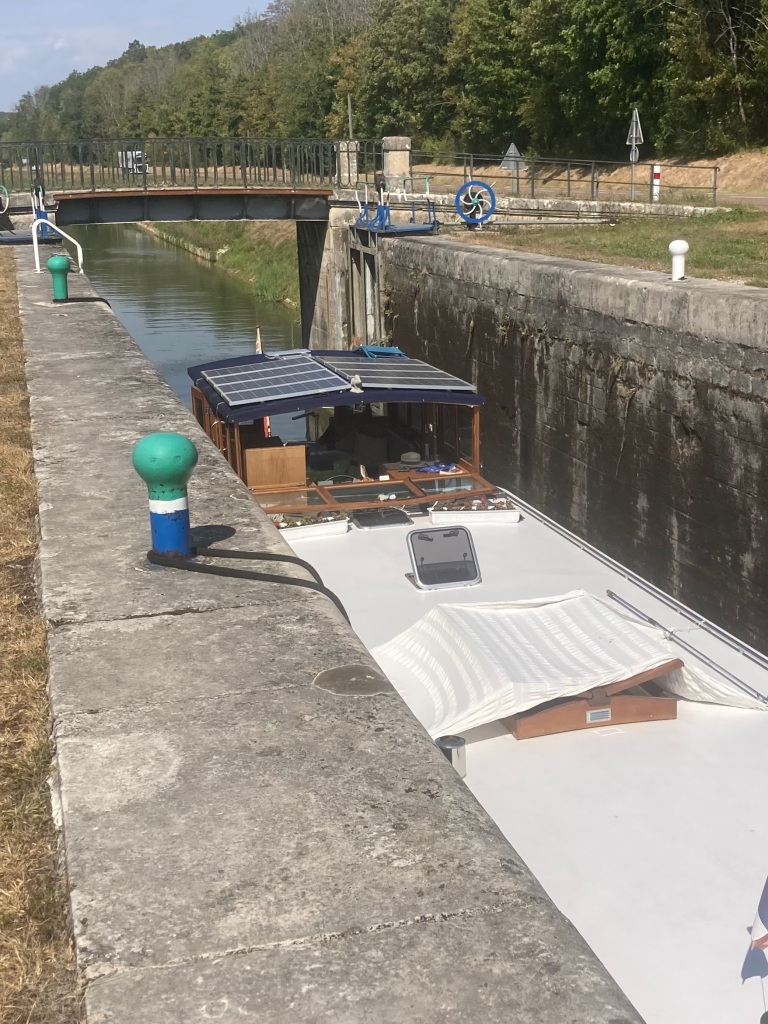
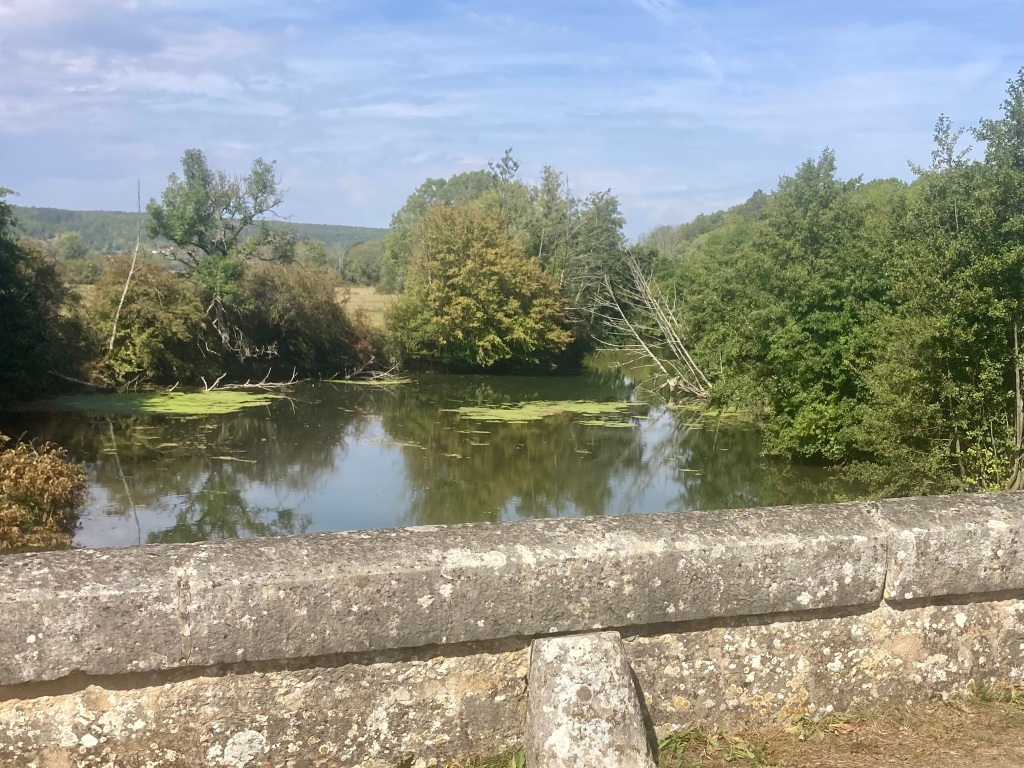

The river Armançon still ran alongside the canal, weaving its way nearer and further according to the topography. At Rougement the two are virtually adjacent.
It was still rather warm, and with my love of water I went looking for a ‘splash-point’. After crossing the old river bridge I found a clear shallow stream feeding into the Armençon – just right to cool the toes.

Next stop was Montbard.
The port there has quite a few finger pontoons for smaller boats, and some quay side for hotel boats and bigger barges like Calliope.
There was plenty of space, and peaceful views up the canal towards the centre of town.
Montbard’s most famous son is Georges Louis Leclerc Comte de Buffon. He was the reason that I wanted to return to the town and learn some of the historical facts about this 18th century scientist, especially his work in natural history. I’ll just give you a taste of the town.
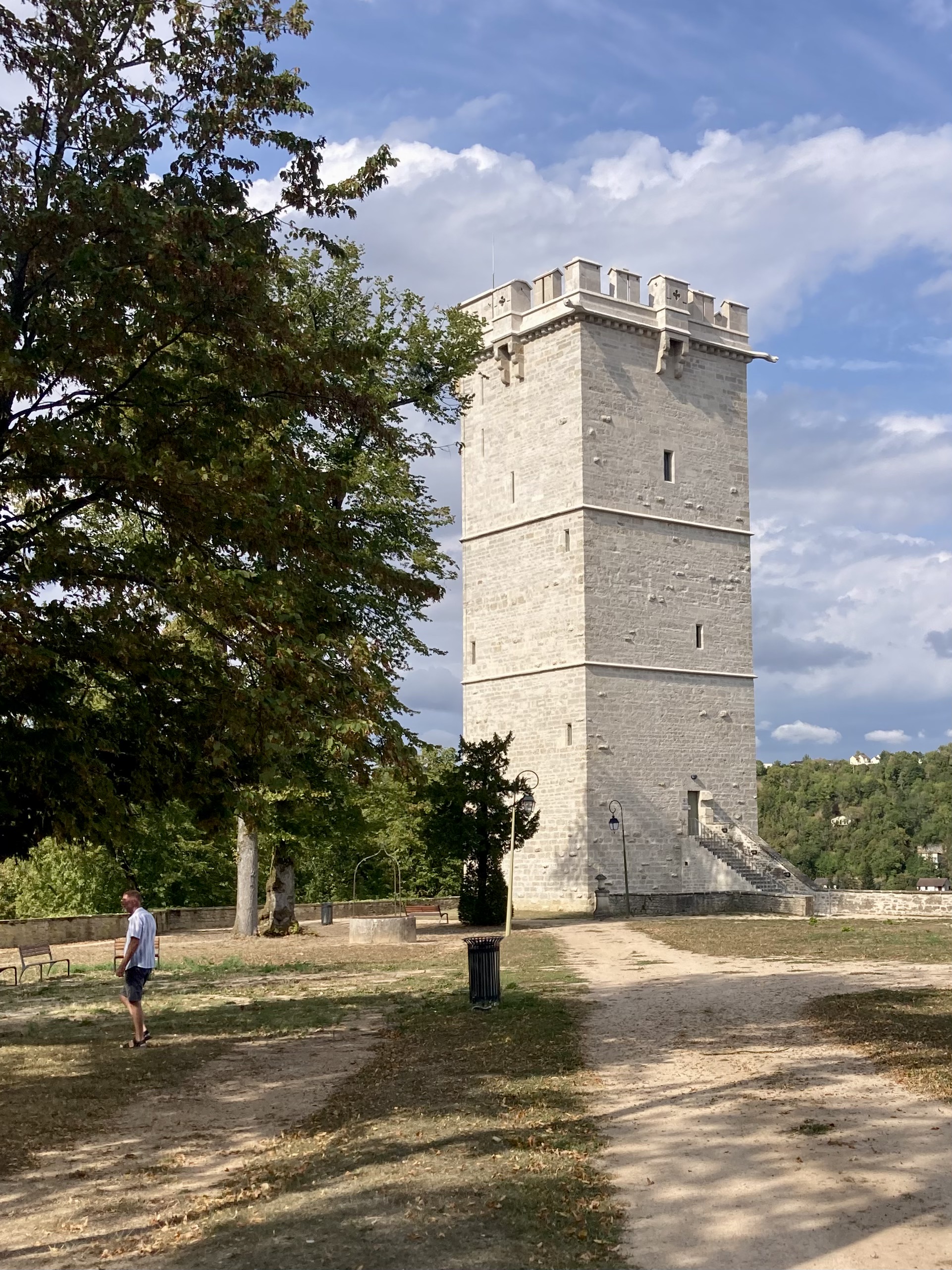


At the top of the town, on what must the Mont part of Montbard, is Buffon Park. The big tower pre-dates Buffon, but the smaller building with a red roof was his study. The ugly face on the right is part of an old fountain.

The views from the top across the town and beyond are beautiful from every angle.
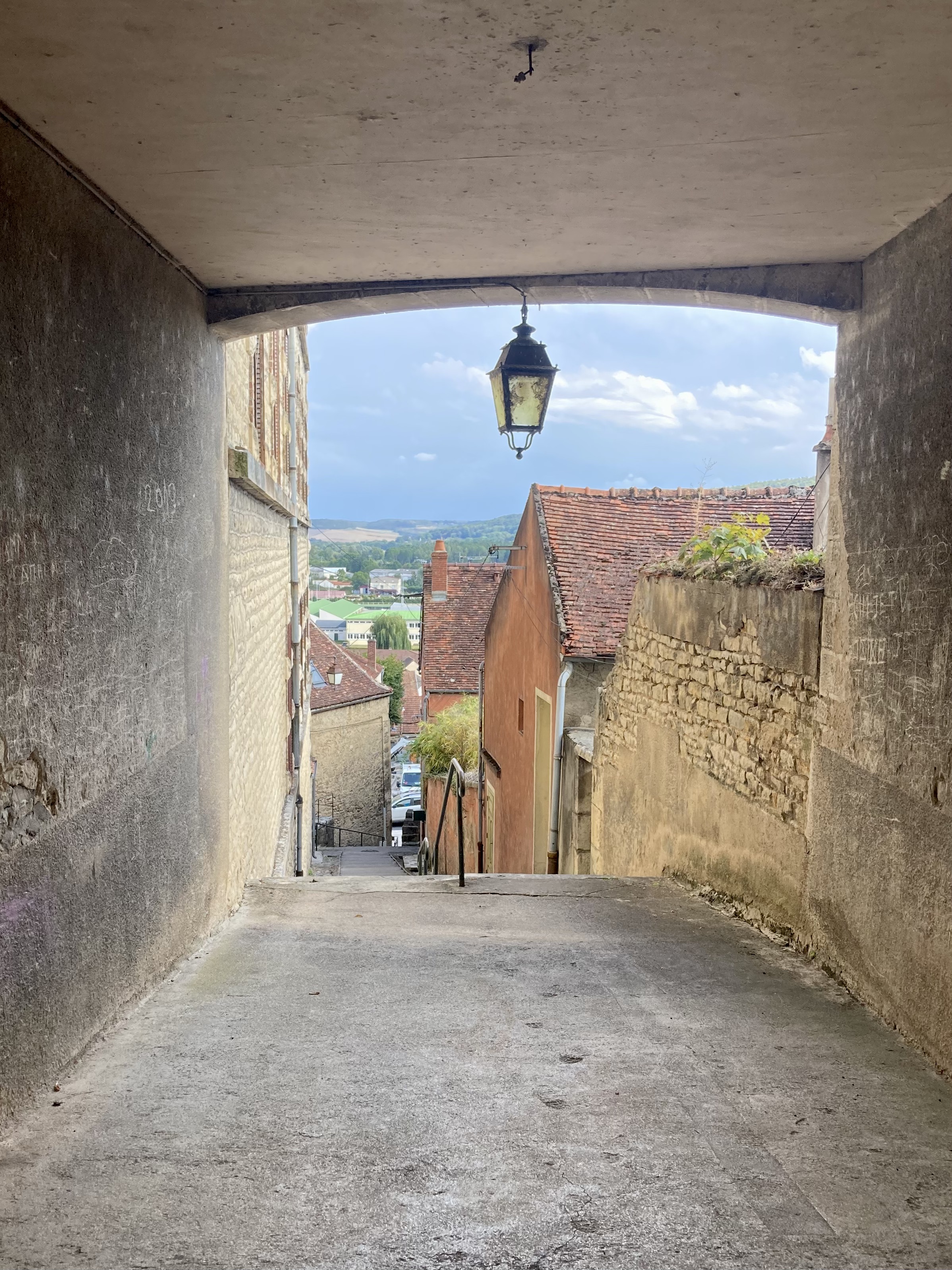
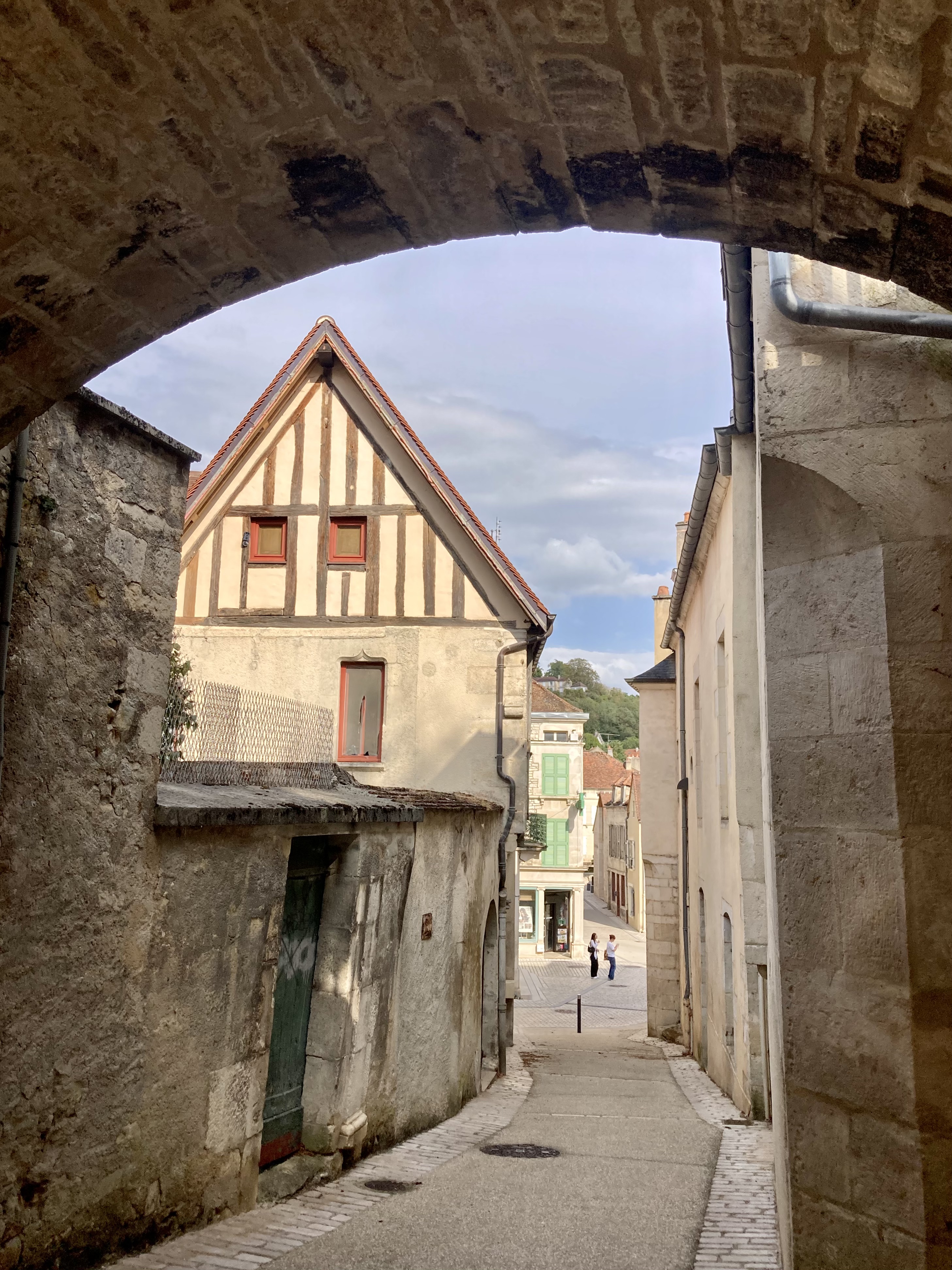
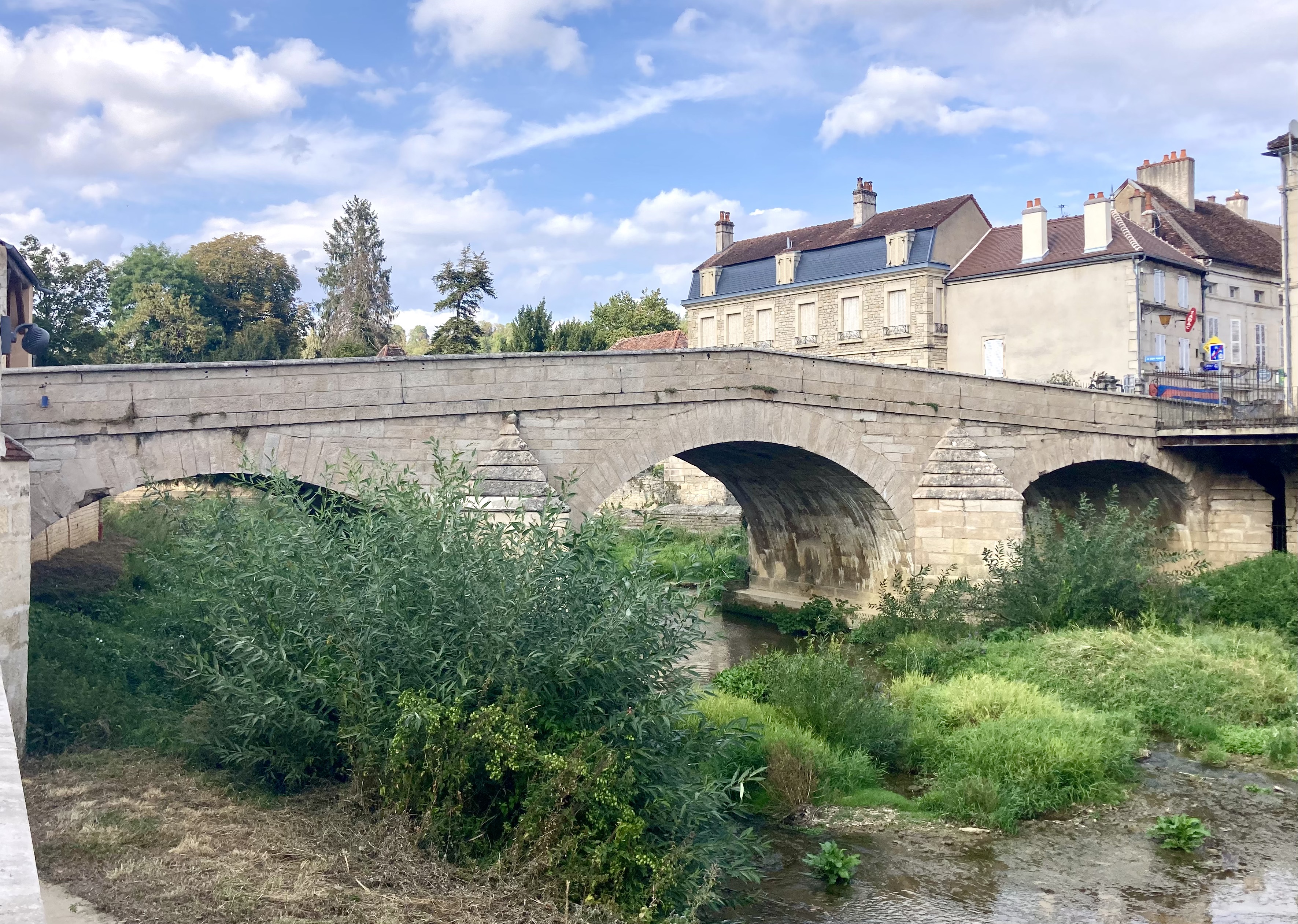
And also, much to our surprise, around the top of the mount the little streets and alleys of the old town are still quite intact, with La Brenne river flowing through the centre on its way to join the Armençon. The area is surprisingly lovely, and worth a good exploration if you have time.
But during our two night stop we had a visit from one of our éclusier friends with a serious question – when did we expect to get to the top? This was when we found out that the VNF wanted to close the Yonne side of the canal on Saturday 16th, just four days, 64 locks and 55 kms away……..
It turned out that we were more or less the last boat through, and they were following our progress carefully. If we needed a bit longer I think they would have allowed it, but we decided to go for it and be in Pouilley-en-Auxois basin by Saturday afternoon; deep breath, enjoy the last evening, and on we go!
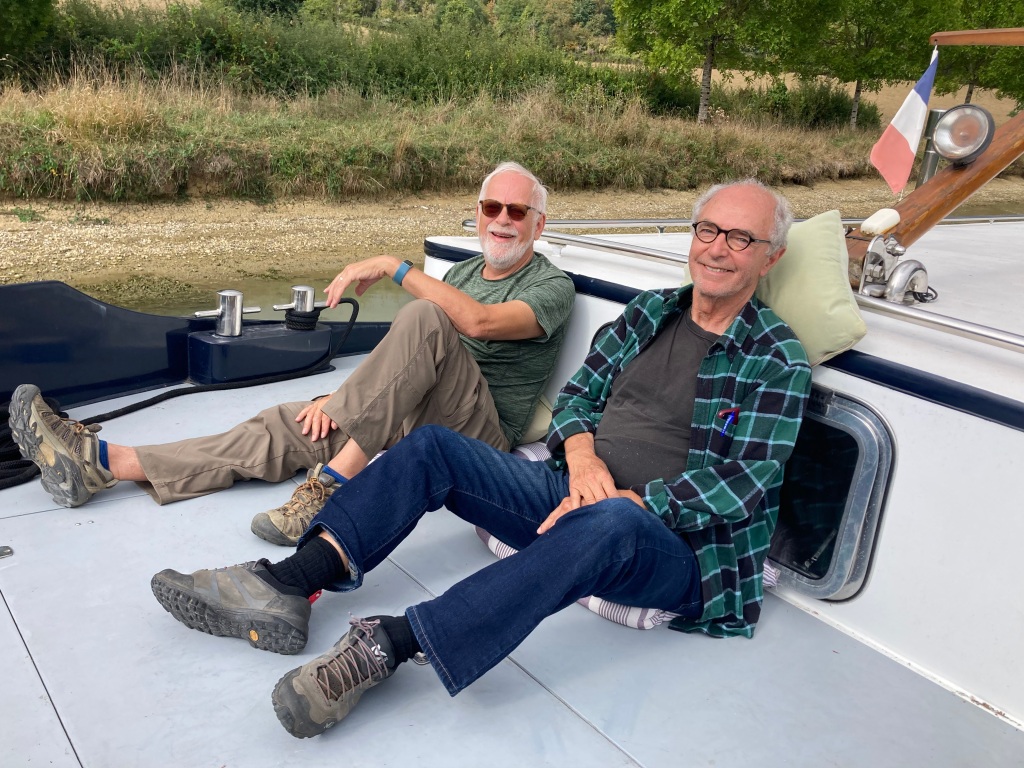
For the first part of the journey we were joined by two surprise ‘guests’. One of them had stopped by Calliope the other day, and in the course of chatting to the Captain had asked if he and his mate could come on board for a day; they would bring lunch!
They were as good as their word, arriving laden with lovely fresh French produce, including wine!
We stopped at Grignon for lunch, tying up alongside an old, seemingly deserted, hotel barge. And tying up next to use was a small hire boat that had been travelling with us for a day or two, hurrying back to its hire base at Venarey-les-Laumes before the canal closed.
One of our guests enjoyed an after lunch snooze!
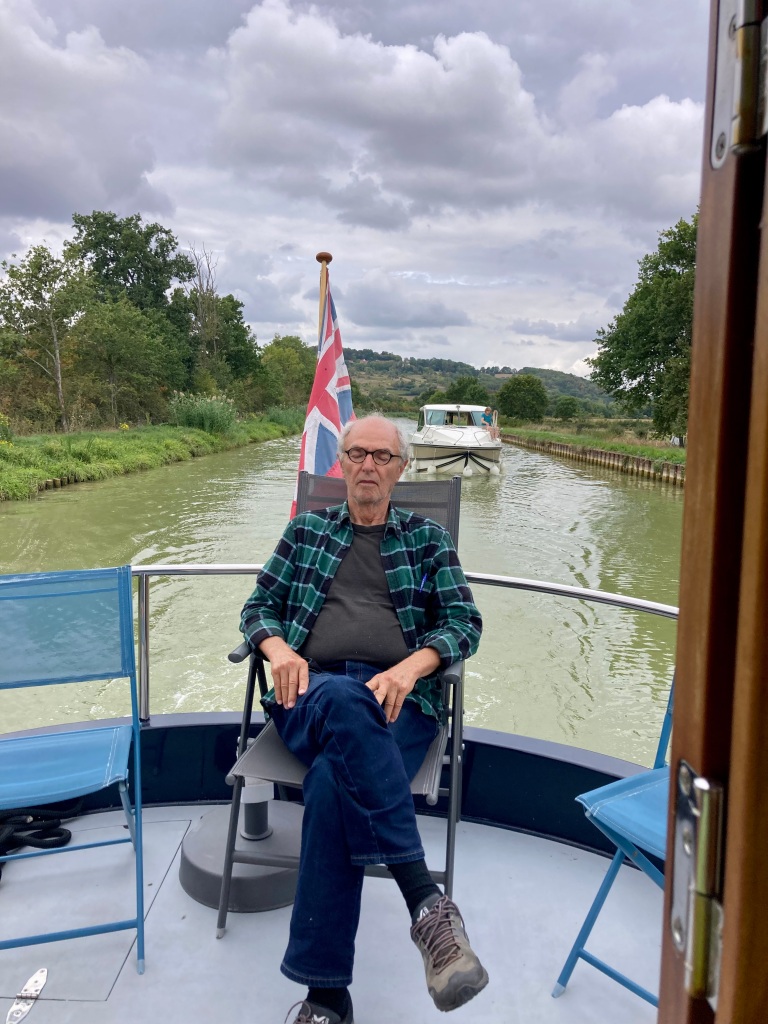
I think I have mentioned before that our gentle retirement days preference is to finish cruising by lunchtime and have the afternoon for local exploration. But with the added urgency for this part of our journey we continued longer than usual, ending up at Venarey-les-Laumes ourselves.
The quay for boats that are passing through is being redeveloped, and will be a nice place to stop. Already it is equipped with a good, long, firm mooring and there is evidence of a new shower block plus a small park being built.
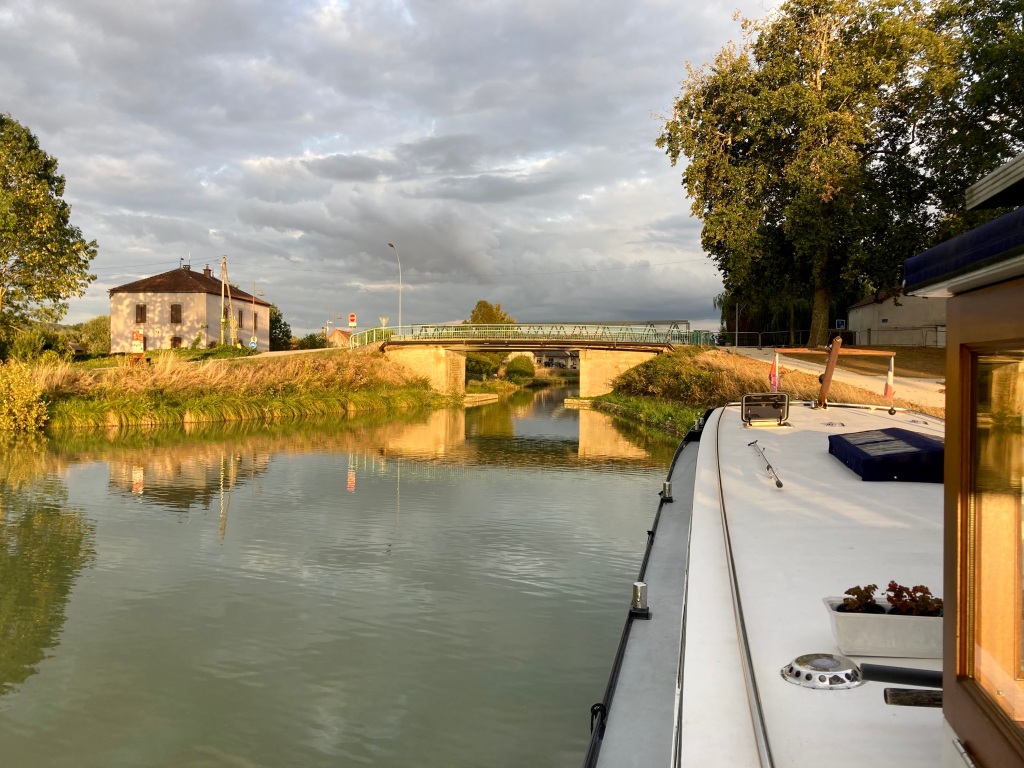
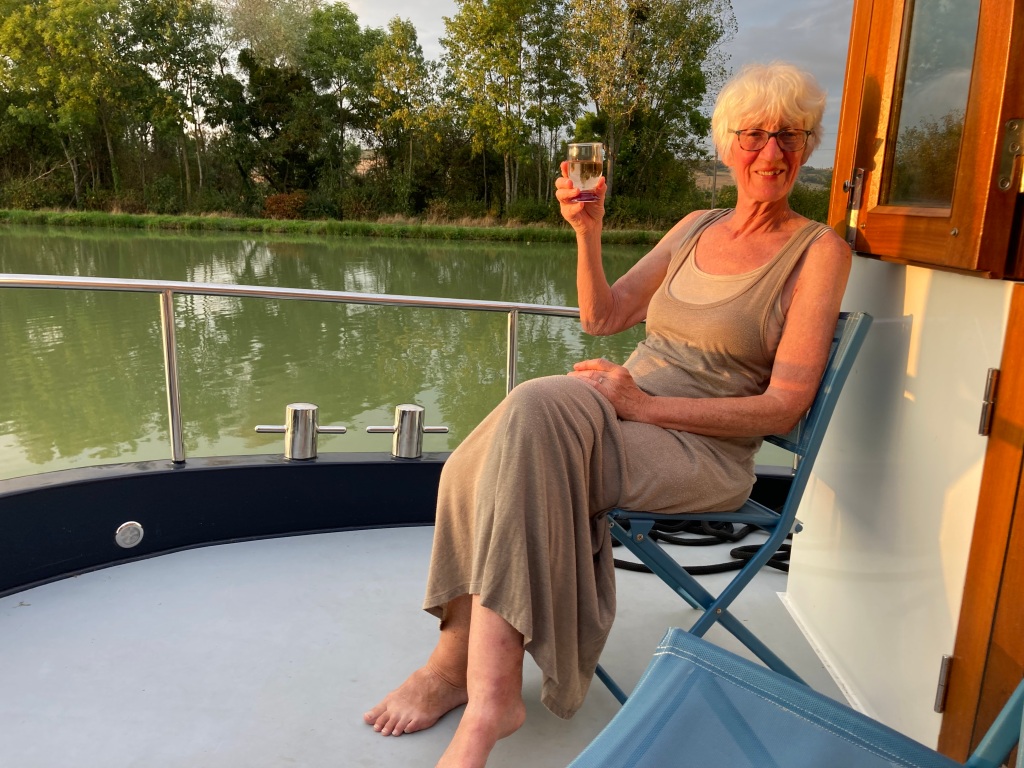
As the sun began to go down at around 1930 it coincided with time for cool refreshments on the back deck. Another day spent in paradise!
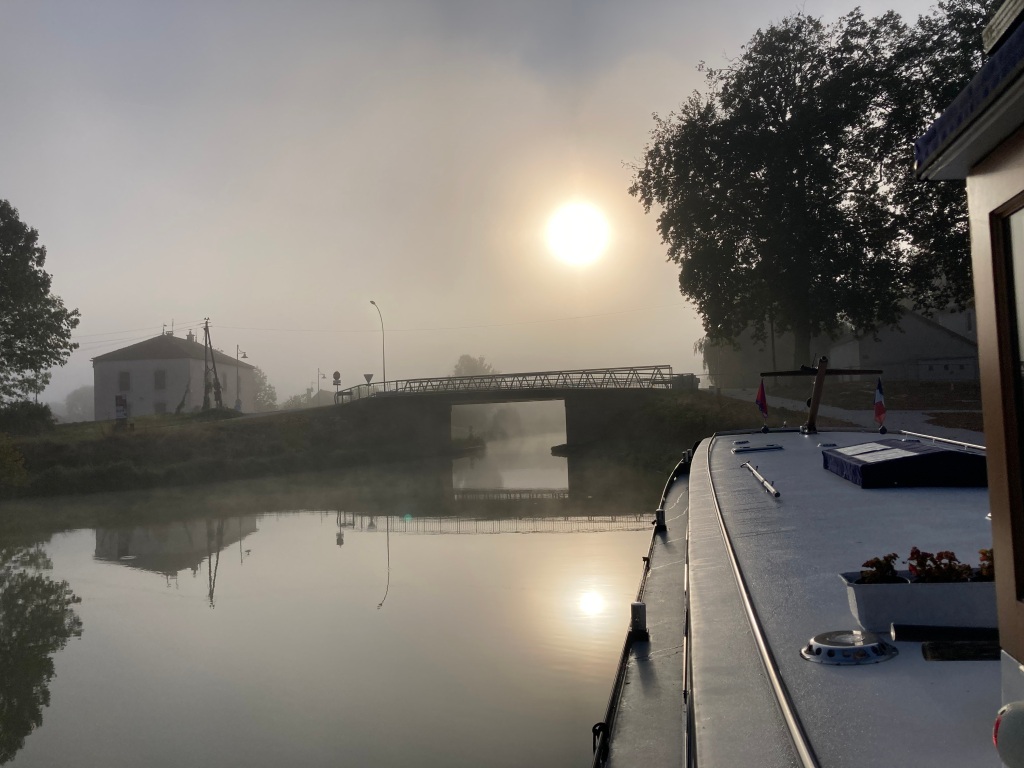
After such a lovely evening we were surprised to find the first real autumn mists of the season when we woke up next day.
But it was clear that the sun would push through and win before long, so we were onward on our upward journey by 0900 as usual.
It was to be one of our exceedingly upwards days, with 29 locks between us and the next chosen mooring at Marigny-le-Cahouët. It was to be a 7 hour day, with the usual one hour lunch break, so we got ready to enjoy the trip; a positive attitude always wins through.

Within half an hour the mists had cleared and we were up through our first lock of the day, now accompanied by two éclusiers. From now on we mostly had two teams of éclusiers with us, overlapping each other and preparing the locks in front of us as we traveled. With all these fabulous workers there was little for us to do – but we were glad we had stocked up on beer in Montbard as we like to give a couple of ‘thank-you’ Winnie’s to each éclusier at the end of each hot working day.


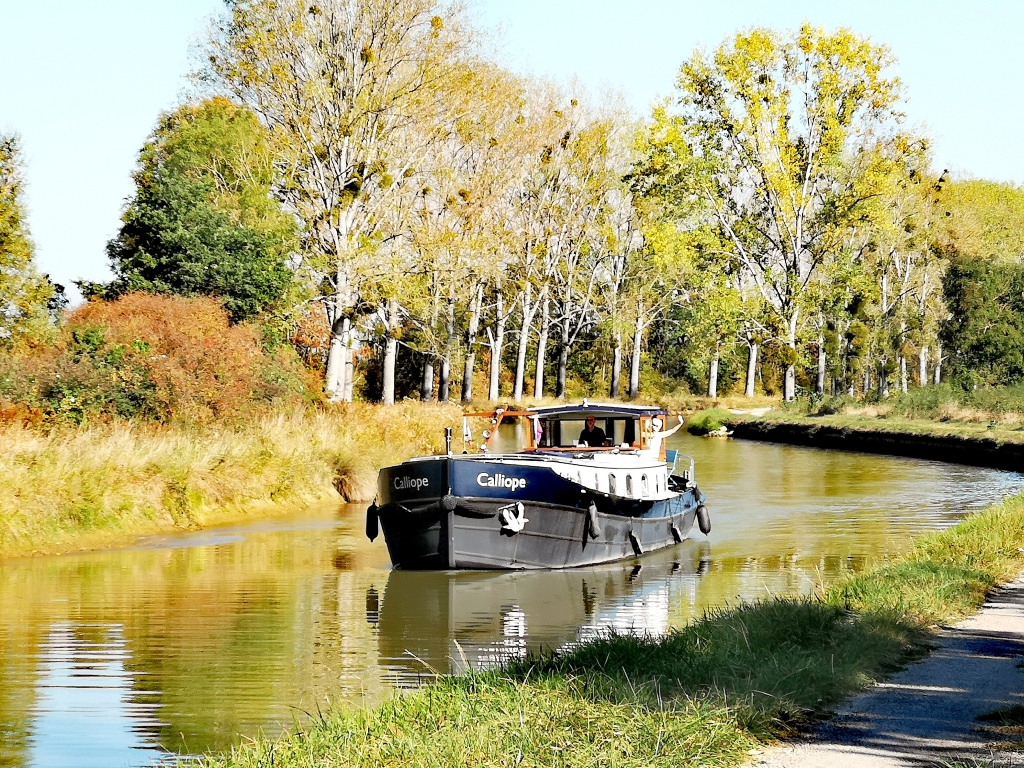

With so many éclusiers it is not surprising that one had time to take photos of Calliope – always welcome as when you are crewing on the boat it is not always possible to jump of for photographic moments!
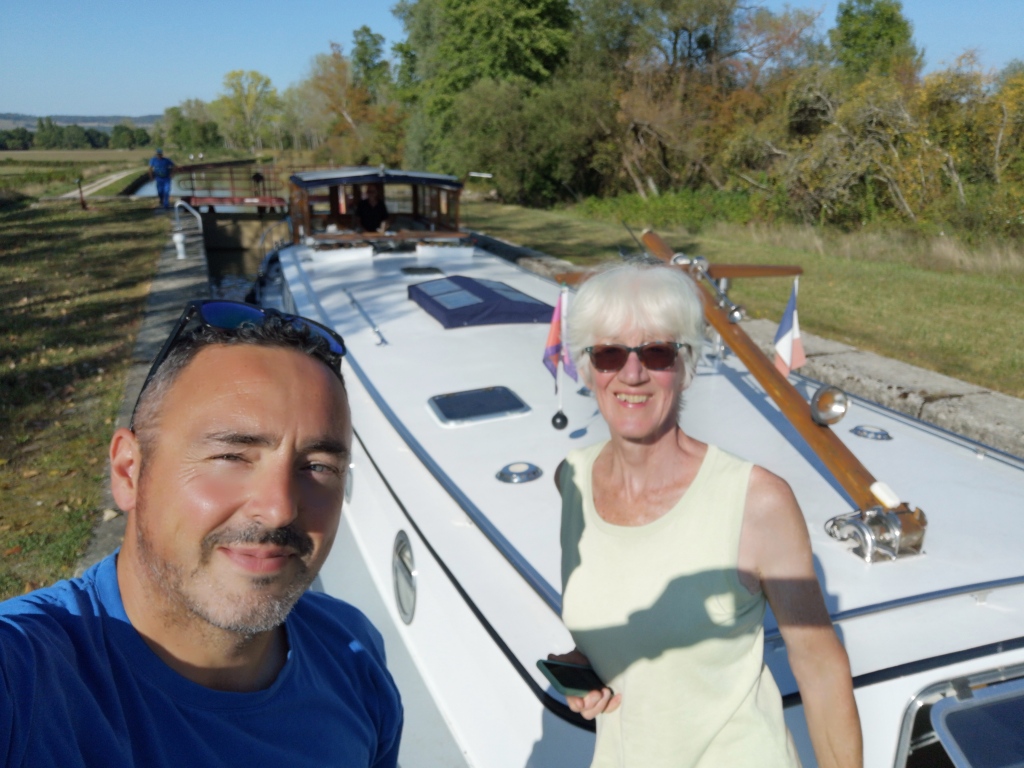
And here he is – our photographer éclusier and me.
We thought we were the only boat on the canal up in this stretch, so we were surprised when the éclusiers told us, in French, to be prepared to pass four boats going in the other direction – in a fairly shallow section. This seemed rather unlikely to us …….
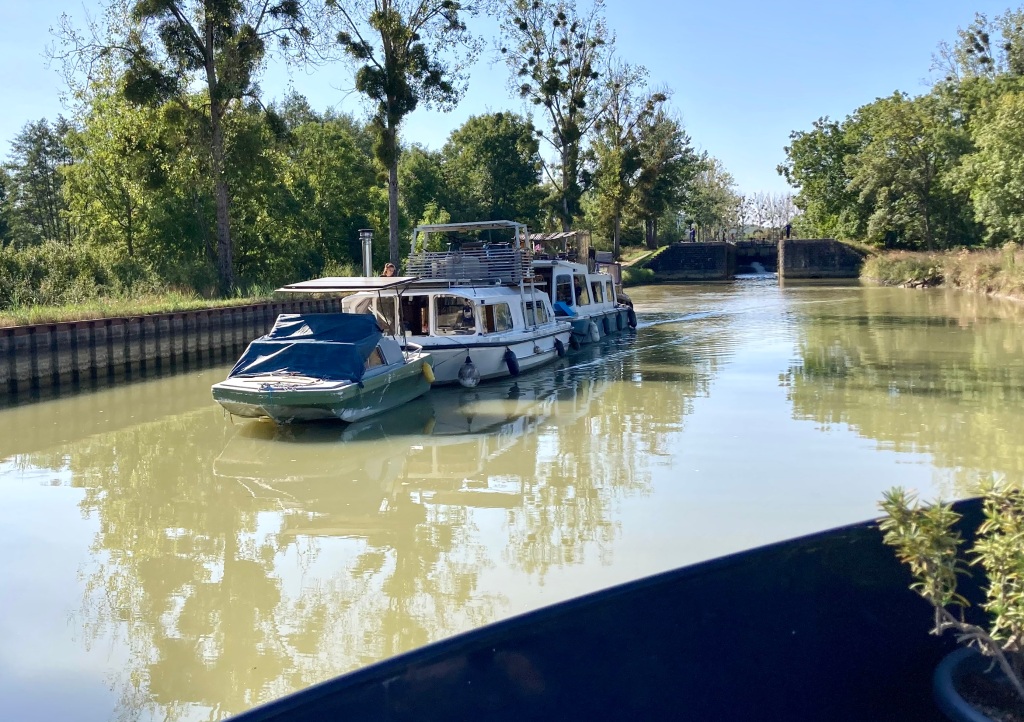
But we soon saw what they meant.
Four boats roped together and travelling as one came towards us, presumably on there way to a boat yard for maintenance or restoration.
The gentle sail-past was fine, and friendly greetings were exchanged.
Many of the 29 locks are really close together – just 150-250 meters in some cases. Some of them work as a chain, so when there are more boats around you might have to wait for some boats to coms down through a chain before you set off up the same set of locks.

Occasionally there is a widening of the canal where groups of boats can wait together for their turn. But for its, apart from the collection of 4 boats we had passed, there was nothing else coming our way that day.
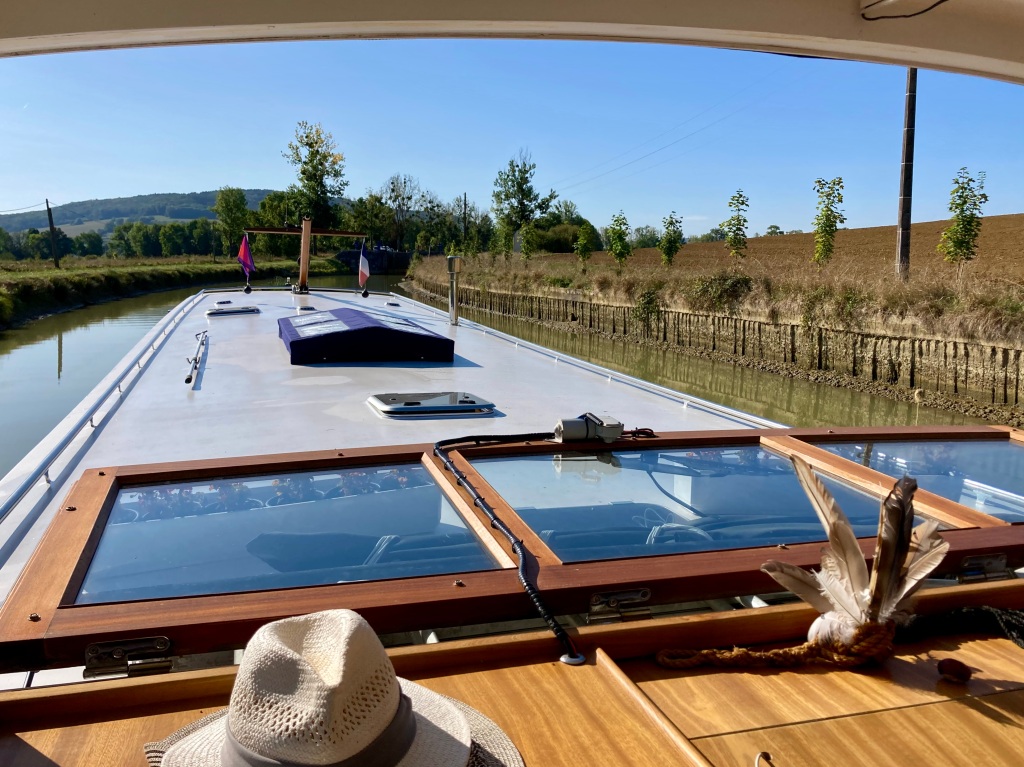
With windscreen down, sun out, and two teams of supportive éclusiers we could take full delight from our progress and the French countryside.
😁
At the same time our éclusiers were working hard for us, out in the sun.
We offered coffee and cold drinks to them all – and biscuits until we ran out of them!
In a way we were all one team, aiming to get through the 29 locks of the day together, each with our part to play.
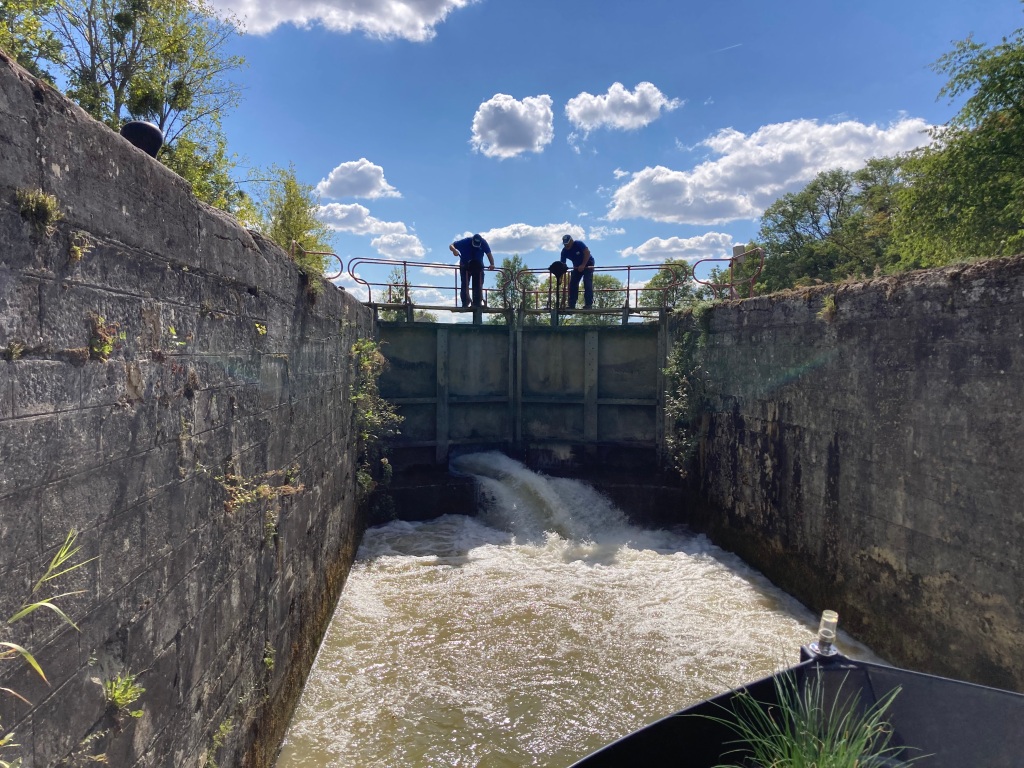
We had been recommended Marigny-le-Cahouët for our next overnight stop – a good distance for a day’s cruising and a nice place to moor.
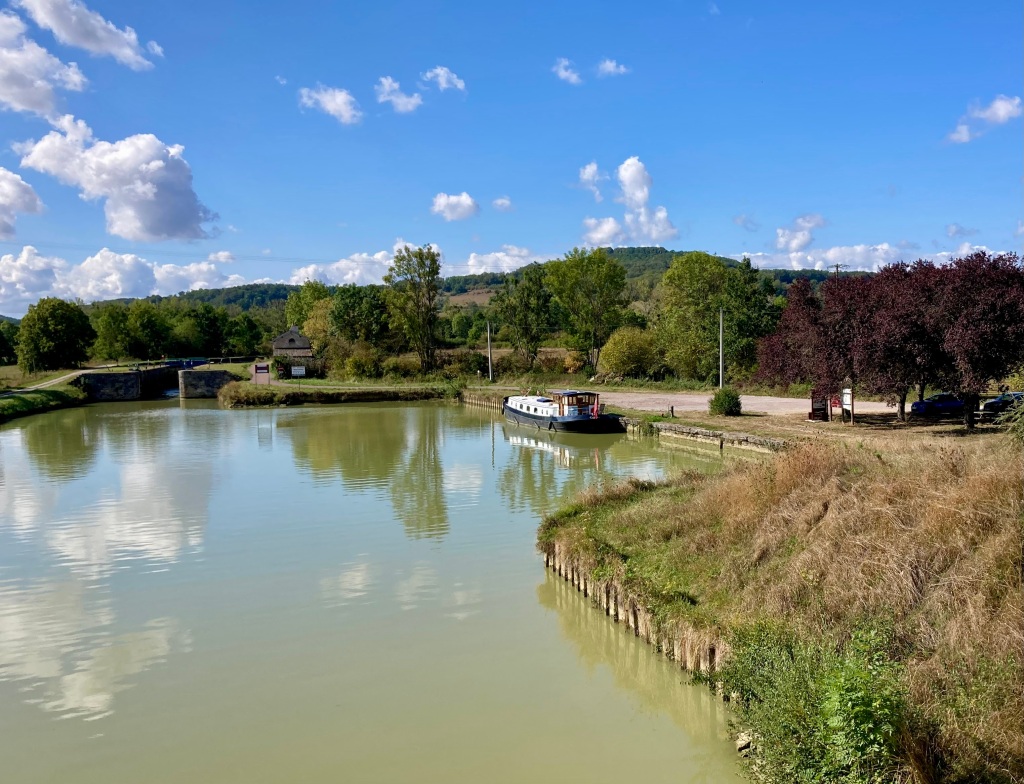
Our designated lunch stop on the way there was between lock 45 and 46 on the Pouillenay chain at a place where the canal widens and has another of the good stone quays. There must have been a local industry that used the canal for transport in previous times.
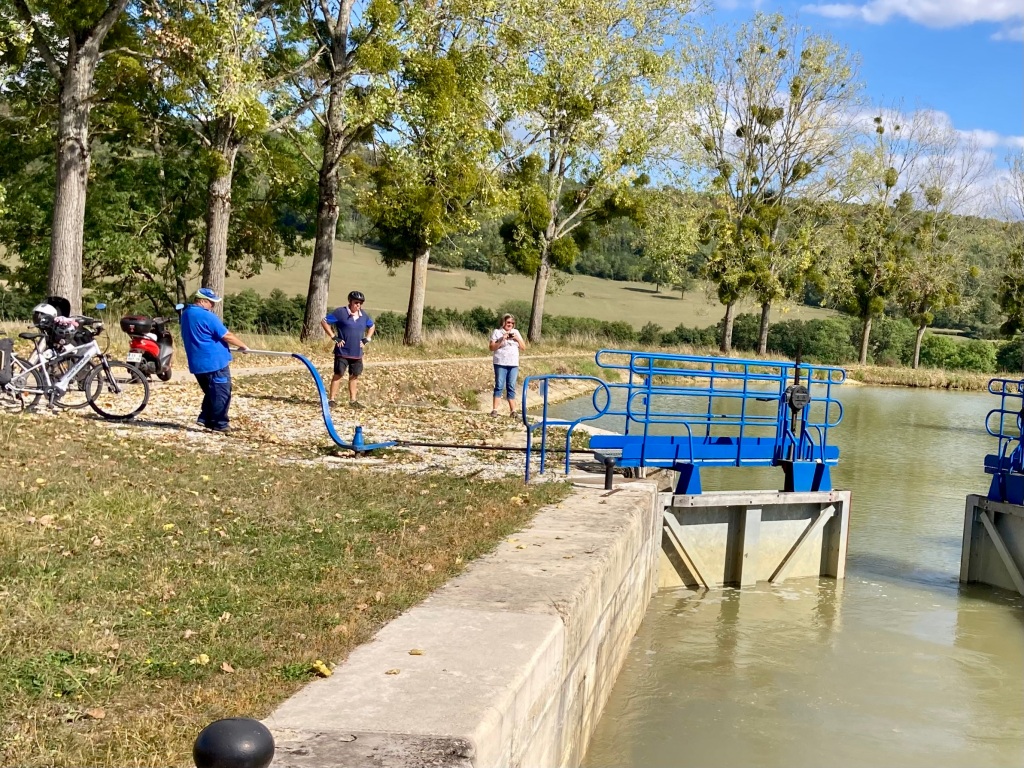
This chain has 15 locks over about 4 kilometres so you can see why the éclusiers might want a break part way through. Every one of these locks is manually operated – it is people power that opens and closes the heavy gates and turns the windlasses that let the water in or out.
We were getting quite high now, and loving the extensive views – when we had a moment to look round at them! It’s quite focused work for the Captain as well, steering into a succession of locks. But its a good challenge at the same time – we love the physicality of some days of life on Calliope as well as the more relaxed moments.
And it became a bit more challenging and physical when we reached Marigny!
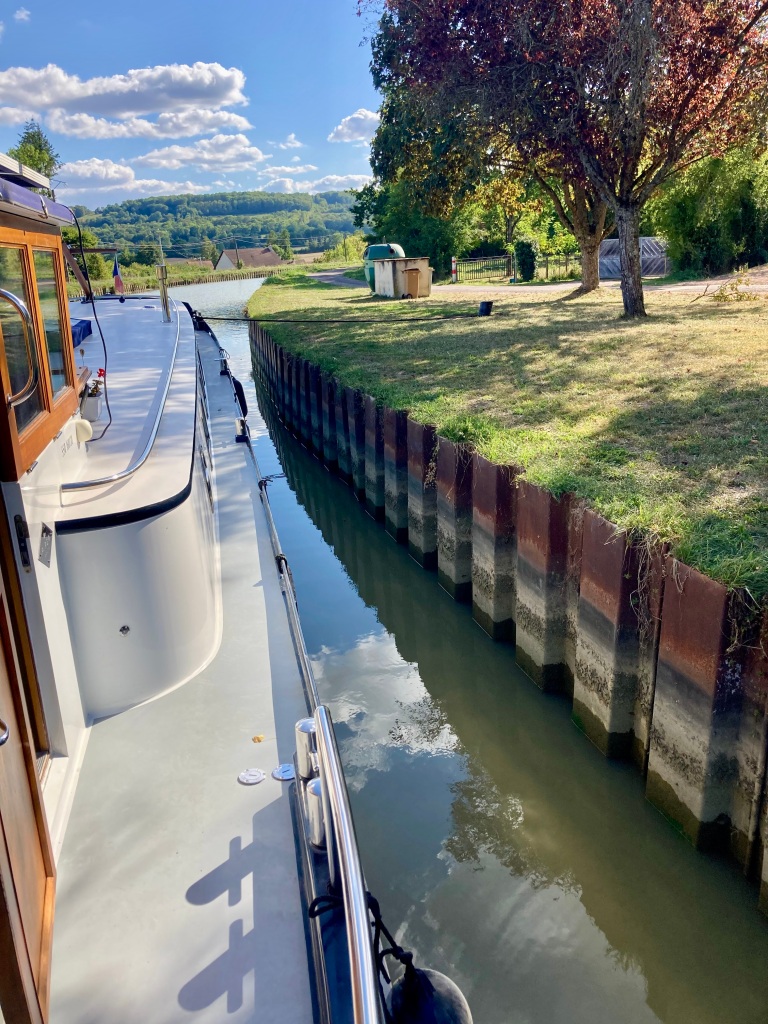
We came through the ;ast lock of the day just after 4pm and said good-bye and thanks to the éclusier teams.
Then, as we came into moor just above the lock, we rather swiftly discovered that there was not enough water for us to get into the side. Also the bollards were set quite far back from the edge, making roping them an interesting task!
After a couple of attempts I managed to jump ashore and get a bow rope round a bollard, but then it was difficult to get it back onto Calliope and secure it. So a quick clove glitch round the bollard had to suffice before I came to catch a stern rope and secure that as well.
Phew, we were moored for the night, even though we were a good meter off shore. But we knew there would be no boats coming past to disturb us, so we would be perfectly comforable for the next few hours.

In fact taken from a different perspective it looks a lovely mooring.
It was a little more interesting by next day. We were ready to set off at 9.00 to meet the day’s team at the next lock. But Calliope was not so ready. Overnight the water levels had dropped a bit more and Calliope had gently settled her stern into a soft mud berth!
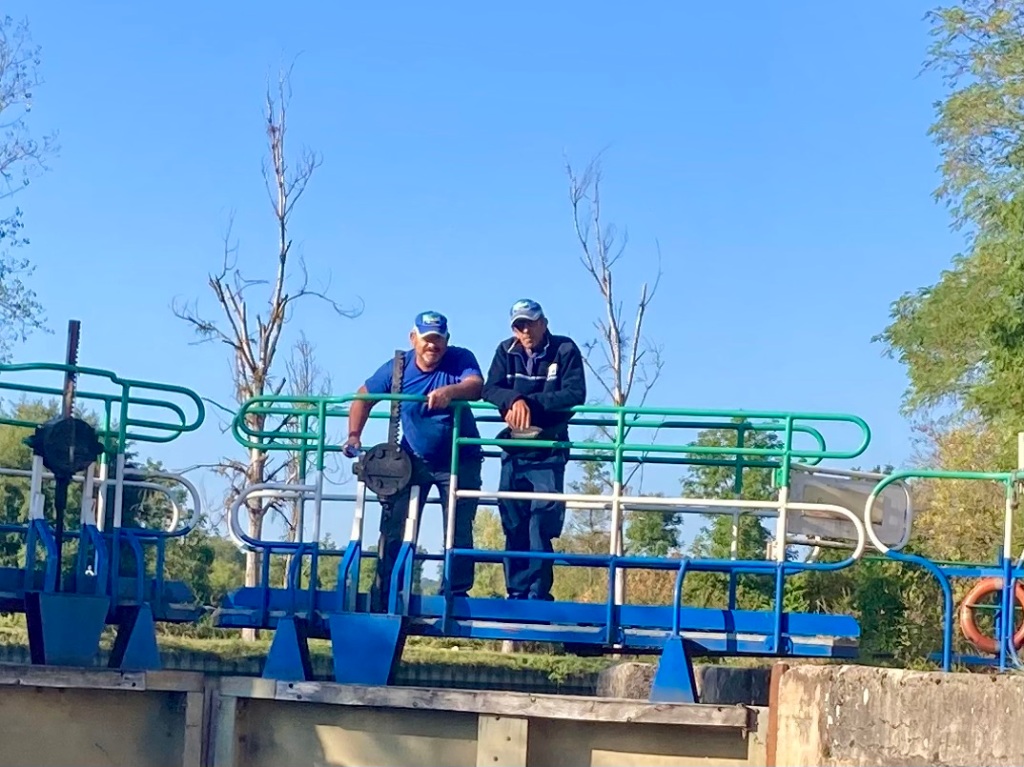
Stu and I tried the usual methods to get her moving, but we needed to call on the help of the éclusier teams as well to push her off from the bank. They were quickly with us. One went to let more water into the bief (pound) the other three used our boat hooks to push her out; within minutes Calliope was on her way again.
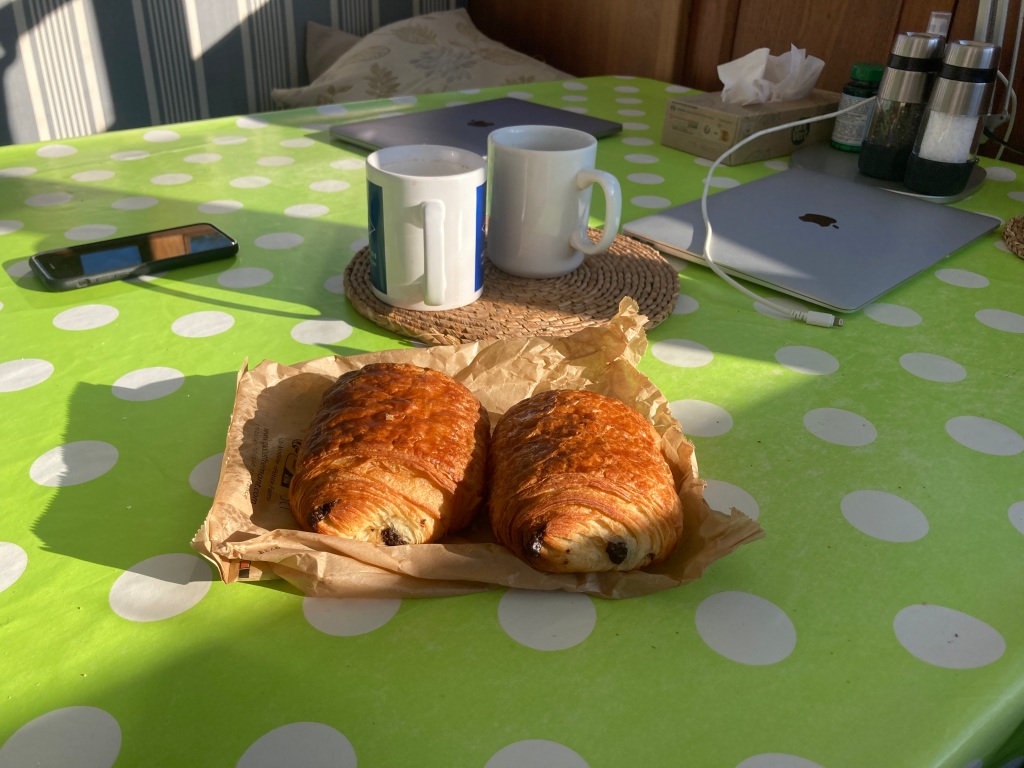
Not only that – one of the éclusiers, so pleased with the beer we gave him the evening before, and knowing we were nowhere near a boulangerie, brought us fresh pain au chocolat for our breakfast!
Moments like that are to be treasured.
We now had one more night before we reached to top of the canal and planned to spend it at Pont Royal – a mooring that we rather like.
Before we get to the top I thought I would share a few characteristic views from the Yonne side of the canal, starting with some lock keepers houses, in various states of (dis)repair.
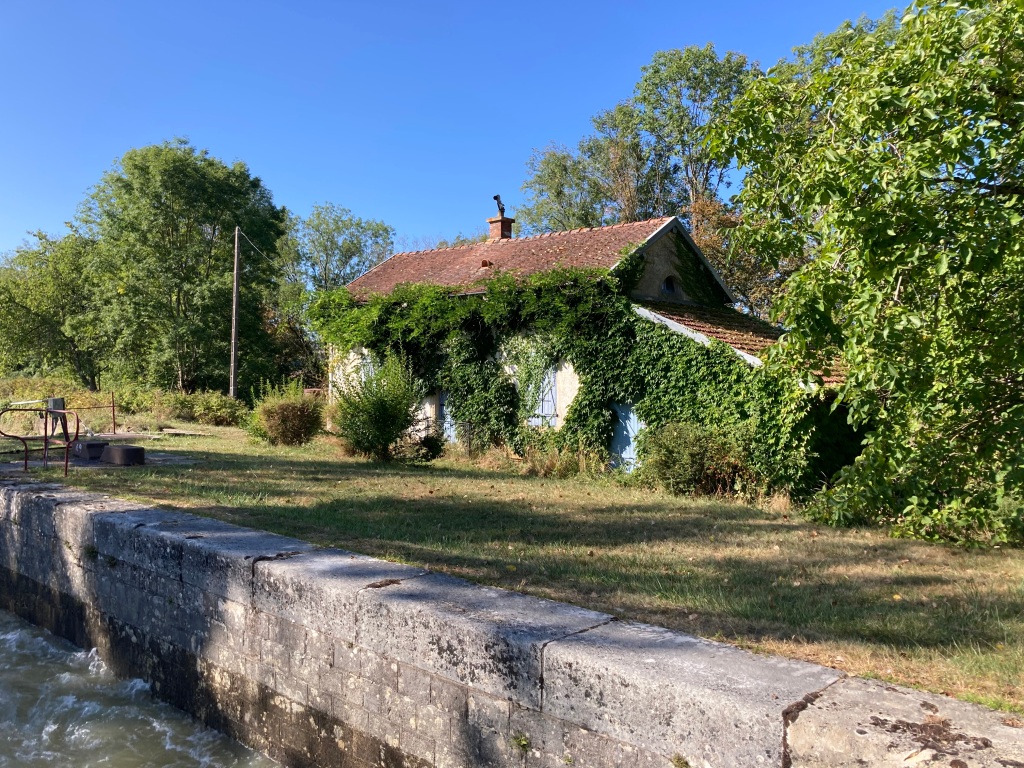
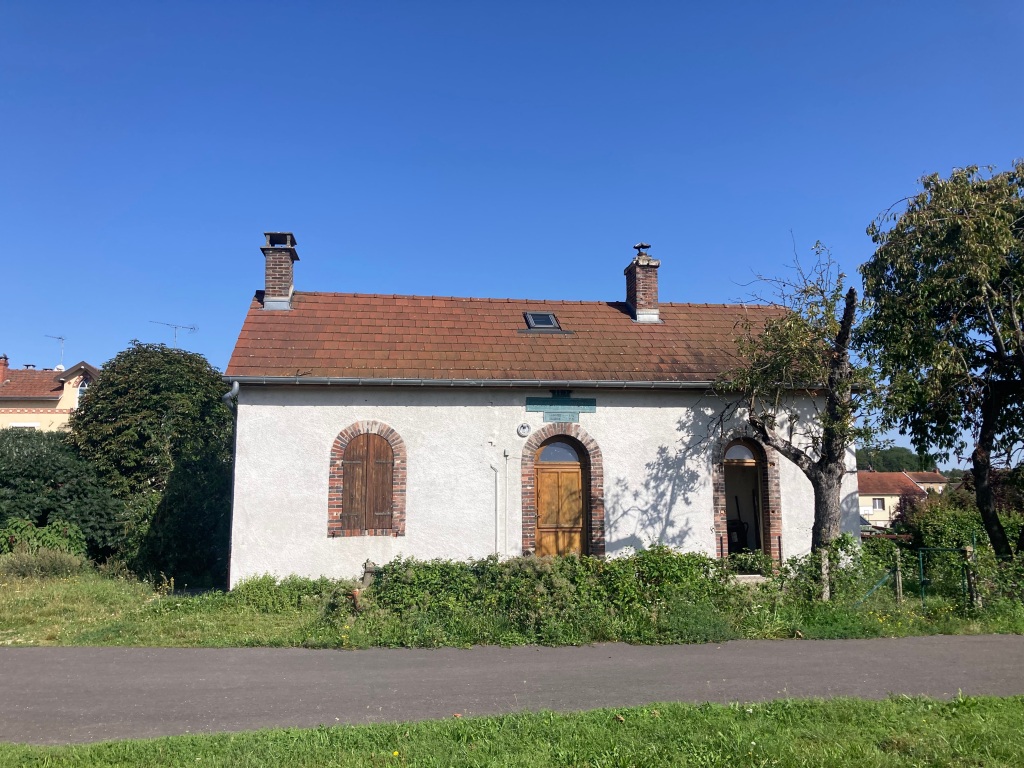


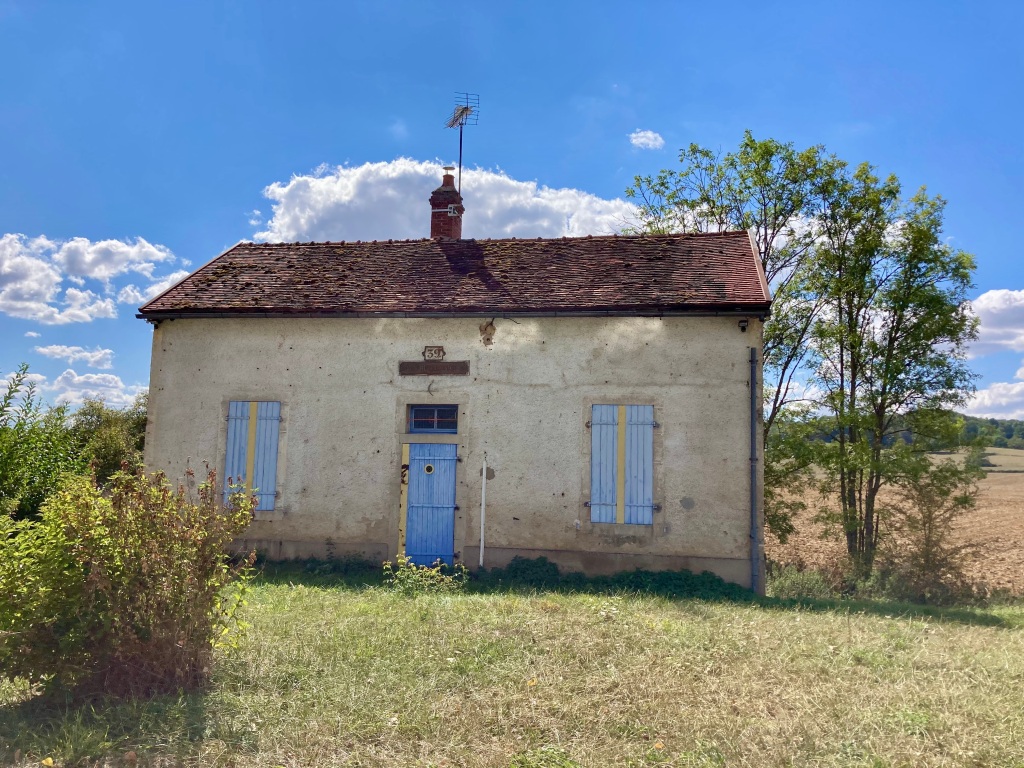

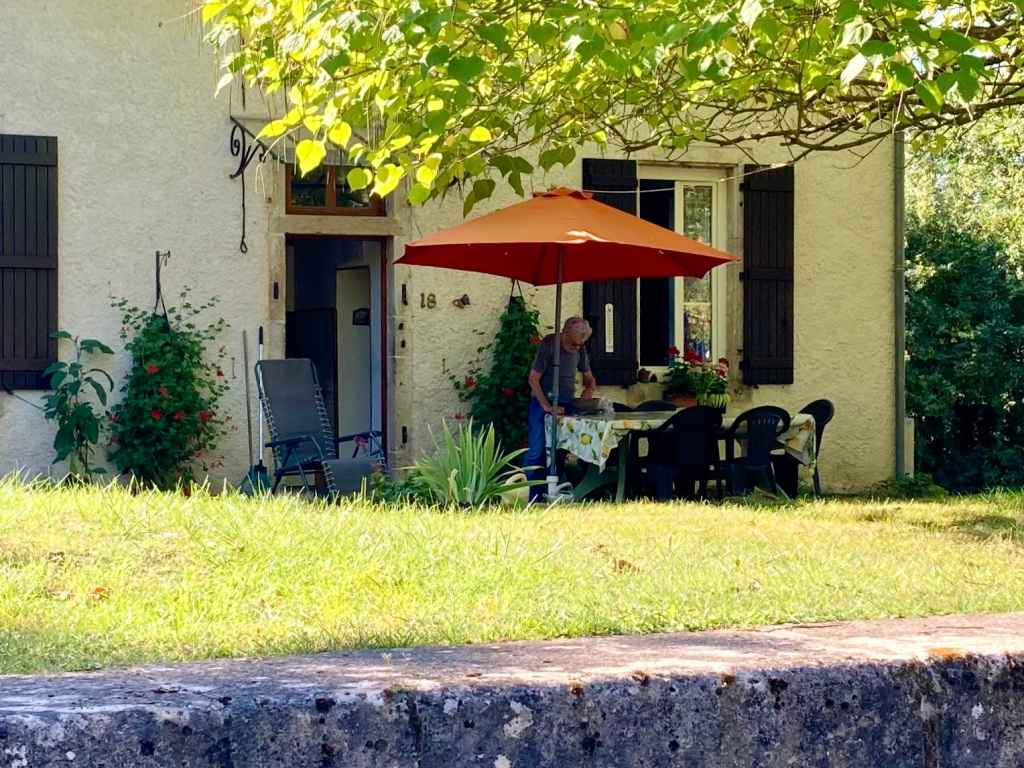
As you can see some are inhabited and others not. The photo with the parasols is at a lock house that is now a restaurant. While the éclusiers and us toiled under the midday sun the lucky diners sat in the shade watching on!
The last photo shows an elderly lady peeling her walnuts. Apparently she has lived there many many years, enjoying the peace and solitude; that lock, number 18, is off road, and miles from anywhere.
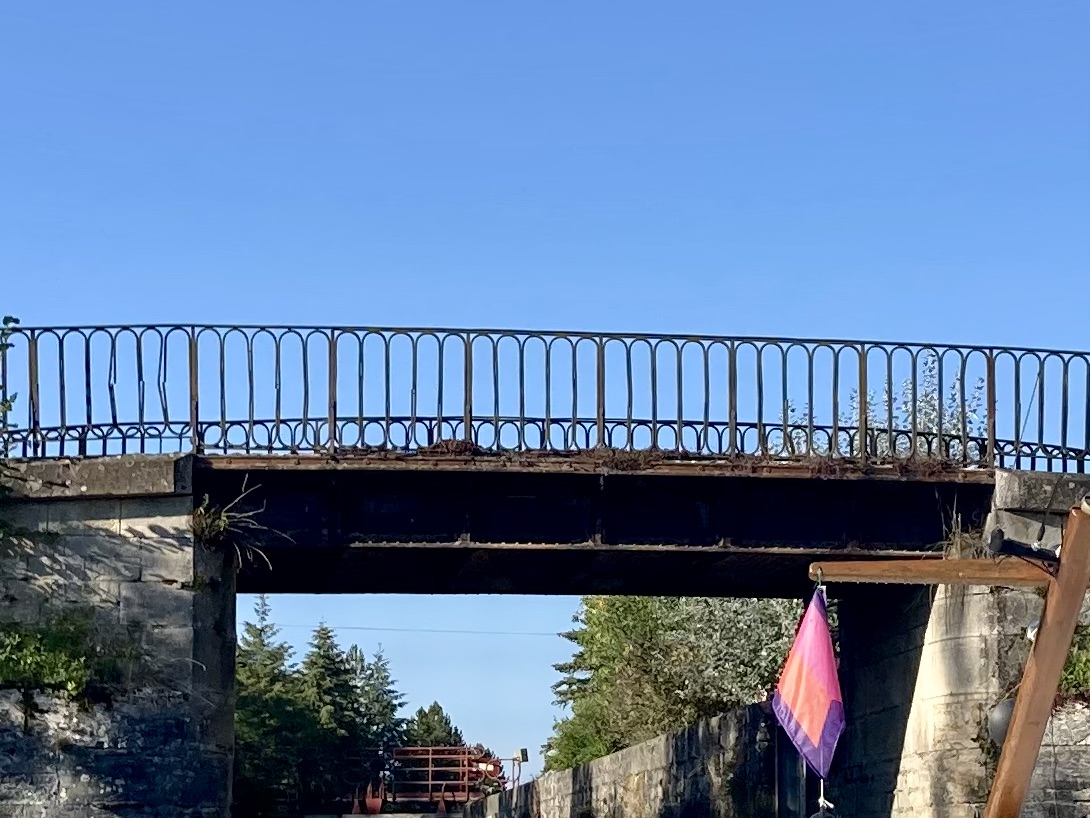
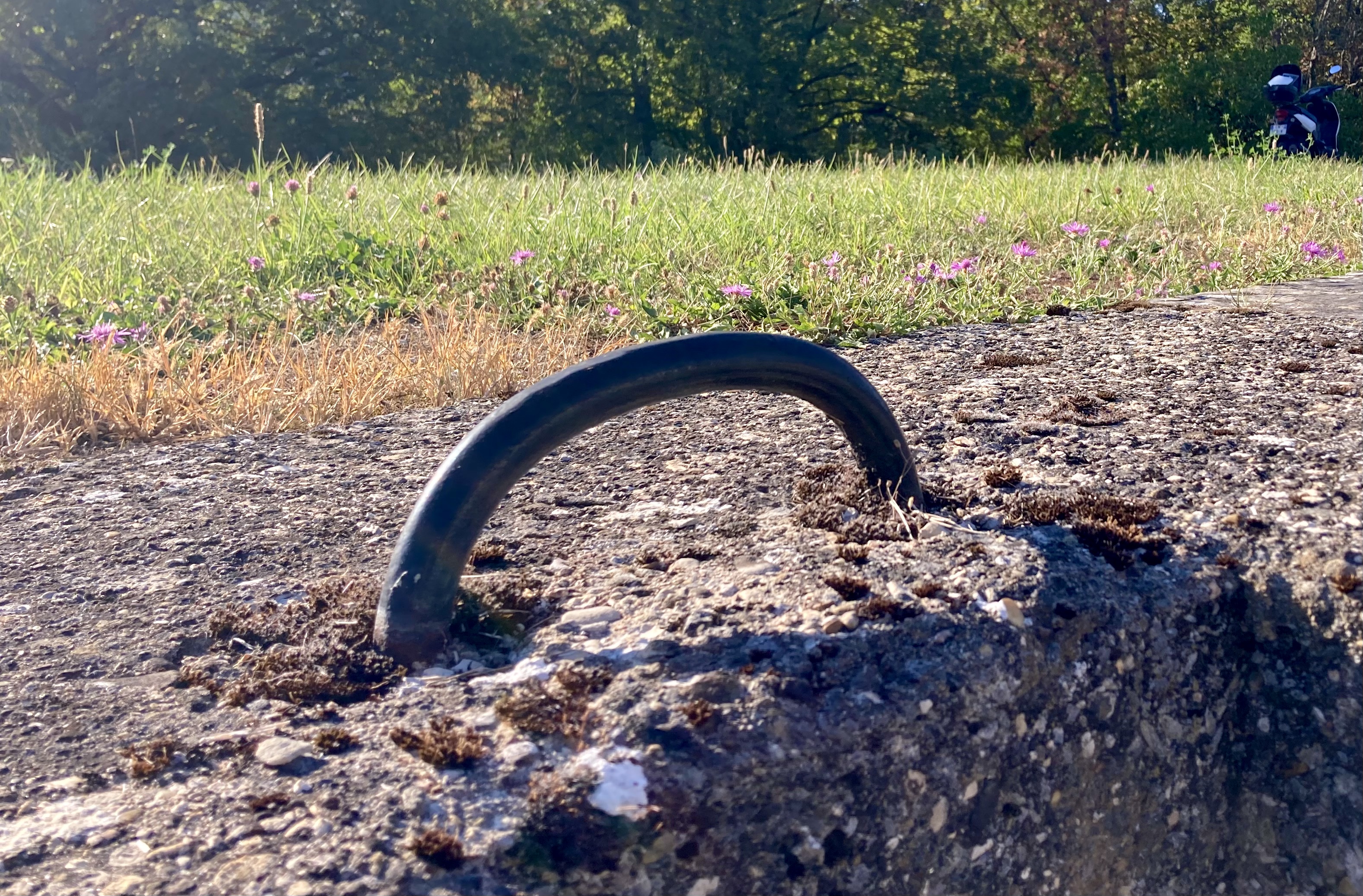

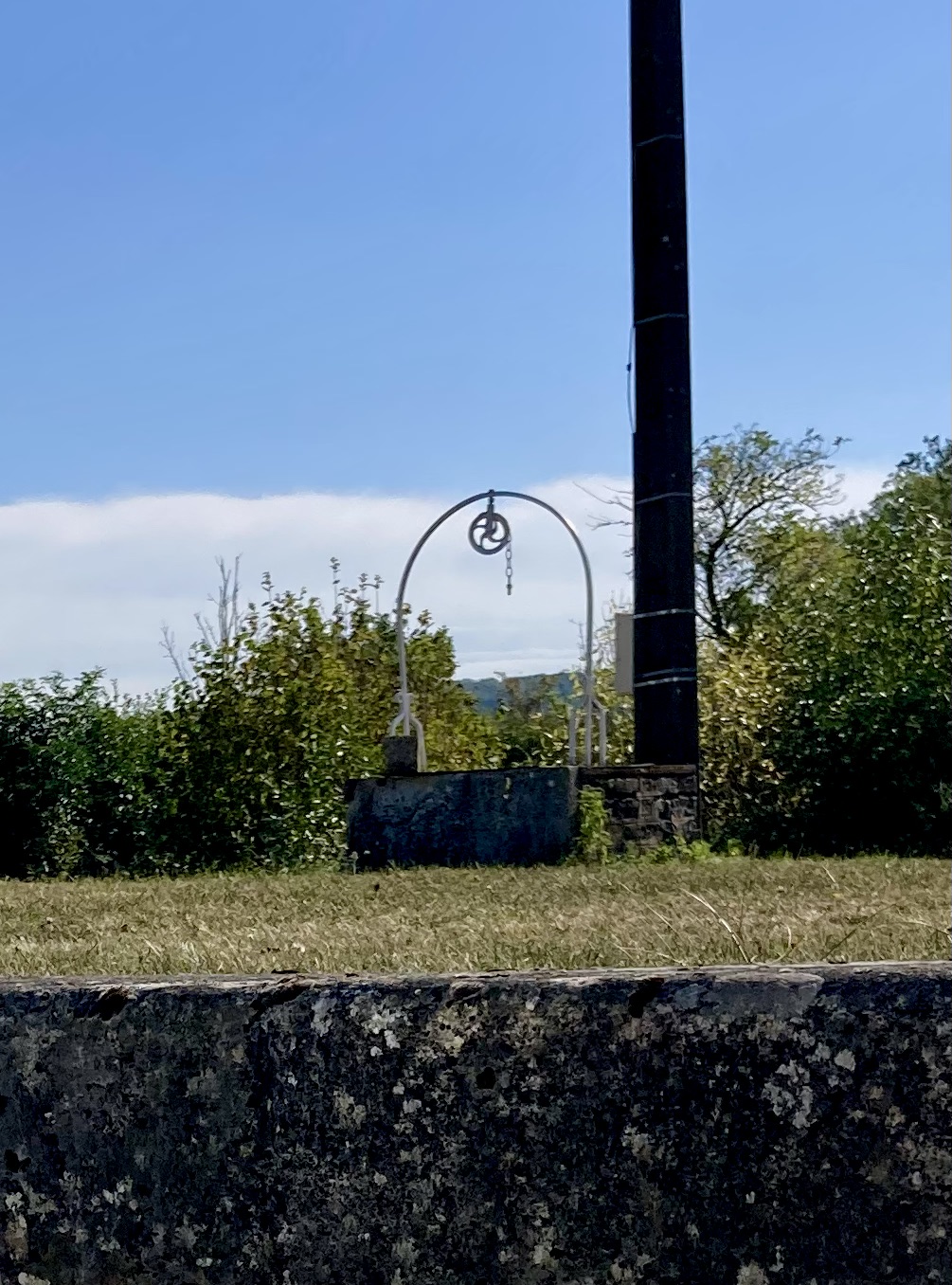
And a few of the many old metallic artefacts that we see – the metal work of the bridges against the sky, the ancient metal mooring rings, the metal (yes metal!) boats used got clear debris from the canal, and the wells, needed at every rural lock as they are miles from connection to national networks.
I’m adding this donkey and goat, because I think donkeys are my favourite animal – and goats are fun!
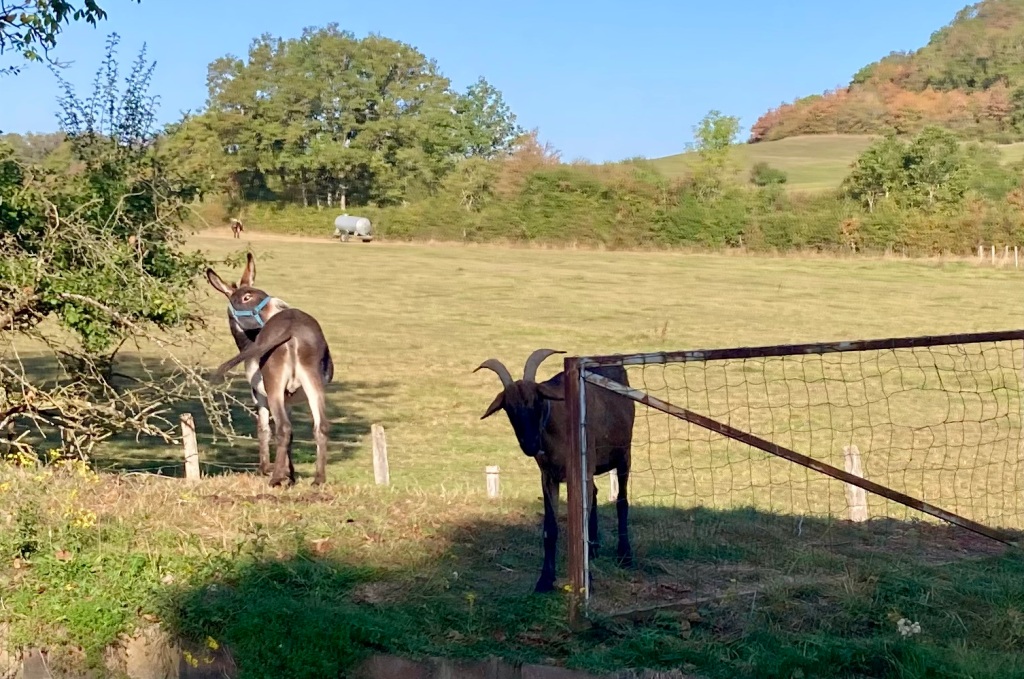
It was ‘only’ 12 locks to Pont Royal, leaving 13 for our last day on the journey up to Pouillly at the top. That’s still a few more than a normal day for us gentle travellers, but both manageable and necessary on this occasion.
As we came up through the last lock of the day, No.14Y just outside Braux, we knew we had less than 2 kms to Pont-Royal, and there was a big long deep-water quay waiting for us, with a bar and restaurant alongside.
Wonderful!
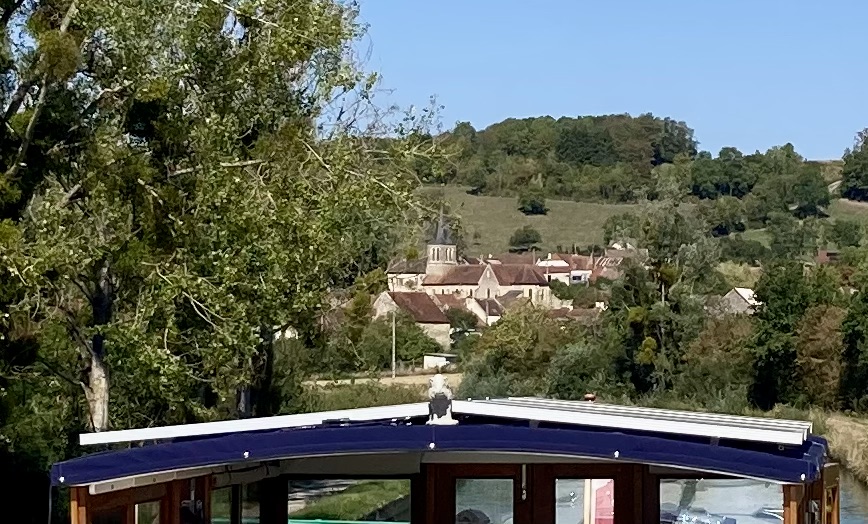
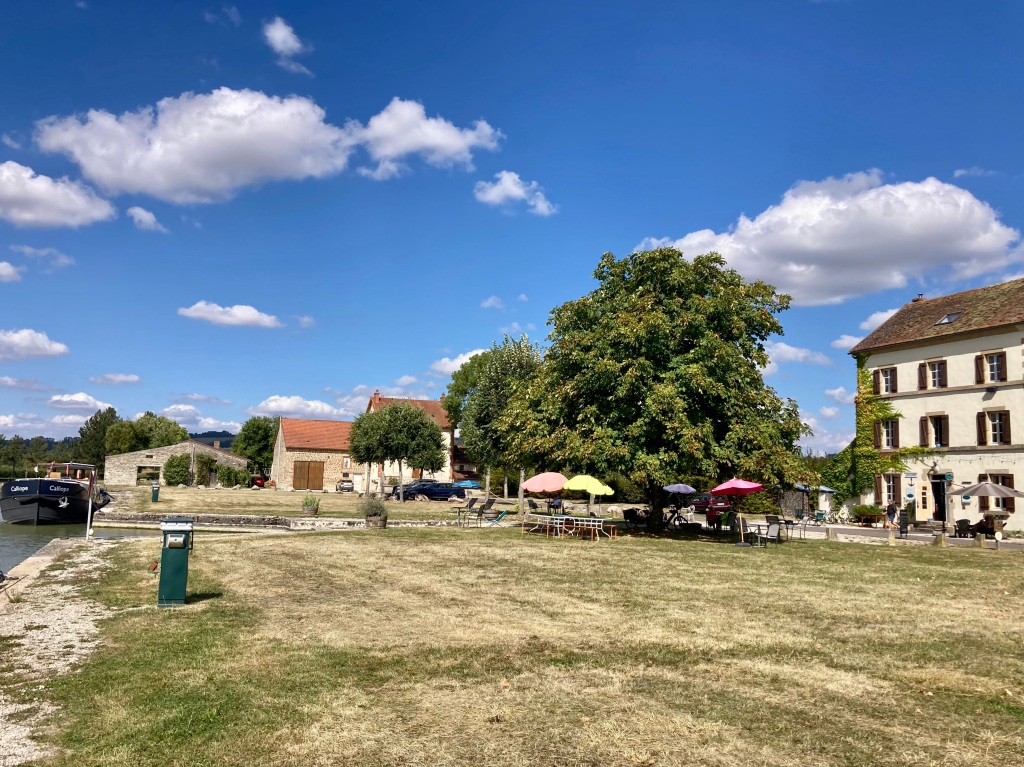
And to prove the point ……….. there we are on the left. and there is the hotel/restaurant on the right.
We arrived there in time for lunch, and because it was a bit of a novelty having La Maison du Canal de Bourgogne right next to us we bought sandwiches for lunch. There is also a tiny shop there, and bread can be ordered for the next day, but obviously we were too late to grab a fresh baguette the day we arrived.
After lunch and a siesta there was still time for a look round the area before we started sipping wine and nibbling more food.
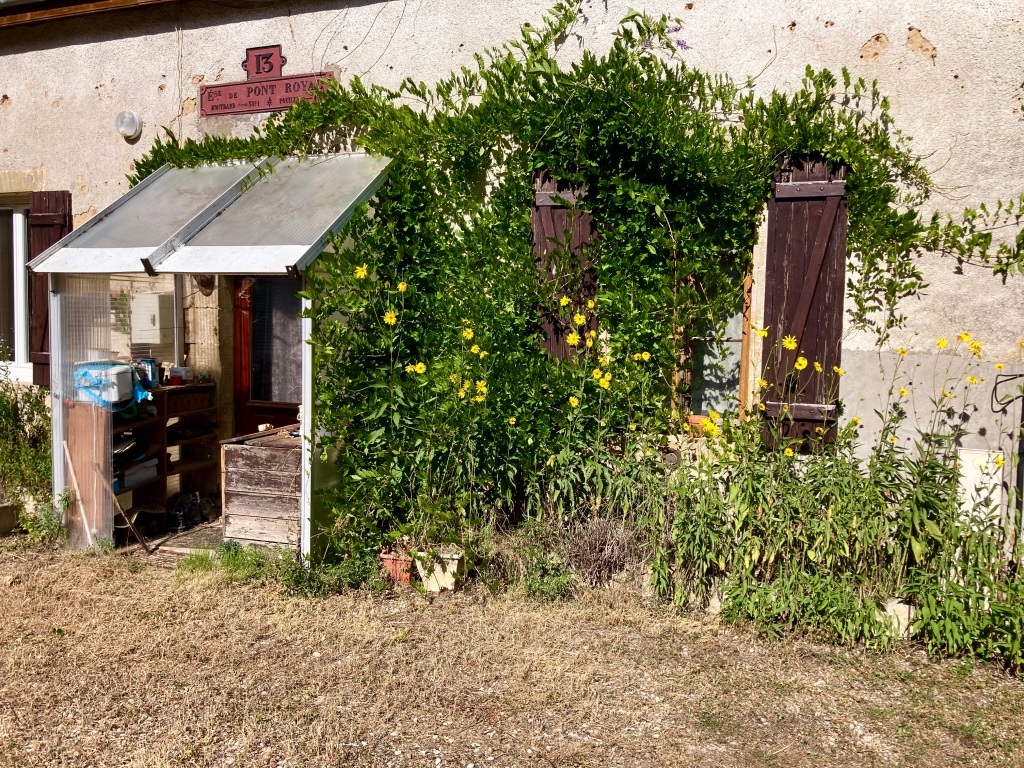
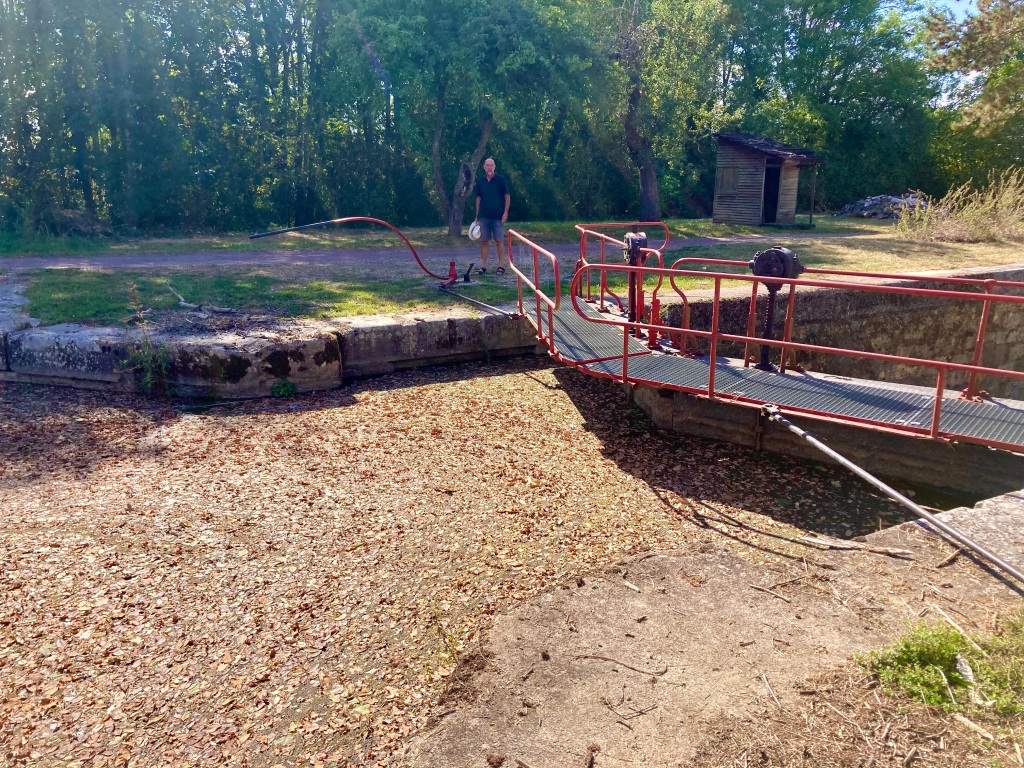
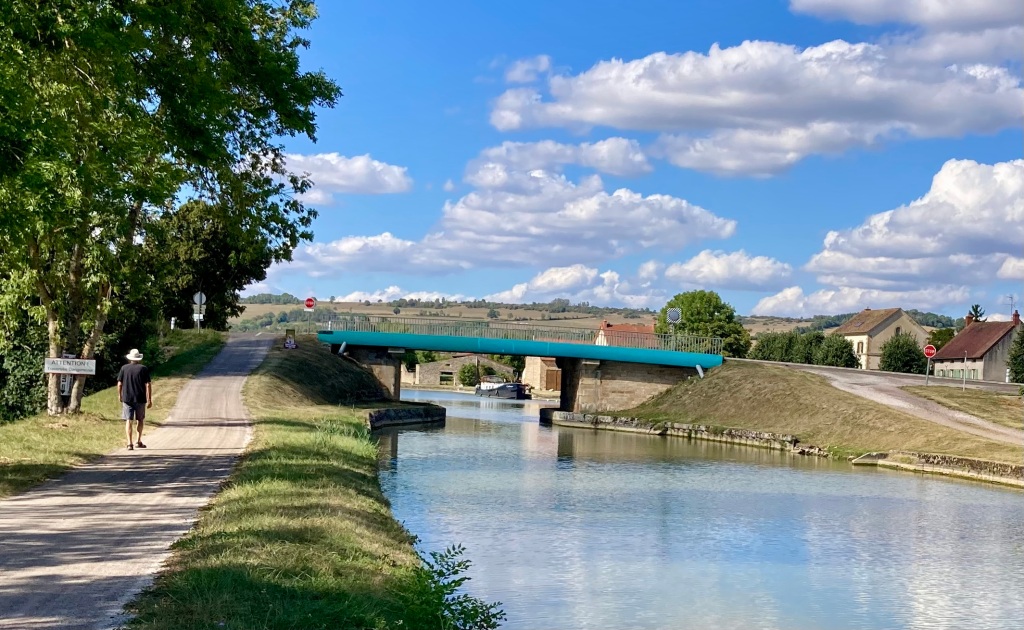
We walked around the area including going to the next lock – very close! It was a blockhouse full of character, and a lock full of autumn leaves! By now it was 15th September and the long hot summer was causing the leaves to drop quite early.
As we walked back towards the Pont-Royal itself we could see Calliope in the distance. Maybe you can also spot the Captain!
It seems that the ‘royal’ reason for Pont-Royal is that the bridge carries the Route de Royal road over the canal, but as yet I cannot find the reason for the naming of the road.
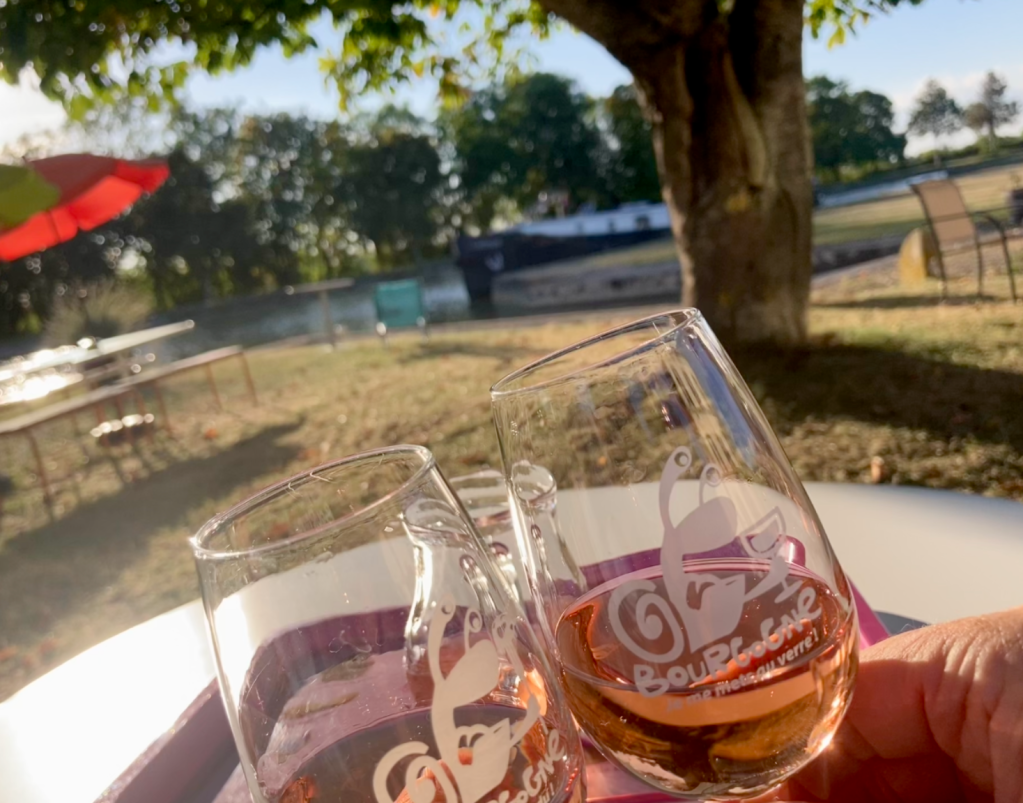
We had a lovely relaxed evening in the shade of parasols and trees, looking over at our travelling home.
There was a limited, but delicious home cooked menu.
The brother and sister who own the hotel produce a meal for their hotel guests each evening and are happy to extend this to passing boaters!
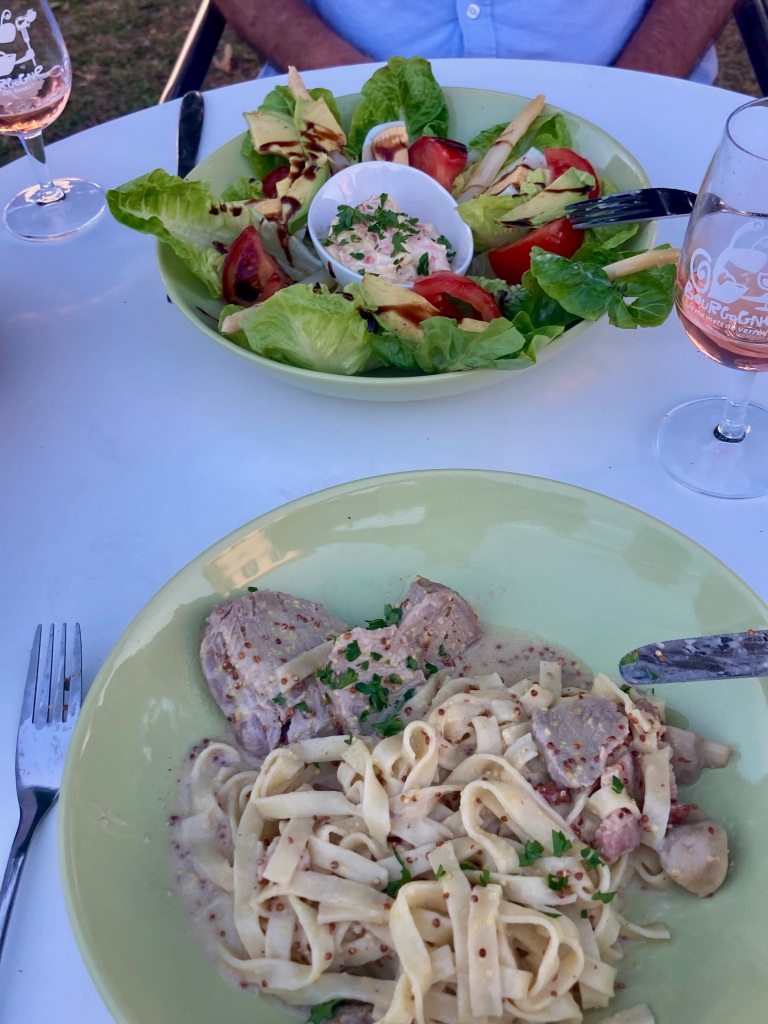
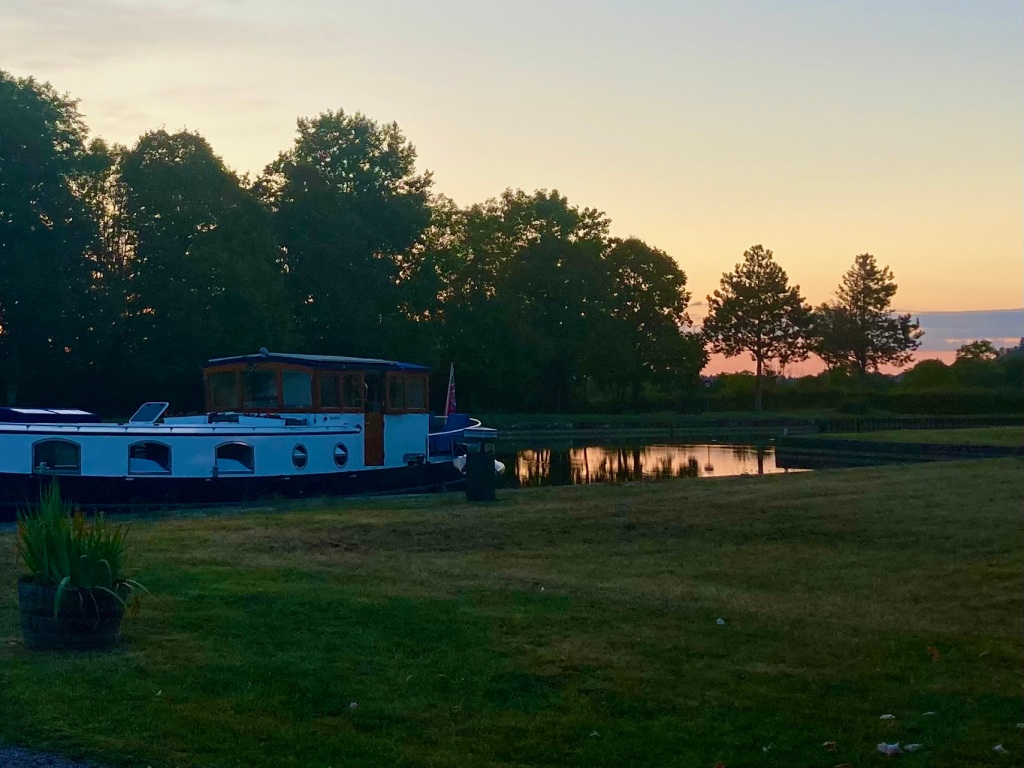
What a delightful spot for our last evening and night ascending the Canal de Bourgogne.
In the morning we were above to collect our pre-ordered baguette, ready for lunch as we made the final push top the top. Just 13 locks to go – hope that is not an unlucky number!
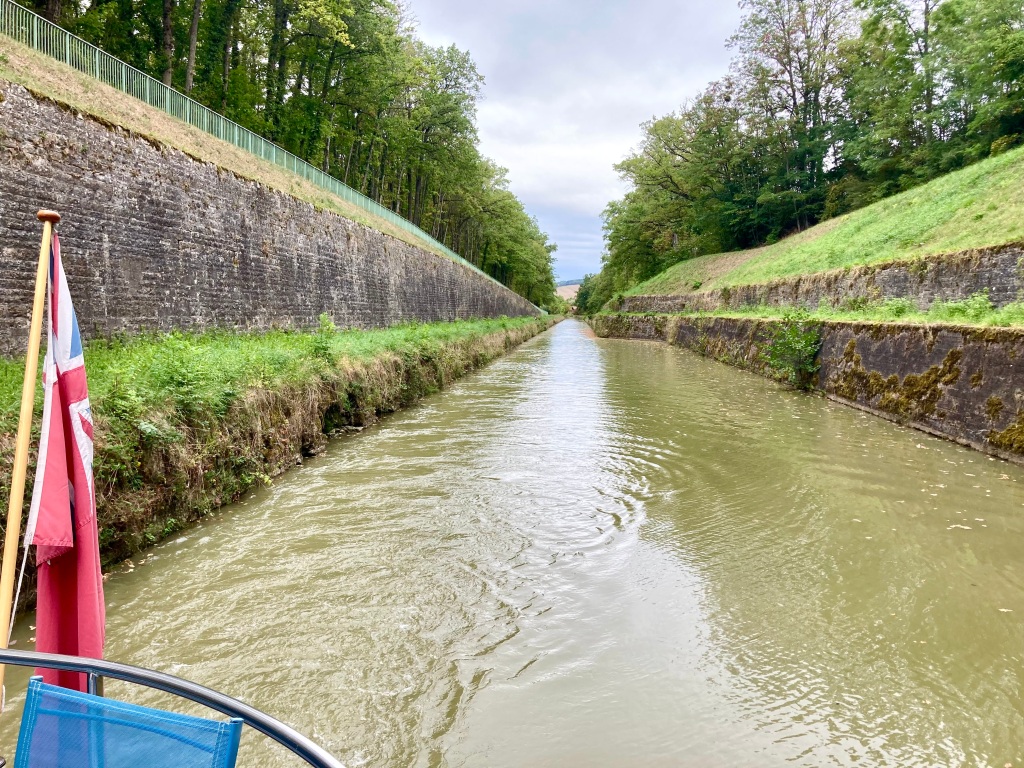
Once through the first lock it was not long before we were going through the long cutting near Saint-Thibault.
Often these cuttings are built so that the rich people in a near-by chateau did not have their rural view split by the working barges passing by. In this case, despite looking at satellite maps of the area, once again my research efforts came to nothing.
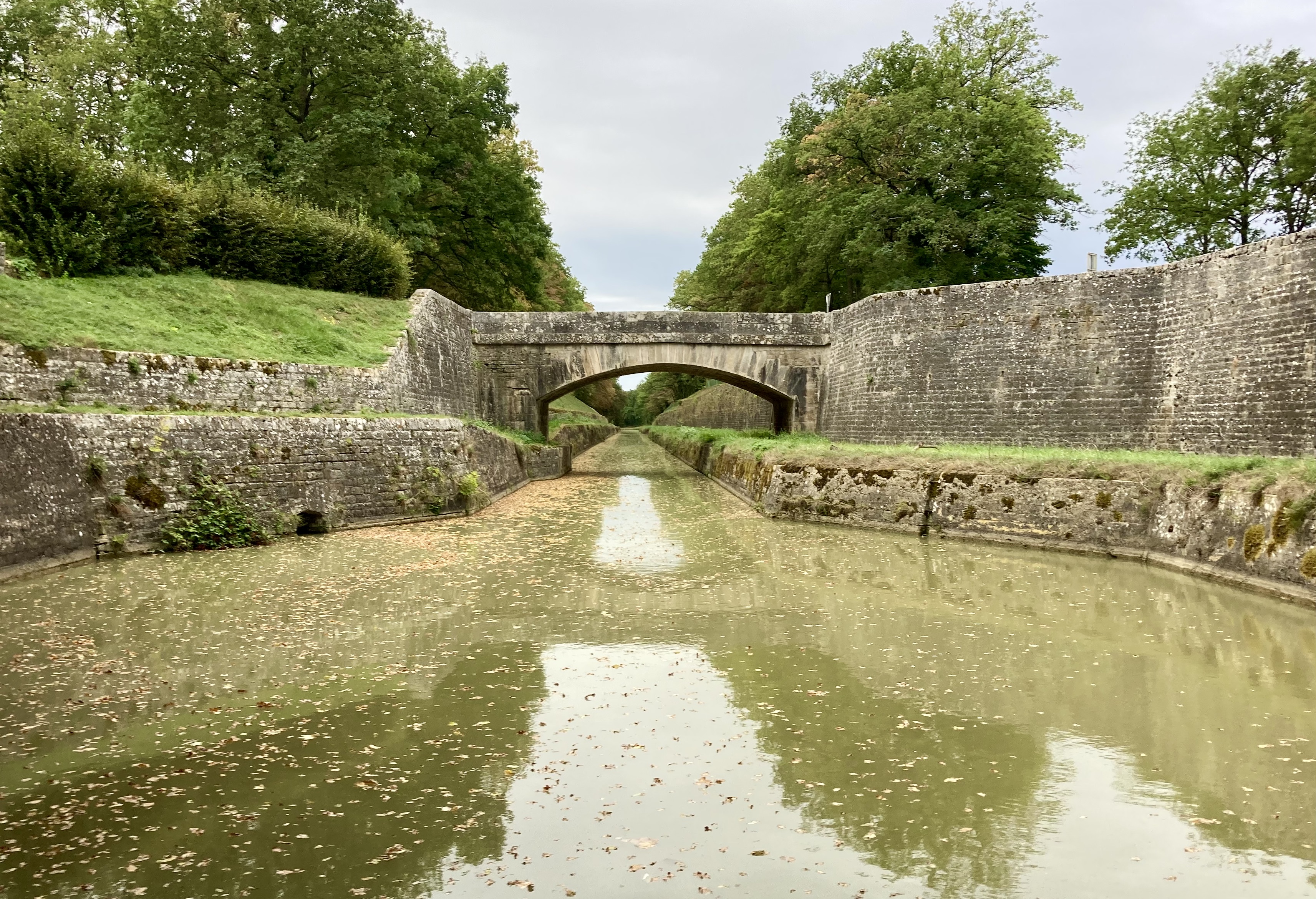
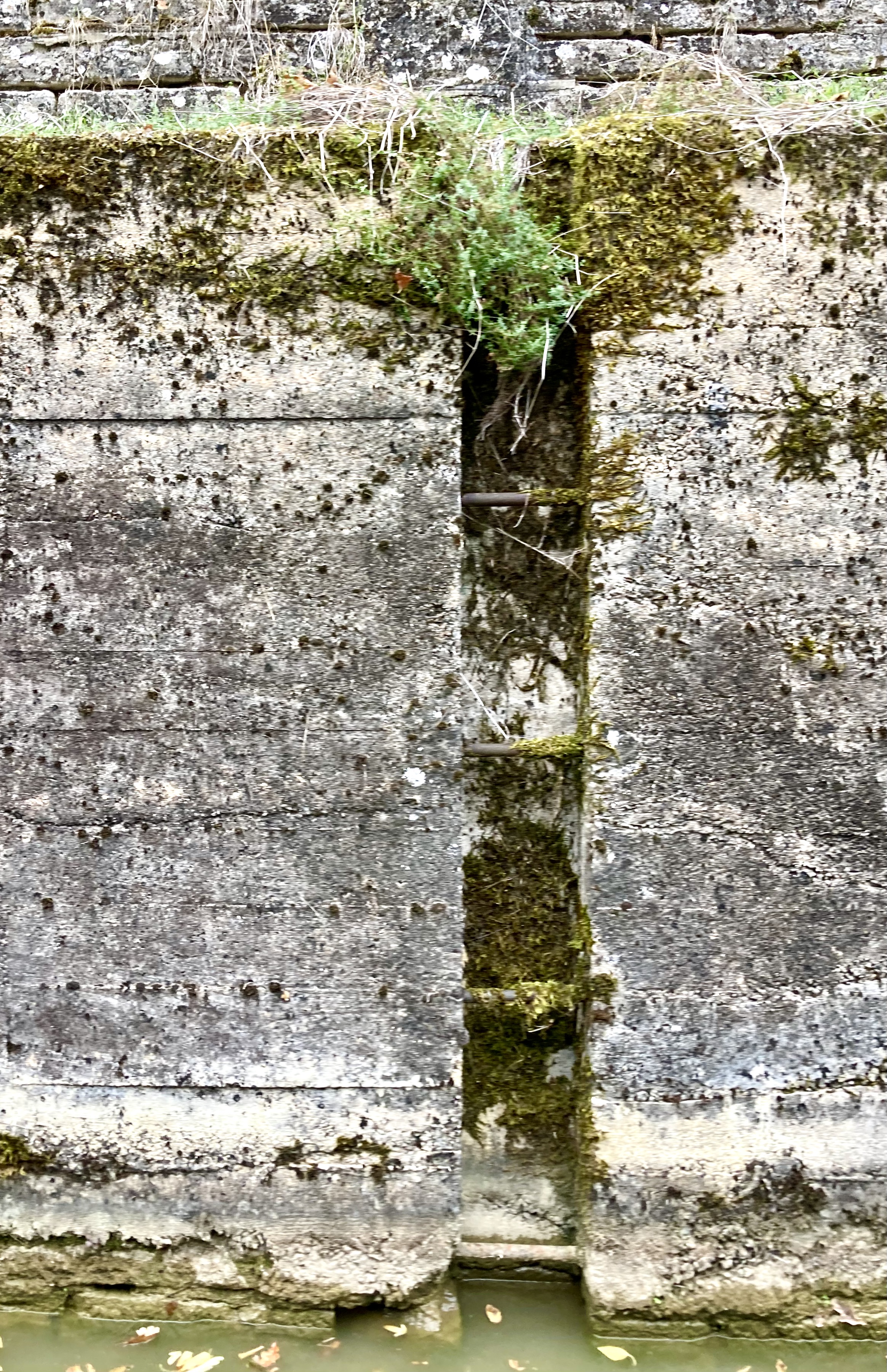
Nonetheless it was an interesting kilometre and a half, hoping not to meet another boat unless it was at the widening at the centre, and counting the old safety ladders, built into the walls every hundred yards or so to help any wet sailors climb back out.
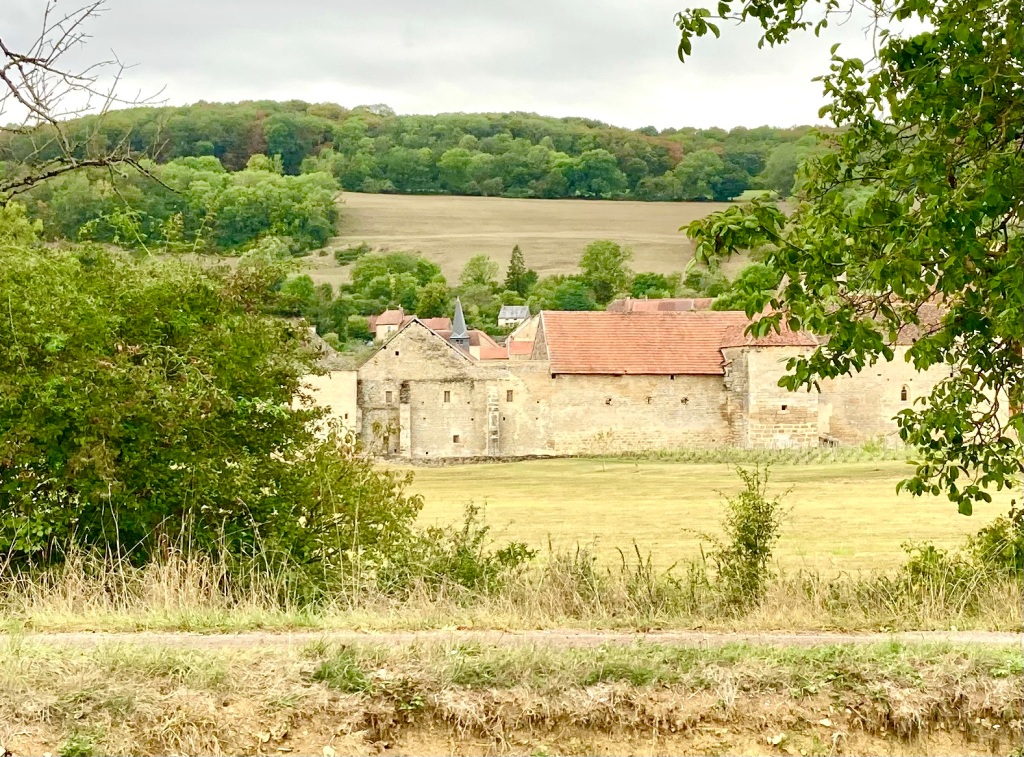
Soon after this we did spot a grand old house – the Chateau d’Éguilly – a castle originating from the 12th century, and built on the site of a previous Gallo-Roman castle.
It was restored about 35 years ago and is now a major arts venue for exhibitions, concerts and conferences.
We were soon nearing the summit and could see across to the top of the hills. The weather had changed during the day, becoming progressively cloudier with a definite potential for a storm. It was very much needed after all the (beautiful) hot sunny September days so far.
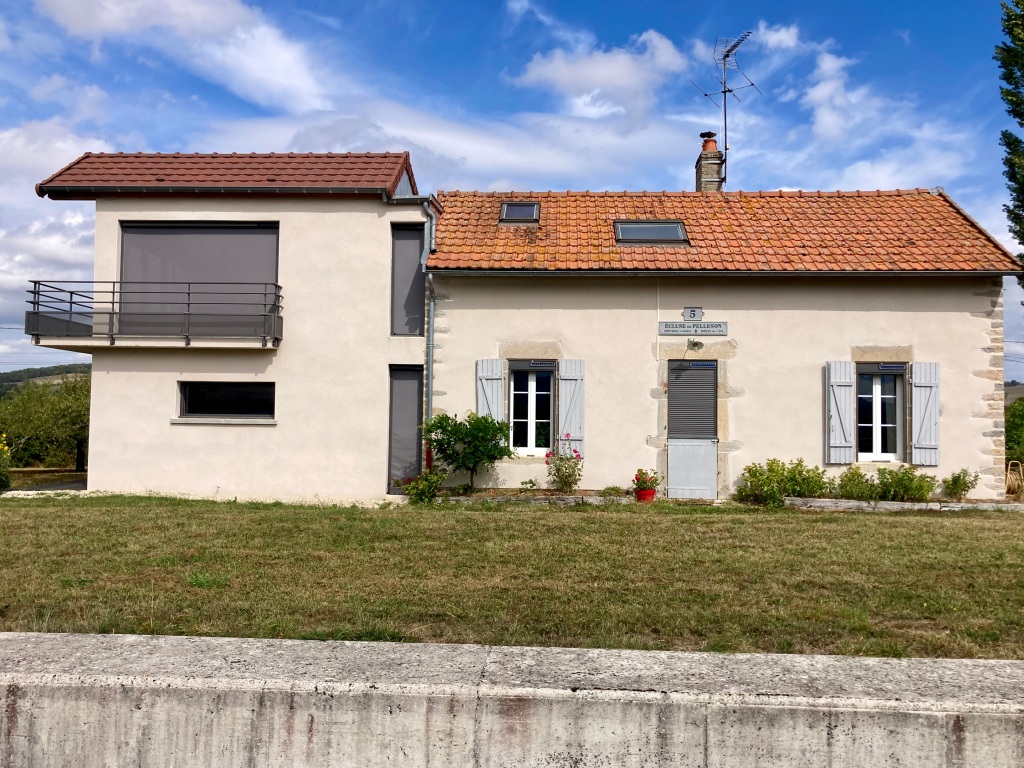
We arrived at lock 5 – really on the countdown now. The lock house had obviously been extended to take advantage of the views.
But Captain Stu was more focused on looking ahead towards our destination, and three days relaxation.
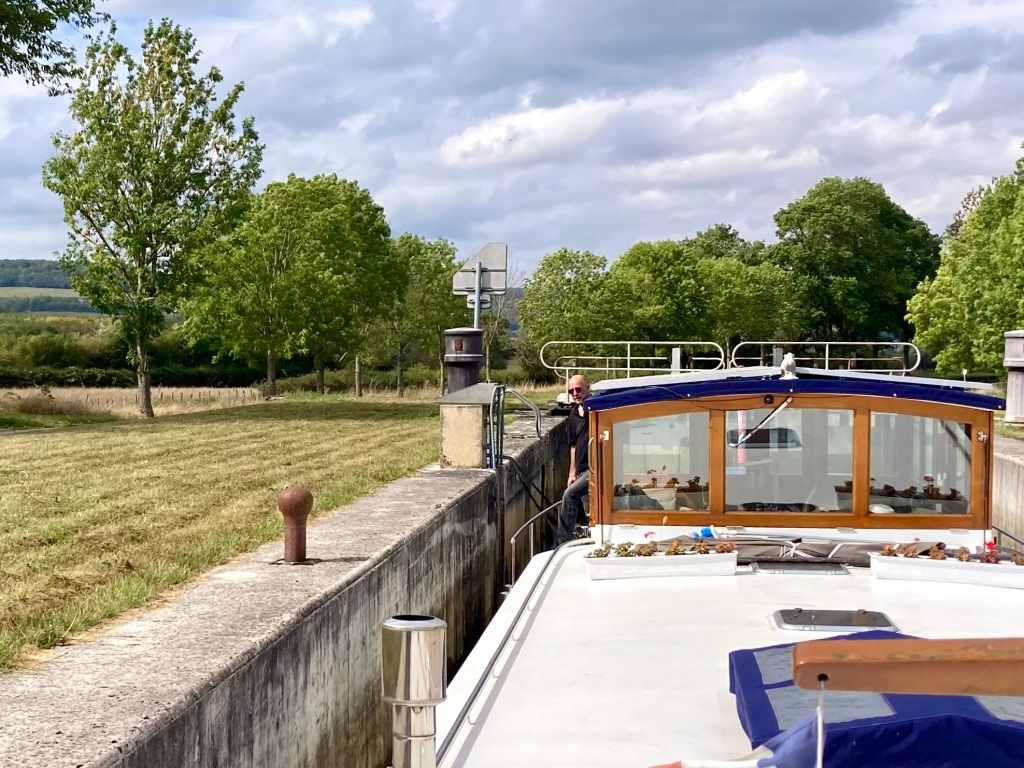
We came round a curve in the canal to see our last few locks ion a straight line ahead of us. At this point we were back to electrically operated locks so one lock keeper could easily see us through just by pushing a series of buttons.
And then …….
…. at last, we were entering the basin of Pouilly-en-Auxois, some 980 feet above sea level and the highest summit of any canal in France.
The quay over to port was promisingly empty apart from two other barges so we headed over to investigate.
There was plenty of room for a ‘little one’!
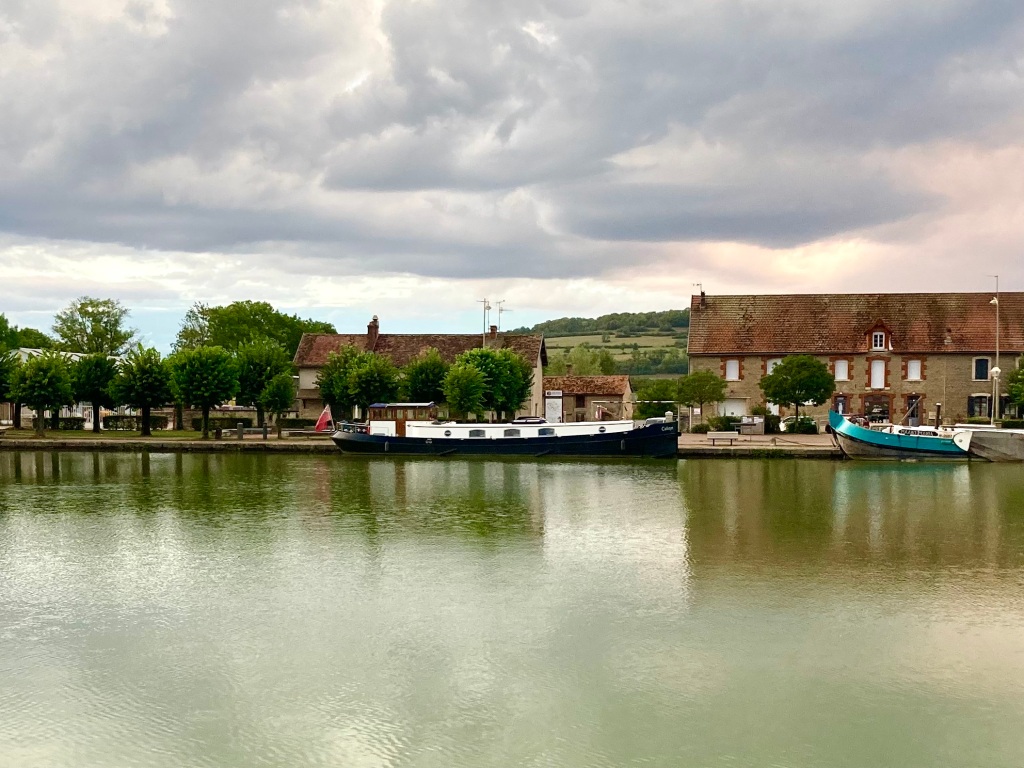
In a way that is the end of this odyssey, from Migennes on the Yonne, up 114 locks to the peaceful basin at Pouilly-en-Auxois.

But I will just give you a glimpse into our few days there.
It began with the expected storm.
A proper squall arrived, sending our flag horizontal and with rain absolutely pouring down.
Now we are at the top it seems that the canal can begin to fill up again!
By 20.00 it had all blown over and we were treated to stunning skies for the first night of our short stay.
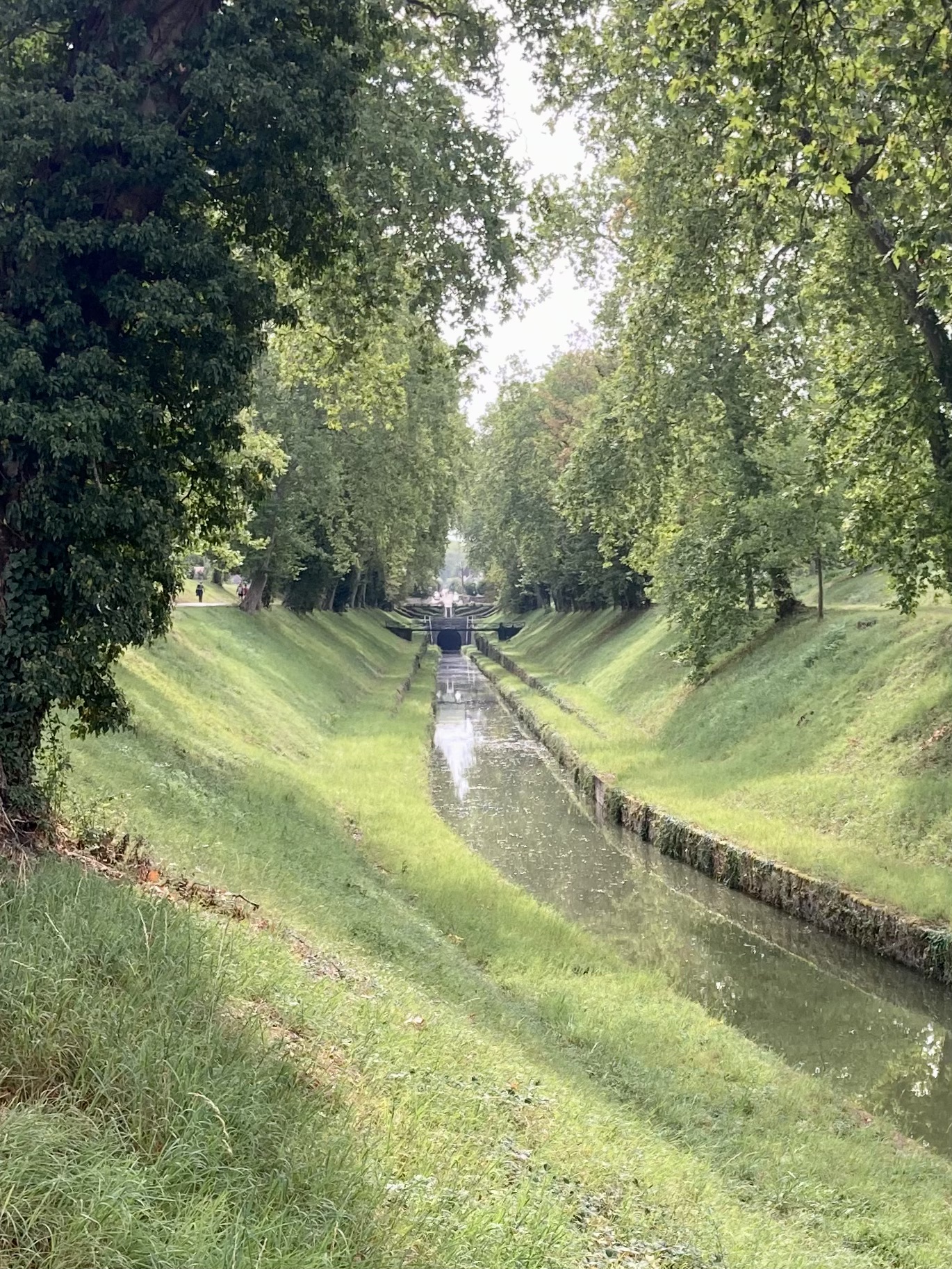
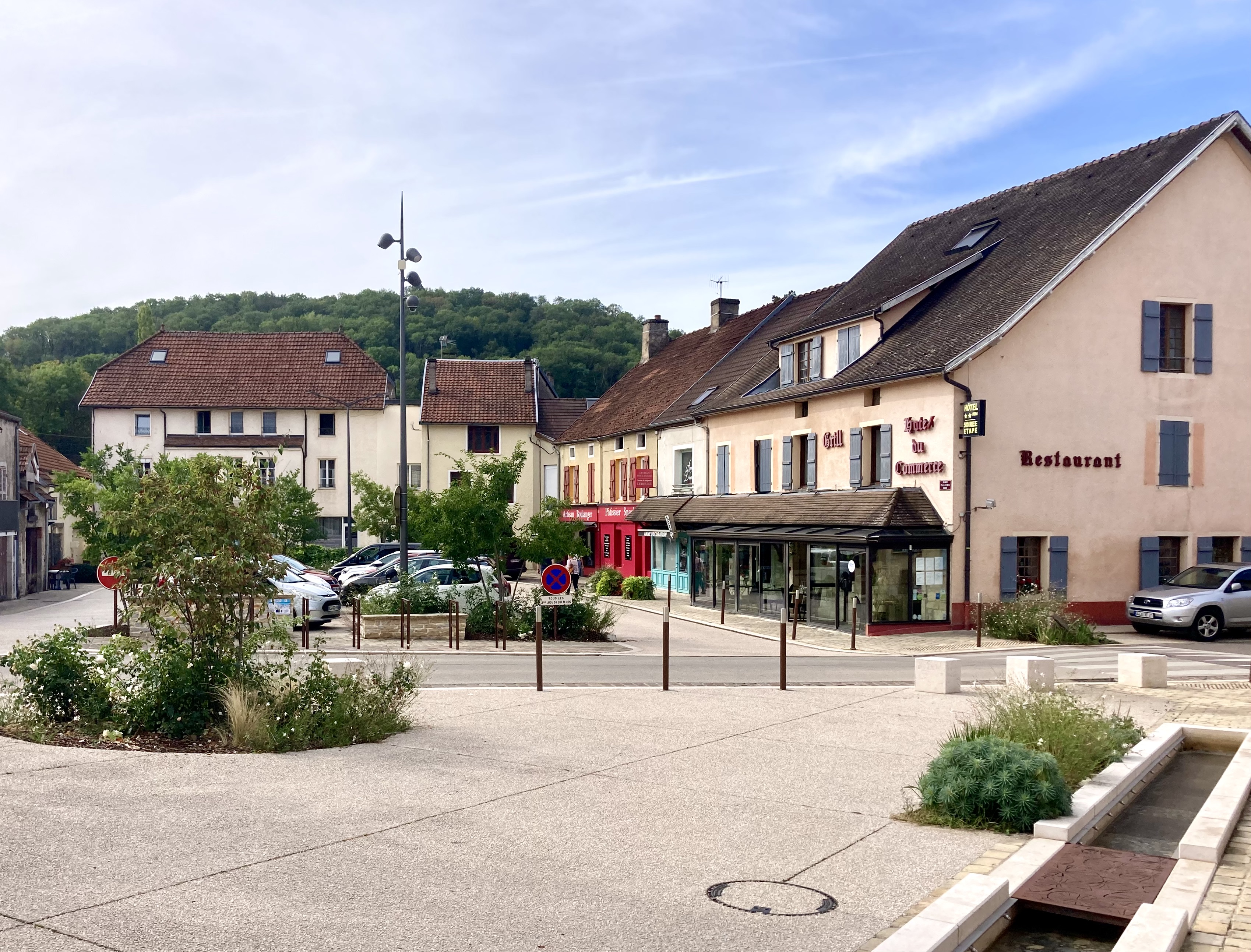

Next day we walked from the port and along the approach to the tunnel that we would need to go through in a couple of days time at the start of our descent. The village of Pouilly-en-Auxois has some pretty corners, and some good boulangeries.
With bread in hand we walked back, stopping to look at the historic means of going through the tunnel. There is no towpath through the tunnel so horses could not pull the barges through. Instead various ingenious methods were deployed, one of them being this electrically operated chain puller.
The chain ran through the tunnel and the wheels and cogs inside the vessel pulled the chain through, moving it along, plus any barges it had in tow. (I hope that makes sense!)
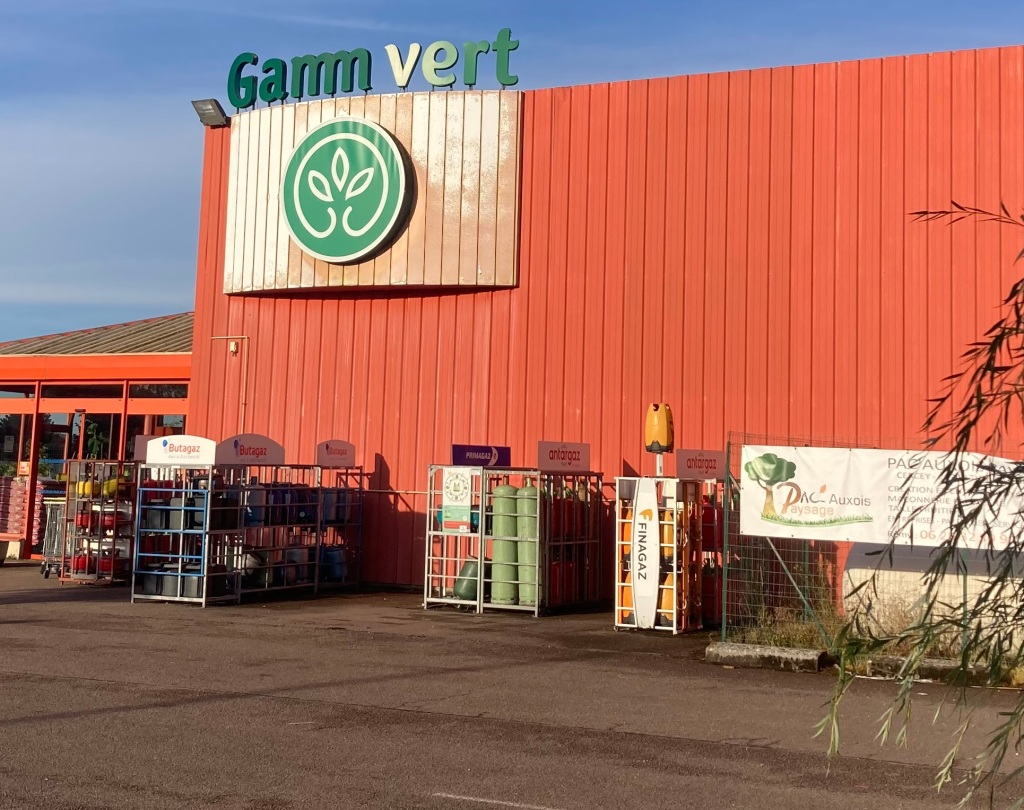
We were able to stock up on various supplies while at the port. There are not many places to buy food along this lovely rural canal.
In addition to food and drink we were also pleased to see that the Gamm Vert garden centre, 200 yards from the boat, sold gas.
But mainly we relaxed. Here’s cheers to our half way stop on the Canal de Bourgogne.
and a couple of family visits.
26th July to 4th August 2023, with a two week break in UK
READER WARNING: somehow this ended up a bit longer than planned. Maybe give yourself a break part way through, or just look at the photos!
The navigable section of the Yonne, before the Canal de Nivernais branches off to run alongside, goes from its junction with the Seine at Montereau-Fault-Yonne to Auxerre. We did also dip into a few kilometres of the Nivernais and I have included them here.
Our time on the Yonne seems long, but there is a break in the middle for us to return to the UK for a few weeks. During our first two and a half weeks we had two sets of family visitors – my brother and his wife for a couple of days, and then our son and partner for a few more. It always adds an extra dynamic when we have visitors – there is a tendency to see new things and eat out more, as you will see below.
Montereau-Fault-Yonne
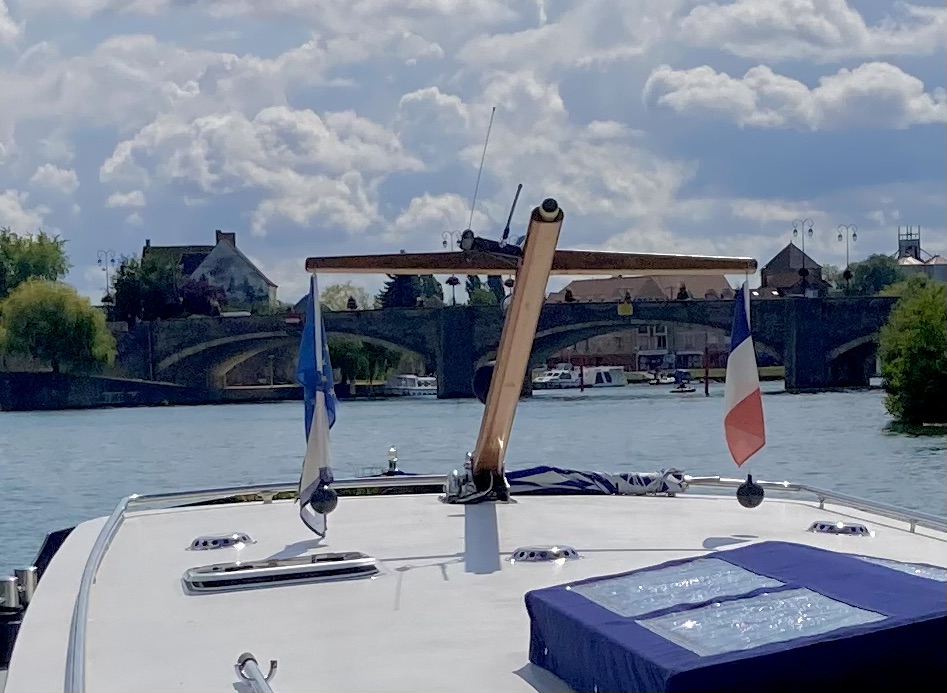
It took just a few hours to move from Moret-sur-Loing, past Saint-Mammés where the Loing meets the Seine, to the bridge across the confluence with the Yonne at Montereau.
We had a plan to stop at Saint-Mammés and top up with diesel but the fuel quay had a queue of commercial barges so we decided to continue on and find another option (more of that later).
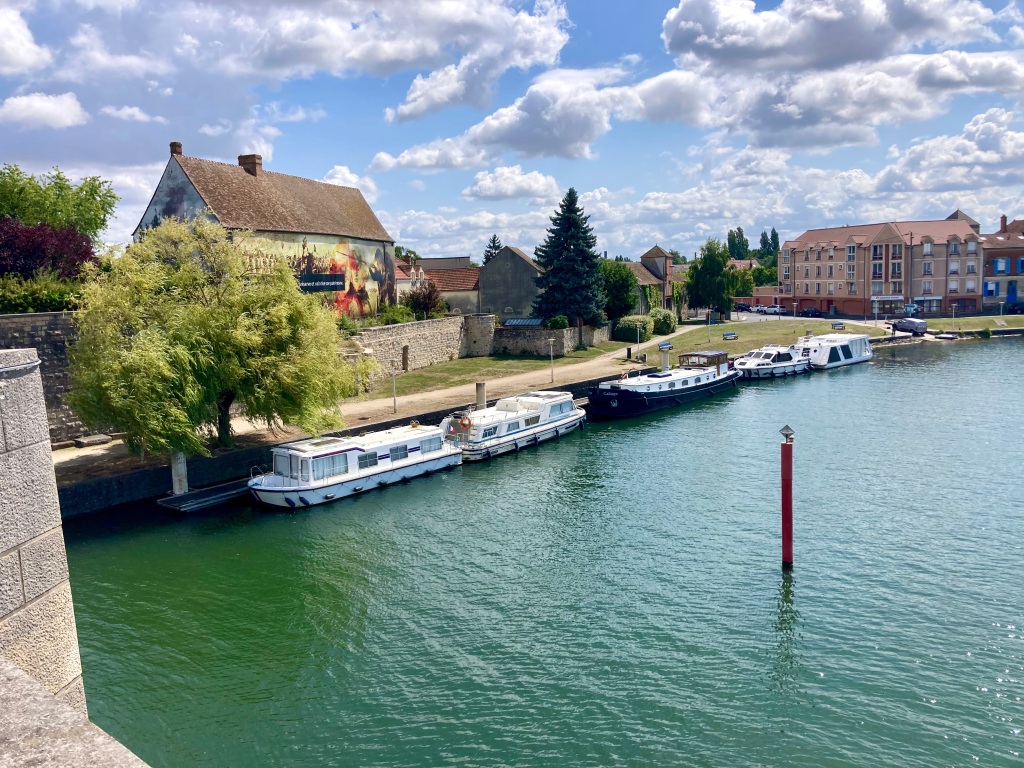
At Montereau we turned to starboard, under the bridge, and into the last space on the pontoon.
Montereau-Fault-Yonne has quite a lot of history attached to it, mainly due to its strategic confluent position. The Fault part of its name comes from the old meaning of the verb faillir (“to fail”); Montereau is where the Yonne falls into the Seine. I rather like that.
John the Fearless was killed on the town’s bridge in 1419; this is commemorated around the town in various ways. His son, Philip the Good, seized Montereau but only held it for 8 years. From then on through the centuries it changed hands again and again. It was even the place of one of the last victories of Napoleon on 14 February 1814.
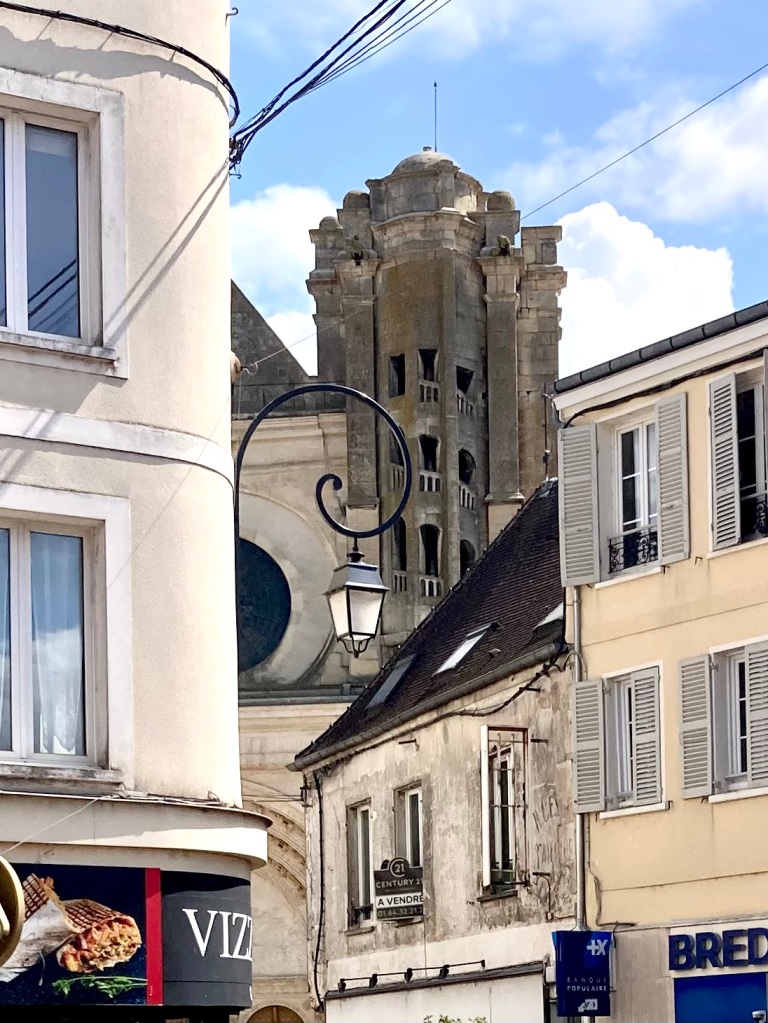
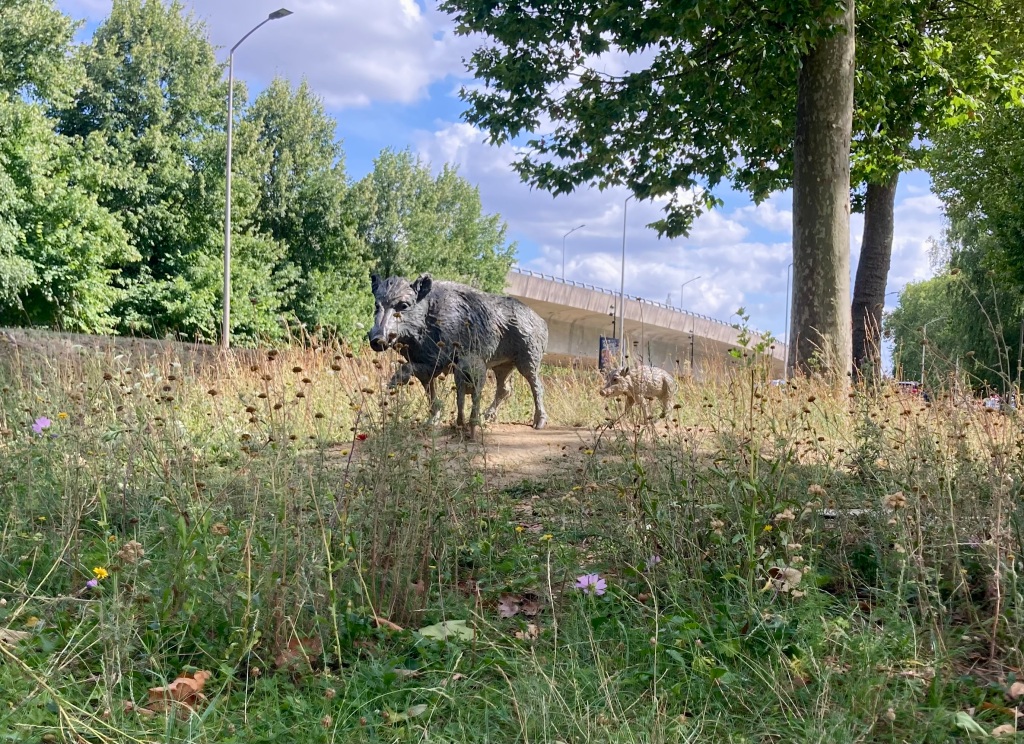
We had a walk round the old town with its narrow streets and small squares, and ventured into the park. There was a plan for a riverside beer, but the chosen bar was closed so we opted for a Calliope back deck supper.
Port Renaud
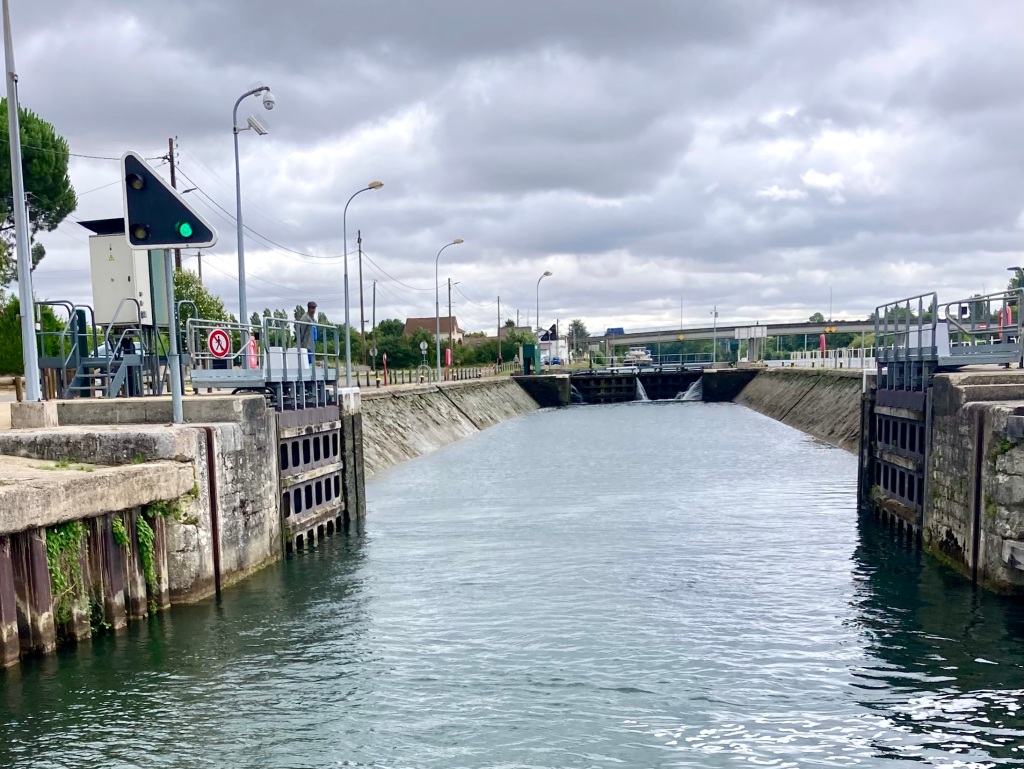
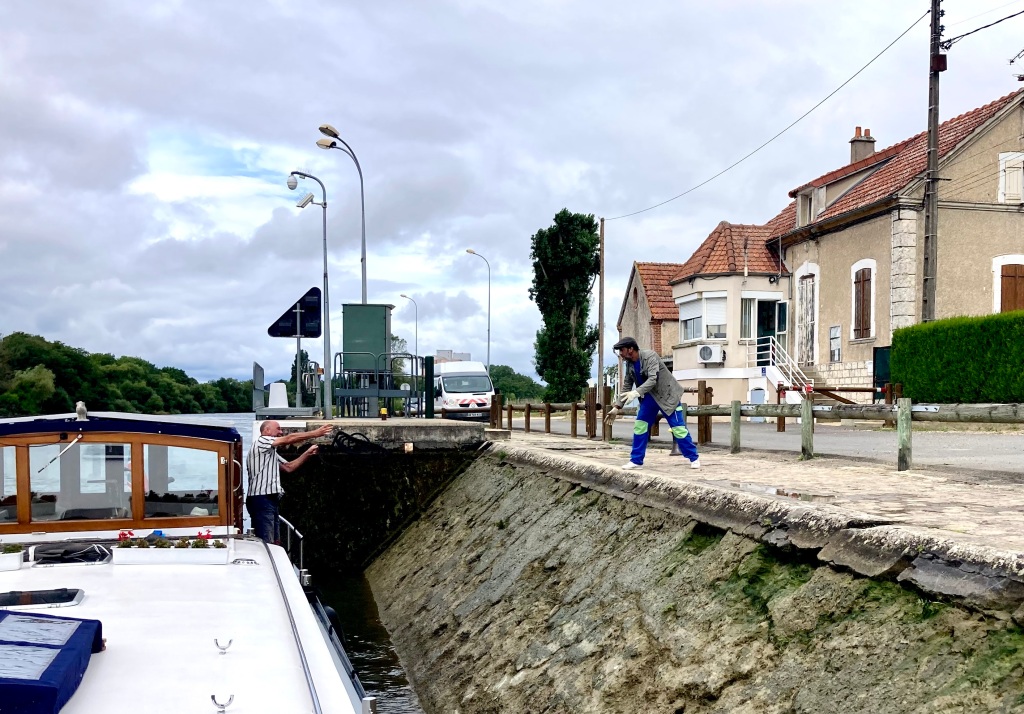
The Yonne is home to quite a few locks with sloping sides; they are not immediately easy to use! Calliope was going upstream and it was not long before we came to our first lock and saw a green light inviting us to enter.
It would take a mightier crew than me to throw ropes onto bollards in these locks, but luckily that is expectyed and the éclusiers (lock keepers) emerge to help us moor up. I only have to throw my rope to land at his/her feet.
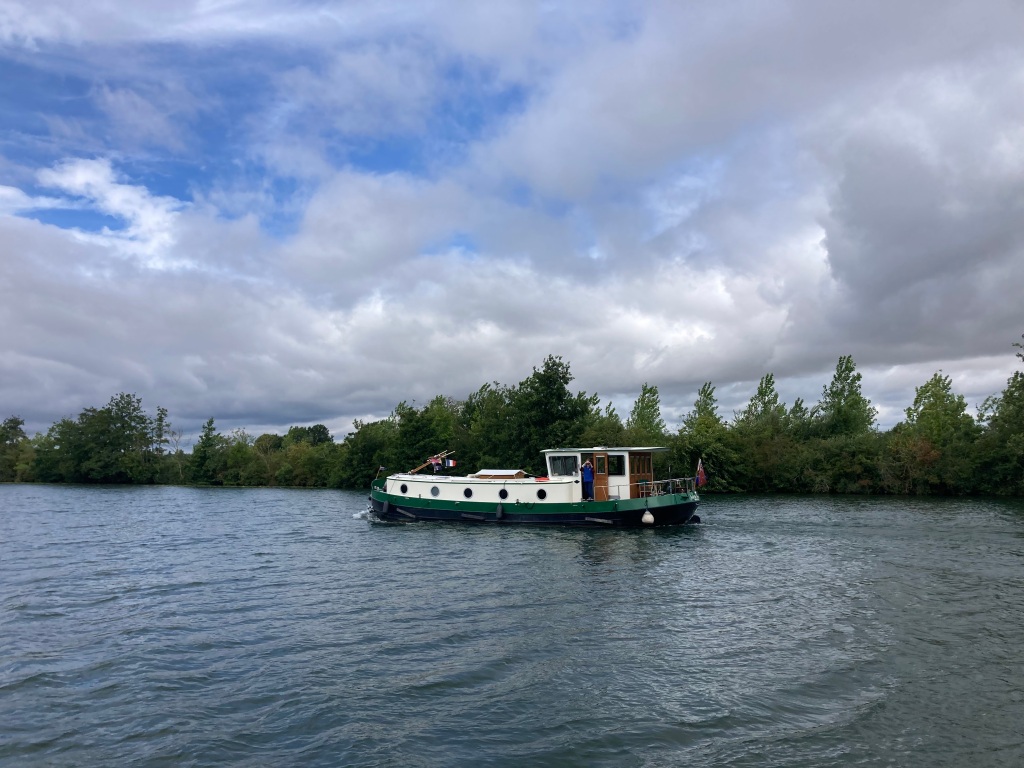

As we continued up the Yonne we received messages that there would be ‘passing Pipers’. Friends on other Piper boats were on their way downstream and we were able to shout joyful hellos across the water as they went by.
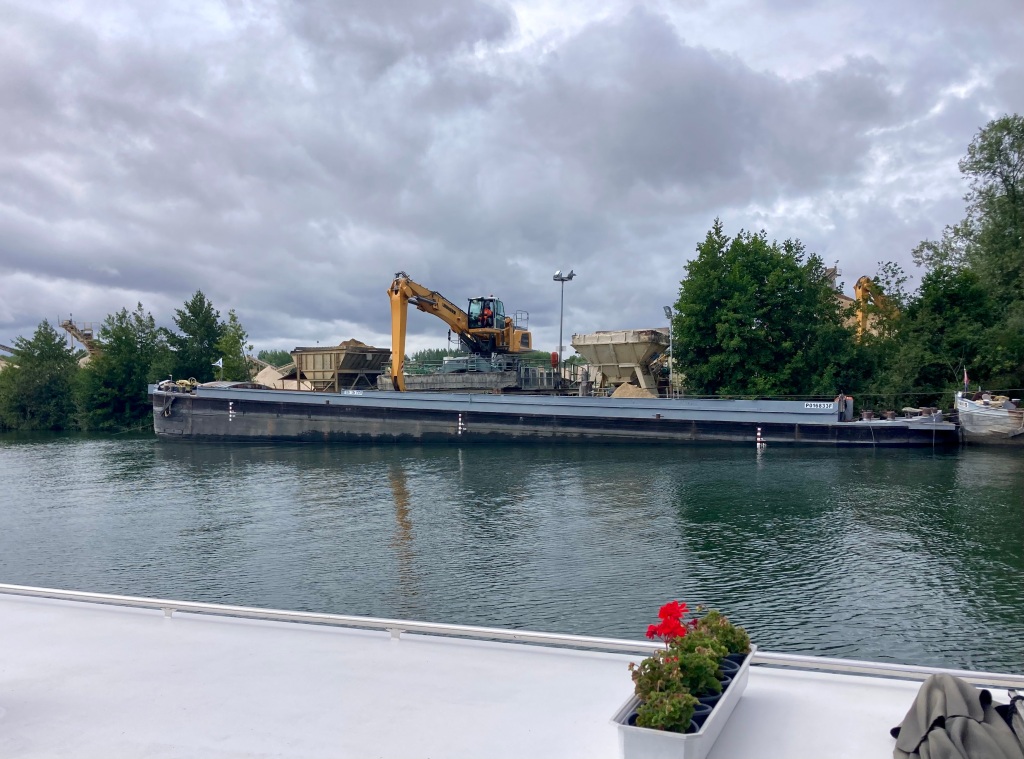
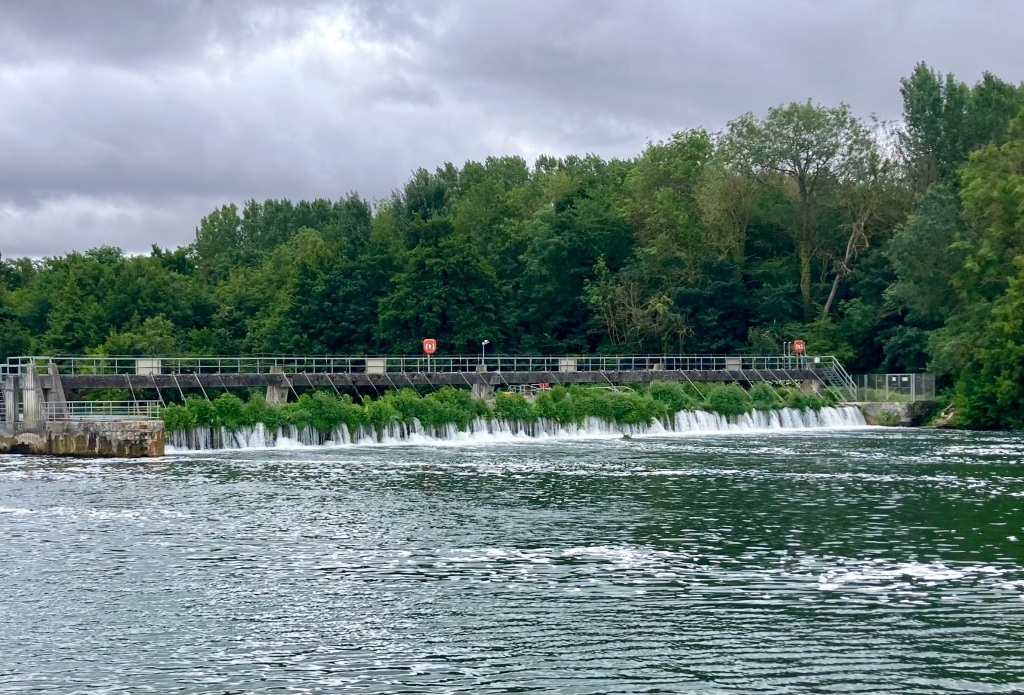
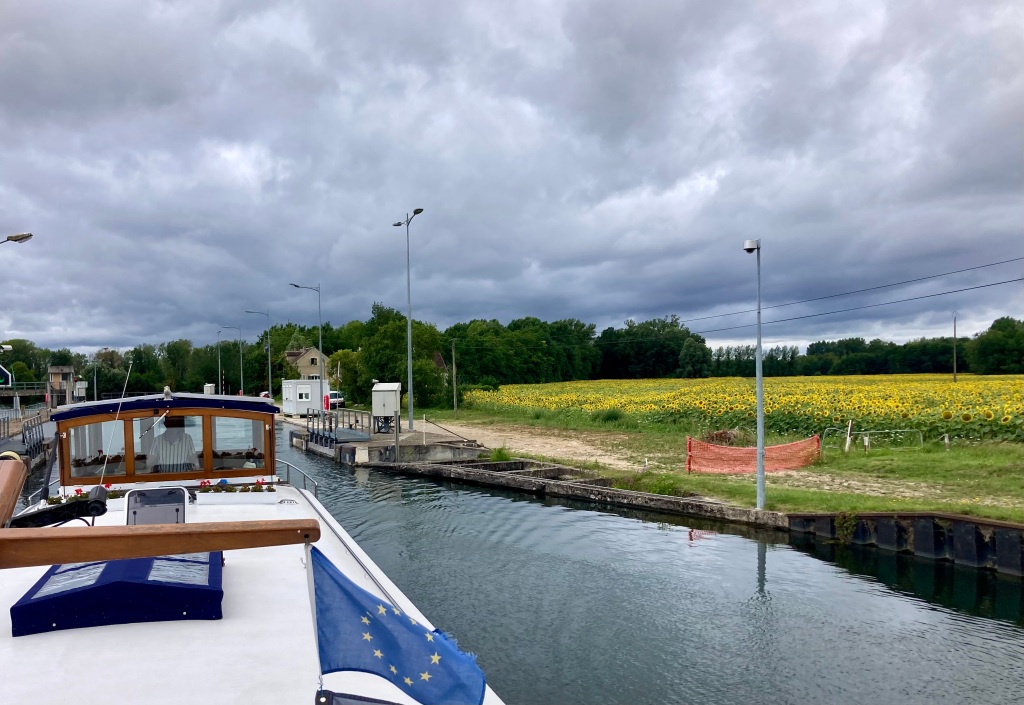
Along the way towards Port Renaud we had constantly changing views, from the heavy industrial gravel loading sites to some incredibly green (overgrown!) weirs and the intense yellow of sunflower fields – with apologies for the orange netting.
I’m sure someone more skilled than me could remove the netting from the photo!
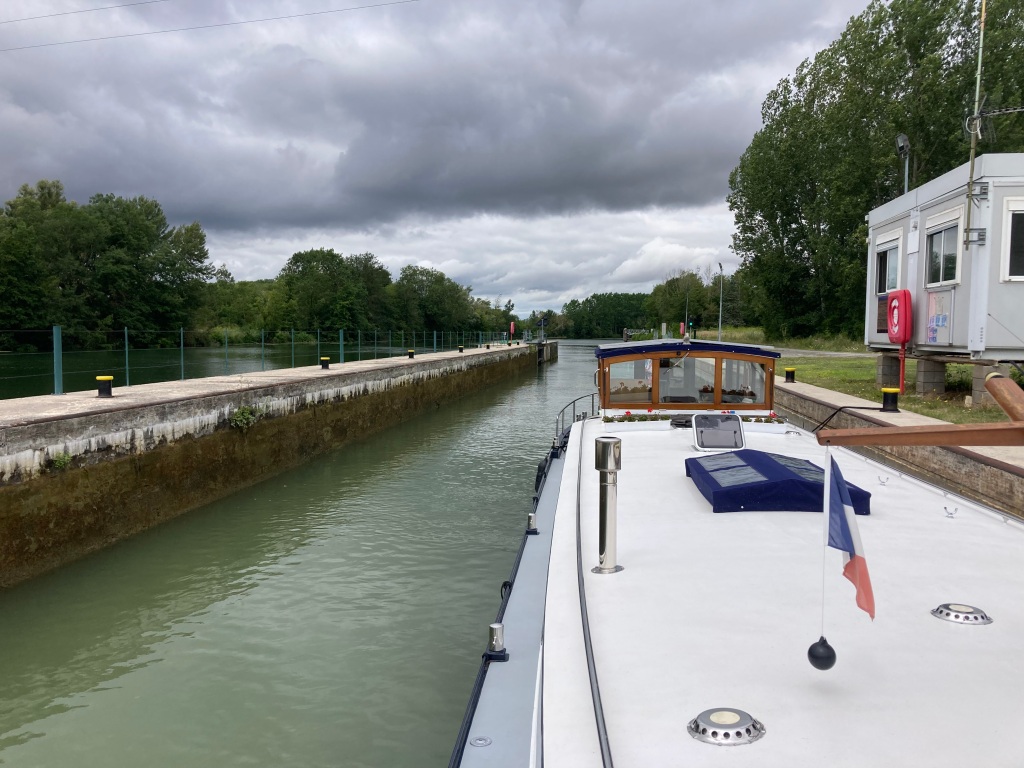
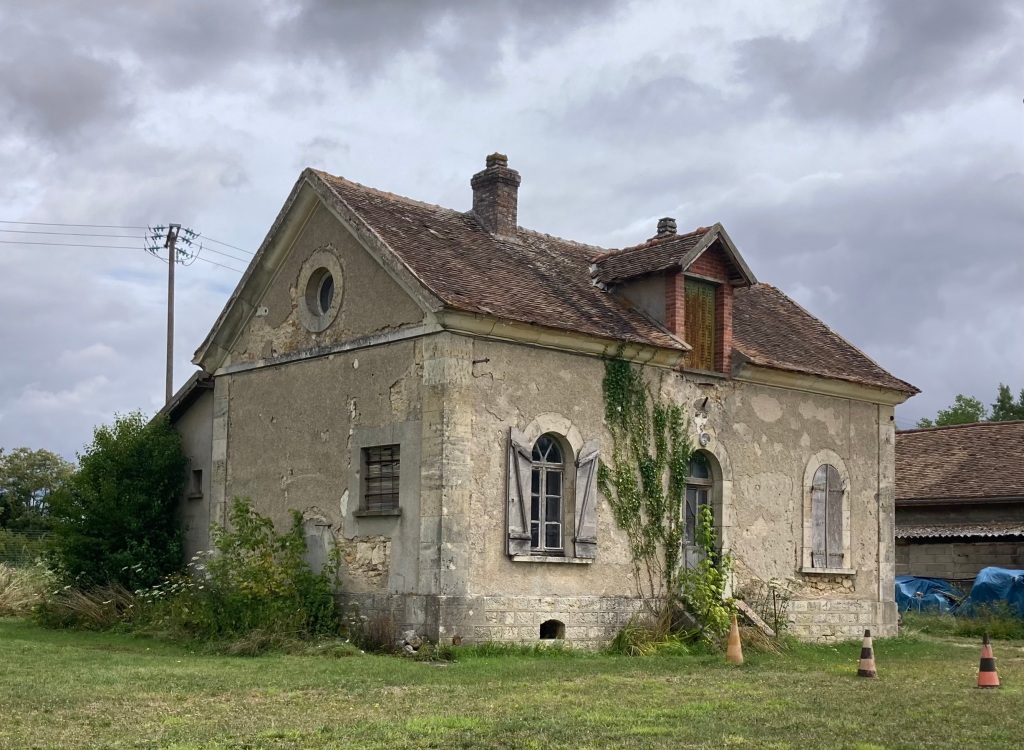
After a few sloping sided locks we were pleased to find a nice straight sided lock at Port Renaud. Not only that – the whole area was stunningly beautiful, very tranquil, and we had noticed a small road next to the lock.
Still needing to refuel we decided to stay here for a while and see if we could get a tanker to deliver fuel to Calliope here as we were now rather low. A quick chat with the éclusier resulted in permission to moor on the river at the side of the lock so we ‘reversed’ back out and were soon tied up.
A phone call and an email with maps to show our position – bingo! A local company could deliver to us, but not until Monday. Oh dear, we would have to stay on this beautiful place for 4 nights! 😂
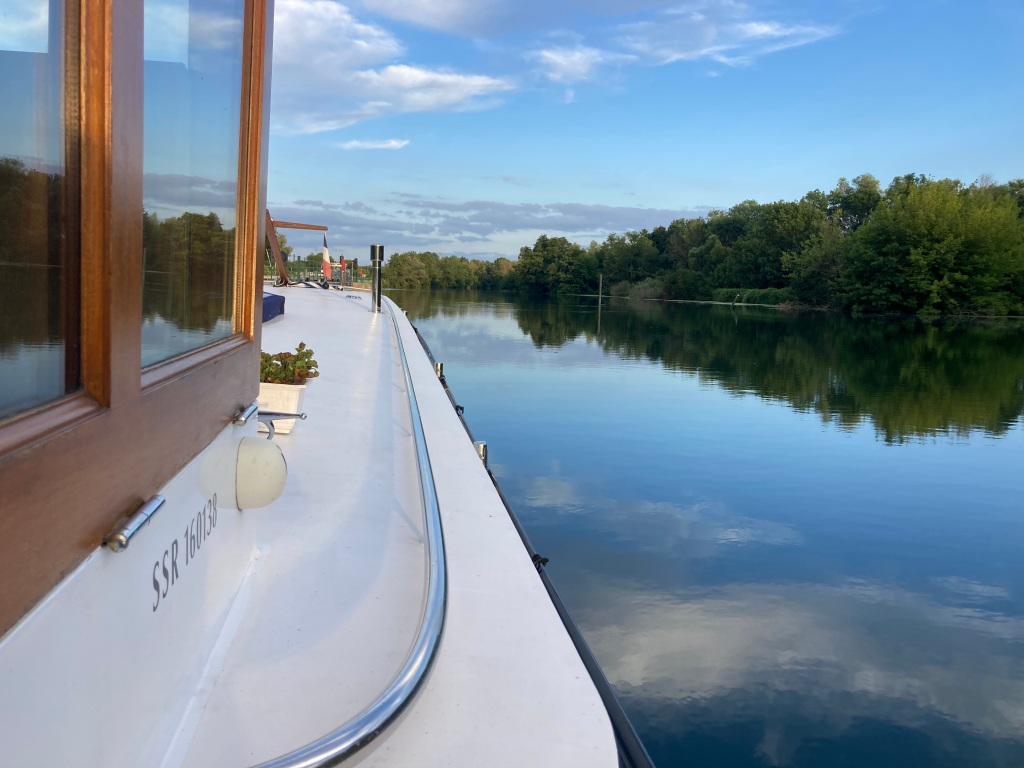
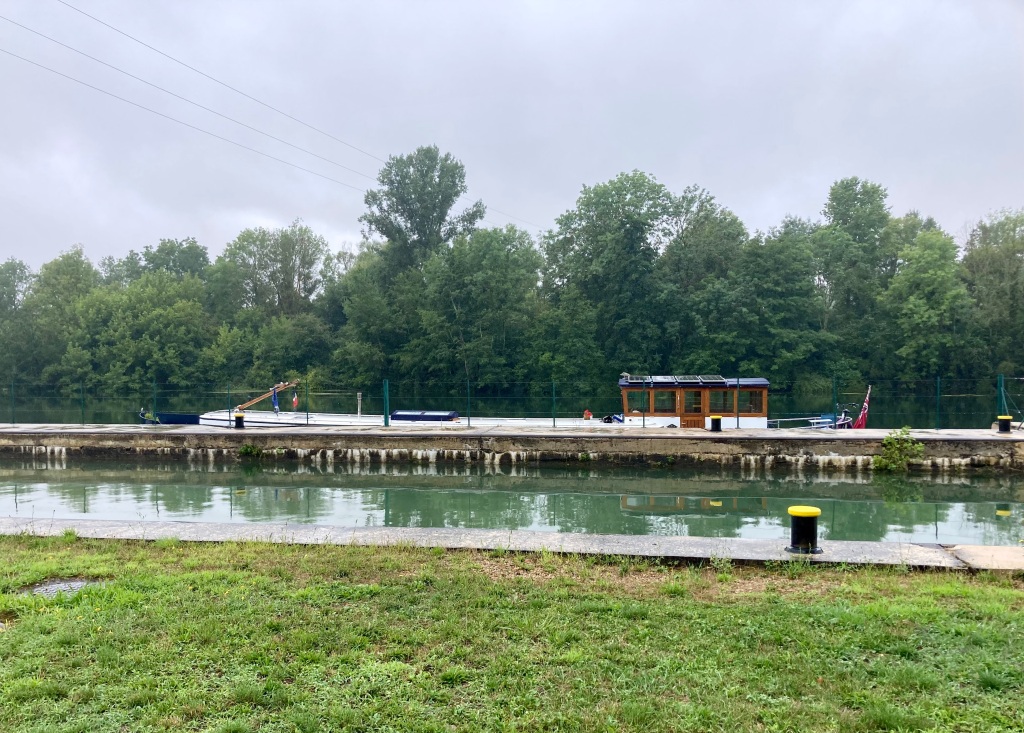

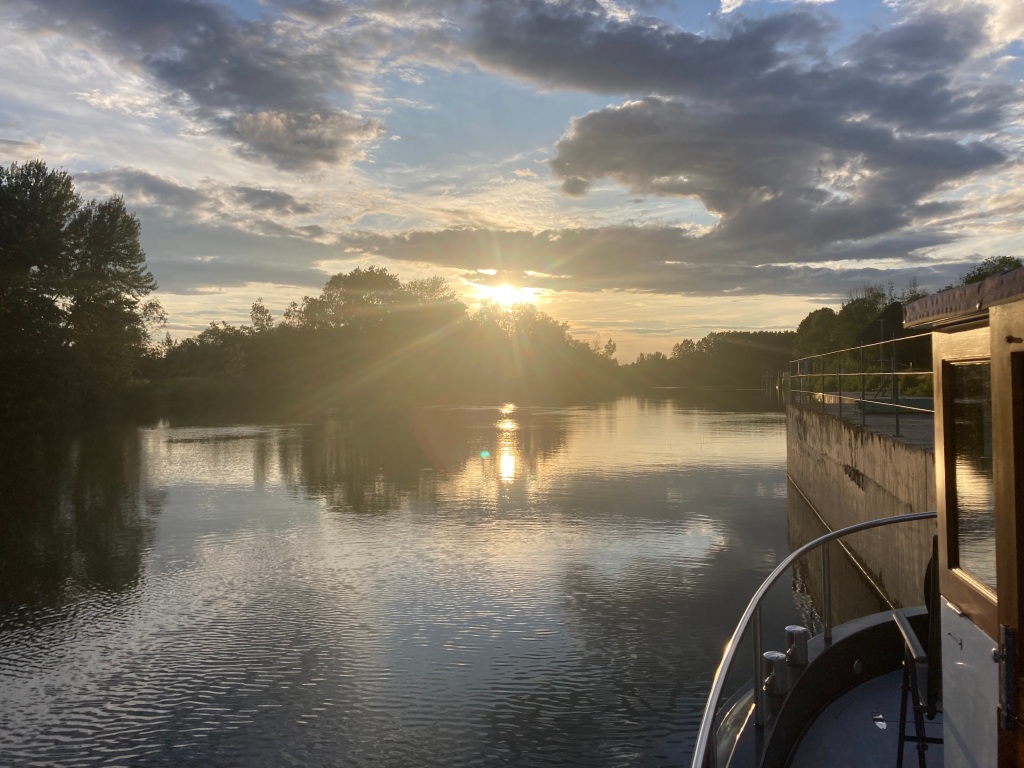
I hope these 4 photos convey how lovely it was to be there, moored below the lock on the river for a few days. The lock at Port Renaud is at the start of a canalised section of the Yonnne. This meant we were on a wide peaceful section of the river with no boats passing except the occasional fisherman’s little craft.
We were more ‘disturbed’ by kingfishers, herons, woodpeckers and the call of golden orioles.
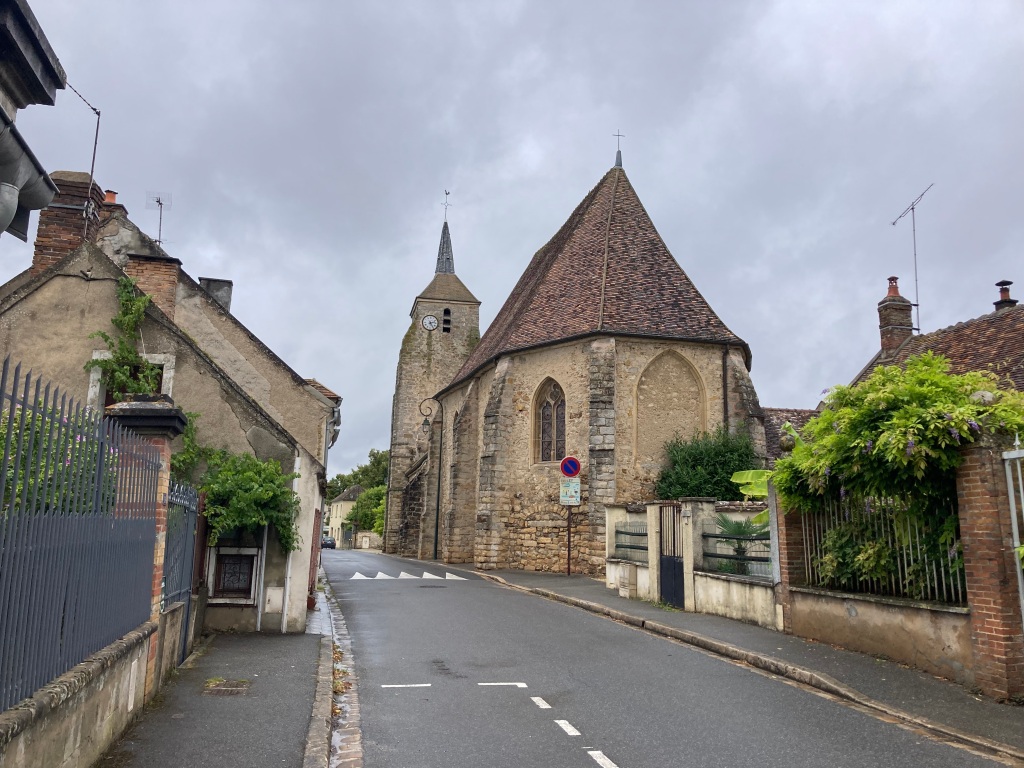
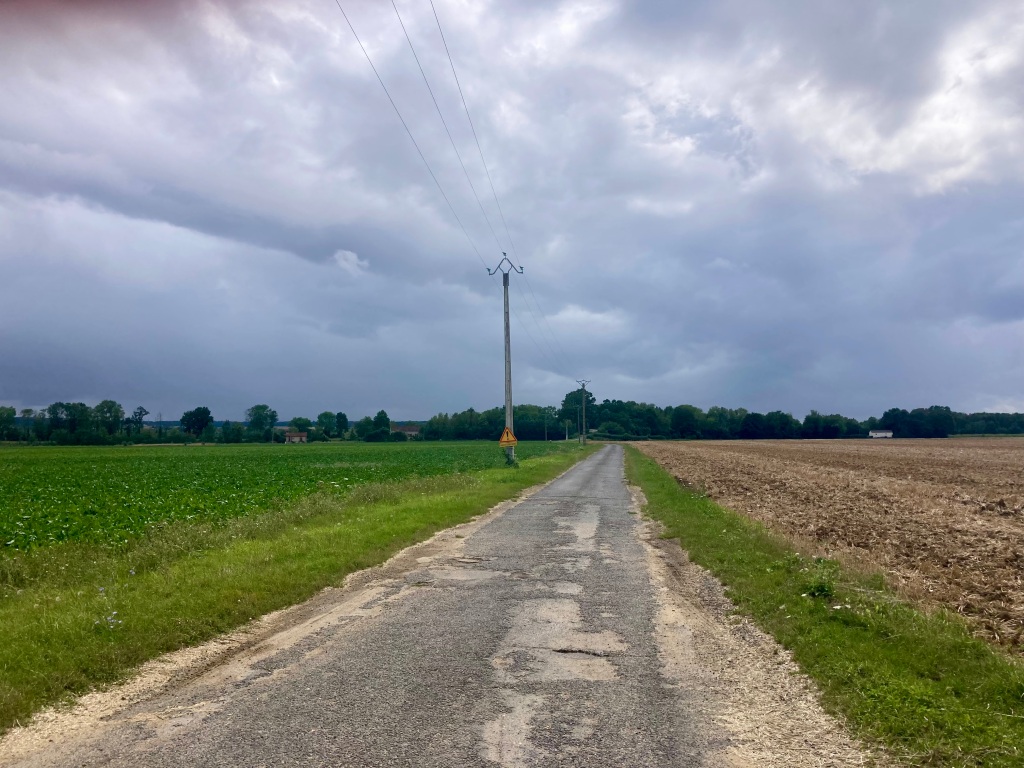
Being away from civilisation is wonderful, as long as you have plenty of stores aboard. Luckily we were well stocked and had no problem bringing together ingredients to make tasty, if unusual, meals.
But the one thing that it is easy to miss in France is fresh baguettes. We did get one special delivery from friends who were coming downstream on their boat and brought us some bread. And we walked to visit the two local villages, one on each direction, along the bank or through the fields.

After a delightful weekend’s sojourn in the country our fuel tanked arrived and a very friendly helpful tanker driver (just visible by the wheelhouse) was soon on board filling us up with 800 litres of white diesel at a good price!
By 1330 we were on our way.
Pont-sur-Yonne

In our very next lock we were pleased to find that from now on the locks have floating pontoons; this one is at Vinneuf.
It is an interesting procedure in these locks; the pontoons are about 10m long, half our length. But Captain Stu had it worked out and by bringing the bow rope back to midships we tied up securely.
Before long we were at the end of the canalised section and re-joining the Yonne.
It was a bit of an overcast day, but I think the photo shows the canal we have left on the right and the river on the left.
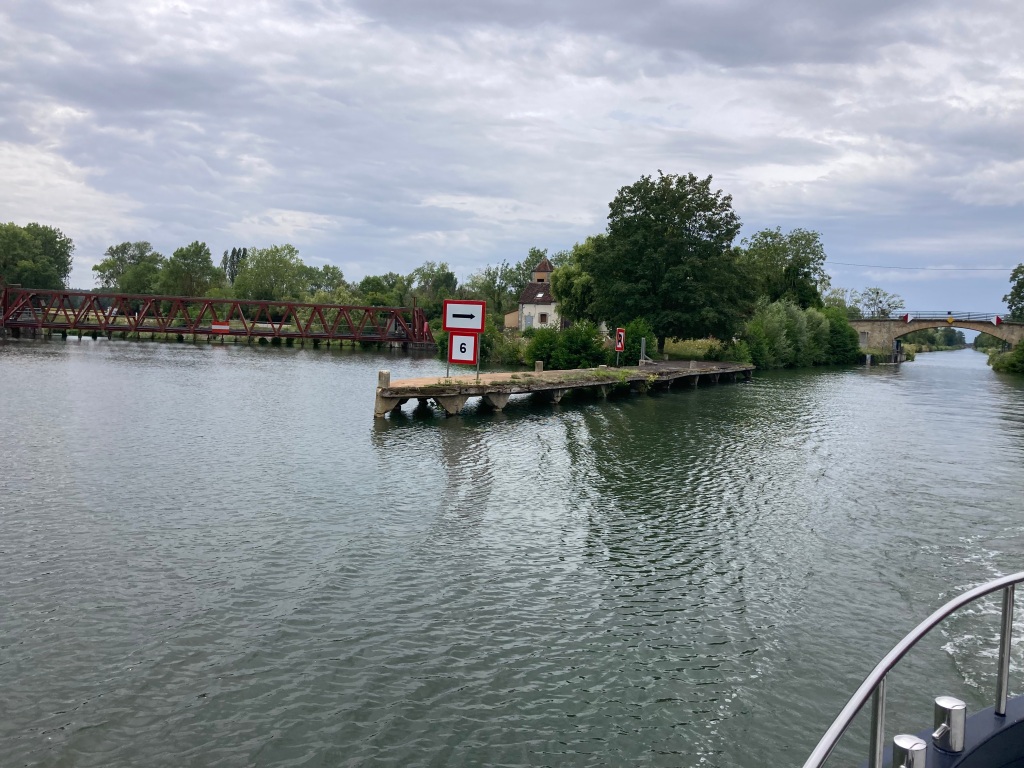
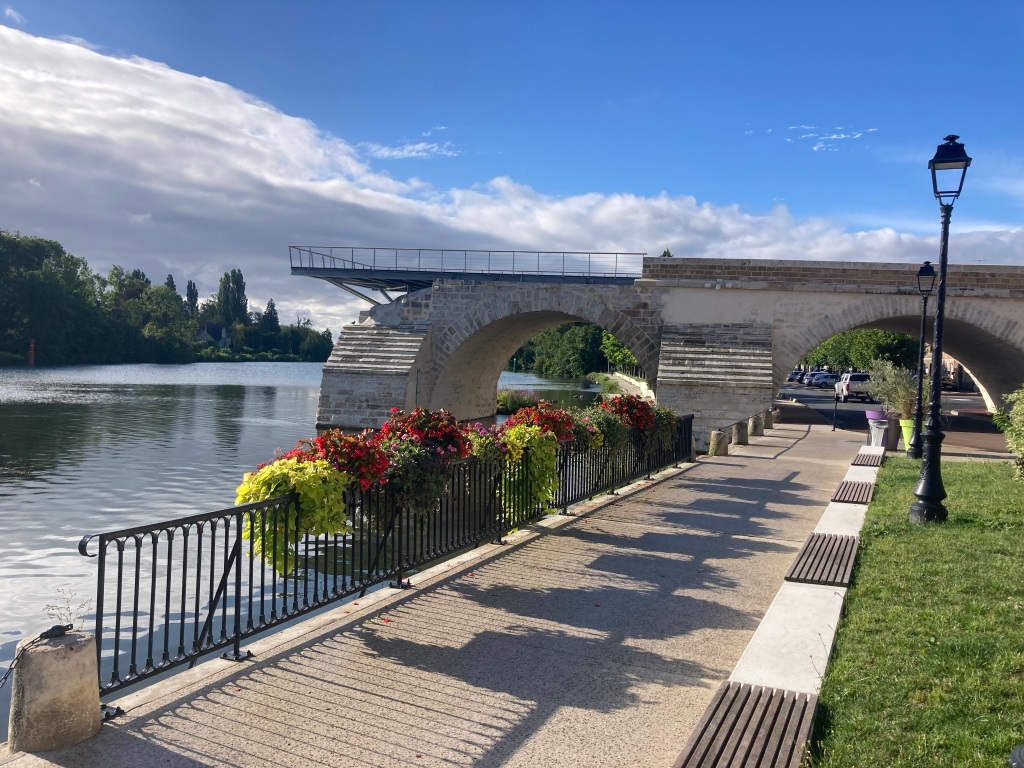
We had been heading for Pont-sur-Yonne where we were due to meet up with my brother and wife – the first of the family visitors. We arrived ahead of time, allowing a quick walk into the village for a few supplies and a first look at the remains of the old pont (bridge) over the Yonne.
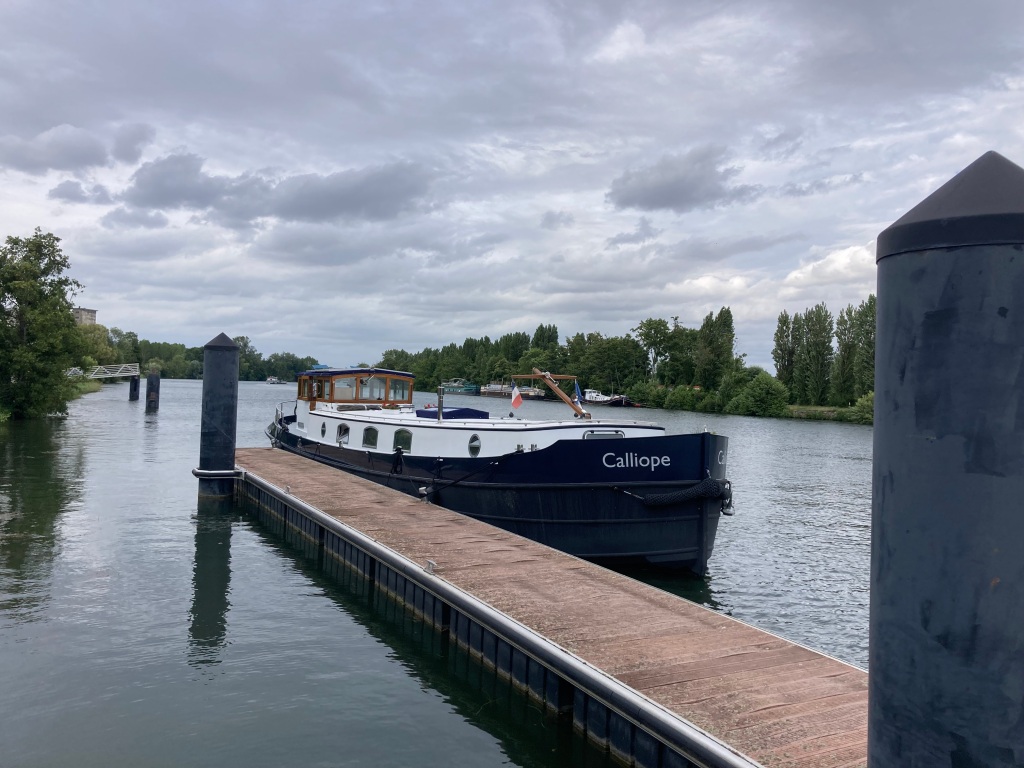
There are good long mooring pontoons just below the bridge and we were pleased to secure a space at the downstream end.
By the time I had returned with my bag of food and drink goodies we had been joined by my brother Phil and sister-in-law Geraldine. They were on their way through France to enjoy a holiday further south but managed to catch up with us on the way.
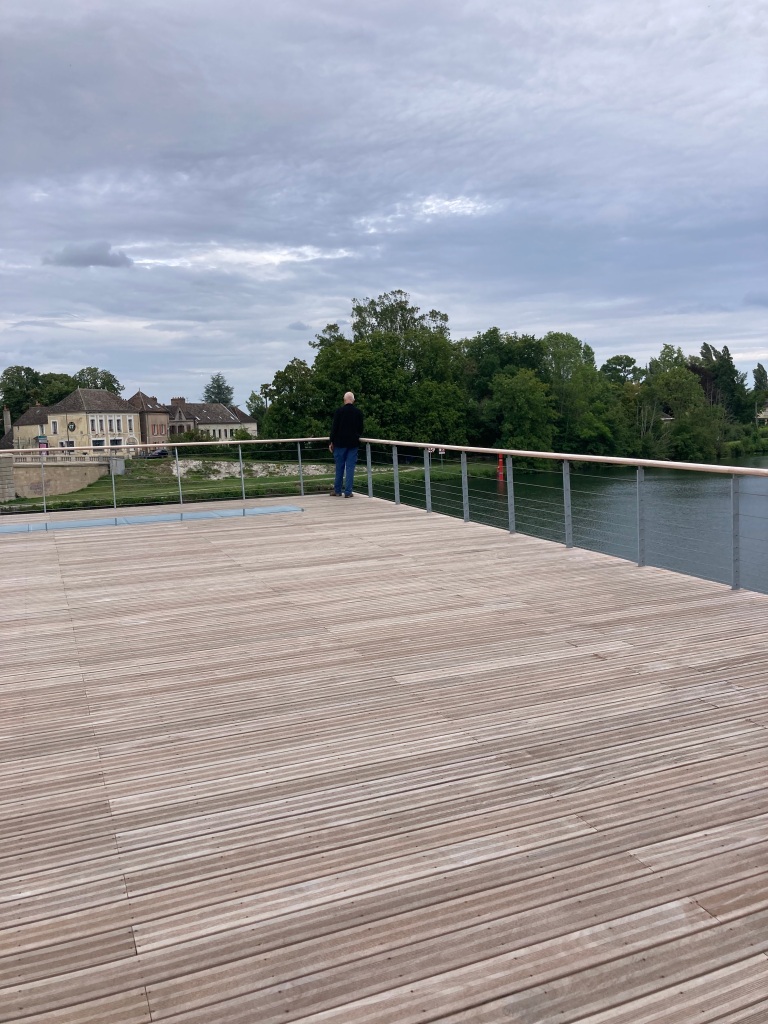

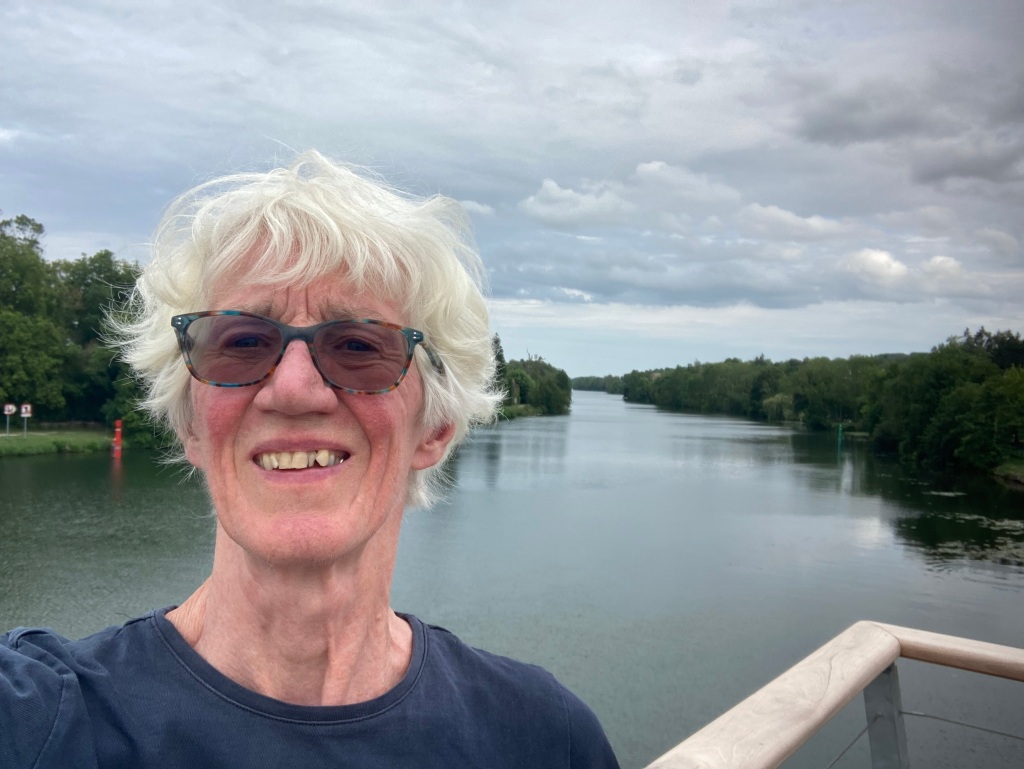
Of course we had to return to the famous bridge, or what is left of it. This time we went up on the bridge and discovered a timber viewing platform with a glass section allowing the brave to walk over the water below!

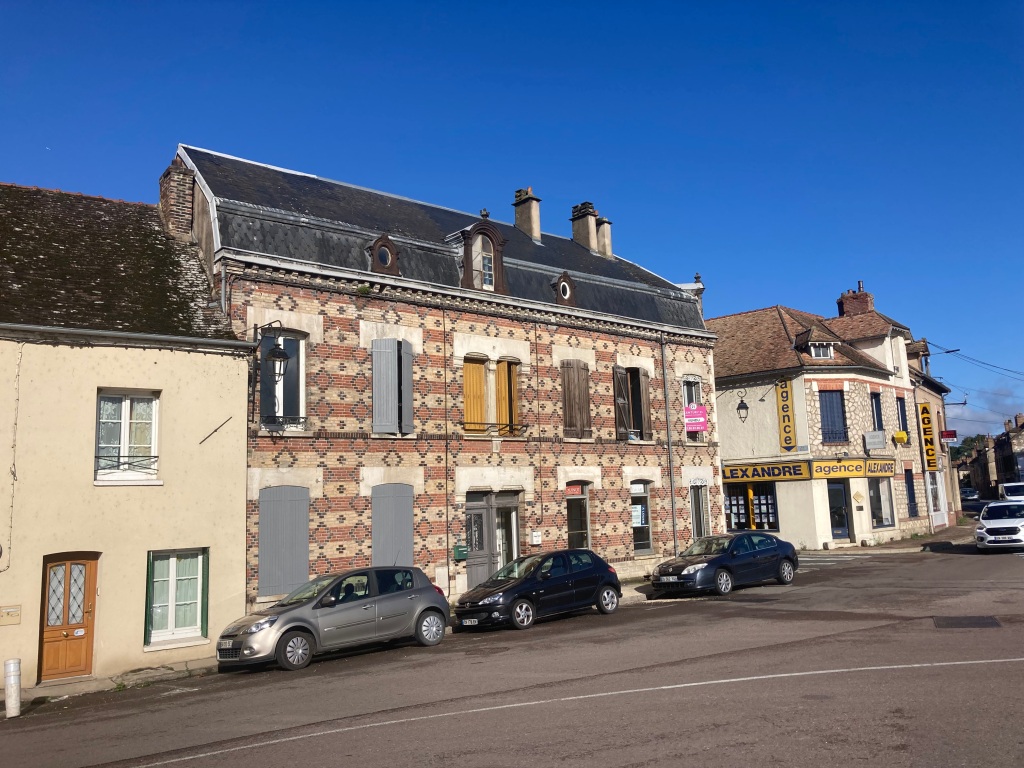
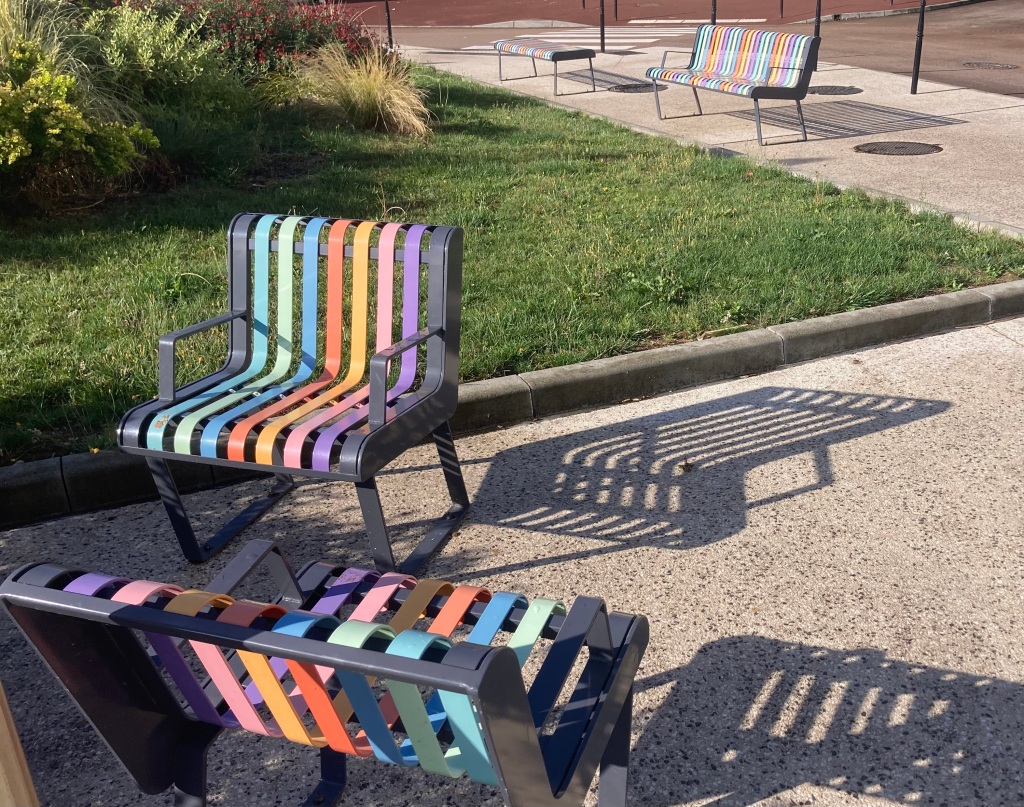
We left the Captain on board while three of us had a walk round the small town. As so often in France there are many interesting buildings amongst the more ordinary, and also some really modern touches, including the adaptation of the old bridge.
The central photo attempts to show the fancy colourful and patterned brickwork that was on many of the houses .
Before leaving Pont-sur-Yonne a little history might bne interesting.
Sens
Although only with us for two nights Phil and Geraldine were keen to get some cruising time in so we moved on next morning, leaving their car behind to be picked up next day. We were heading for Sens and luckily there are frequent trains between the two places.
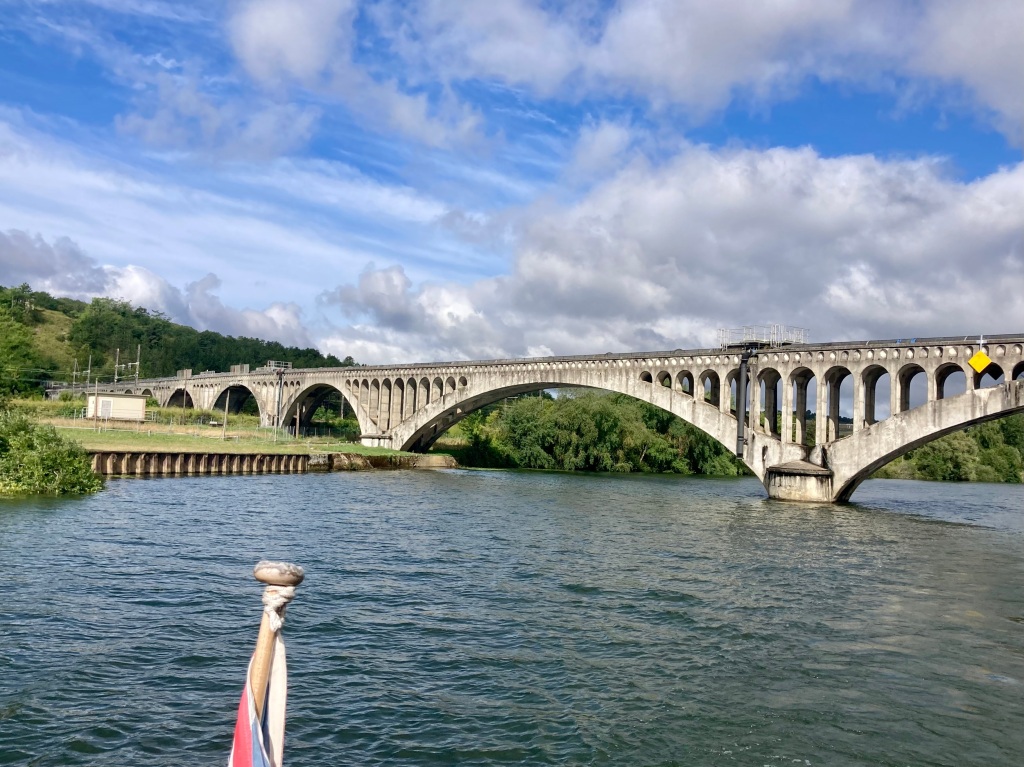
The first structure to be seen was a much newer bridge over the Yonne – in fact it is an aqueduct built at the end of the 19th century.
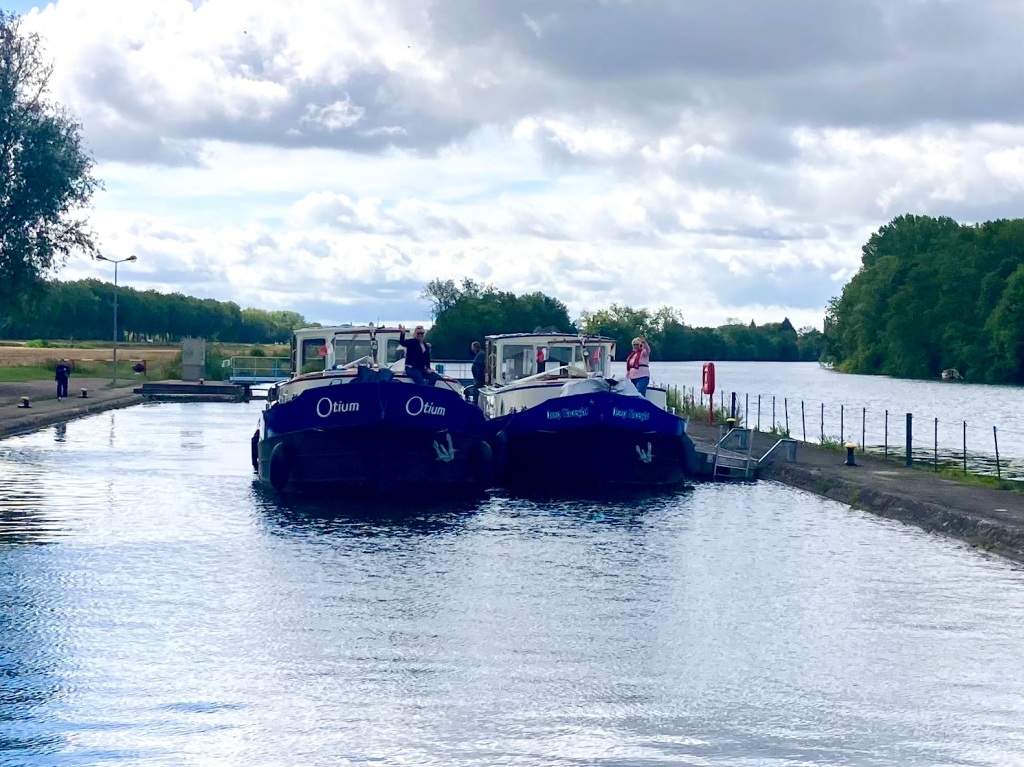
Then as we progresses up the river we once more came across two Piper boats travelling in convoy.
This was at the écluse at Cuy., where the sloping side lock had one platform to help boats go up or down. So being friends they rafted together to the platform and negotiated the lock ‘ensemble’.
In the meantime we had to wait below the lock for our turn, but that did give me the opportunity to walk up to the lock take the photo of the two boats.
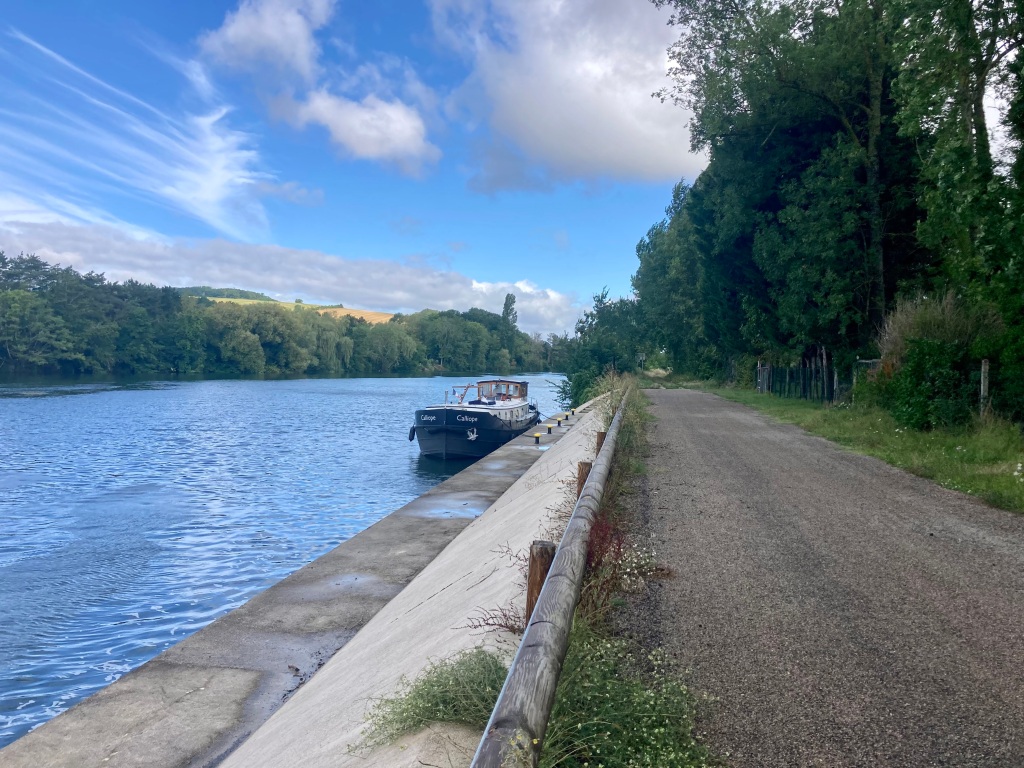

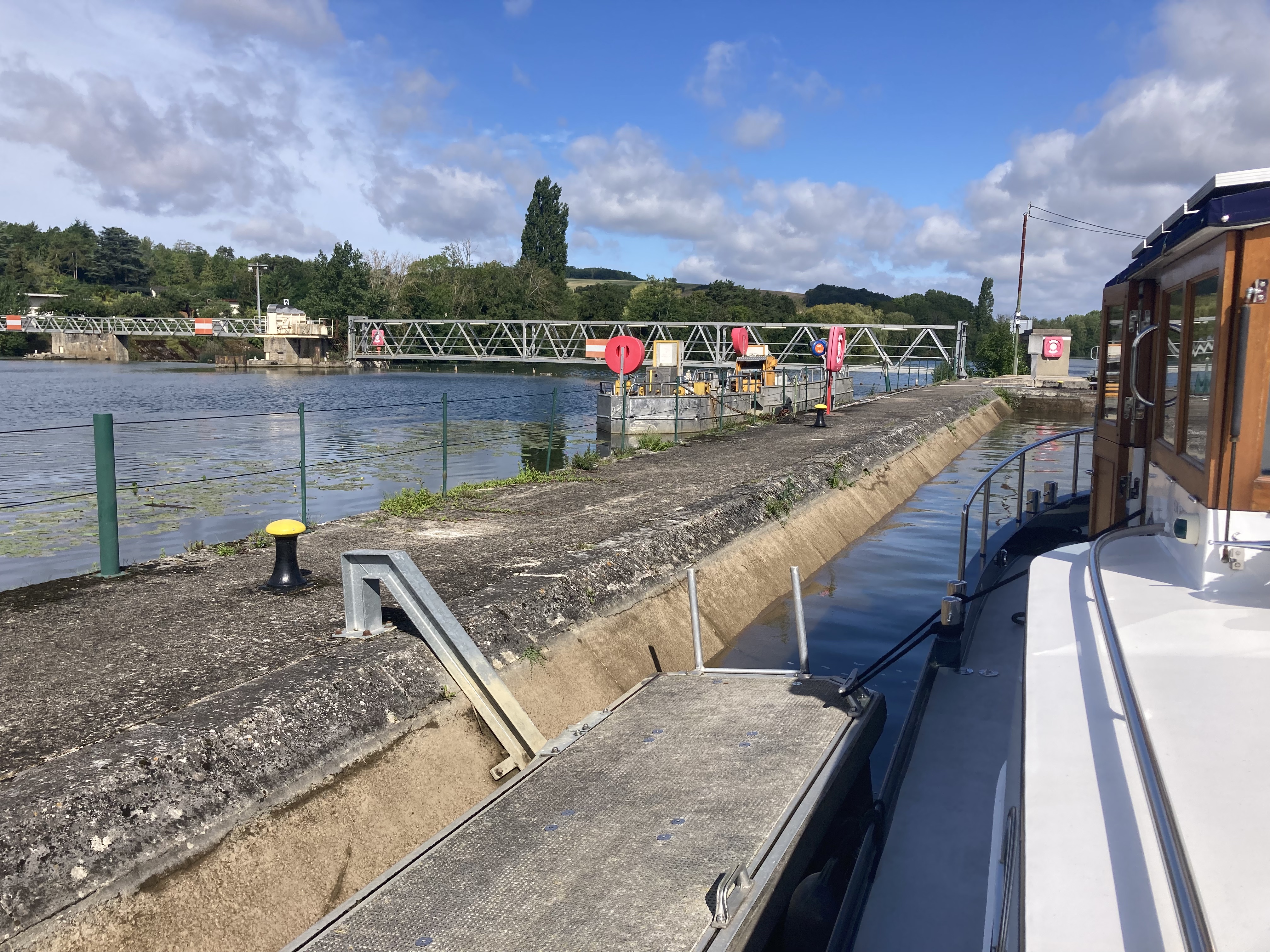
Then it was Calliope’s turn. These two photos illustrate rather well the Yonne sloping side locks with their floating pontoons. You can see Calliope attached to the pontoon at the bottom of the lock, and then again at the top. It is an effective waY of dealing with a difficult structure, apparently built to give extra strength to the walls of the locks.
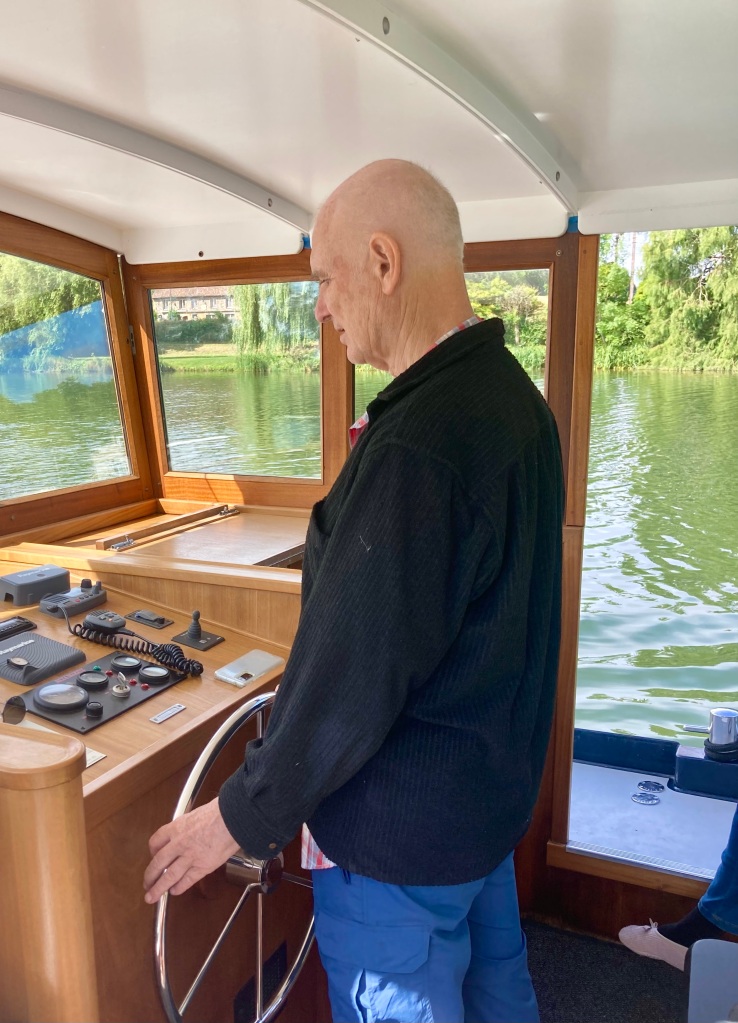
Soon after that Captain Stu relinquished the helm and let brother Phil have a go.
He is a good and experienced car driver, but soon learned that the currents and different depths on a river mean that a boat does not respond in quite the same way as a car.
After a bit he got the hang of it, and enjoyed it I think!.
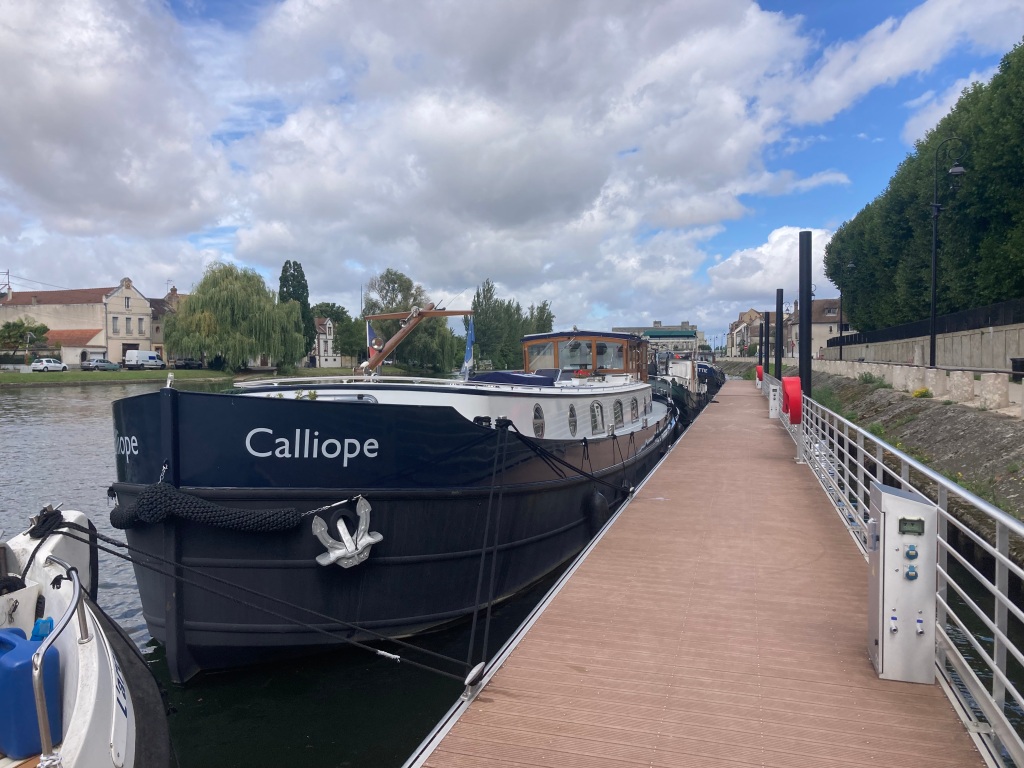
As planned we were approaching Sens by lunchtime. Mooring was not as easy as this image suggests; initially we could not see a decent space on the pontoon and headed for the stone quay, but another, smaller, boat rudely nipped in ion freont of us and was not interested in moving..
However it emerged that neither of us could easily moor on the quay due to the spacing of the bollards, and friends from another boat who had paced out the pontoon space reckoned it was just long enough. So with his usual good helmsmanship Stu put Calliope into a space about 2m longer than we are; beautiful.
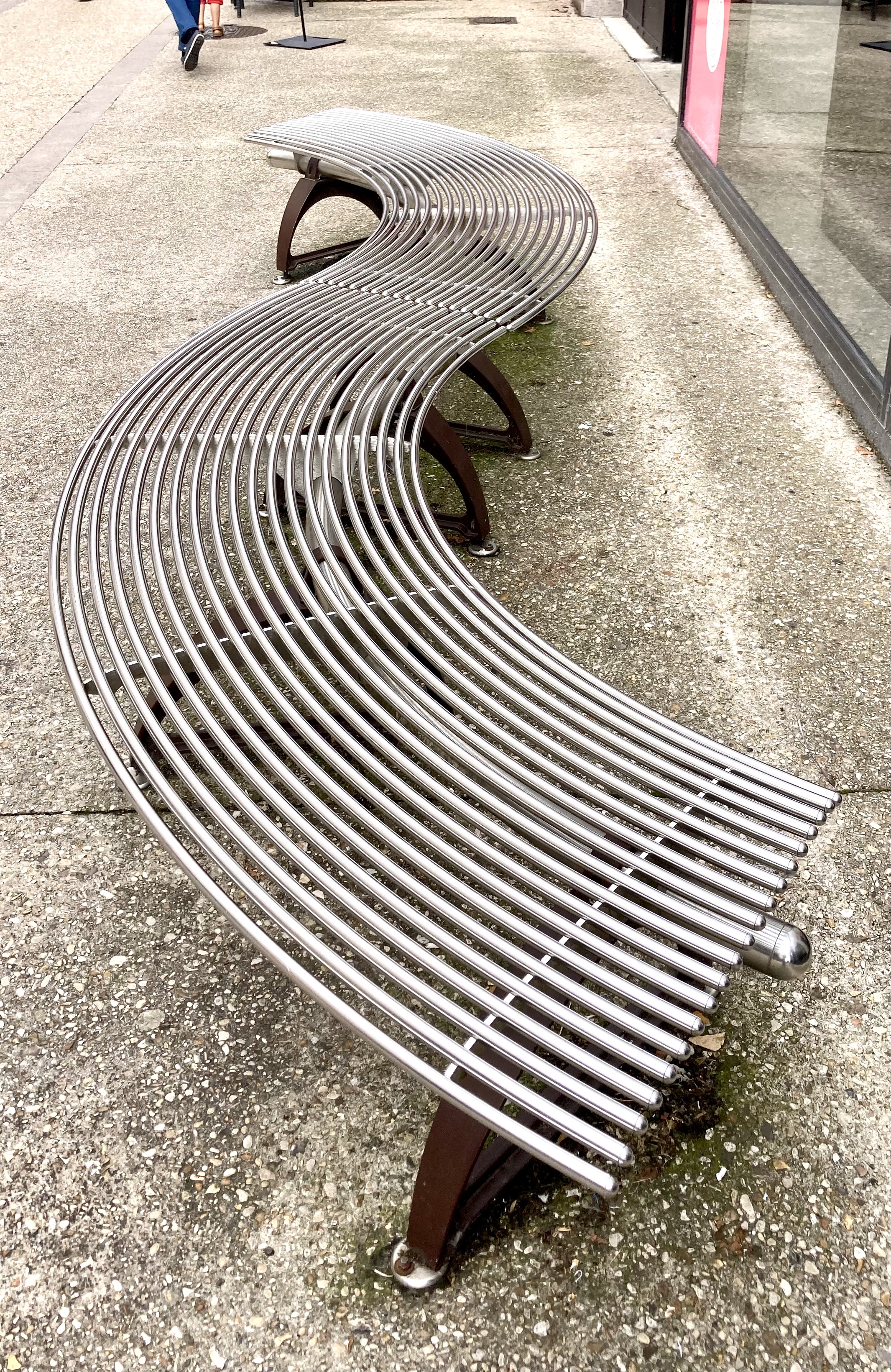
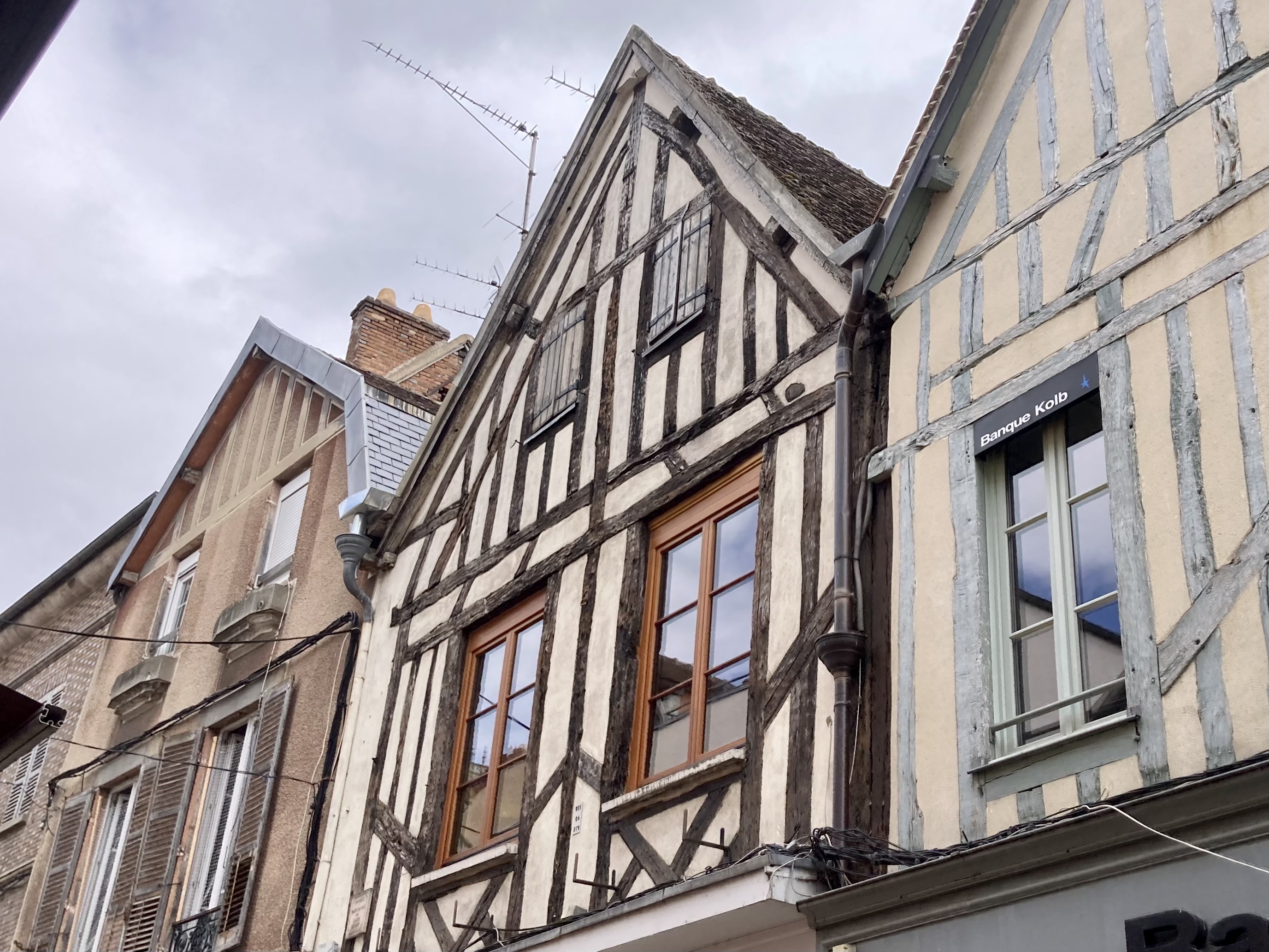
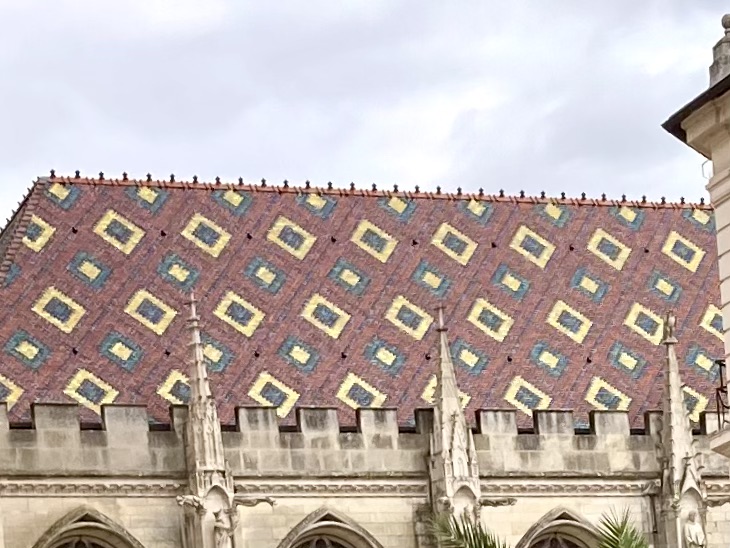
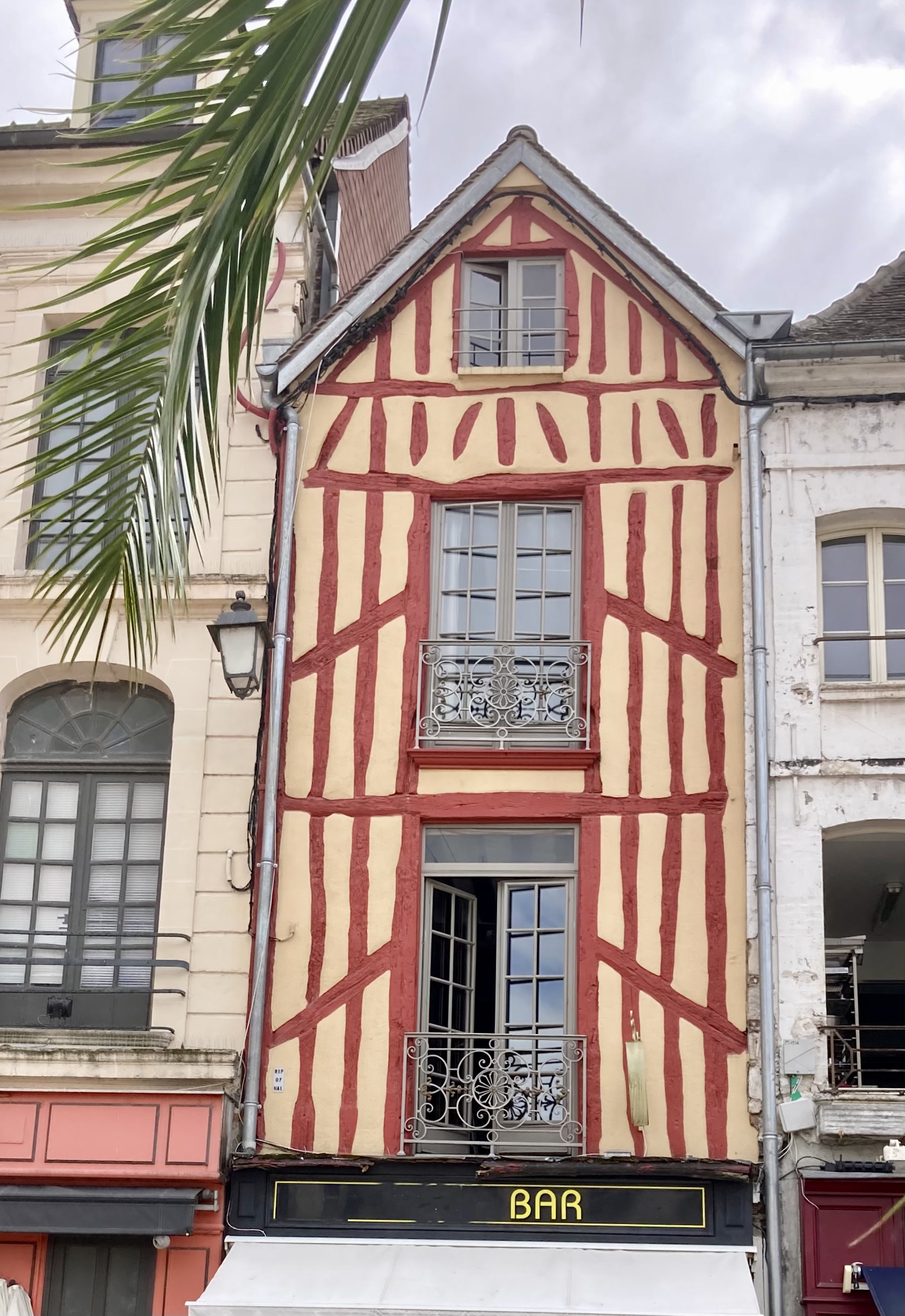
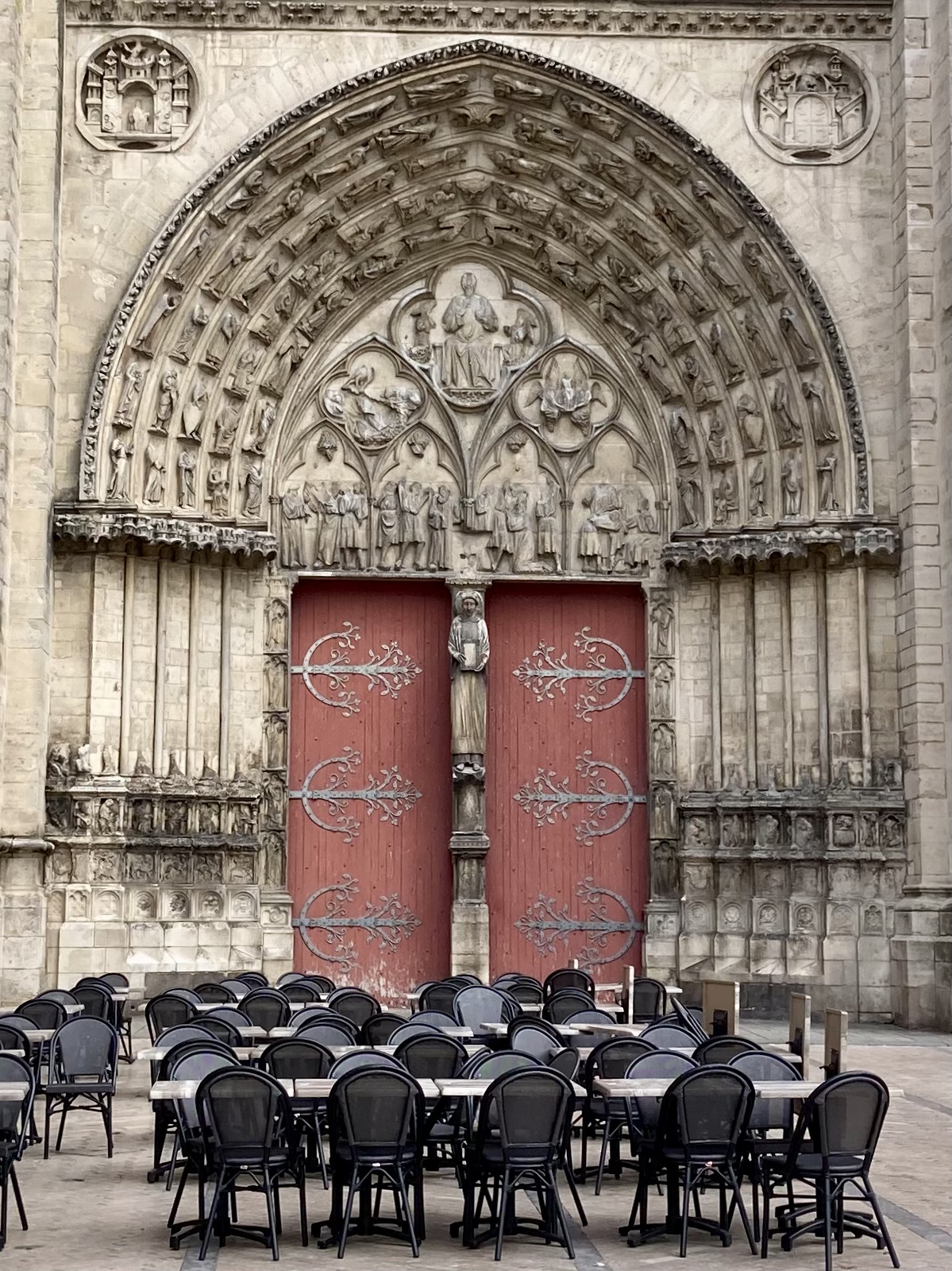


And so began a couple of days in Sens, another fascinating and often beautiful city; it’s a shame it was so grey. Much of the city is very old and the streets are lined with timbered buildings.
The cathedral is a Gothic style building from the 12th century; the town hall is early twentieth century, and there are examples from every century in-between. And probably the wavy steel bench brings us up to date.
An interesting English connection is that Thomas Becket lived in a monastery close to the city, effectively a refugee from his home country due to differences between him and the King. A window in the cathedral is a memorial to his time in Sens.
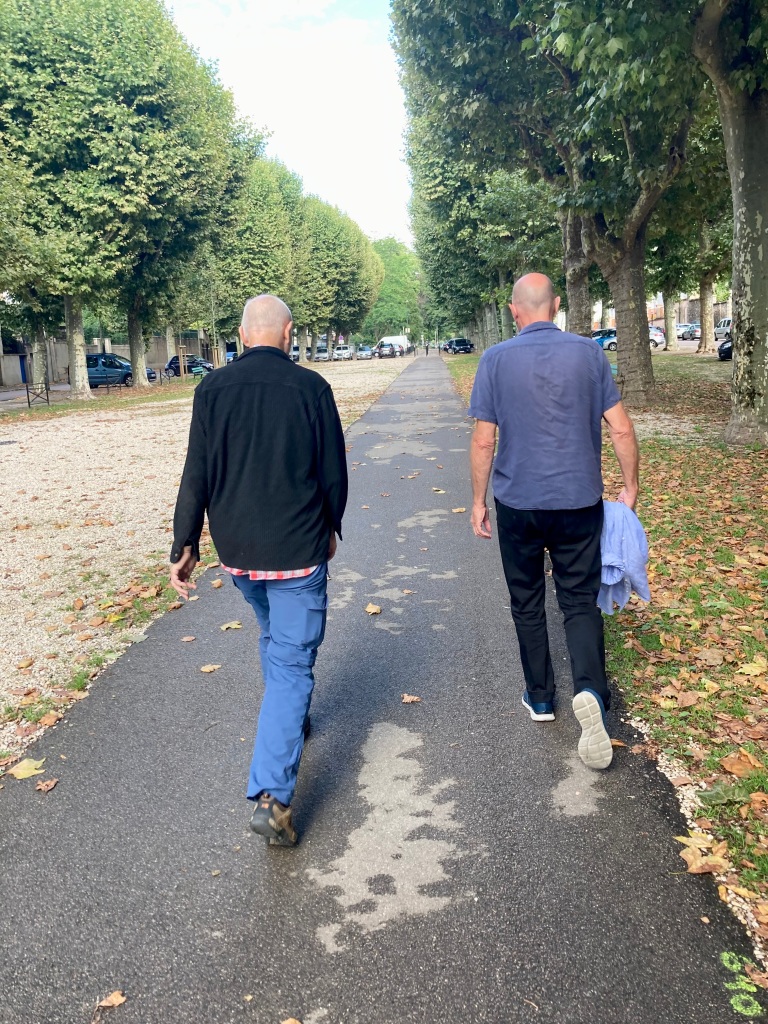
Phil had done research into the Gallo-Roman times of Sens and knew that we could trace the lines of the old city walls along tree lined avenues.
So in the evening we went walking round those line in search of a curry – an odd thing to do in France I suppose, but that’s what we all felt like eating.
And we found one.
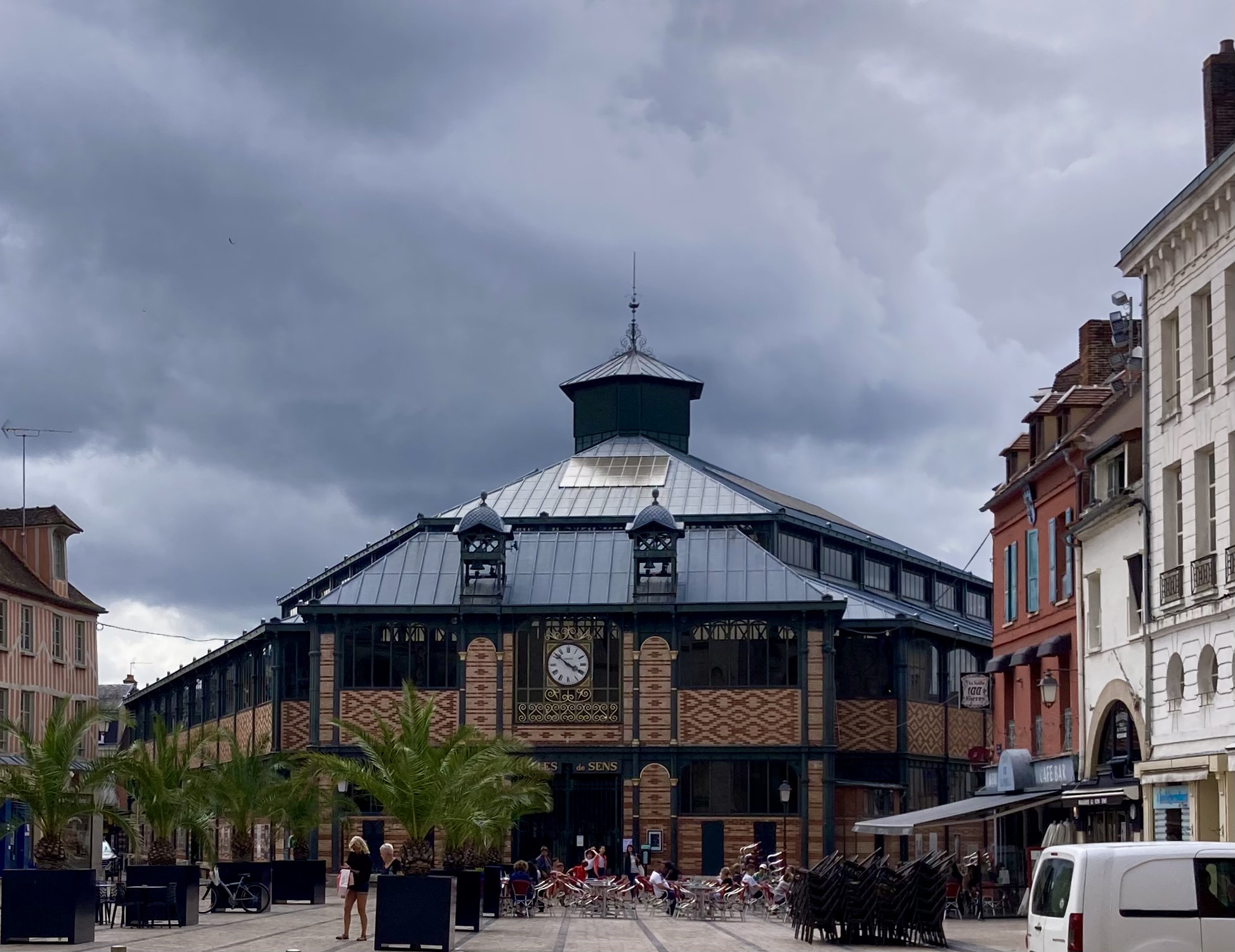
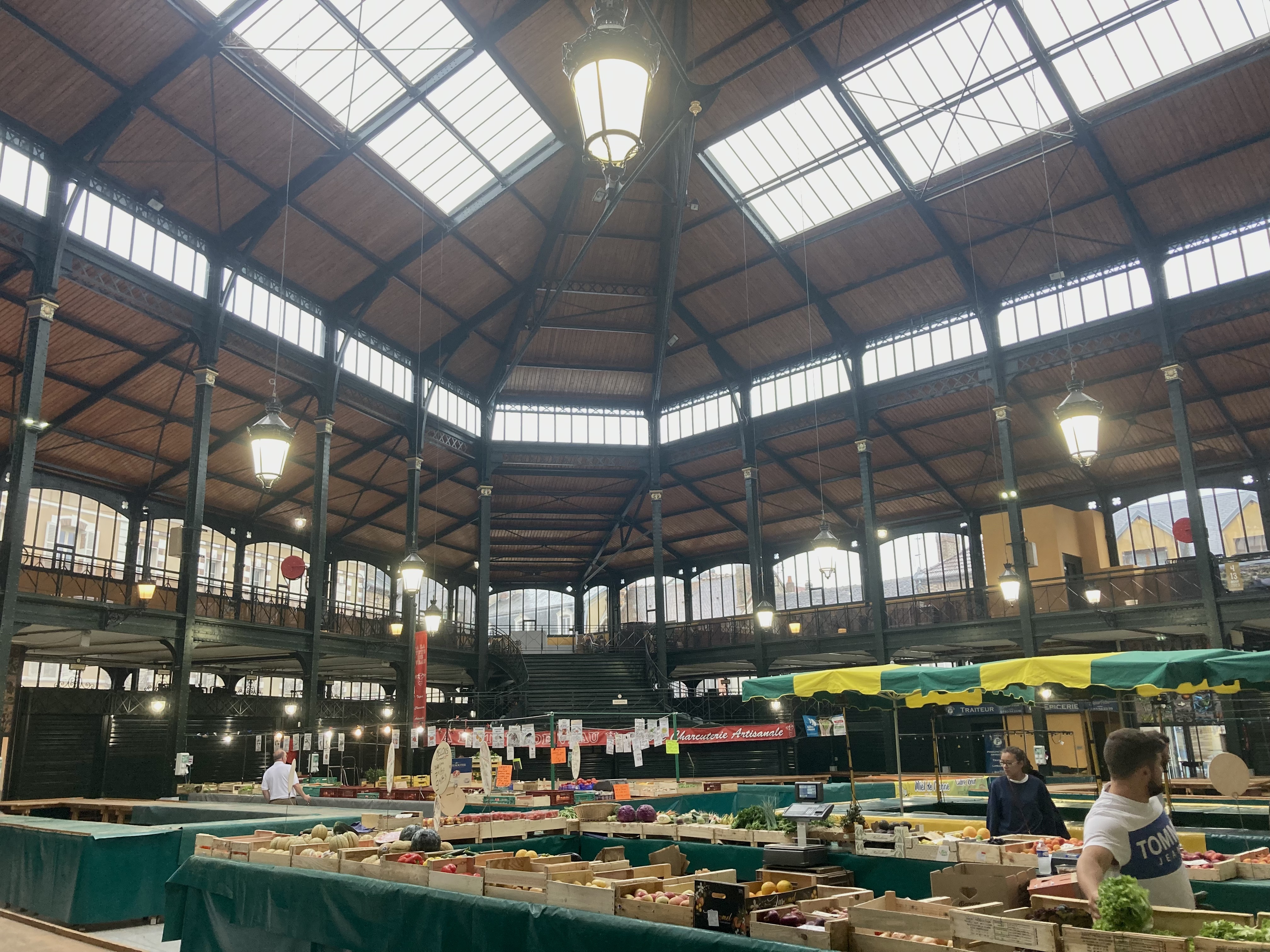
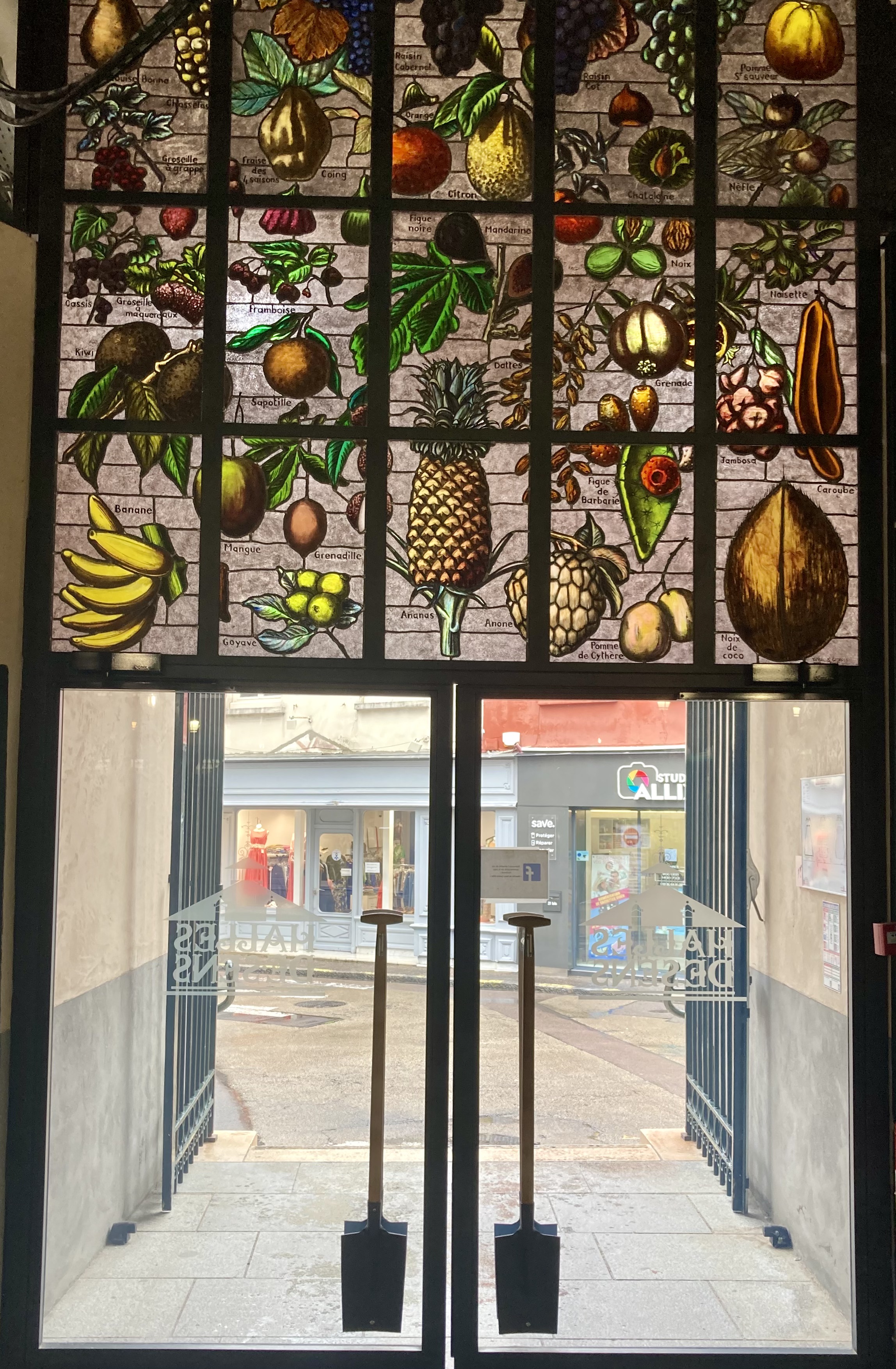
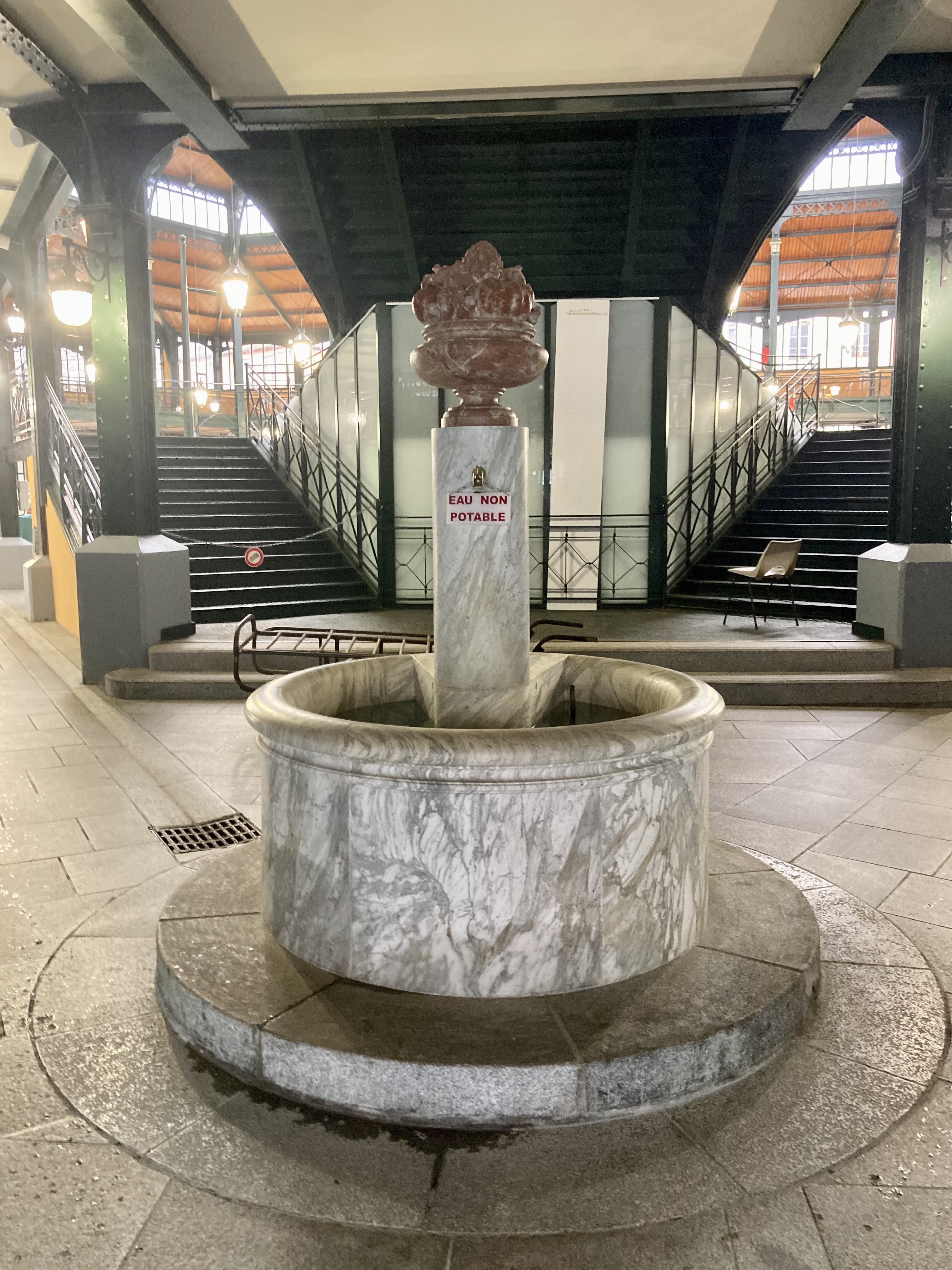
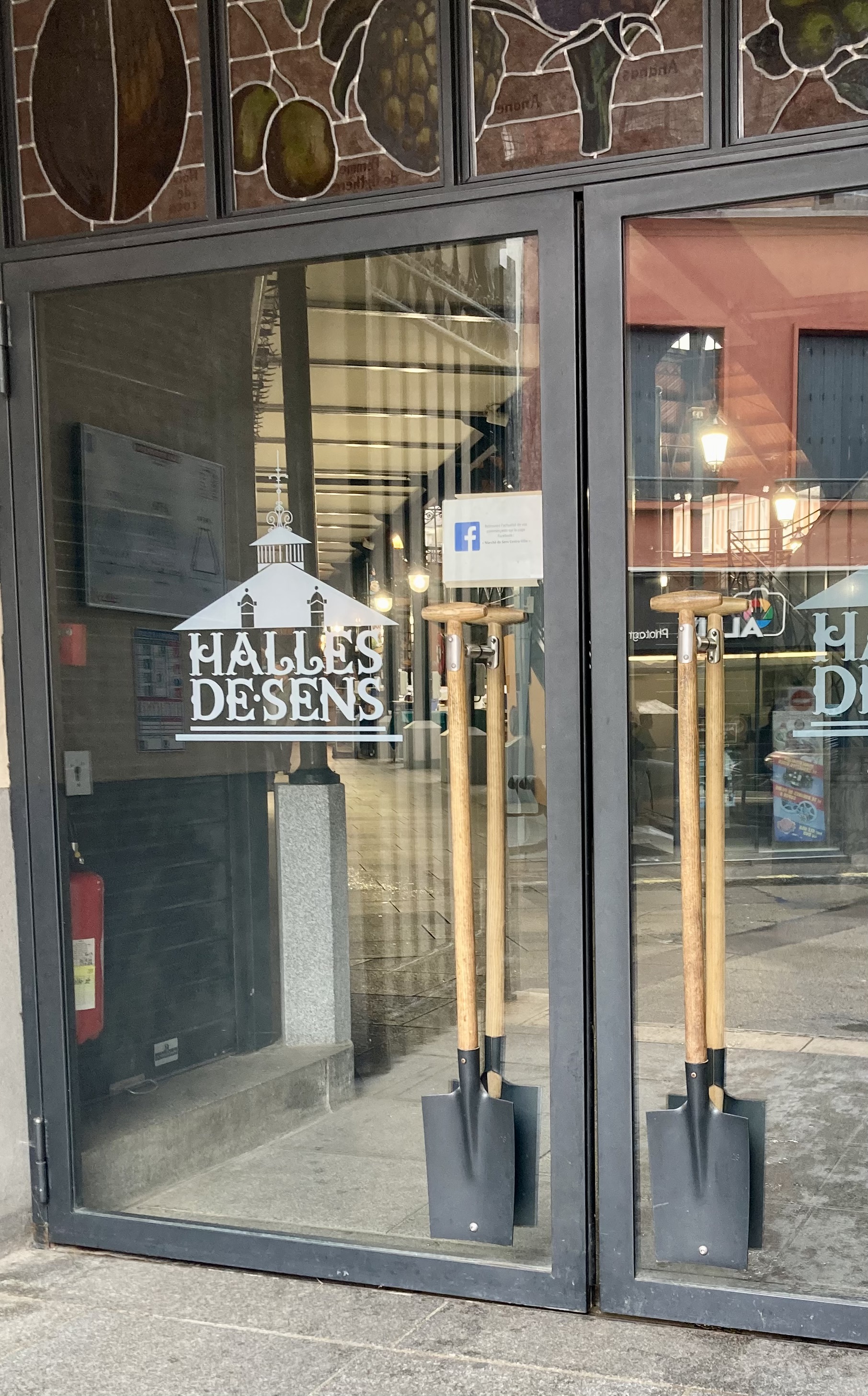
One of the most beautiful (slightly) old buildings is Les Halles de Sens – the covered fresh food market. It stands proudly opposite the cathedral across an open square, light and airy inside.
Above the doors the stained glass gives an indication of the joyous foods within, although the day that I visited was not a main market day and there were only a few stalls and tasty delights to ponder.
The doors have spades as handles, quite a quaint reference to the origins of much of the food inside; I think these are probably a more recent addition.
And just inside one door is a big marble fountain, disappointingly with ‘non potable’ (drinkable) water there days.
Overall Les Halles de Sens, like les halles in so many other French towns, is a great reminder of the importance that France has attached to good fresh food for centuries. So often they offer a taste adventure of local flavours and food combinations. I love them almost as much as lavoirs!
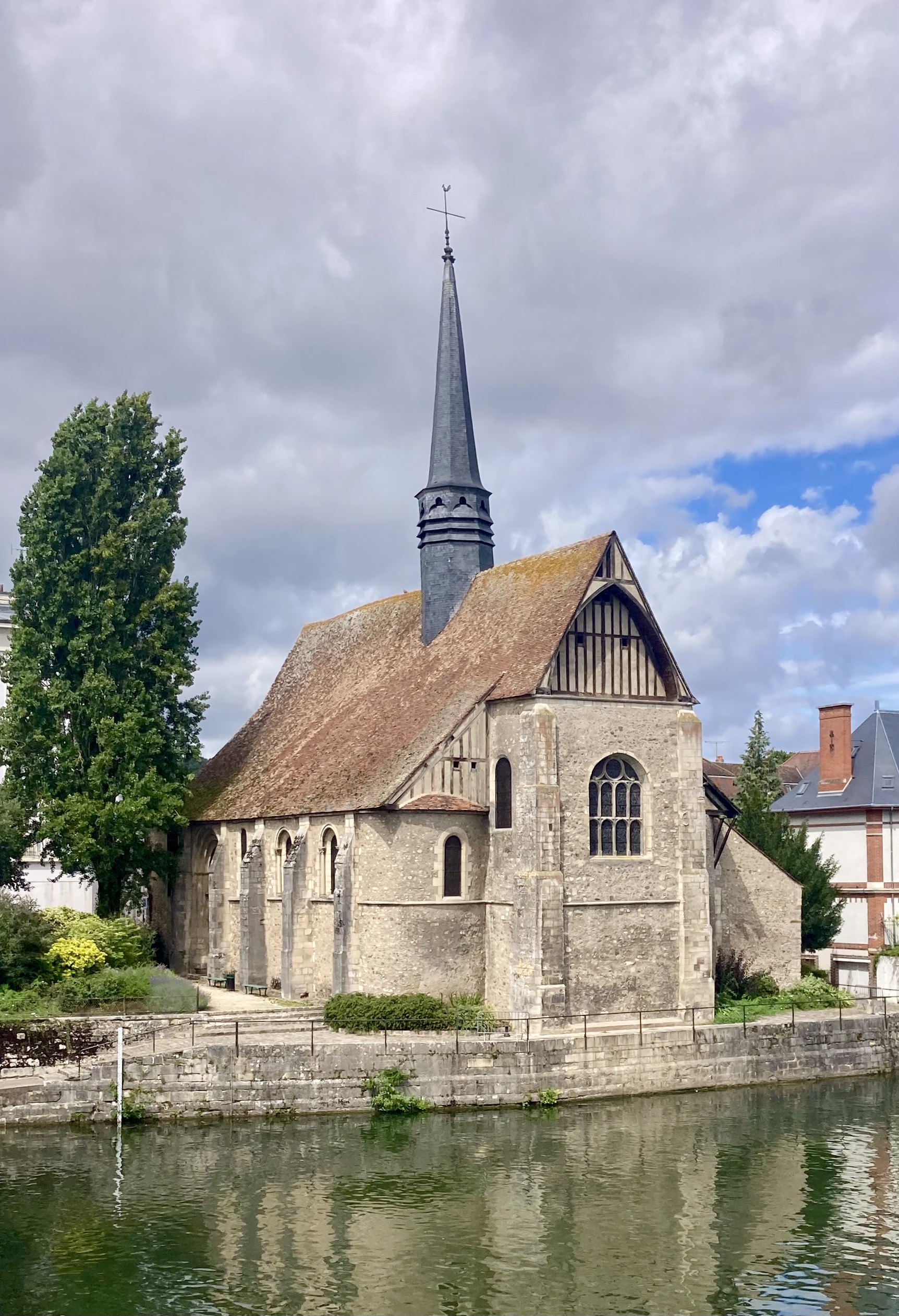
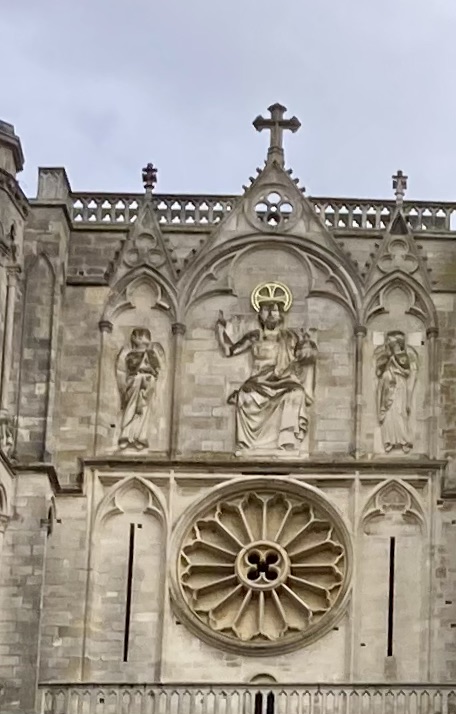
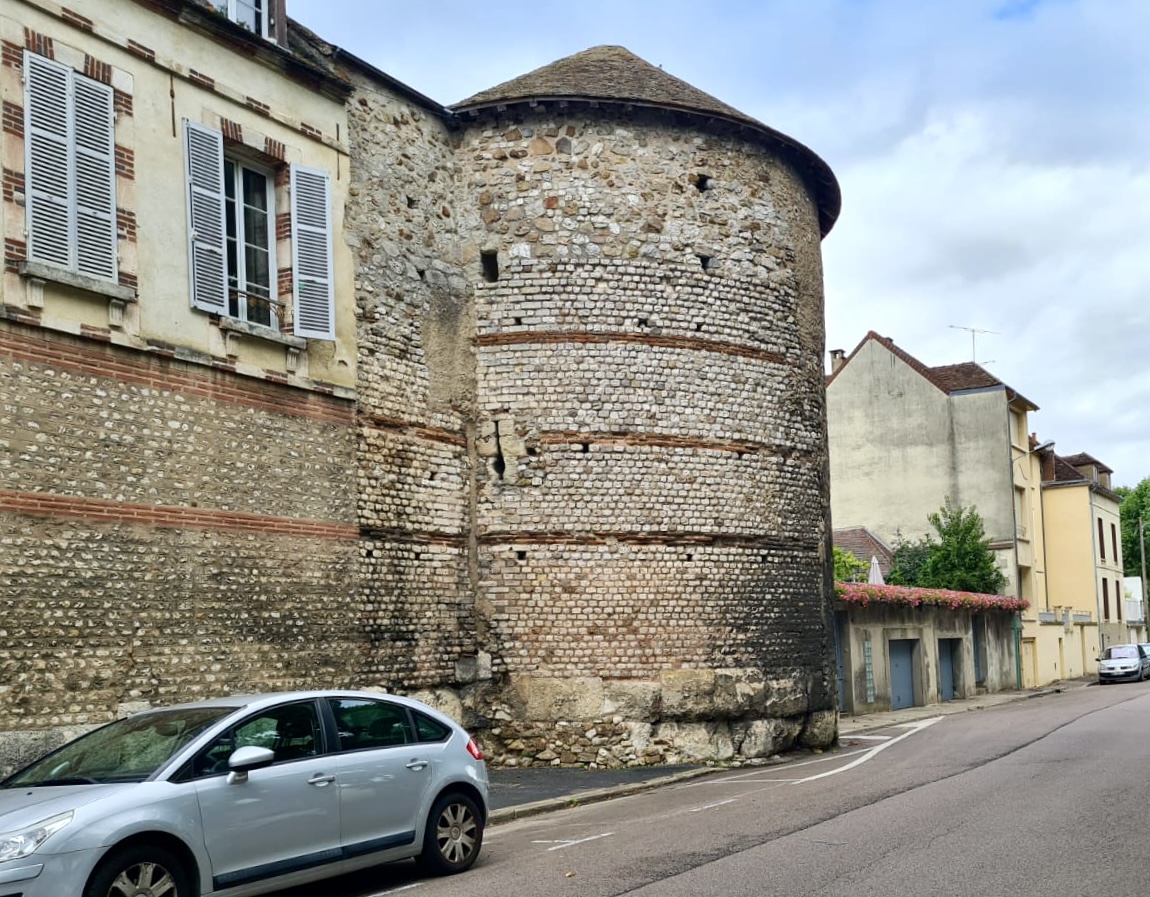
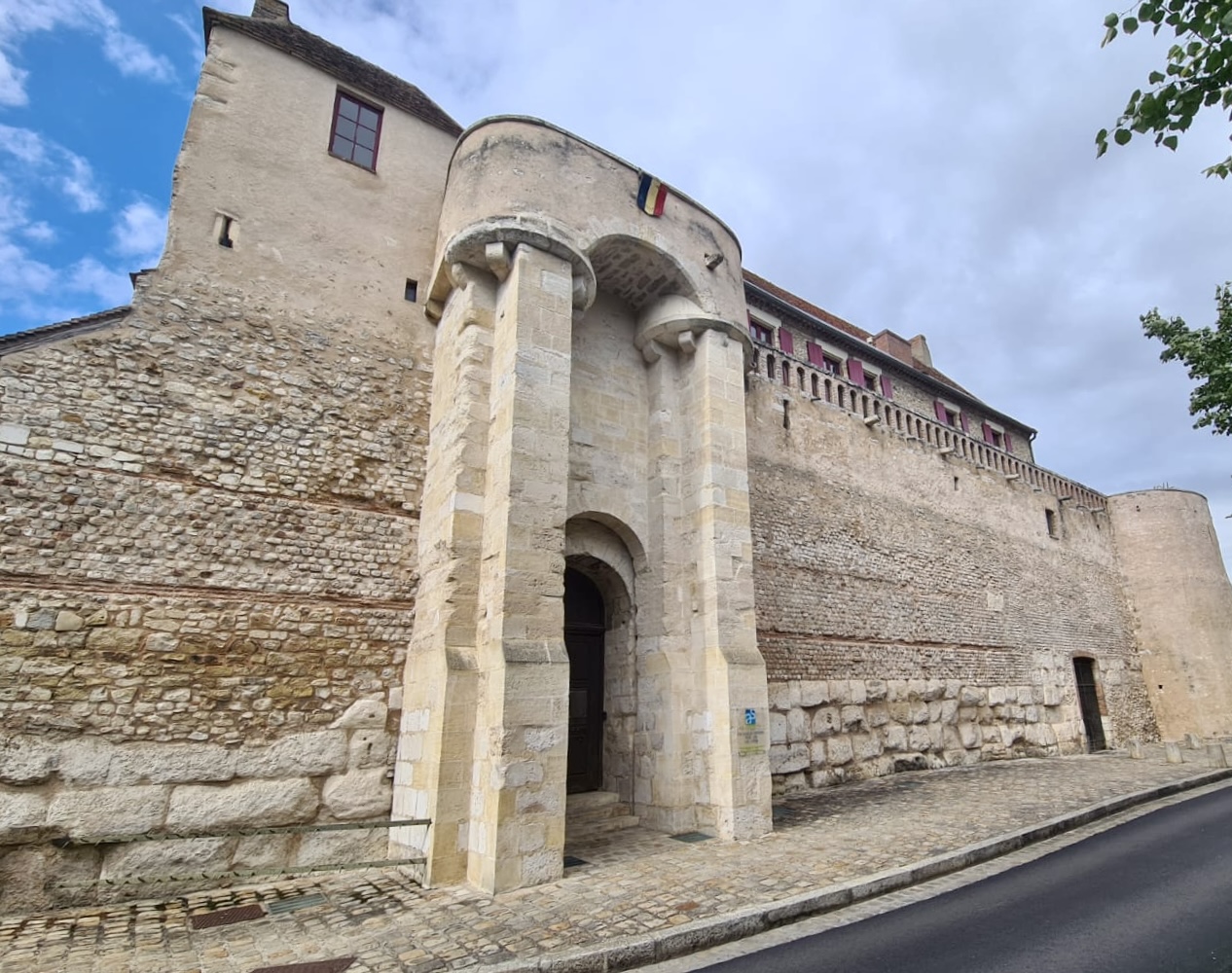
I could fill an entire blog just on Sens, but this is supposed to be about the Yonne. So I will finish the Sens section with a few small photos. Two show some remaining parts of the town walls, the lower levels of which go back to the Romans. One is of St Matthew’s church which stands on the island in the middle of the Yonnne at Sens.
And the last one is ……
We had a plan for the next day. Phil and Geraldine were to go back to Pont-sur-Yonne to collect their car and continue their holiday. We were to continue upstream for two days towards Auxerre where we were to meet son Ashley and partner Theresa in a few days time.
Other boaters had warned us about a forecast ‘orage’, but we are always optimistic. However we woke to a truly massive storm with heavy rain and strong gusting winds.
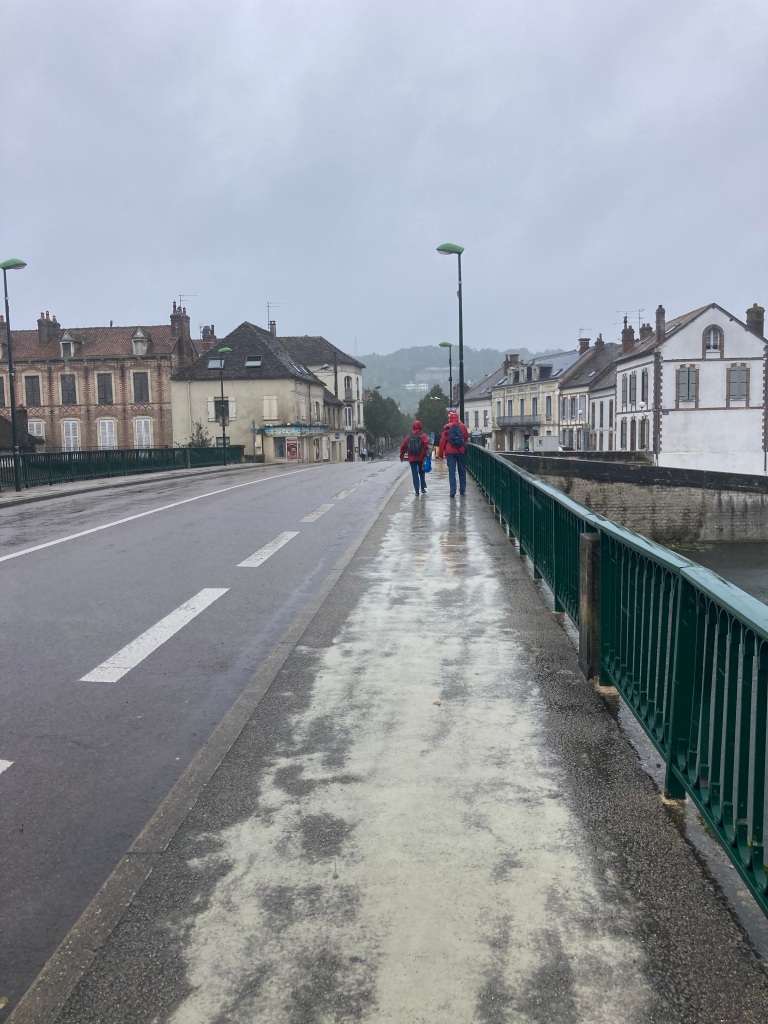
Phil and Geraldine needed to press on so I walked with them across two bridges to the station, but on my return to Calliope it was fairly obvious that we needed to hunker down for 24 hours!
The next morning was still a bit wet, but manageable! So we set off upstream towards Villeneuve-sur-Yonne.
Villeneuve-sur Yonne
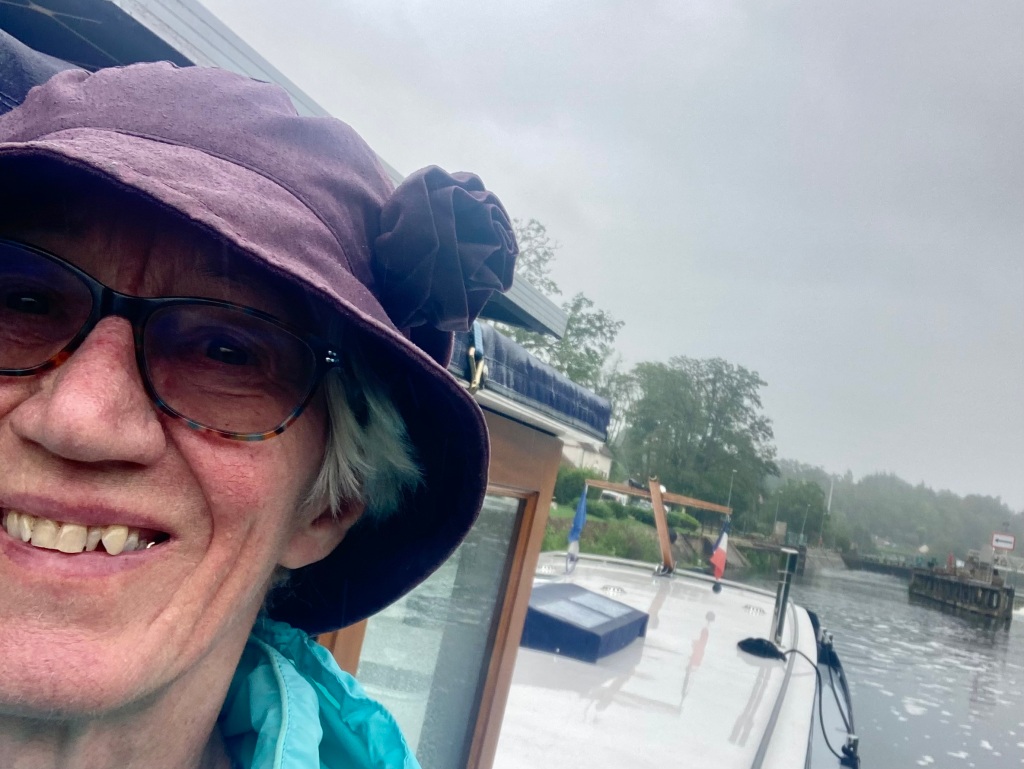
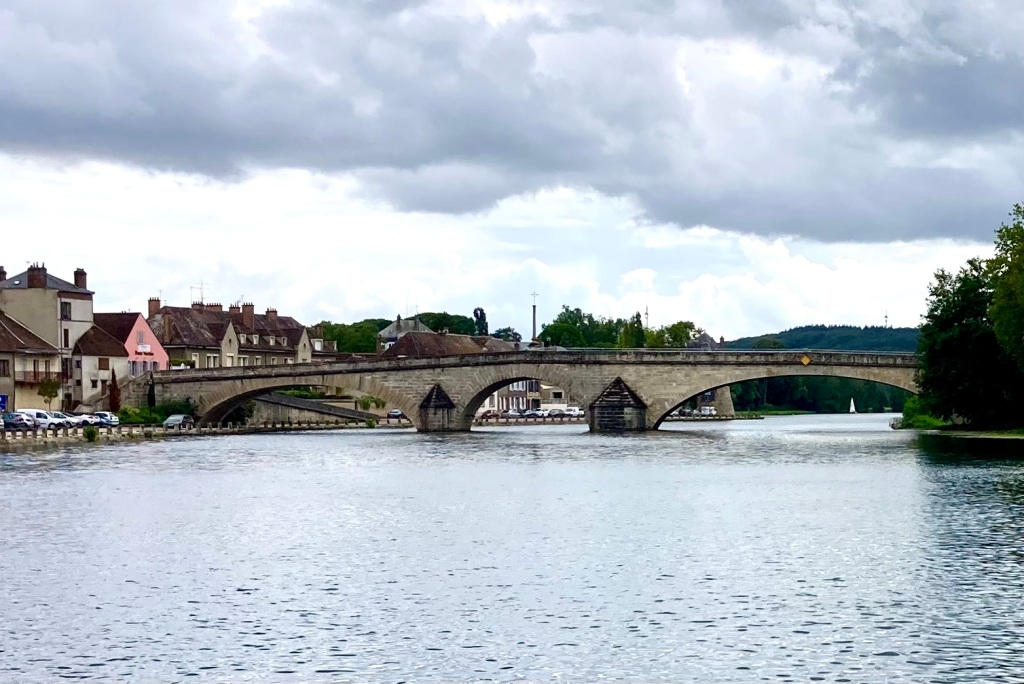
It was just on lunch time when we came through our penultimate lock of the day at Véron.This meant that although we could continue to our last lock at Villeneuve we had to wait, gazing at our mooring, until lock keepers’ appetites were assuaged
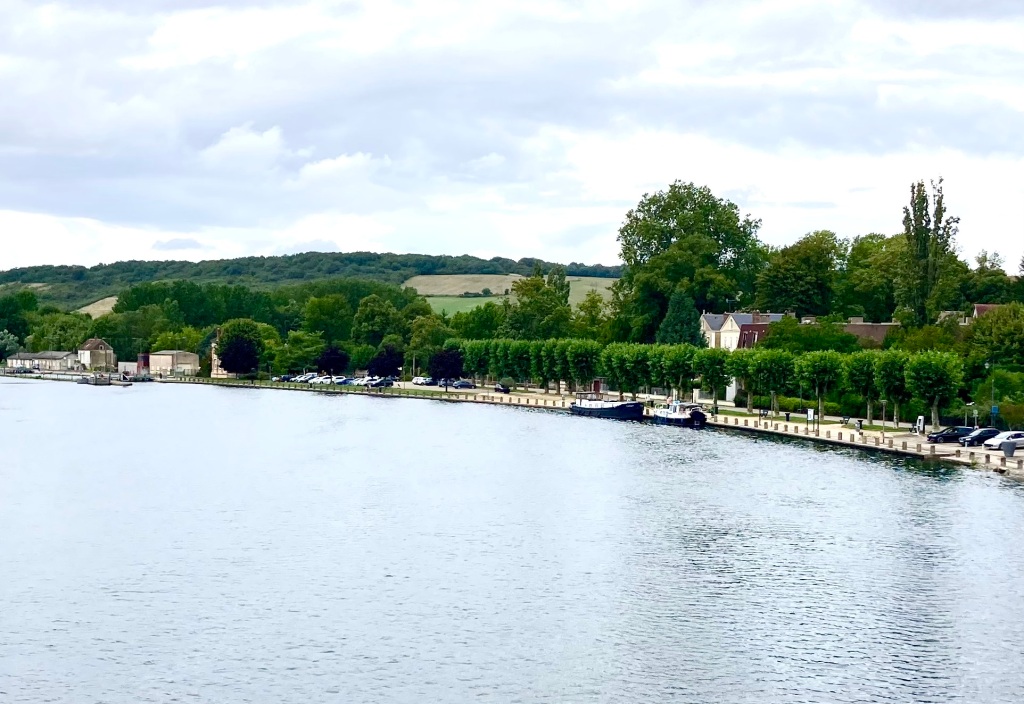
No big deal; we were soon moored up below 12th century St Nicholas bridge, from which I took this photo. It is a great place to moor, with electricity and water and on a nice tree lined quay.
But we soon found out that there was far more to discover within the town.
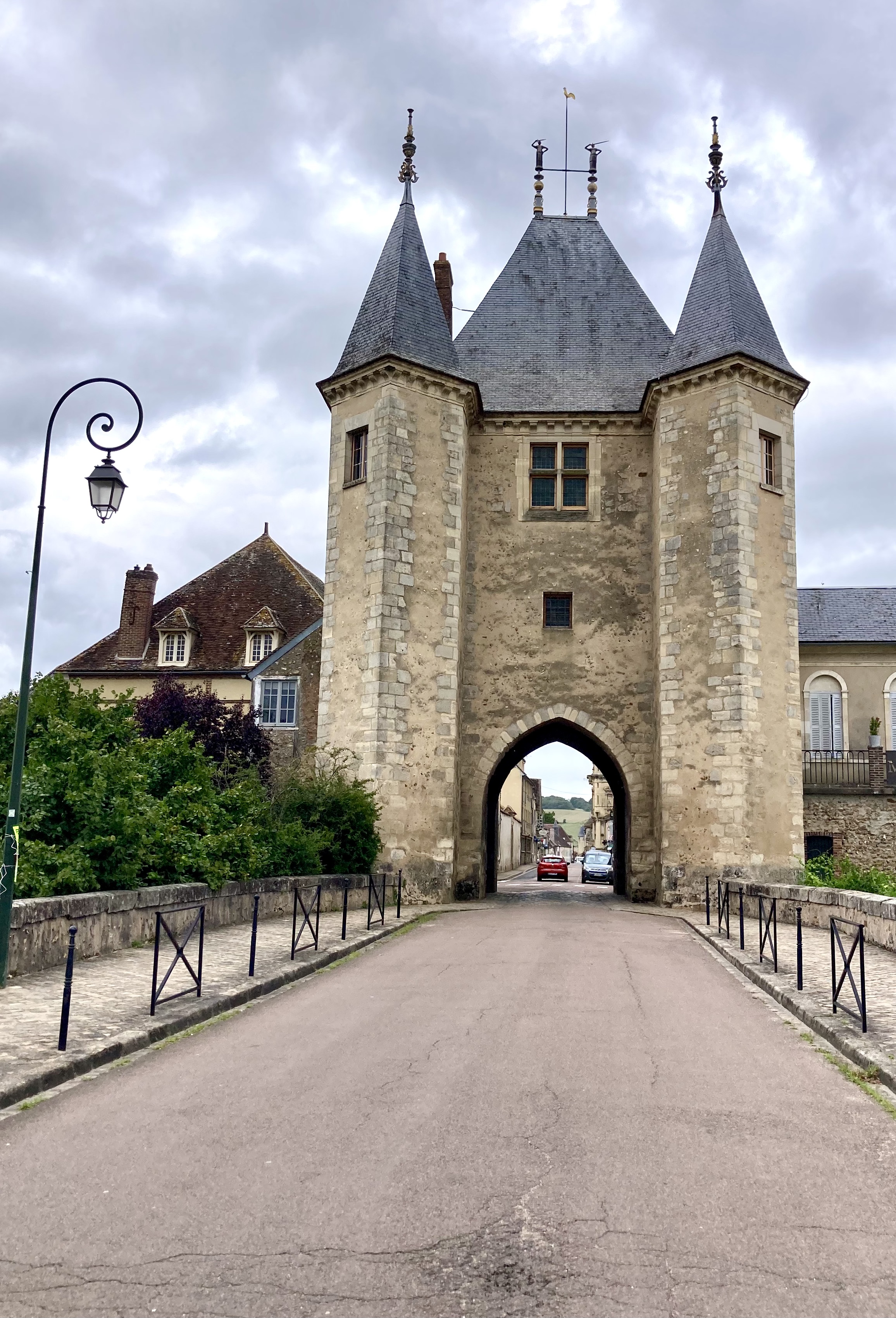
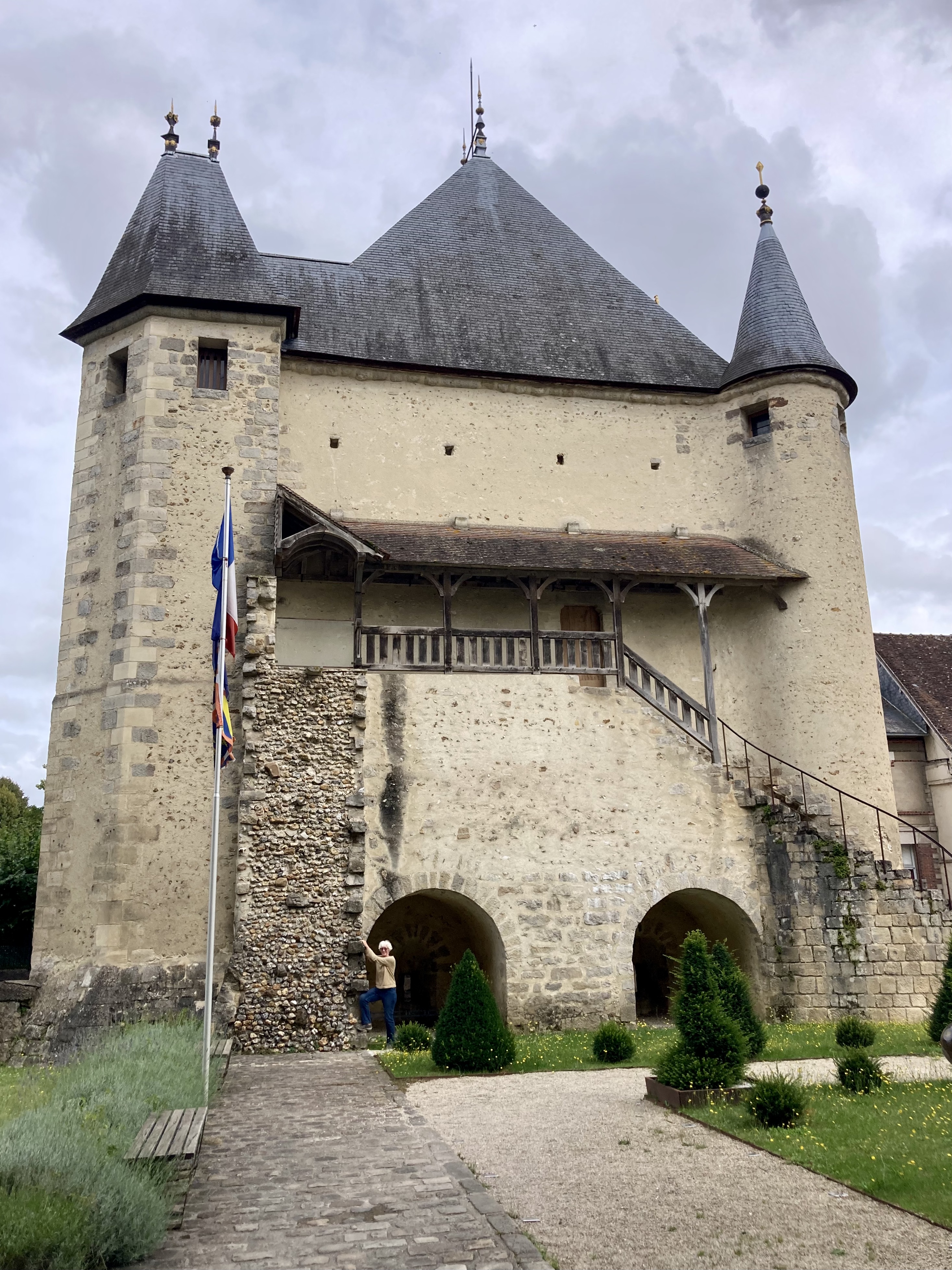
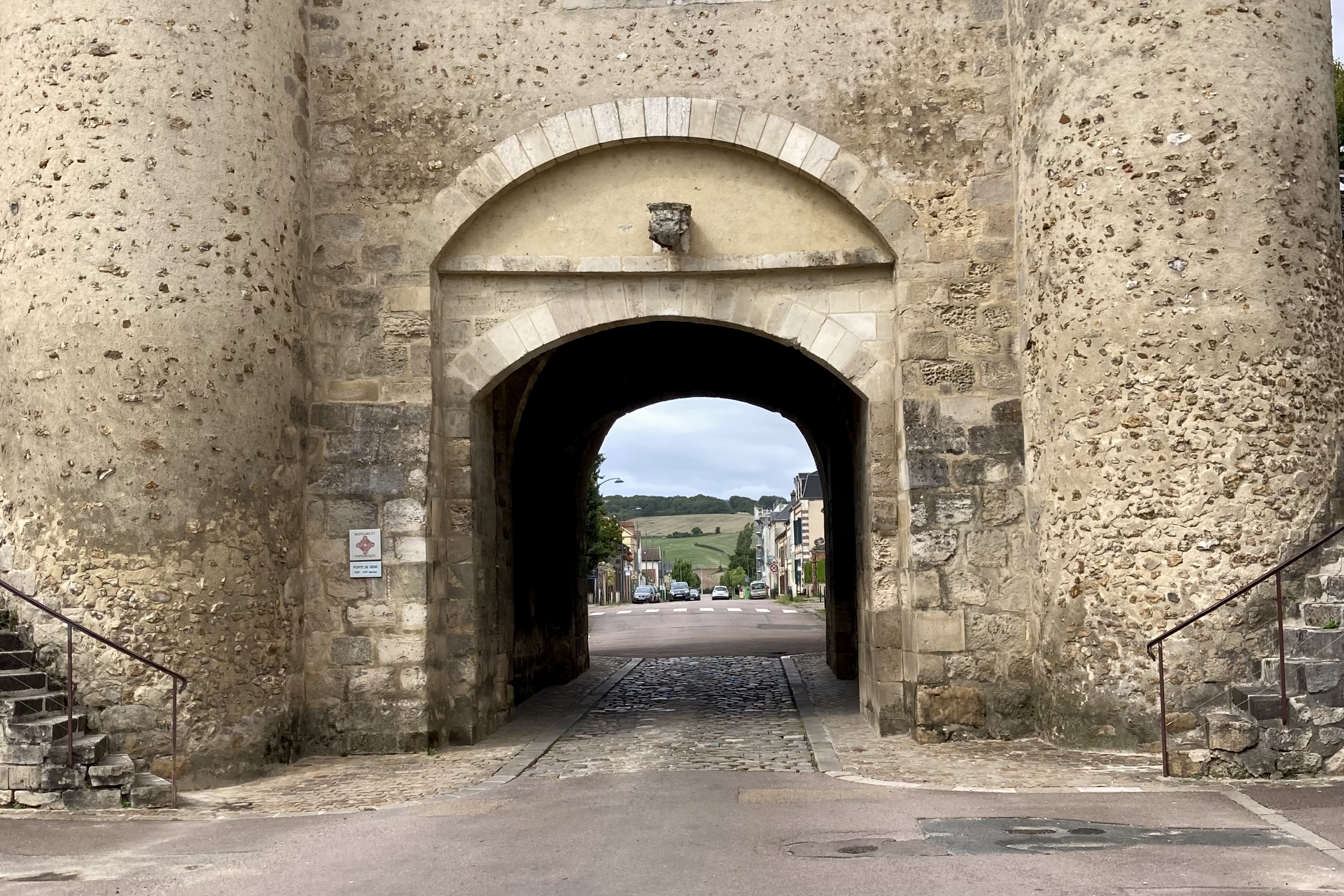
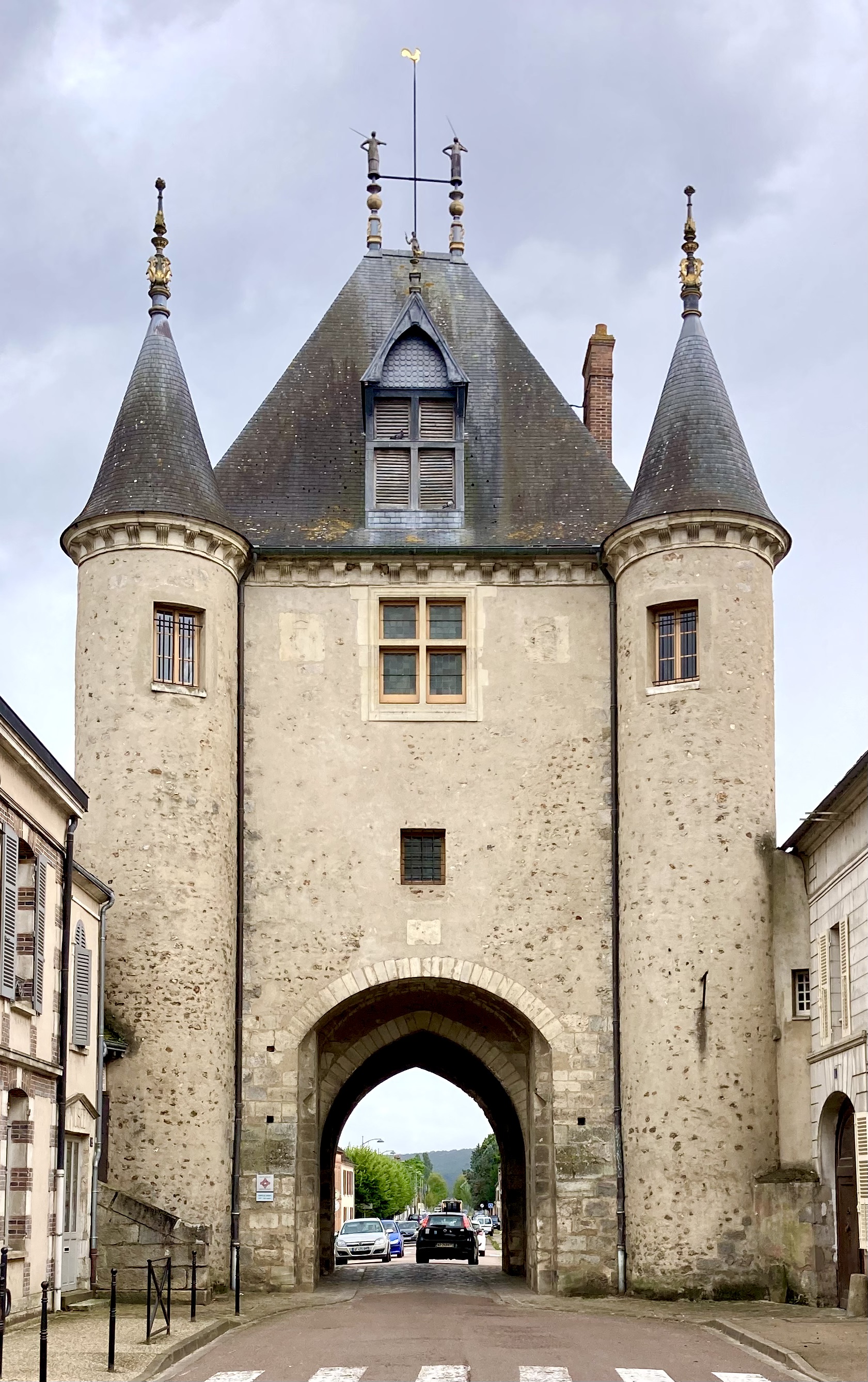
Two of the original five fortified gates still remain in place, named after the cities they lead towards – Sens to the North and Joigny to the South. Traffic still flows through them and they form the ends of an axis through town.
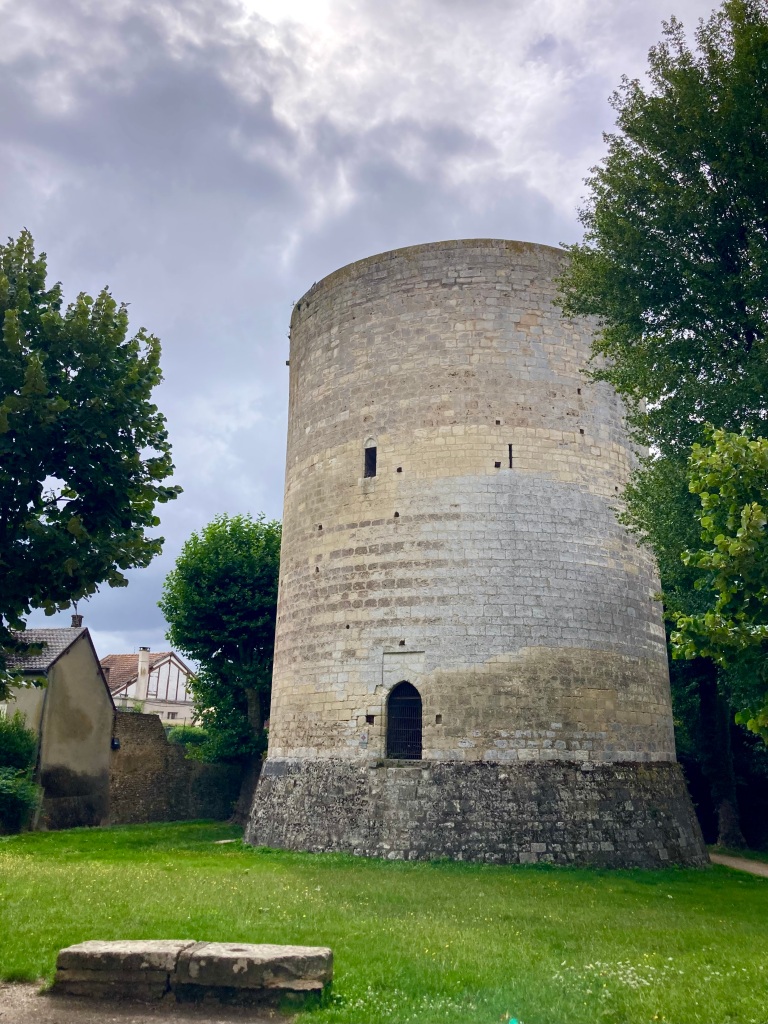
As you walk round the path that follows the two kilometre walls towers there isd another serious tower to behold. This one was once part of Louis VII’s royal keep.
The rest of the royal palace was destroyed two hundred years ago.
I also found a couple of lavoirs to add to my collection. The first one, with the double tiled roof, is in the old moat area. It looks rather lovely but there are steps down to it and the gate at the top was locked.
The other was in a surprising position – in a tunnel under the Gate de Joigny where a natural spring flows through.
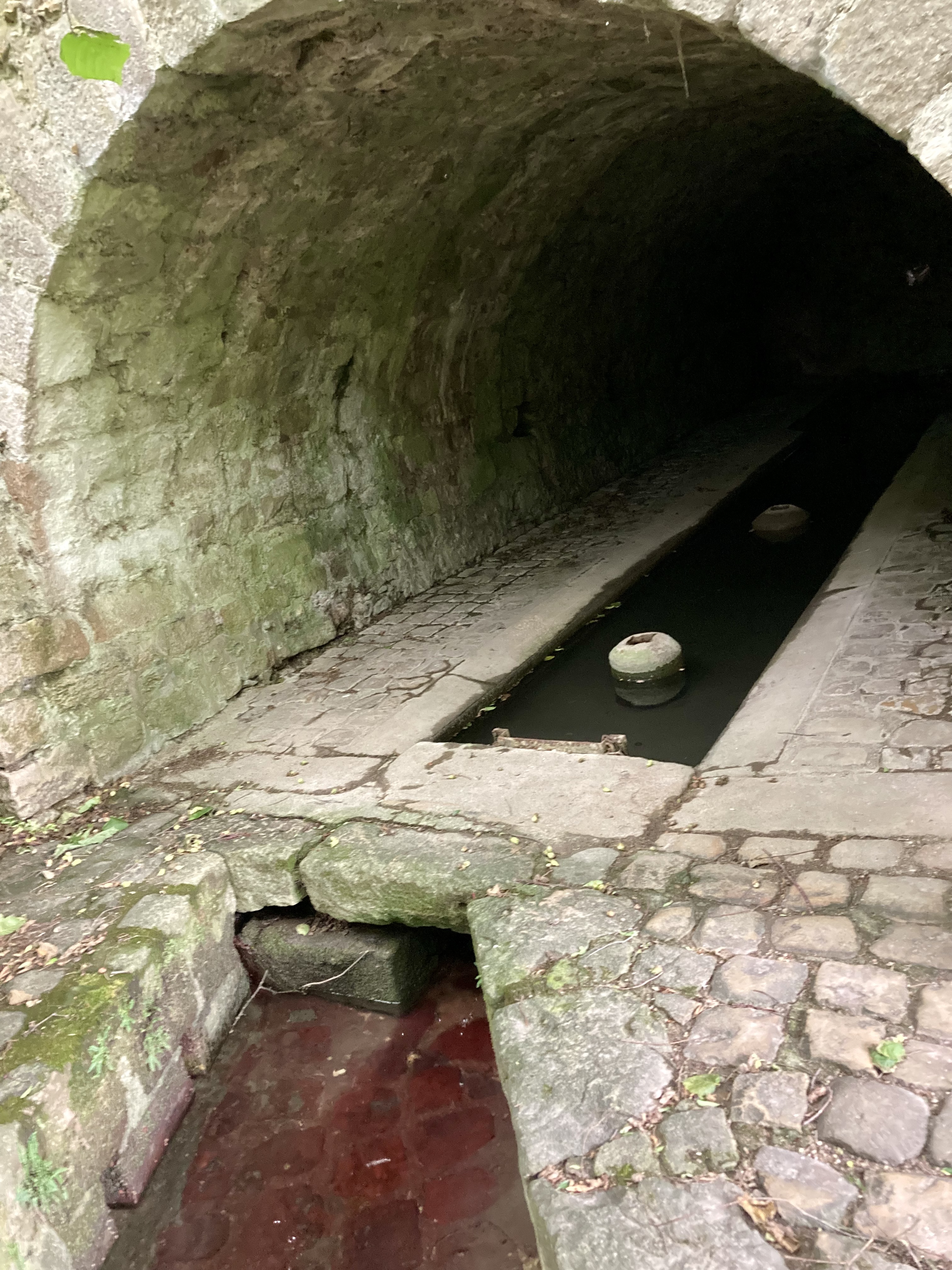
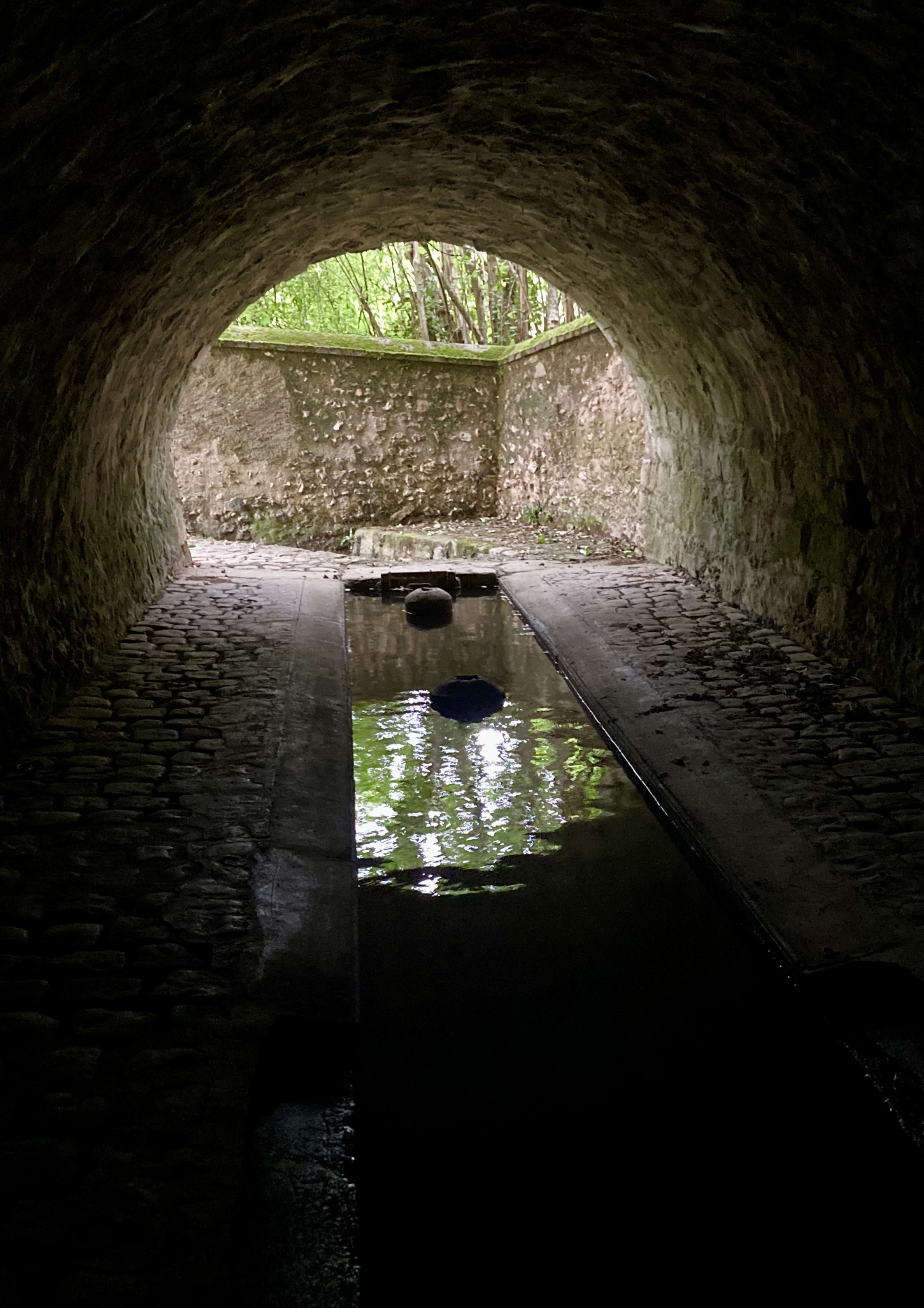
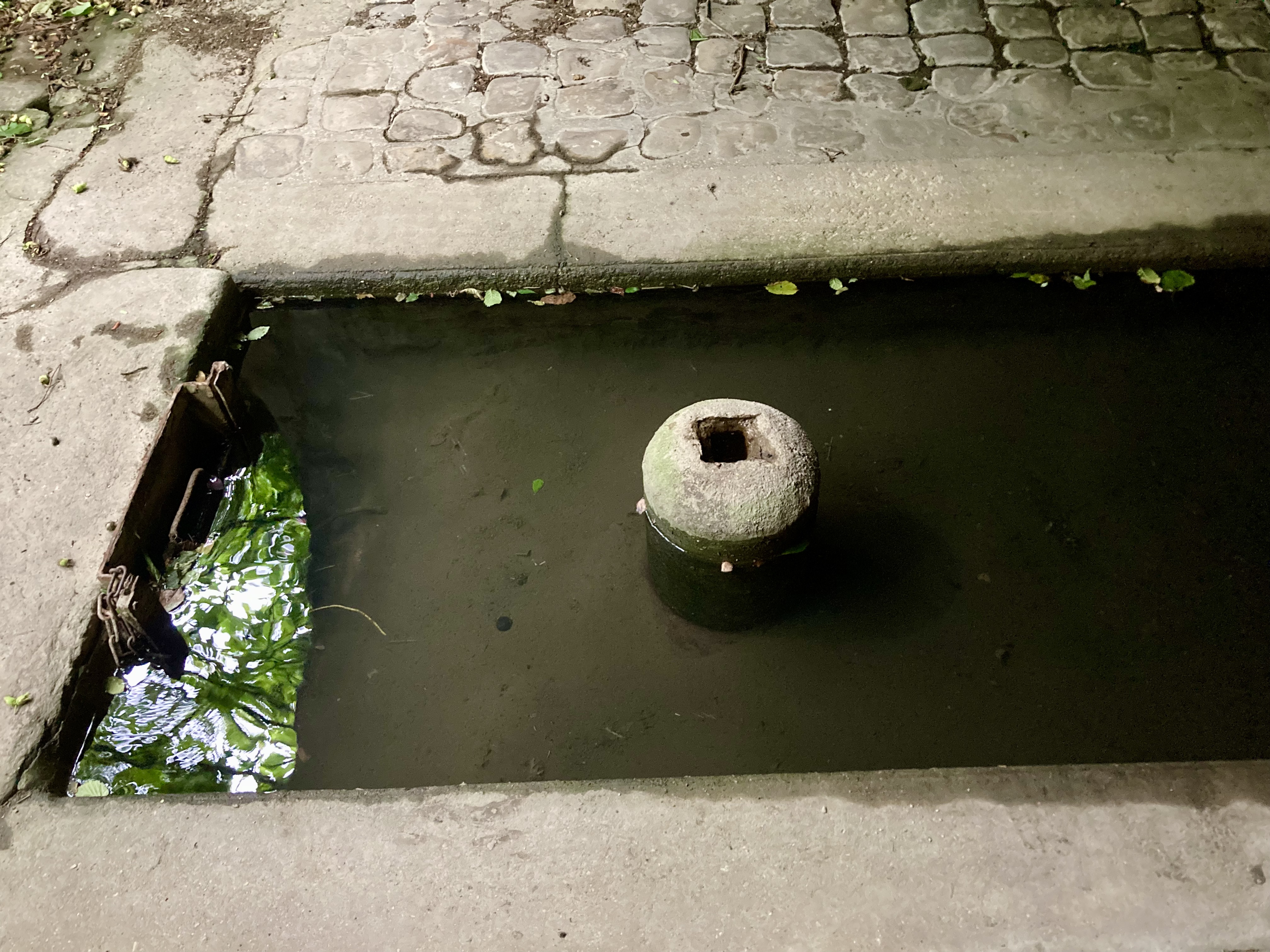
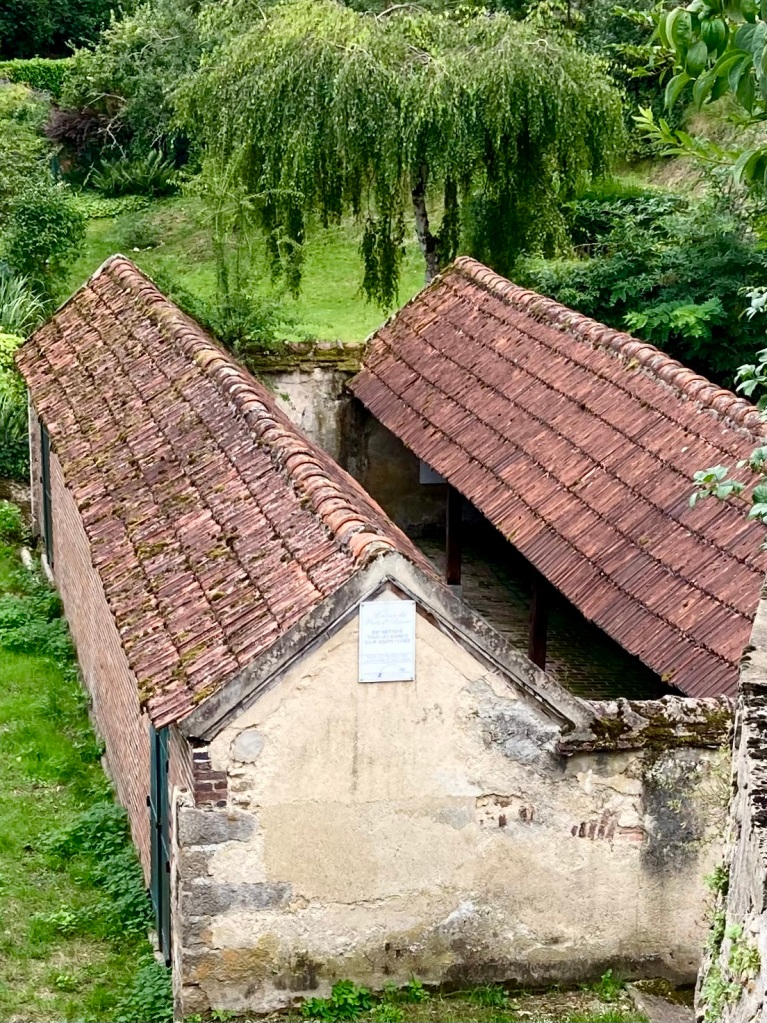
One more tower still exists; Le Tour de Bonneville. It is now a small hotel in a wonderful quayside position.

It was a shame to be there such a short time, but I did manage to visit the Friday market before we left – and then we were on our way again to meet Family Part 2.
Laroche-Migennes
Getting to Laroche depended on arriving at the lock 11, d’Epineau-les-Voves, at one of its 3 opening times per day. This was due to a damaged lock, due to be repaired, but until then the lock was operated as little as possible. We were aiming for the 1400 opening!
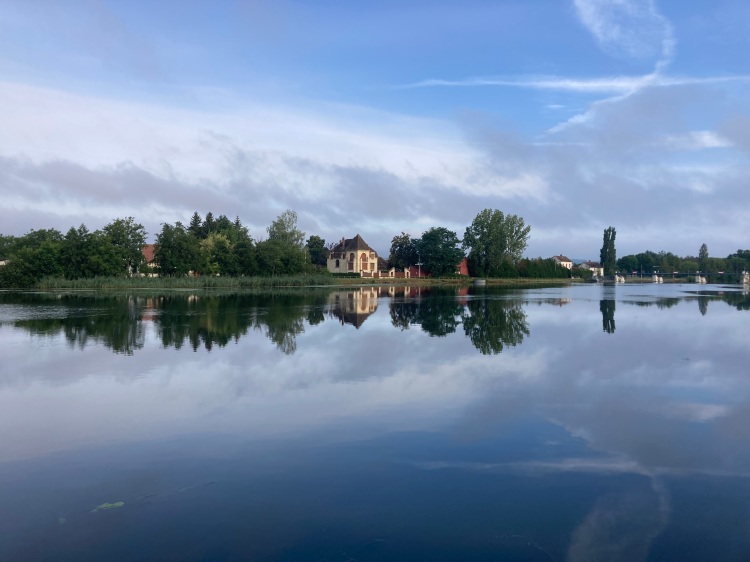
The travelling day began with blue skies and blue waters …
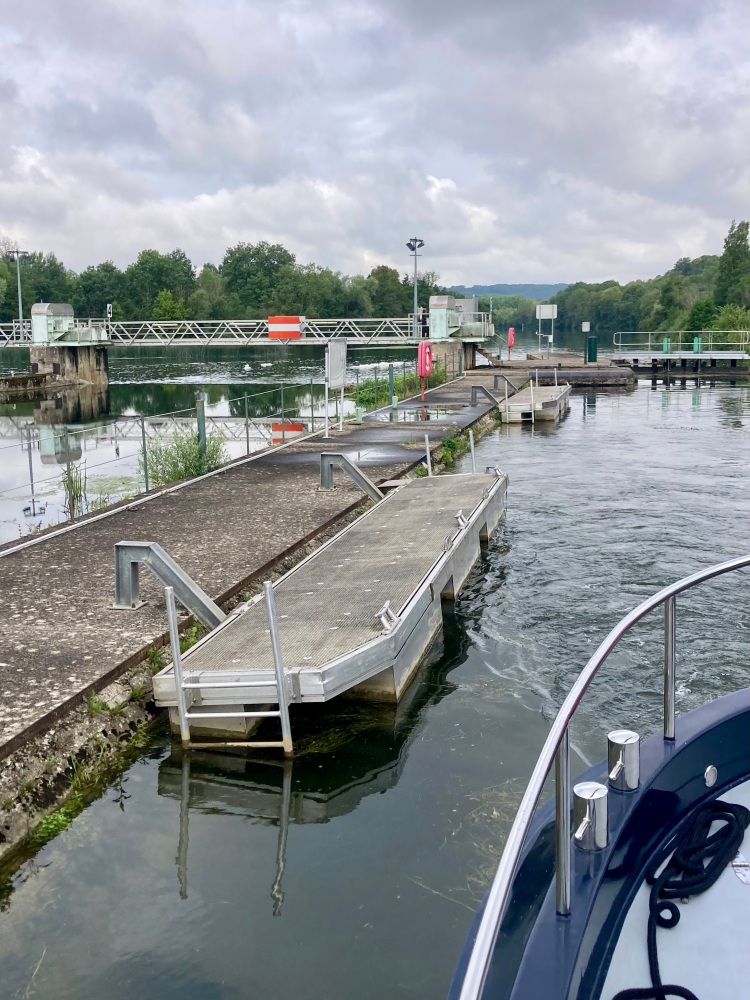
… but by the time we reached Armeau lock, with its two floating pontoons, clouds had drifted in and it was grey again.
It was still the same at Villevallier lock, but being able to look out at complete countryside more than made up for it.
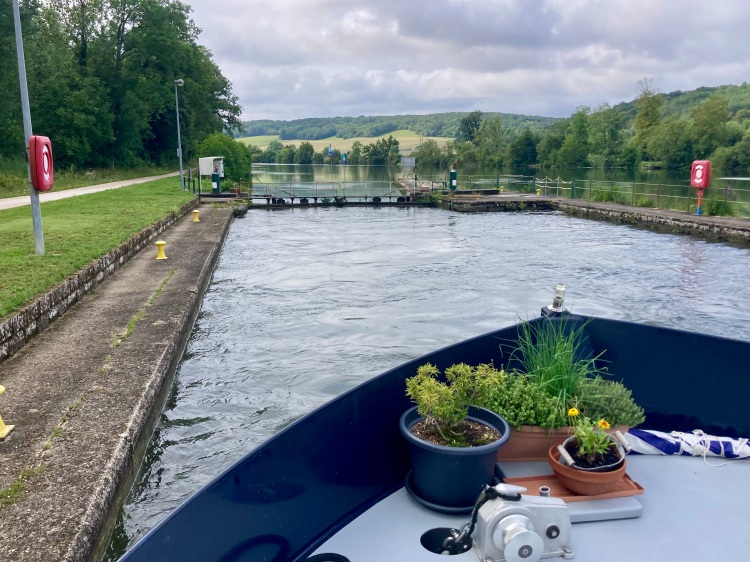
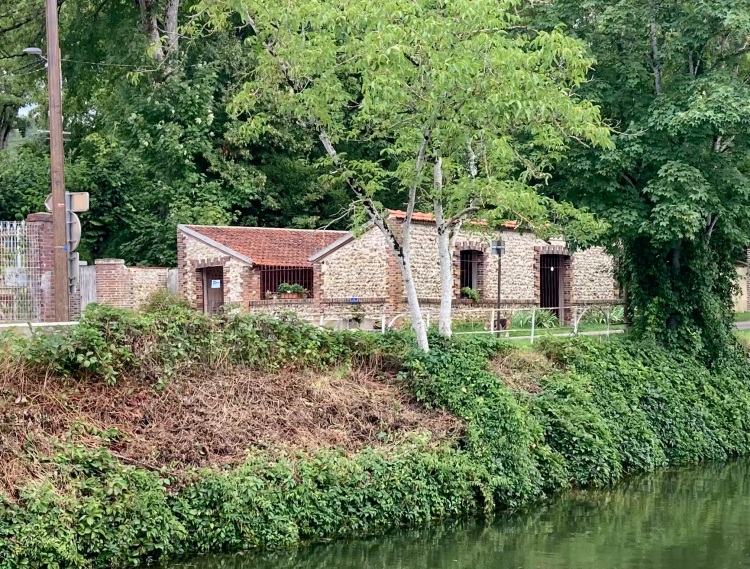
We passed by a lavoir in a canalised section of the river at Saint Aubin; it looked well maintained, but there was no opportunity to set foot ashore and see.
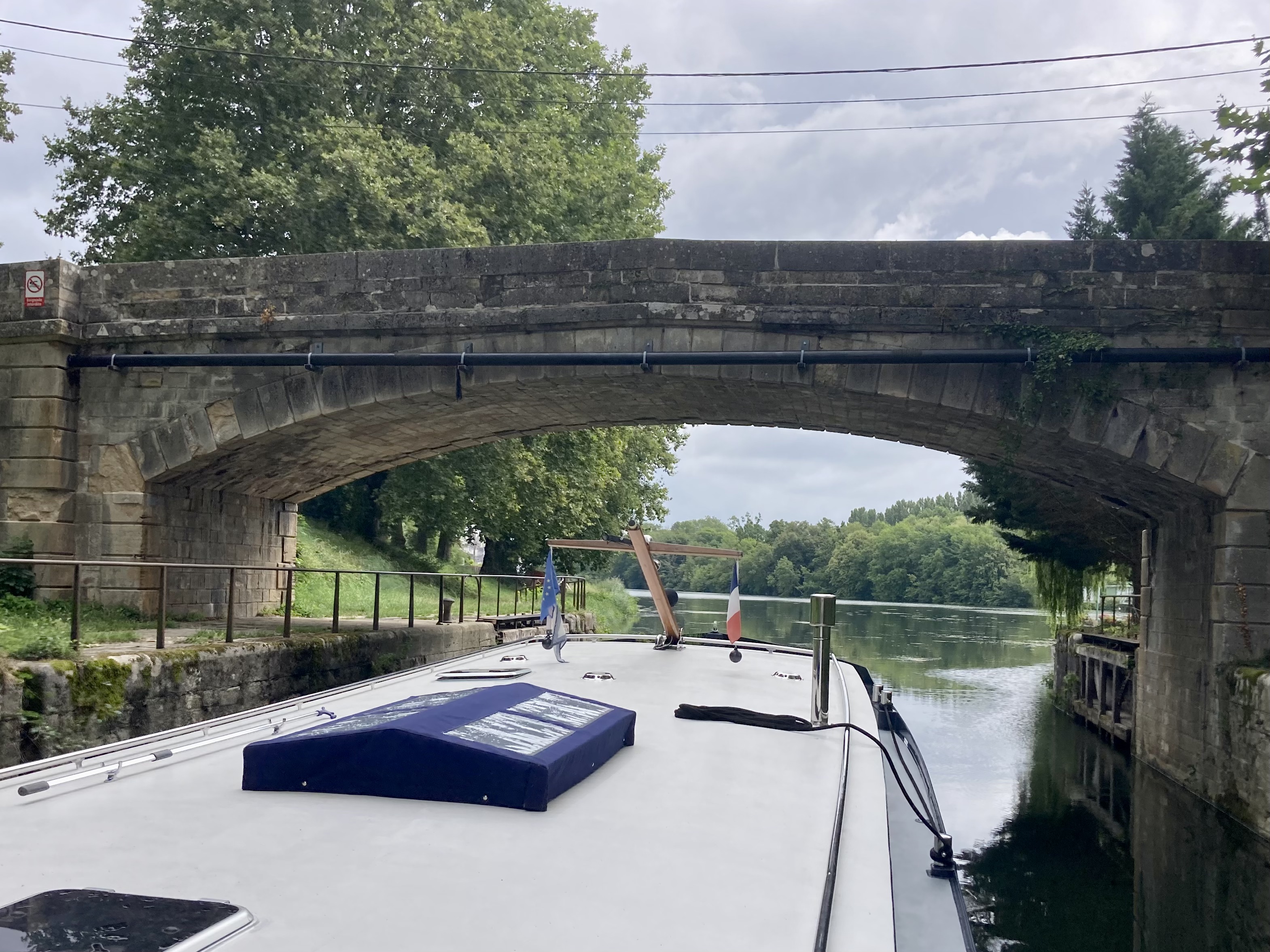
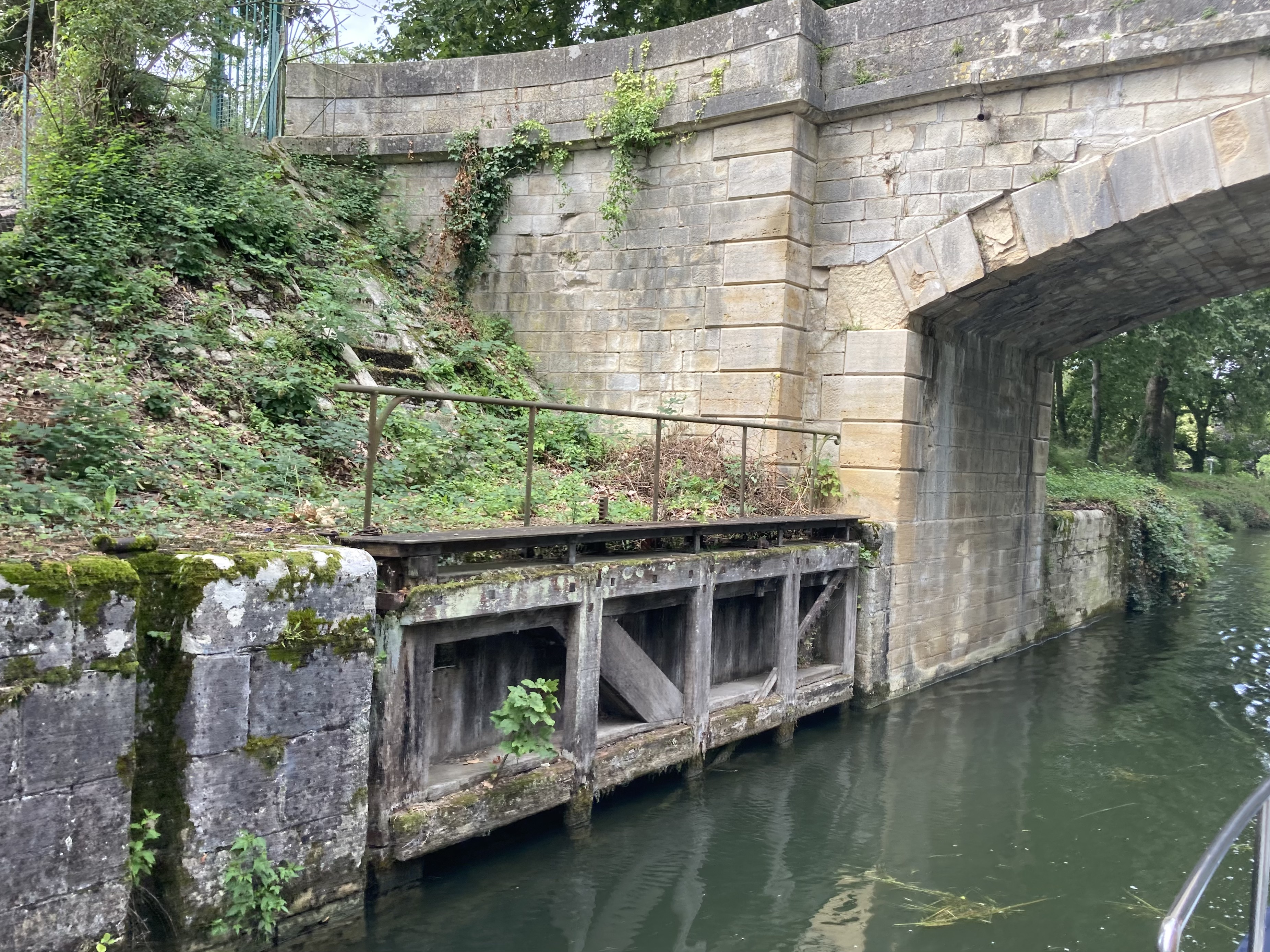
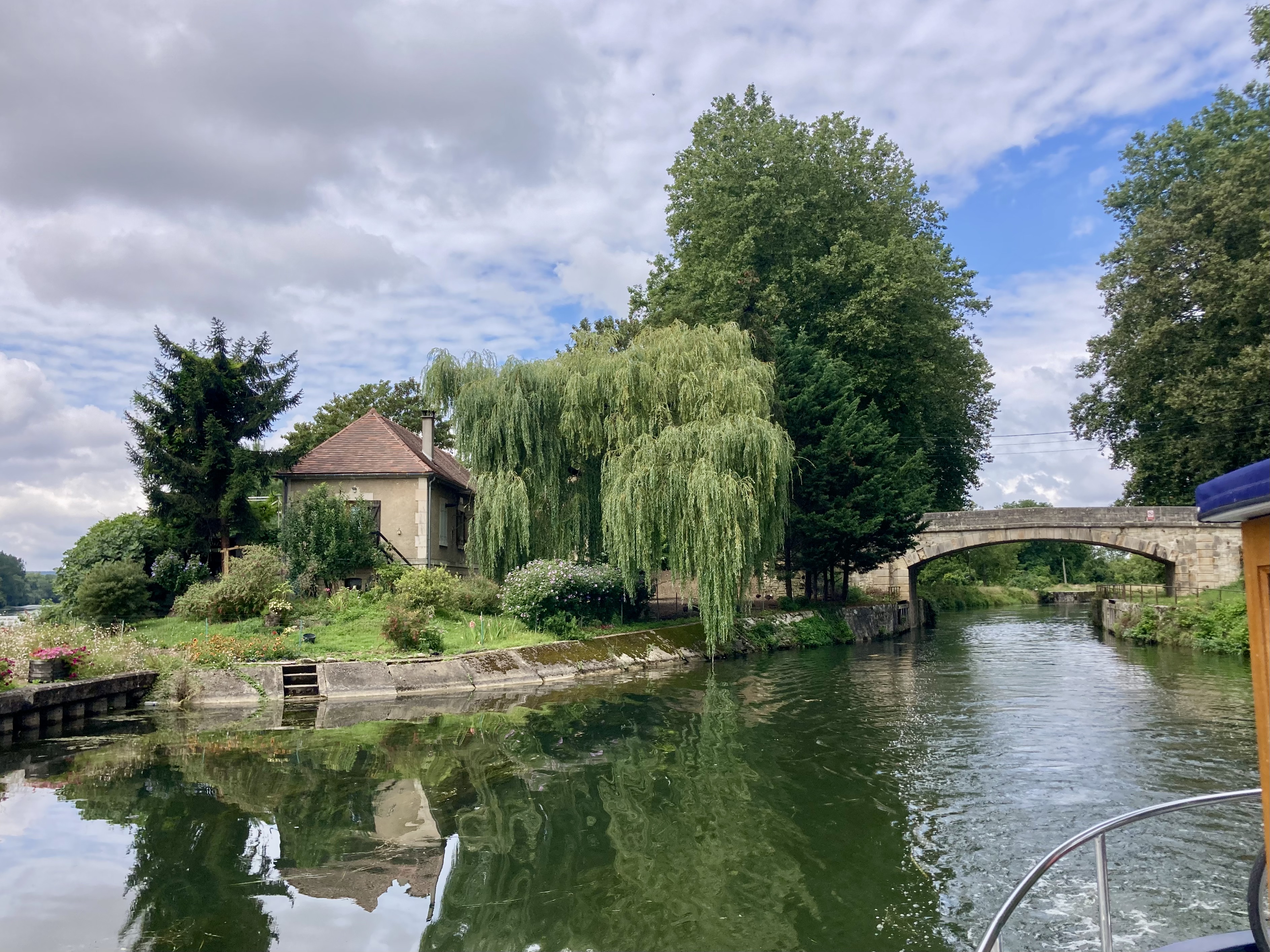
At the end of the canal part we emerged through a ‘Gard’ back onto the Yonne.
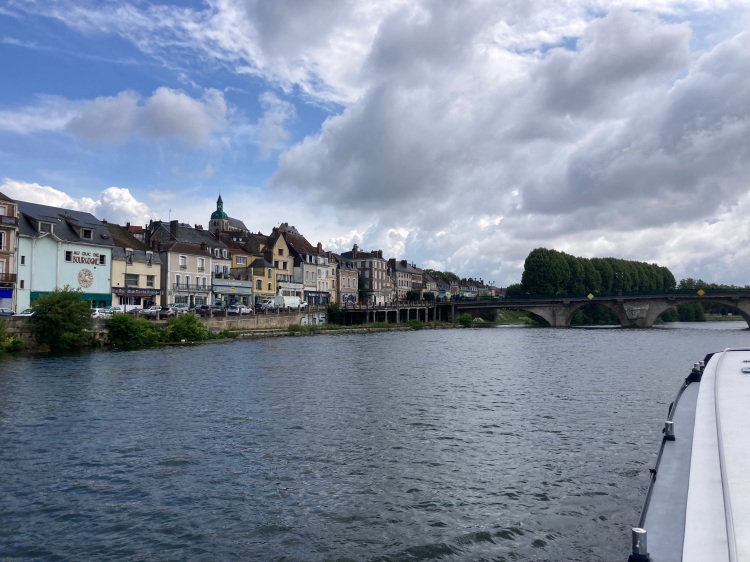
On we motored, past Joigny, and towards our 1400 lock opening.
Joigny is quite a major town on the Yonne, but not for us that day.
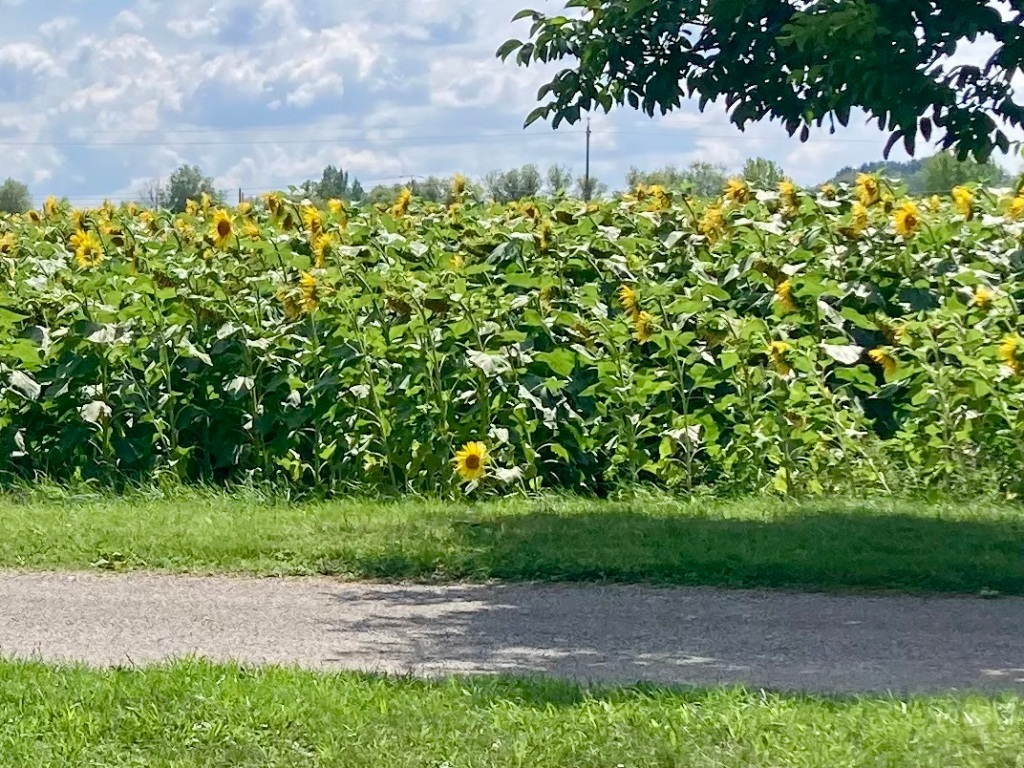

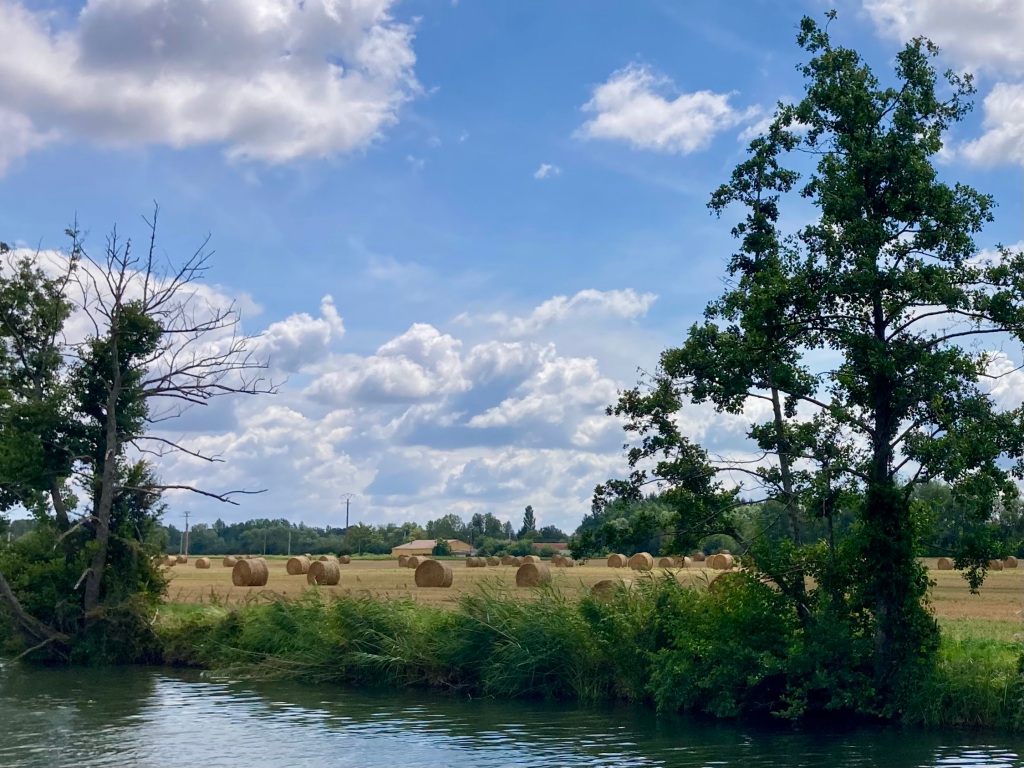
We were slightly held back at the next lock for the usual lock keeper’s lunch time, so we were slightly on edge about getting to Epineau in time, but we did.
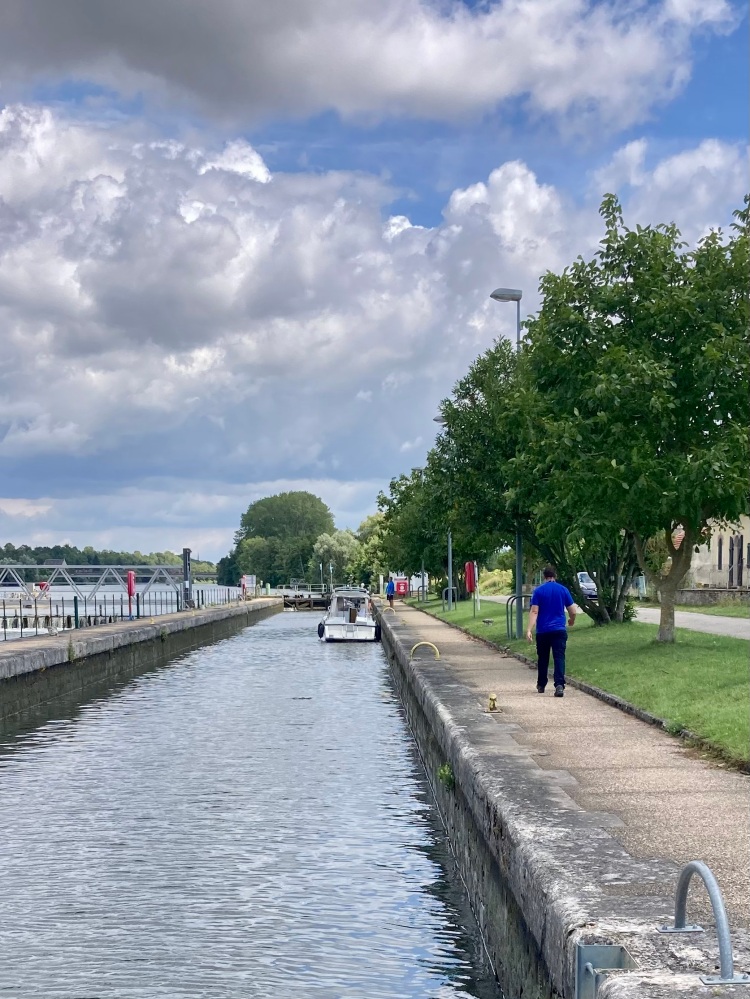
A few boats came down through the lock at 1400, and then it was our turn to go ‘montant’ (up) with another small cruiser that, like us, had been waiting its turn.
These locks are quite hard work for the éclusiers. Although they are automated the controls for the various operations – close doors, close vantelles, let water in, open doors – are done at opposite ends of these 117m long locks. So the éclusiers spend a lot of time waking from one end to the other!
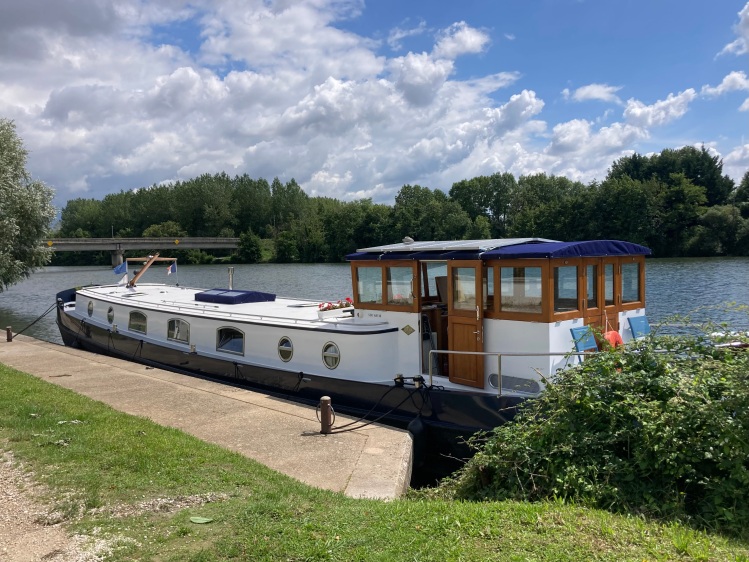
And within half a kilometre after the lock we saw the little quay at Laroche that was to be our overnight stay.

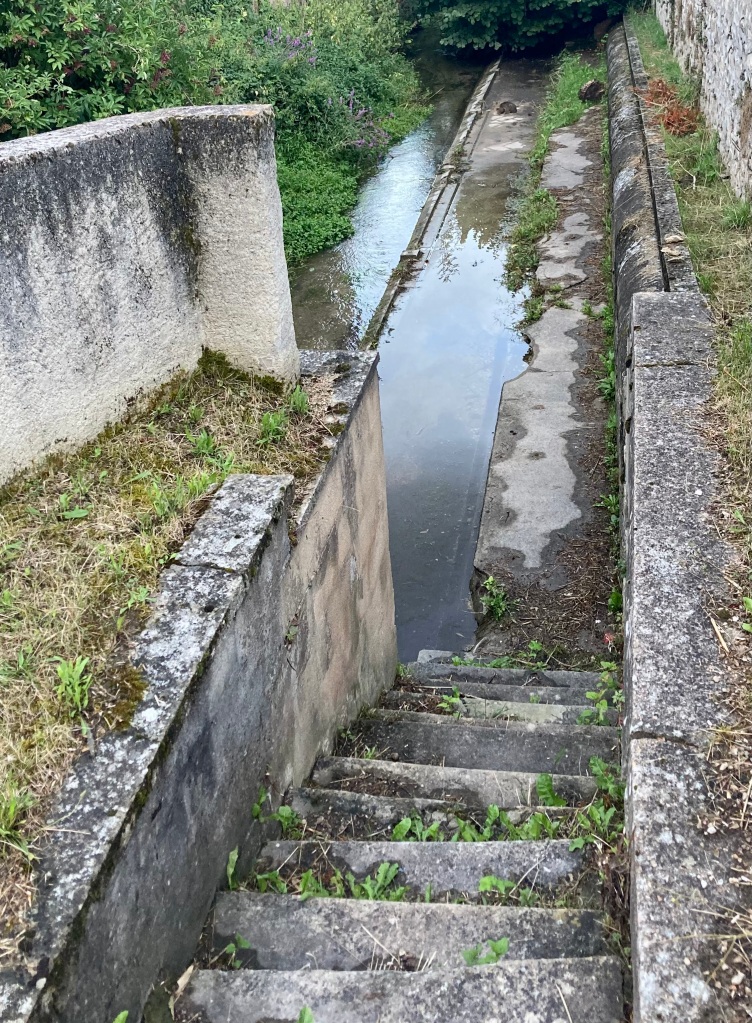
A walk around the area in the cool of the evening surprised me with some bright flowers by the river and by an old lavoir.
And then, as the sun went down ……
…. a golden display from sky to river.
Auxerre
We pushed on up the river to Auxerre in the morning so that we would have a few days to collect the car from Saint Usage (where we began our summer cruise) and get stocked up for our second set of family visitors.
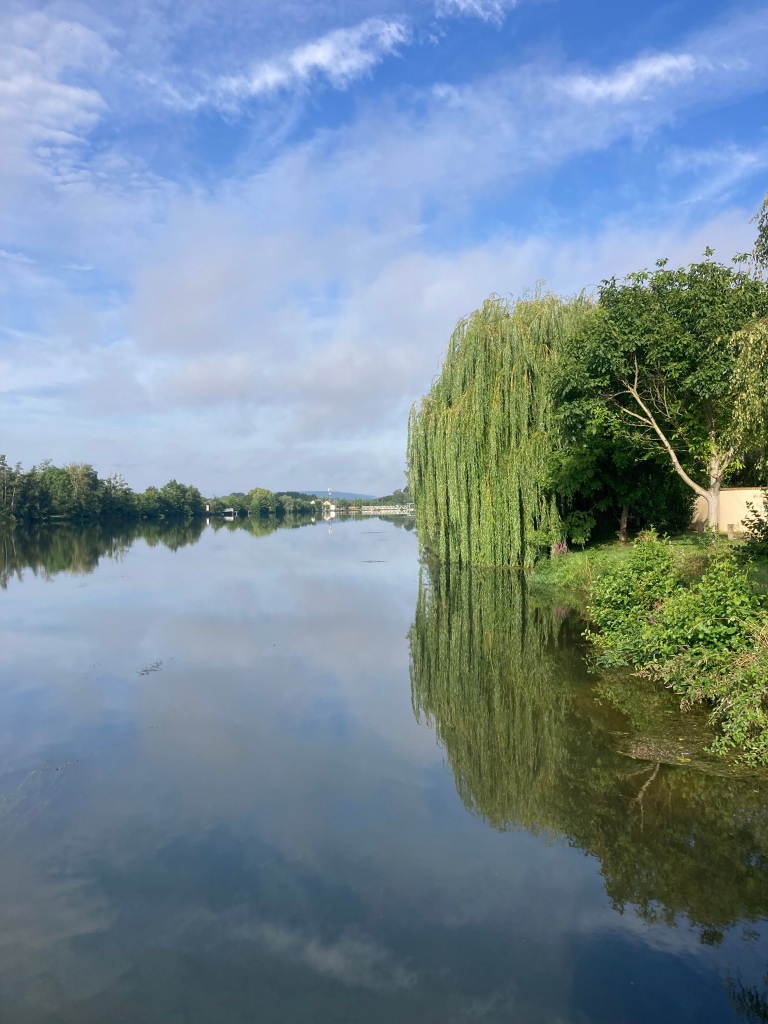
We were lucky to have another blue sky start, leaving behind a superb weeping willow.
We could tell the seasons were bringing to change by the amount of dew on the roof – a good excuse to use the water to do some cleaning!
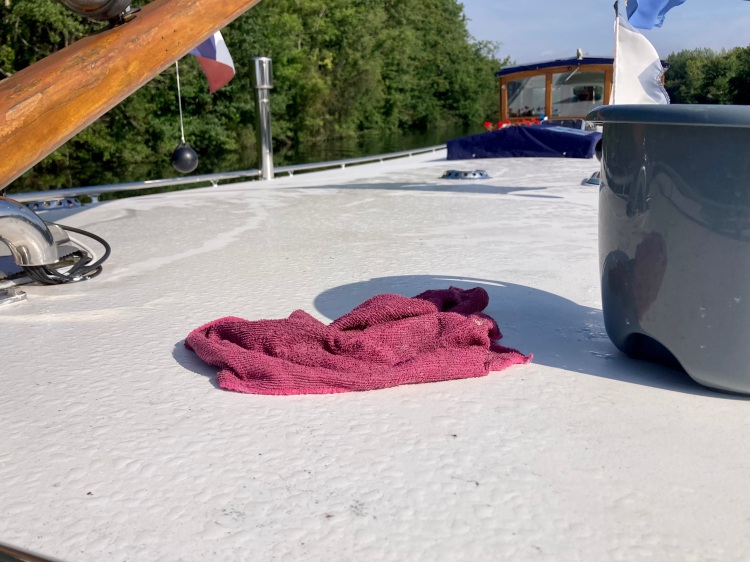
Within a few minutes we passed the entrance to the Canal de Bourgogne – our way ‘home’ in a month’s time. But for now we were passing the Migennes junction by.
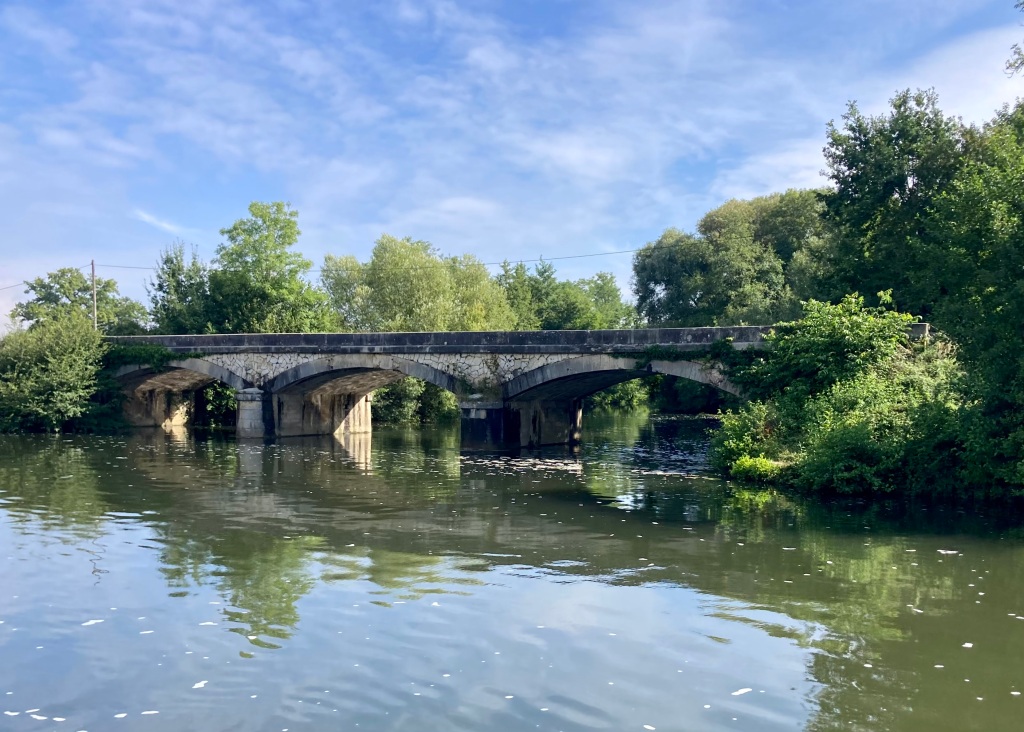

There were three locks , a river junction with the Serein, and a ‘derivation’ between us and a lunch stop. The deviation is a canal section taking us off the river for about 5 kilometres to get round some very windy and shallow sections. This deirvation has a lock at the downstream end (Raveuse) and another half way along (Néron).
We were ‘warned’ by the éclusier at Raveuse that the Néron lock was not manned; he would see us on his cameras and operate the lock remotely. It all worked just as he had explained.
Another 4 kilometres and we were out of the derivation, back on the river, and approaching Gurgy where we moored up for lunch.
A short walk to a good boulangerie added to our meal, and a family of swans kept watch in case we had any spare.
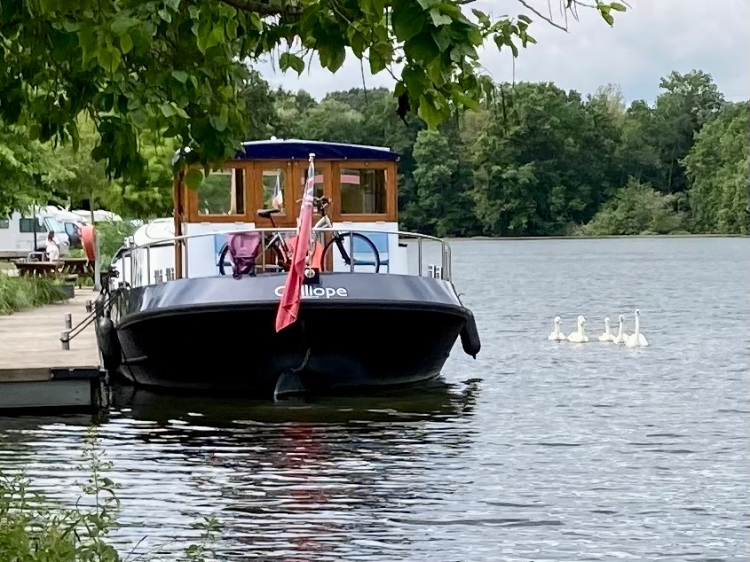
The last 10 kms to Auxerre were pleasant, with a few diversions to keep us alert along the way.
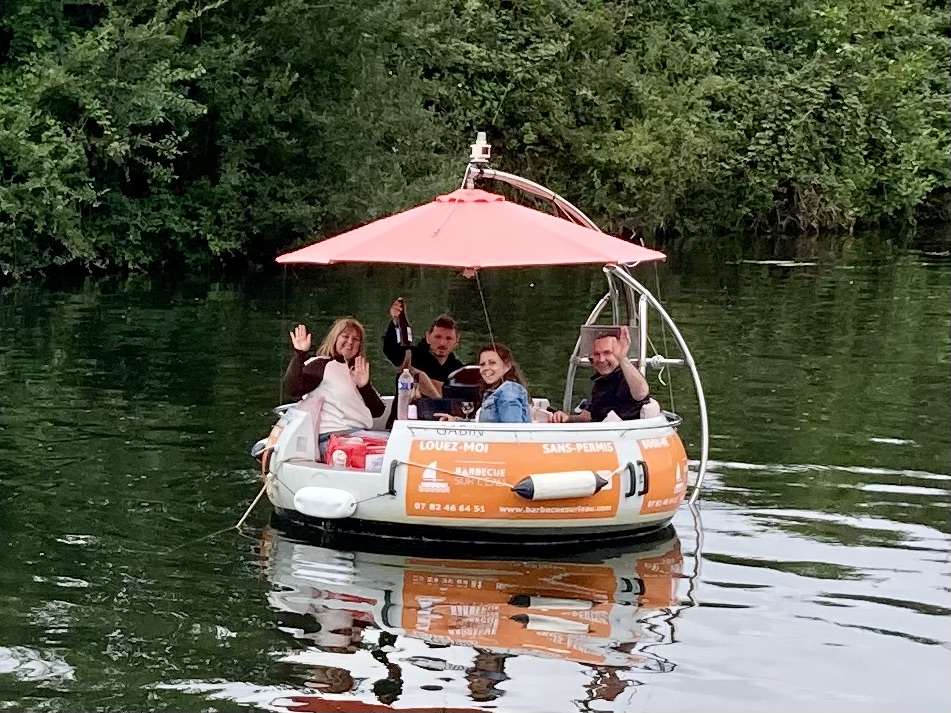

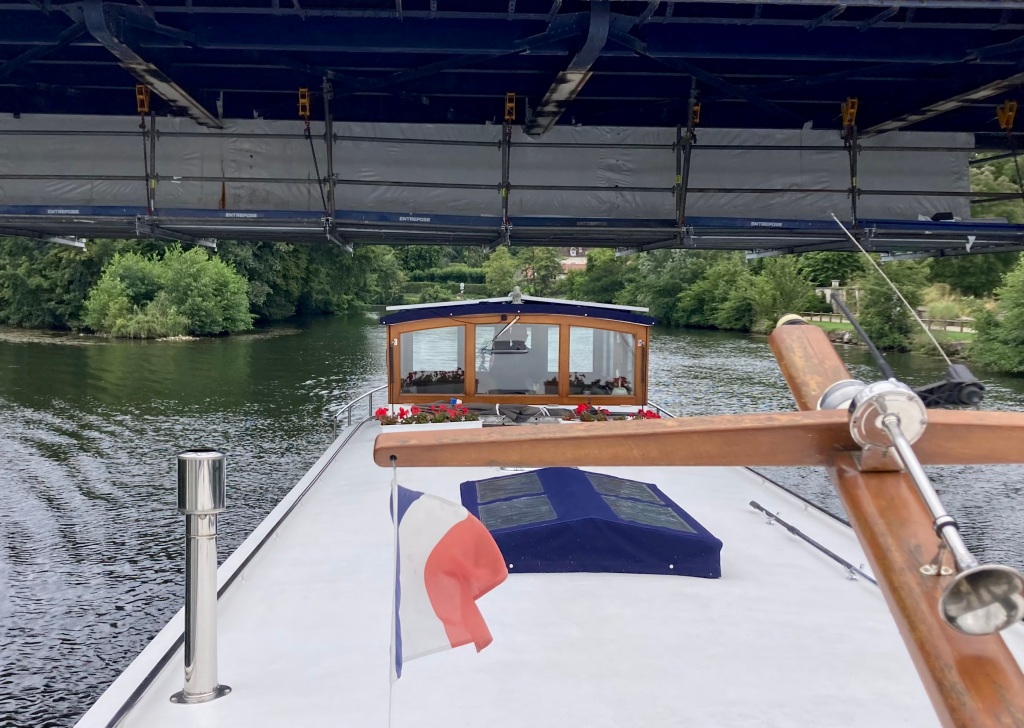
We passed a couple of merry barbecue boats – little round hire boats with a barbecue in the centre, and nearly always with revellers aboard!
Then a dividing of the water, and the directional arrow hidden amongst the bushes on the central isle! Luckily our map told us which side to go. And a bridge undergoing maintenance; we knew this from VNF notices, but had not realised this would mean a platform underneath and a subsequent lowering of the height for boats to pass below. It looked close, but in fact was easily done.
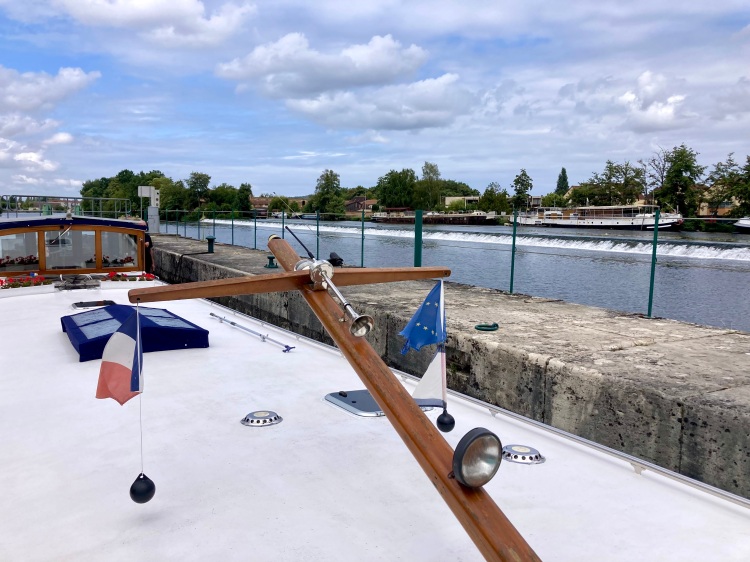
At last we reached lock 1 La Chainette, at PK1 (kilometre mark 1) on the outskirts of Auxerre. You can see the long weir that runs alongside the lock.

Then we were coming into the ancient city of Auxerre, beaneath it historic landmark buildings and bridges. The kilometre counting changes here; PK0 for the Yonne is also PK 174 for the Canal de Nivernais. This is the canal that runs alongside the upper reaches of the Yonne and where we would head with our visitors on board in a few days.

By the time we had moored up and checkled in with the Capitainerie the skies were bliue again.
And we could sit in the wheelhouse gazing across the river to the magnificent cathedral.
What a view for the next few weeks; we were booked in for a month, part of which we would spend in the UK.
Stu and I have been here before, albeit 7 years ago. Actually we have been here twice. We were stuck in Milan when in 2010 the Icelandic volcano spewed ash across Europe and stopped all flights.
We hired a car to drive back, spending a night in Auxerre on the way and sitting in this same square for a a drink before dinner.
It was just as nice in 2023.
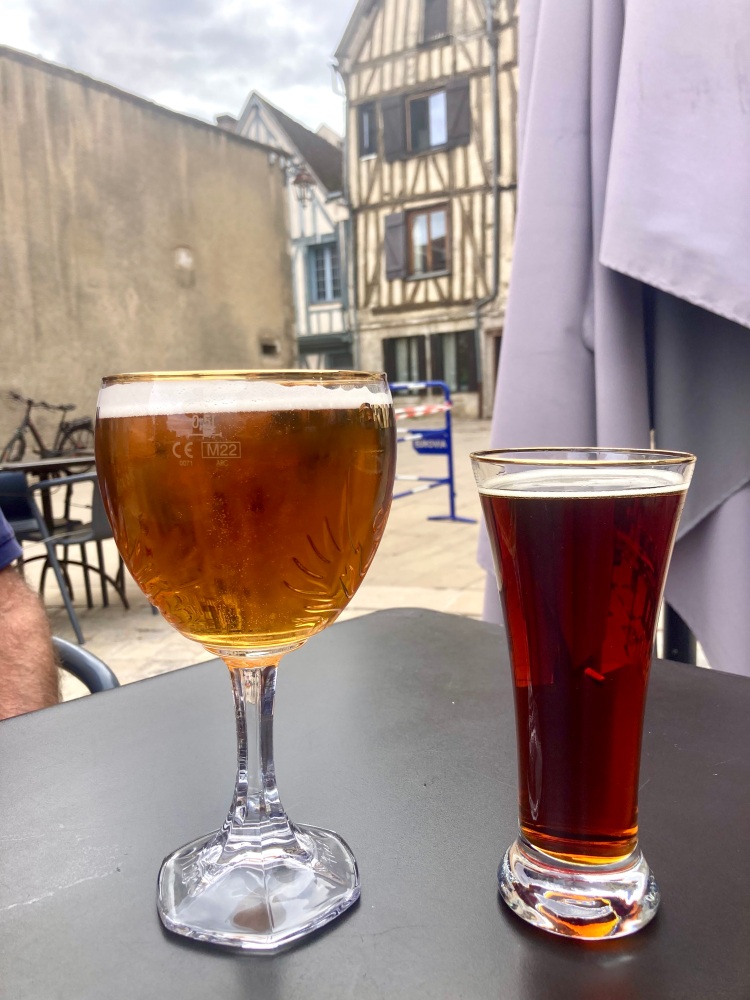
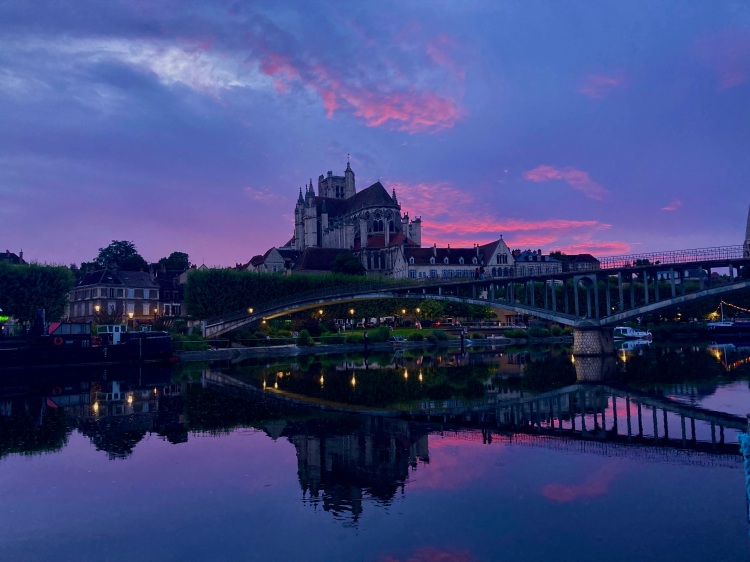
And the view across the river from our mooring to the city was even more spectacular as the sun set.
The next couple of days were taken up collecting our car and then driving to Chatel-Censoir, 38 kms away, to visit friends and collect some of their boxes to take to England. They had just sold their boat and now needed to move their household from France to UK.
Châtel-Censoir
This made a nice day out for us. First of all there were several lavoirs to be seen in Châtel.
One had been converted into a book swap space and relaxing reading room.
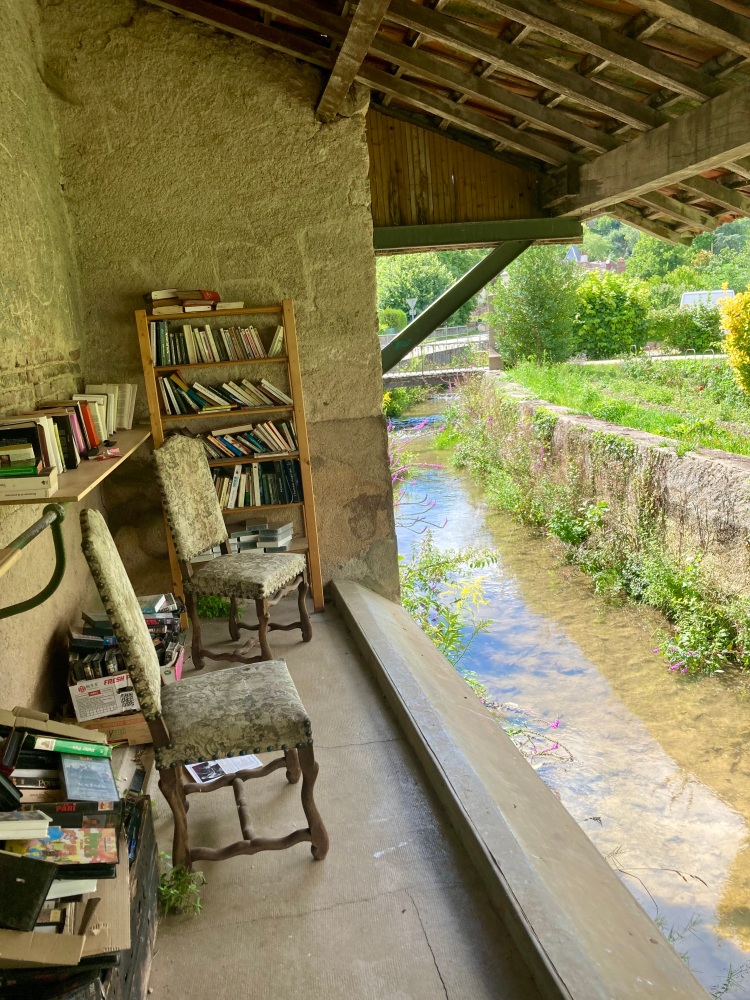
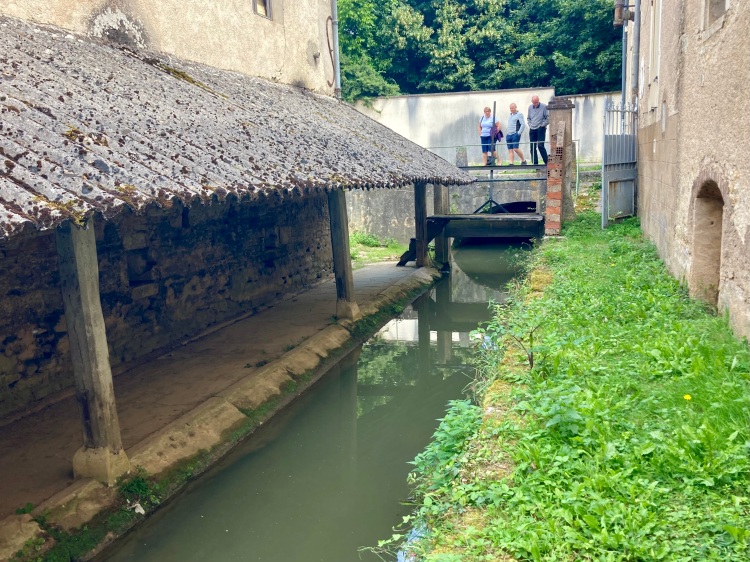

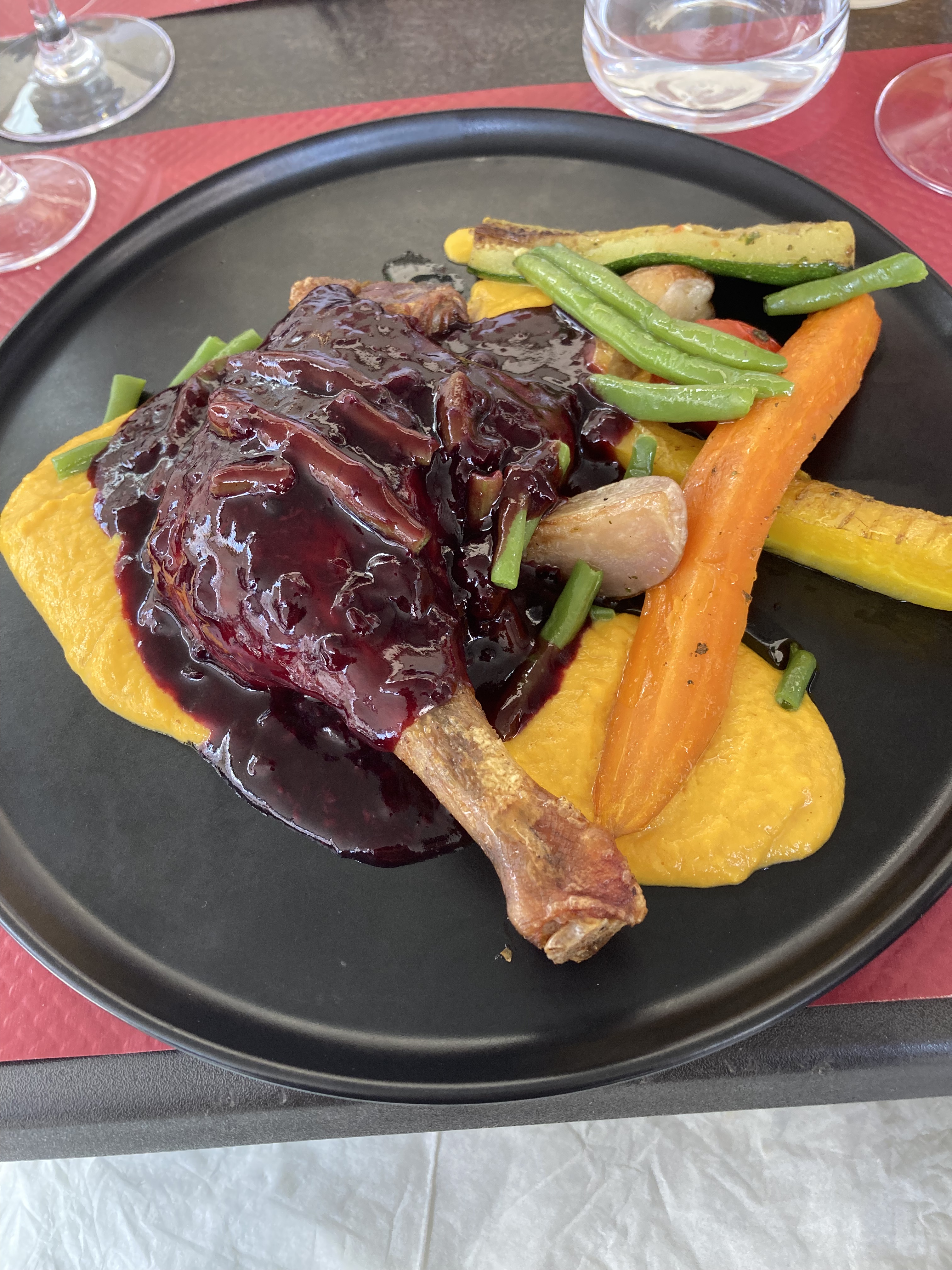
And then an excuse for a lunch out with friends, who dd not want to be photographed, and a delicious rainbow lunch which was happy to be captured ‘on film’.
And before we drove back to Auxerre we went back to the house in the village that our friends have been living in since the boat sale. We were allowed to ‘plunder’ the garden, coming back with apples. pears, plums, mirabelles and rhubarb!
Once son Ashey and his partner ~Theresa arrived things changed again. Visitors in Auxerre inevitably means a tourist walk around the old city, the abbey, the cathedral. Here is a taste of it.
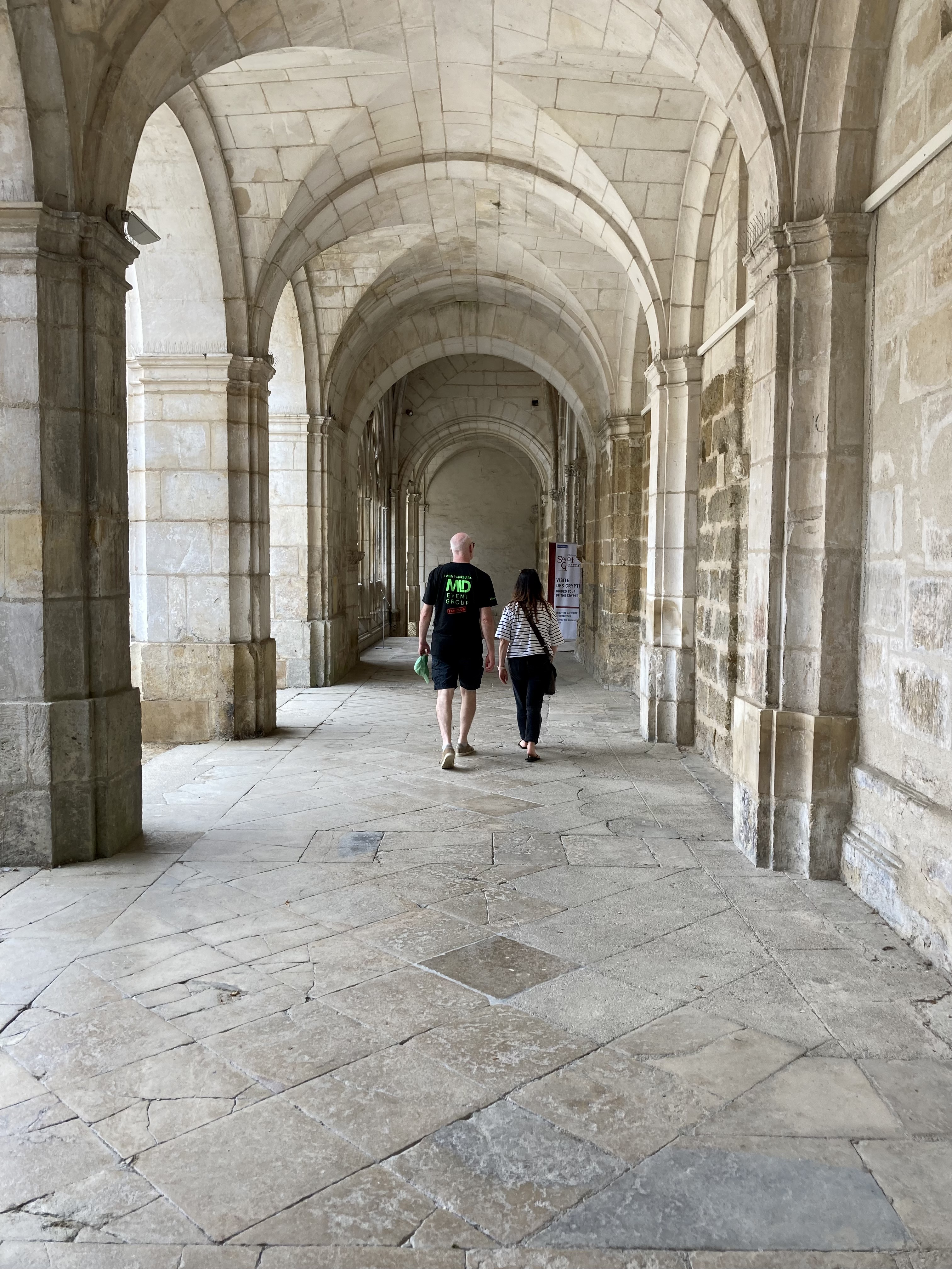
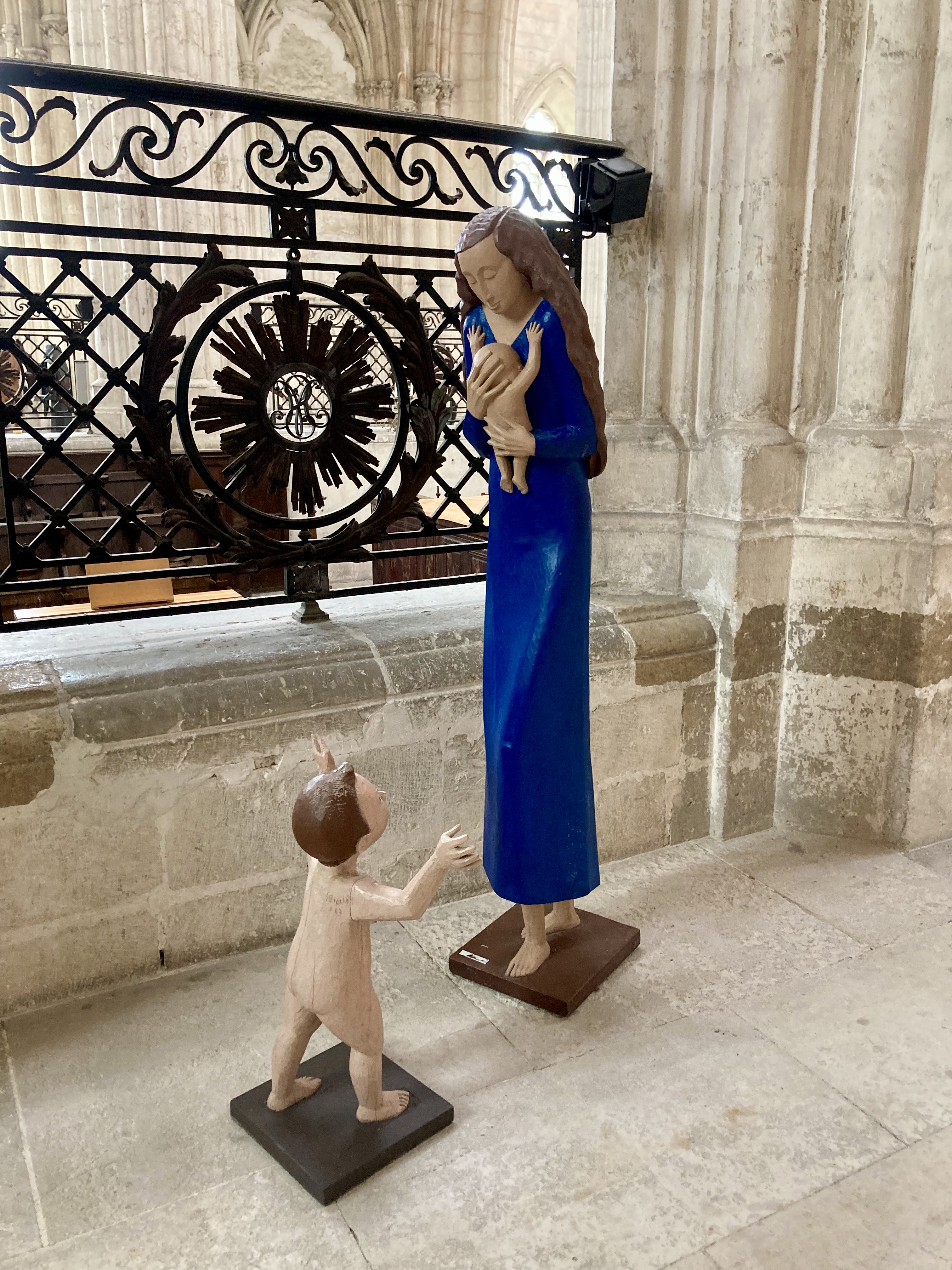
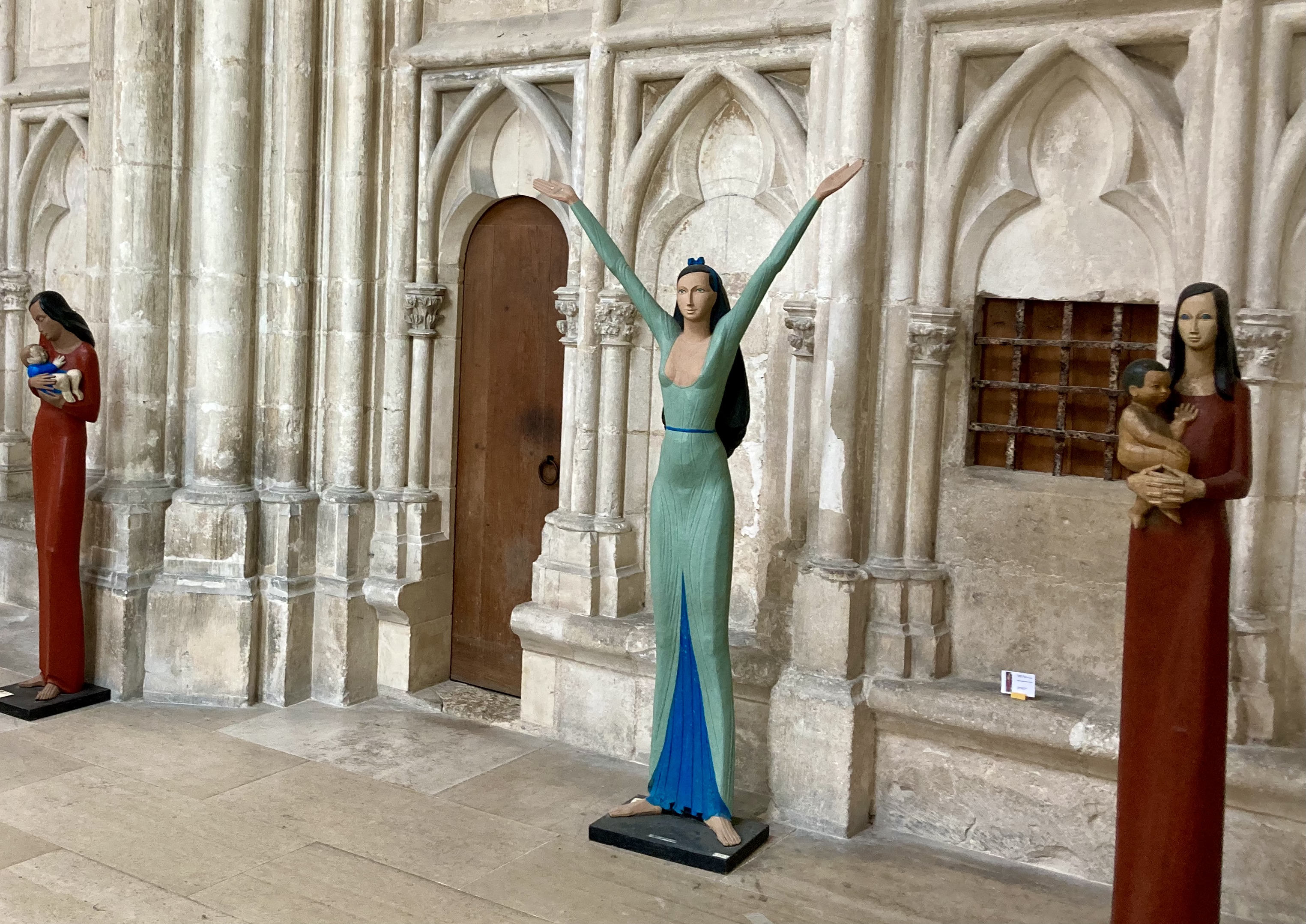

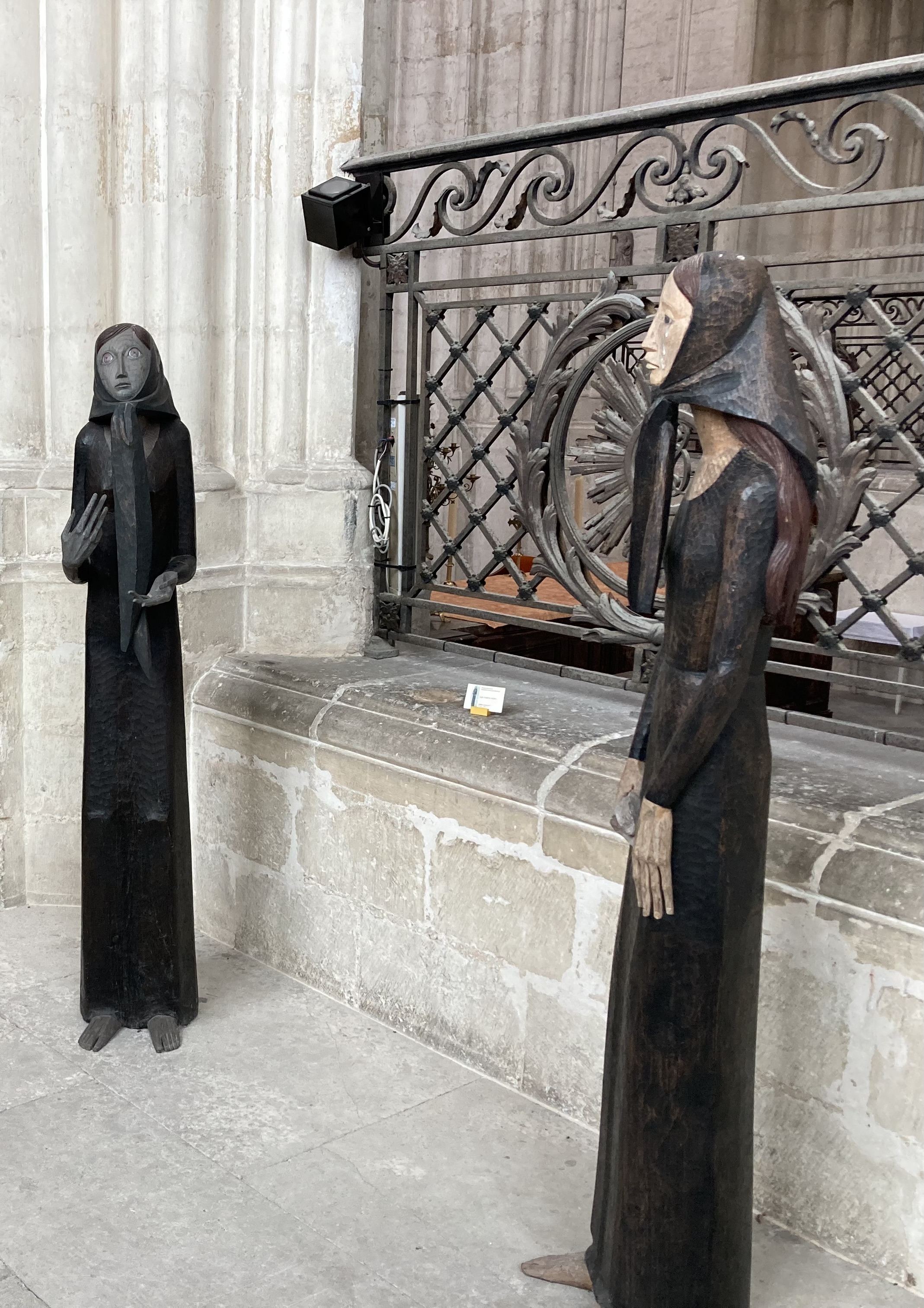
Once we had crossed the river and climber up the steep streets to the top we went to the Abbey. We were lucky enough to catch both a sculpture exhibition and a soundscape exhibition.
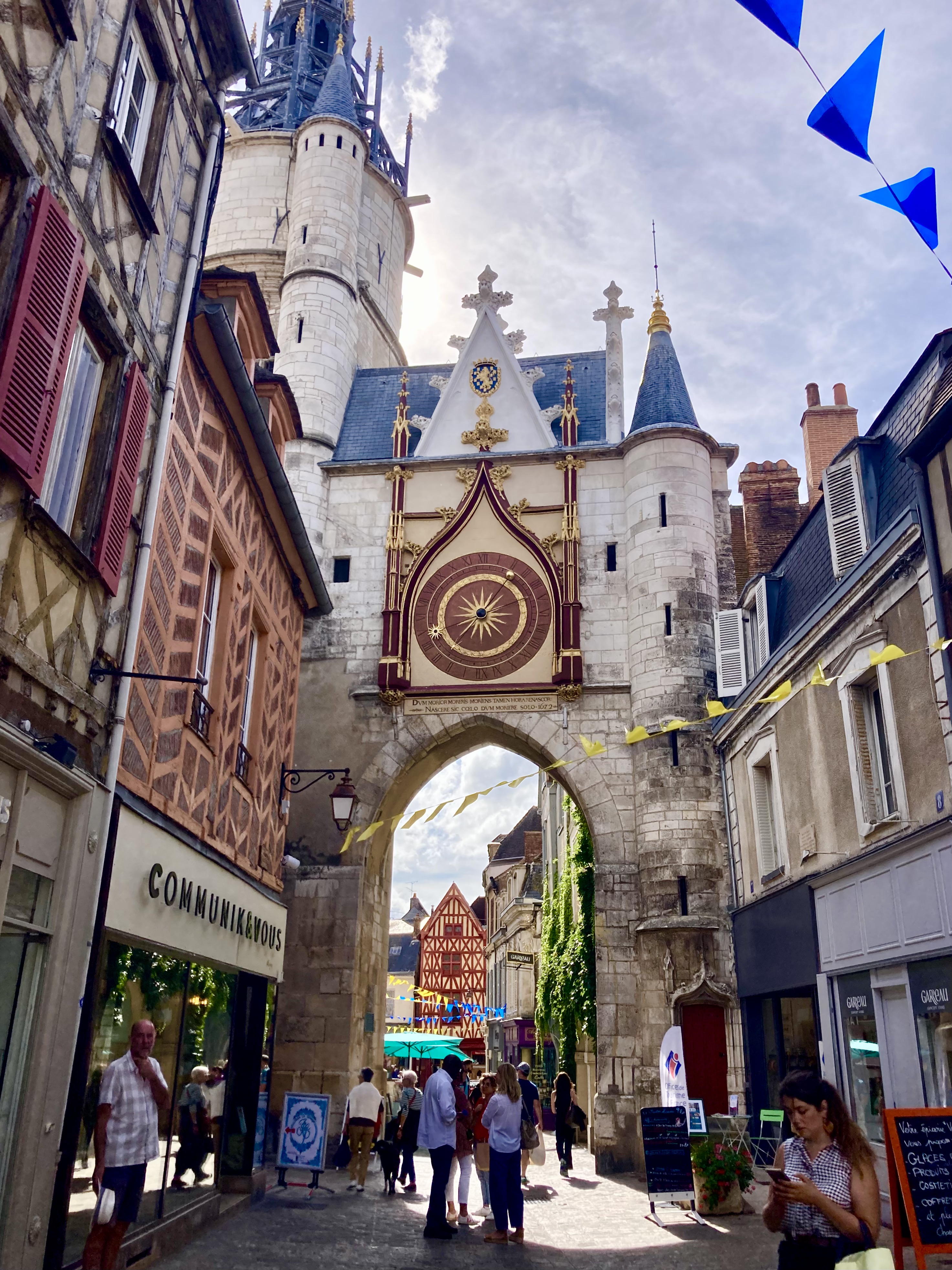

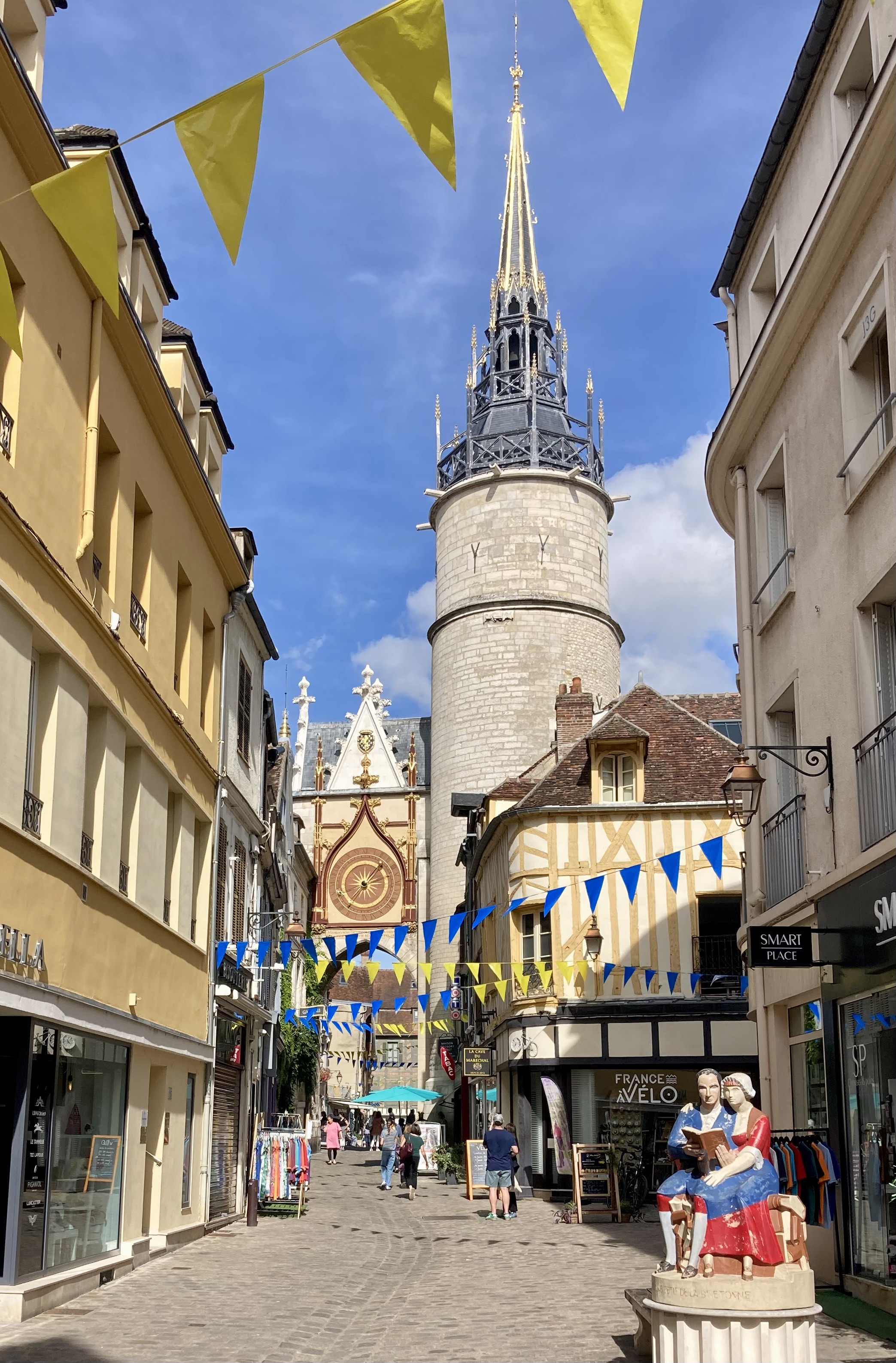
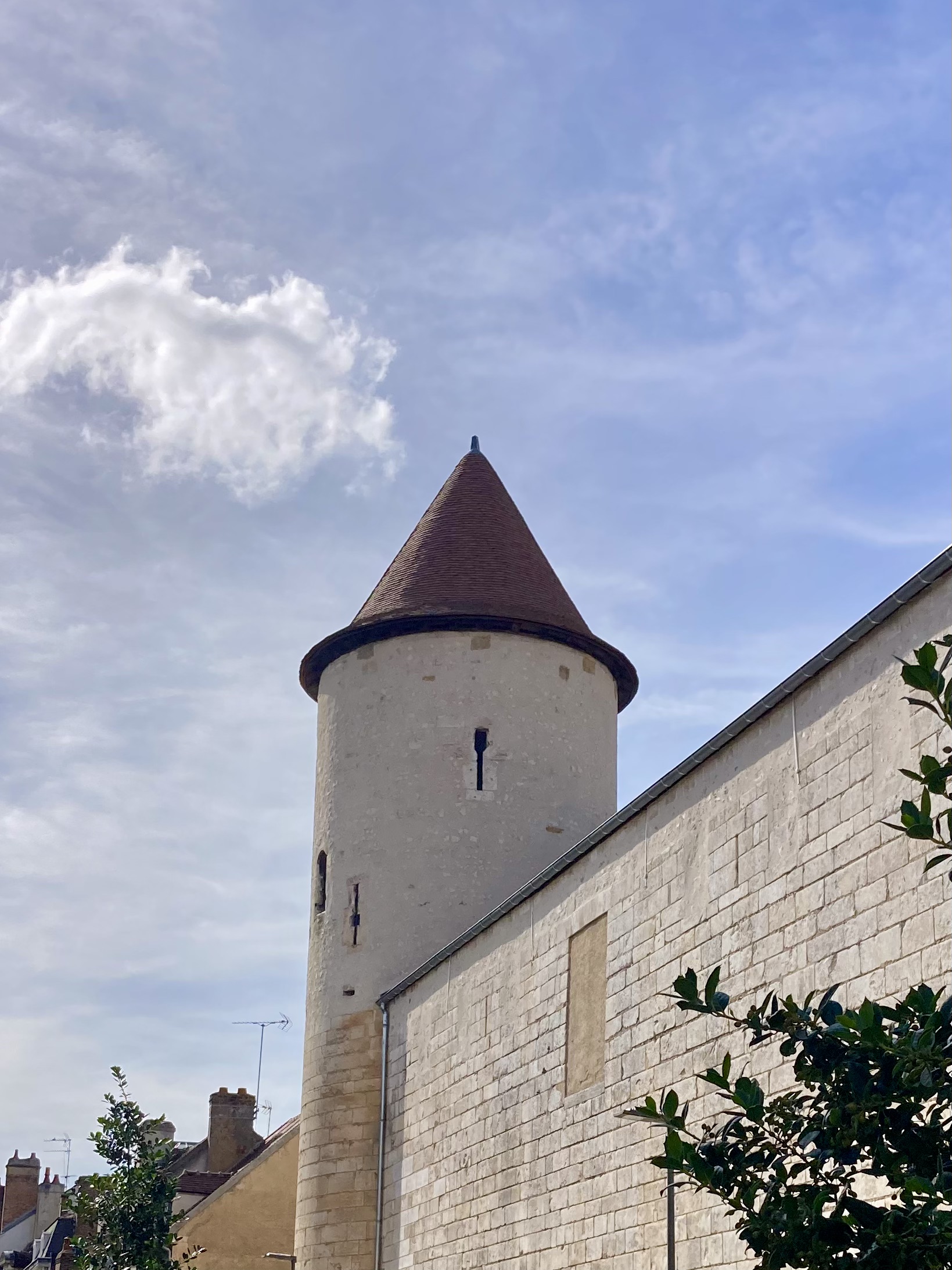


This is a tiny insight into the views round every corner in the old town. There is historical facts attached to just about everything, but this is a boat blog not a history blog so I must leave it to those who are interested to research more info.
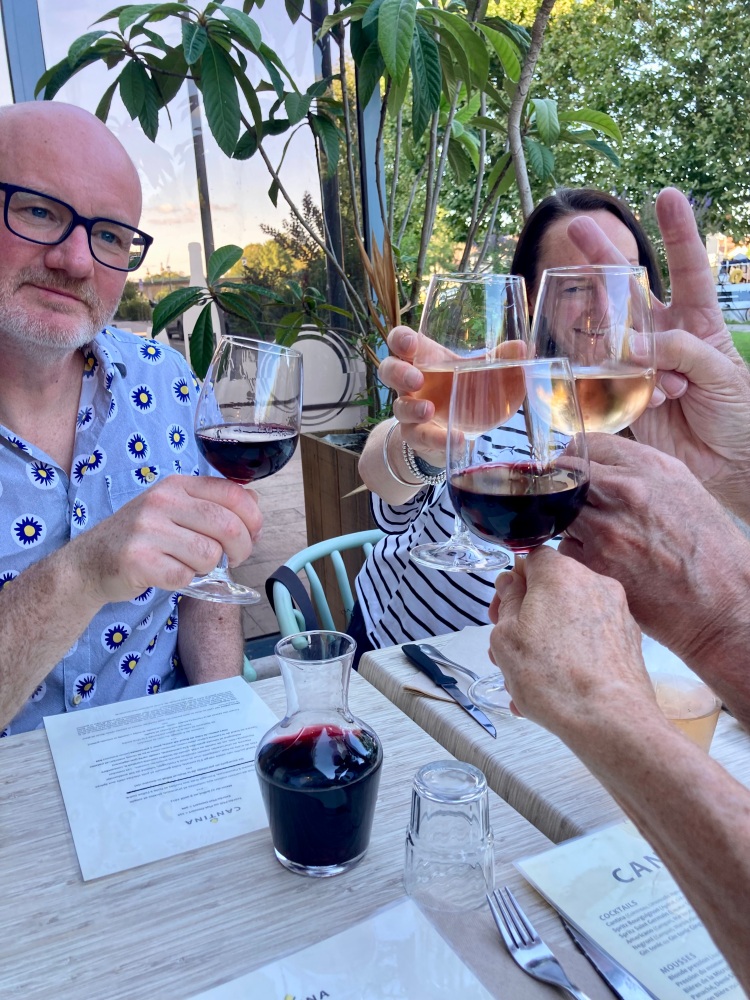
Vincelles
Captain and I had planned a short cruise for our guests. They were only with us for a few nights so we went onto the Canal de Nivernais and looked for a couple of nice places to stop.

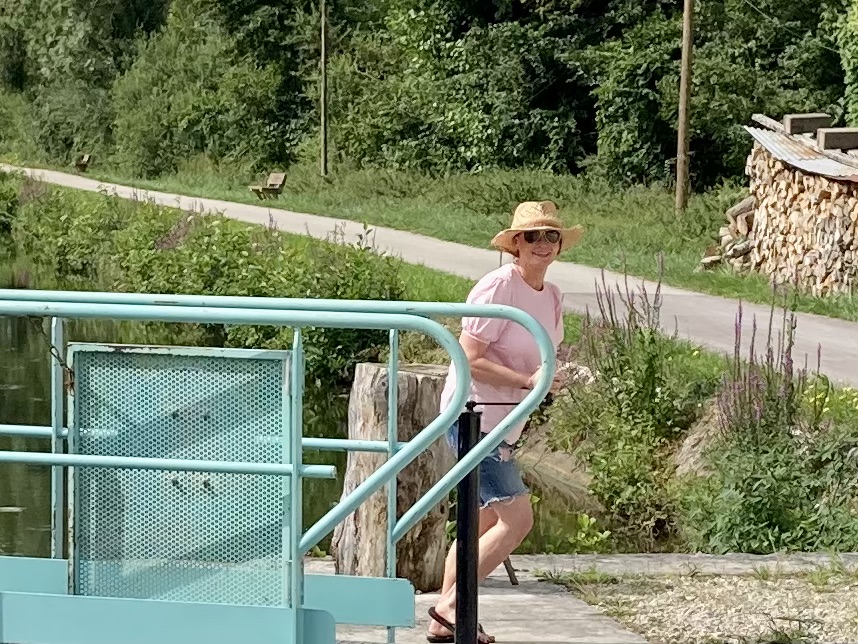
Theresa and Ashley soon found out that at manual locks it is a good idea to help the éclusiers. They both got stuck in, jumping, or climbing, ashore to open or close the lock doors.
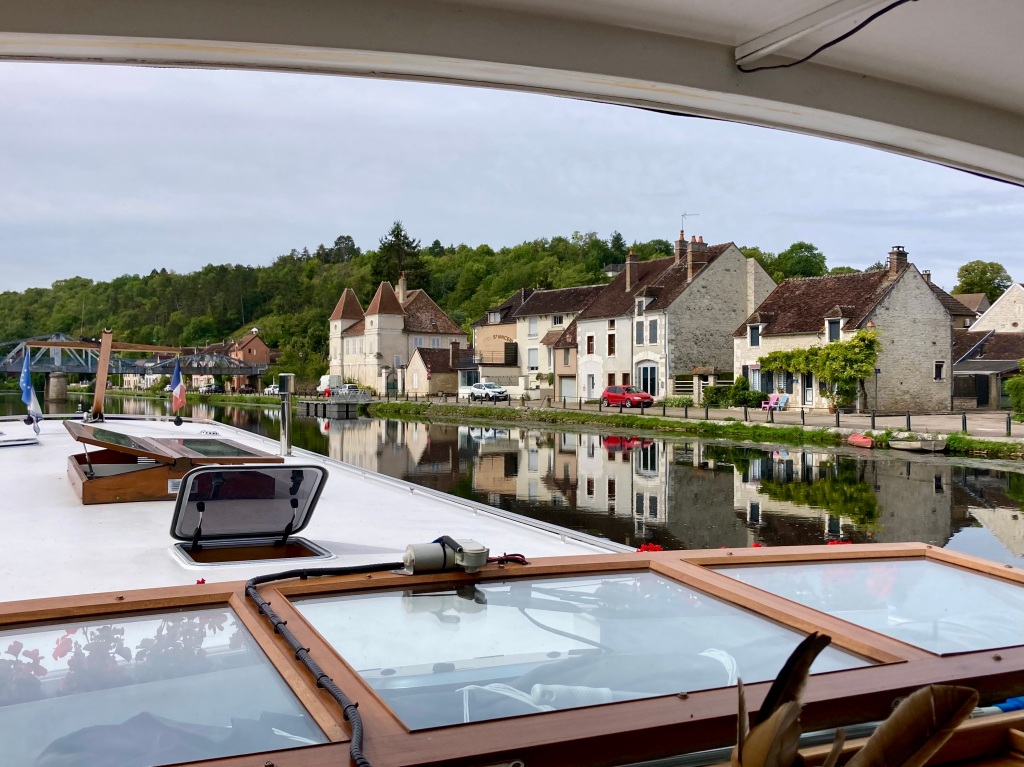
We were soon passing the small village of Vaux, but no planned stop there today.
Maybe on the way back.
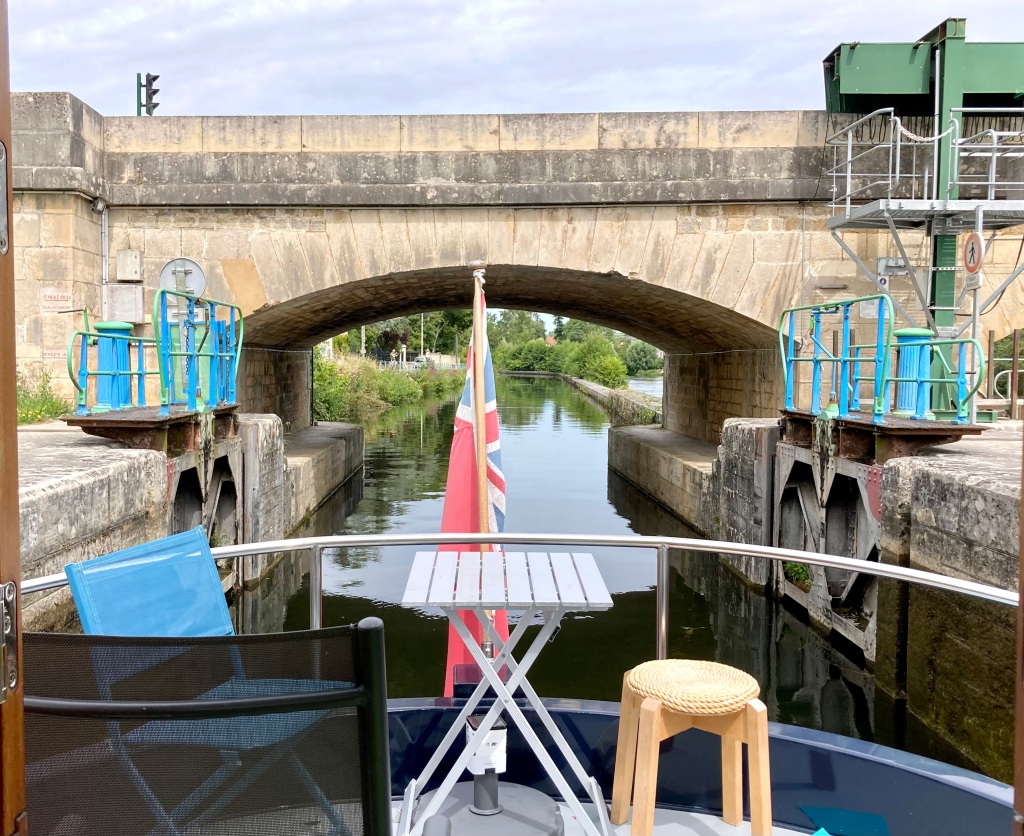
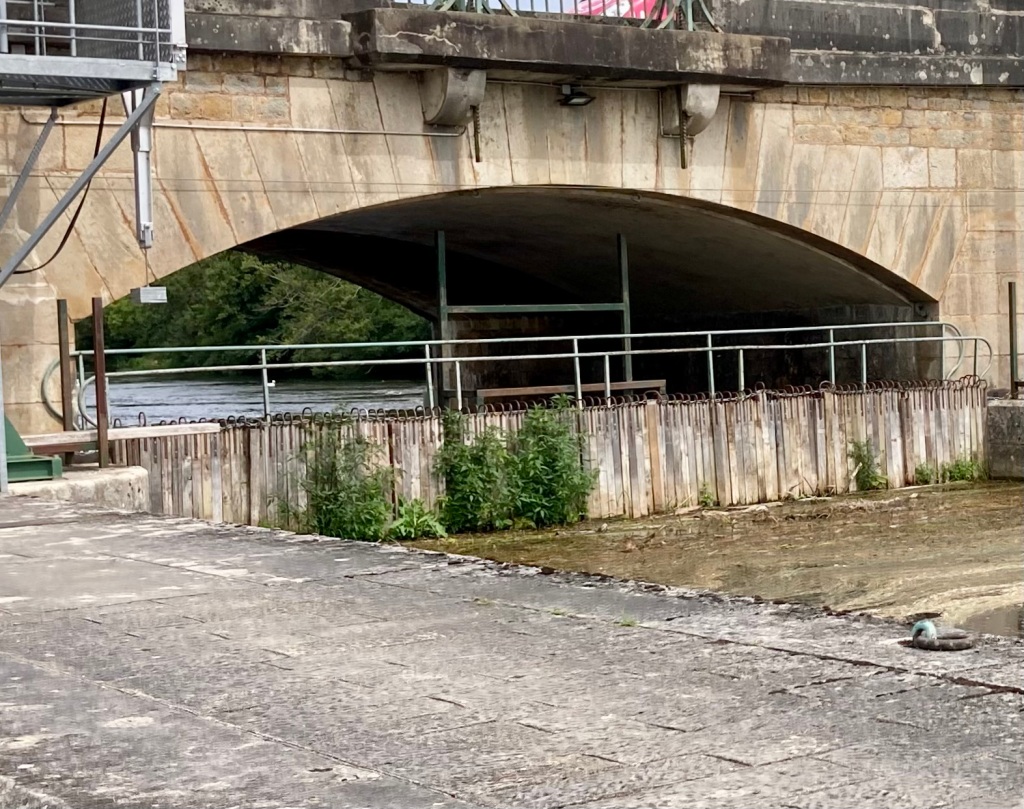
Our first planned stop was at the Caves de Bailly, just 11 kms from Auxerre. On ther way we had another short deviation, this time past Champs-sur-Yonne which has this bridge and weir at the southerly end.
The weir is still partly a wooden aiguilles (needle) weir. To change the water flow the waterways men (and women) have to walk along the weir adding or subtracting the wooden ‘needles’.
We reached the pontoon under the Cave de Bailly in time to have lunch and wait for the Cave to open at 2pm. These caves were originally huge underground quarries producing stone for many famous Paris buildings. Later they became the home of a mushroom ‘farm.
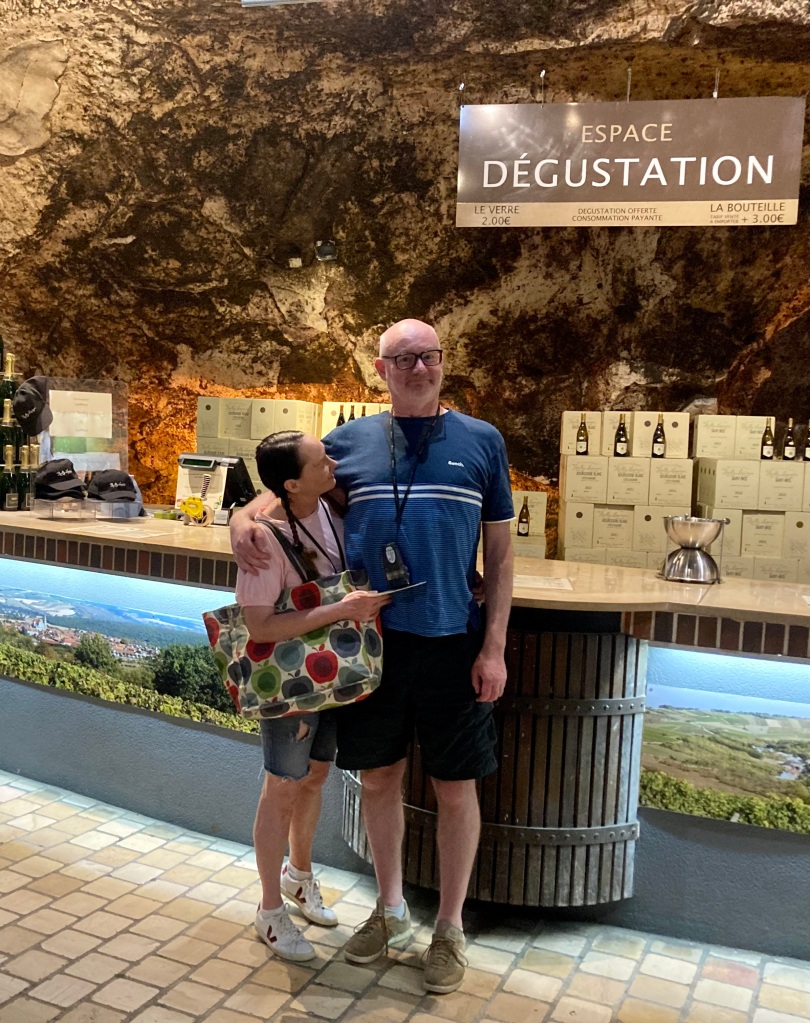
These days they are home to a wine cooperative, mainly producing Creamant – the Borgogne version of champagne.
We were able to have a tour round some of the immense caverns, learning about the Creamant method, and then tasting several of their wines.
And of course buying some too!
With wine aboard Calliope continued up the canal towards our overnight mooring. The quay at Vincelles had plenty of room for us .
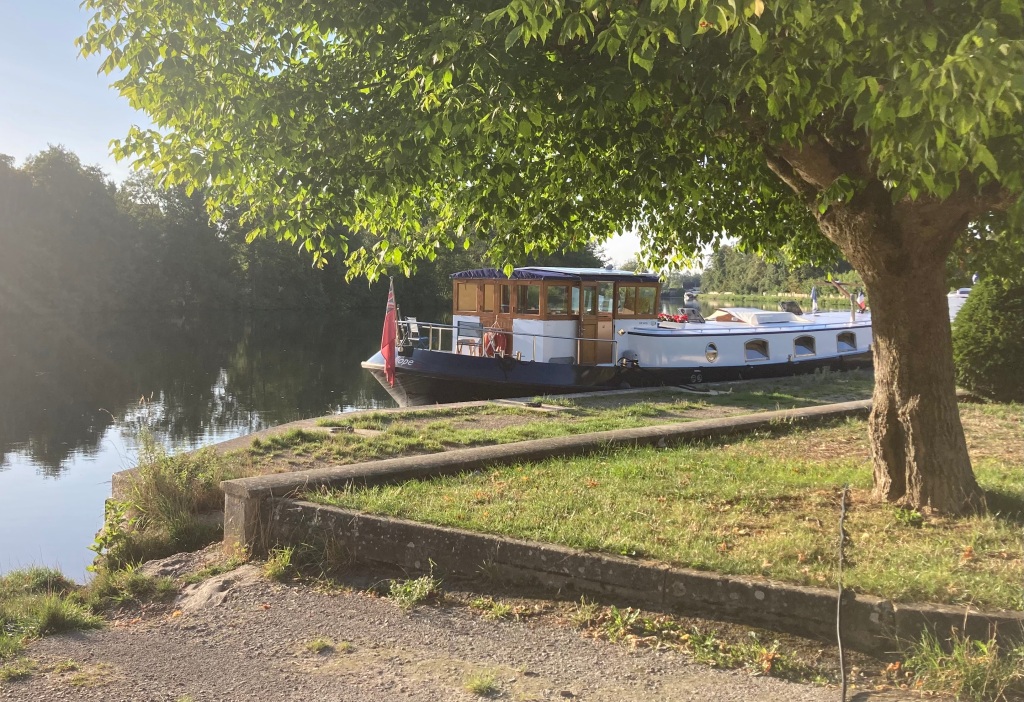
What a lovely place to spend an evening.
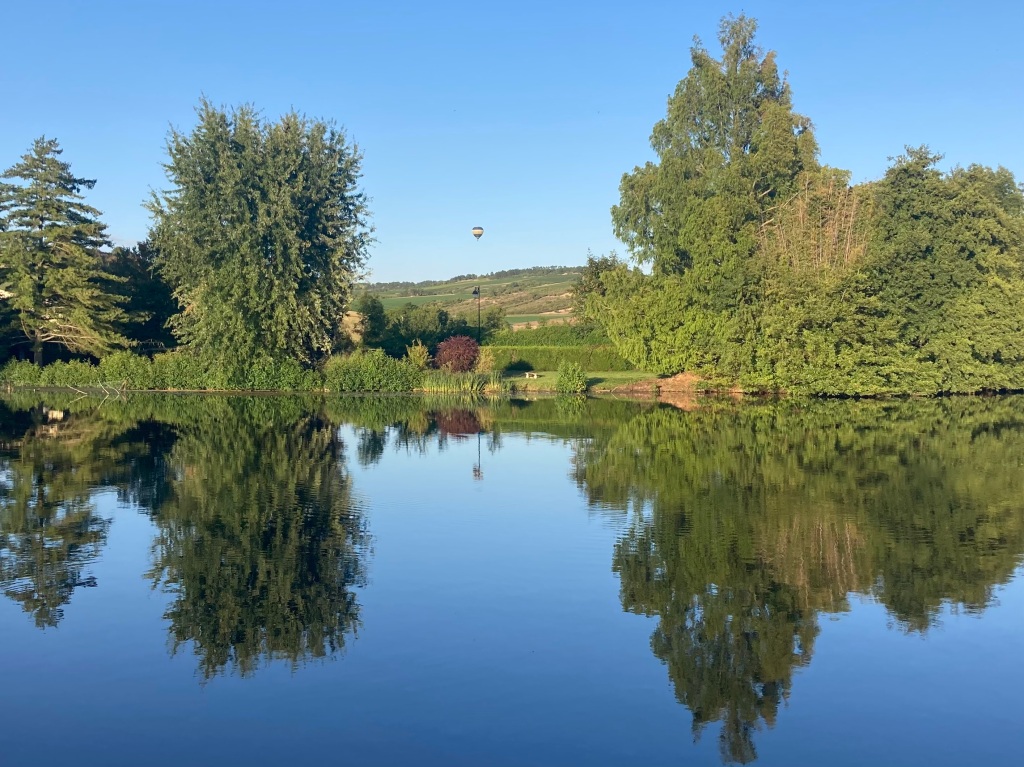
During the beautiful blue blue evening a hot air balloon gently drifted across the space between the trees on the opposite bank – zoom in to see its quiet progress across the sky.

At 9pm it was still light, and just the start of an evening’s rosy sky. A hotel barge had come in behind us, waiting for its guests to arrive by luxury minibus at some point.
Next morning was as splendid, with the sun glowing golden across the Nivernais and onto Calliope’s dew soaked roof.
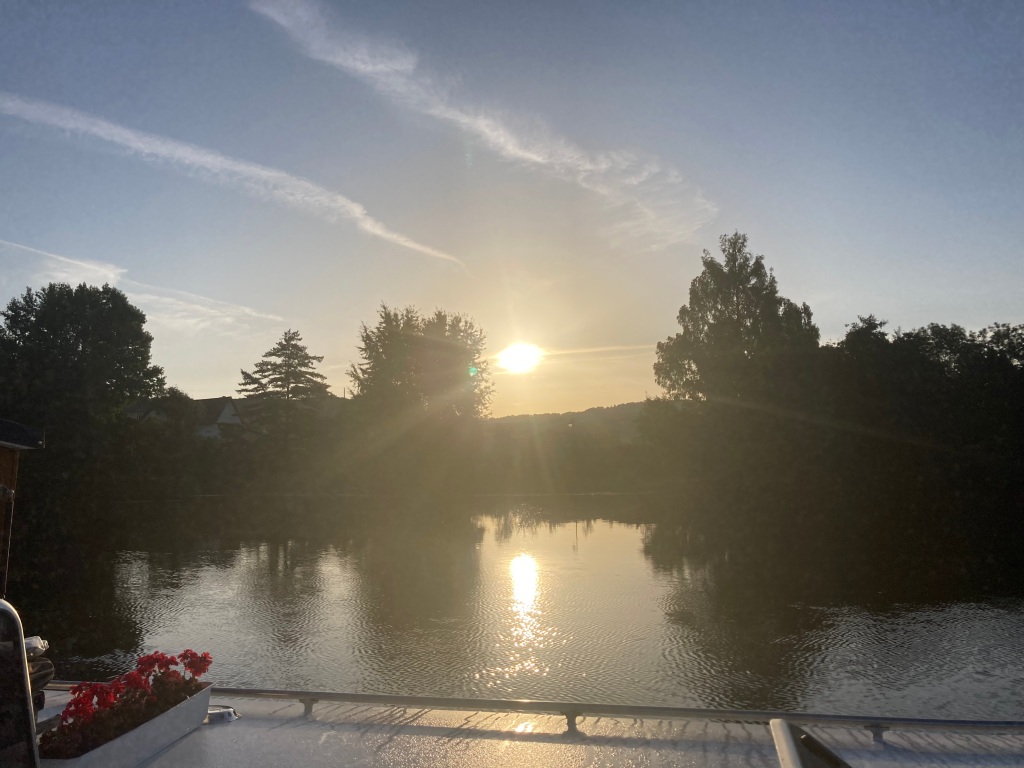
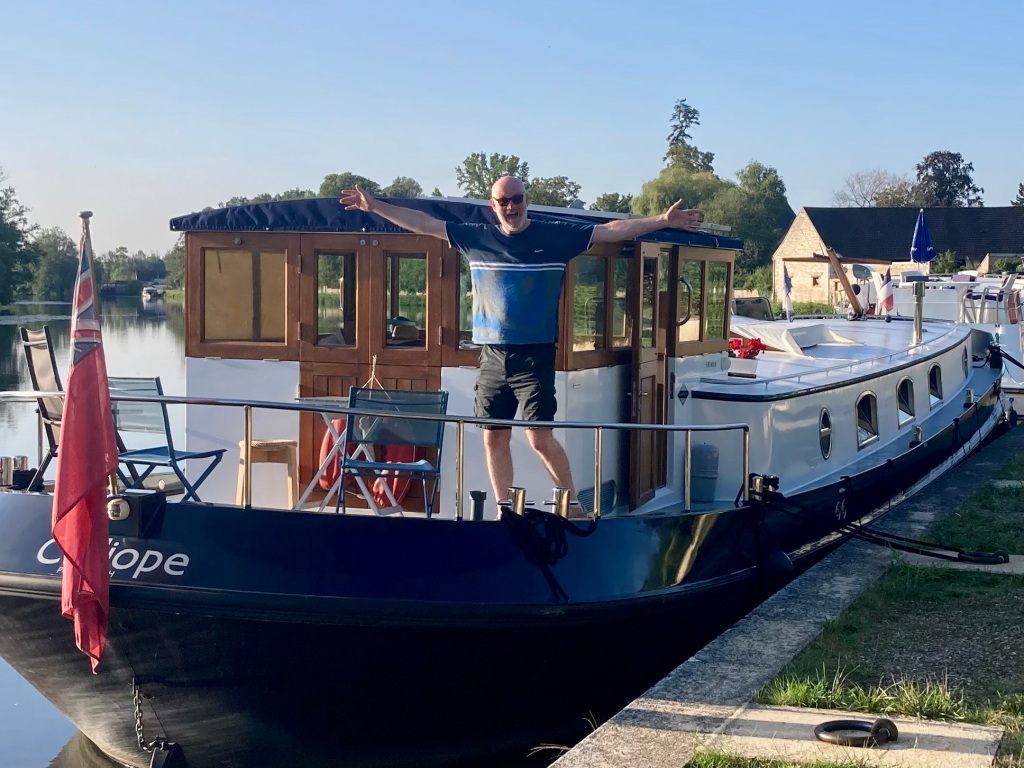
It obviously enervated our son!
So much so that we went for a walk before breakfast.
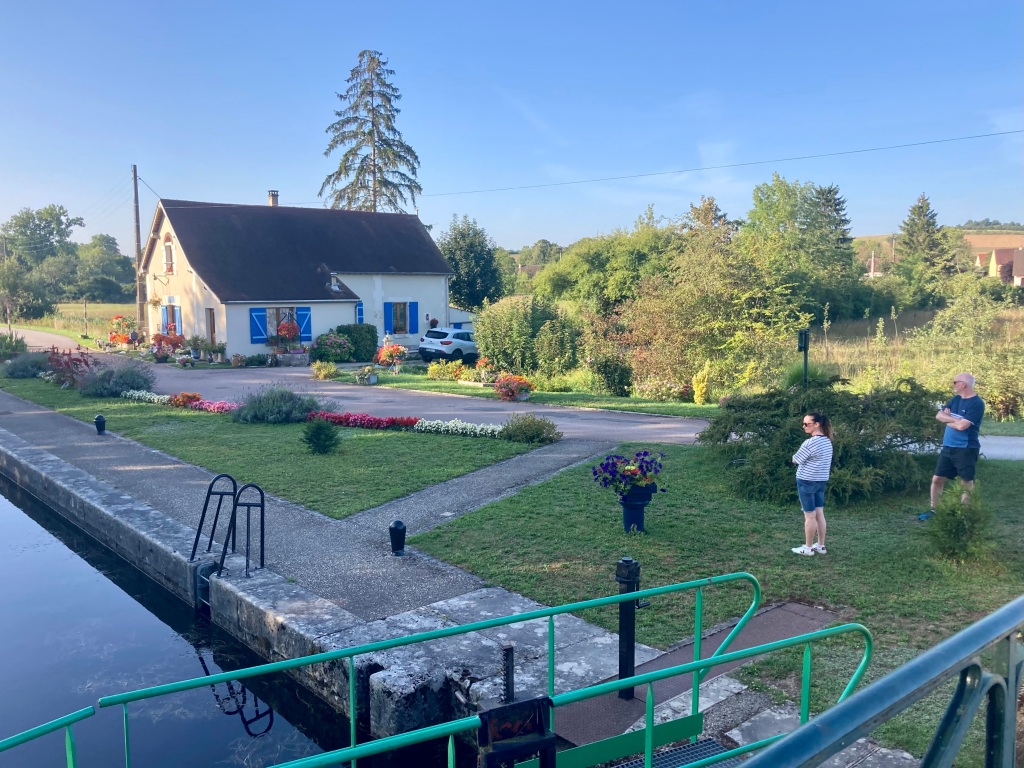
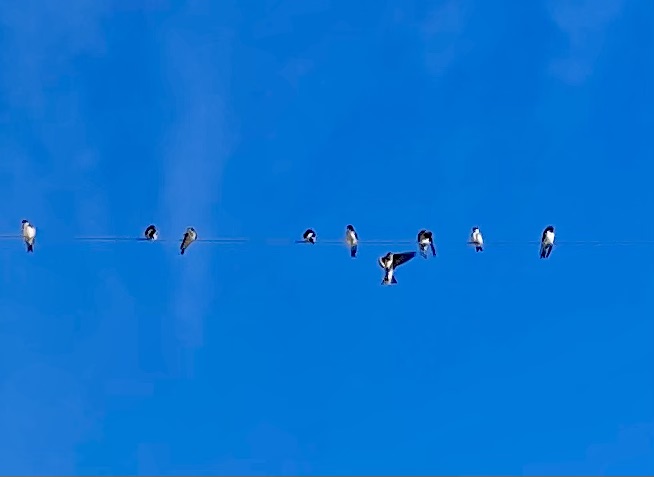
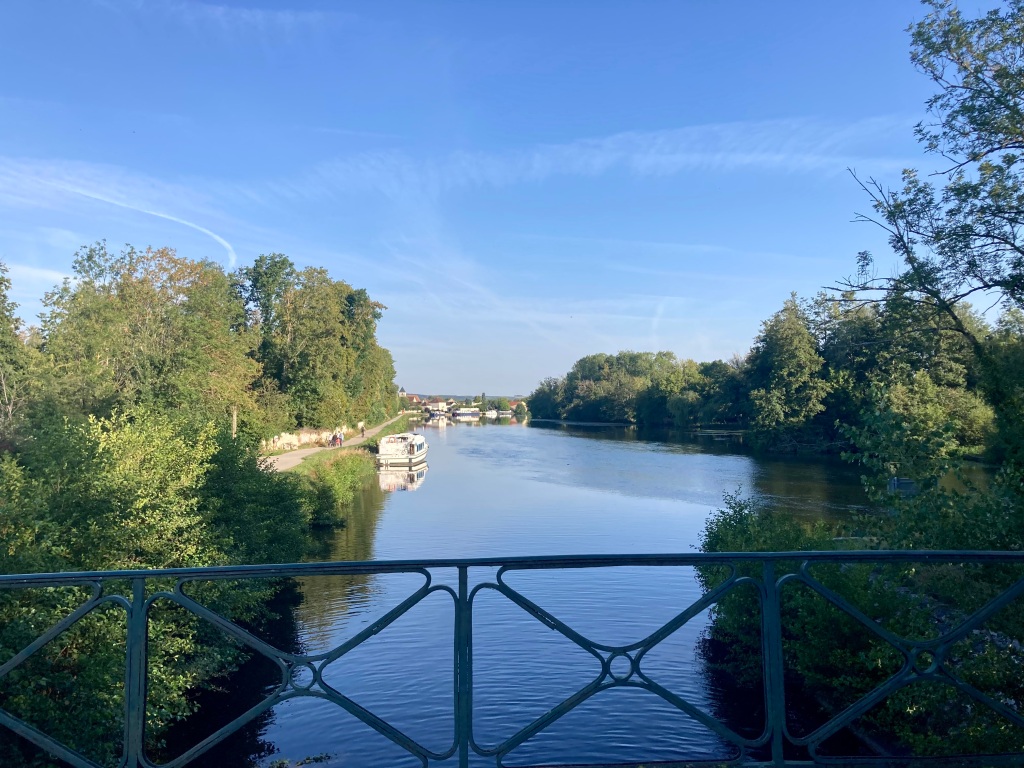
First we walked down to Vincelles lock and its neat garden. Looking back downstream we could see Calliope moored in the distance.
Then we walked back thought the quiet village – the only life being some young swifts on a wire, until we reached the boulangerie.
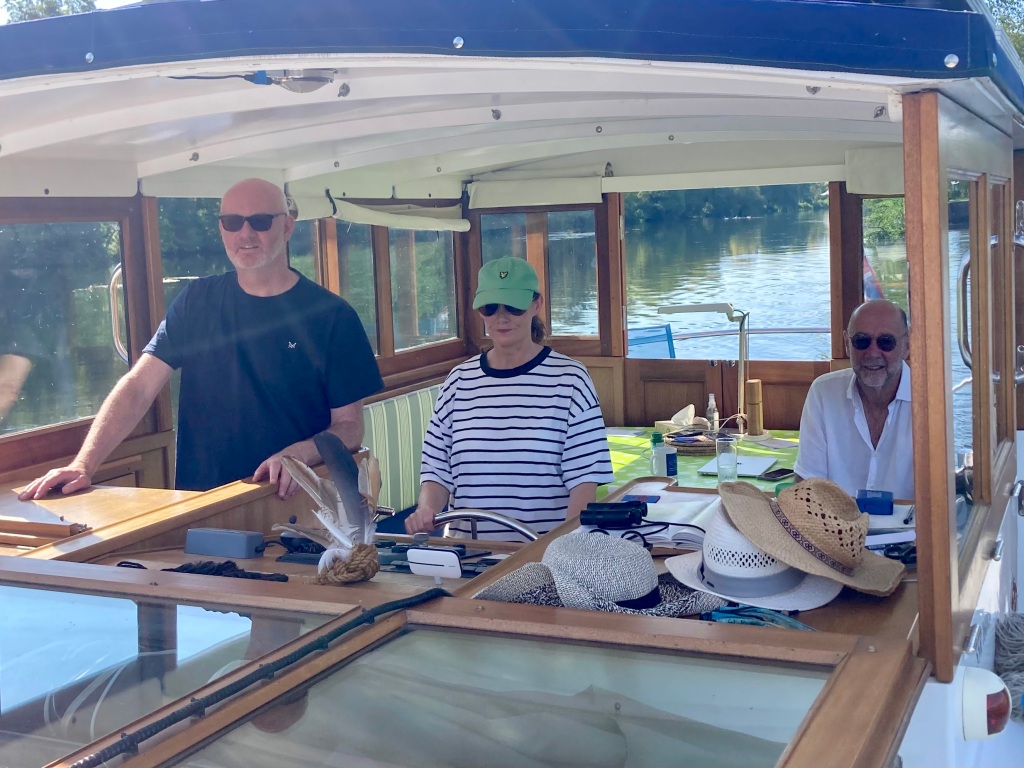
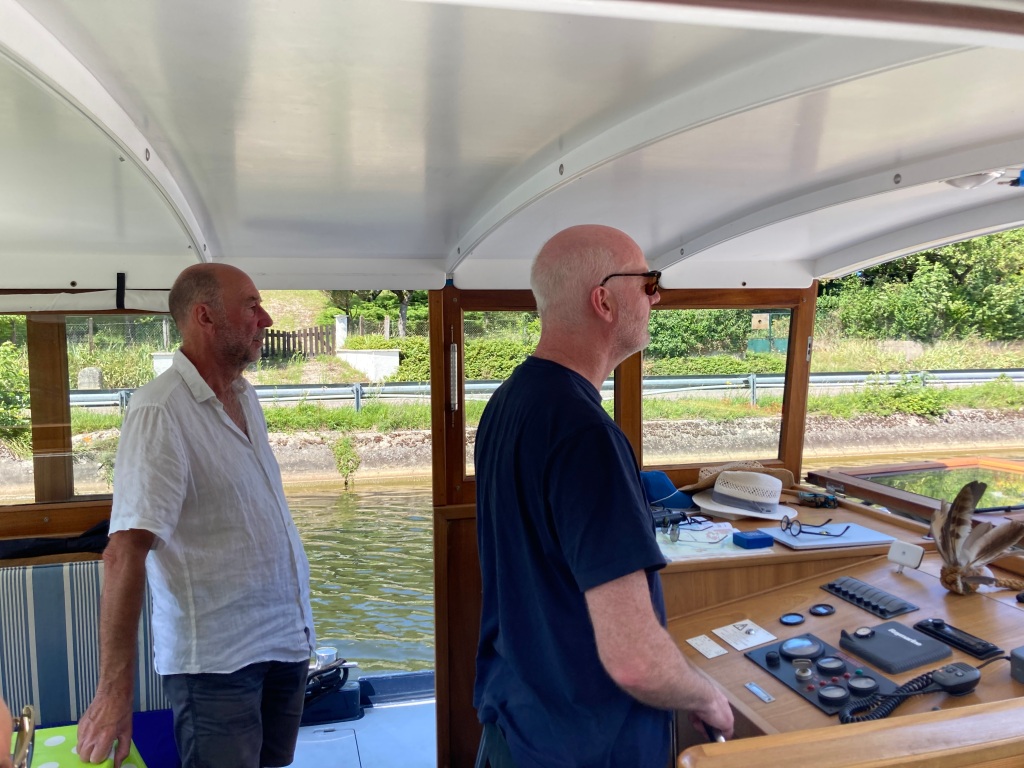
Time to turn round already, but also time for a change at the helm. Stewart enjoyed coaching Theresa and Ashley in helmsmanship. Ashley did well and managed to take the barge into a couple of locks – more than this crew has ever done.
Although that is through choice as I love throwing ropes, and the Captain is so good at steering!
It was yet another perfect day for cruising along with few other boats moving in either direction.
We went in and out of several locks, where Ashley and Theresa again proved to be enthusiastic éclusiers.
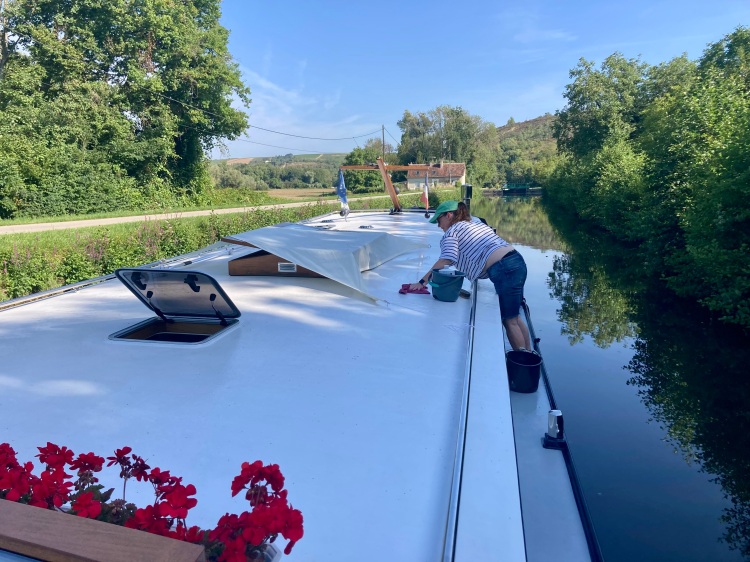
Theresa also got stuck in using the dew to clean the roof. Good job!!
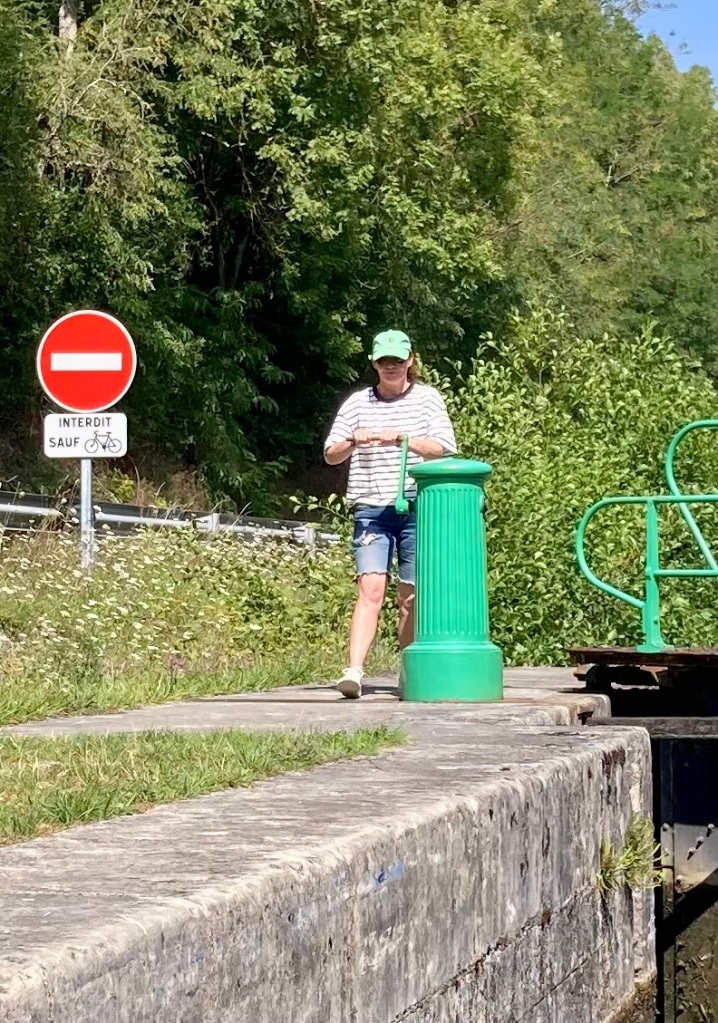
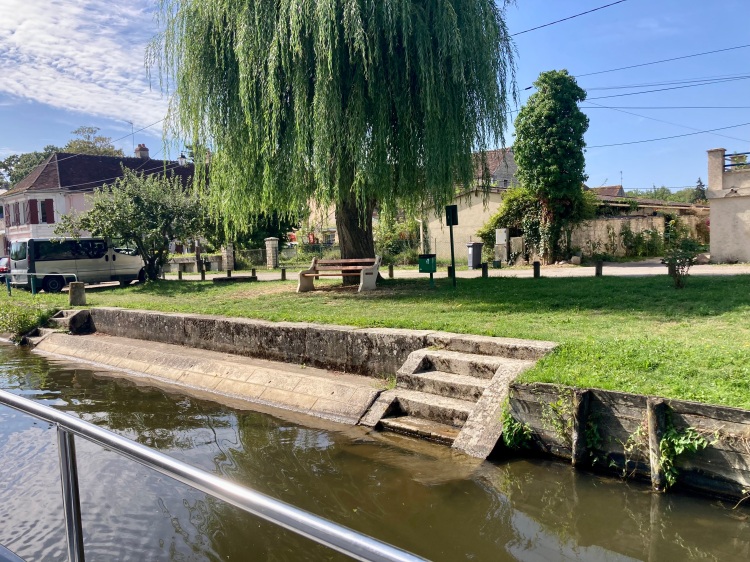
As the morning wore on we began to look for somewhere to moor up and enjoy the baguette we had bought earlier.
A pontoon at the pretty village of Vaux, with this riverside lavoir, looked a good option so we tied up and had a lunch break.
Theresa, always active, went for a quick walk round the village before we left, and came back in great excitement to tell me she had found a lavoir or me to see.
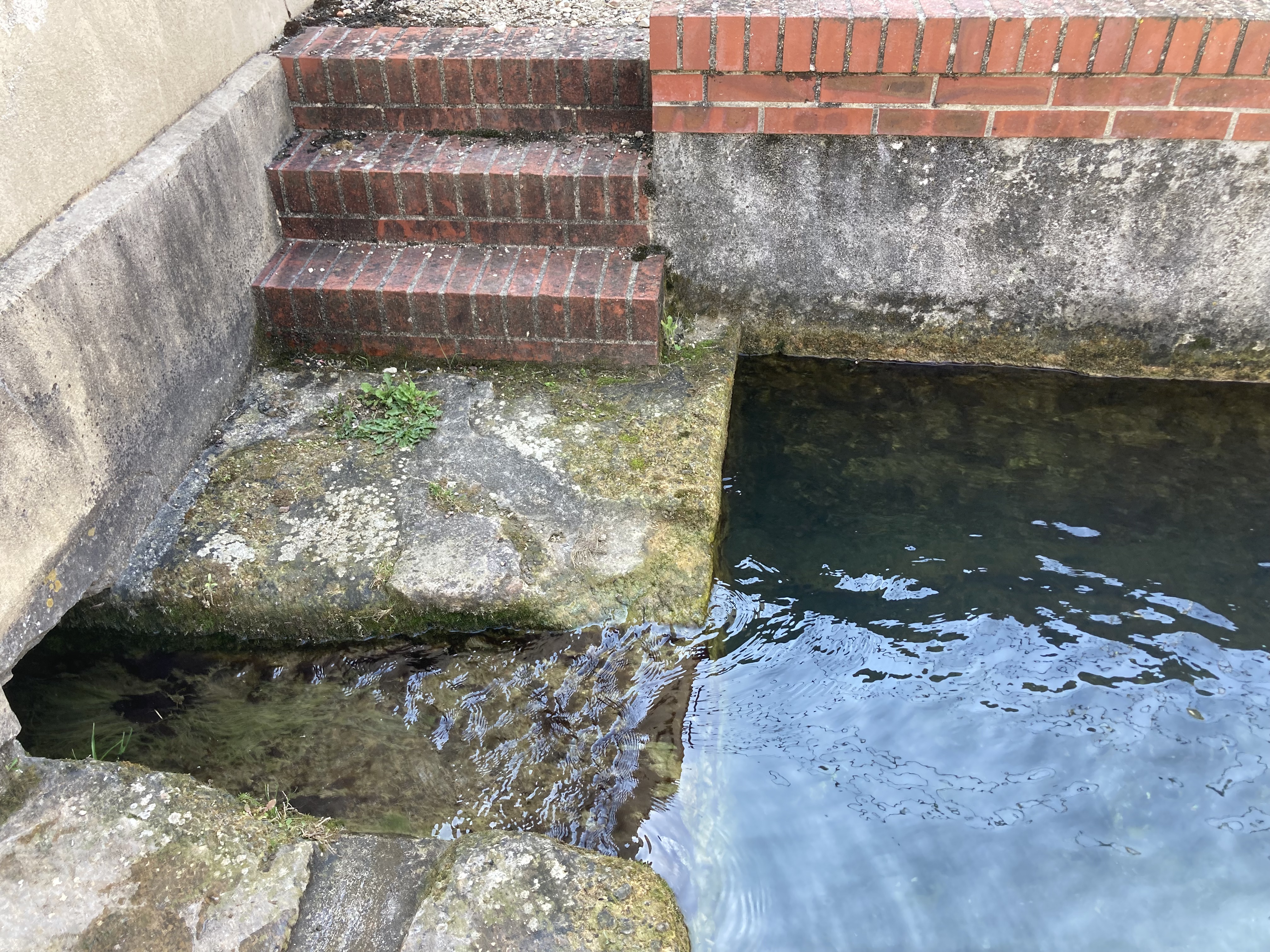
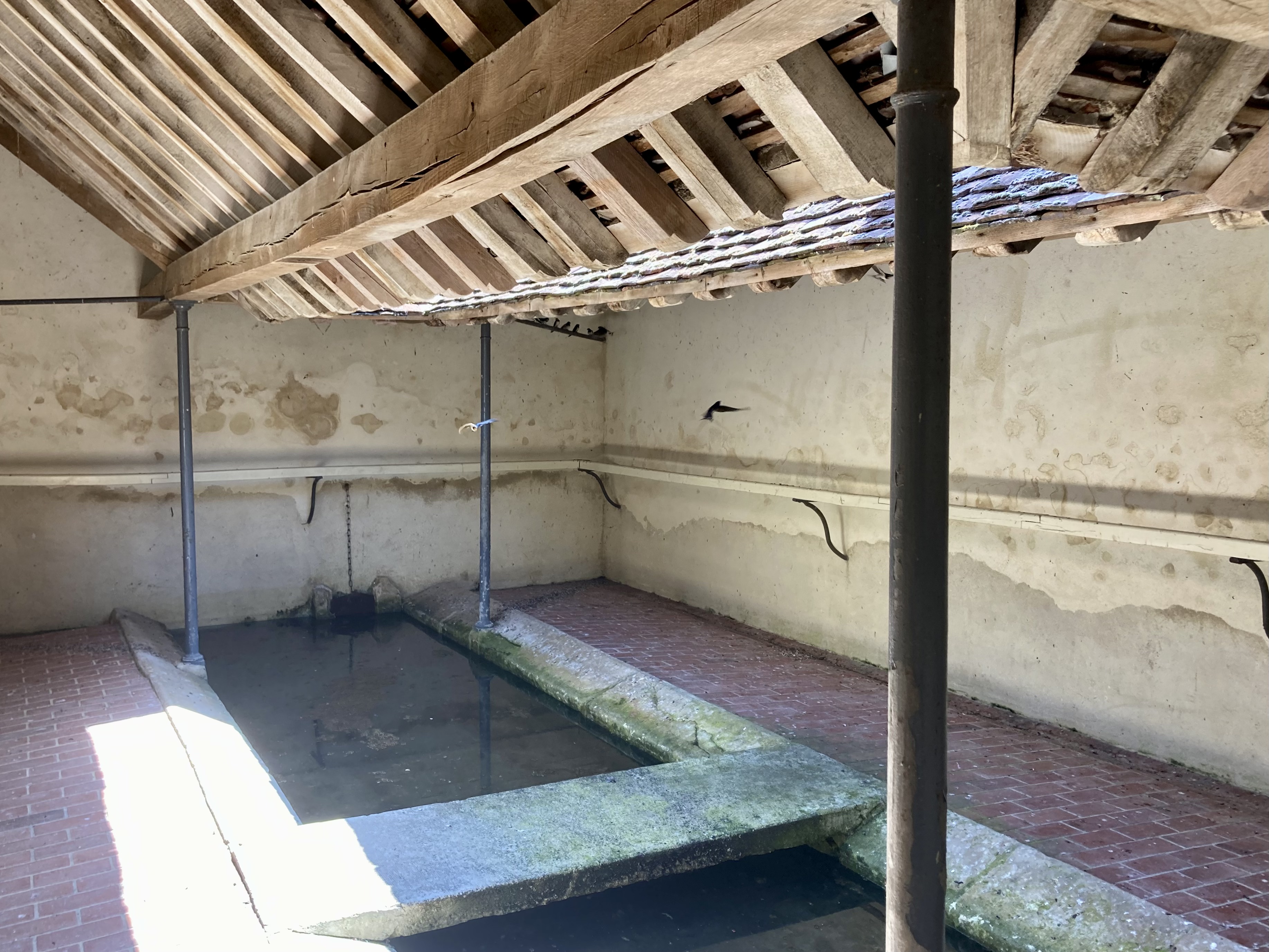
I immediately got permission from the Captain to go ashore if I was no longer than 5 minutes and I followed Theresa to the basin of water on the left. It could perhaps be a lavoir, and a signpost in the village pointed towards it ….. but as we walked away from it I realised we were now passing the actual lavoir – see the photo on the right.
The first ‘watering hole’ was just that – a place to dip buckets in and take water home. It was above the lavoir, so full of clean water. The water then flowed into and through the lavoir, picking up dirty soap suds as it went.
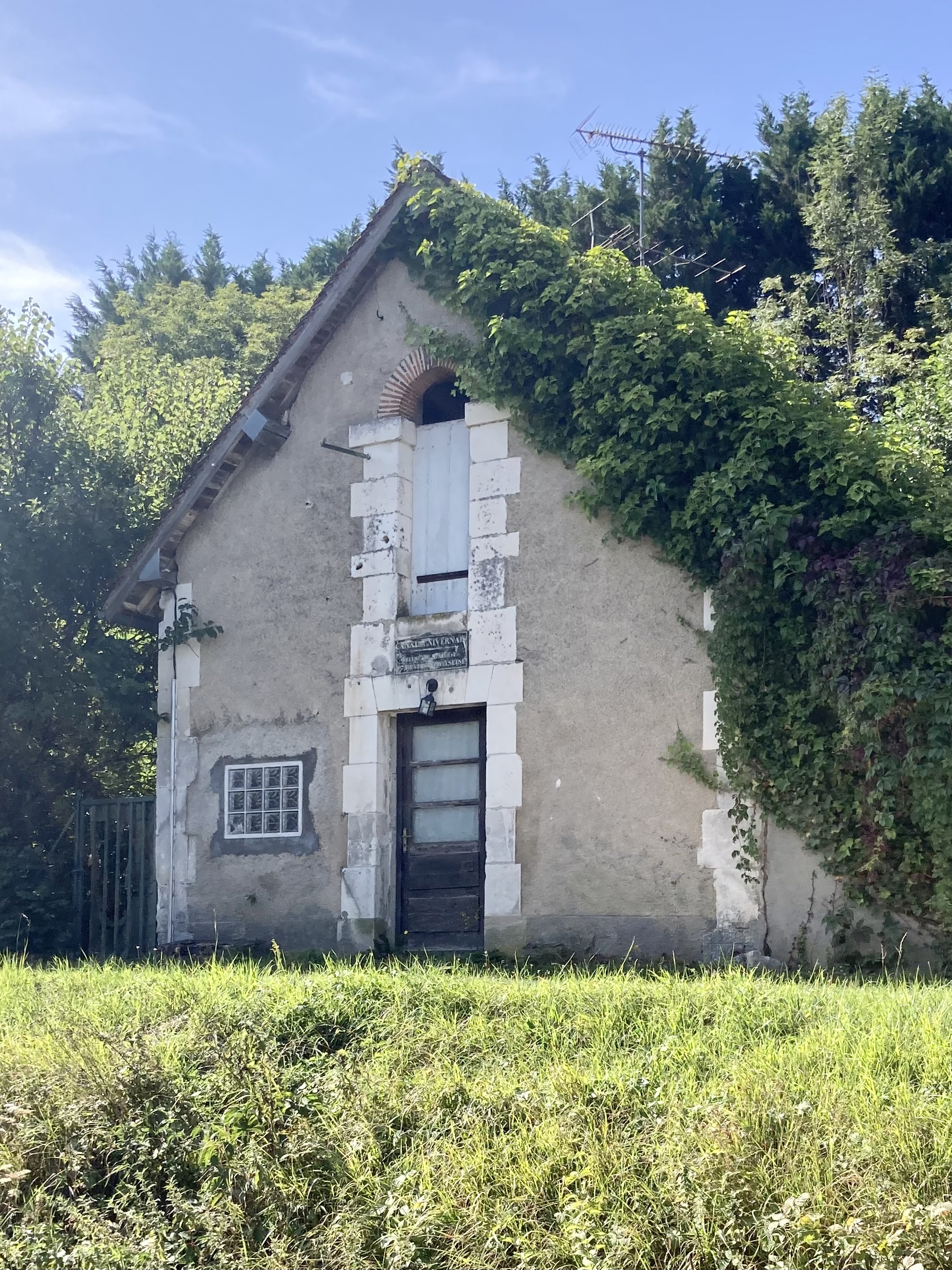

Lunch and lavoirs over we were back into cruising mode. As so often happens, it was the locks that provided interesting things to photograph. One is yet another ‘desirable’ deserted lock keepers cottage; so many of them along the canals. And at another, where the lock keeper is still in situ, a delightful use of a tree stump to hold pots of flowers.
Park at Auxerre
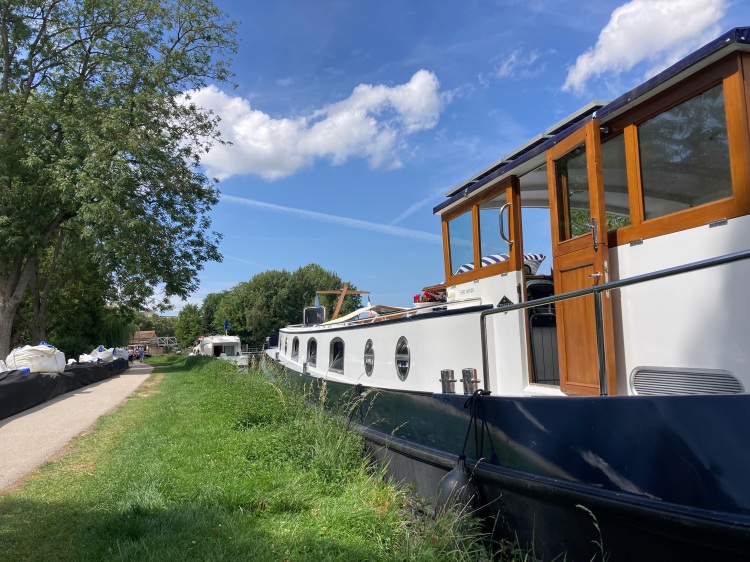
This had to be a short cruise. Ashley and Theresa only had 4 days with us and we had to leave for the UK ourselves.
So we planned two nights back at Auxerre, one at a different mooring above the town by the park.
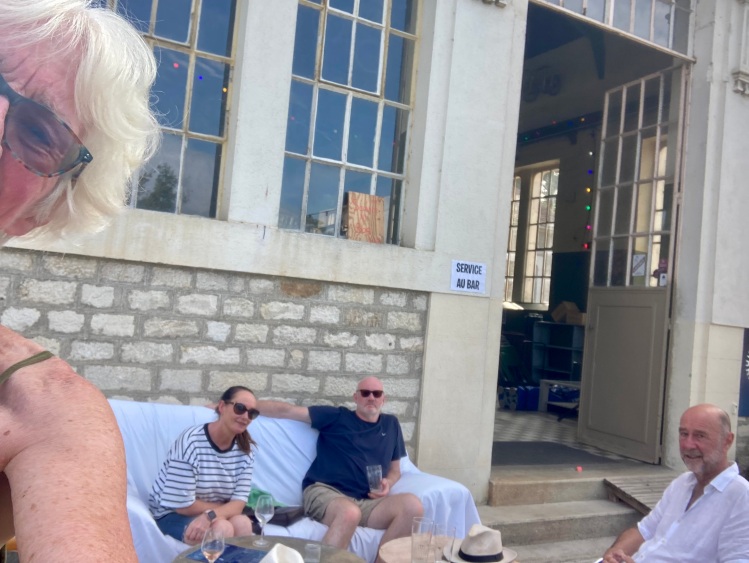
Not only was it by the park; it was also close to the old pumping house, now part a funky bar and part a bike hire business. So cue one of my worst ever selfies style photos of the four of us outside having an early apero!
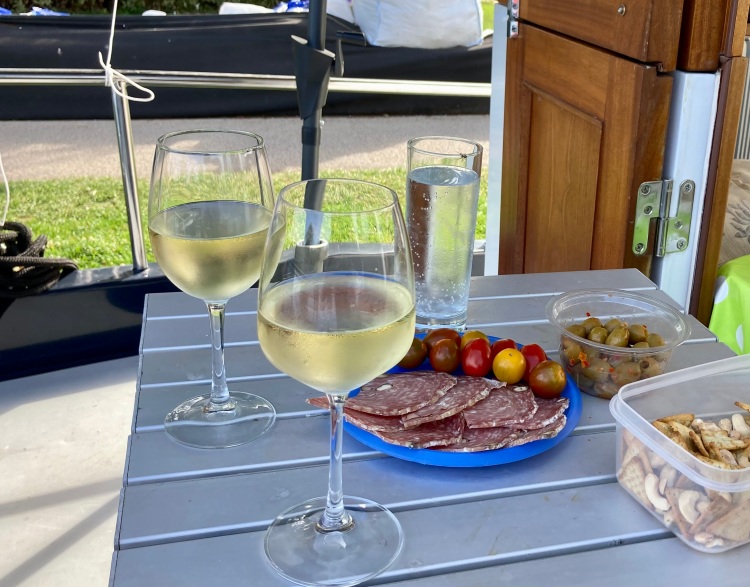
Auxerre again
The following morning, under grey skies, we took Calliope through the last lock off the Nivernais, back onto the Yonne, under Pont Paul Bert (with his statue at the centre), under Ashley and Theresa to Paul’s right, and onto our mooring at Auxerre marina.
There was a plan for the rest of this day; Ashley and Theresa were keen to visit some other vineyards and I was keen to go with them!
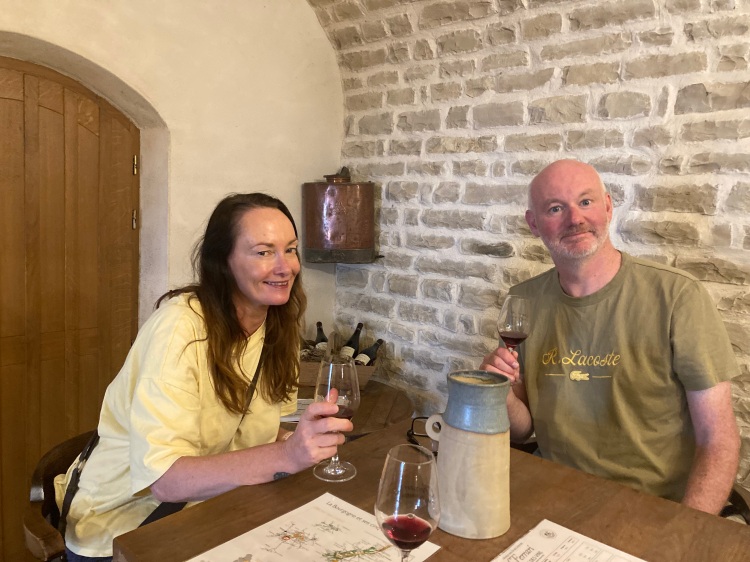
We began at Domaine Ferrari at Irancy, mainly to taste the their red wine. But we found ourselves tasing some rosé as well.
Several bottles were bought from this cave and from another, Benoit Cantin, recommended by a wine conoisseur friend, , along the road.
Ashley even bought a bottle of the best Palotte red for the Captain, who had not come with us.
Then we were off to Chitry -the village being a treat in itself.
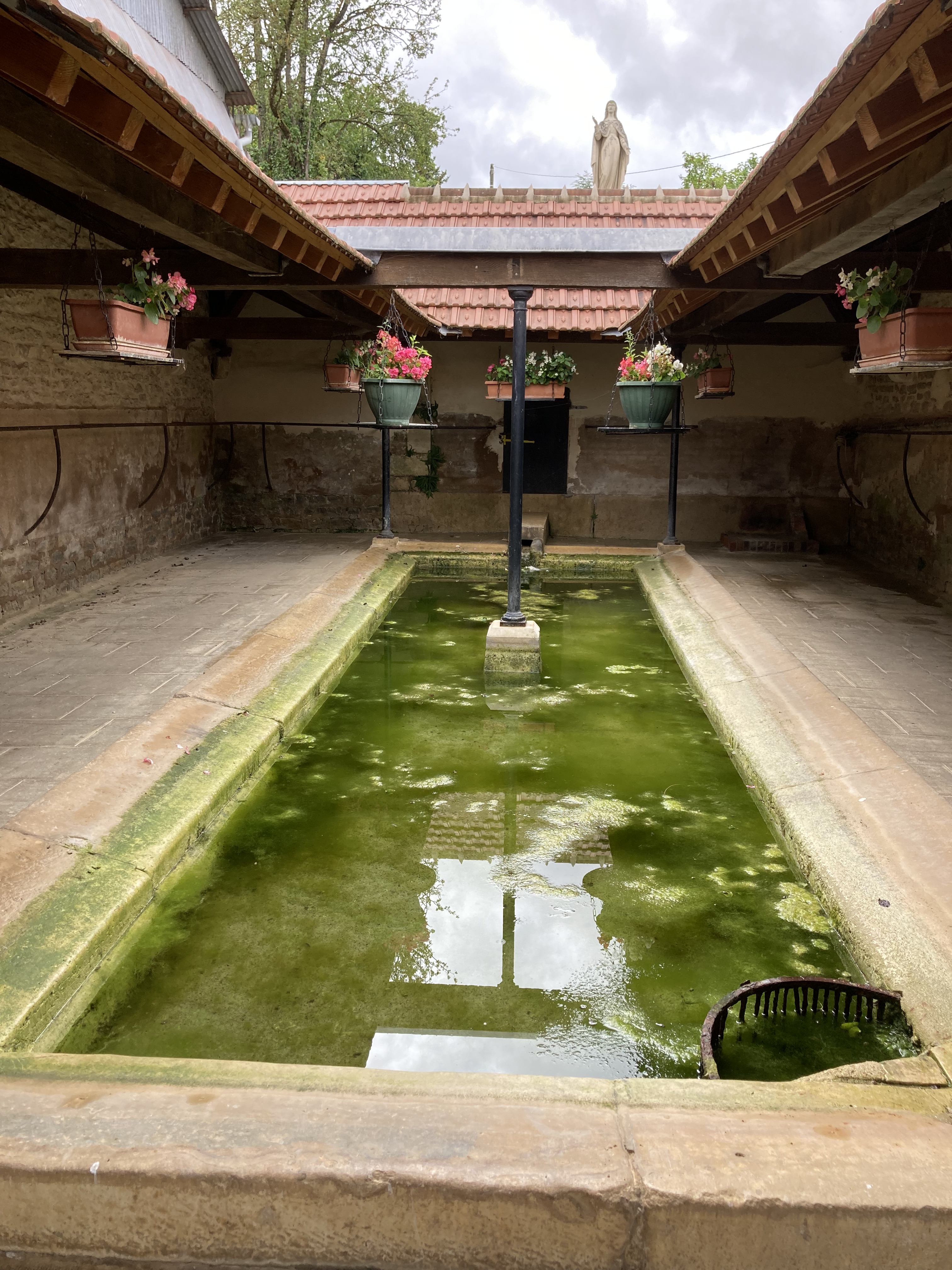
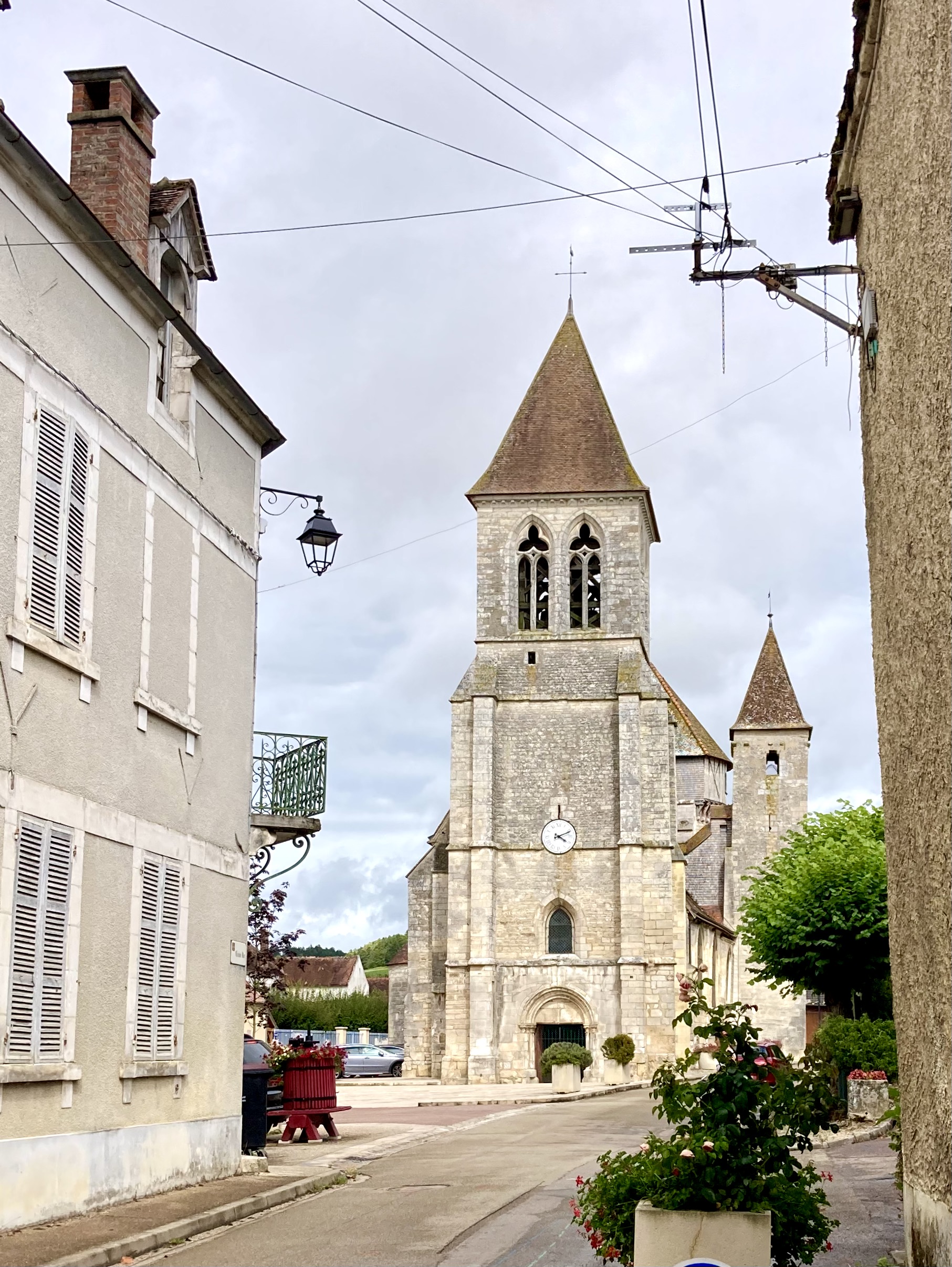
Chitry is full of narrow streets and characterful buildings, including a rather lovely church and a surprising lavoir. (Hope you are not fed up of lavoirs yet!)
Amongst the streets are something like 15 different wine caves. We chose one that turned out to be both incredibly friendly and very nice wine – at a good price.
I think you can tell that the tastings are broadening our smiles!
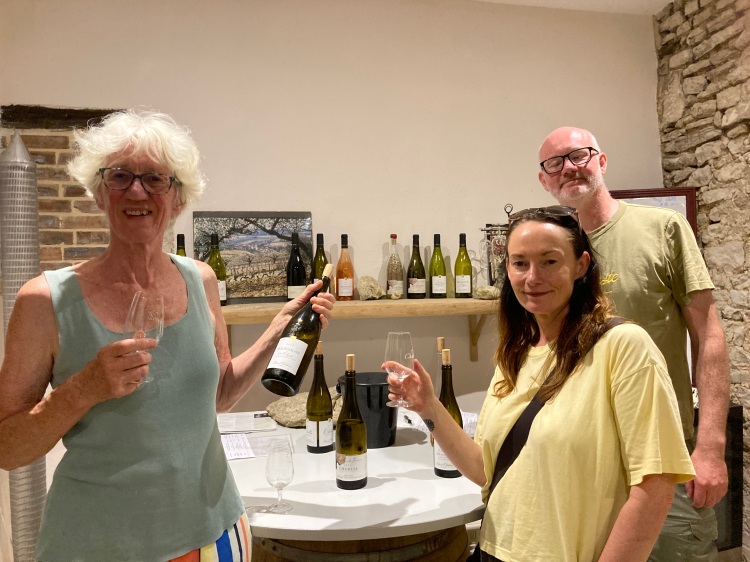
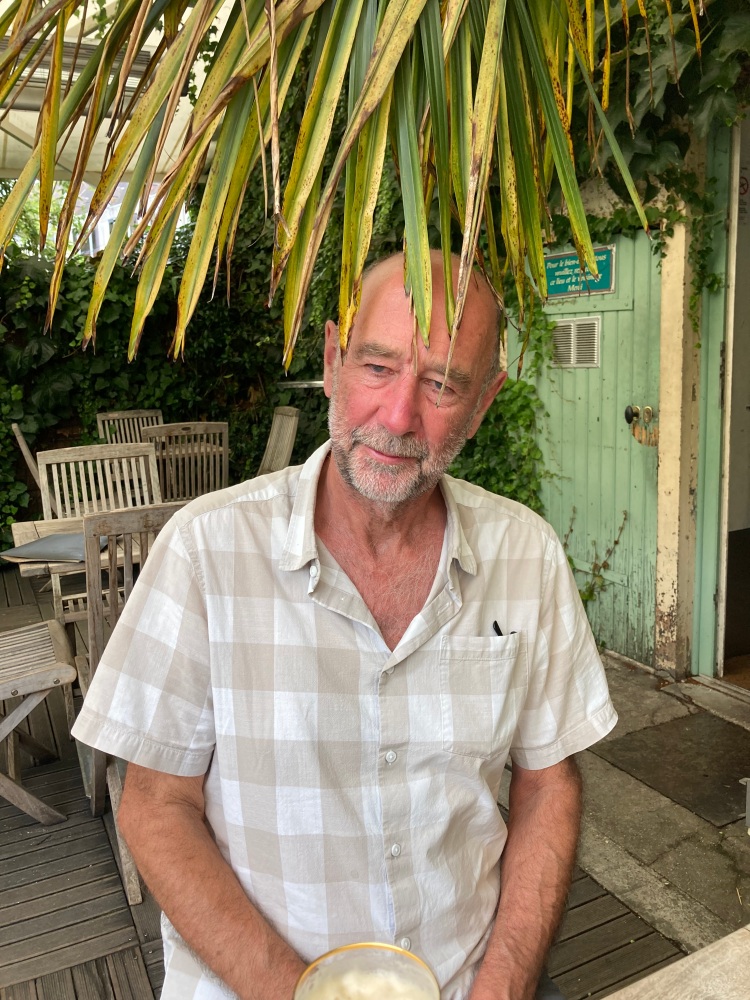
We were not back on board long before we decided to try out Le Pub, just 5 minutes from the boat.
Despite its rather corny name it turned out to be a great place, serving lots of Belgian beers (Captain developed a taste for them when we spent 3 years cruising in Belgium).
There was a so a funky beer garden, providing not only shade, but also a fringe for Stu!
It was our last night togethjer on the boat, so we decided to treat ourselves to a meal out the other side of the river before retiring to Calliope for the rest lof the evening.

The Italian restaurant we chose was excellent – we all had absolutely delicious food.
Next day Stewart and I left for the UK where we had things to deal with for a couple of weeks. We were able to leave the new crew to stay one more day, giving them a chance to visit Chablis for a bit more wine tasting before they too came home.
So Calliope was left alone, moored up in Auxerre for just over a fortnight.
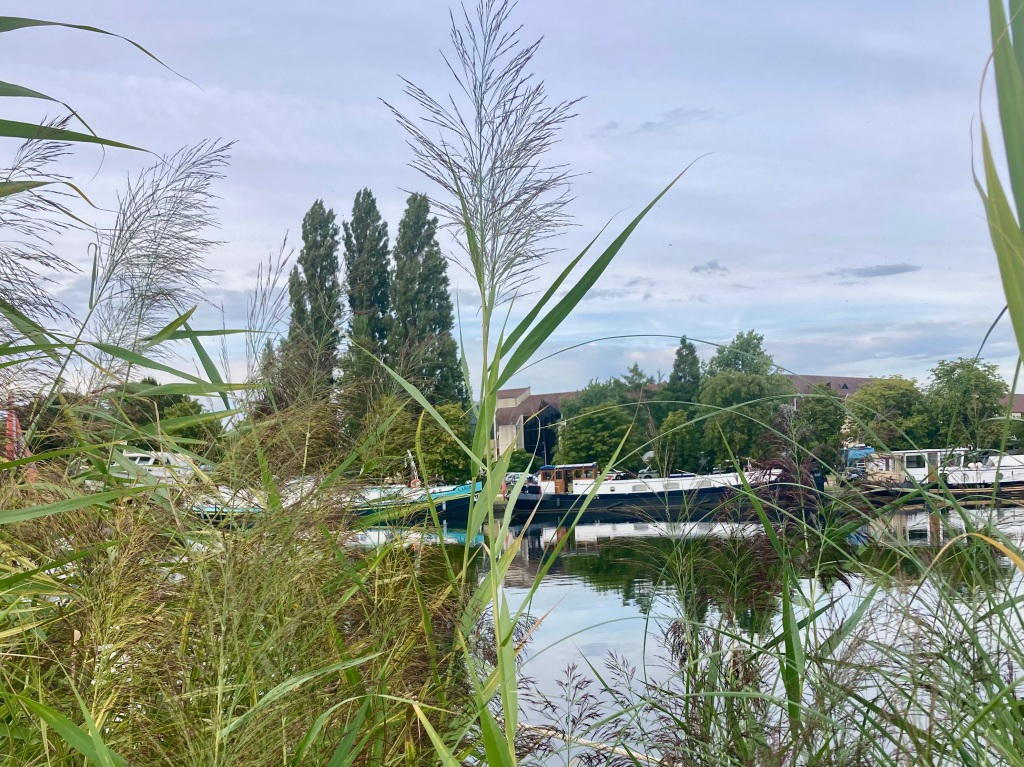
Once we got back to the boat we wanted to set off for the last canal of the season – the Canal de Bourgogne. This would mean retracing our steps down the Yonne as far as Migennes, then turning up onto the canal.
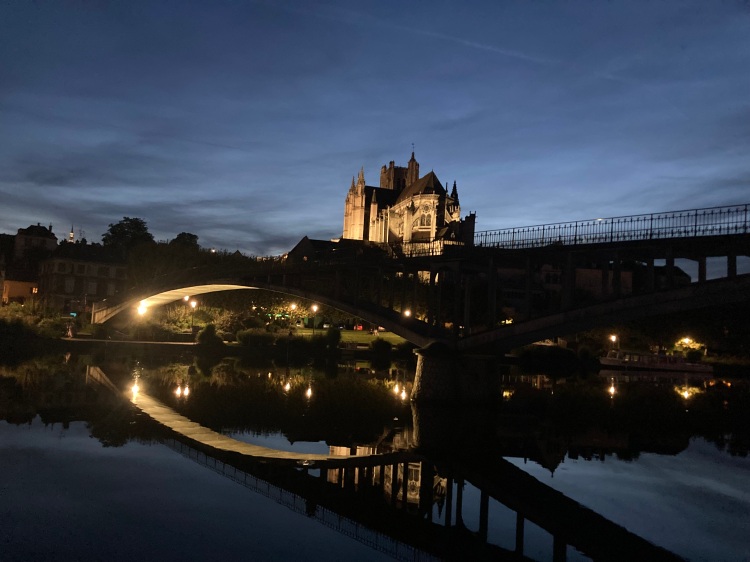
We spent a couple of days shopping, tiny bits of maintenance, and generally making ourselves at home aboard again before we set off. Our last evening was set against a final superb Auxerre backdrop.
Gurgy again
There really shouldn’t be much to say about the return journey, only a month or so later, but I seem to ahem accumulated a wealth of interesting (to me) photos, so here goes.
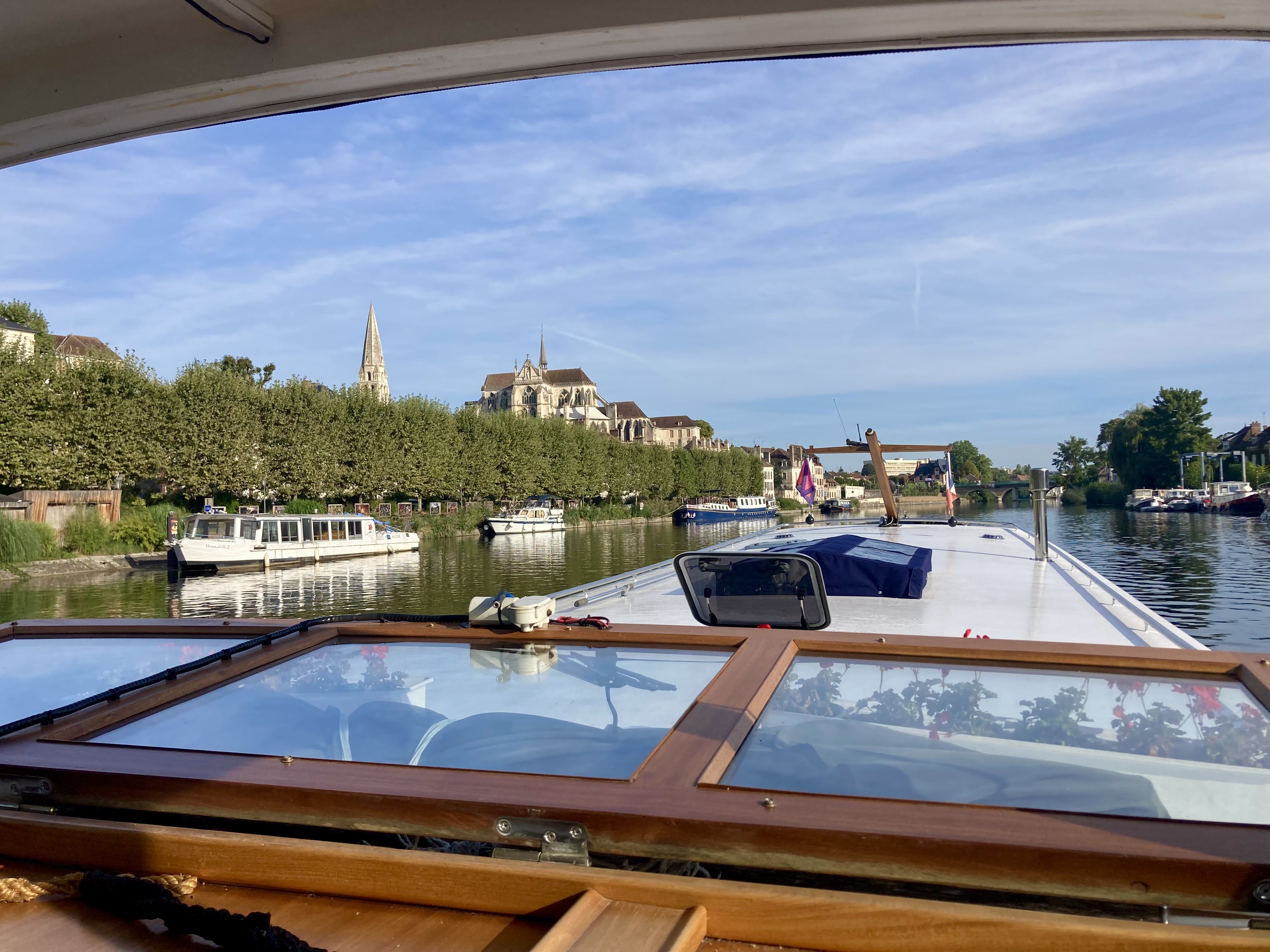
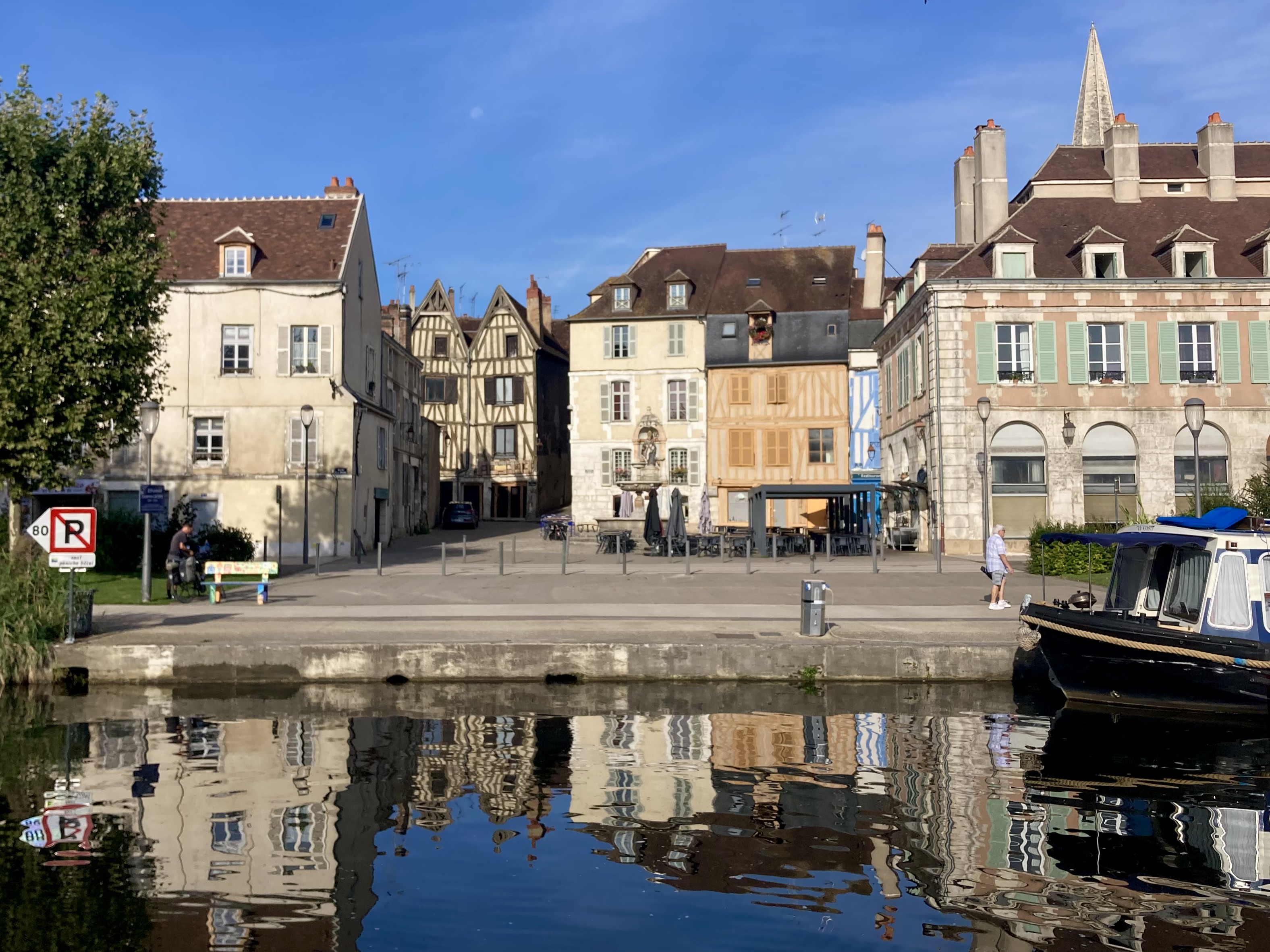
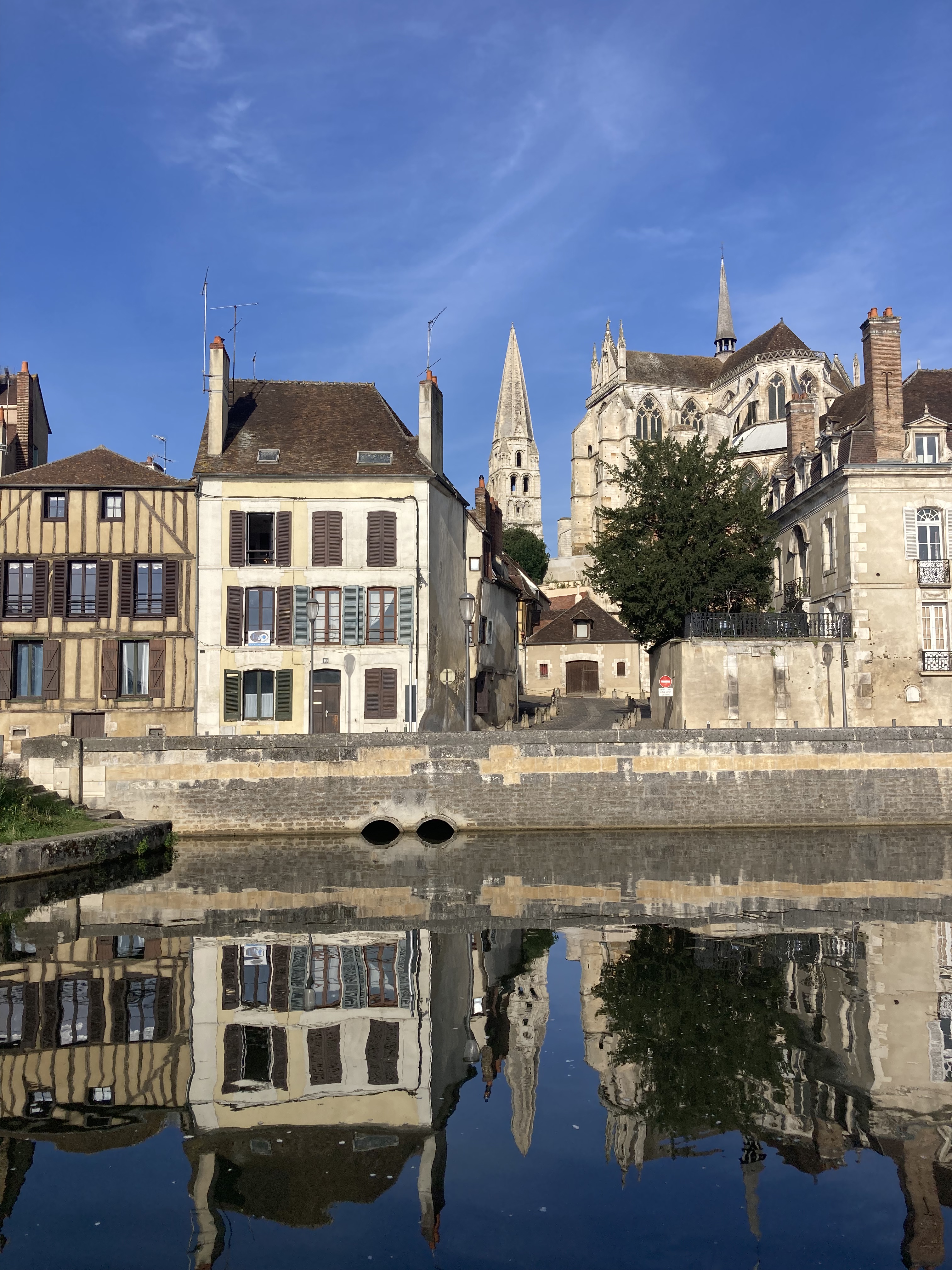
We left Auxerre on yet another beautiful day – what a summer it has been! Although it has resulted in low water in some canals, so not all good I guess.
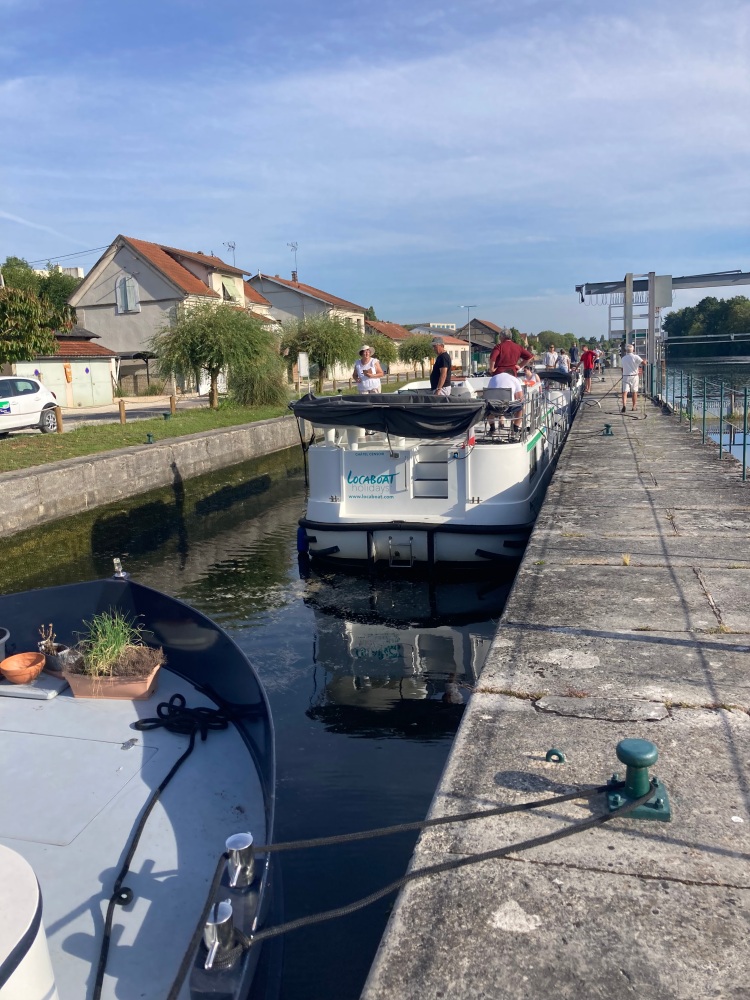
We arrived at la Chainette lock having called the lock keeper to ask for ‘passage’, and found it already full of four other hire boats.
There was just room for Calliope at the back – and another barge that was following us had to wait for the next lock.
We were surprised to see so much boat movement.
We then shared the next 4 looks with the same boats, gradually becoming acquainted with the happy crowd on the closest one.
Most of us moored up at Gurgy, with two of them moving up to make room for us when we arrived at the tail of the convoy.
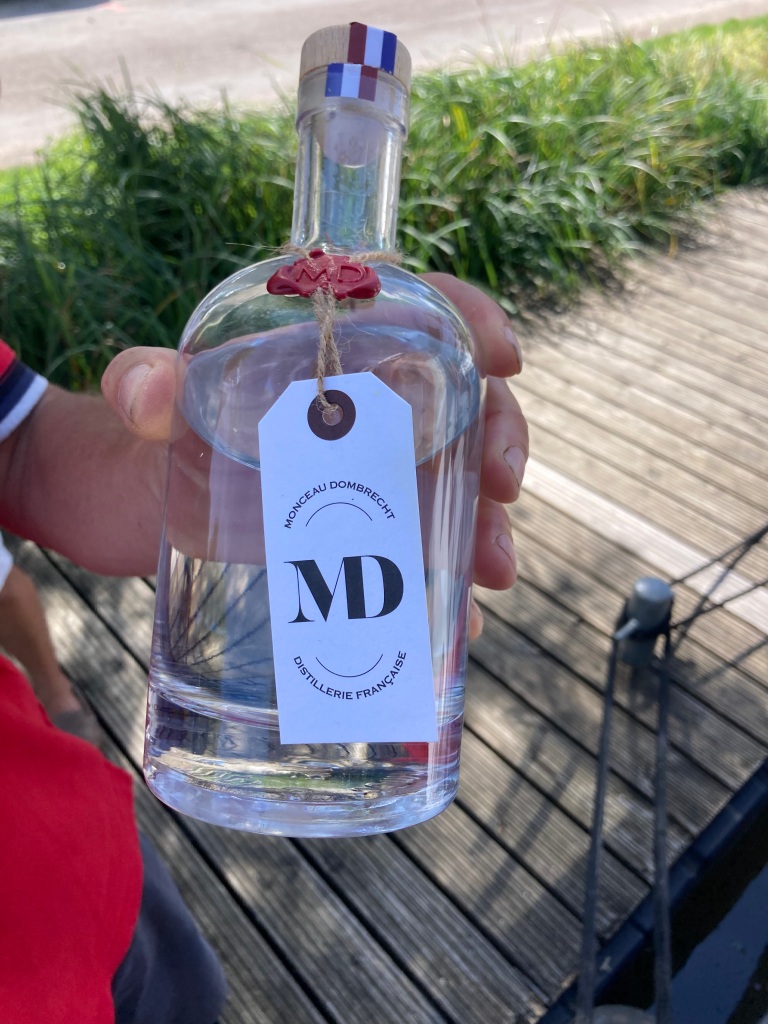
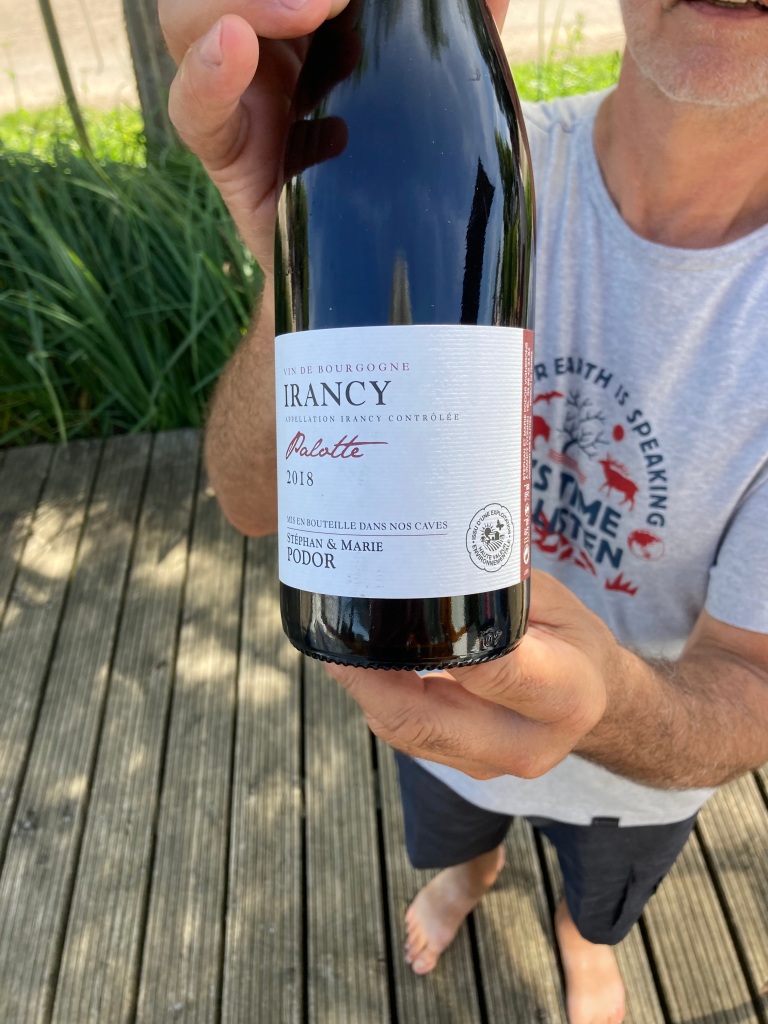
Our new friends turned out to be a lively lot and keen to know us better. This included telling us about their friend who is a winemaker on the Ile de Rai (and giving us a bottle of his rosé), explaining that their daughter made gin, and insisting on us having a tasting session, and finally us know which red wine was the best in the area – luckily we already had a bottle of that on board!
We in turn gave them some whiskey tastings, and everyone endeds the lunch break happier that they started.
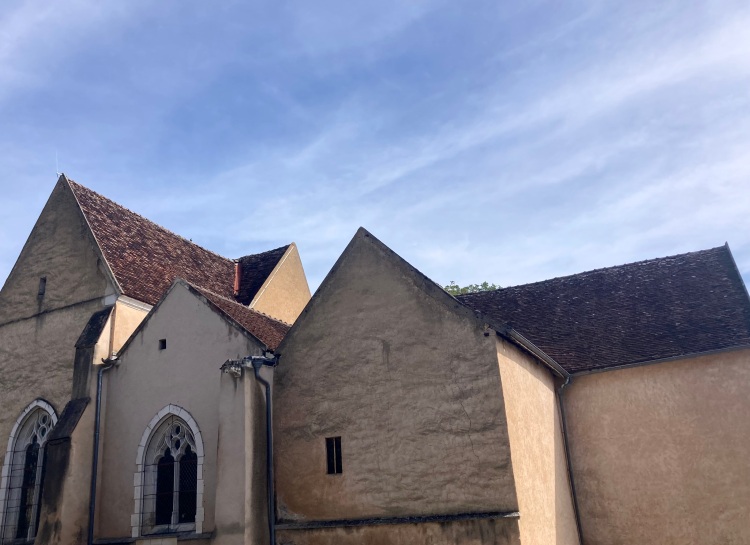
After lunch all the holiday boats moved on as they had to get the kilometres done; we retired folk were staying there for the night.
We stretched our legs with a walk round the village – the church seemed to be the oldest building there.
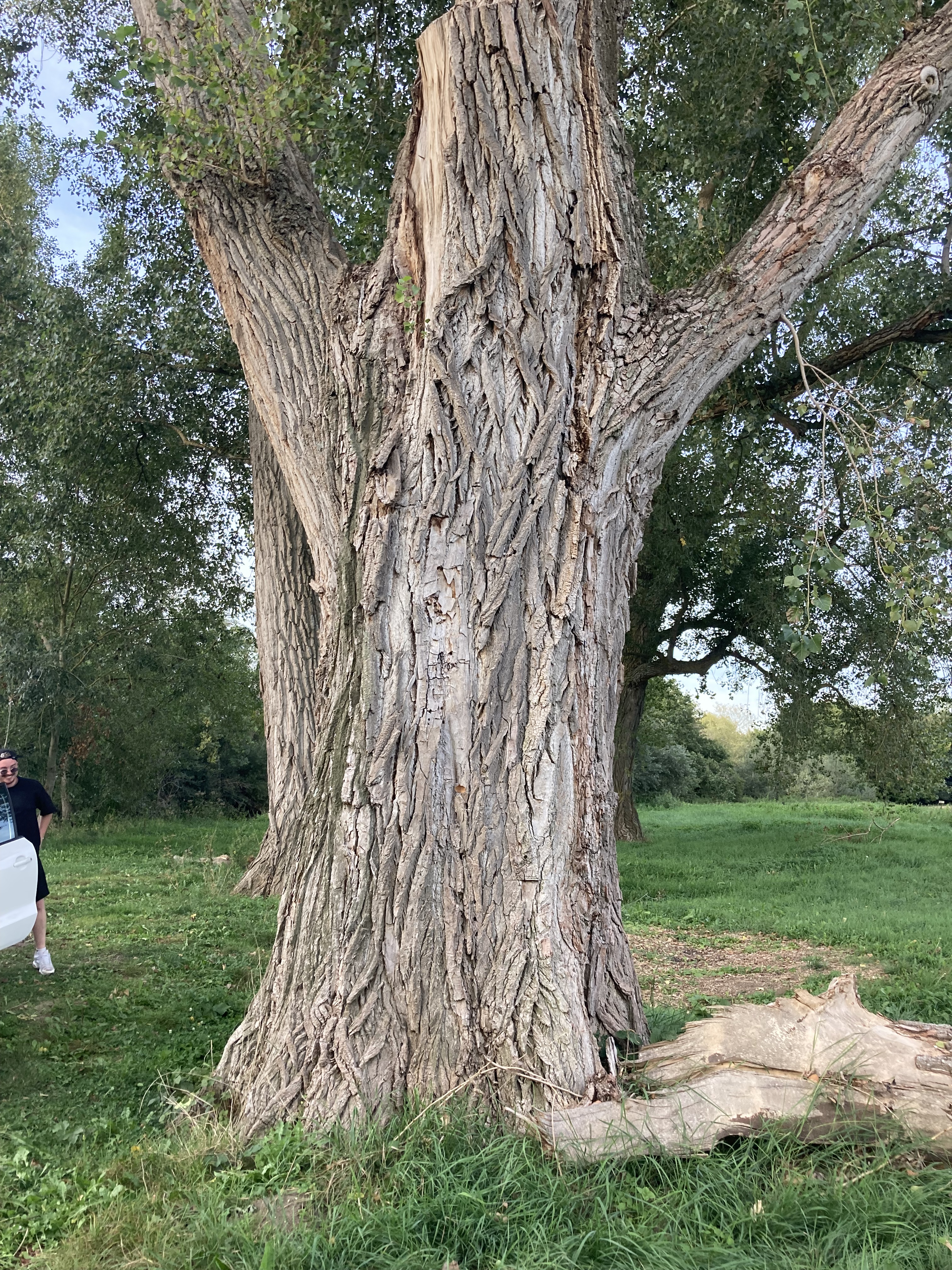
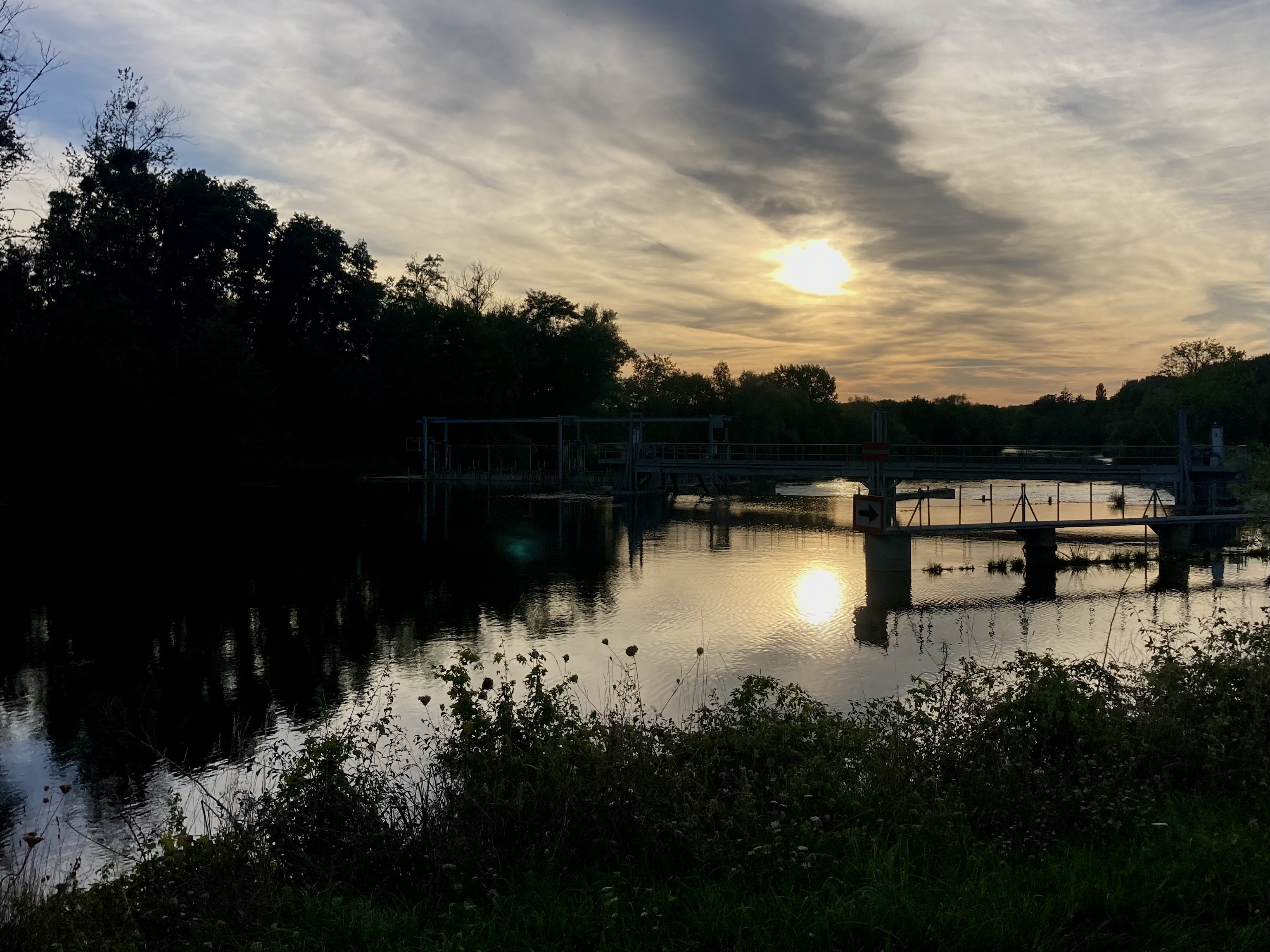
Later, after supper, I went exploring a bit further afield, crosing over the entrance to the derivation that we would return along next day, and walking along the river bank.
I saw signposts for ‘peupliers noir’, which translates as black poplars. Thinking that these must be quite unusual I walked on until I found a small group of them, and they are dufferewnt to the poplkars we normally see in the UK.
On my way back, with darkness descending, I watched the sun going down over the river.
But that was nothing compared to the glorious scarlet dismay we had about half an hour later!
Laroche again
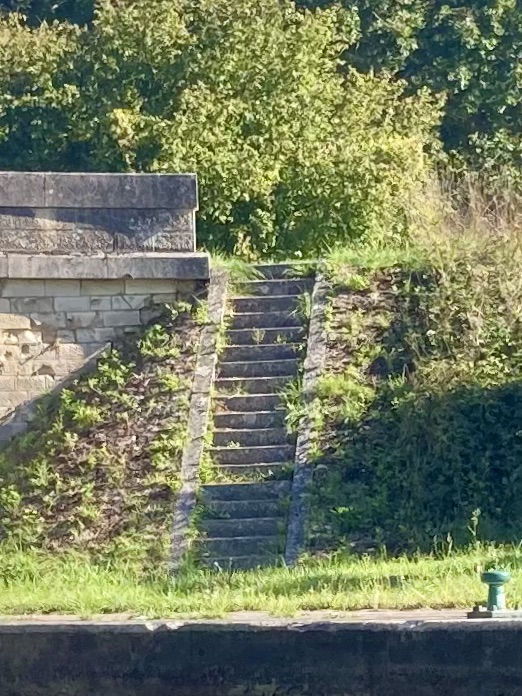
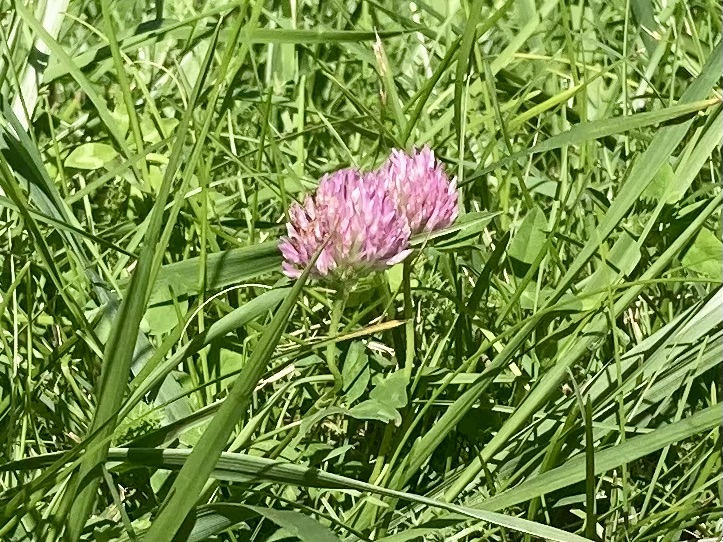
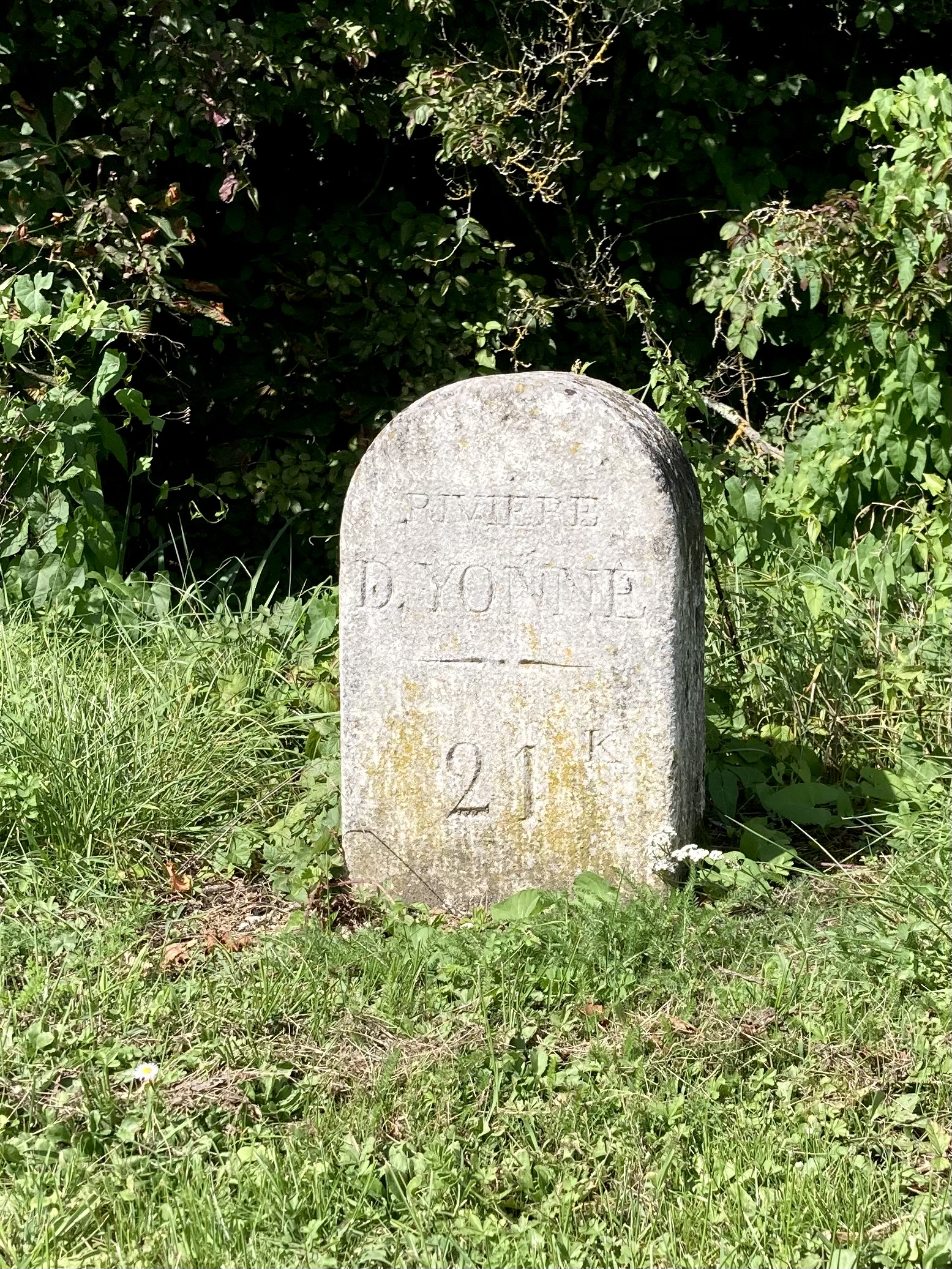
It’s strange how the same stretch of river, or canal, can look different when you are going in the opposite direction. So it was that I noticed the lovely stone steps up to some of the bridges and locks, the later clover growing alongside, and the beautiful old kilometre markers, like milestones. This one was telling us that we were on the Riviere D (de) Yonne and 21 kilometres from Auxerre.
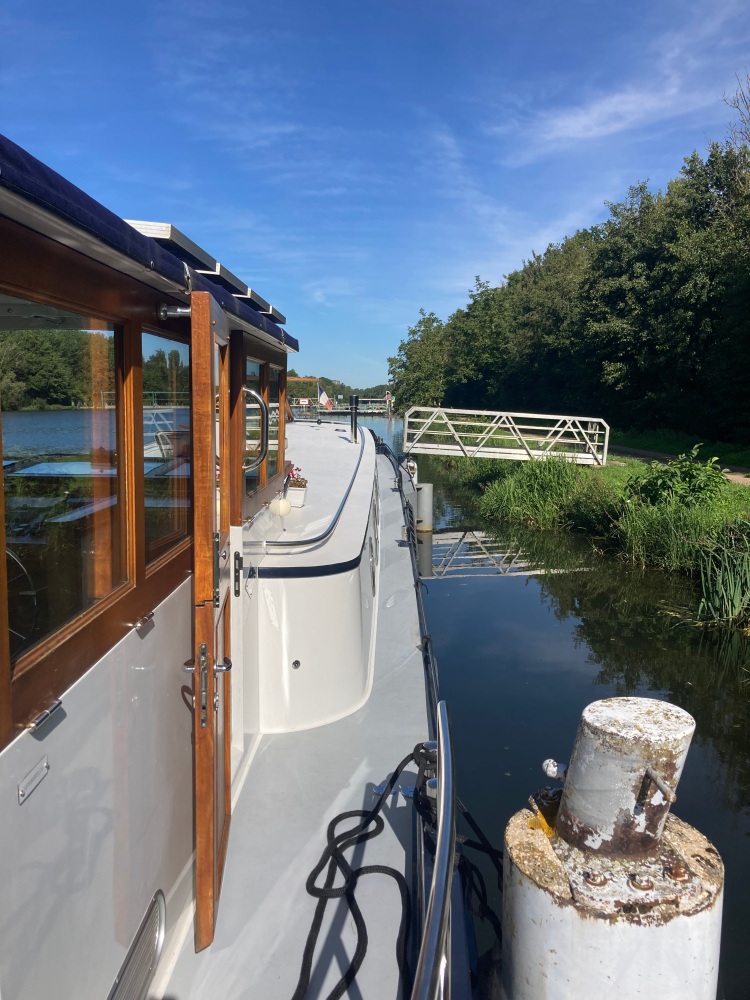
We had to wait for a while at Beaumont lock for some boats coming upriver.
Many locks have waiting pontoons – and many do not! At Beaumont we were lucky to find these ‘dolphins’ to tie up to while we waited.
Once we got into Beaumont lock I found a different lock keeper’s house to all thiose I had seen before.
It was the addition of a covered balcony on the first floor that was a new feature, and would have allowed the éclusier to keep dry whilst watching out for boats approaching in both directions.
I rather liked it, and noticed the same at our final Yonne lock, la Graviere.
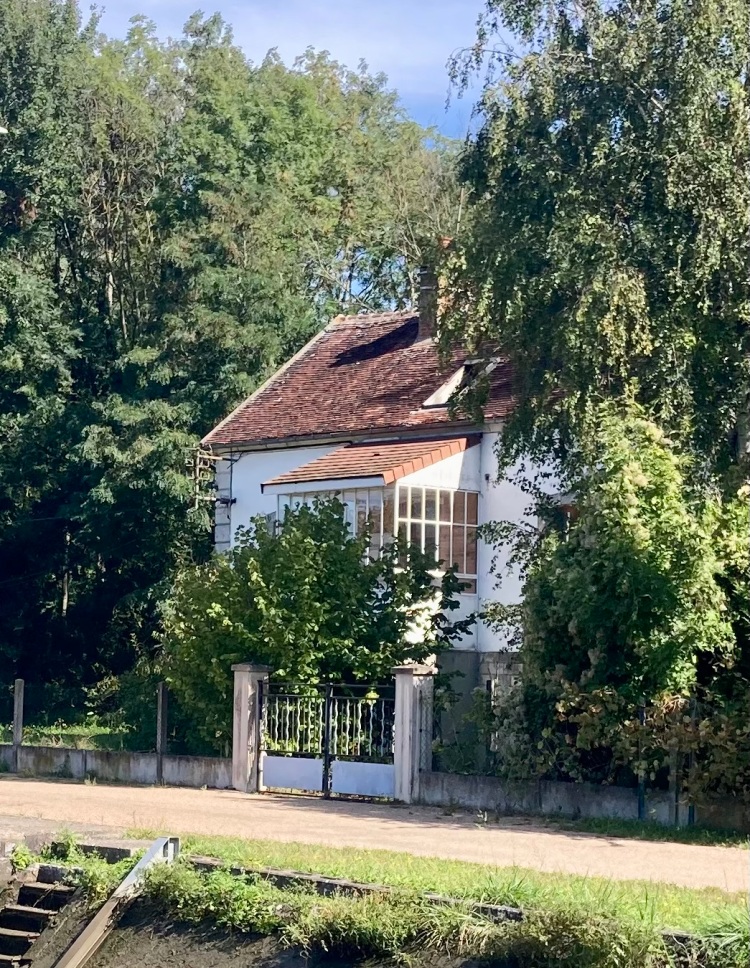
By the time we reached la Gravière it was midday, and time for the one hour close down. So we, and the boat that was now travelling with us, moored up in the lock and enjoyed our own peaceful lunch.
We were just two and a half kilometres from our stopover for the night, so it was not long after lunch that we reached Laroche.
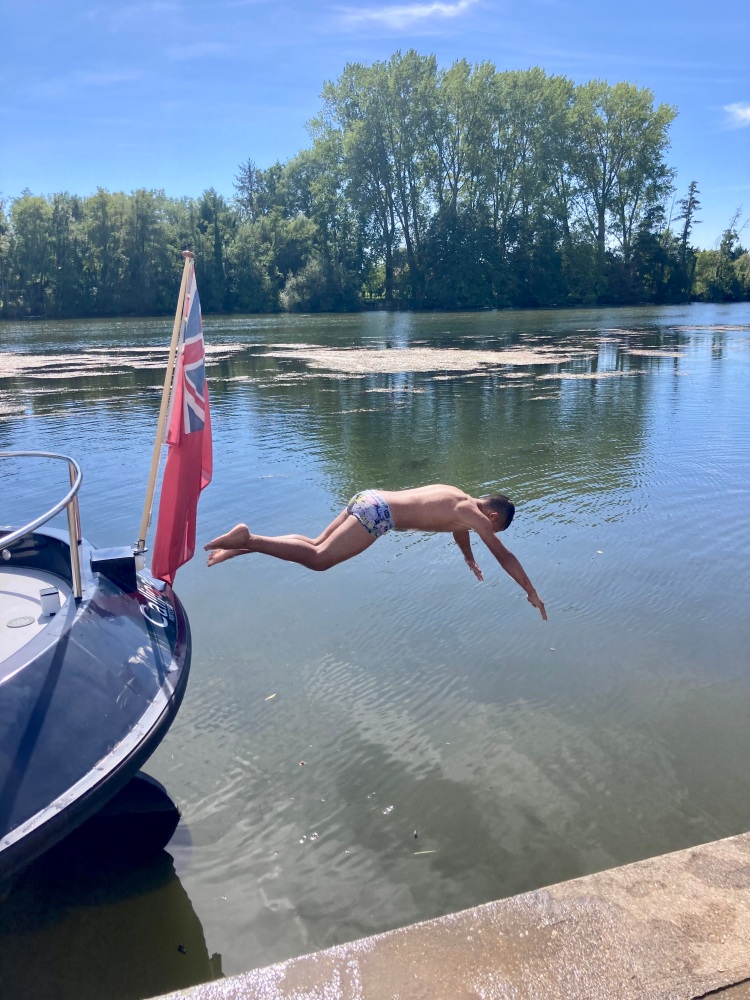
Arriving at the pontoon we found ourselves disturbing some young lads having fun swimming in the river. And who could blame them on that hot day?
Once moored up we became part of the fun, giving permission to one lad to use Calliope as a diving board.
He rewarded us with somersaults, back flips and other wild plunges into the water.
Later, as peace descended and supper was over, I walked up to Migennes . This is where the Canal de Borgogne leads off from the Yonne, and our direection of travel next day.

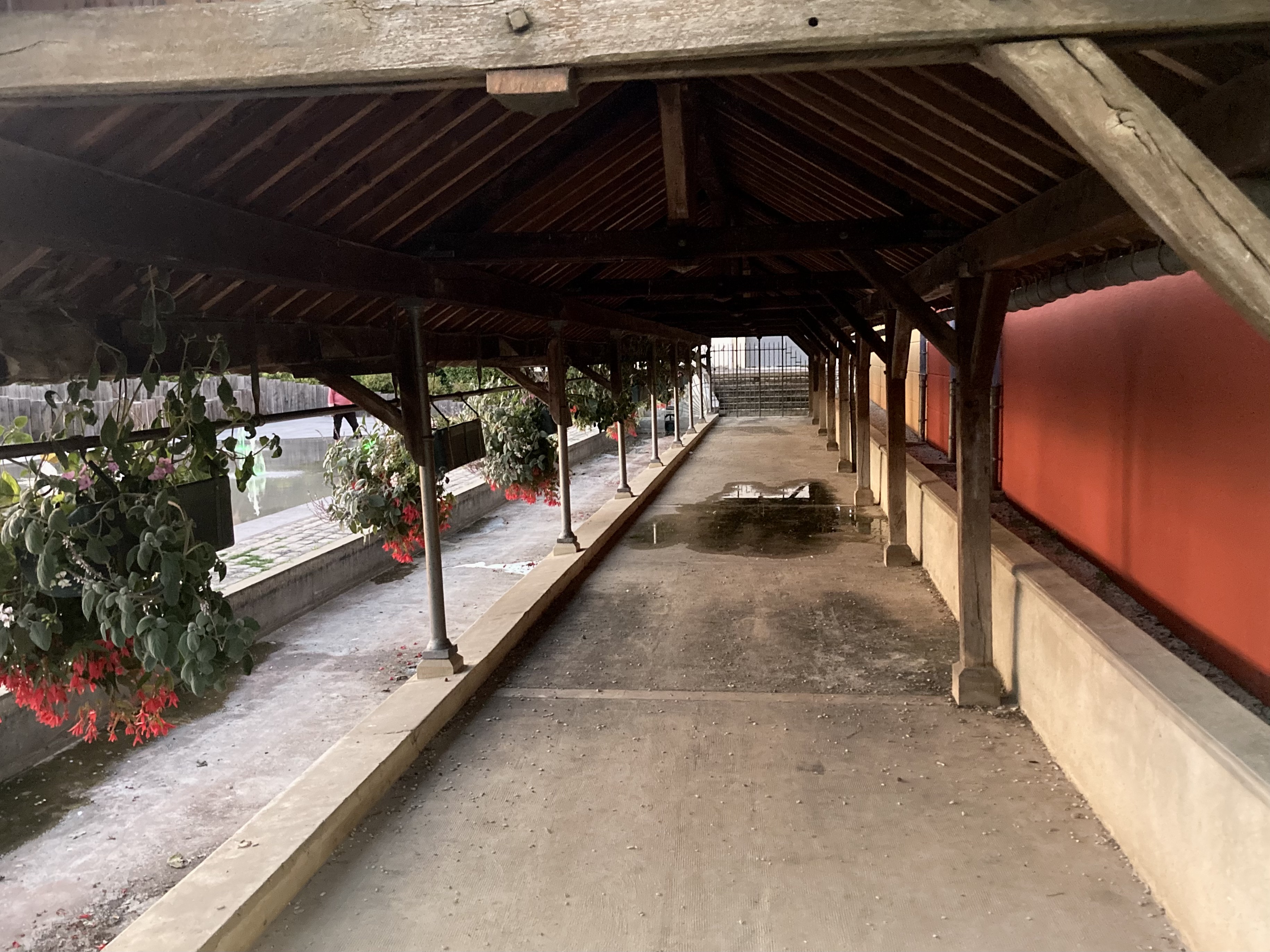
It gave me an opportunity to look at the big deep lock we would be going up, checking for methods of attaching our ropes.
And by chance I saw that Migennes had transformed its lavoir into a colourful social area next to a small playpark.
Then back to Calliope for a last night sleeping on the Yonne.
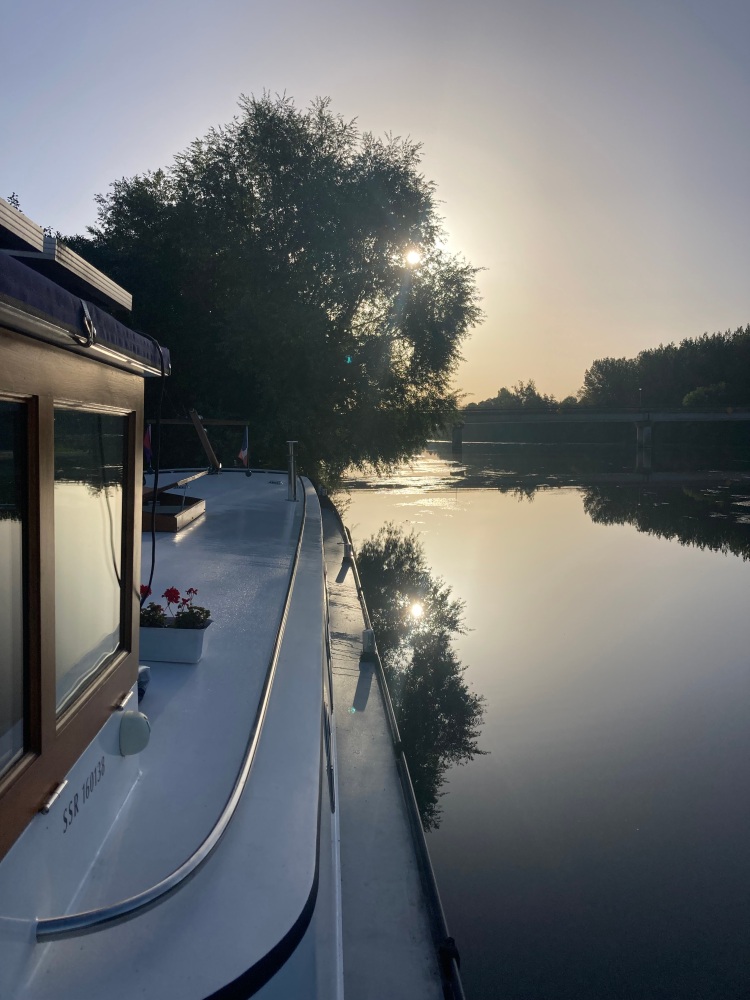
Morning came, and with it a light mist while we waited for the sun to get going.
Then Calliope got going too, a kilometre back upstream to the turn off for the Canal. The story of the Bourgogne cruise will be in the next blog!
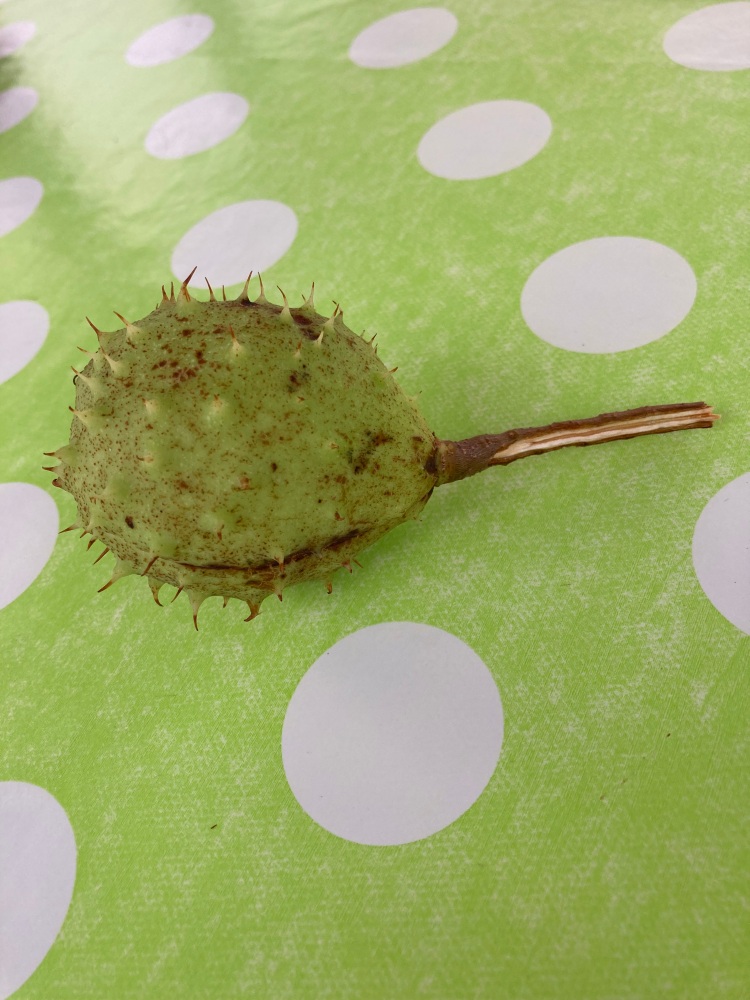
An autumnal story.
18th to 23rd July 2023
At 49kms this must be one of the shortest canals in France, but that does not detract from its charm. I can feel myself being repetitive when I say that we have been surprised and captivated from Montargis to St-Mammés, where the river Loing joins the Seine.
It was built in under 5 years from 1719-24 by infantrymen ‘commandeered’ by the Duke of Orléans. He already had a canal, named after him, that ended at Montargis, so almost 50kms short of the Seine and therefore a connection with Paris.
It has an interesting history, originally utilising much more of the river Loing than now. Changes were made in the C19, bringing in more canal sections.
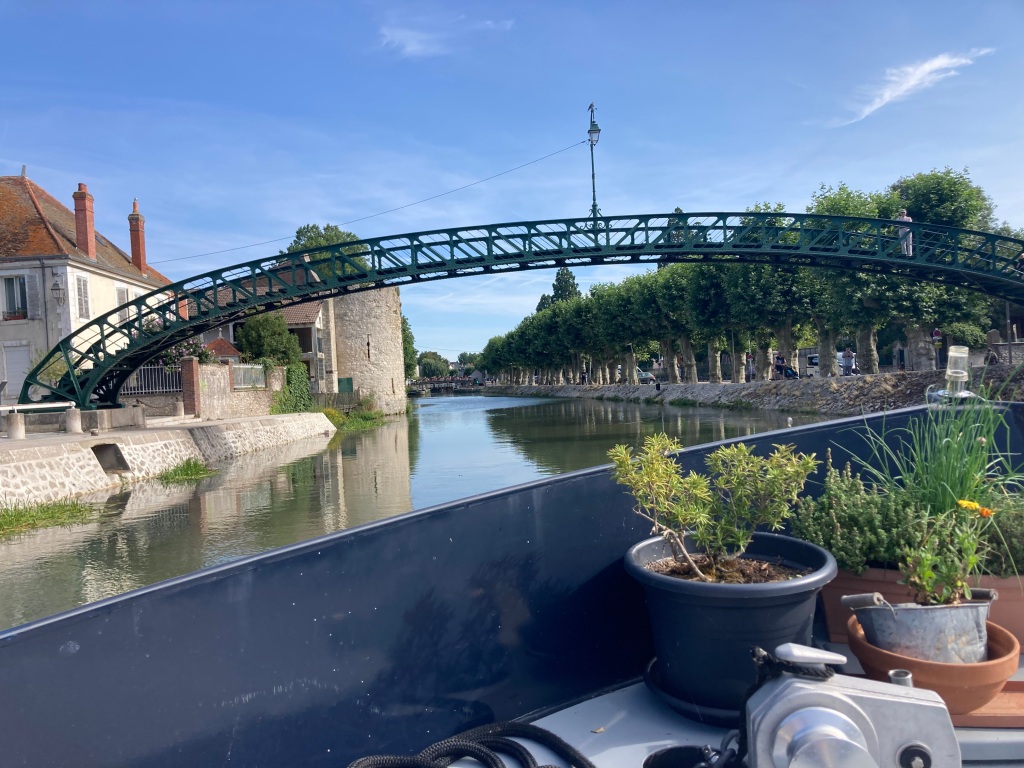

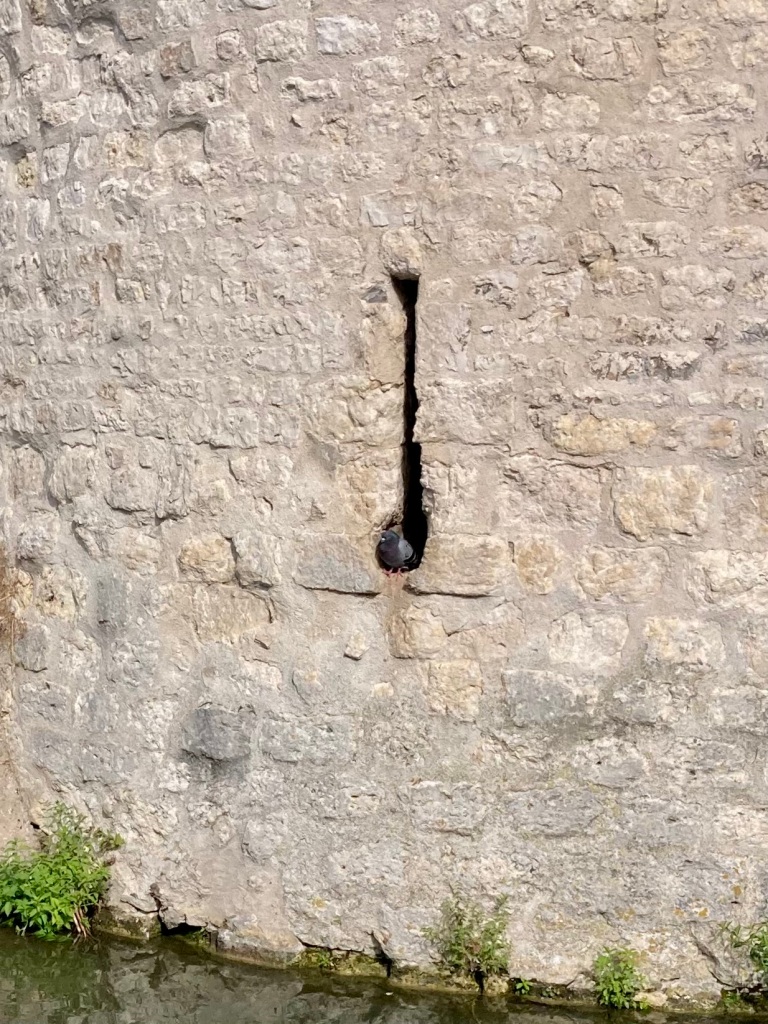
Montargis
We began at Montargis, where the Canal de Briare ends, and dovetails into Canal de Loing. We had spent a couple of fascinating days in Montargis – a place well worth a visit, and described in the previous blog post. Leaving town gave us a few new angles on bridges, waterways, and the old tower with its pigeon on guard in the arrow slit.
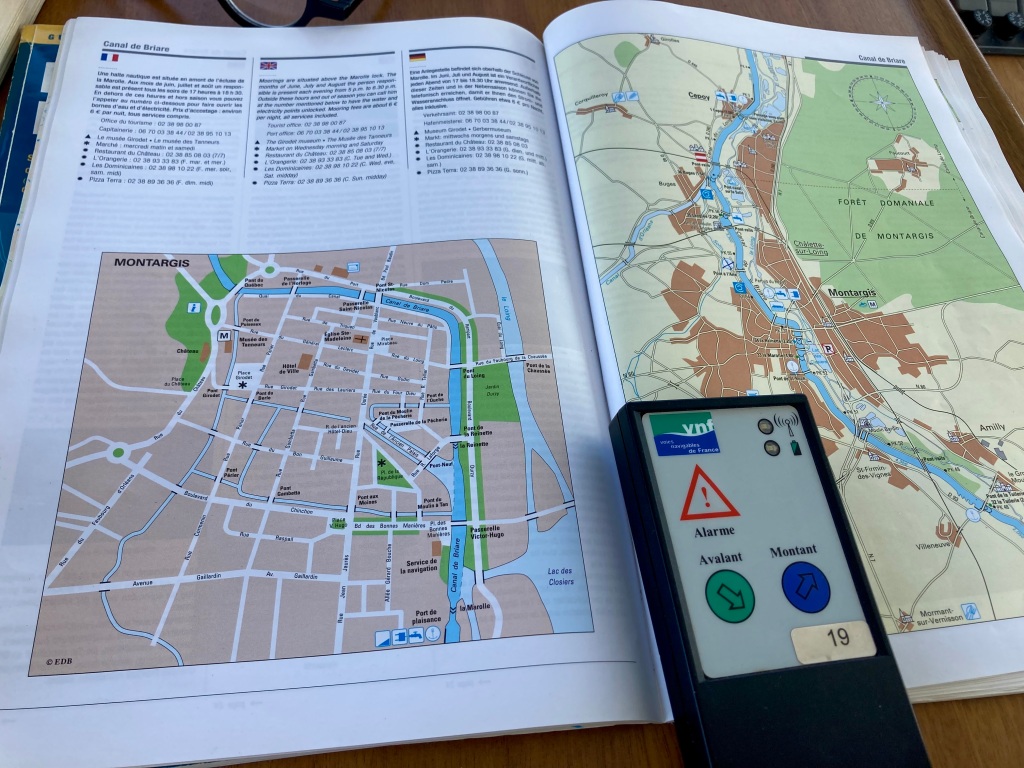
At the very first lock just 200 yards from where we had been moored we were handed our ‘zapper’, or remote control. These always come with mixed feelings. On one hand it is nice to be in charge of our own timings and lock operations, but on the other it means that yet more locks are automated, and more éclusiers (lock keepers) are out of a job.
In effect we become our own lock keepers.
Once in the lock we head for the long blue and red ‘poles’ that hang down from this sign, tie up and lift the blue pole ……. being careful not to pull the red pole in error as that signals an emergency.

Cepoy

It did not take long to be out of town once more and into the villages – all with similarities and each one with differences.
This lock at Cepoy was next to a house where the owner kept birds next to a window – parrots or mynahs or something that likes to copy every sound it hears; an amusing cacophony.
We tried to work out which industry had demanded such a tall brick chimney on the past, but could not come up with an answer.
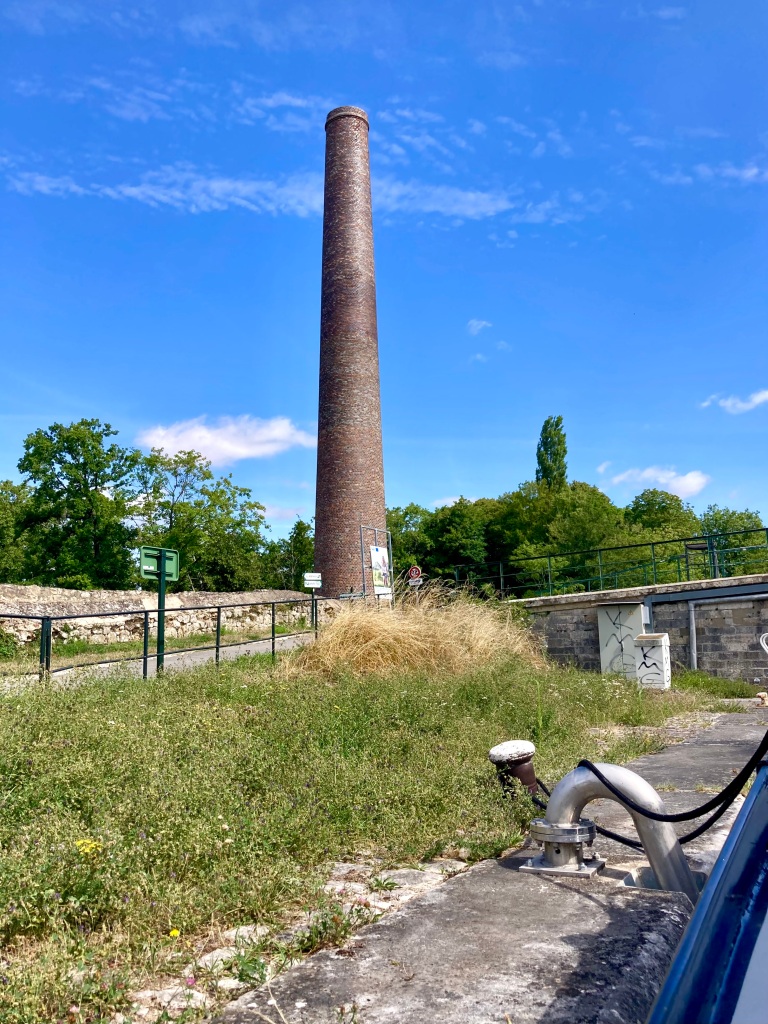

After the excitement of Montargis it was delightfully calm to be moored out in the country again. We stopped not far from Cepoy, just above ecluse 2 de la Vallée – and truly were out in the wilds!
In the morning we were off through écluse 2 after a leisurely breakfast, using our zapper to choose our own departure time. With the lovely éclusiers we have to decide the day before what time we will leave, and let them know, so this measure of independence is valued. Of course we can still only move during the day’s lock opening times, normally around 0800 to 1800, but varies from canal to canal.
So we were a bit surprised when we reached écluse 4 to find that our zapper had no effect – and that there was quite a crowd of men and work vans in the area.
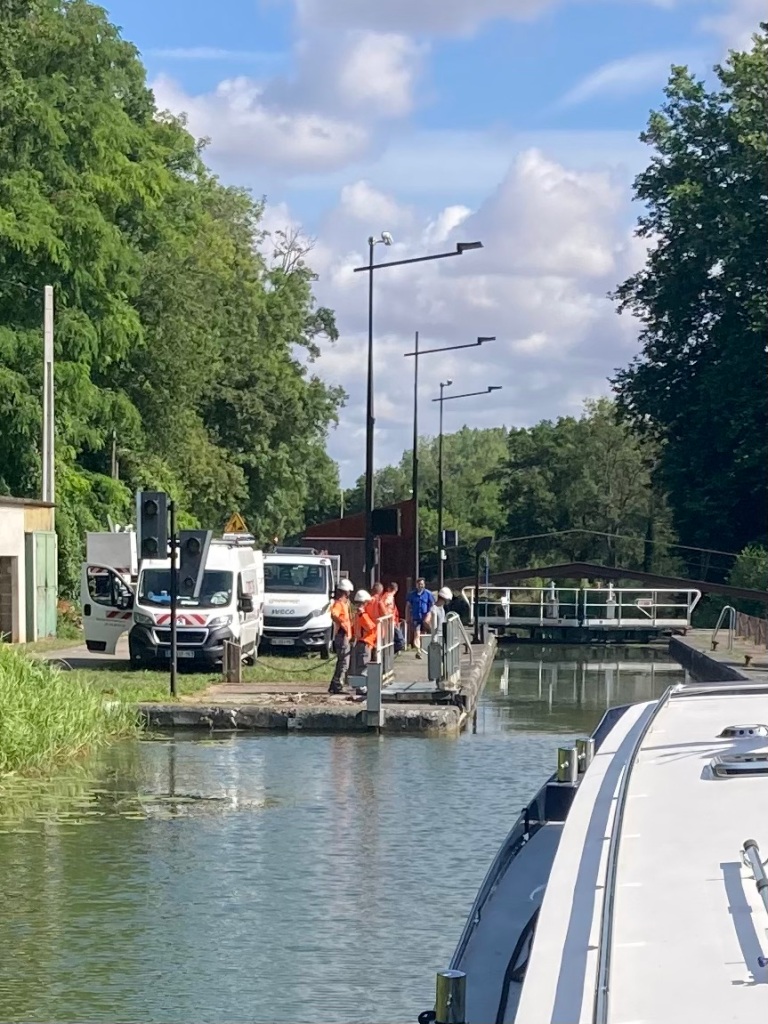
One man walked towards us to let us know that there was an ‘issue’. A tree had fallen onto the electrics for the lock. Within half an hour the team had it sorted and we moved into the lock.
As we left the lock I snapped the new style lock office, including, on the smaller structure, the name and number of the lock – No.4 Retournée.
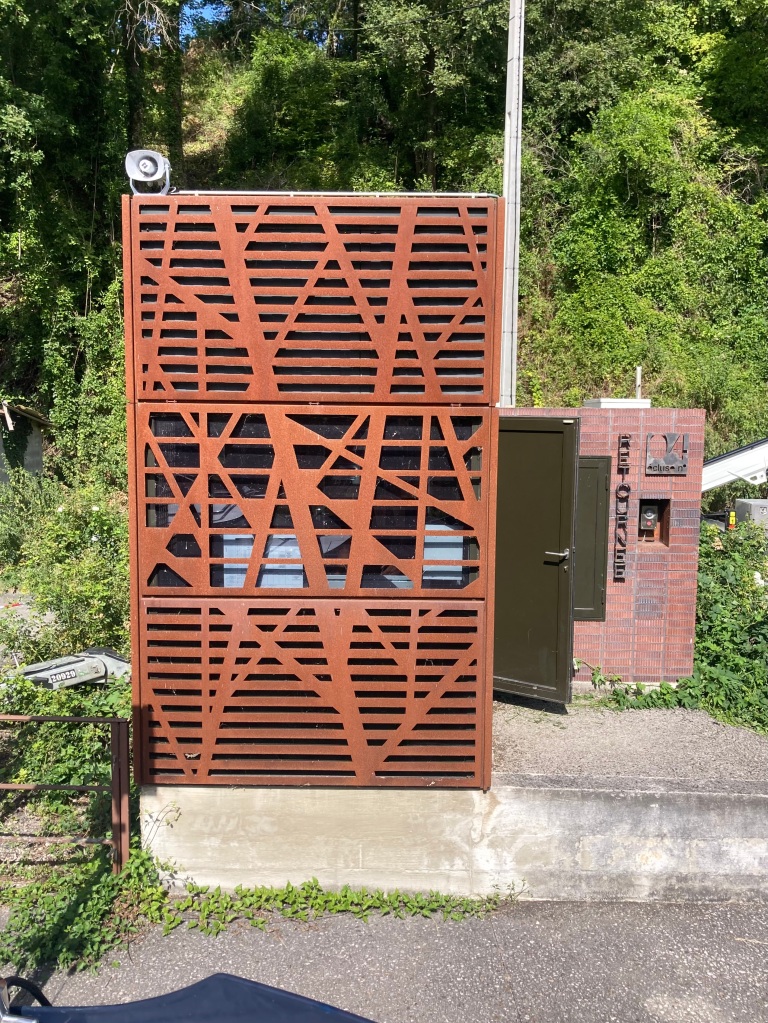
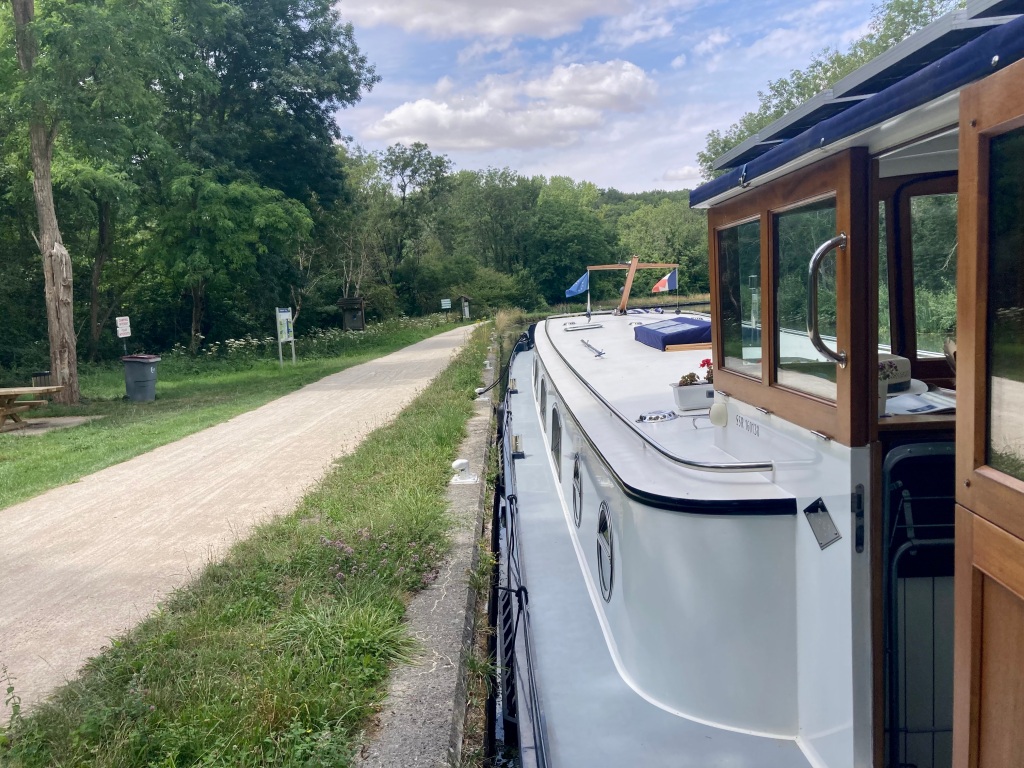
Near Néronville
Before too much longer we were at our next rural halt, near Néronville. This time we were moored next to some picnic table popular with passing cyclists so had fleeting company throughout our stay.
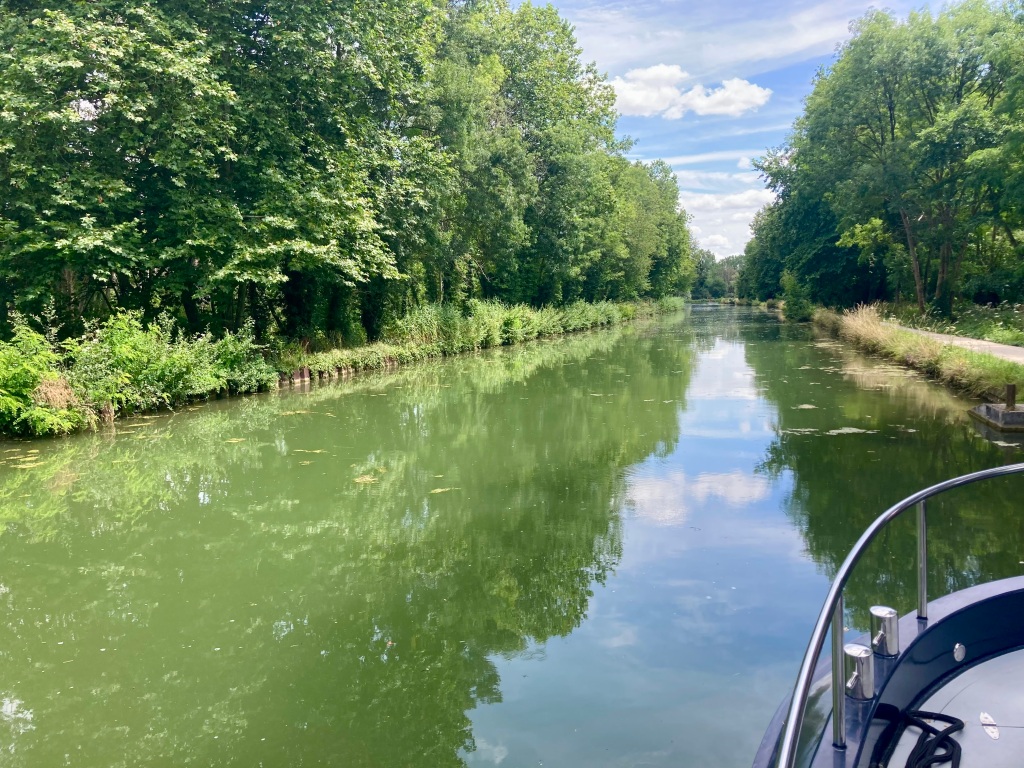
That did not spoil our enjoyment of the countryside.
By about 6pm we had the place to ourselves.
During the afternoon we went on an exploration walk through the woods. We were looking for the ruins of an old abbey.
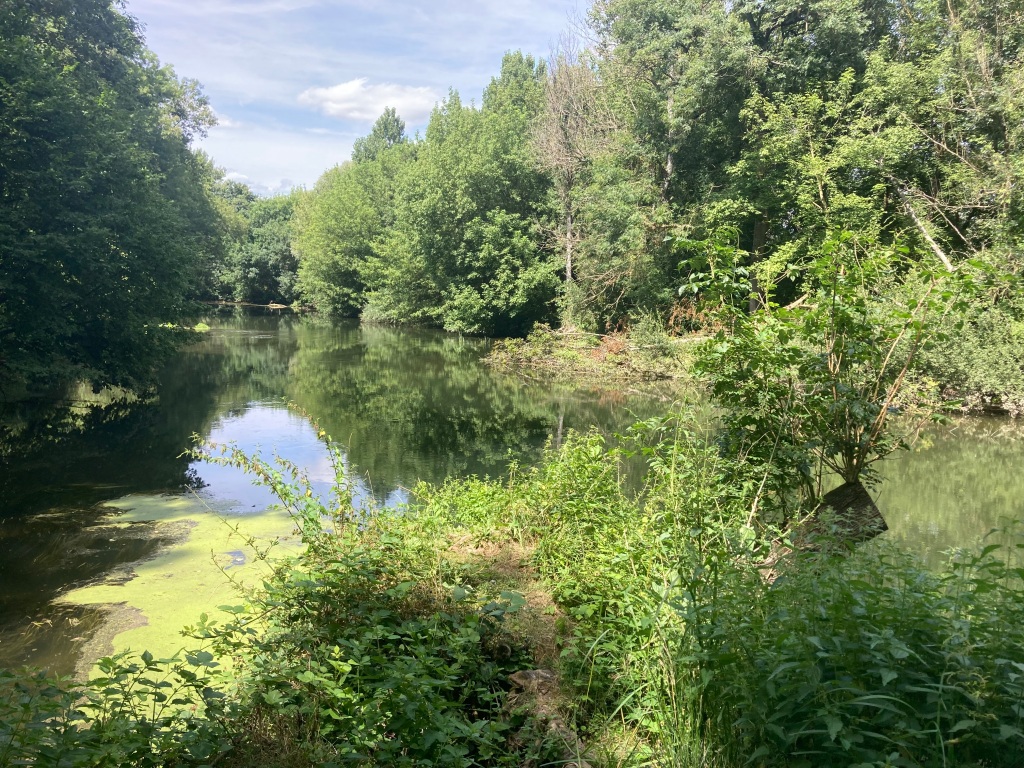
But instead we found the confluence of le Fusain and the Loing rivers.

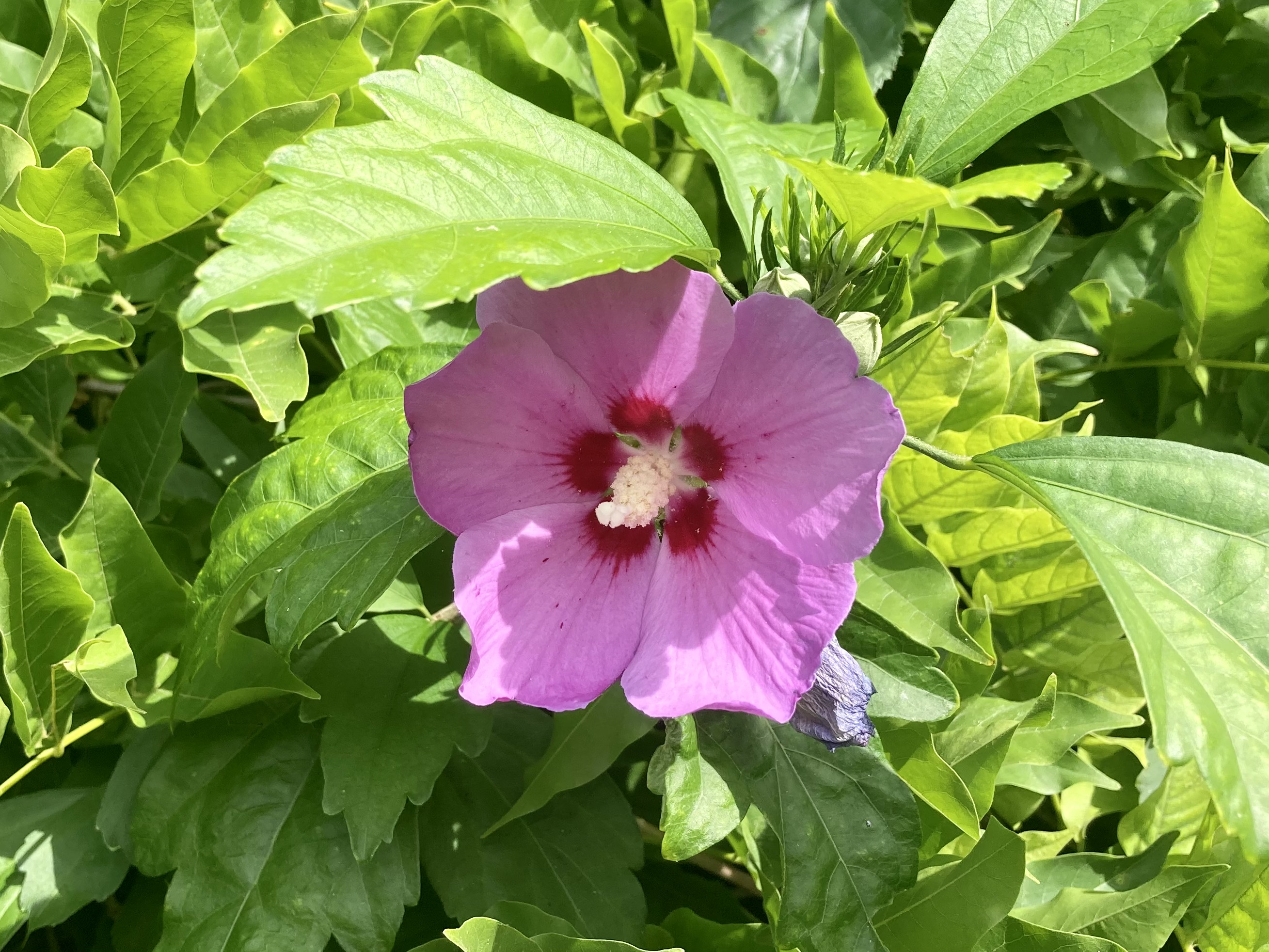


Our other ‘discoveries’ were a lovely hibiscus bush next to an abandoned lock keeper’s house, shoals of tiny fish (catfish?), and high wispy clouds drifting by, potentially sjgnalling a change in the weather.
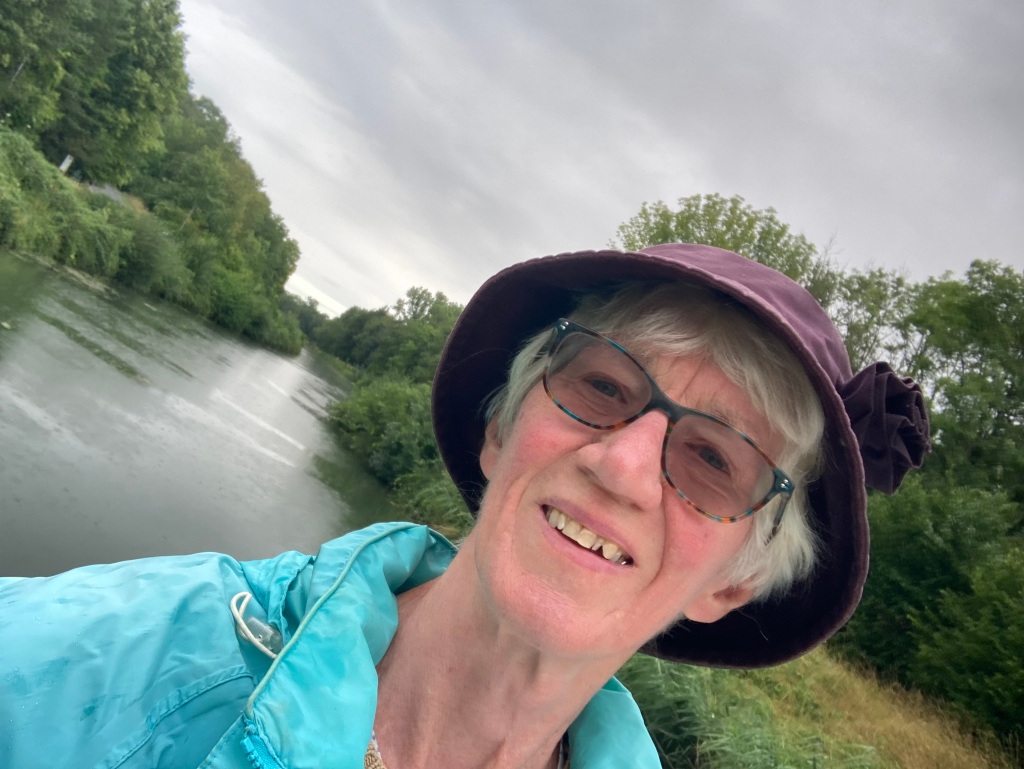
And sure enough there was a change.
Next day saw me in sou’wester and waterproof hat!
But the weather did not detract from being out on deck and catching sight of a few more interesting things – or should I say things of interest to me, in case they don’t interest you?? Well here they are; skip over off not one of your topics.

Half way through the morning we came through what seems to be a very old and narrow bridge.
Just after the bridge there was a signpost to ‘Manoir de Beaumoulin’ on a private drive.
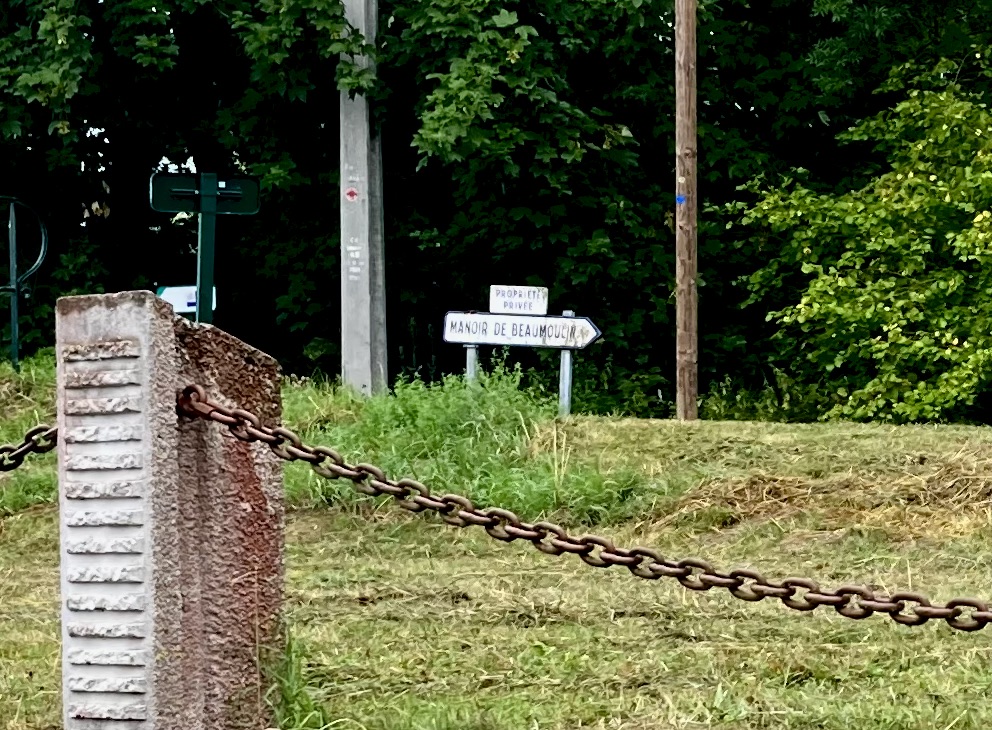
Those two observations must go together – an old bridge built to get the Manoir when the canal cut through the area, although not much to be seen of the manoir from the canal these days..
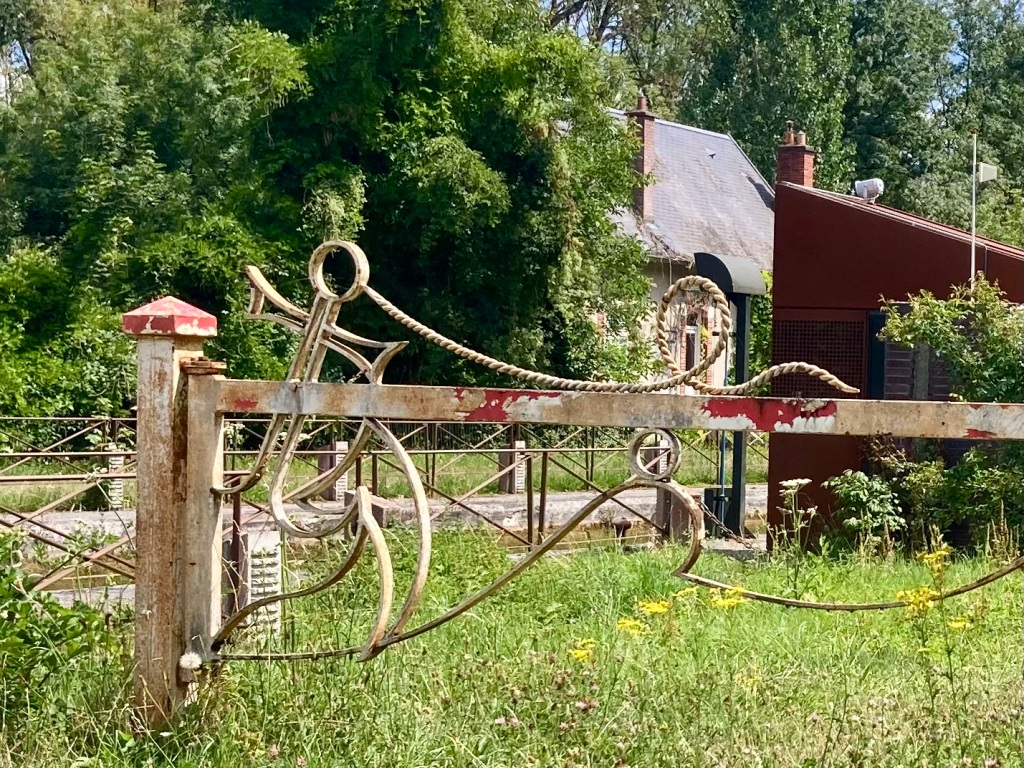
Something that was still in evidence on thnis part of the Loing was an ironwork an chjor motif.
I had first seen this white v version on a bar/gate at the lock the where we stayed the night before.

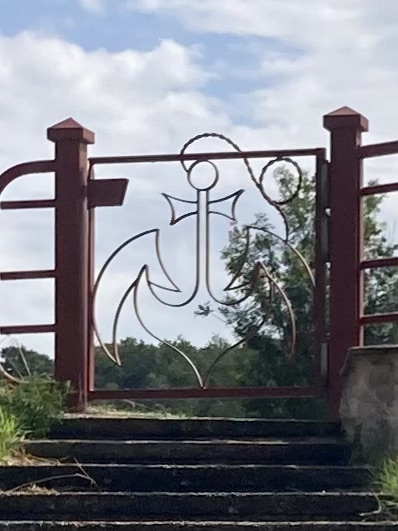
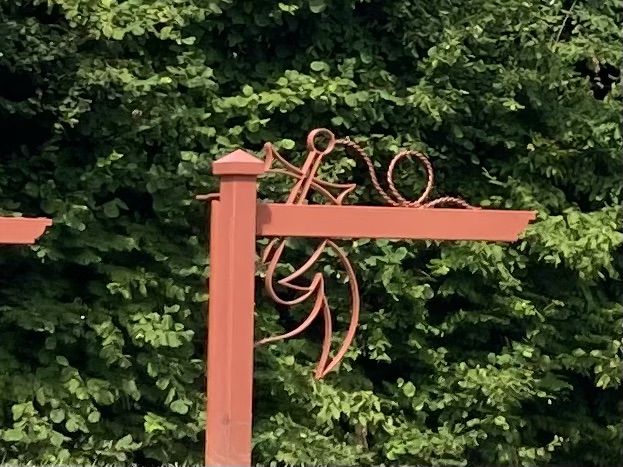
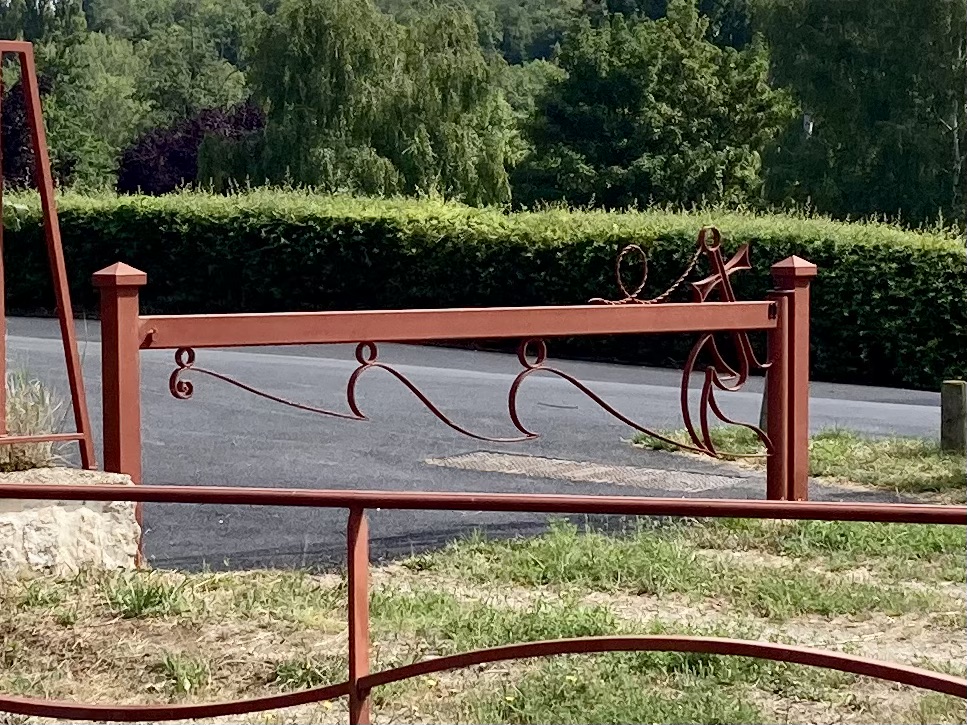
Then as we continued downstream towards Nemour I found a whole series of them, this time in rust red, making the wave formation under the bars much clearer. It must be linked ot the VNF in some way as they are all at locks, or at the approach to locks.
At last the clouds and rain of the morning had made way for bluer skies, and beneath us the waters became clearer too.

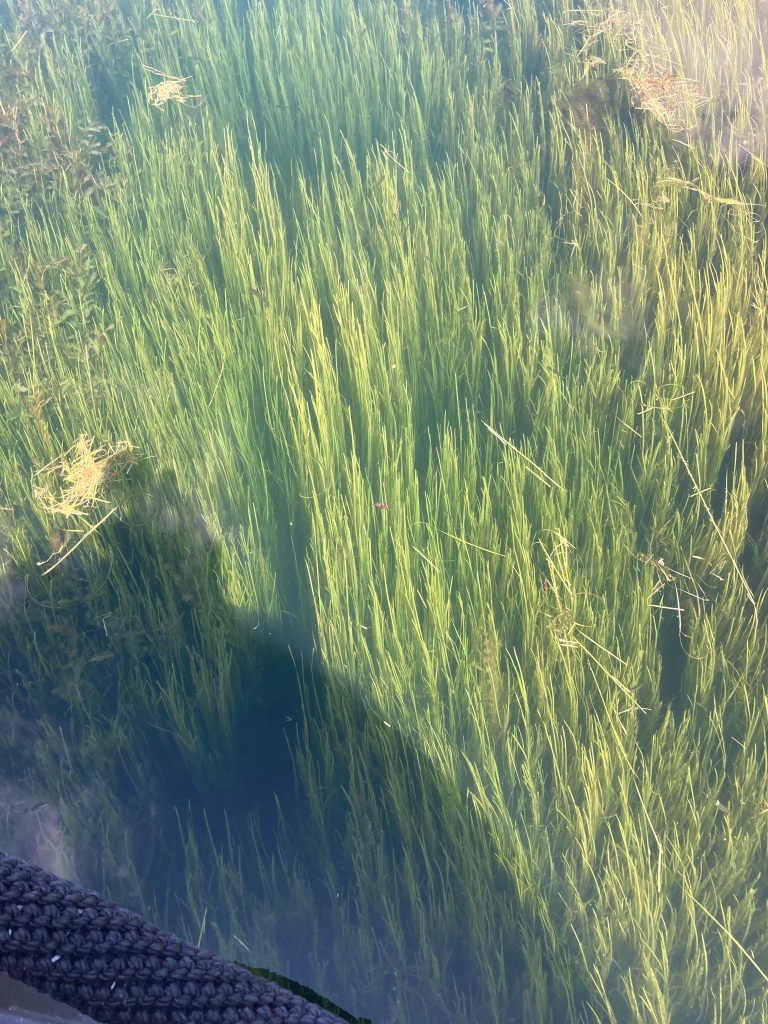
The water was so clear we could see the water weed growing healthily upwards, and fish swimming in and out of the fronds./
Of course weed is not something most boaters want to see in the canals and rivers. It can get would round propellors and, in the case of water cooled engines, clog up filters.
Luckily for us Calliope is keel cooled, a closed system, and generally a quick reverse on the engine throws any weed off the propellor.
Nemours
By now we were in Nemours where we planned to stay for 2 nights. There are three moorings listed for Nemours in the DBA Waterways Guide (Dutch Barge Association). We thought that the first one we would reach would suit Calliope best.
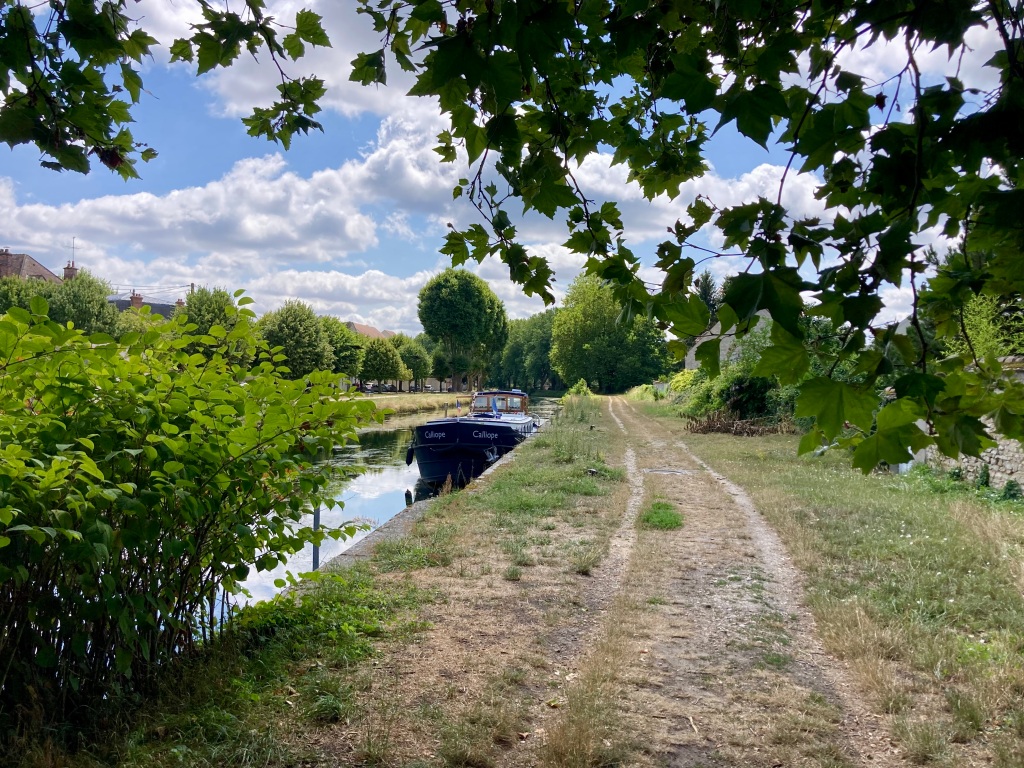
It was just right. The bollards were the right distance apart for us and the height of the wall we were moored against made it easy to step ashore. It was also a short stroll along the bank in either direction to bridges that led into different areas of town.
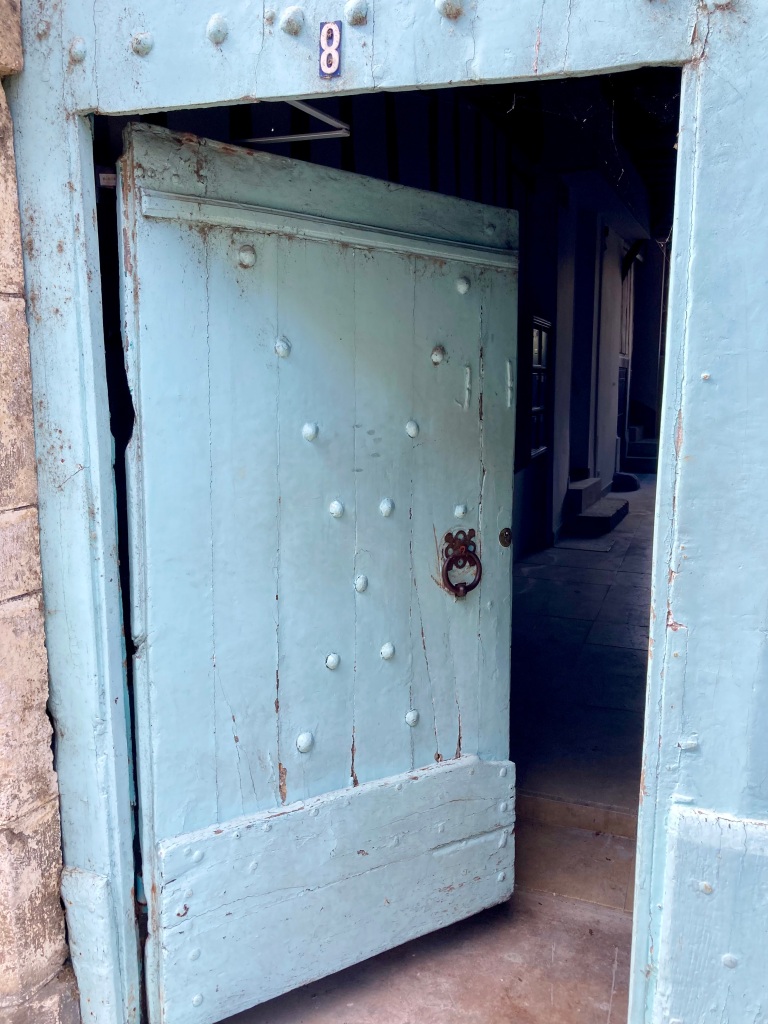
Nemours was yet another town full of pleasant surprise.
The centre is pleasingly old, its streets lined with shops, homes, auberges and churches that have stood there for centuries.
Painted doorways hinted at ancient rooms and courtyards beyond, but these were private and could not be explored.
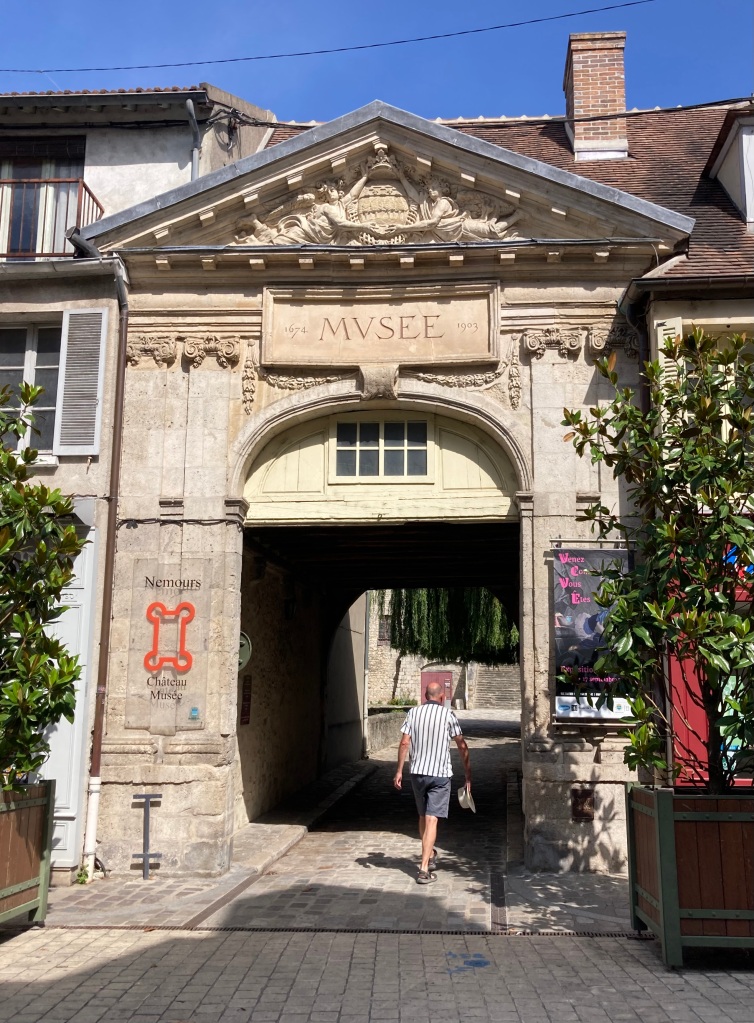
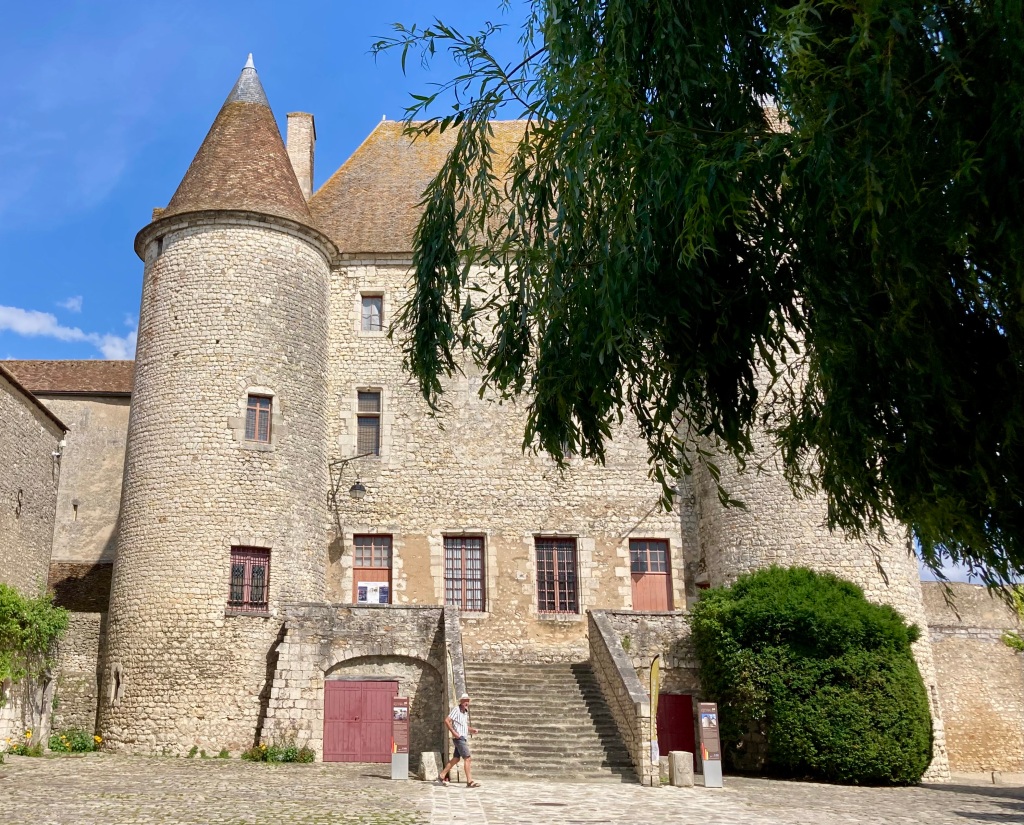

The centrepiece is the chateau, now housing the museum. It was built in the mid-12th century by Gauthier I of Villebéon, Grand Chamberlain of kings Louis VII and Philippe Auguste. Since then it has been substantially restored and altered over the centuries, with final major restructuring by Philip of Orléans, in the time of his brother Louis XIV.
After the French Revolution, the castle was owned by the town, which decided to open a museum there in 1901.
And that is the use that has continued to the current day.
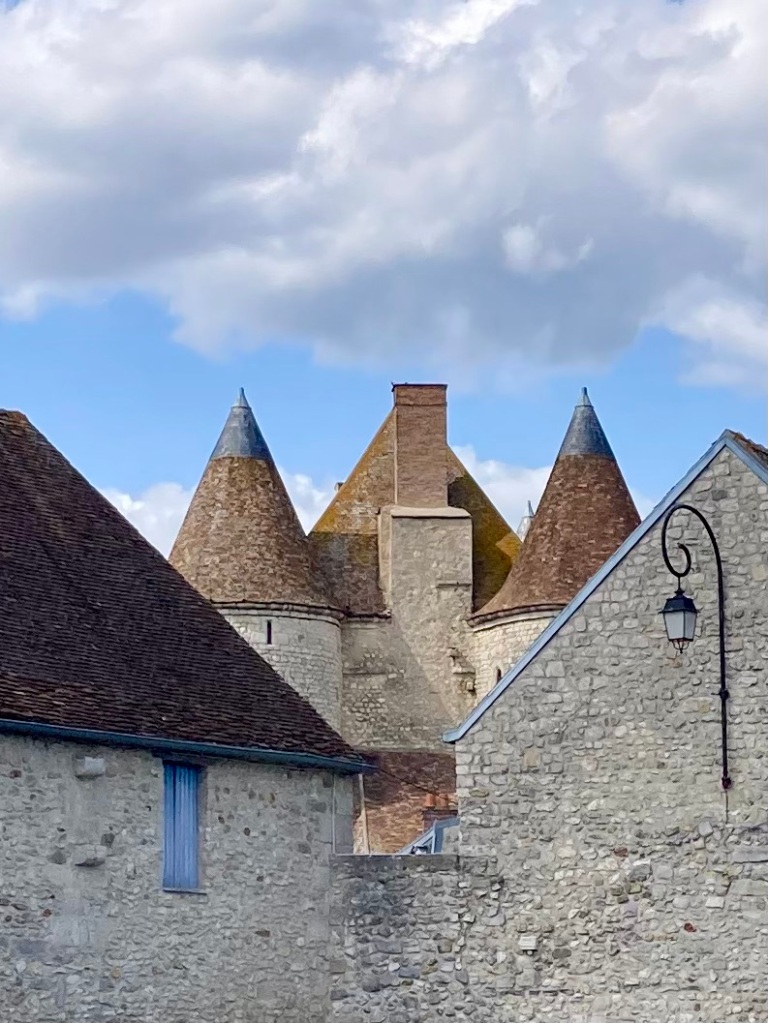
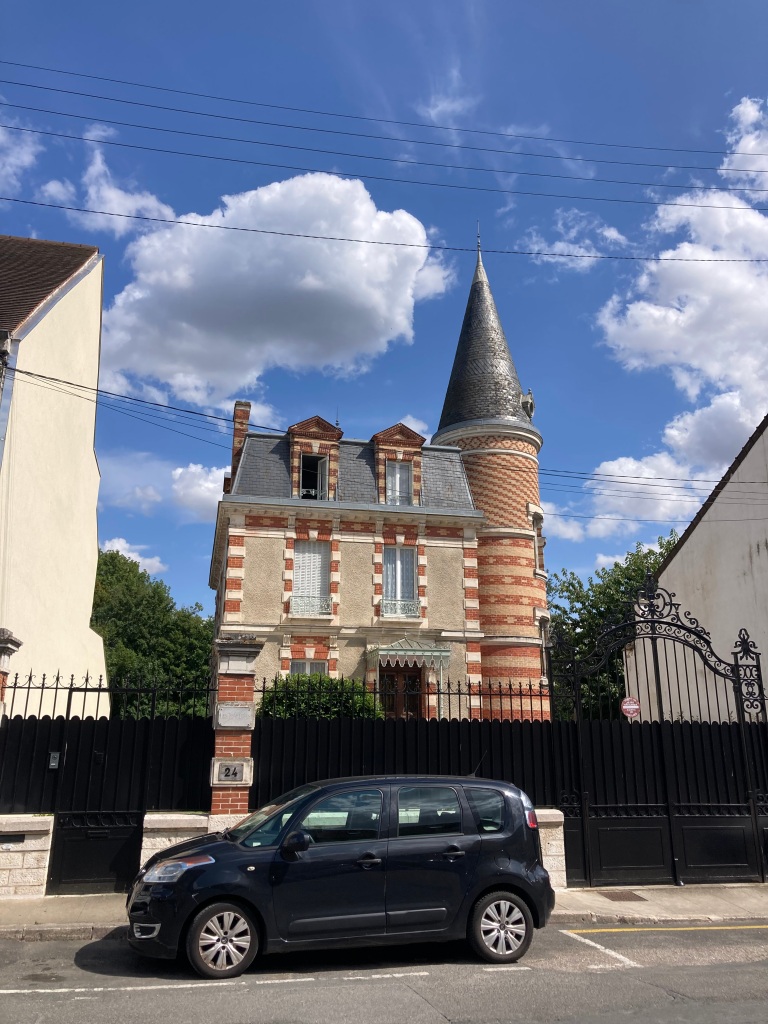

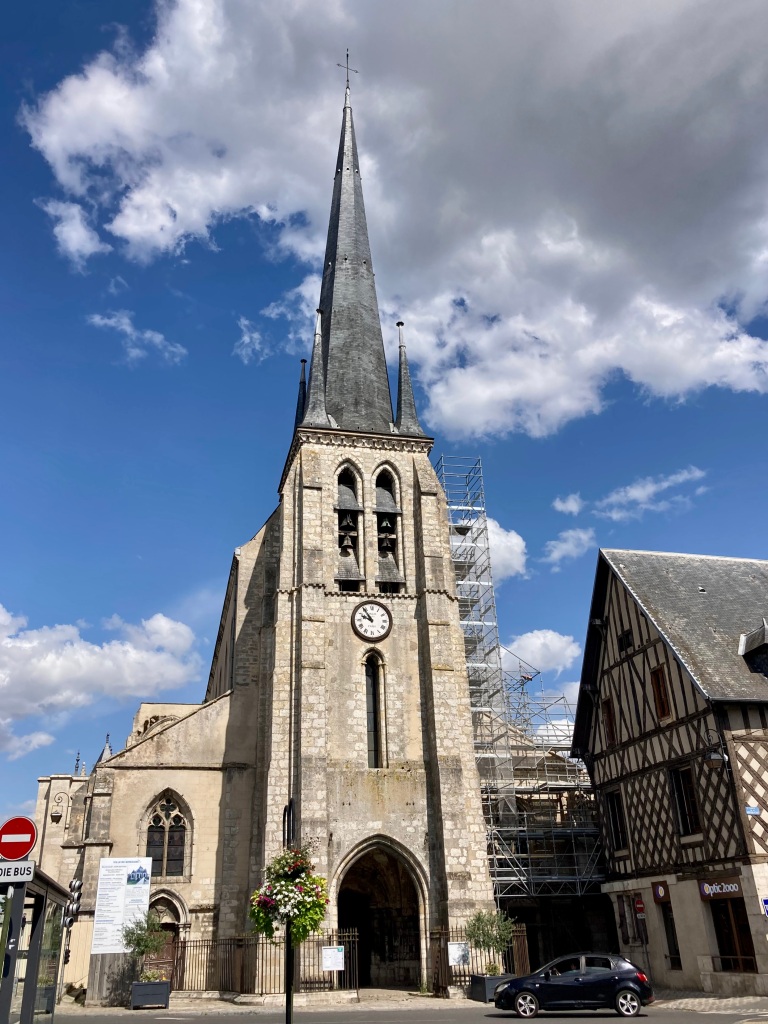
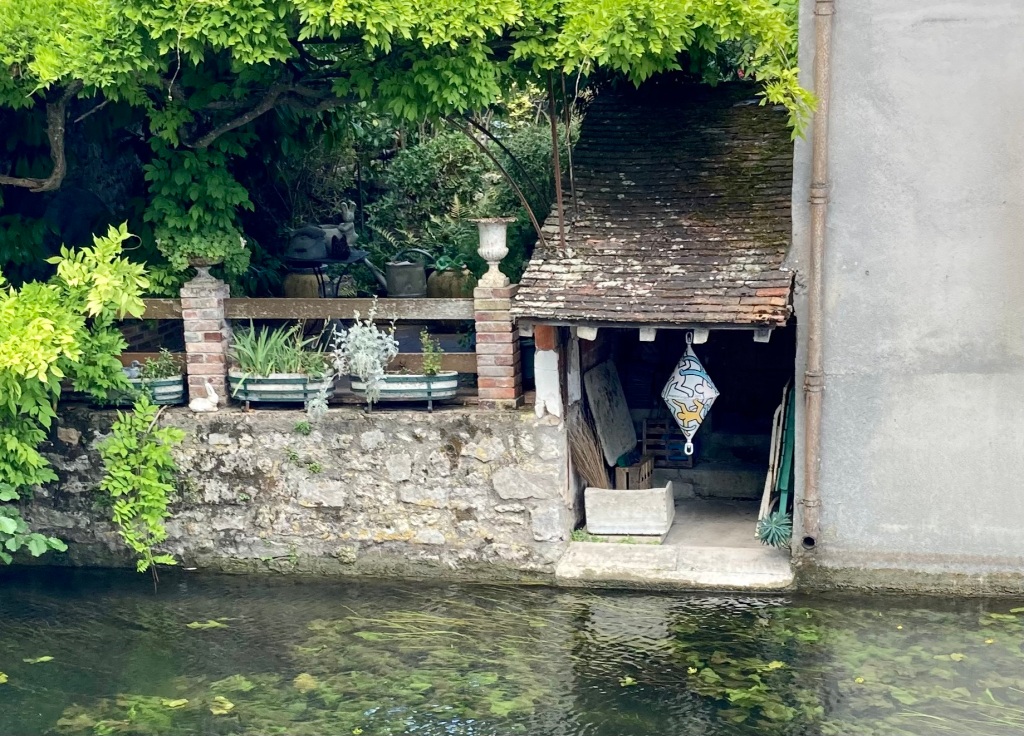
Several waterways cut through the town. The church is on the banks of the Loing; watermills and lavoirs used to line the small branch of the river that runs along the West and North edges of the old town; and the canal that we were travelling is the third main water artery.

There is one huge watermill that still remains.
And its big old quay on the side of the Loing have been put to a new use.
In the summer it plays host to an open air food and drink court! Just the place on a warm July evening for Stewart and I.
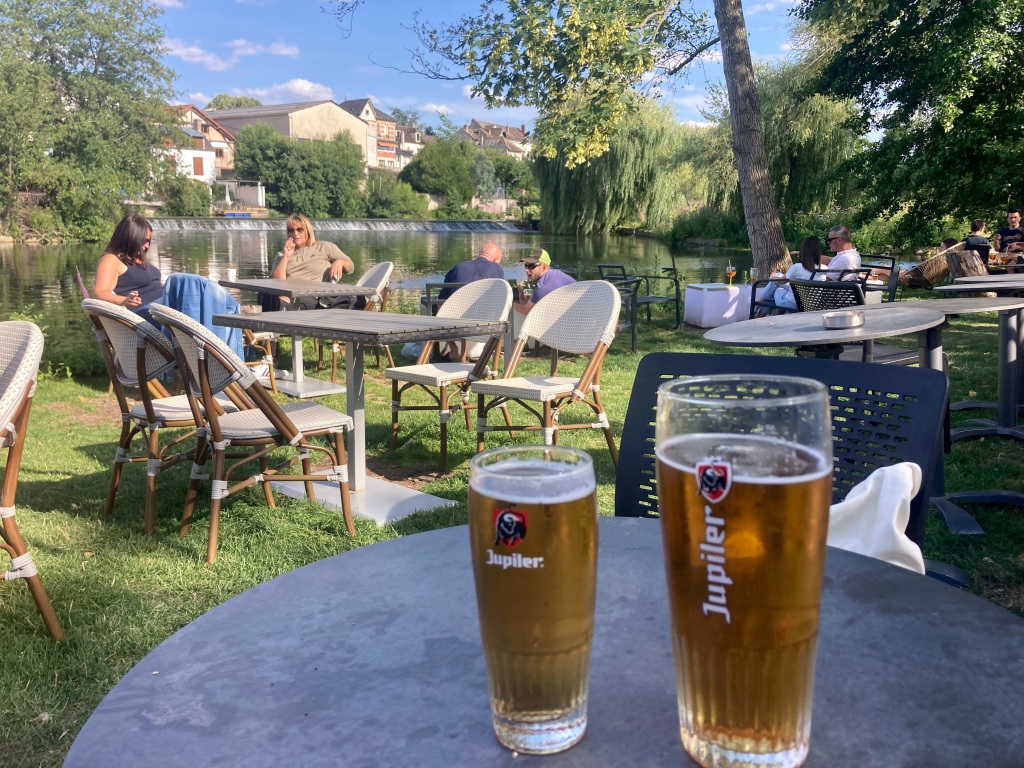
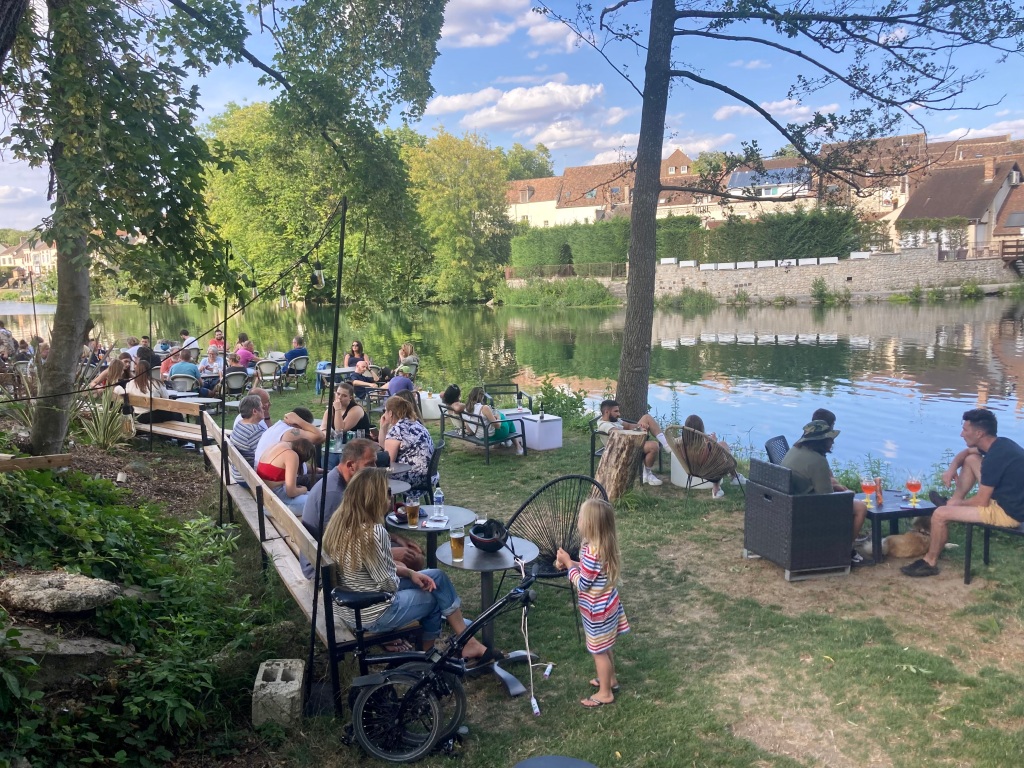
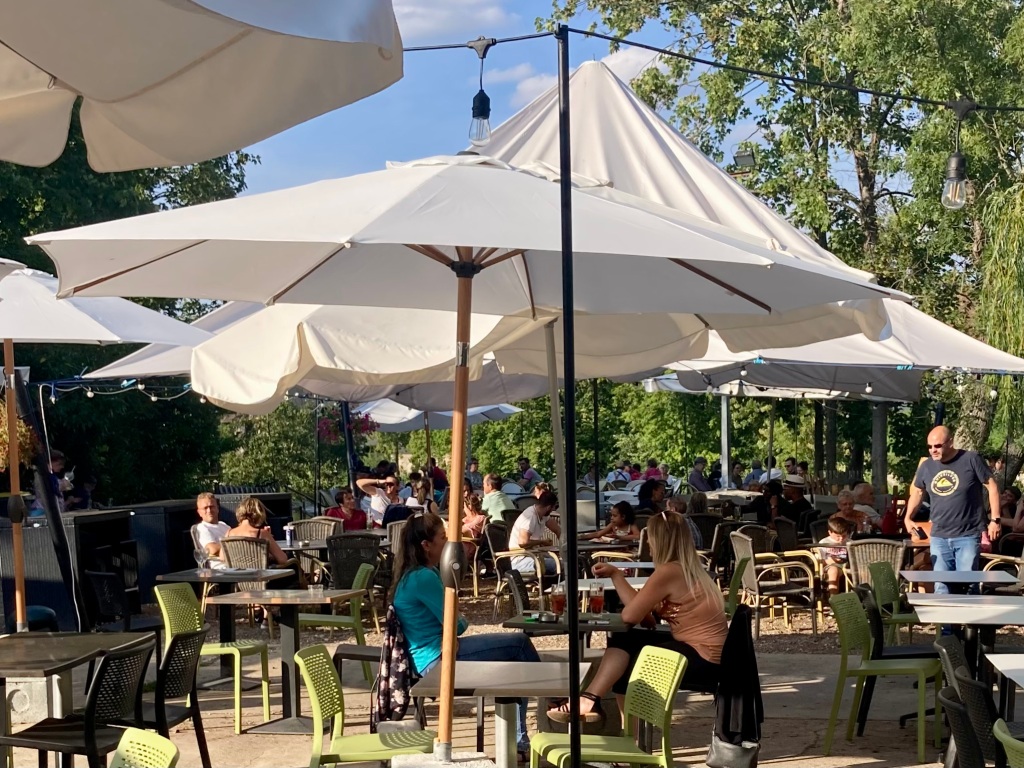
After a beer on the grassy banks we explored the food offerings and settled on a freshly made savoury galette each, with a glass of local wine.
We had a really enjoyable early evening out.
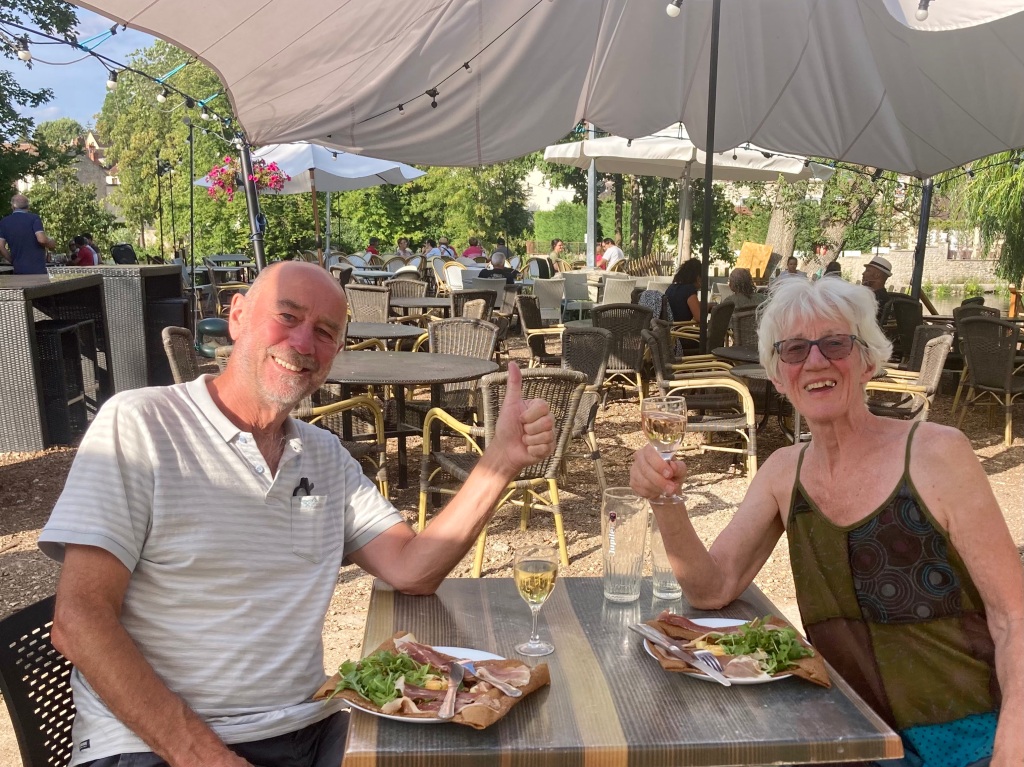
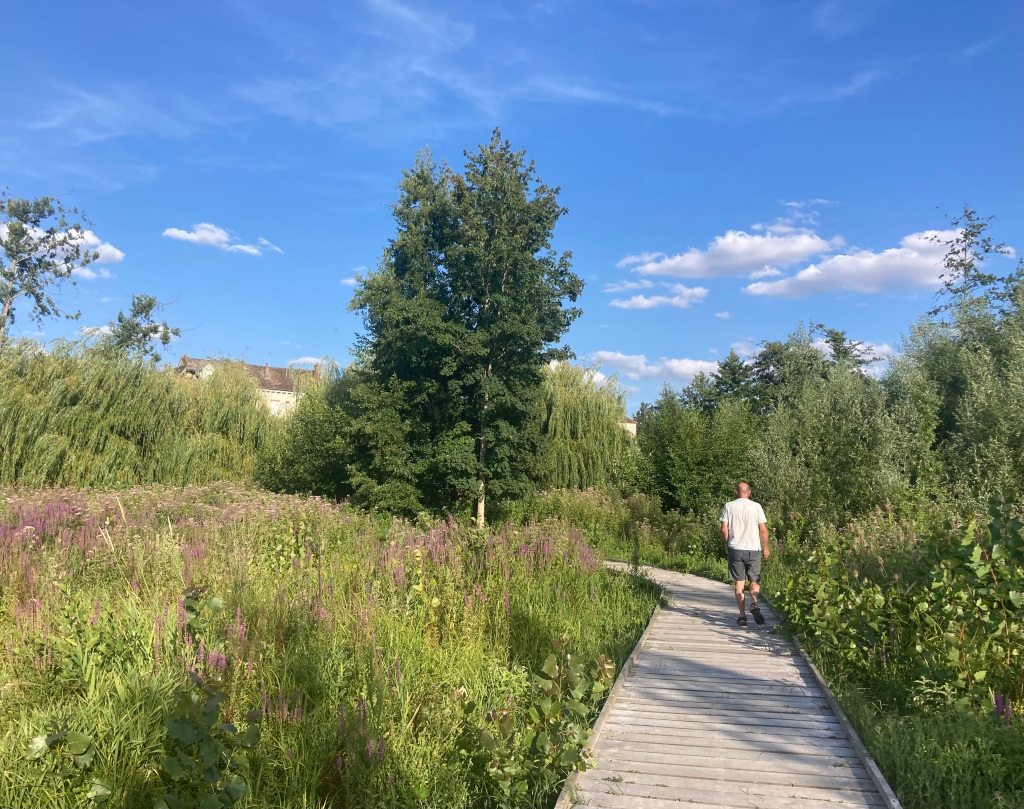
So two days very well spent in Nemours and then it was time to continue to the end of the canal at Moret-sur-Loing where we had booked in for 3 nights.
Moret-sur-Loing

As we left Nemours we were quickly out onto the wider margins of thew river again. The Loing was flowing well and we moved along under greyish clouds at a good pace.
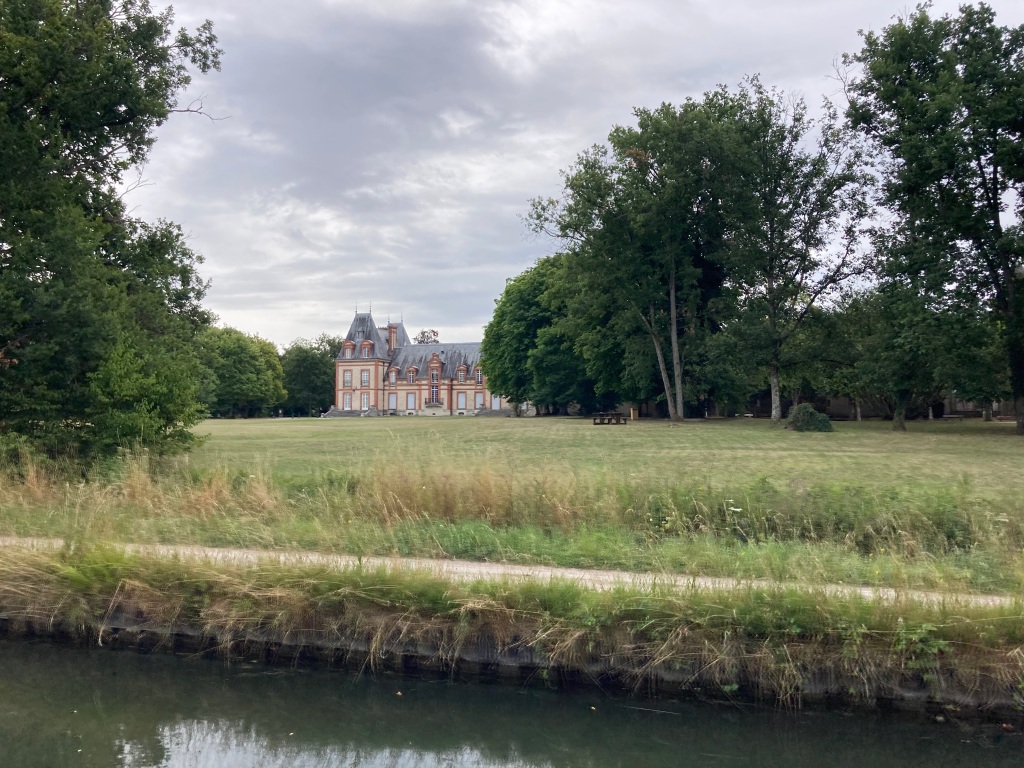
The morning’s run was almost entirely through the countryside, with the occasional grand house v viewed across the grasslands.
Some were still private residences and others seemed turned into communal use such as libraries.
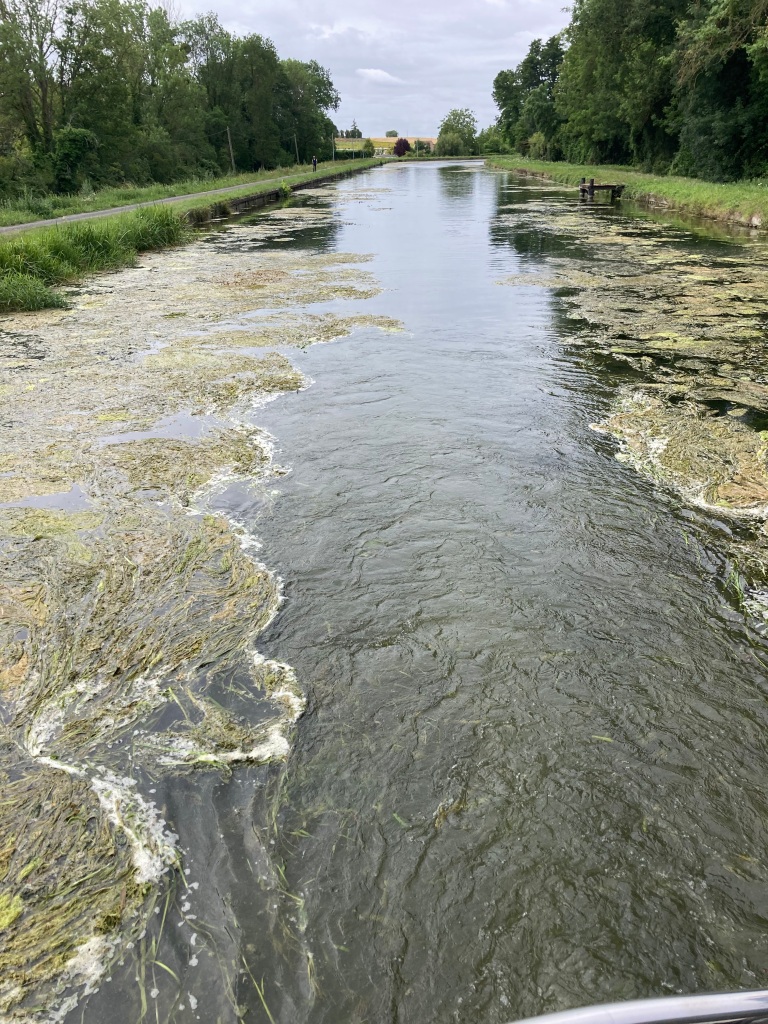
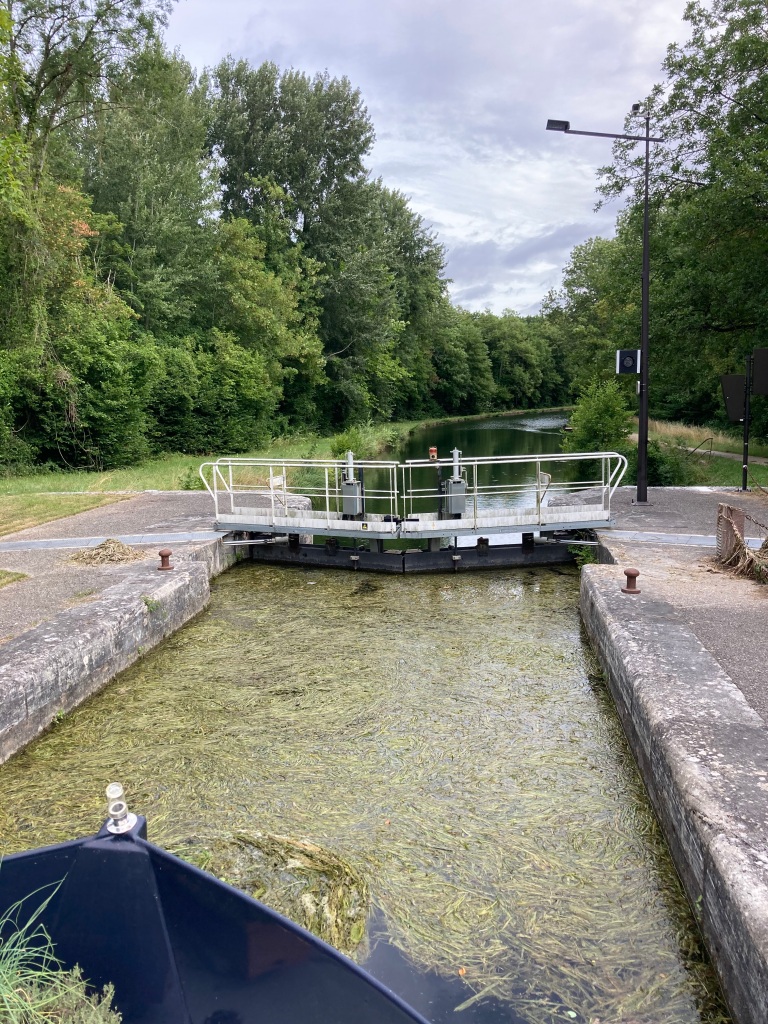
Around Écluse de Berville the water weed became a lot thicker, parting in our wake and gathering before us.
We did not pass many craft that day, but one that caught our eye was Interlock. She was like a garden studio on a floating platform, powered by two outboard motors.
Her progress was steady and gentle, and at a distance we did wonder what was coming towards us!
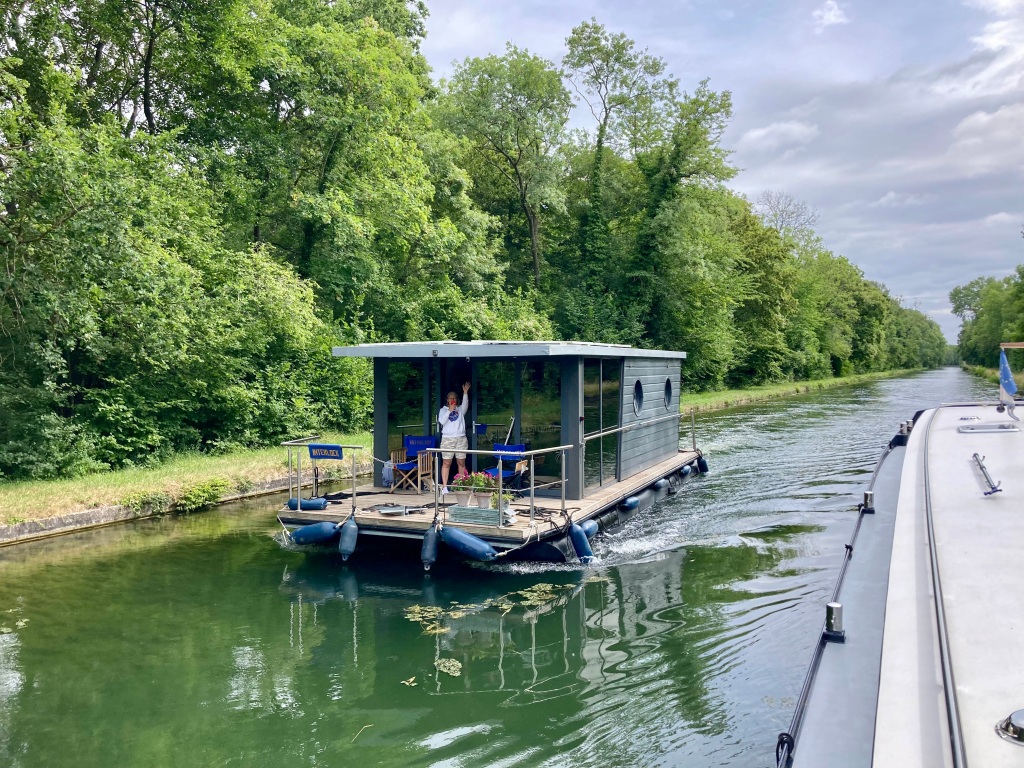
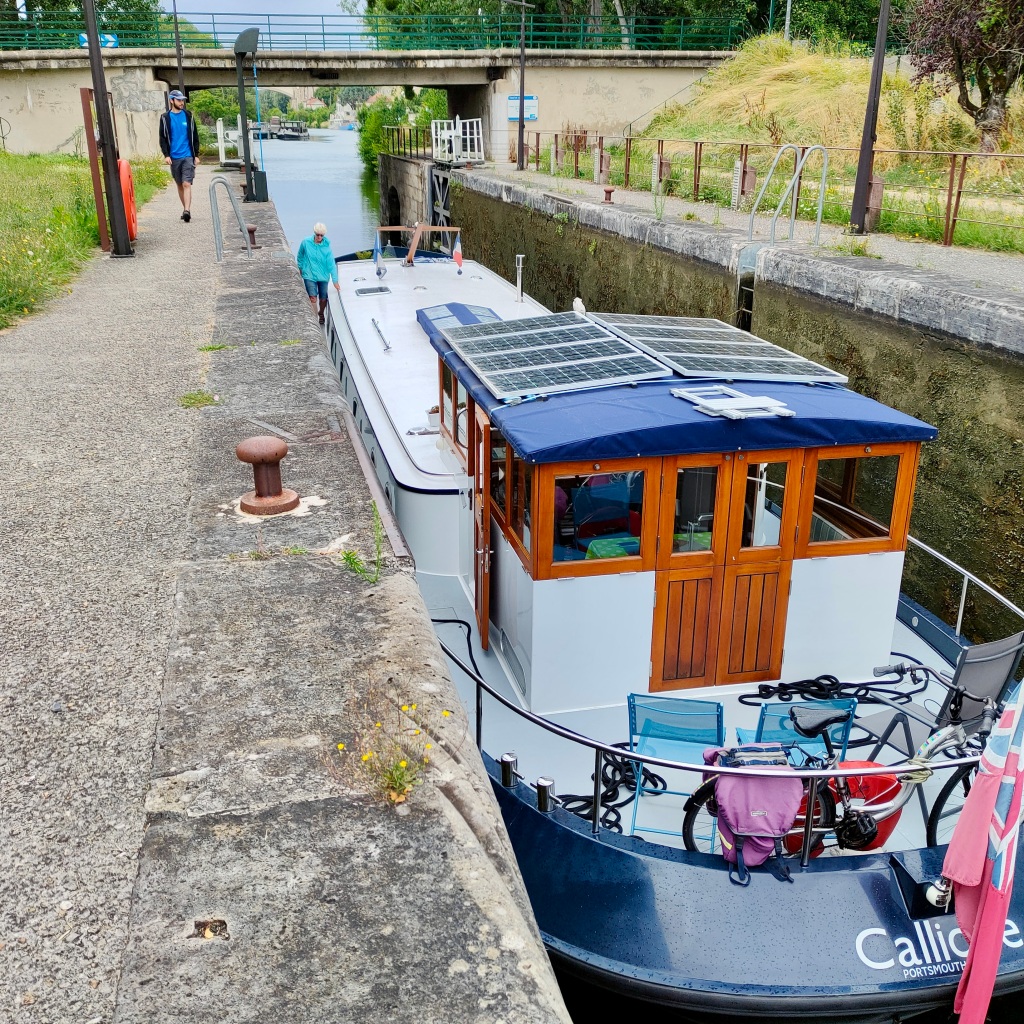
We were pleased to reach our last lock just before lock keeper’s lunchtime! This lock took us down from the canalised section and back onto the Loing river.
It had just started to rain, so it looked like good timing. Moret was directly ahead of us and we expected soon to be tied up comfortably and eating our own lunch.
But arriving at Moret was a bit more interesting than that.
We had booked our place for three nights and arrived at about noon hoping/expecing that our mooring would be there for us. It turned out that the boat whose space we were taking was not planning to go until 4pm, and there was virtually nowhere to moor up and wait.
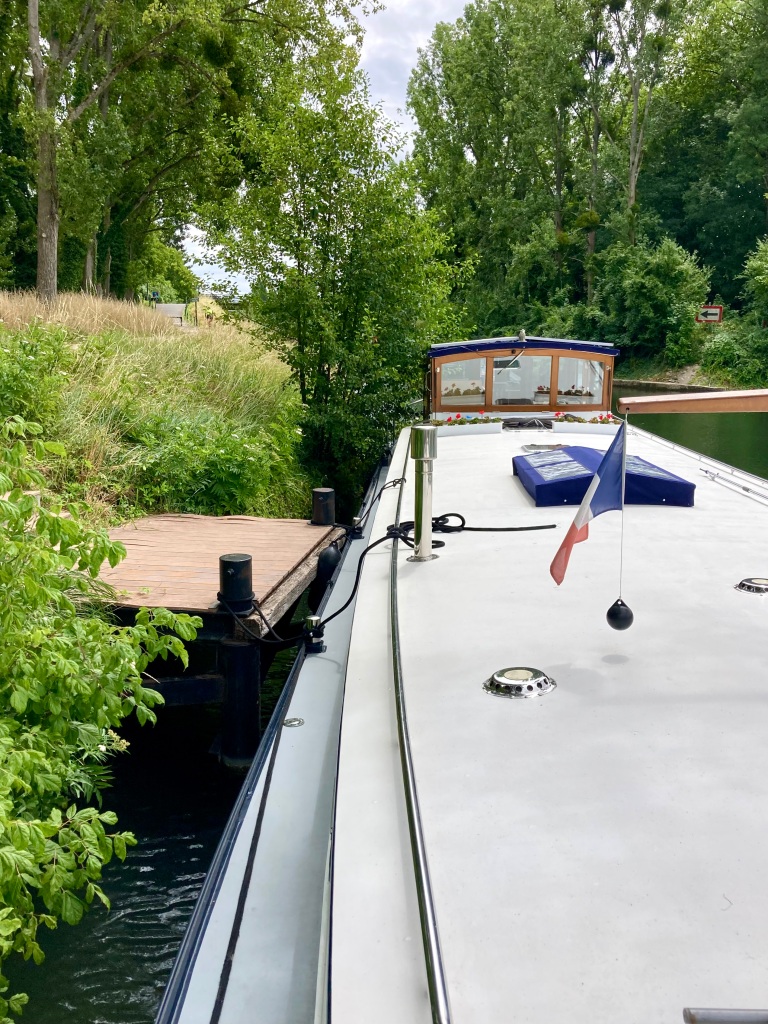
However we managed to get on to the little waiting pontoon for the lock and tucked into our lunch before waiting a couple of hours watching the river flow by. At the same time we kept our eye on the other boat acrosss the river.
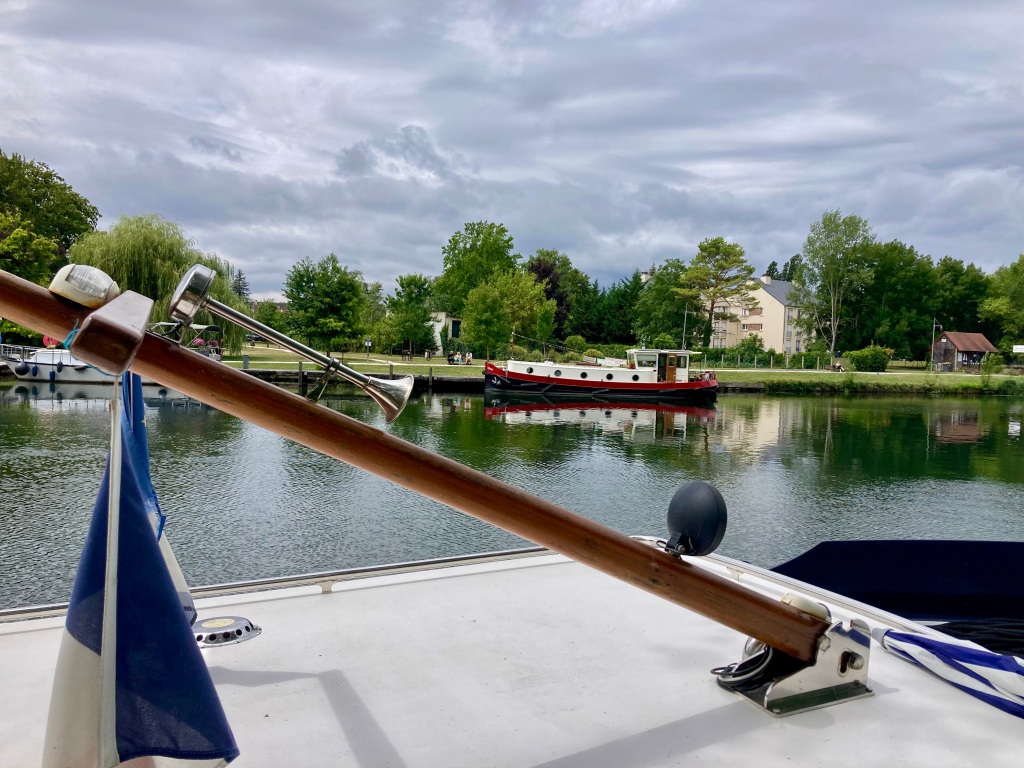
Luckily they saw us waiting and got ready to leave earlier than they had planned.
They set off at 3pm and we quickly moved into our hew temporary home.
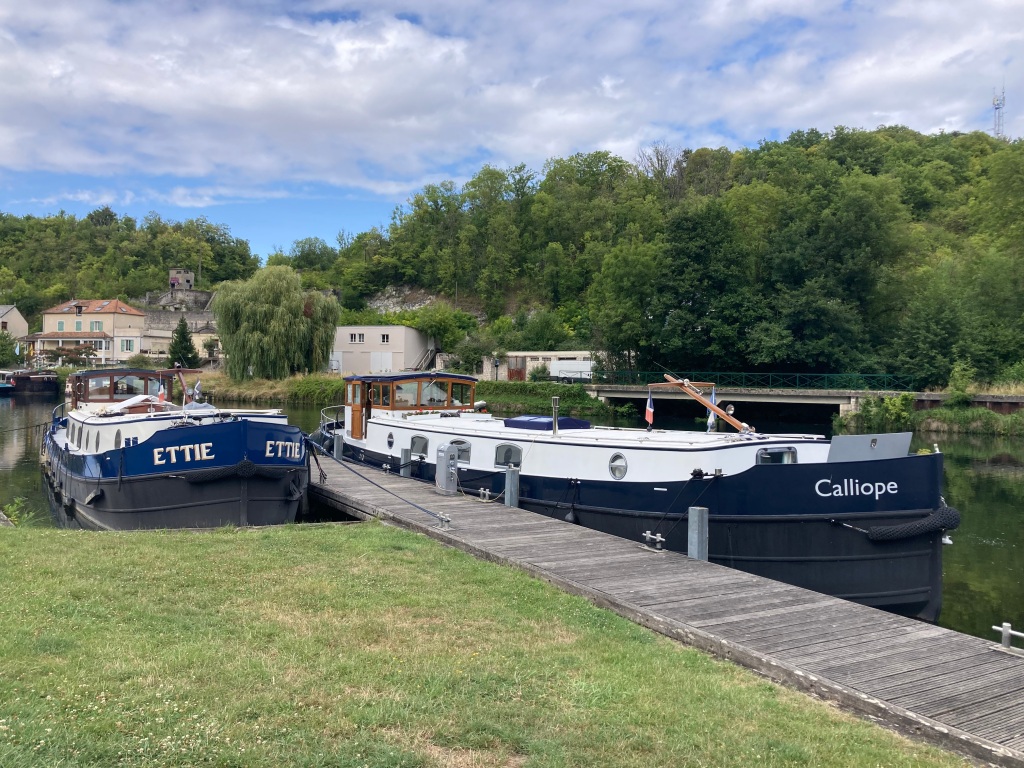
The pontoon layout at Moret is different – three pontoons at a very small angle to the river bank. It is hard to explain and show, but here we are on the outside of pontoon 1, and sister ship Ettie arrived later to moor on the inside.
The weather while we were in Moret was more April than August, with heavy down pours interspersed with warm sunshine. My photos show this contrast rather well – some grey-skied and some blue.
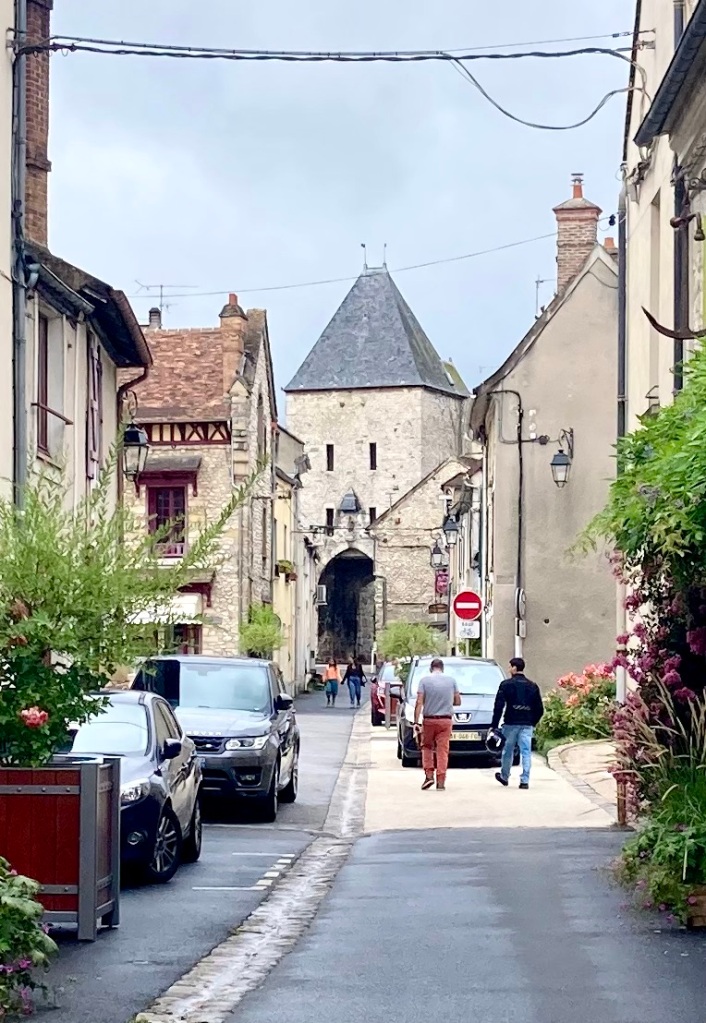
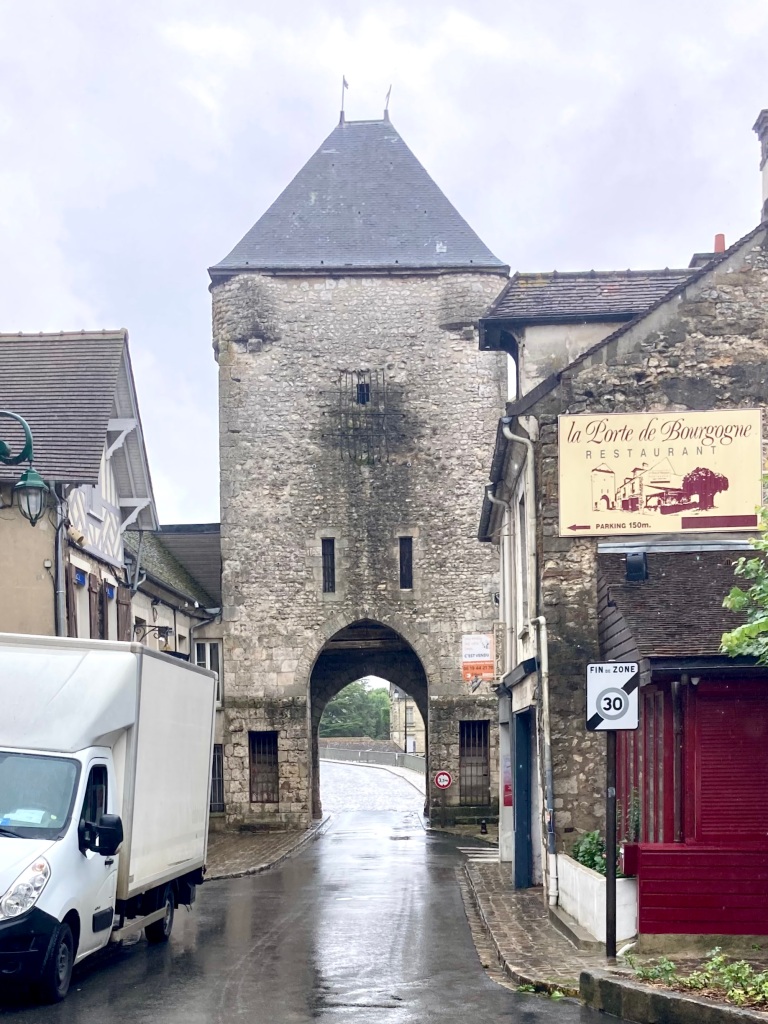

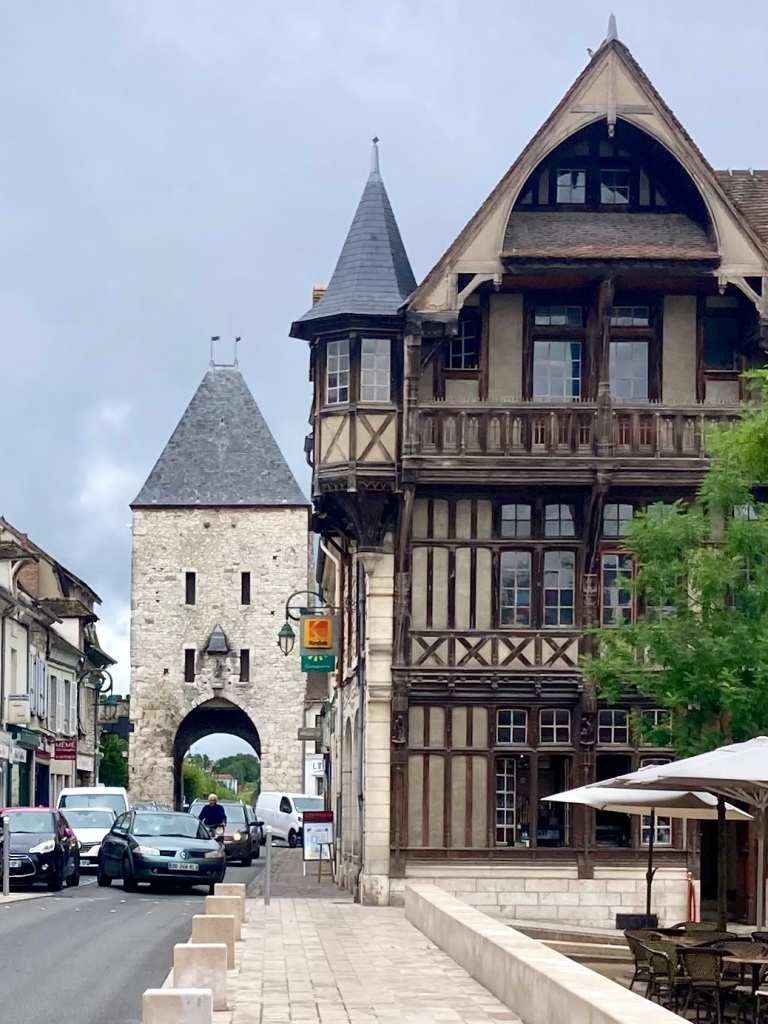
There are many old gates into Moret-sur-Loing; some are watergates onto the river and others lead to roads. The latter’s names explain the direction they face – Porte de Samois, Porte de Borgogne.
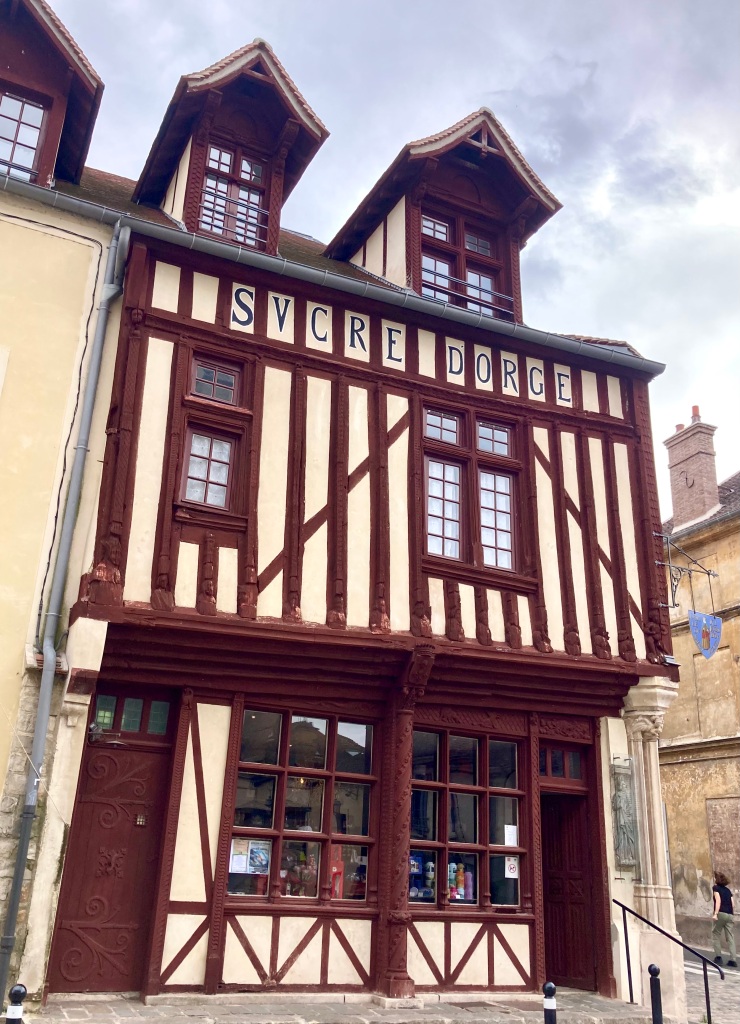
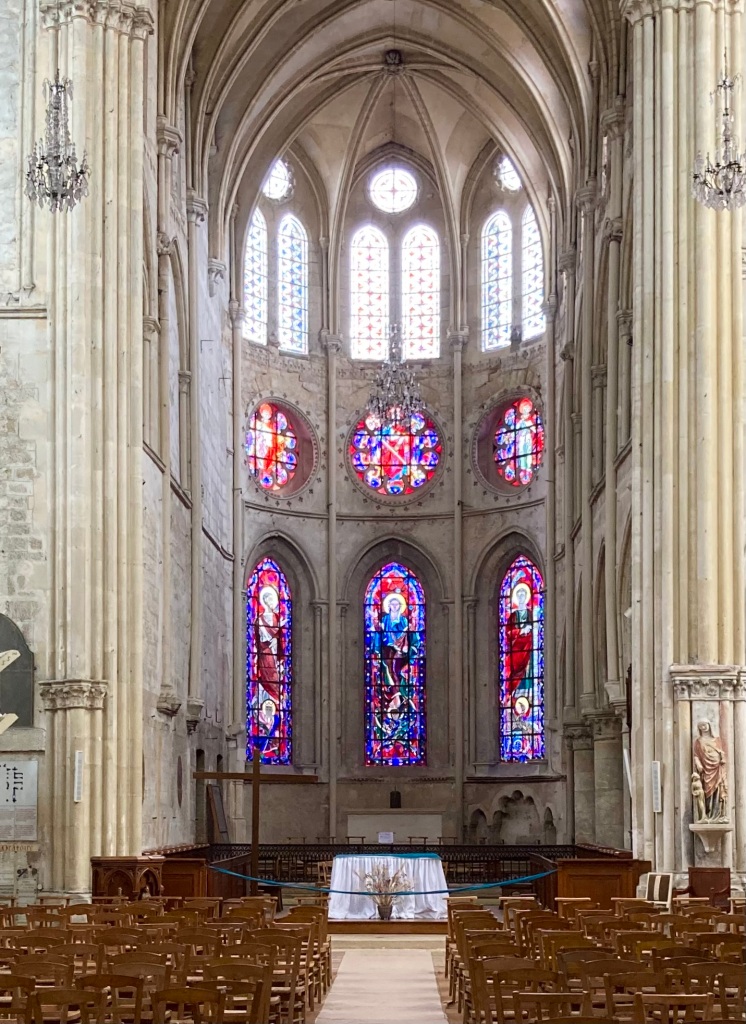
Once again there are so many old buildings that I am just giving a taster her – the Sugar Museum on the left and the church on the right.
There was quite big collection of friendly boaters moored up and it wasn’t long before discussions were going on to plan a social get together.
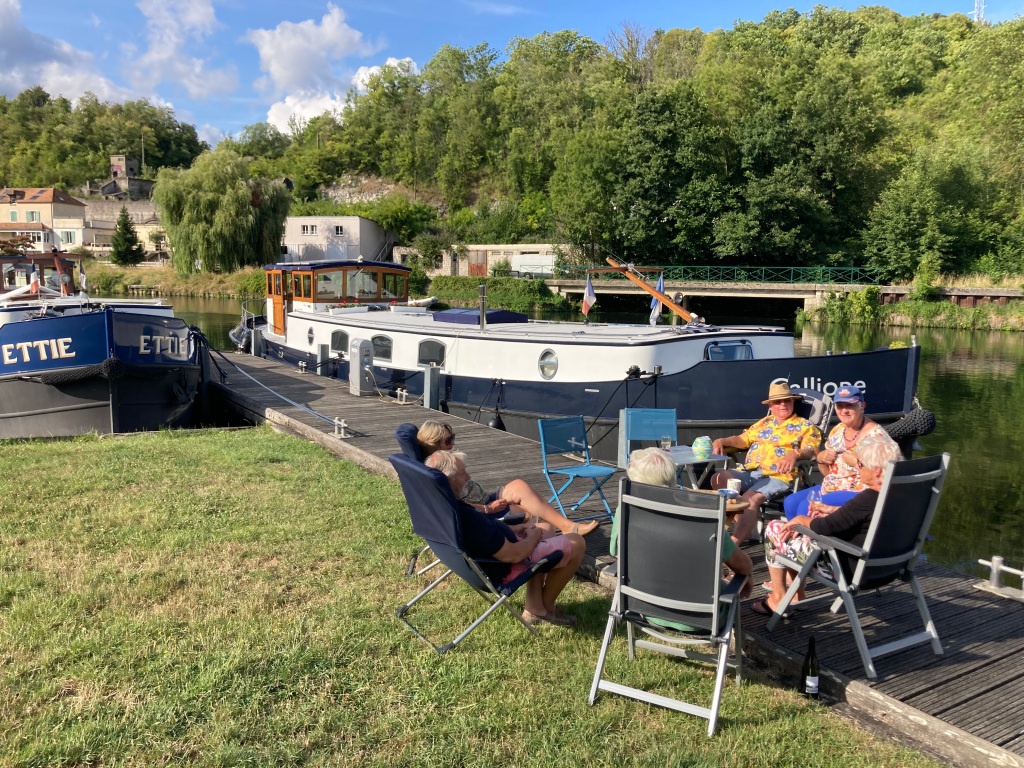
We all agreed that none of us had a big enough back deck for everyone to gather so a pontoon party was organised to take place between the showers. And here we are, (except Stu and I) managing a bit of fun before the next thundershower arrived.
The one wondrous occurrence on a day full of showers an d sunshine is the chance of a rainbow, and we were not disappointed.
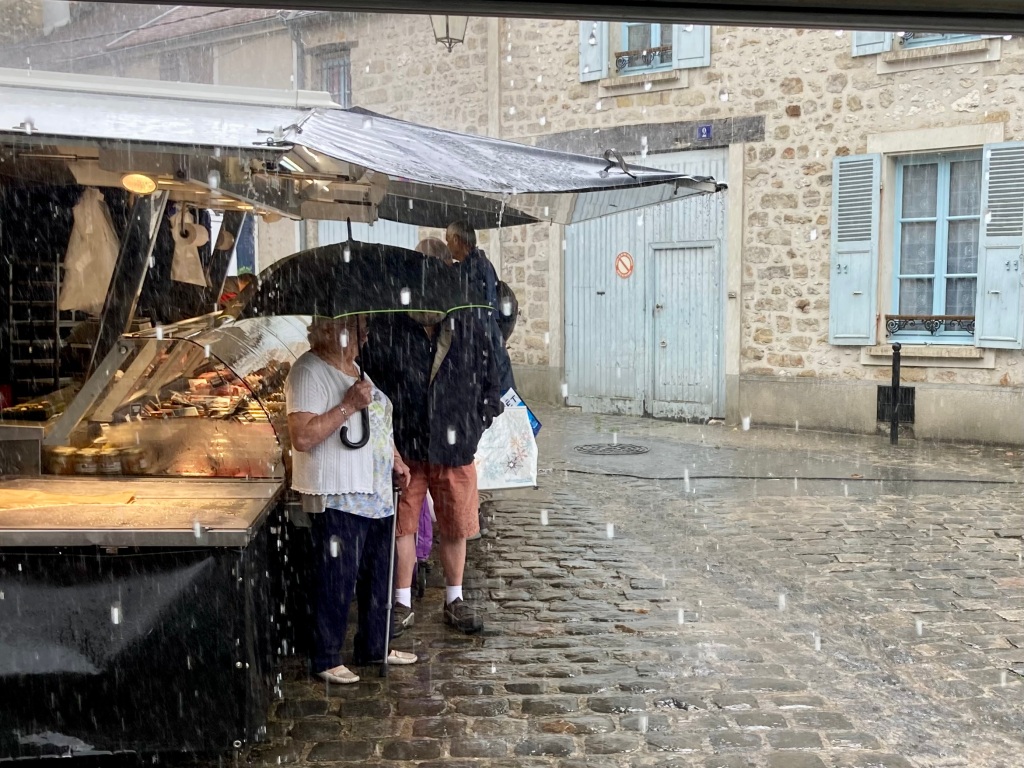
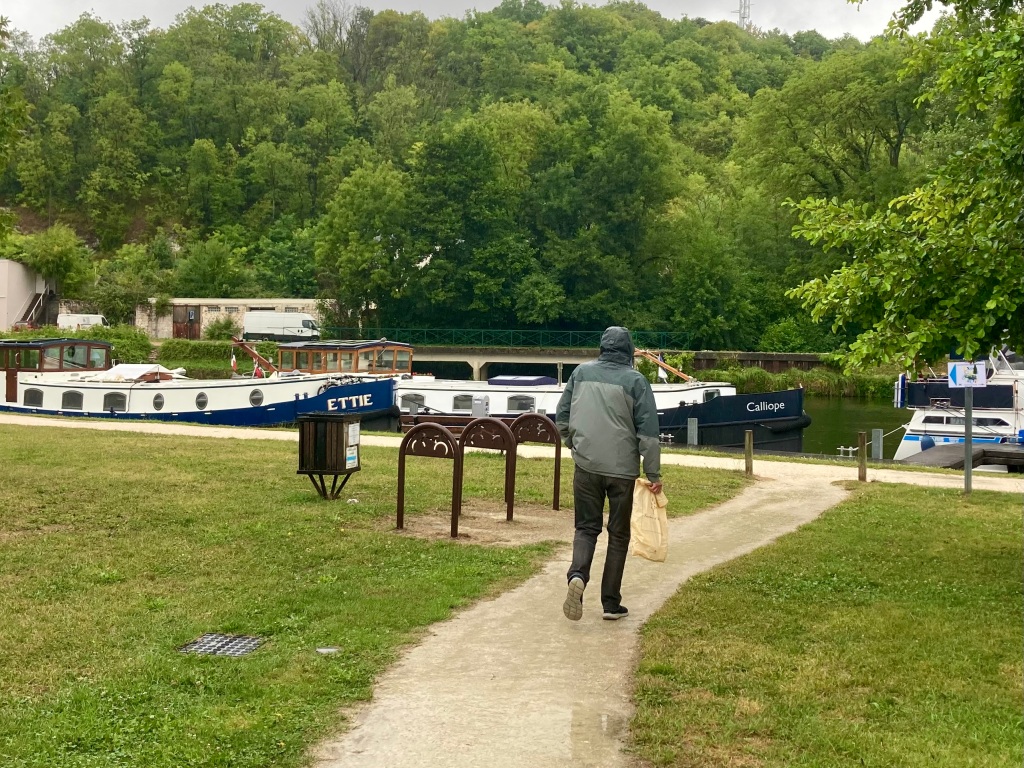
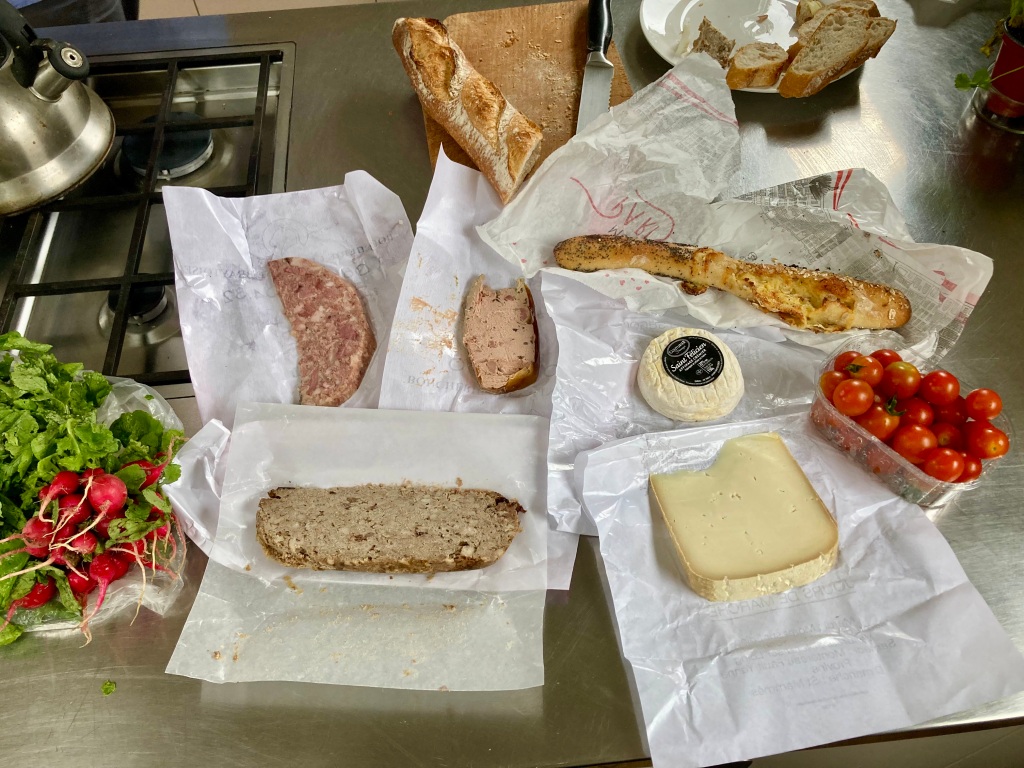
Undeterred we contnueds shopping and were rewarded by a good haul of food for lunch.
For those who are wondering, the cheeses are Stu’s favourite Saint Félicien, and my favourite Brebis et Chèvre (sheep and goat). The patés are a local Moret rough textured paté, forestière, and paté de tête. You can also see a good gruyère fougasse, fresh tomatoes and radishes, and a crusty baguette. Yum yum.
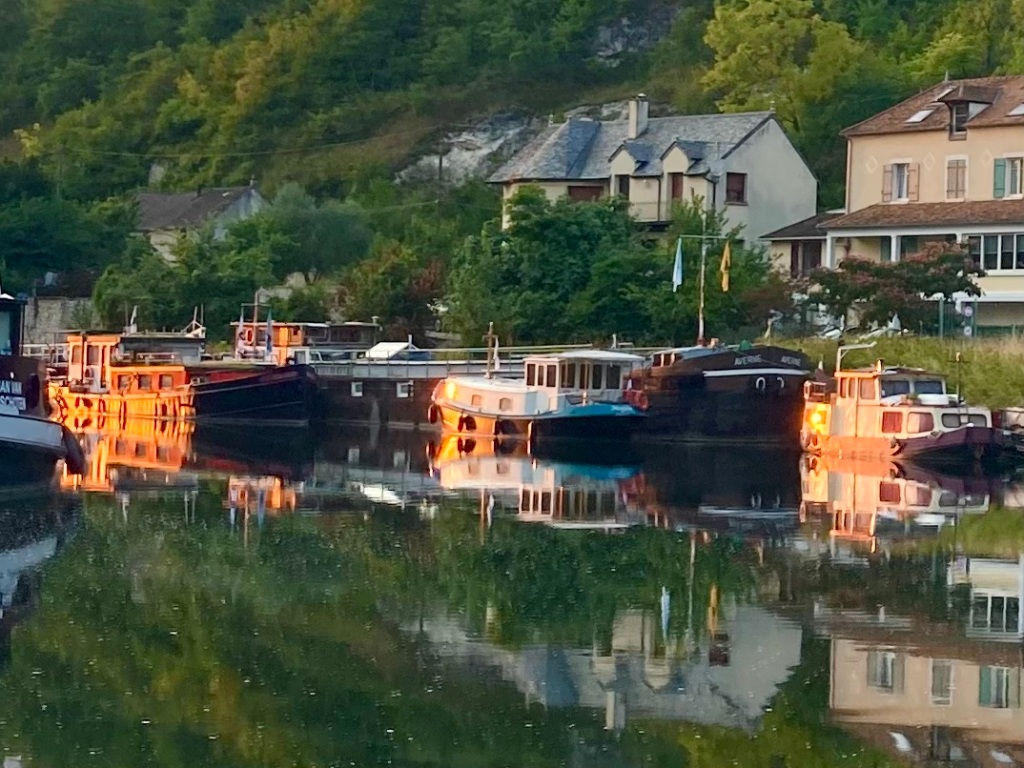
Our last evening on the Loing brought the setting sun’s rays almost horizontally across the river, picking out some of the boats on the other bank and lighting them up in golden red tones .
There is something magical about the combination of light and water.
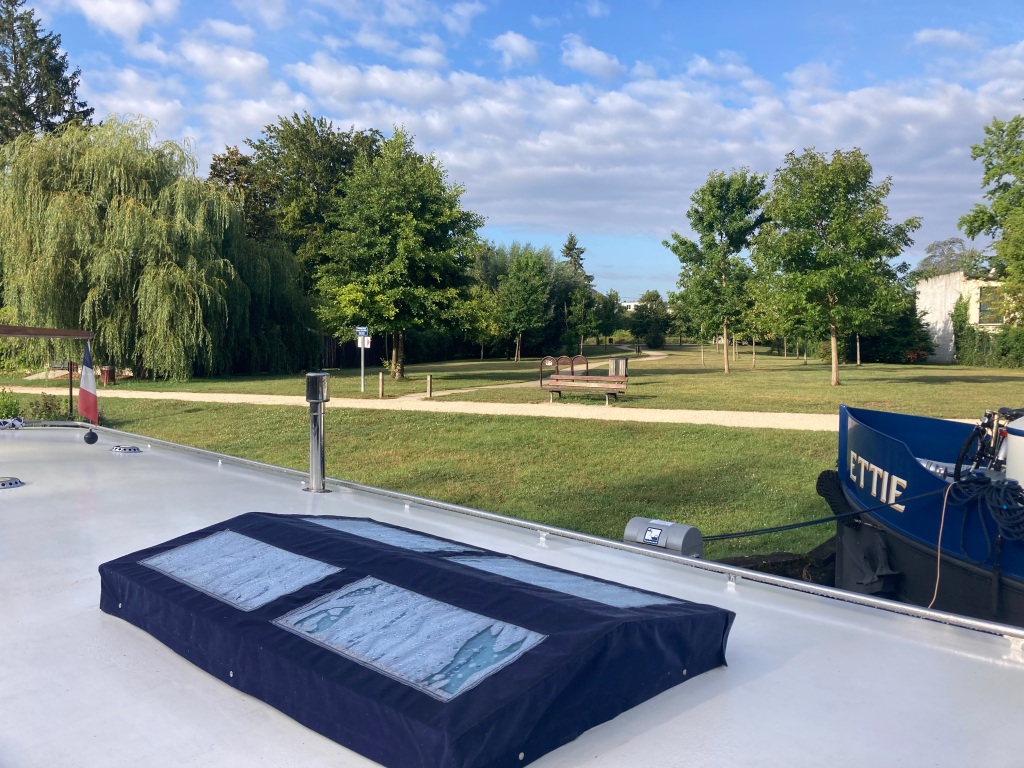
The day of our departure both from Moret and from the Canal / River Loing came in blue. The park next to the mooring was quiet and green. All was set fair for Calliope and crew.
We had a send off from some of our pontton party mates, with many a shout of ‘see you again soon’.
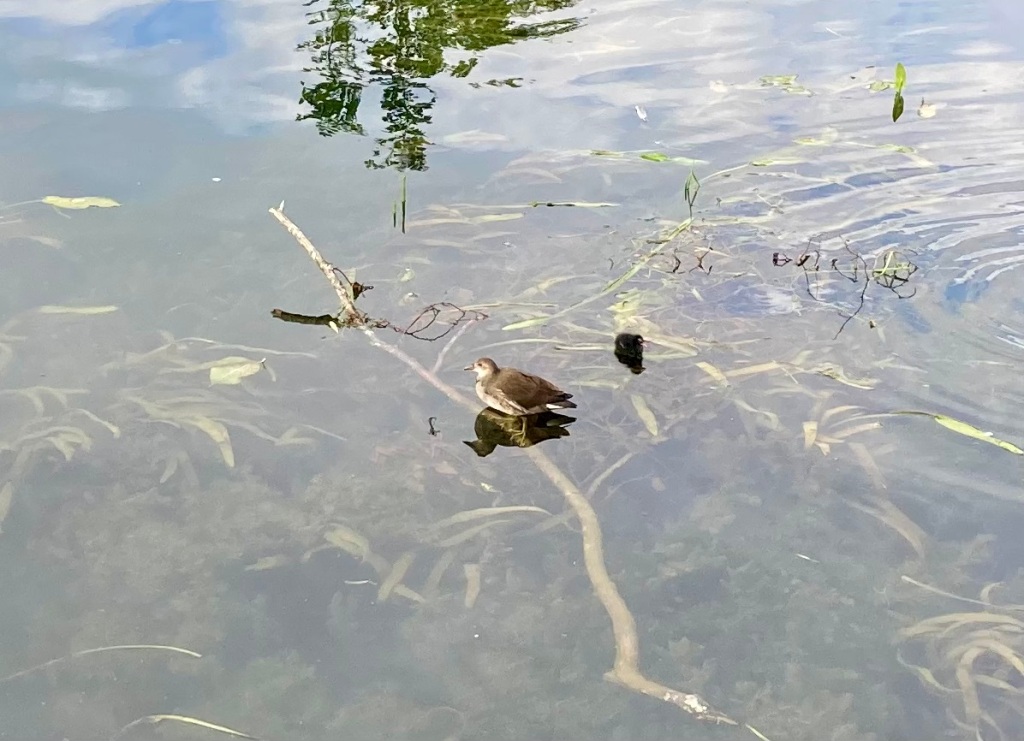
And a quieter goodbye from a local plover.
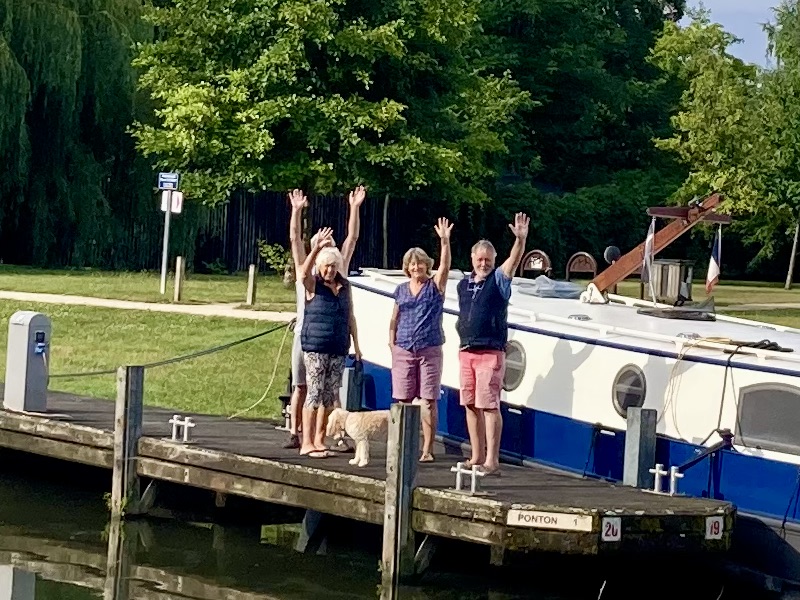
Then we were off, away down the short final stretch of the Loing, to its junction with the Seine, where we turned to starboard, away from Paris and towards some much bigger barges!
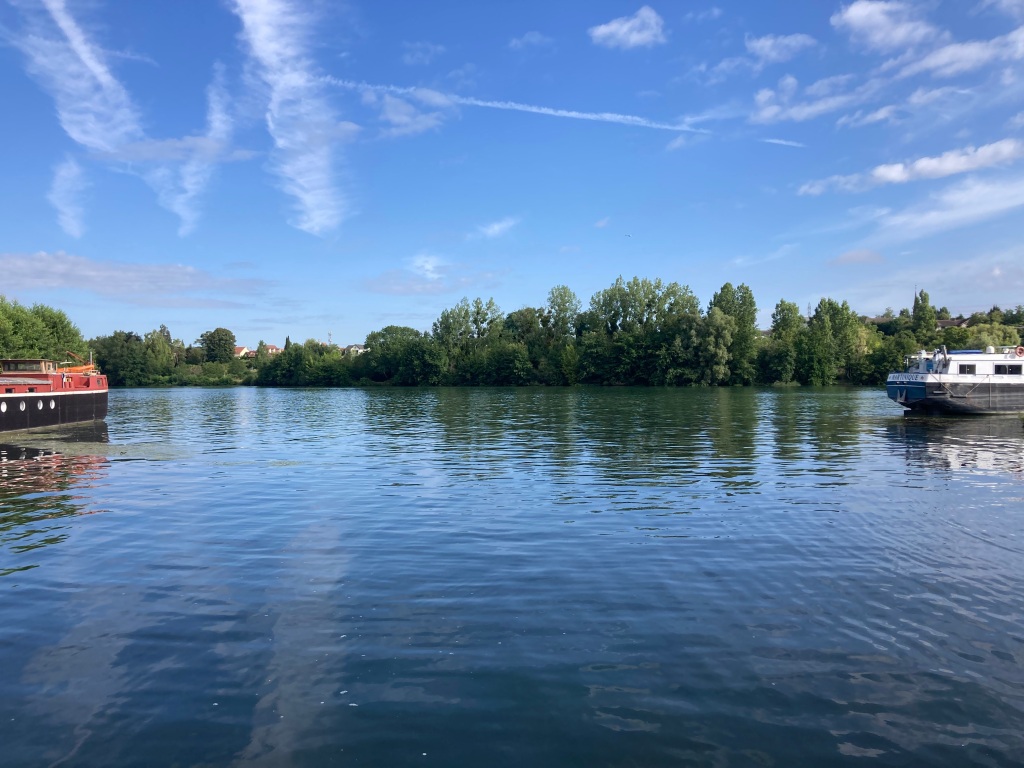
A couple of hours on the Seine
Most people know the Seine because it flows through Paris. We have often discussed whether we should take Calliope into Paris, just for nthe experience. Many boaters say it is wonderful, if a bit expensive for mooring. Somehow we always end up deciding that we would rather cruise and see the ‘backwaters’ of France that we have never seen or heard of before. Hence we turned to starboard and headed for the Yonne – just over two hours up stream.
But whilst on the Seine we were acutely aware that this is a major thoroughfare for transporting goods to and from the capital – and beyond.
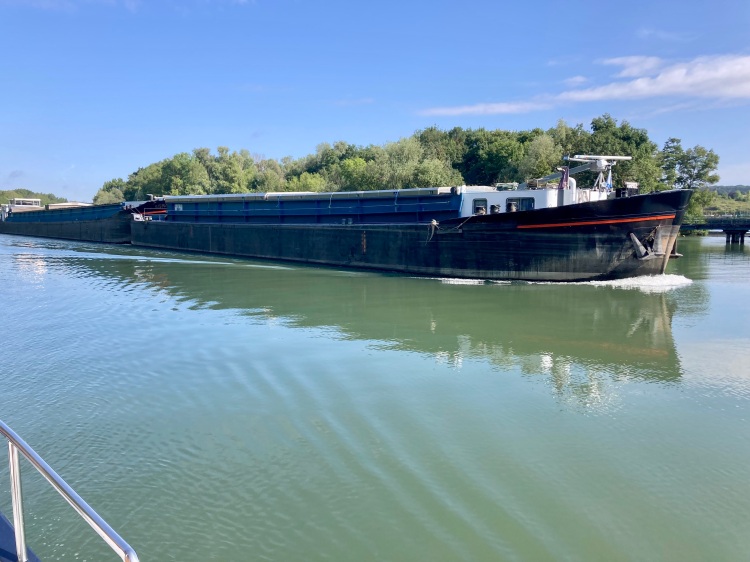

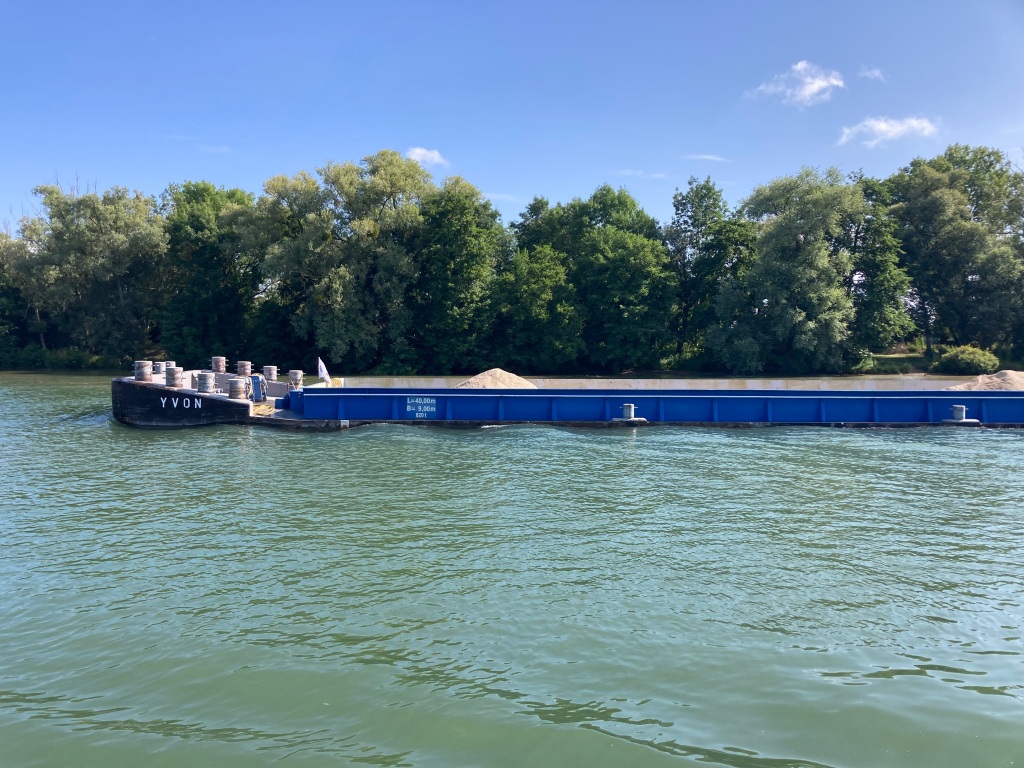
There is something majestic about the power and fluidity with which these huge barges move through the river. We never tire of seeing them – and on the Seine there is plenty of room for us both. The Captains are usually friendly, waving as we pass each other.
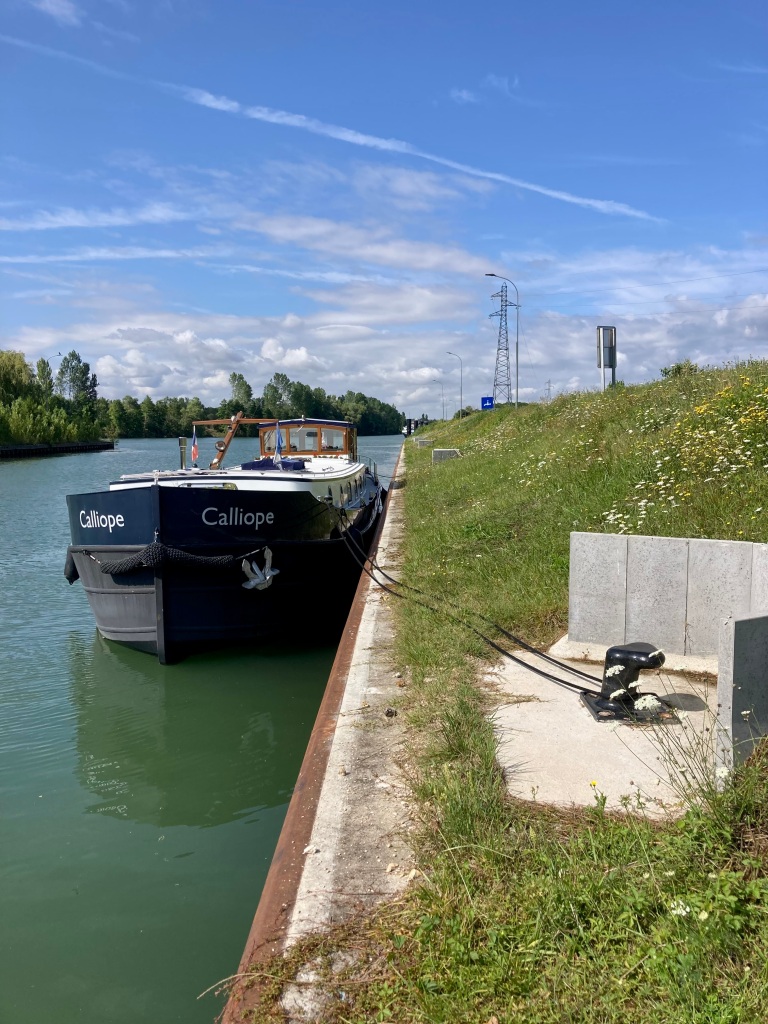
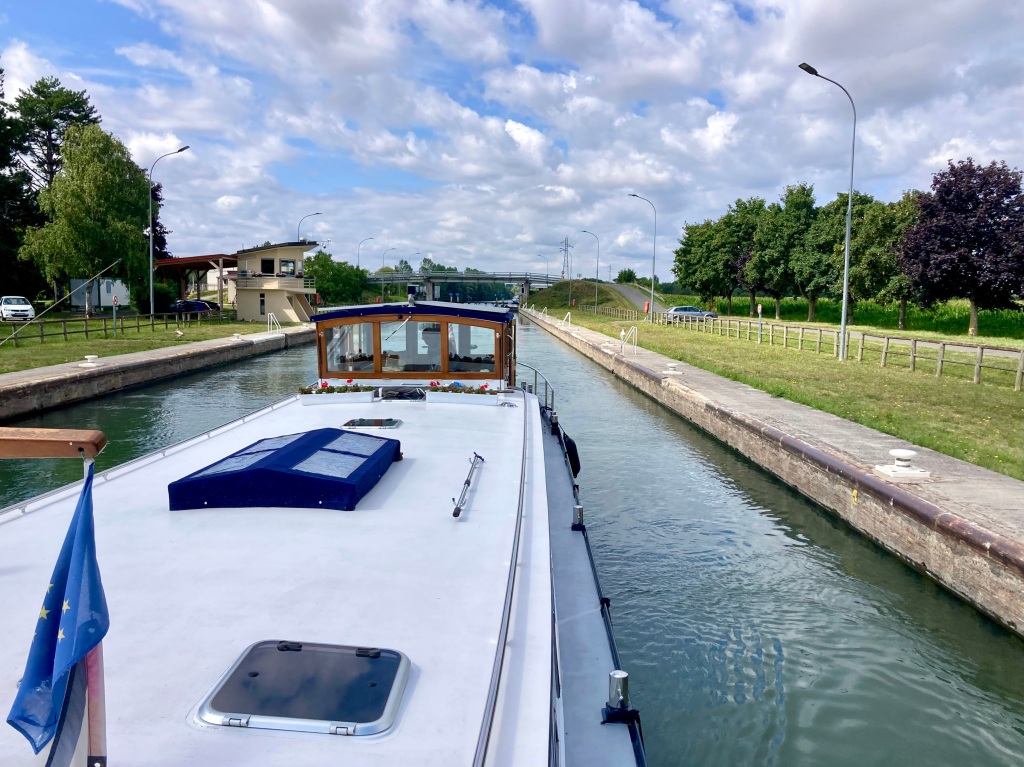
We had just the one lock to go up. The actual rise was not much, but the other dimensions of the lock, ready to accommodate the huge working barges, seemed enormous when we were in there alone.
First we had a short wait outside the lock, where the bollards are set for much larger boats than Calliope! But all was fine and we tied up to wait our turn.
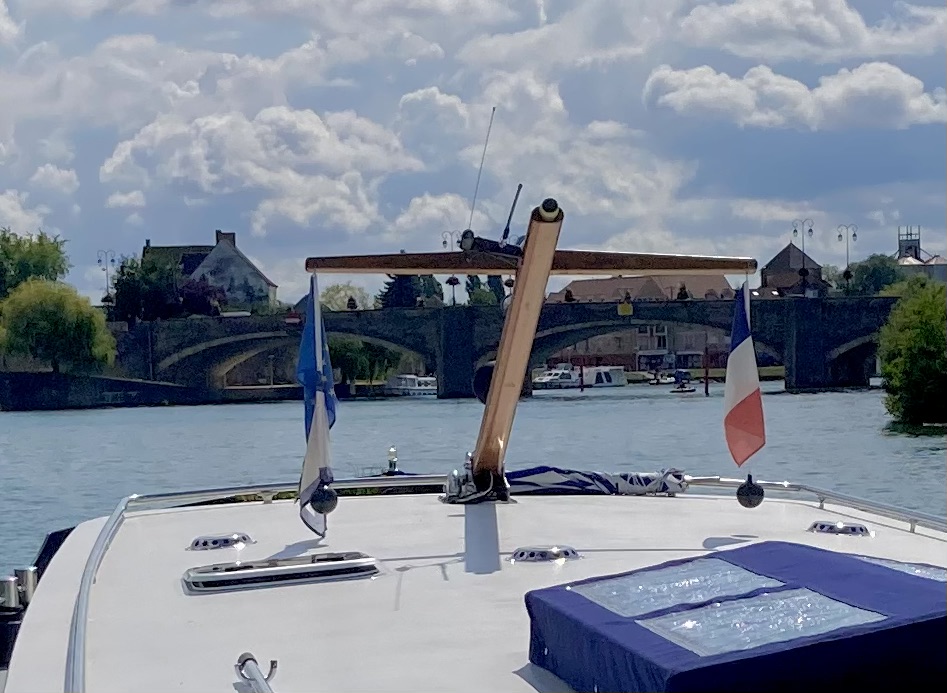
Soon after the lock we cxamwe to Montereau-Fault-Yonne, where the Yonne flows into the Seine. Turning to go under the bridge we began our next exploration – to be written up in the next blog.
9th to 18th July 2023
I’m trying out a new style, using the names of the places we stayed as headings. Let me know what you think.
Briare
The Canal de Briare is reputedly the oldest canal in France. It sort of has to start at Briare doesn’t it, or end there, or both? We joined it after the Canal Latèral à la Loire had crossed the marvellous aqueduct, skirted round above Briare, and ended at a Y junction with Canal de Briare, see the blog on Latèral a la Loire part 2.
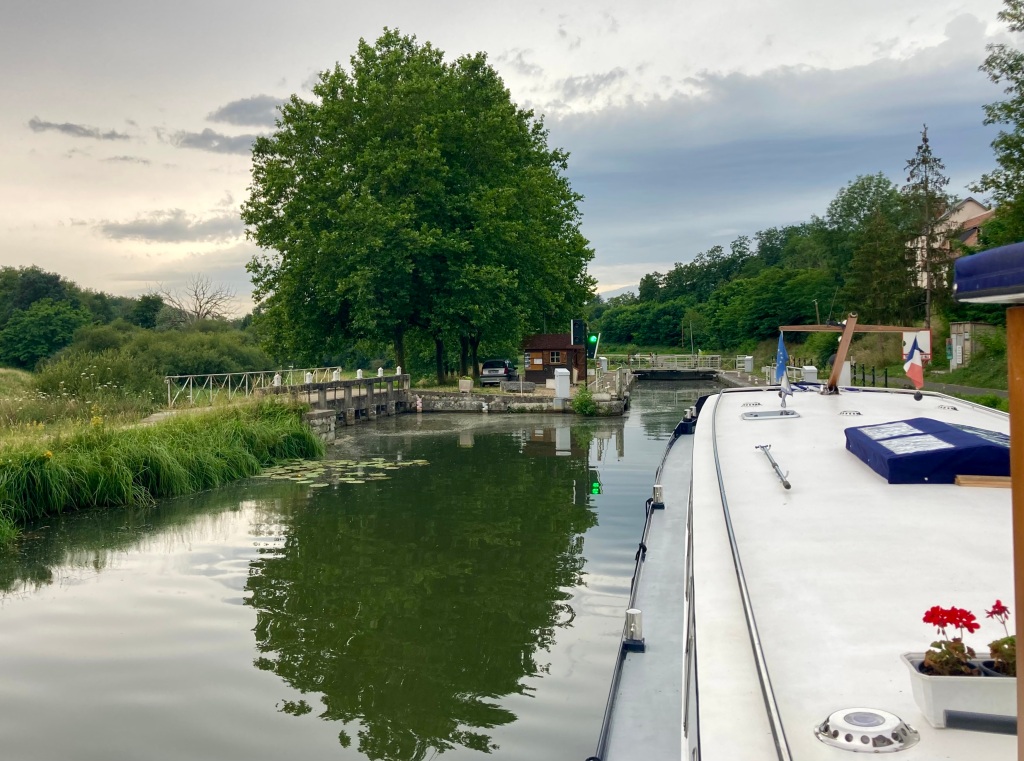
Calliope came up one of the two forks of the Y and had to turn into the other fork – at the same time as entering a lock. A very friendly éclusier (lock keeper) was on hand to help, though Captain Stu brought Calliope in perfectly and it was easy for me to lasso a bollard.
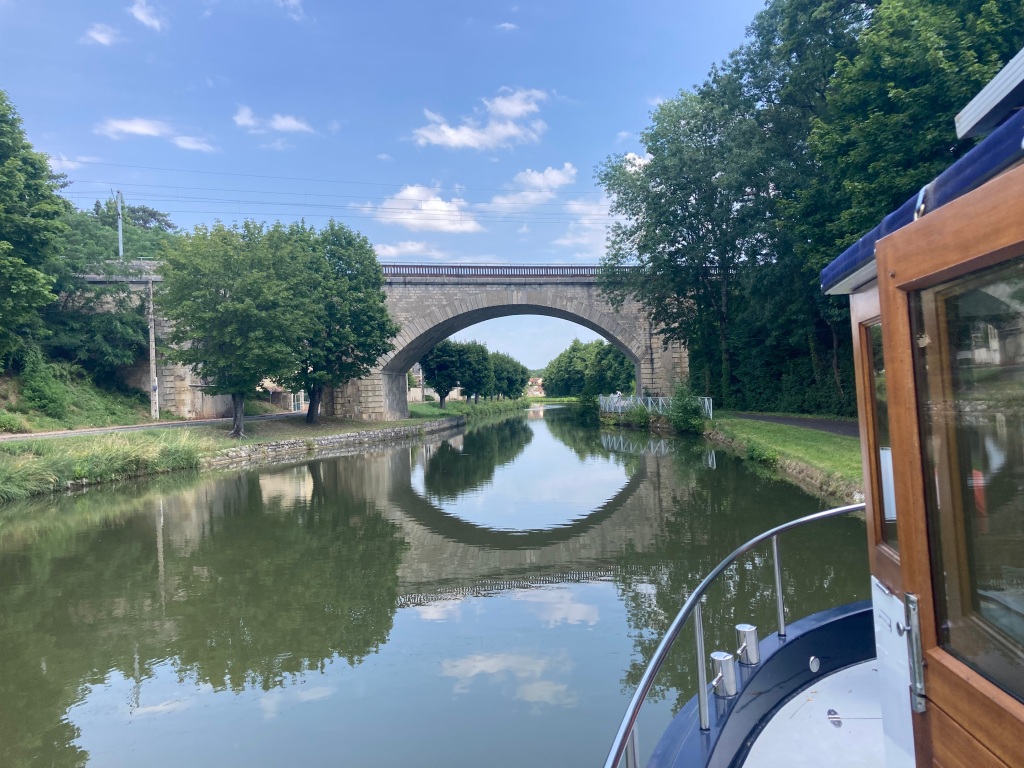
That lock, plus another a kilometre further on, took us down into the town and to the end of the port where we had been asked to moor below the railway viaduct. It is quite a big port and many boats are moored just through the third lock.
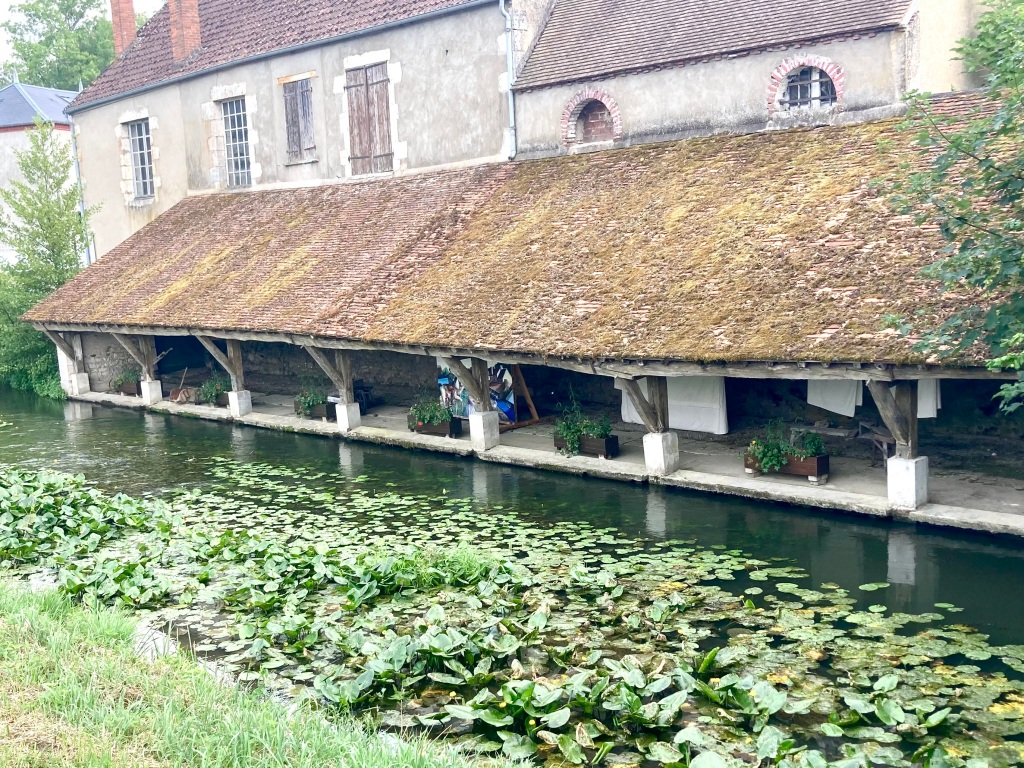
The Briare mooring provided lavoir number 1 – the longest lavoir I have seen in my long lavoir travels. And we were right next to it. I discovered that it is part of what was a public wash house, including rows of lavatories in wooden cubicles, and maybe baths for people inside. I have written off for more information, but not received it yet.
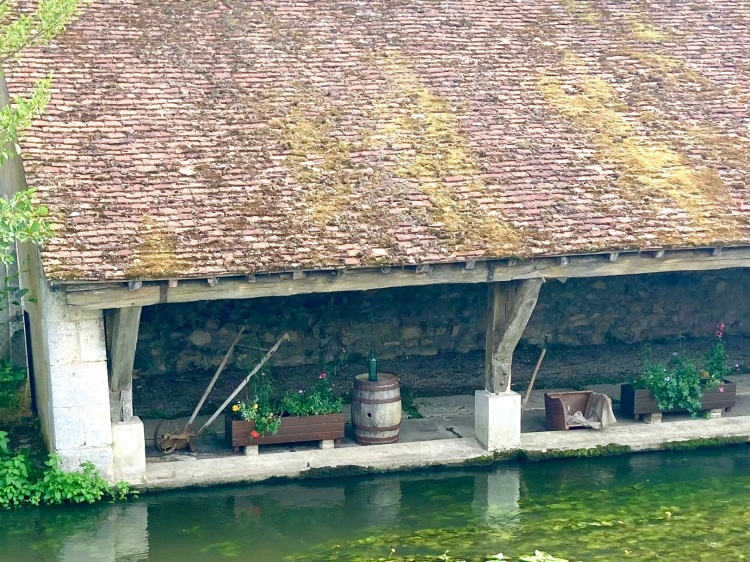
Someone has taken the time to collect some of the everyday items the washer people would have used.
These include 3-sided wooden boxes that they knelt in to keep themselves dry while doing the washing.
The lavoir is in a side waterway to the canal and I noticed at least another two smaller lavoirs along its length; it must have been frothy from soap suds in its day.
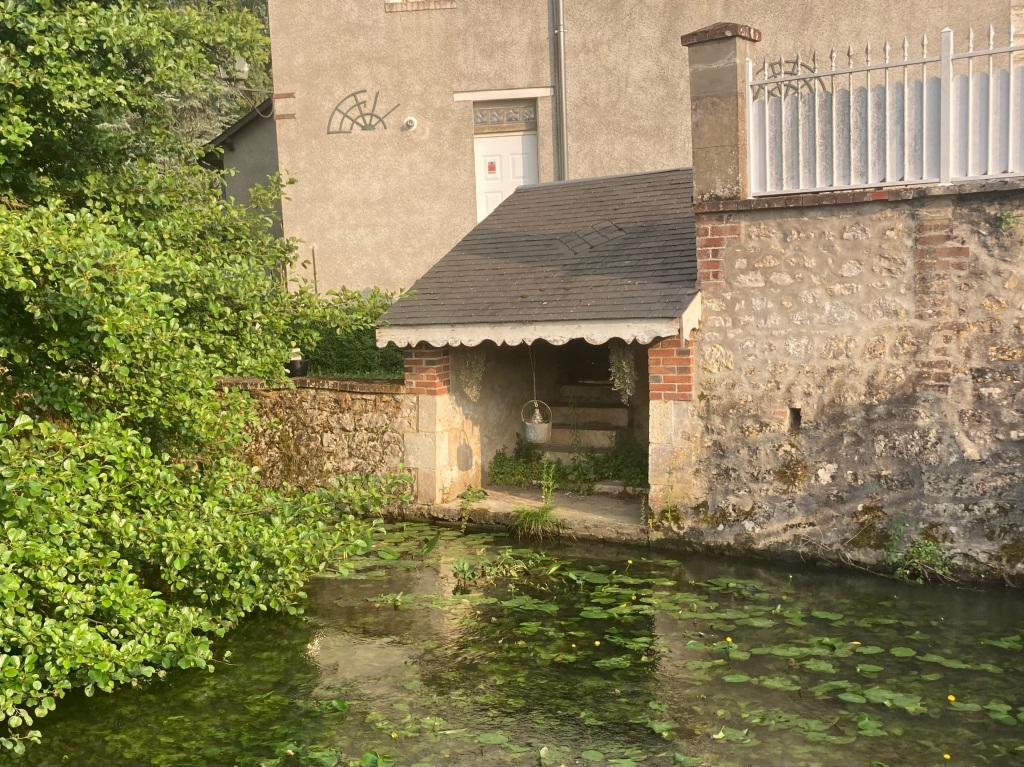
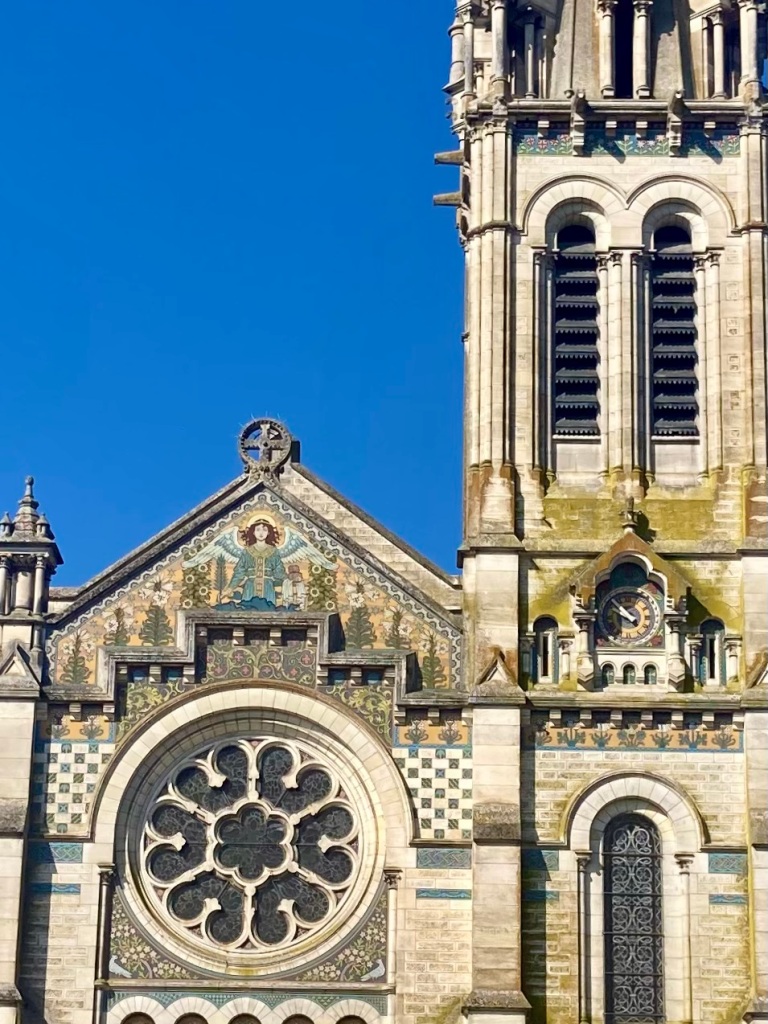
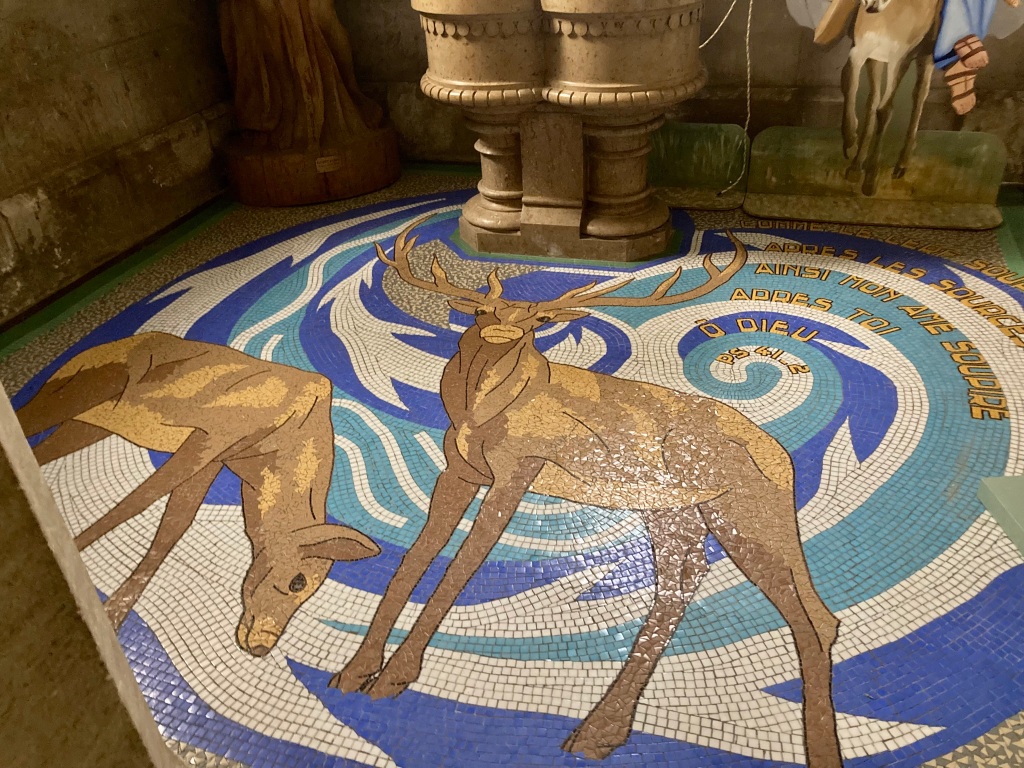

We managed to catch Briare at its quietest, arriving on a Sunday. Our wander round took us past the magnificently landscaped town hall , the church with its colourful mosaics (inside and out), and some other interesting places, but on both Sunday and Monday the town centre seemed so quiet that we thought it was rather a dead town.
We made sure we got back down to the banks of the Loire so that we could see the aqueduct from another perspective. Just behind us when I took this photo is the ‘ancien canal latèral’ – the canal that was used by barges before the aqueduct was built. They had to make the sometimes dangerous crossing of the river further upstream, from Chatillon to Combles and then join the old lateral canal down to Briare.
Then come Tuesday, the day before we left, everything opened up – bars, shops, restaurants – and it is quite a vibrant town!

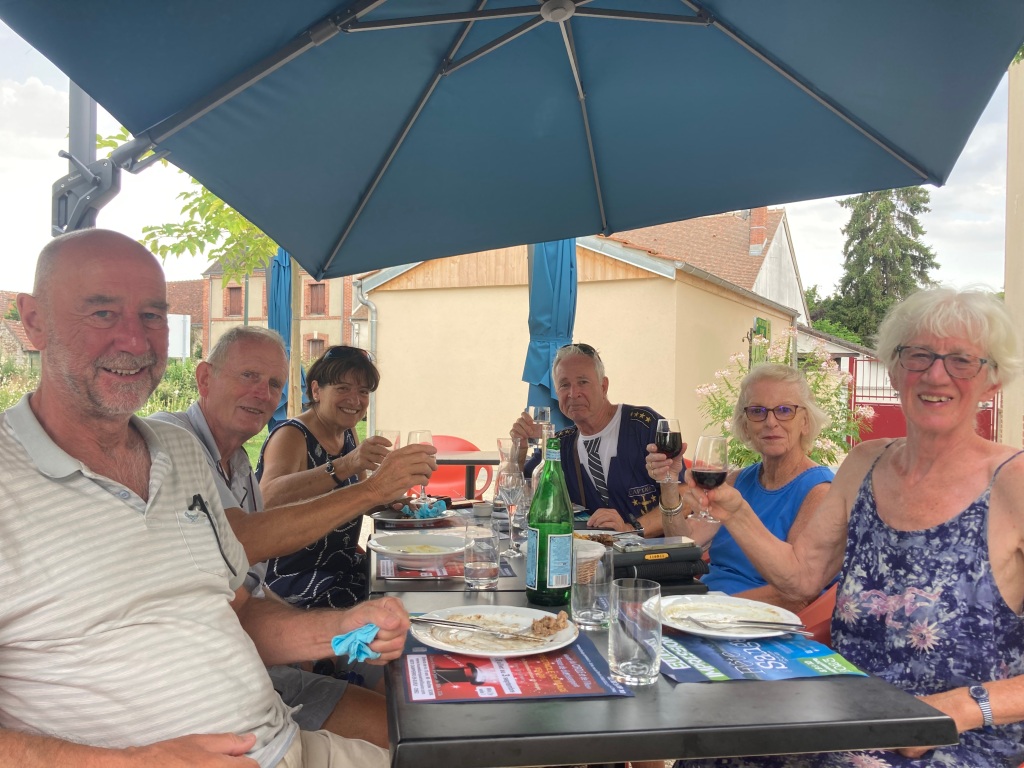
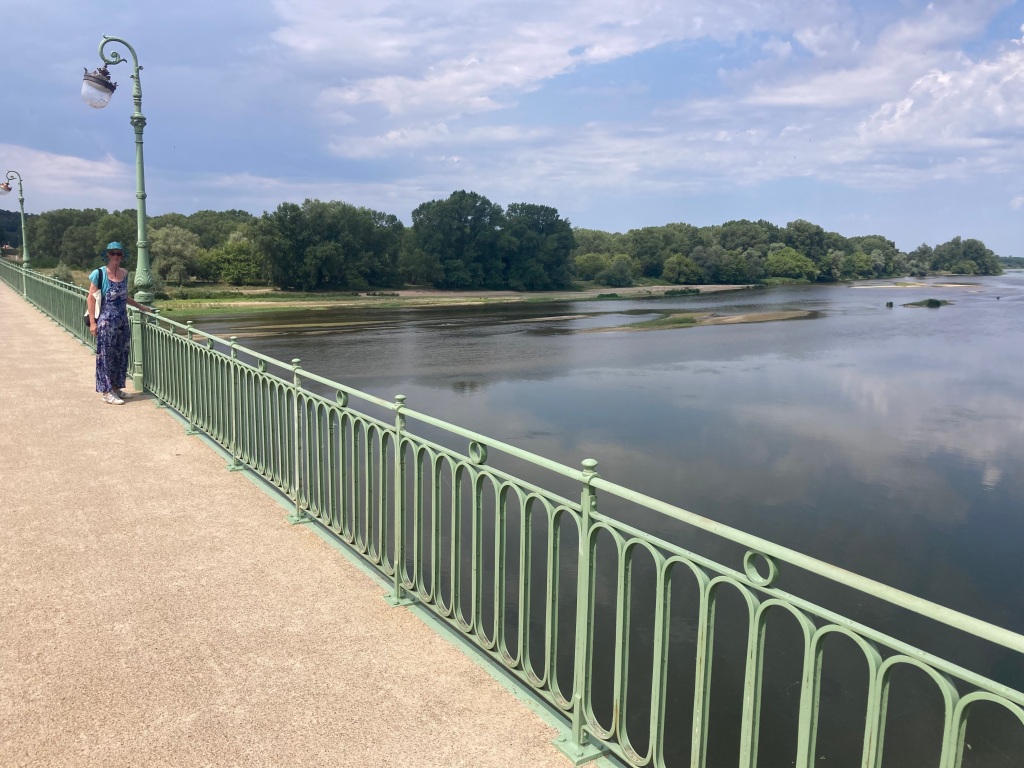
We had a lunch date for Tuesday, at a good little restaurant the far side of the famous aqueduct so we walked over it to meet our friends and have a good time meal.
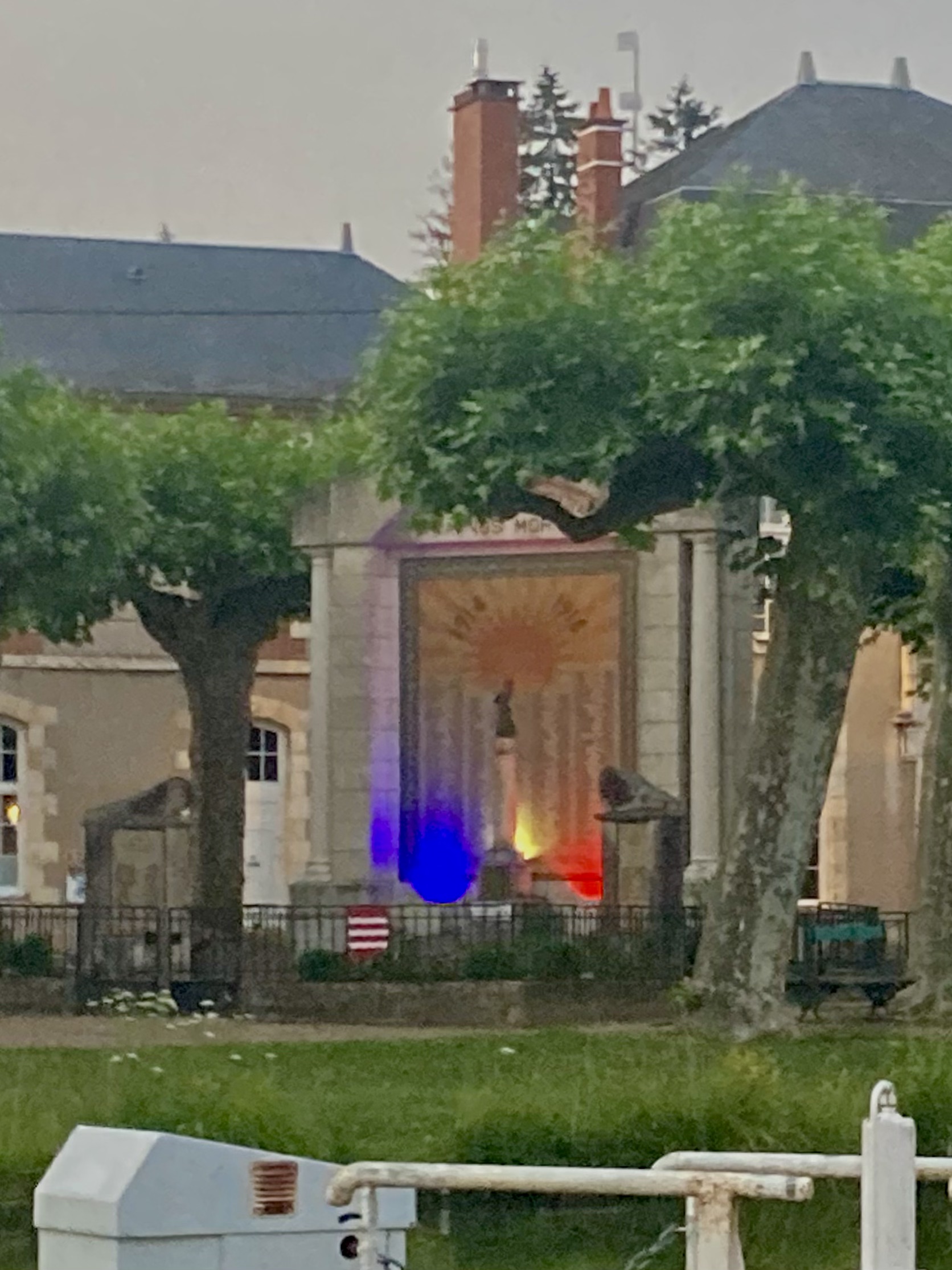
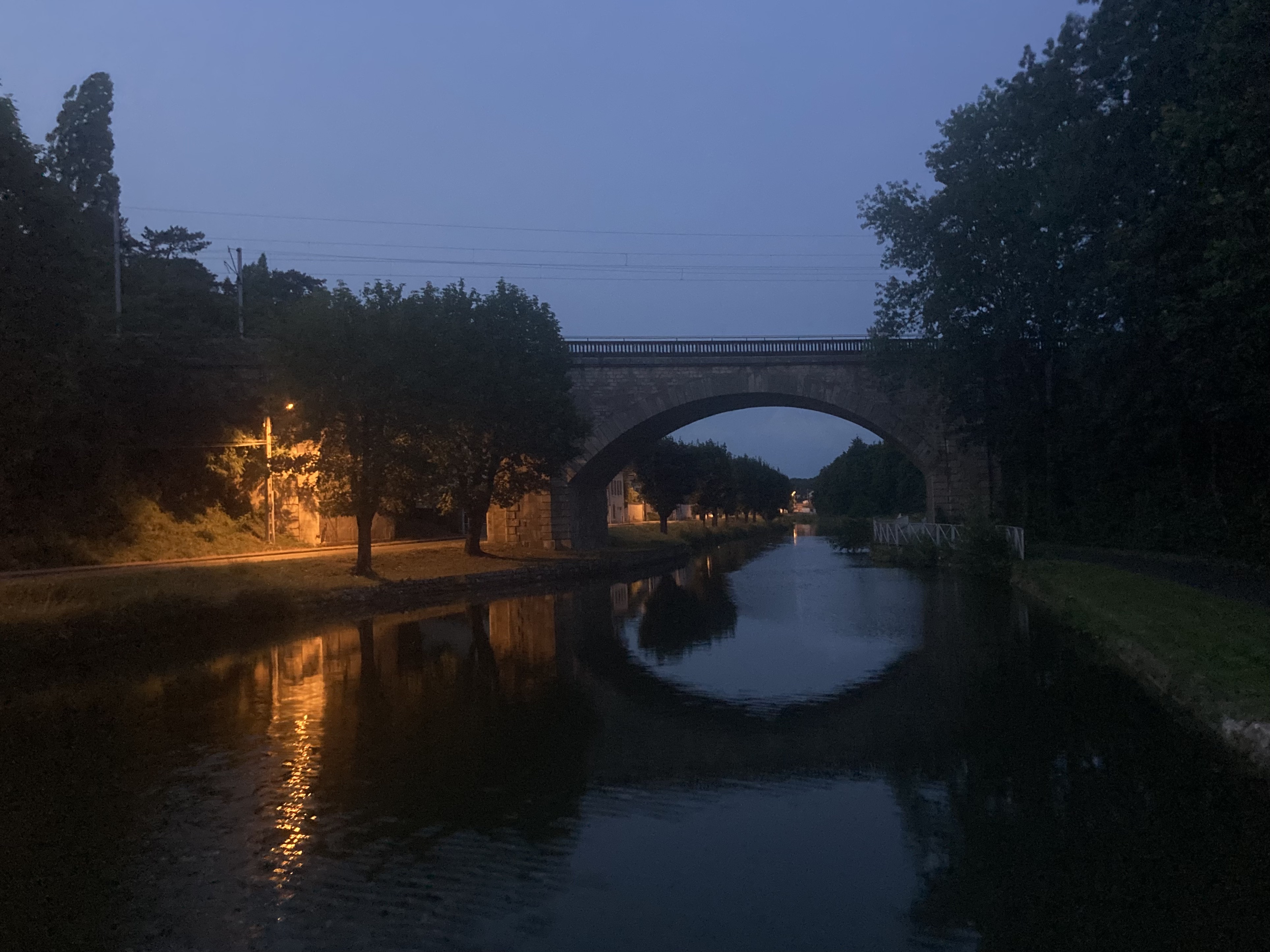
Then that evening a final walk round the port to appreciate it in a lively mood, and to appreciate the lights on the buildings and monuments, before a suitably early night.
Ouzouer-sur-Trézée
We had decided to leave on Wednesday, first saying good bye to Danish, UK and Australian boat friends who we had met along the Loire.
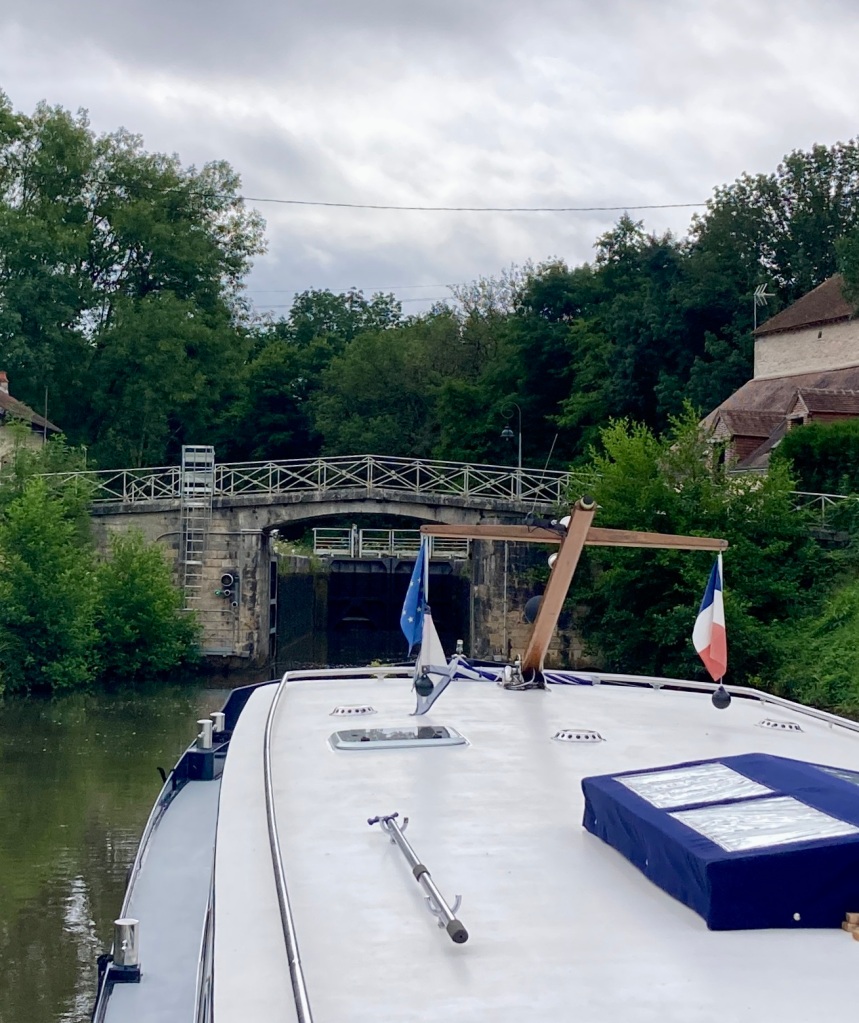
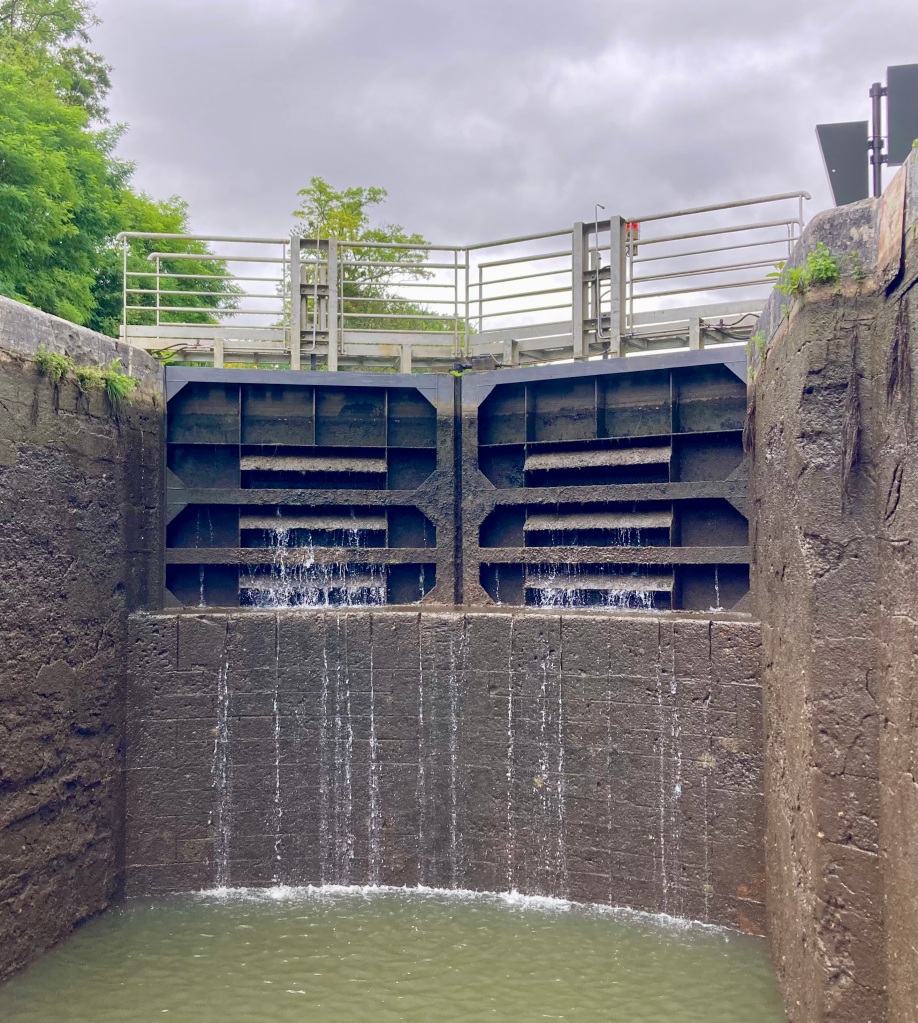
Our journey began by retracing our route of 3 days before, up through two locks to the junction with the Canal latéral à la Loire. The first lock, la Place, is only 2.3m deep and next to an old water mill. The second, la Cognadière, is deeper, 4.27m, and manned by a very helpful élcusier (lock keeper) who makes sure boaters can get their ropes onto the bollards above.
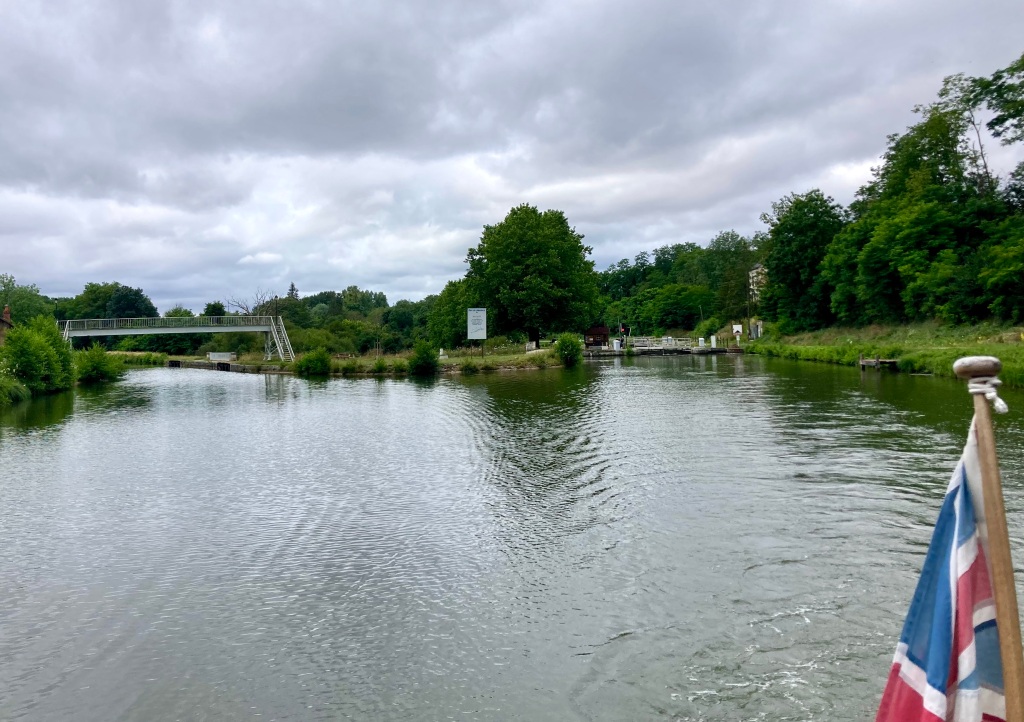
Leaving la Cognadière (on the right) we could look back and see the Latèral à la Loire (on the left) winding its way round to the aqueduct. It is an unusual shape junction, and interesting to negotiate at times!
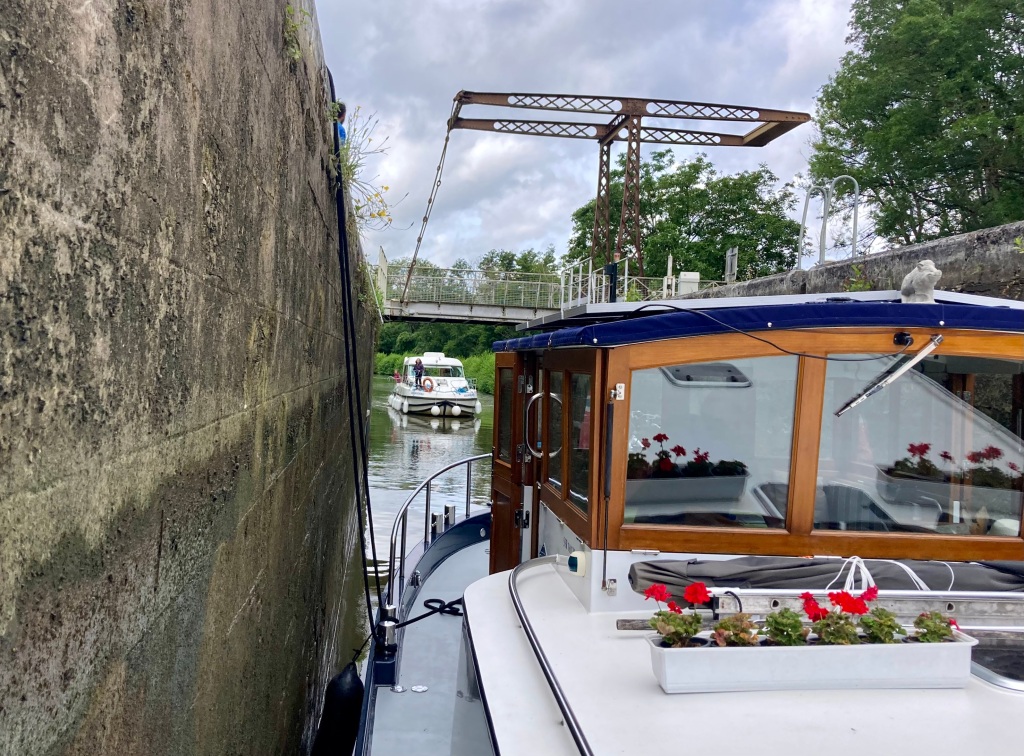
We had just two more locks that day to a hopeful mooring at Ouzouer, and were joined in them both by a family on a holiday boat.
Wild flowers abounded, including on the lock quays.
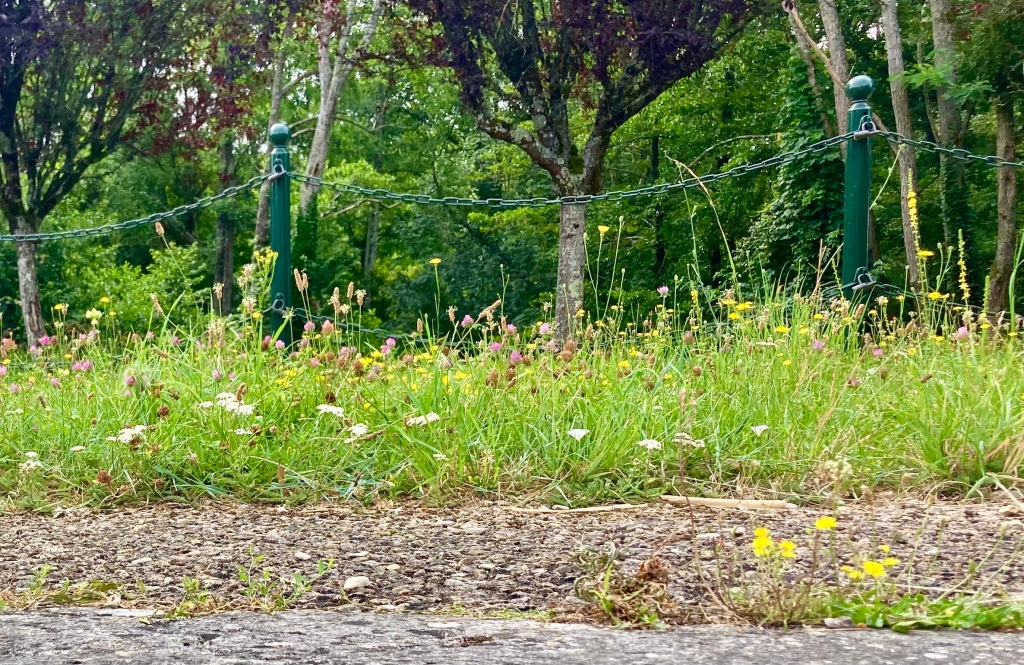
As always we had a Plan A and some other plans if needed. We knew that we could not stay at Ouzouer on the Thursday night (the canalside was taken over for fireworks on July 13th; this happens a lot in France on the eve of their Bastille Day celebrations.)
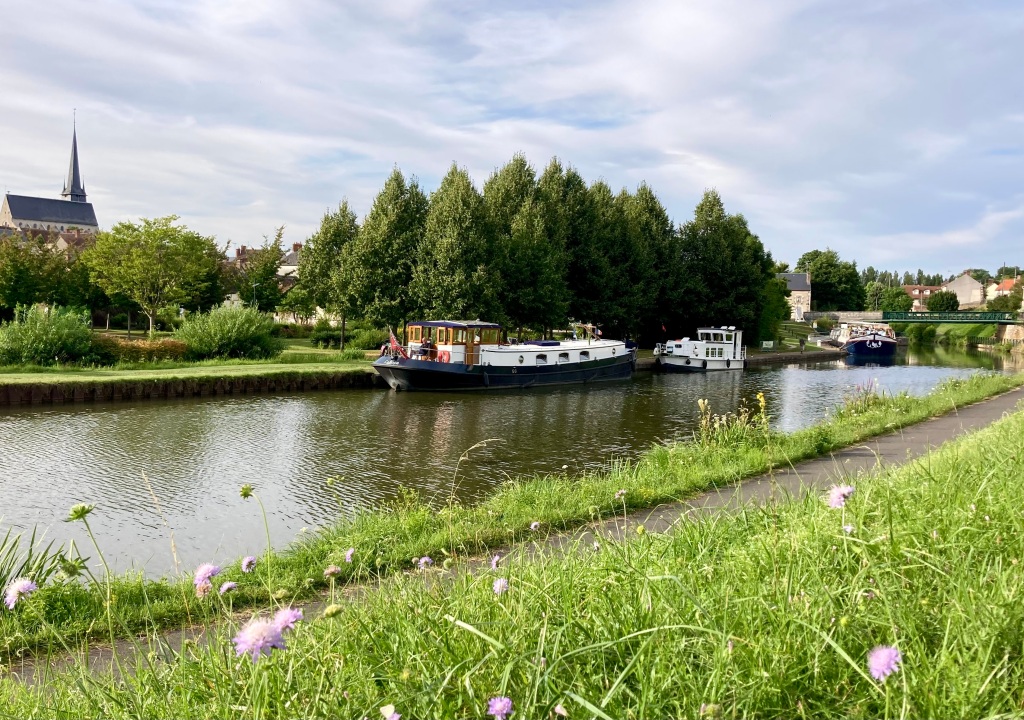
But we were fine for the Wednesday night and tied up comfortably next to a small park on the edge of the village.
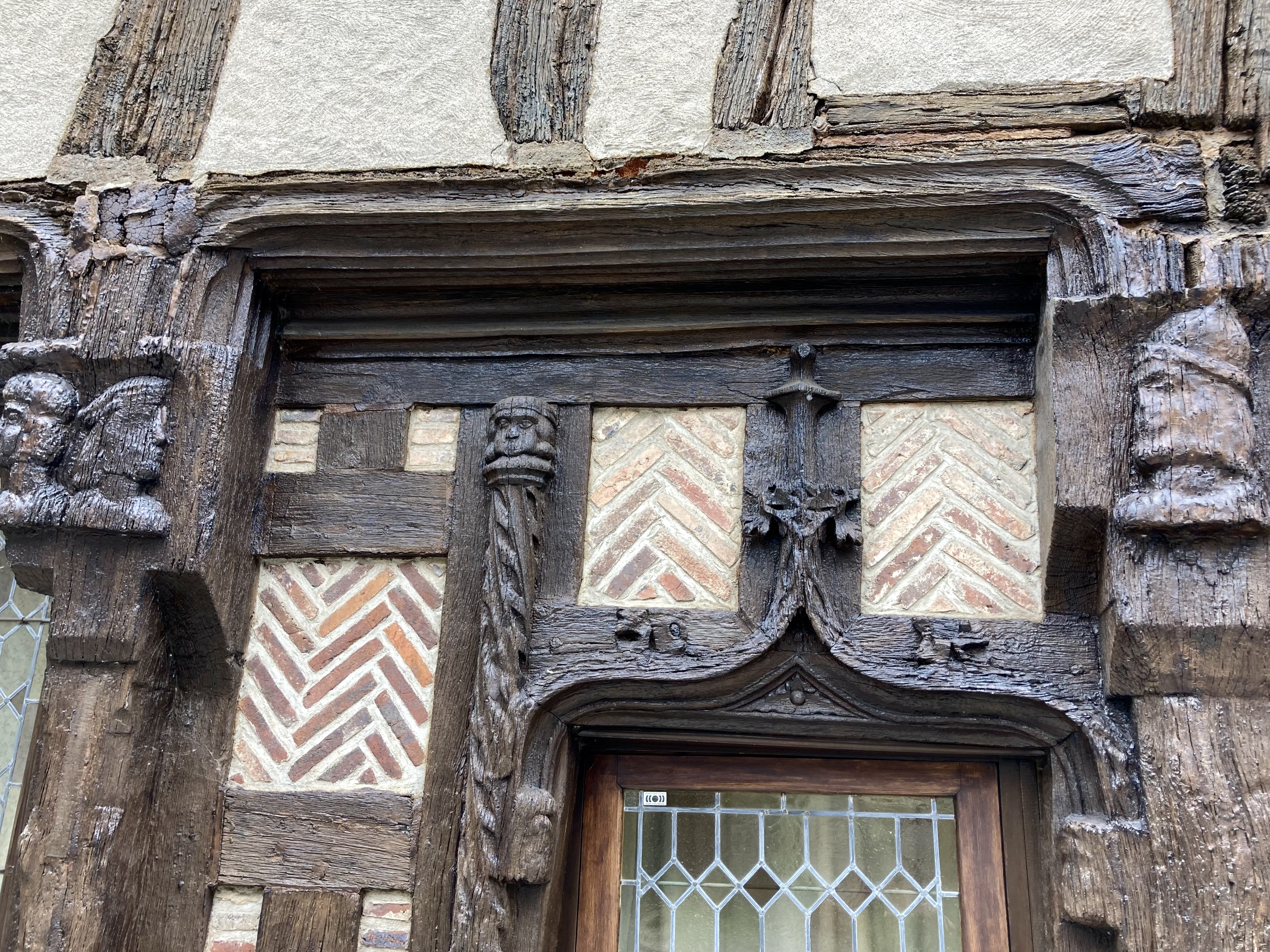
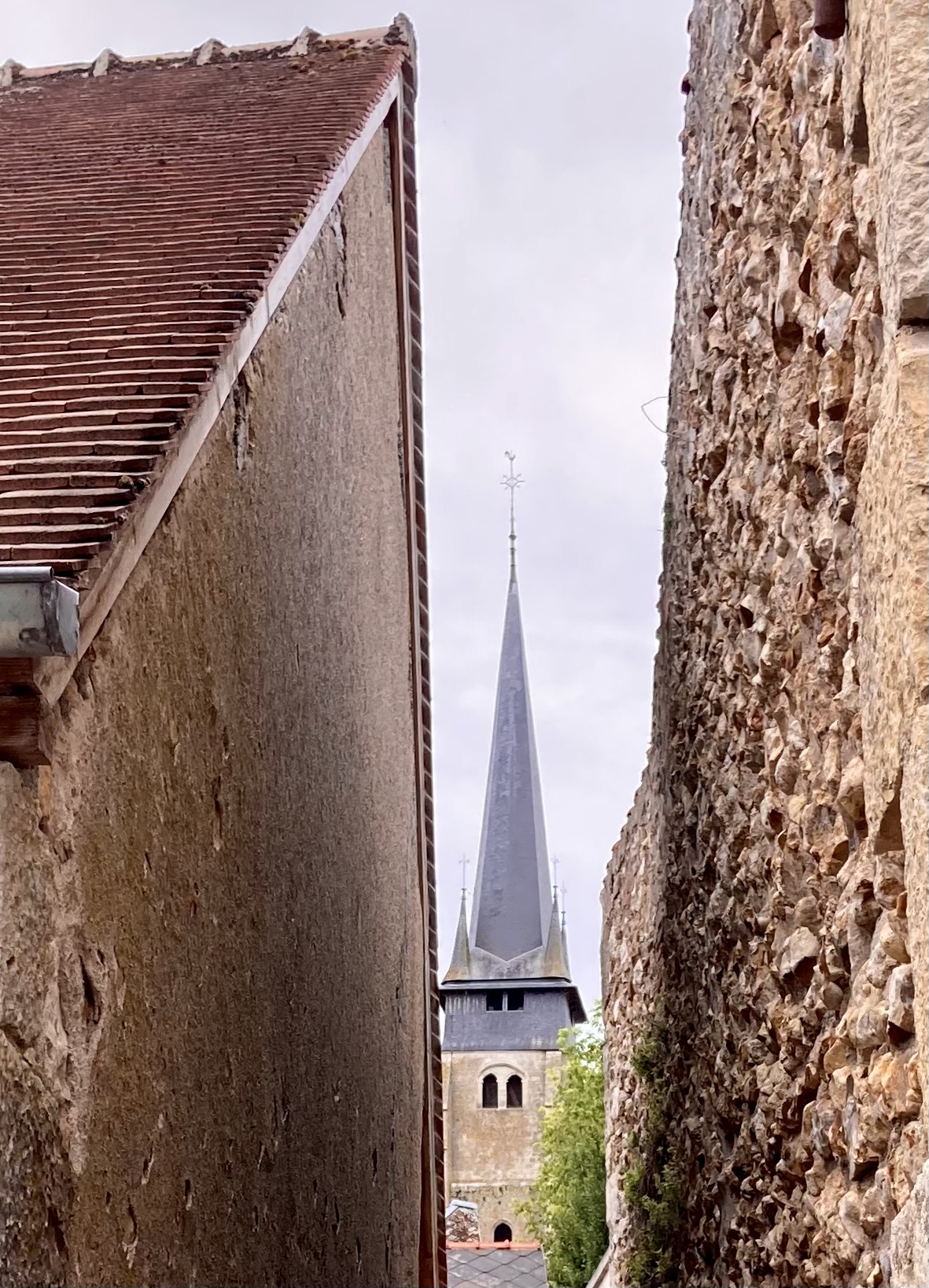

I am constantly impressed by the old houses and other buildings in all the villages, and at risk of repeating myself. Let me just say that in Ouzouer there were two or three that caught my eye.
And sadly I also couldn’t help but notice how what had been a busy little high street was now a row of closed shops and businesses. The one big ray of hope was Epicerier Tréz, down near the bridge, where a jovial Frenchman is running a very modern looking small food shop, stocked with fresh milk, cheese, butter, meat etc from nearby farms, fresh fruit and veg and an interesting range of both basics and specialities – food and drink!
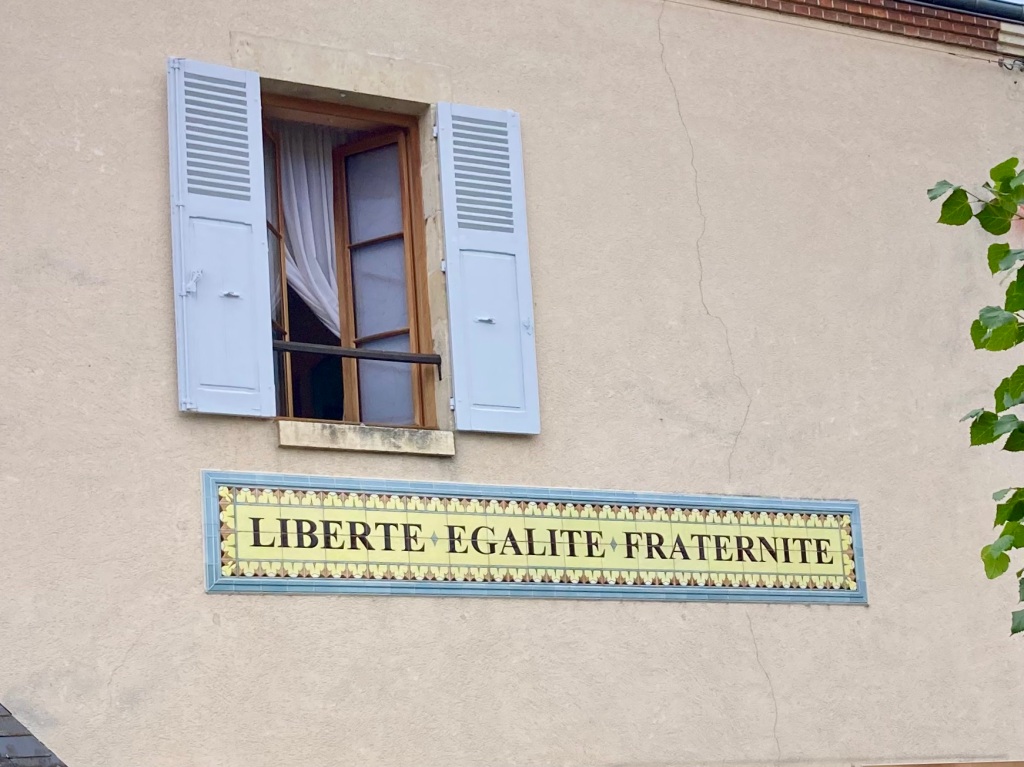
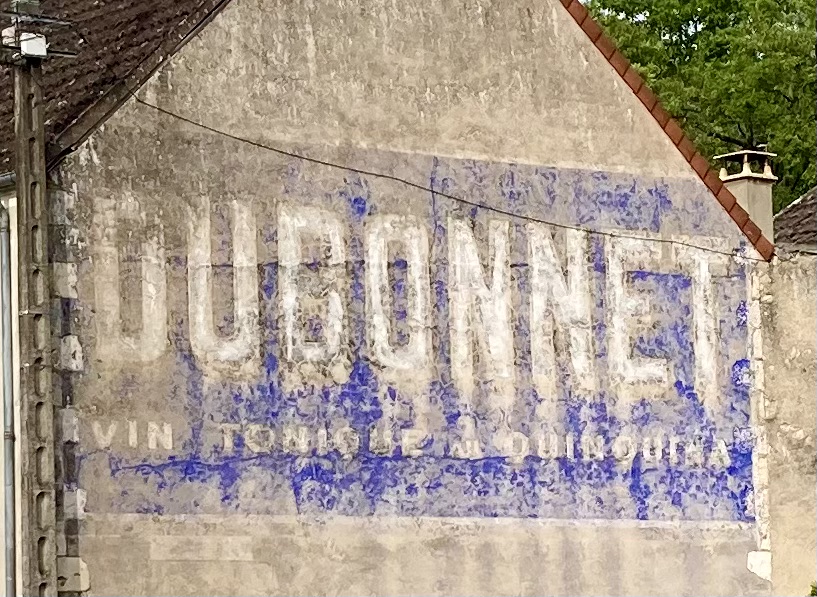
My evening stroll brought in a couple more photos that capture the spirit off France.
Etang de la Gazonne
We were looking forward to our two nights at the top of the canal where a largish lake acts as a reservoir to supply the canal. The mooring is along a stretch of land about 12′ wide that separates the canal from the lake – you can imagine how wonderfully scenic and full of birdlife that is.
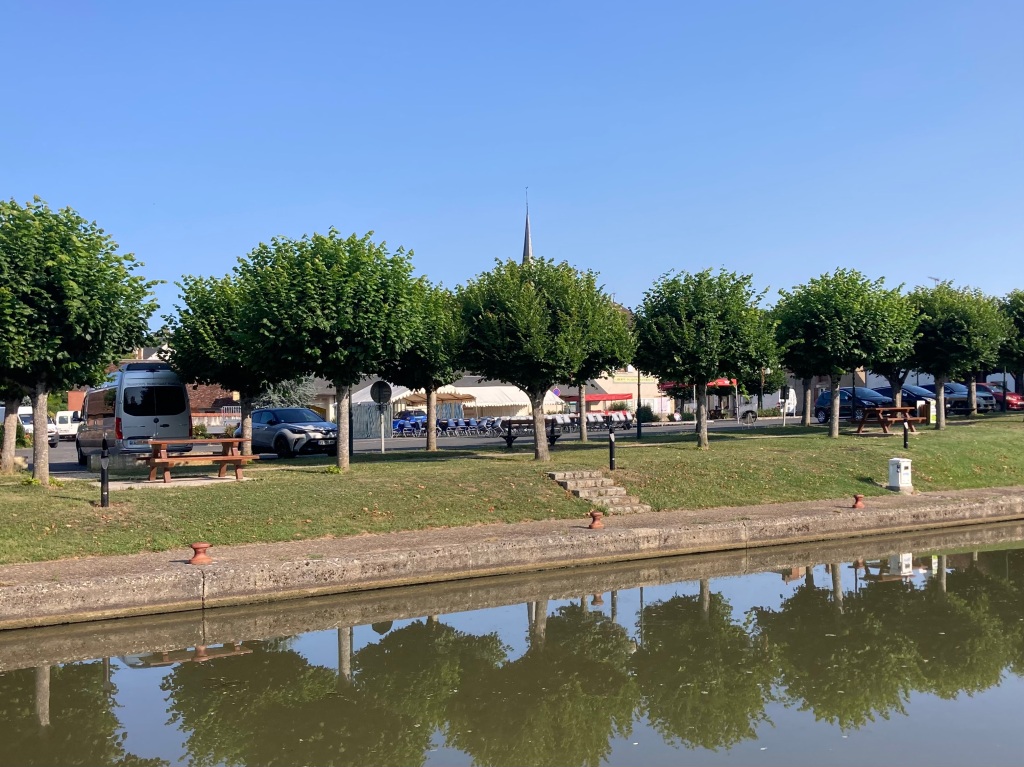
Leaving Ouzouer in the morning we saw the village getting ready for its celebrations.
A stage, beer and food tents, and the typical rows of long tables with chairs either side were signs of a good night ahead.
It seemed strange after just one night on this canal to already be heading for the summit. Today’s 6 locks, 4 kms and 21.5m rise took us to the top – and took us three hours to accomplish.
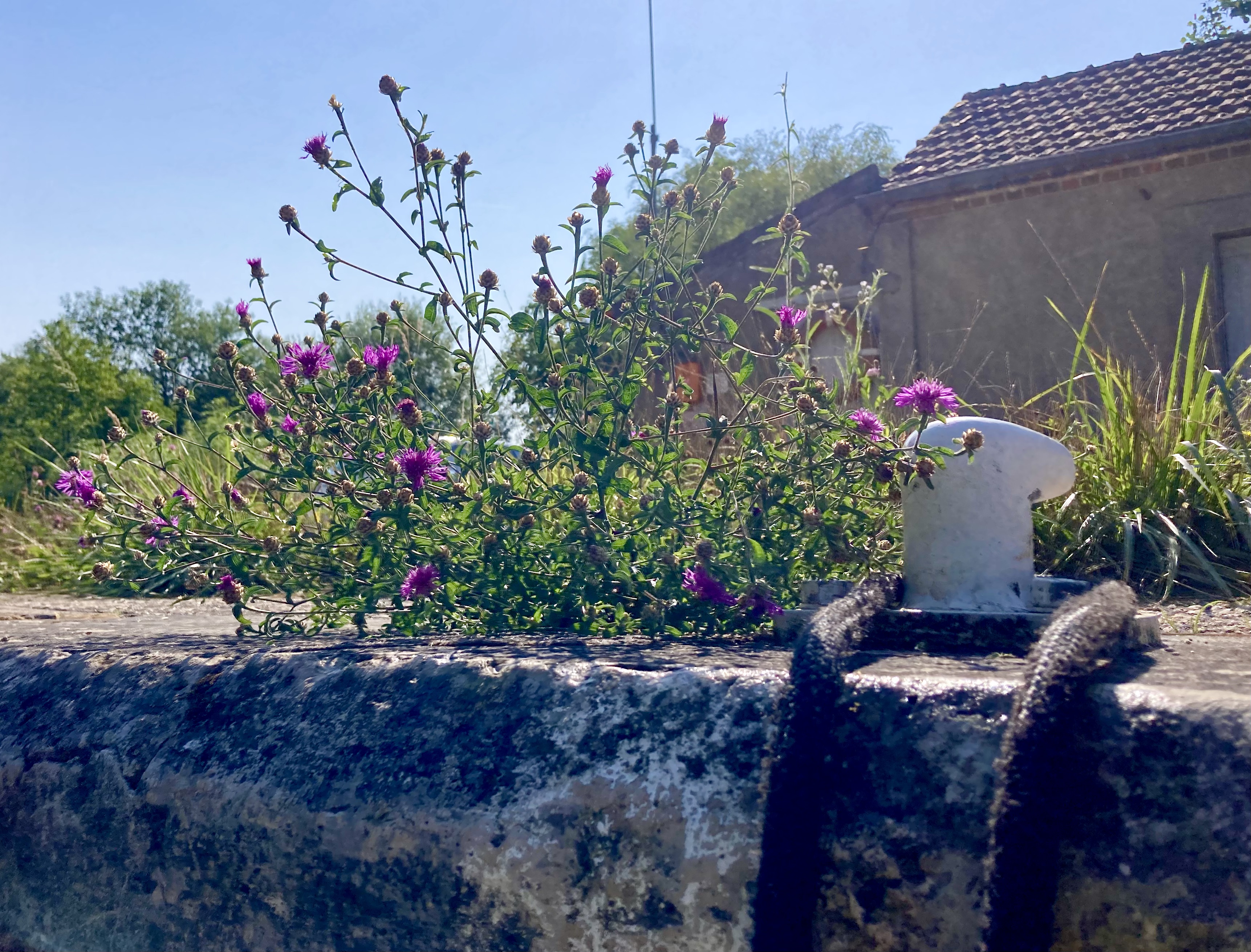
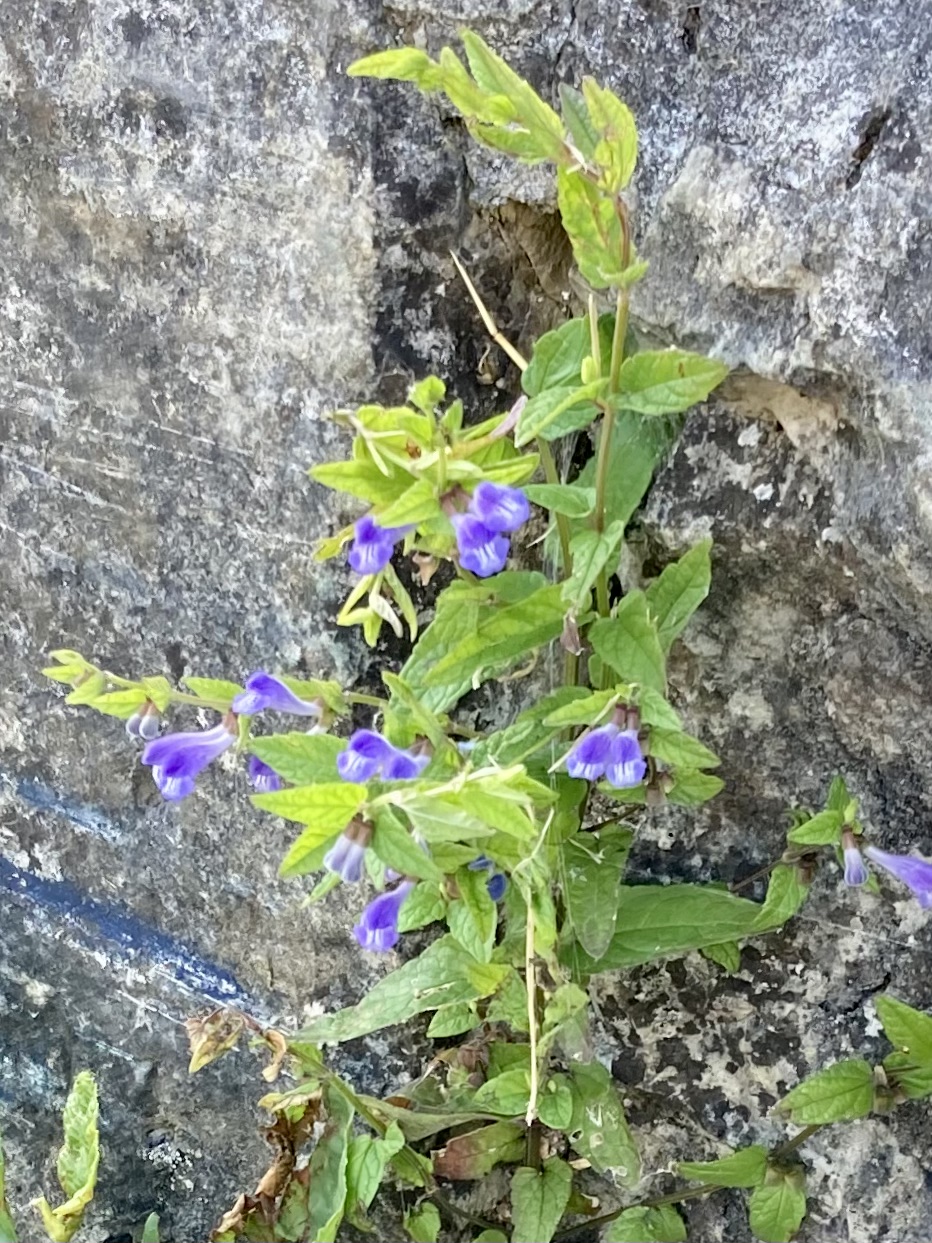
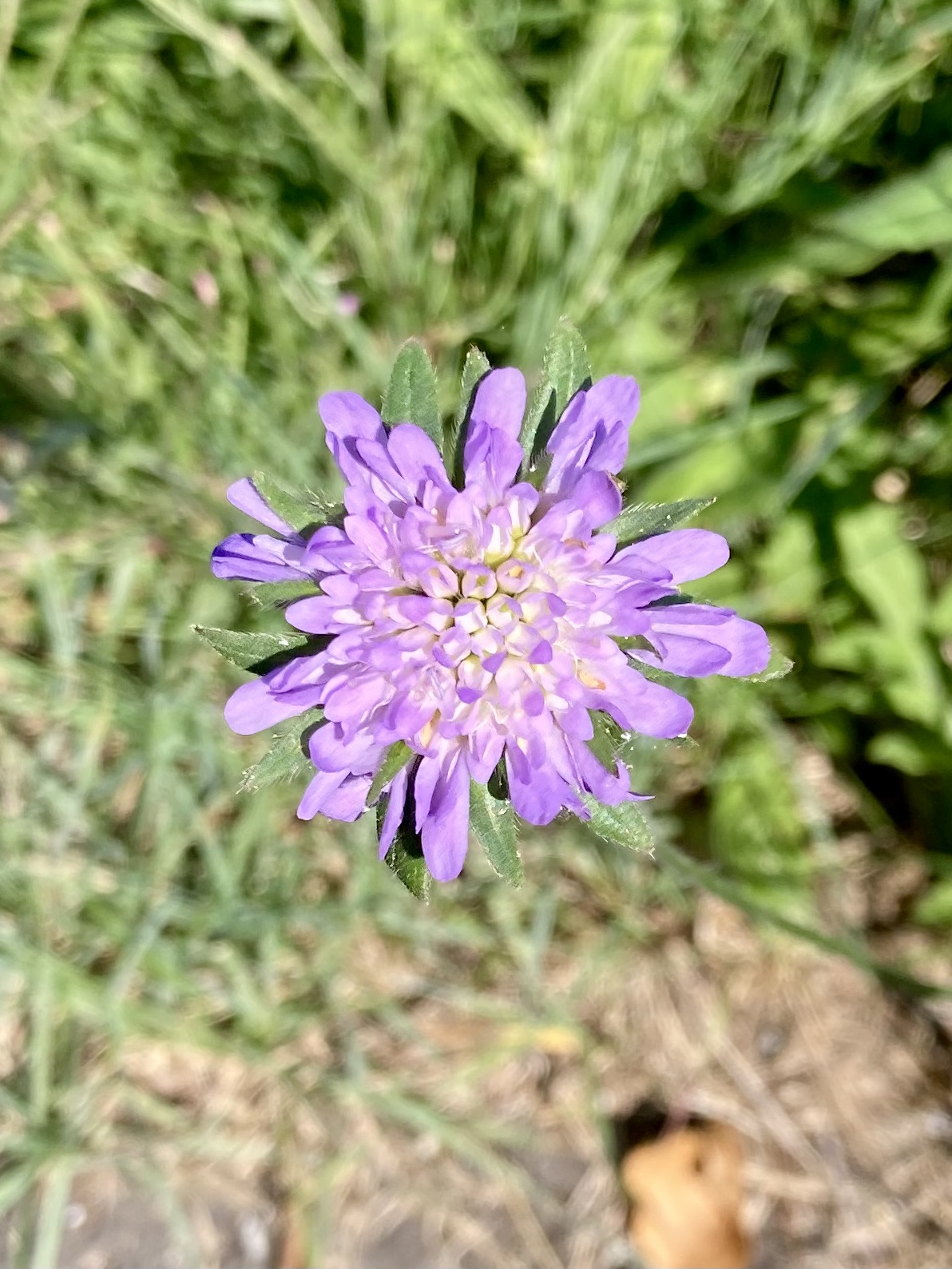
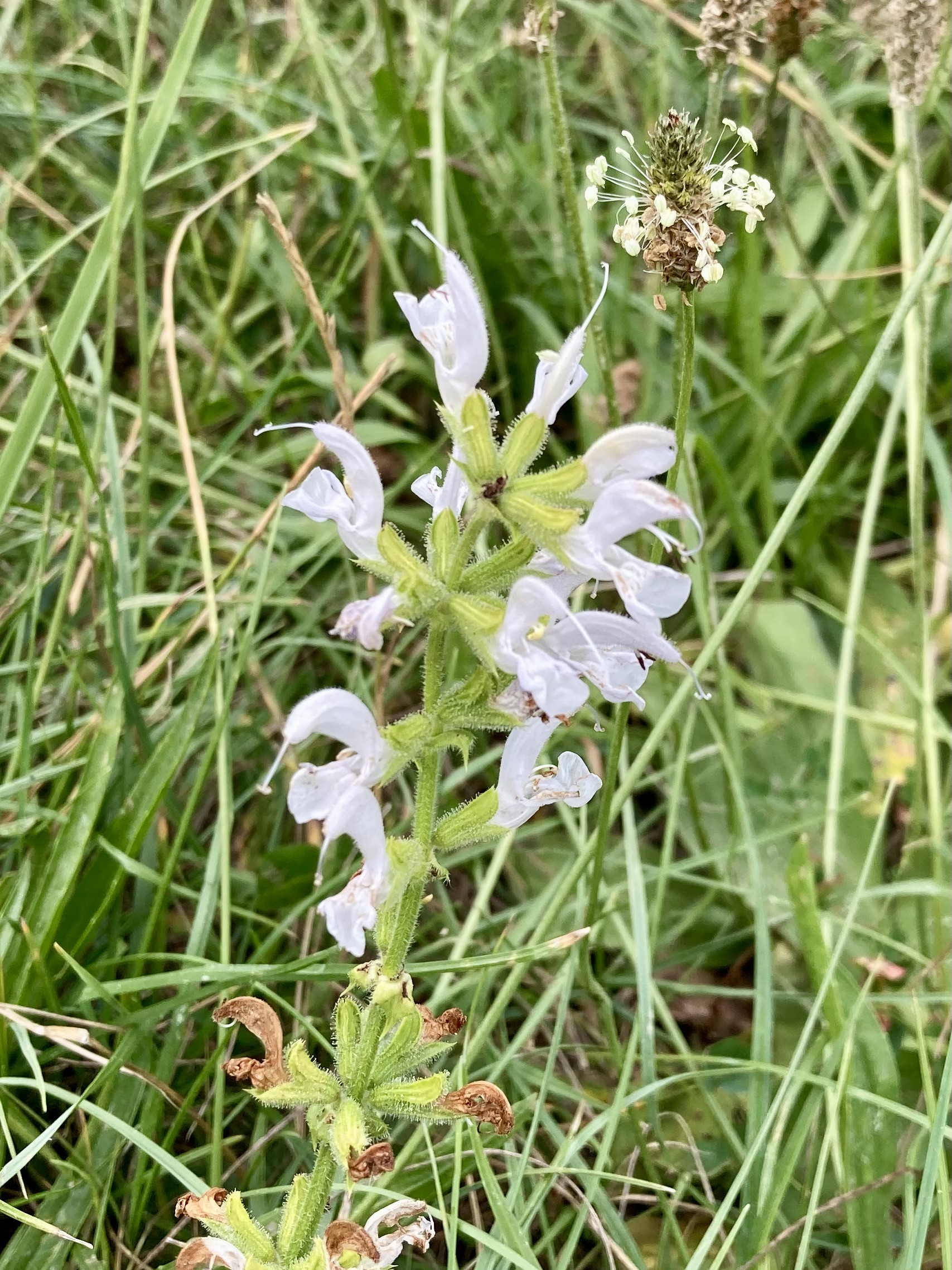
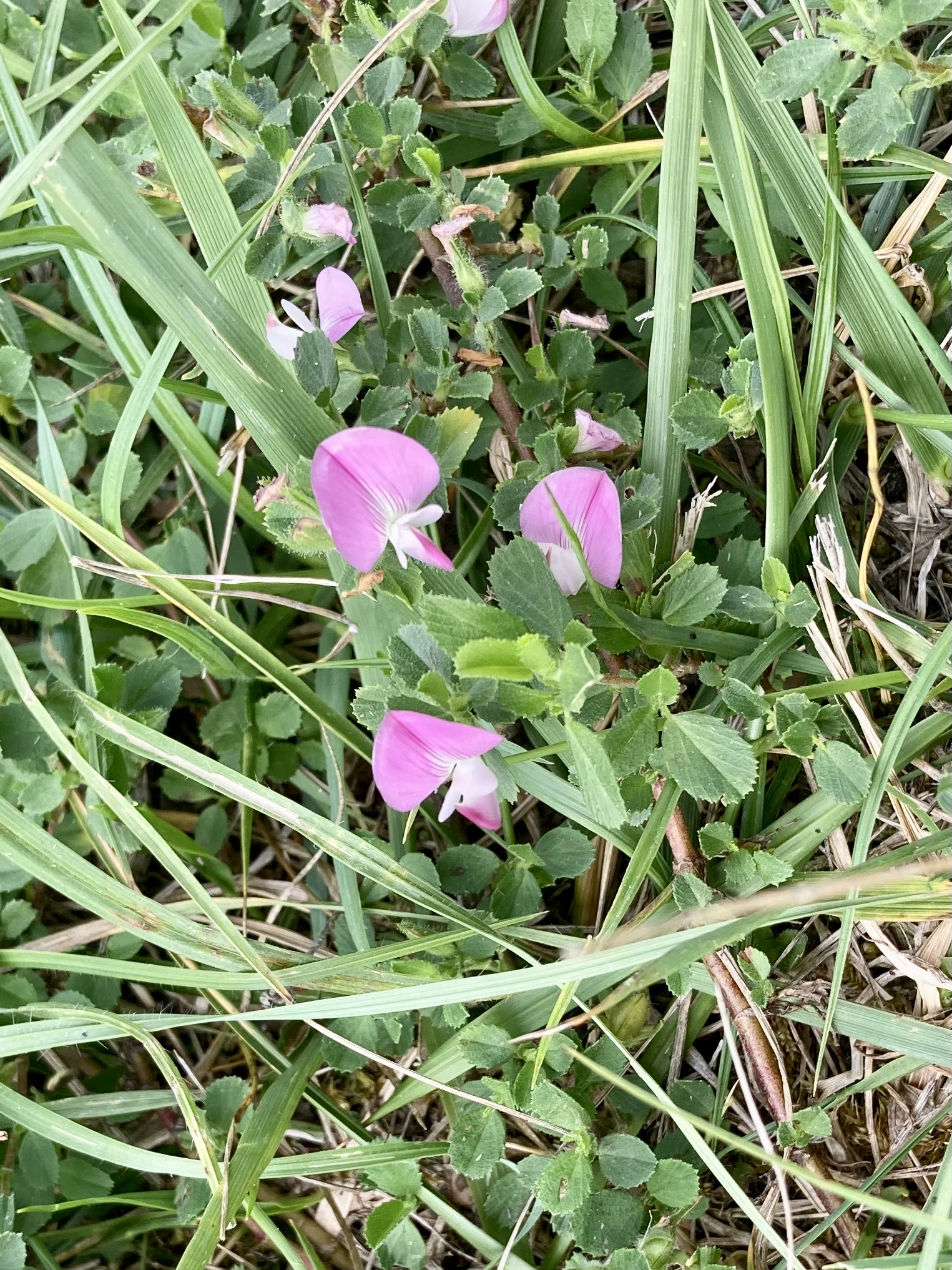
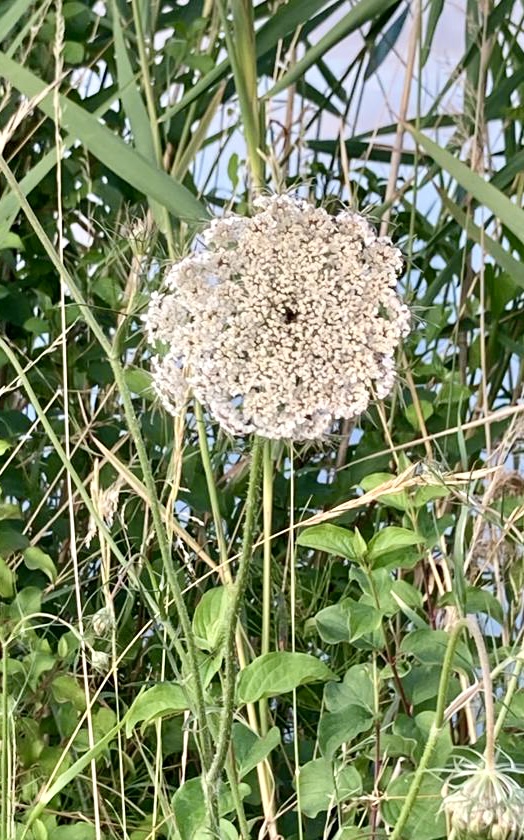
Before I describe something of the locks we went through I am sharing some of the flowers along the way – poking their heads above the grass everywhere. Most, if not all of them, are common flowers, but striking in their impact.
And now the locks.
We had been grateful of éclusier help in the deeper locks going up, but we were on our own for the 4m lock leaving Ouzouer.
The ladder was Captain’s end of the boat so he got to climb up this time.
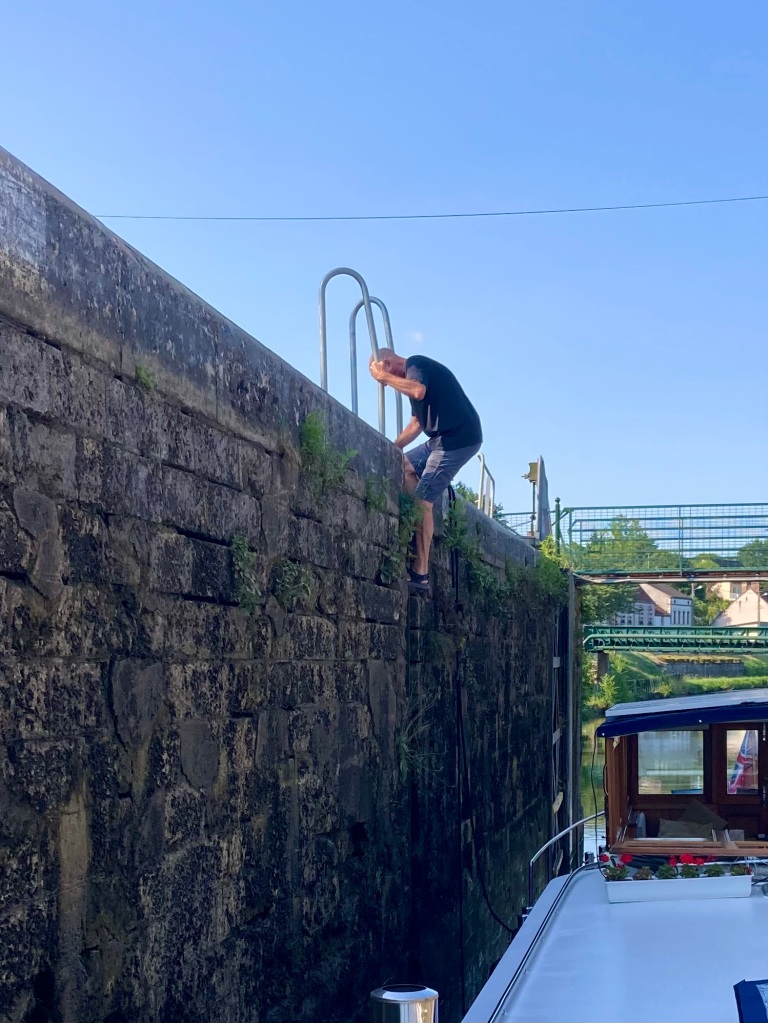
On this canal we had green poles to set the lock operation going – other times it is a blue pole, or even a blue rope.
When you are going up you are grasping a pole that has spent half its life under water, so always muddy, sometimes weedy …
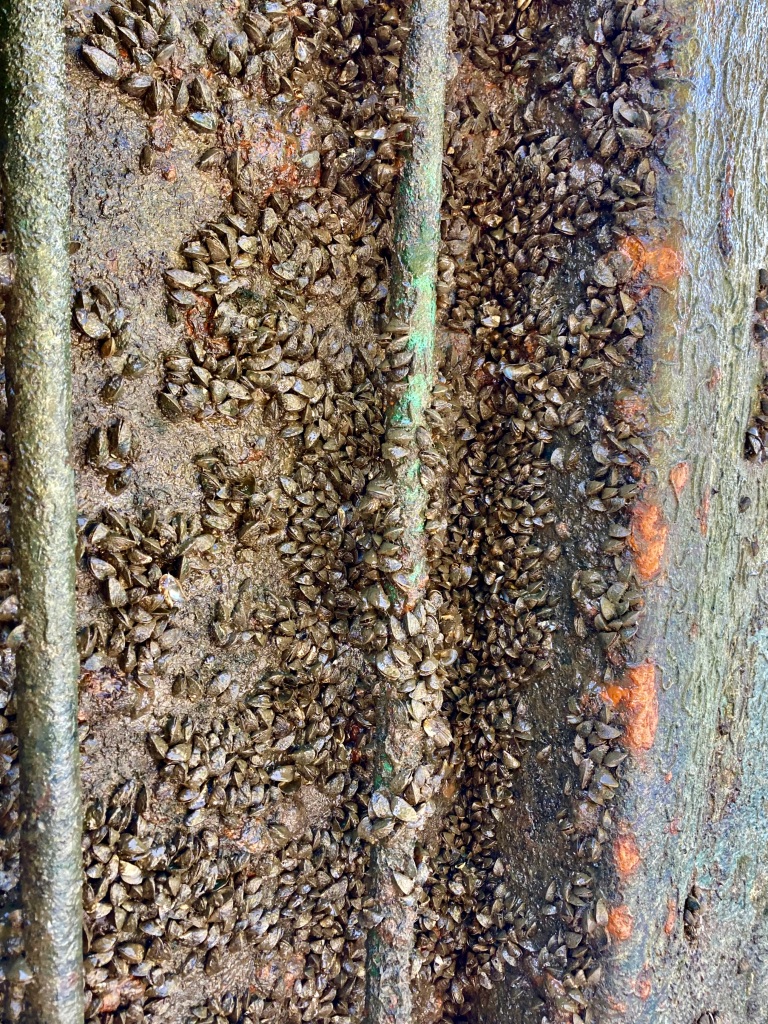
… and sometimes encrusted with fresh water mussels!
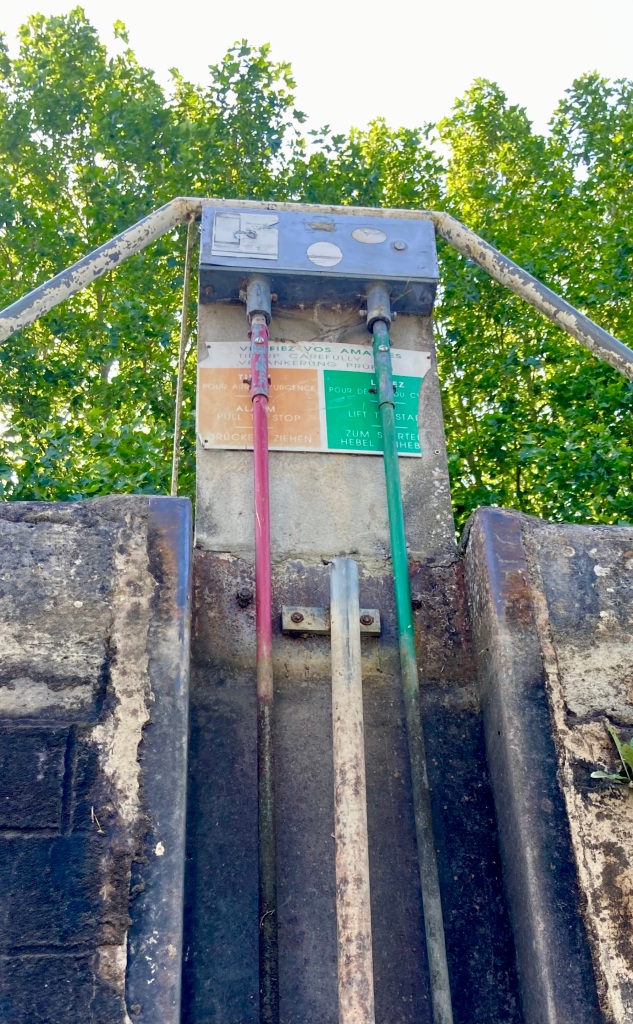
Most of the locks have these lift bridges next to them.
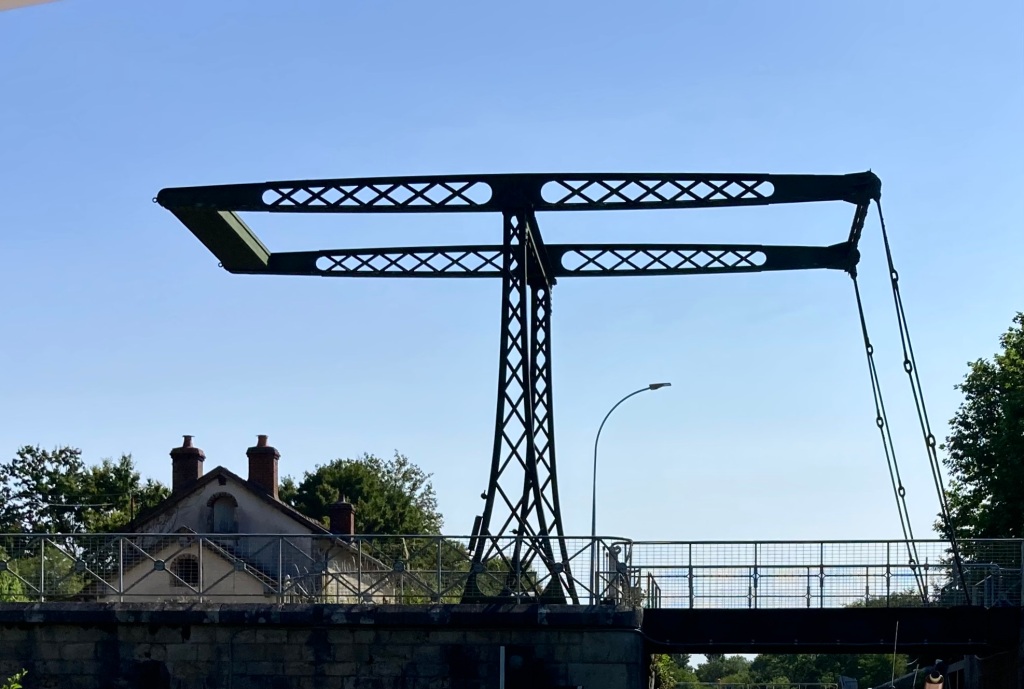
Calliope’s height does not require these to be raised, but I guess some of the hotel barges and maybe the occasional commercial barge are too tall to pass underneath.
I love their architectural shapes against the sky
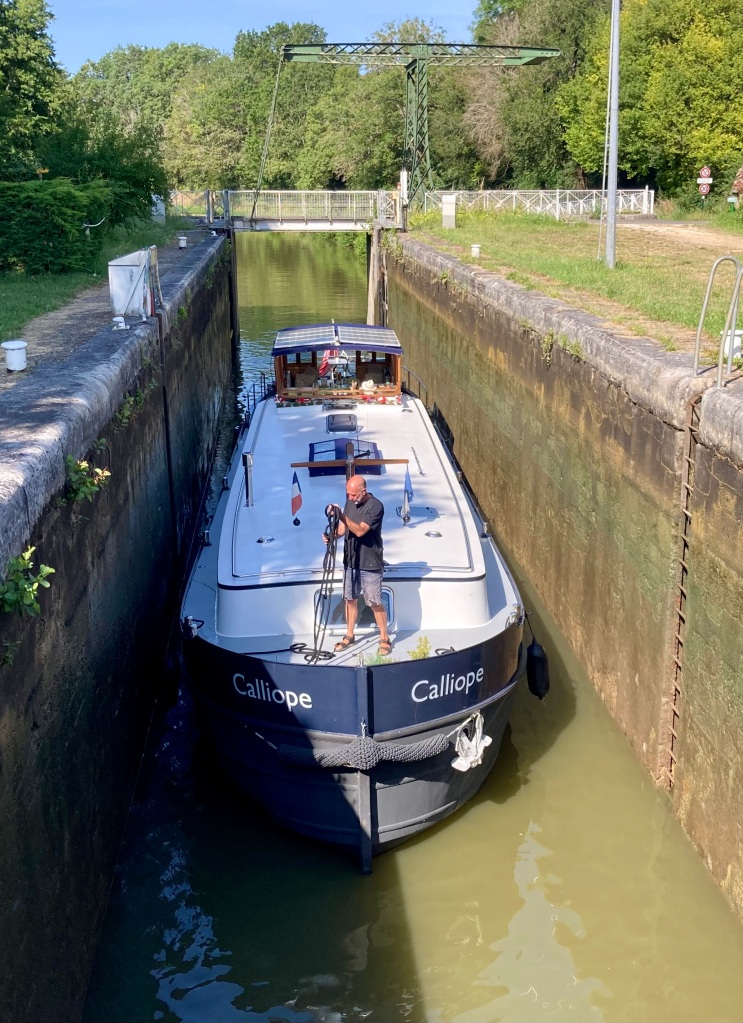
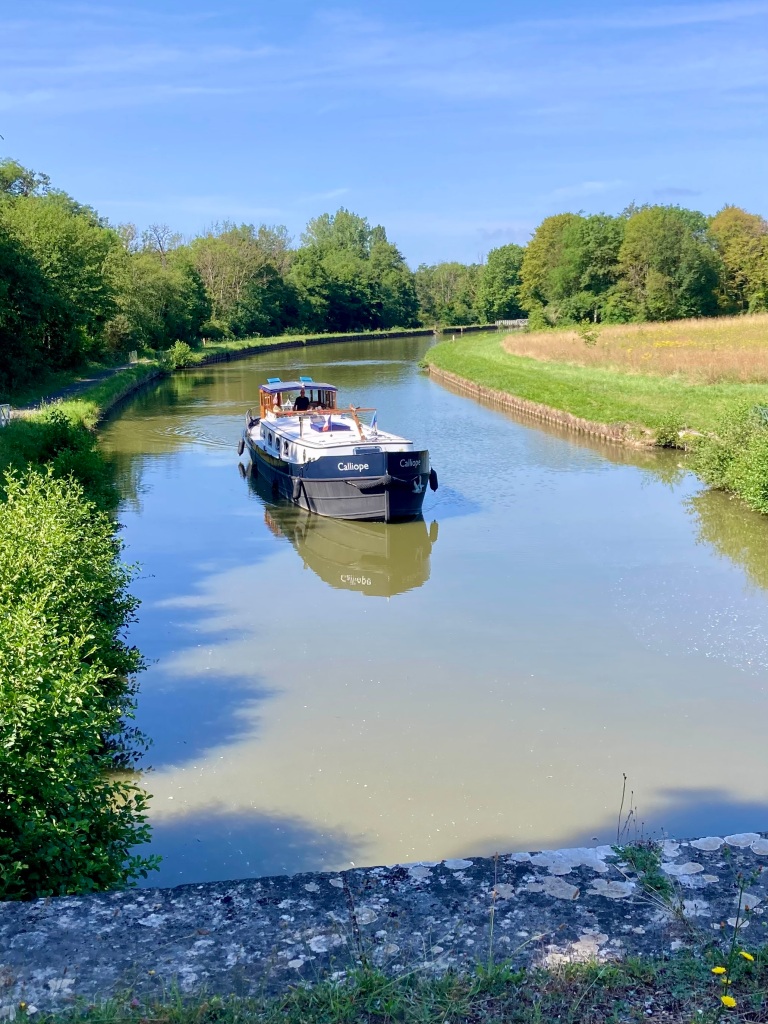
The last few locks were close enough together for me to walk from one to the next, always being above the lock to take the ropes. That made it much easier! It is also a good vantage point to take photos of the sleek Calliope.
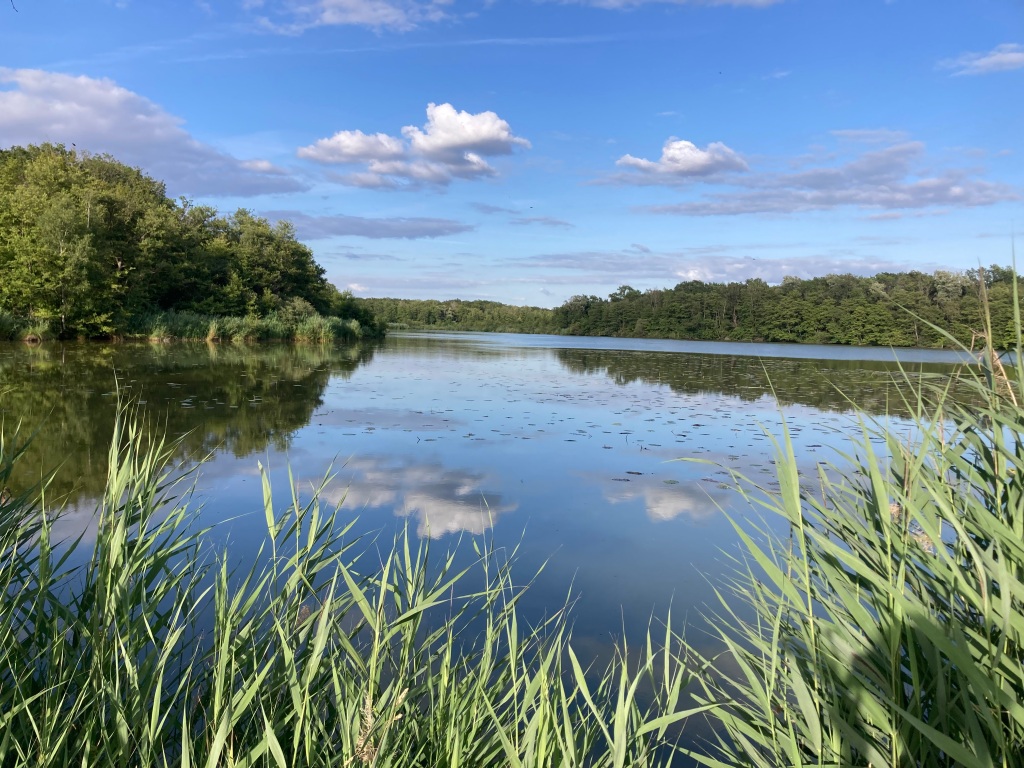
Then the étang (lake) – no houses to photograph up here; just the water and the sky.
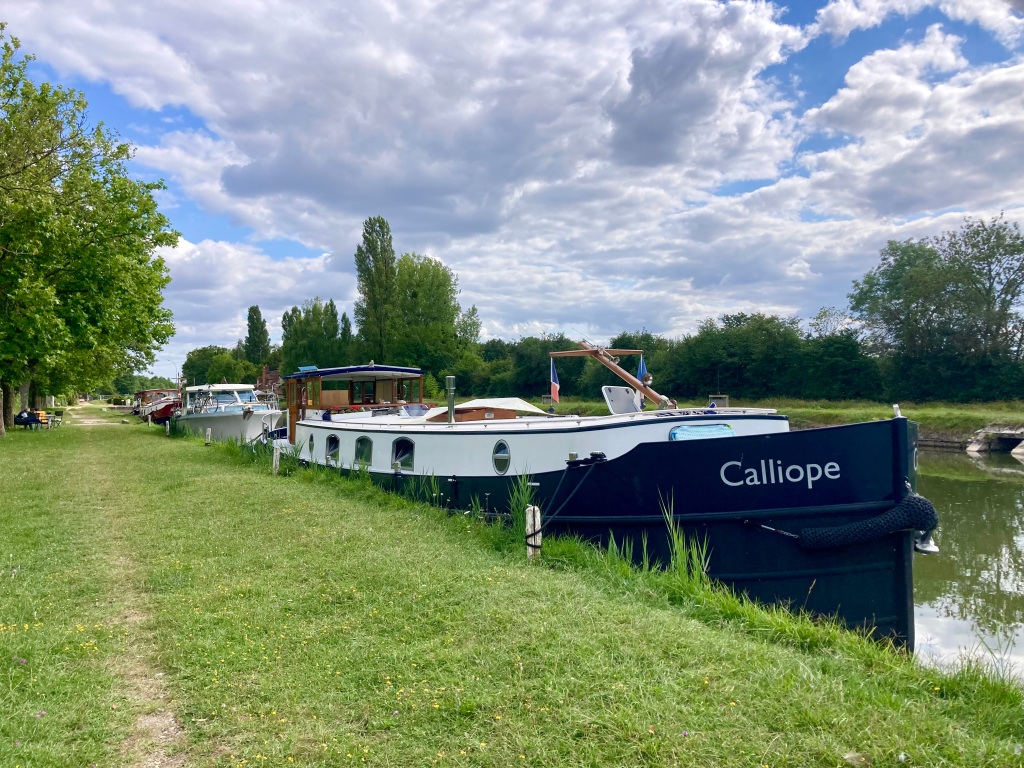
We were sharing the space with two other boats and their peaceful owners; a very tranquil time at the top was had by all.
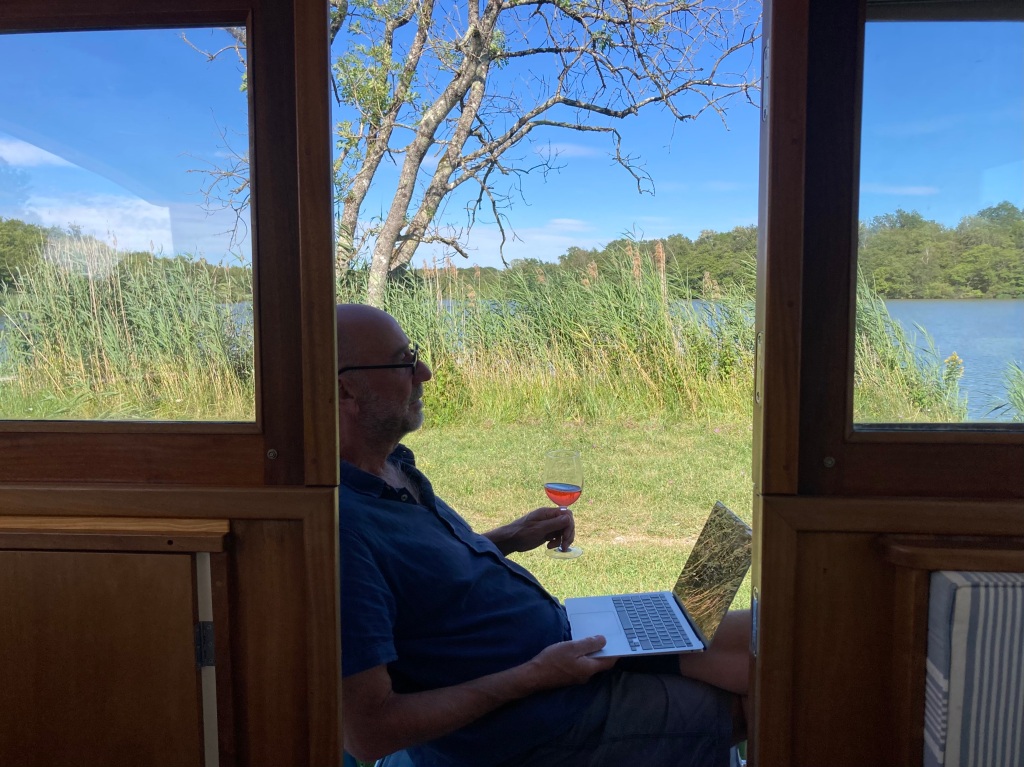
The weather was quite hot, but up by the lake we had rolling breezes and the two evenings in the shade of the wheelhouse were perfect.

And the morning that I bothered to get up to see the dawn (6am) was amazing in the true sense of the word; even I was stunned into silence.
Dammarie-sur-Loing
When we left then lake we began with a straight 4 kms without locks, essentially along the summit plain of the canal, before a drop of 25m through 6 locks to reach Rogny-les-Sept-Écluses.
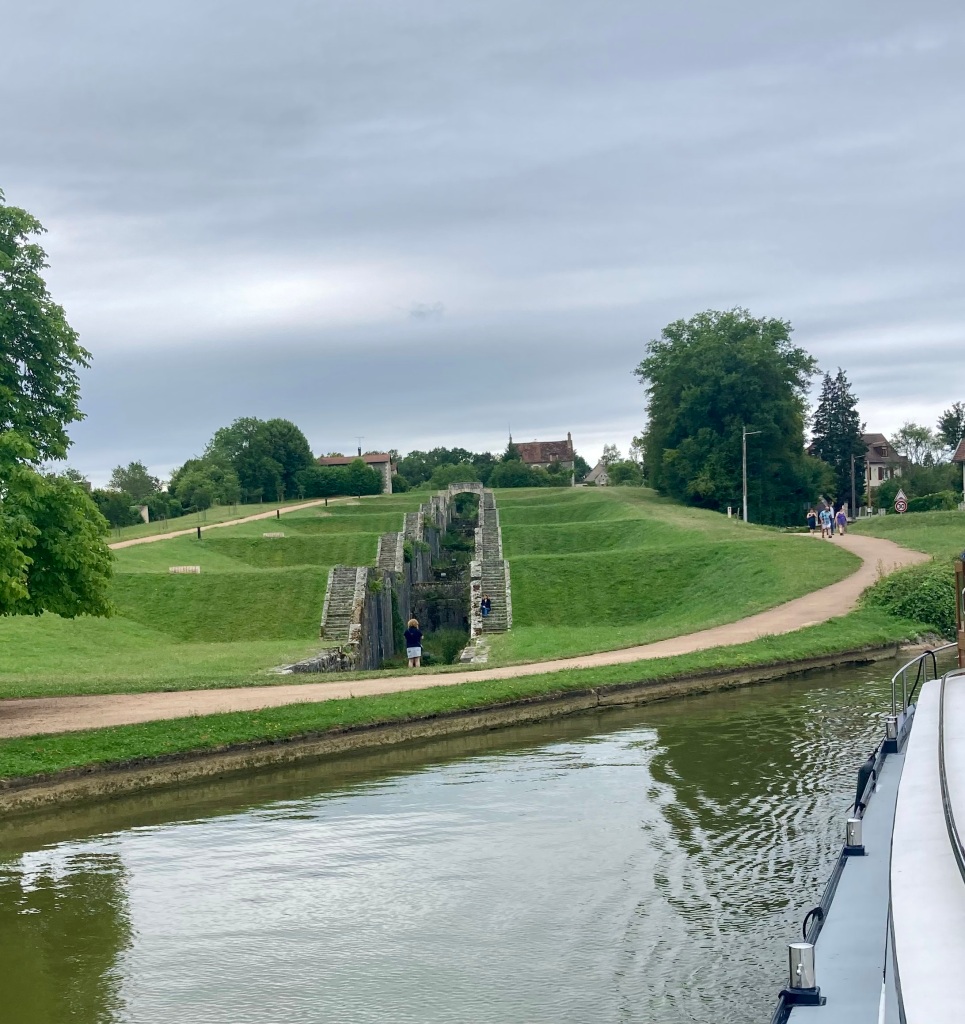
Those of you with good, or even limited, French will have spotted that we came down 6 locks, but the village has seven (sept) locks in its name. The village is named after the original staircase of 7 locks, now a tourist attraction, but by-passed when the canal started to convey the larger Freycinette barges.
It also needed to change because it was a one way system, resulting in queues of barges top and bottom.

Ou trip down the ‘new’ six lock system was in the company of a cheerful éclusier whon loved to chat to all the onlookers (although on his phone in this photo!).
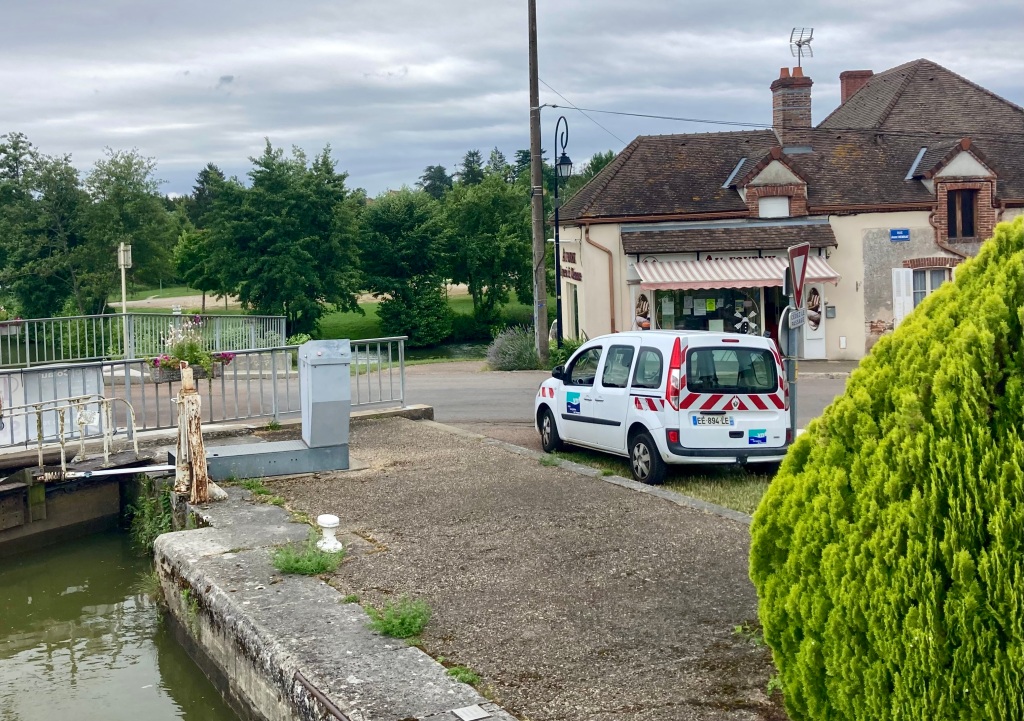
He was happy to wait for us at the bottom lock while I popped into the boulangerie across the road for some bread – and an apple turnover as a thank-you gift for him!
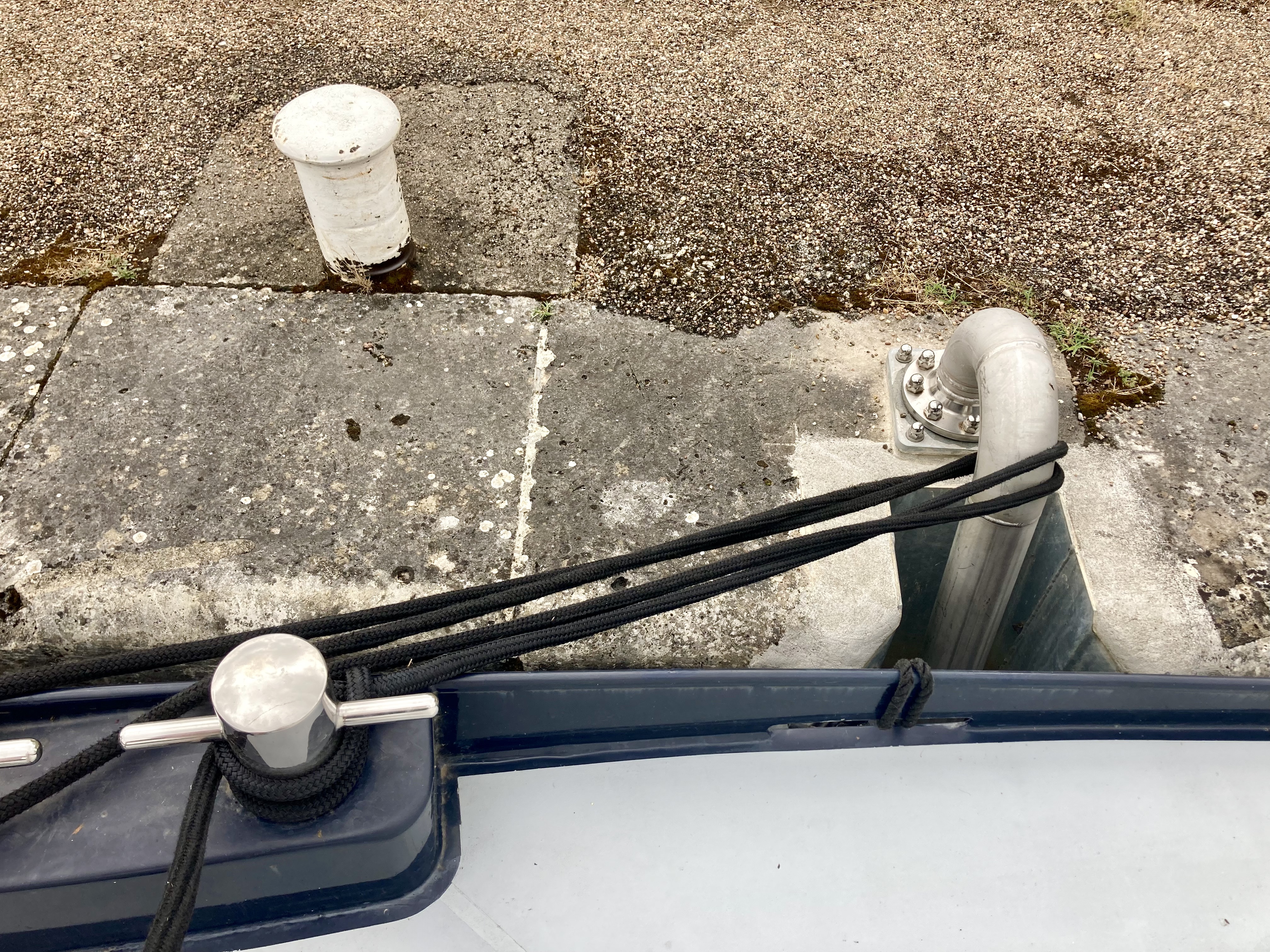
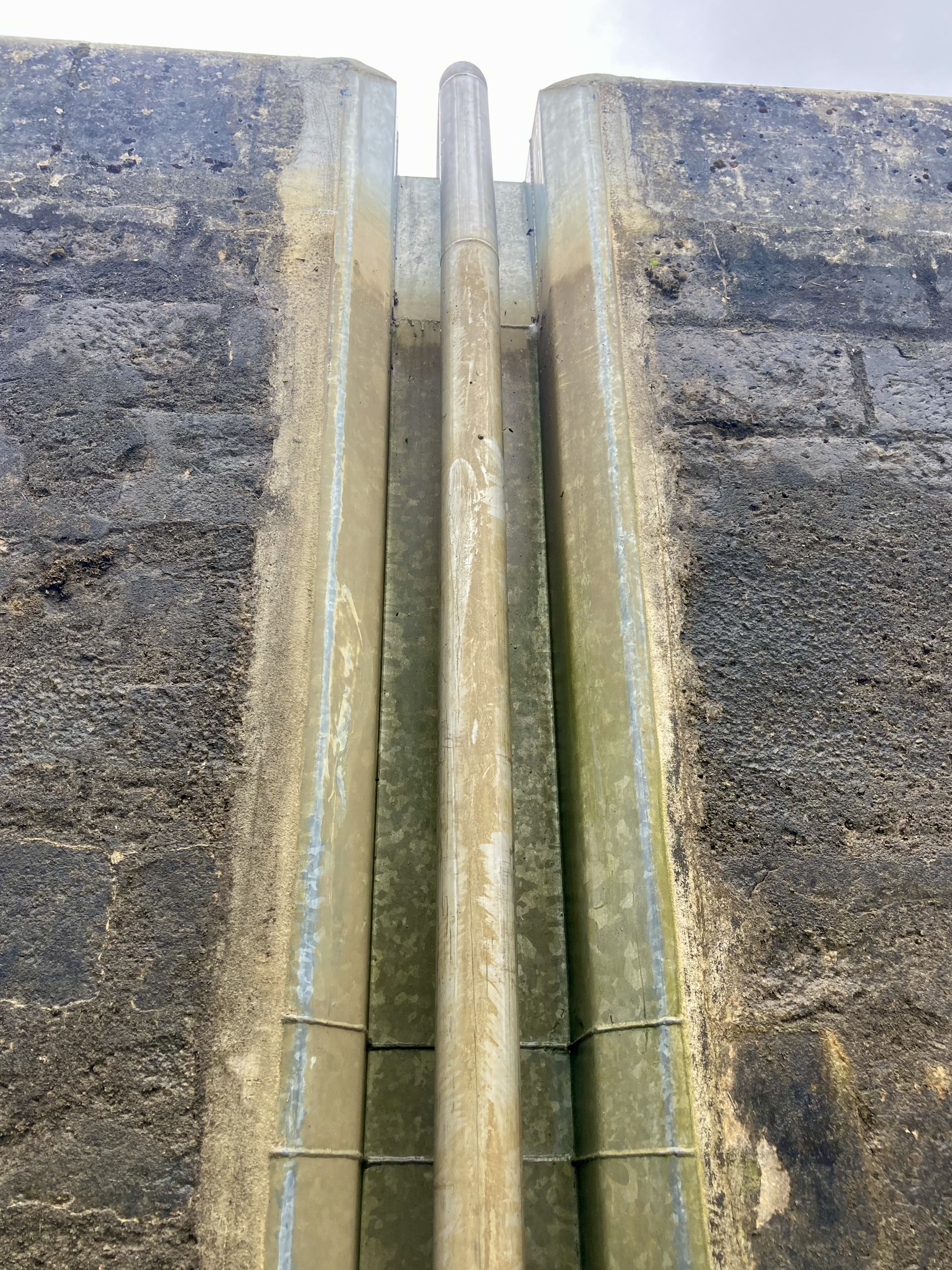
On the way down there was further evidence of the gradual automation of these locks. Strong steel tubes have been installed to make it much easier for boats. Instead of needing to find a bollard when you are at the bottom of a lock we can put a rope round the tube and ‘slide’ up – or in this case slide down.
There was also evidence of past days – a lock keeper’s house now a private residence.
If you zoom in on the photo yup will find the name of the lock, No.14 Racault, in the stone plaque above the door.
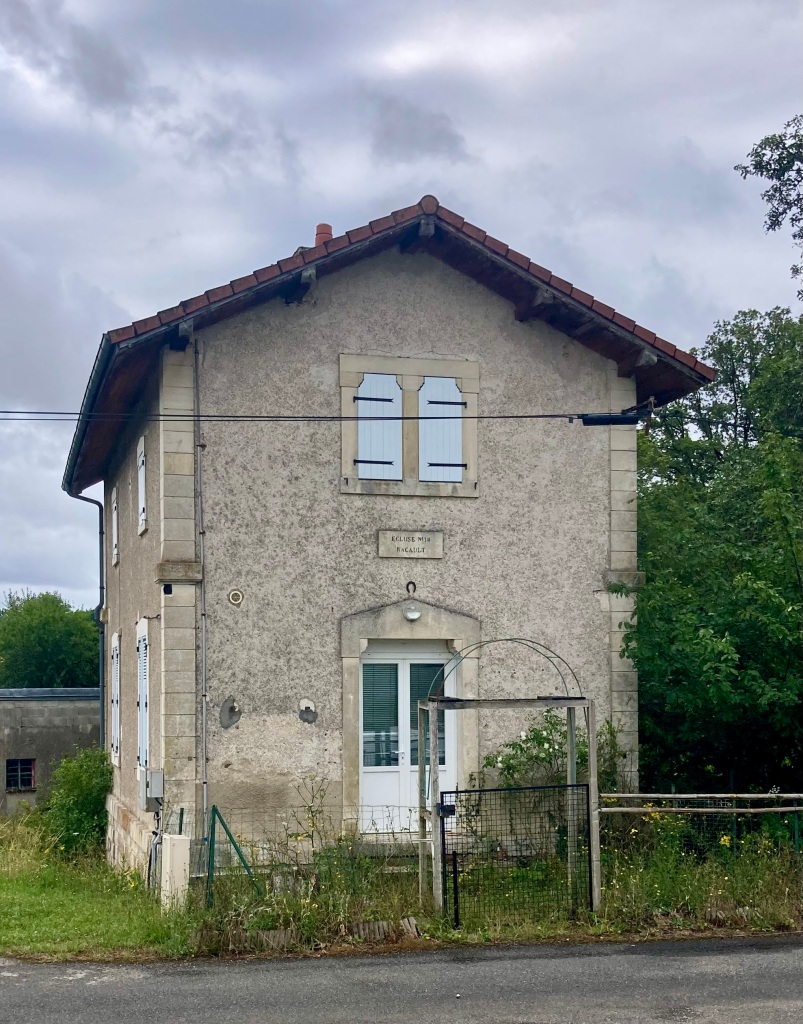
Although Rogny-de-sept-écluse is an attractive village we had already decided to carry on to Dammarie-sur-Loing in order to check out a lockside café we had been recommended.
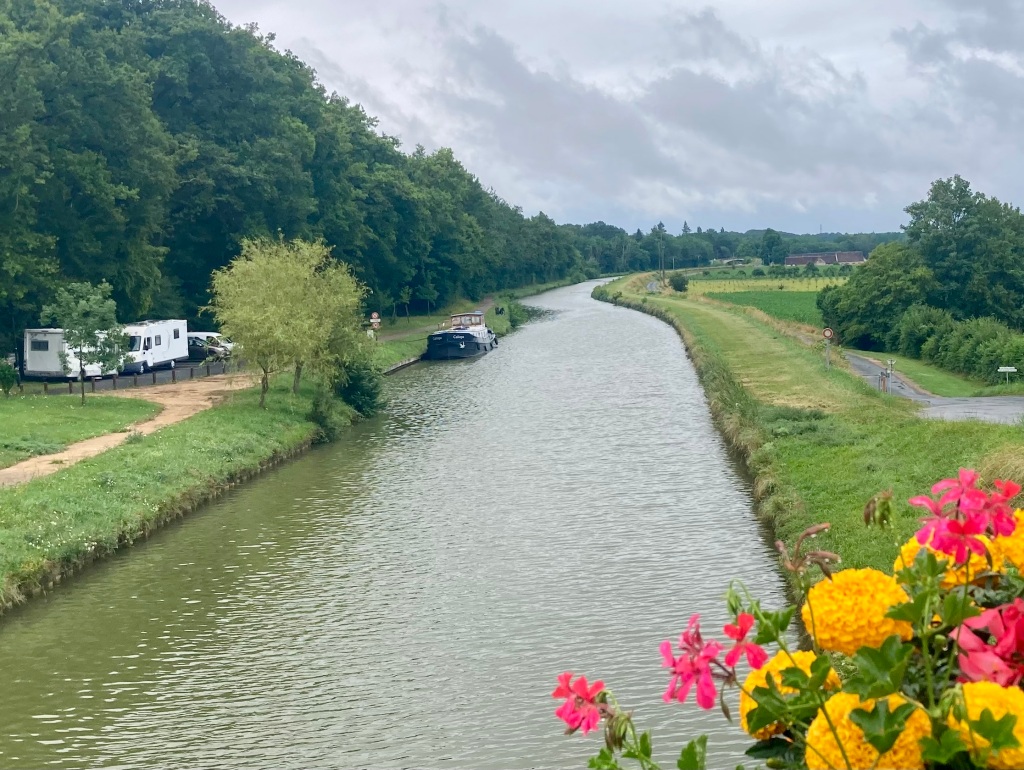
First things first though; Calliope needs her resting place. We found another nice place to moor, sharing the space with a couple of camper vans. The skipper frets sometimes about finding space at our intended evening resting place, though we have been lucky time and again this year. The crew (moi) also remind him that there are plenty of others just around the corner ….
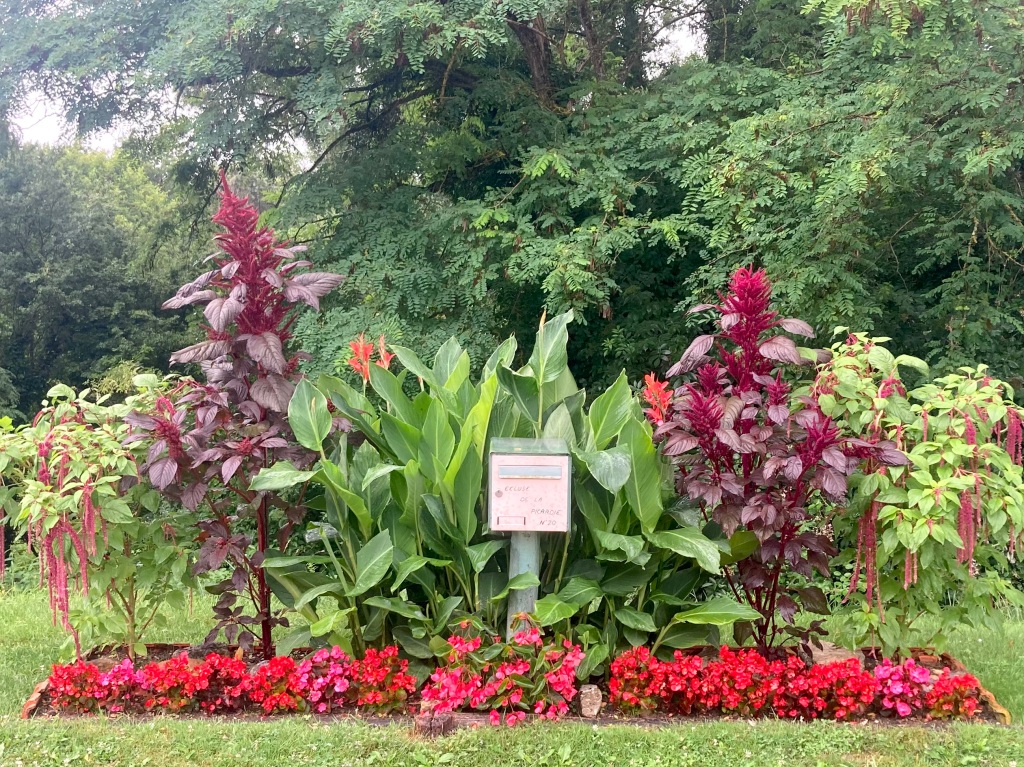
Less than half a kilometre further is Moulin-Brûlé lock where it is possible to see the overgrown vestiges of the ‘ancient échelle du Moulin-Brulé’ – the old staircase lock of Moulin Brûlé.
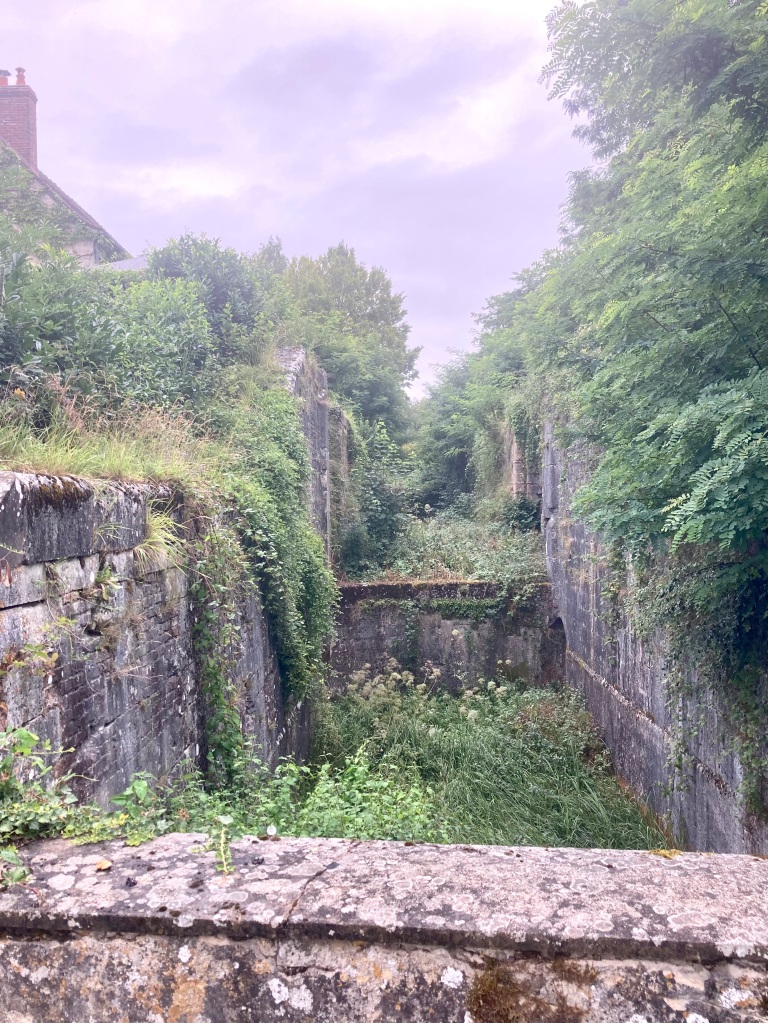
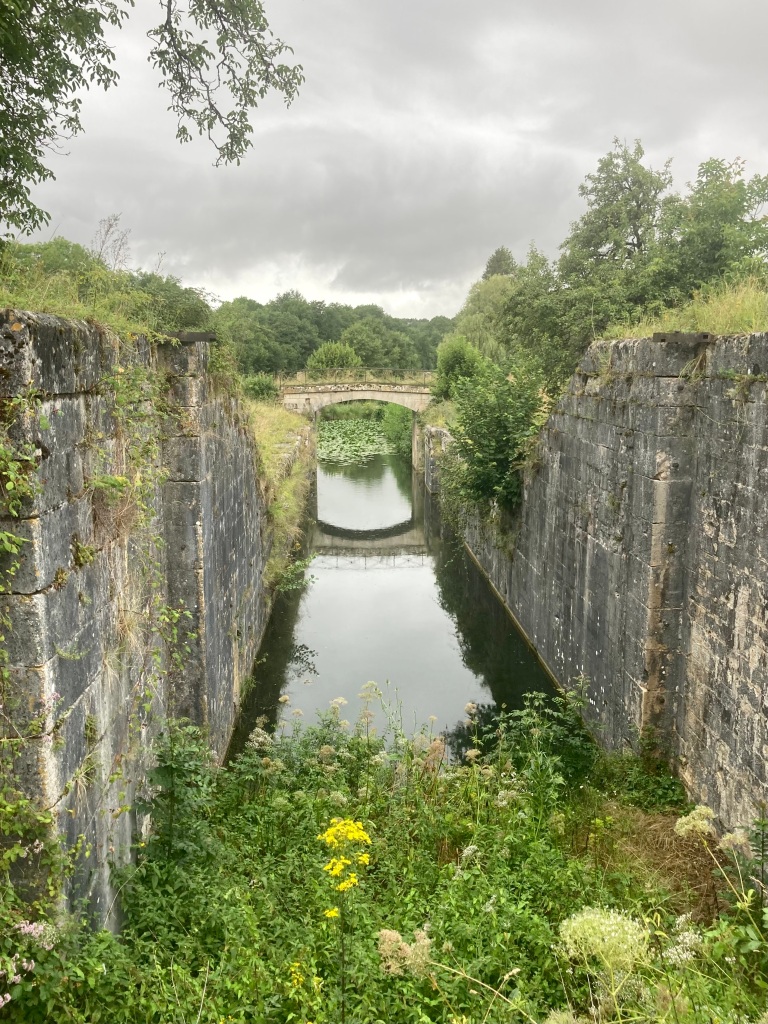
It was rather an overcast day, but I think these two photos give a sense of the place – the old narrow staircase of 4 locks, so busy in their c200 year working life (1642-1830). They have been bypassed for almost another 200 years, making way for longer wider barges. At the time of these old locks the barges were hauled by men, normally two.
There is a good museum at Briare documenting the very interesting history of the canal.
Eventually to the café – based in the old lock house and run by a British couple, it is a small but funky place, with delicious home made pasties and carrot cake amongst a small homemade menu. As we entered the lock, we asked the the éclusier if we could pause for a while two buy two more pasties for the freezer, and would he like a pastry to go with his morning coffee?
‘Mais certainement’ said he, ‘the lemon carrot cake is to die for!’
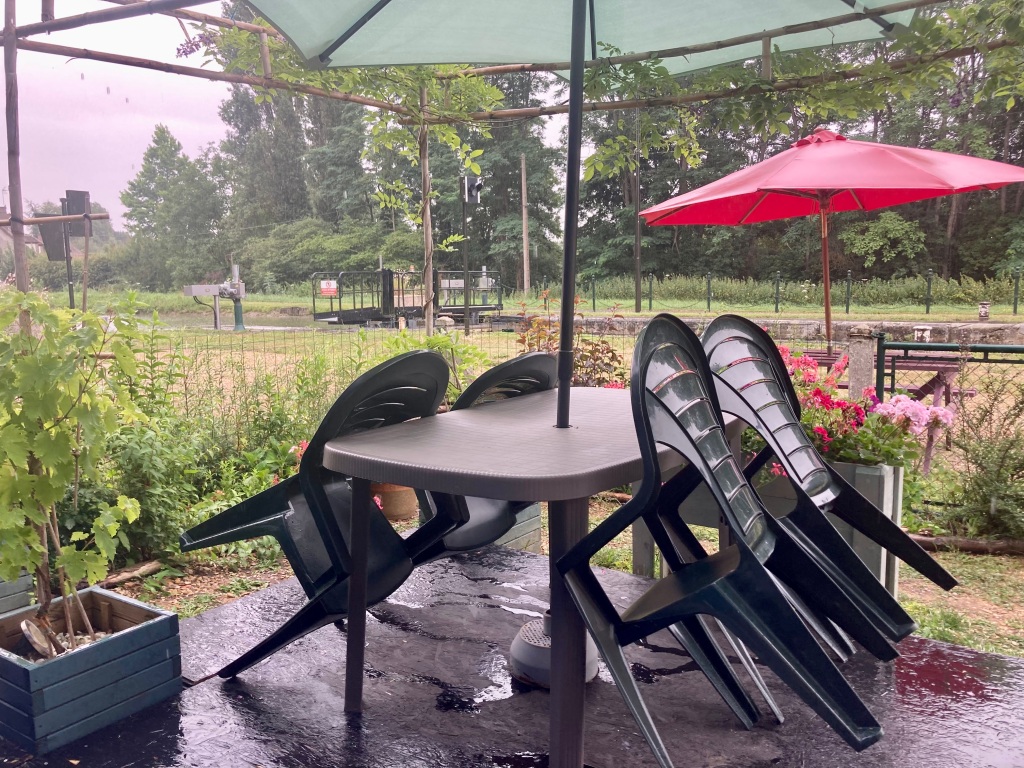
We bought a few things to take back to the boat …. and the heavens opened! So we stayed and had a coffee and a good chat about the business with the owner .
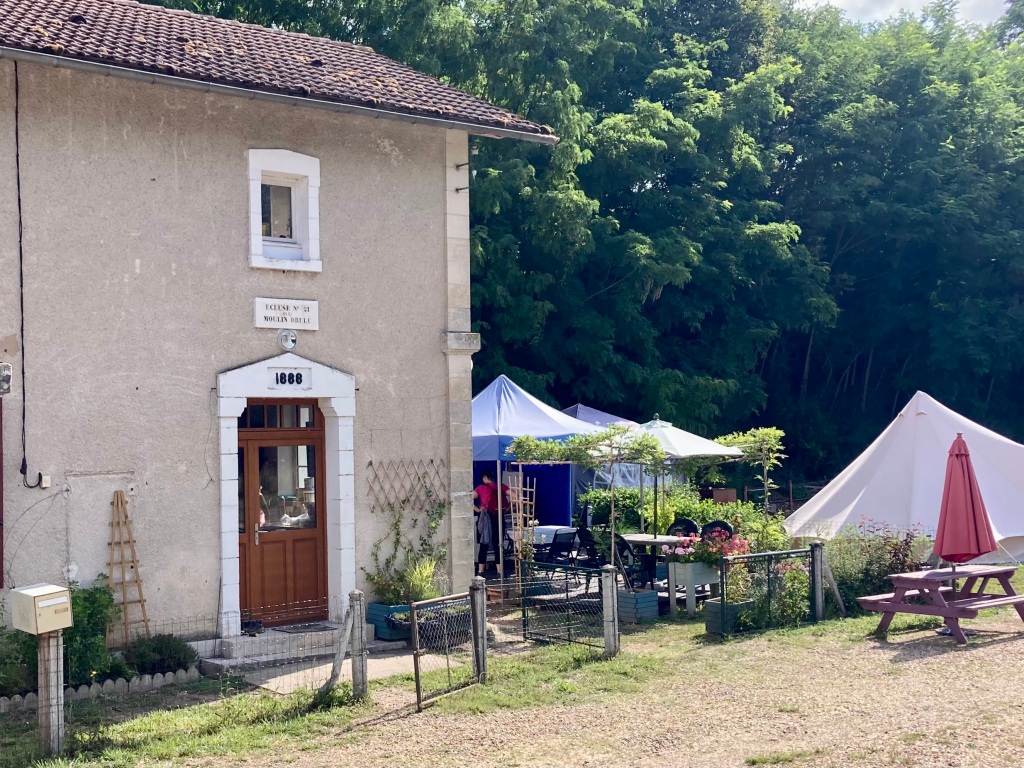
On the way back, when we reached Dammarie, I made a small detour.

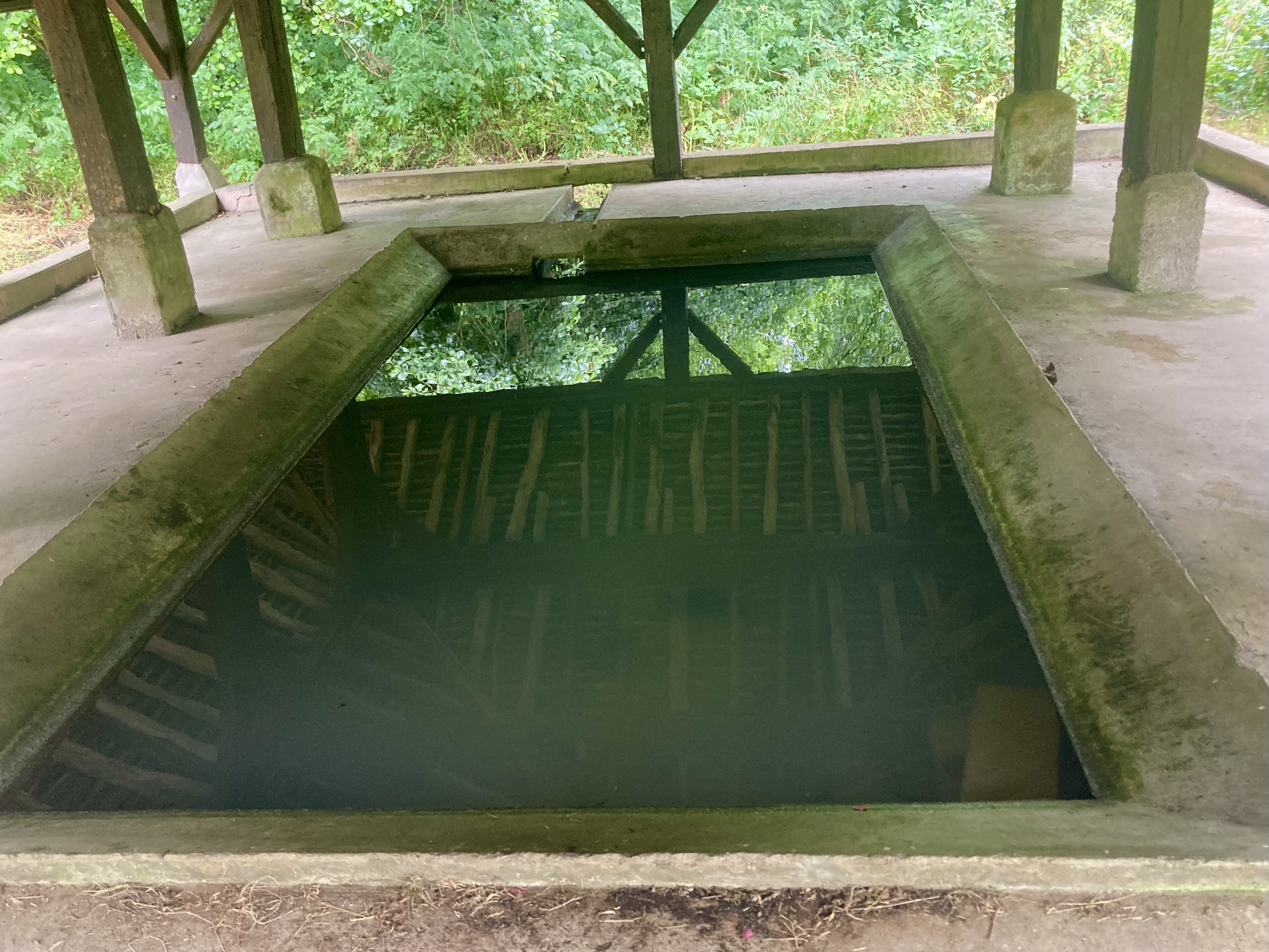
I had seen on the map that there was a lavoir, and look what a treat it was! It is set down below the canal, closer to the river Loing. There is a lovely small stream that comes out of the ground and runs into a sturdy, low roofed, square lavoir.
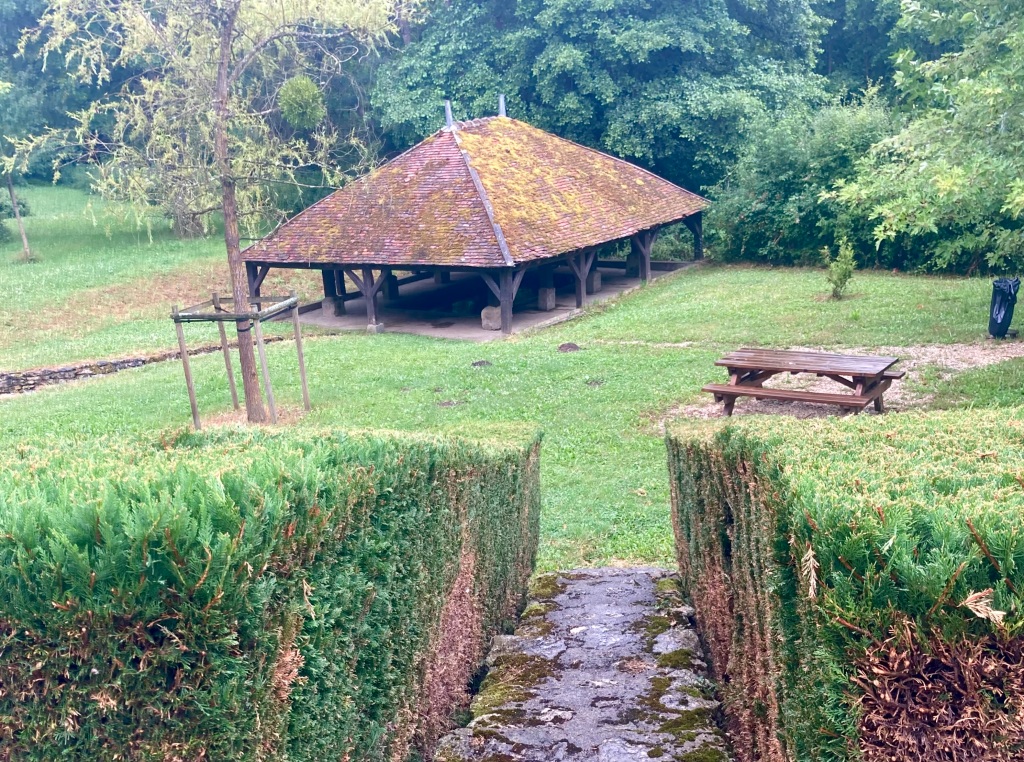
I suspect it has been made a bit more beautiful for tourists than it felt to the locals on a winter’s morning when there was a load of washing to be done.
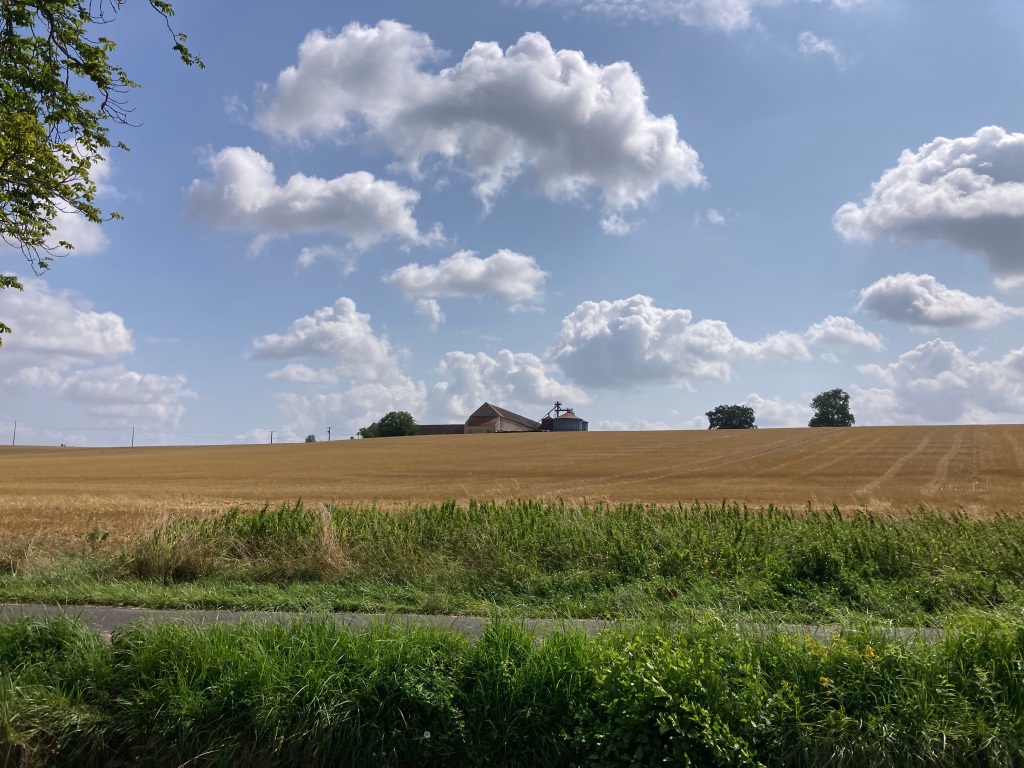
We only stayed for the one night and were off in the morning towards Montbouy, through more lovely farmland, wondering what lay in store for us there.
Our choice of Montbouy meant that we passed through Chatillon-Coligny, a favourite place to stop for many people, but Montbouy was a better mid-stop between Dammarie and Montargis – the end of this canal.
At the edge of Chatillon is a lock that is not allowed to be automated because of its old manually operated lift bridge. The lock keeper was keen to show us how it operated, so here is a short video of him, on the left, in action. As he walked back onto the bridge it gently closed of it’s own volition, aided by well greased joints and gravity.
Montbouy
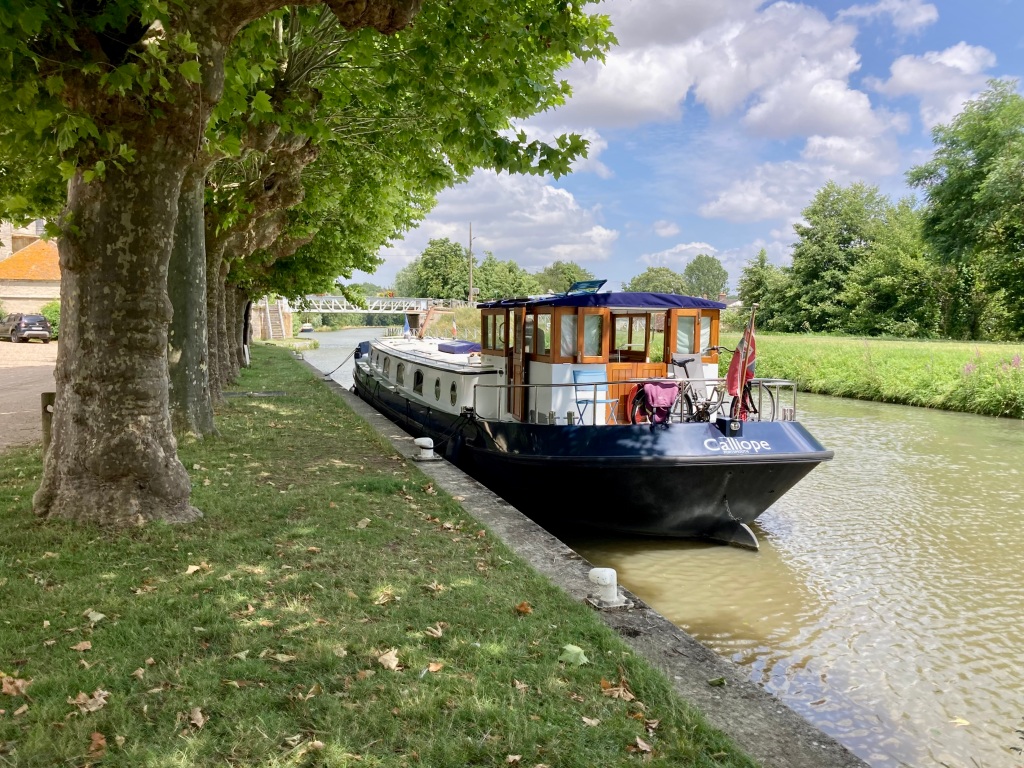
Montbouy had a couple of surprises for us. We were quickly moored up under a shady line of trees, and pleased that there were no hotel barges due that day to use the same space.
The one Boulanger was on holiday – fair enough, I am sure they deserve a break. So wraps came out of the cupboard for our midday sandwiches – always a good standby. I spotted a sign saying that a depot de pain was available at the épicerie (general store) over the road and marked that for next day.
After lunch, although it was quite hot, we agreed that we would go and look for the Gallo-roman amphitheatre shown on the map. I am sure you are as amazed as me to find this kind of archaeological site open to public view in a little village.

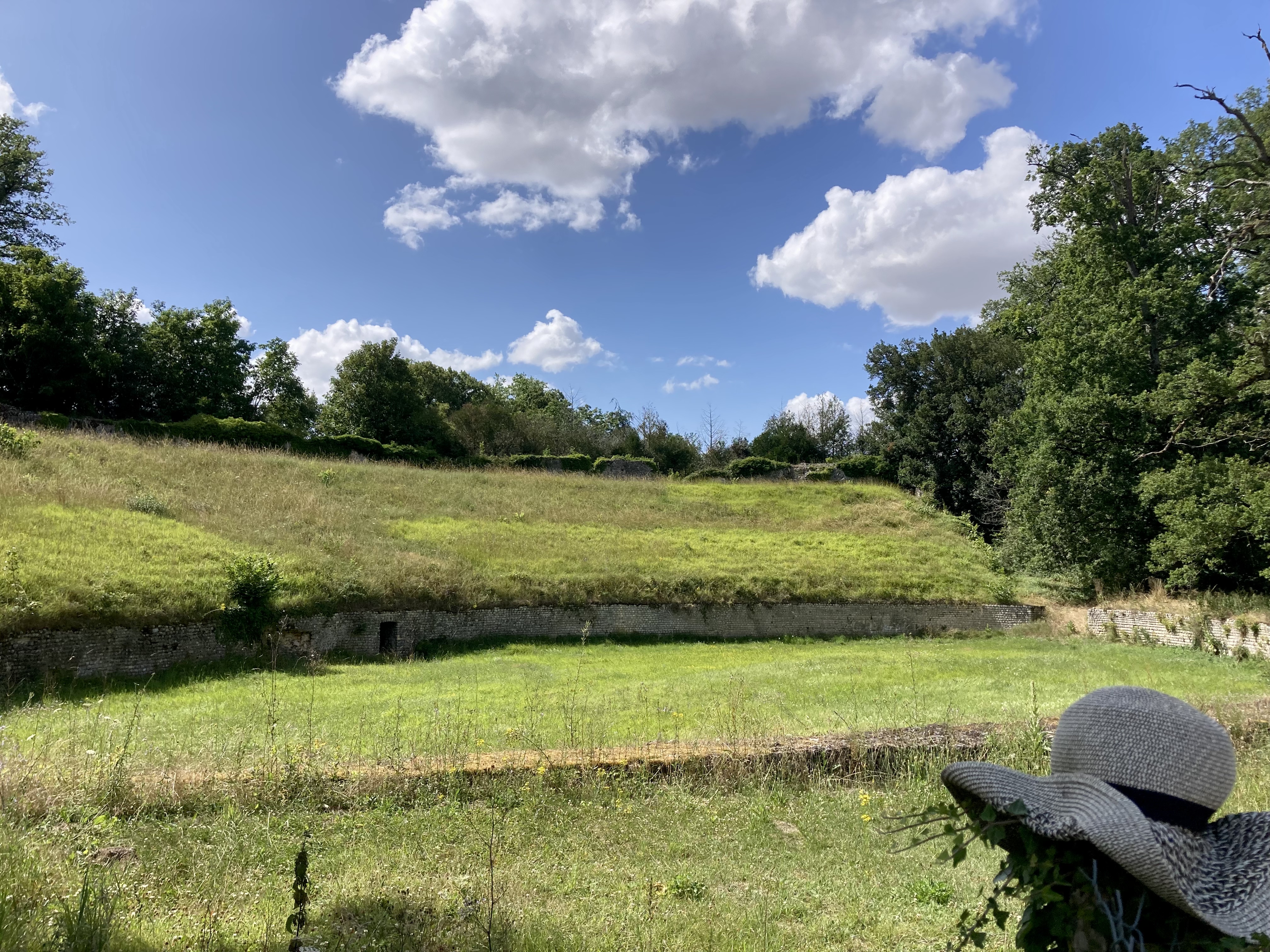
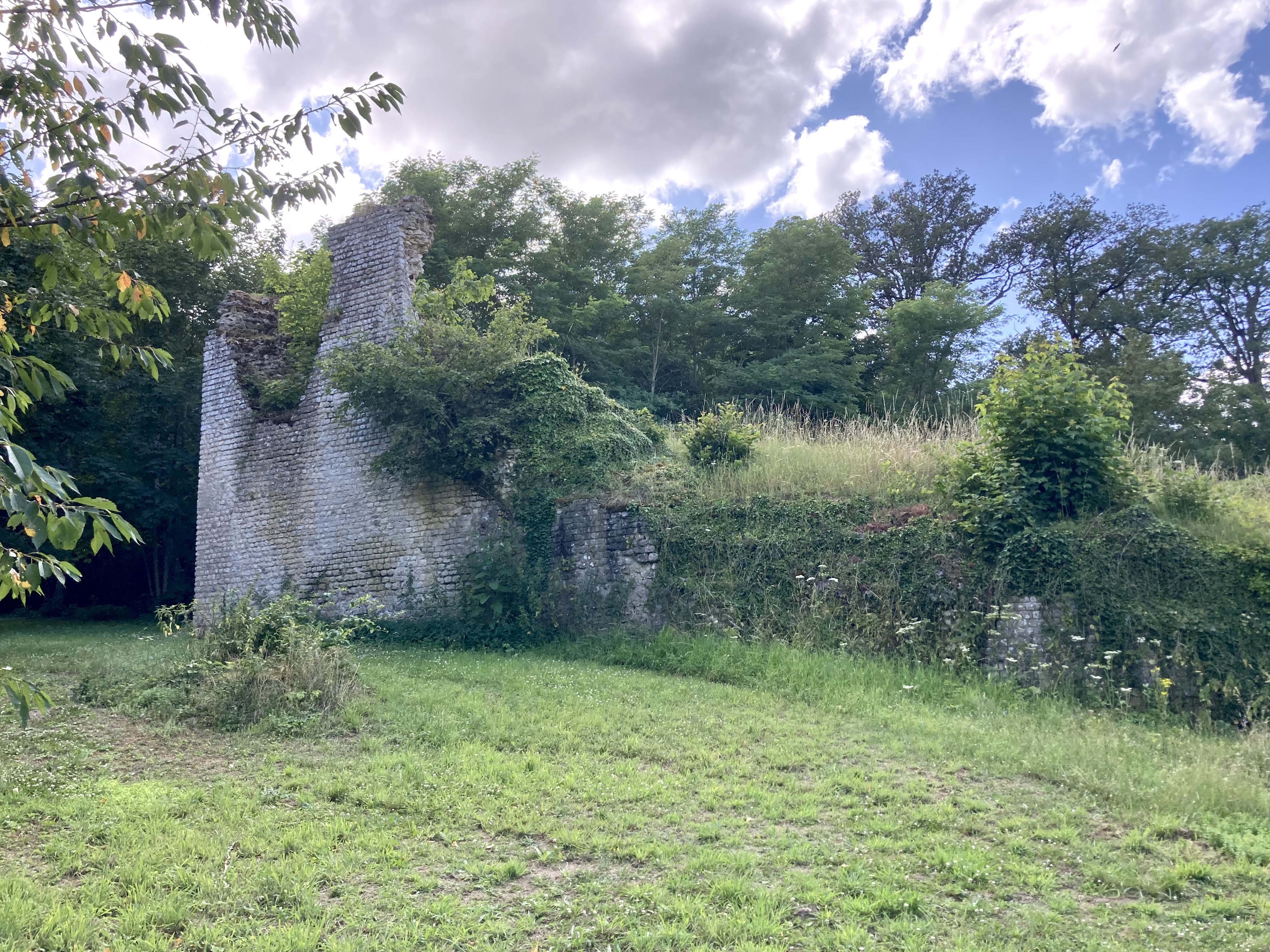
After about 25 minutes walk we found it, slightly fenced off, but easy to access and then dream about what happened there 2000 years ago.
Montbuoy was a delight in other ways too. The canal runs adjacent to the river Long here and looking across I noticed a familiar shape roof!
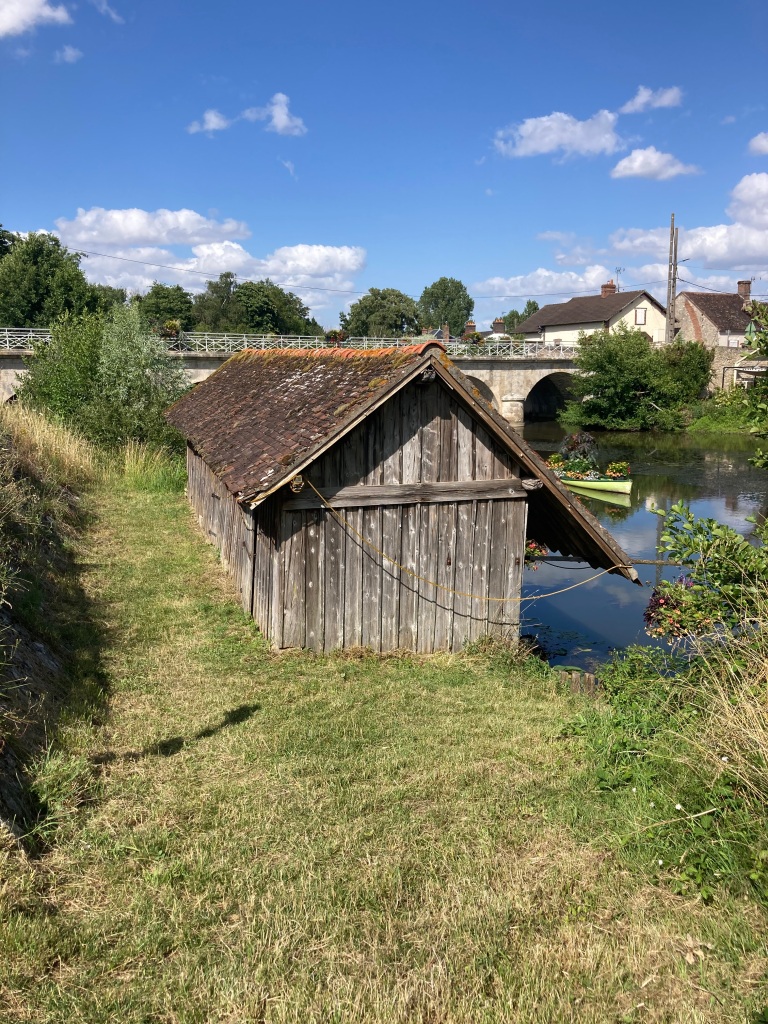

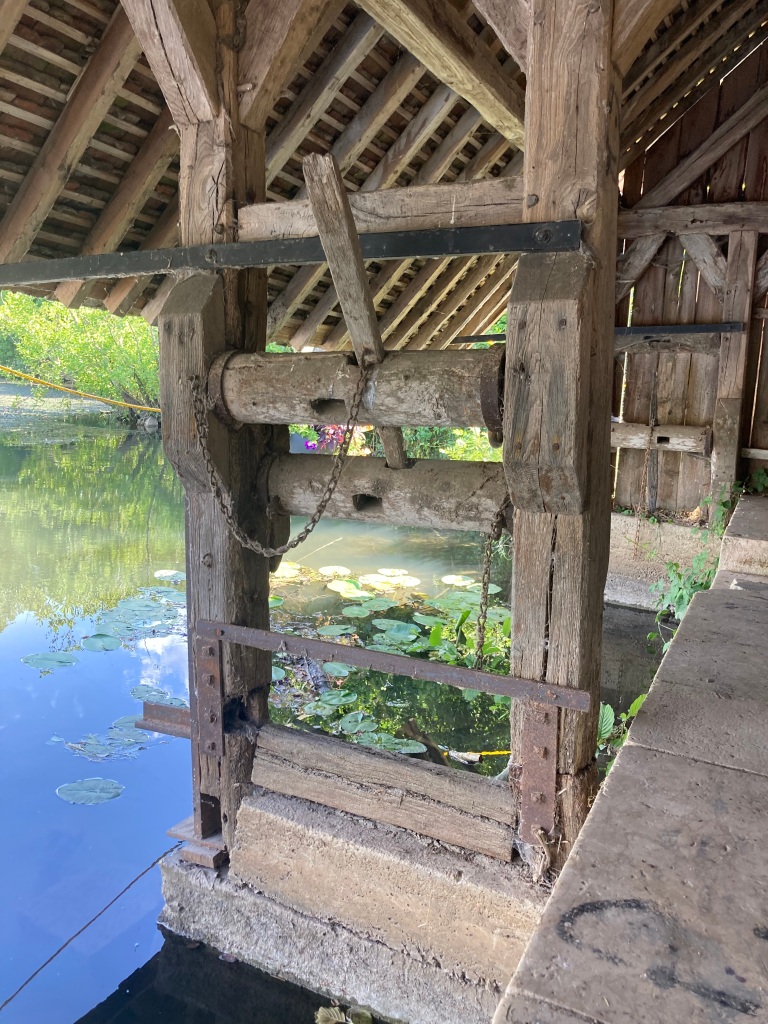
Yes, another lavoir; skip this if you are not a lavoir lover! This one had something I have never seen before – two interesting wooden contraptions that Stewart thinks might be some kind of mangle to squeeze the worst of the water out of the washing.
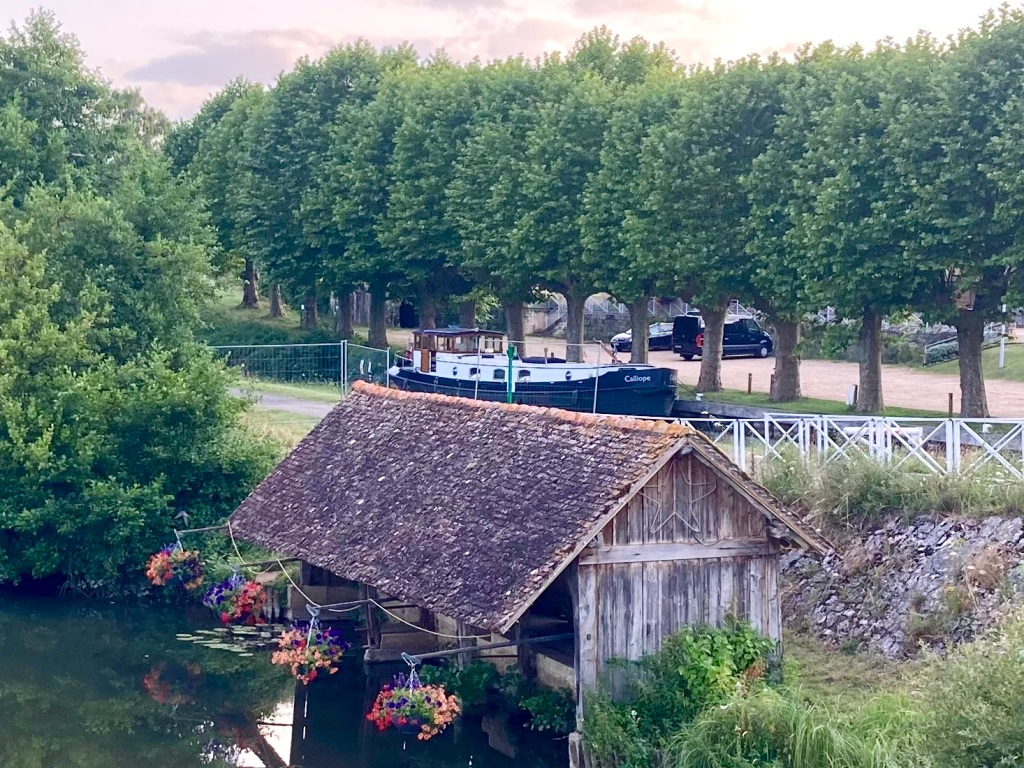
I amused myself with a photo of Calliope seemingly on the roof of the lavoir, combining two of my favourite things. (Not sure these would work in Julie Andrew’s song!) At the same time it does show the relationship of the canal to the river here in Montbouy.
Before saying good-bye to Montbouy my evening wander included two sundown views of the church – one from above and one from the bridge across the river.
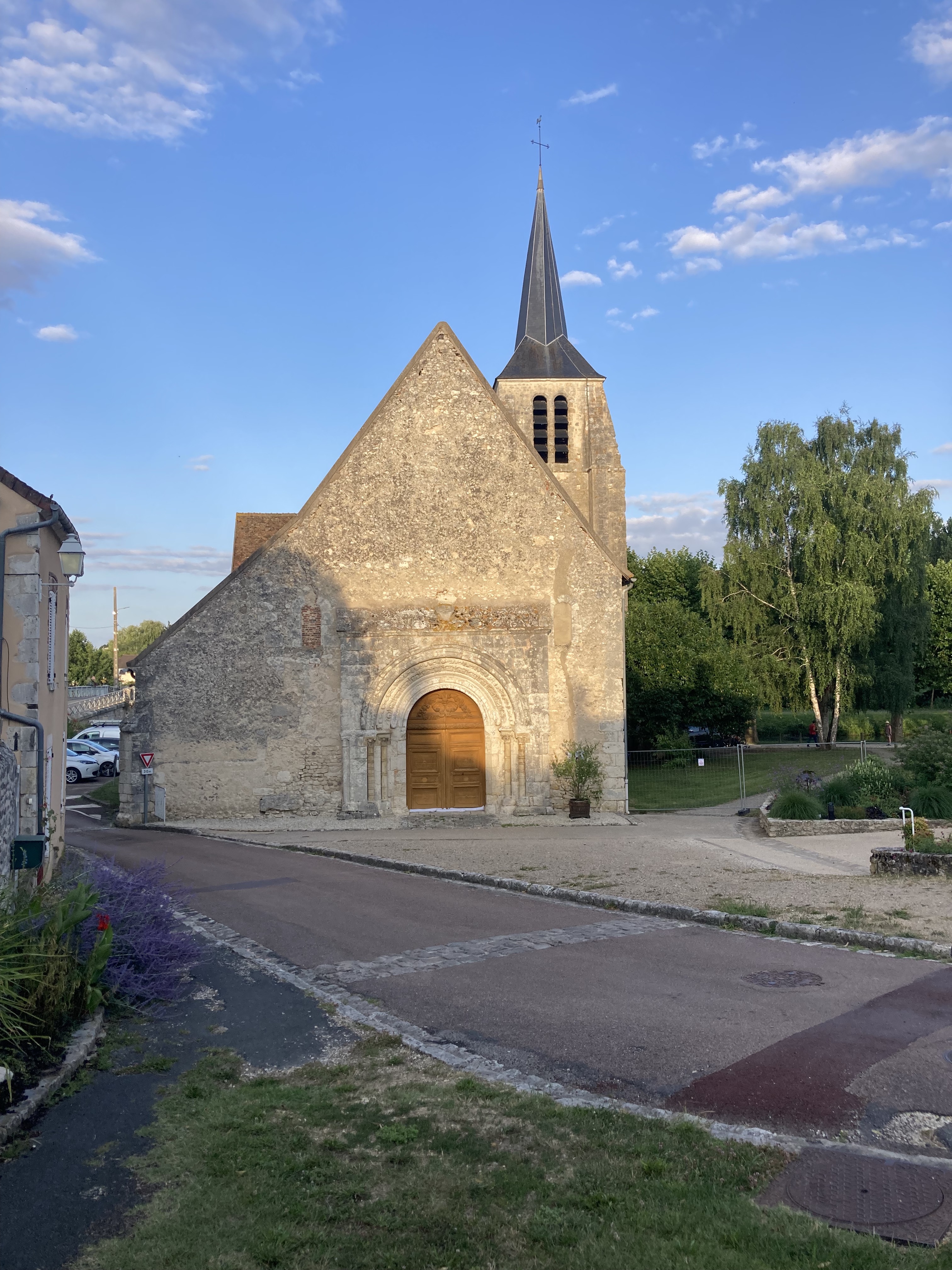
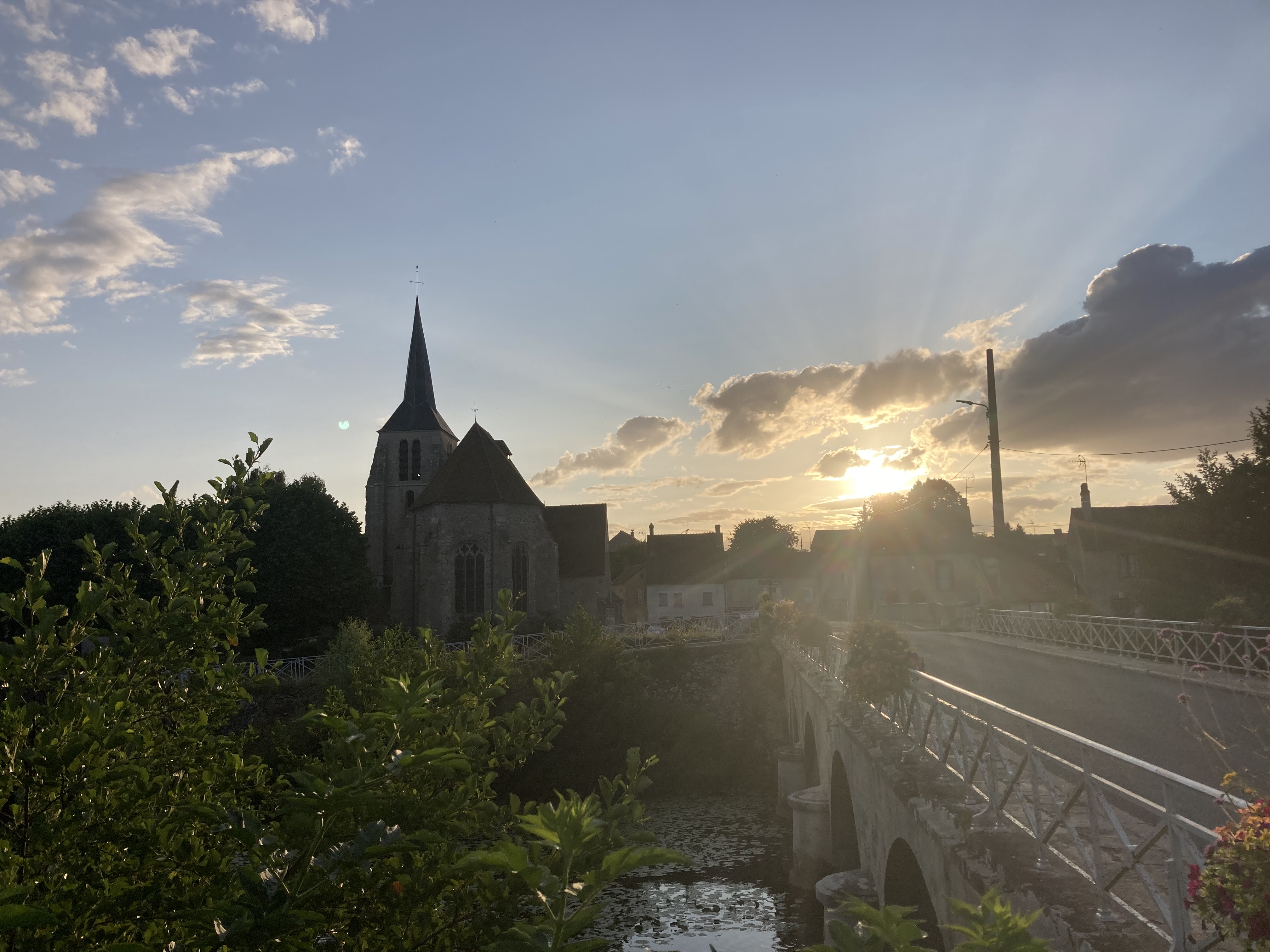
Montargis
The canal de Briare ends at Montargis, and continues on as the Canal de Loing (next blog). There was a 17kms to travel before we would see this famous town.
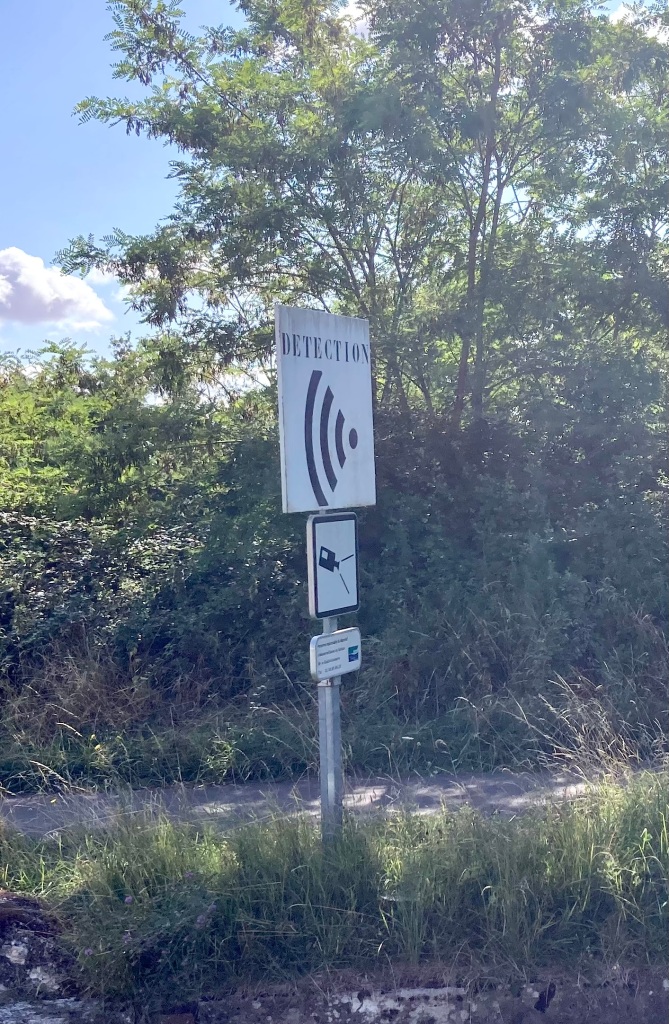
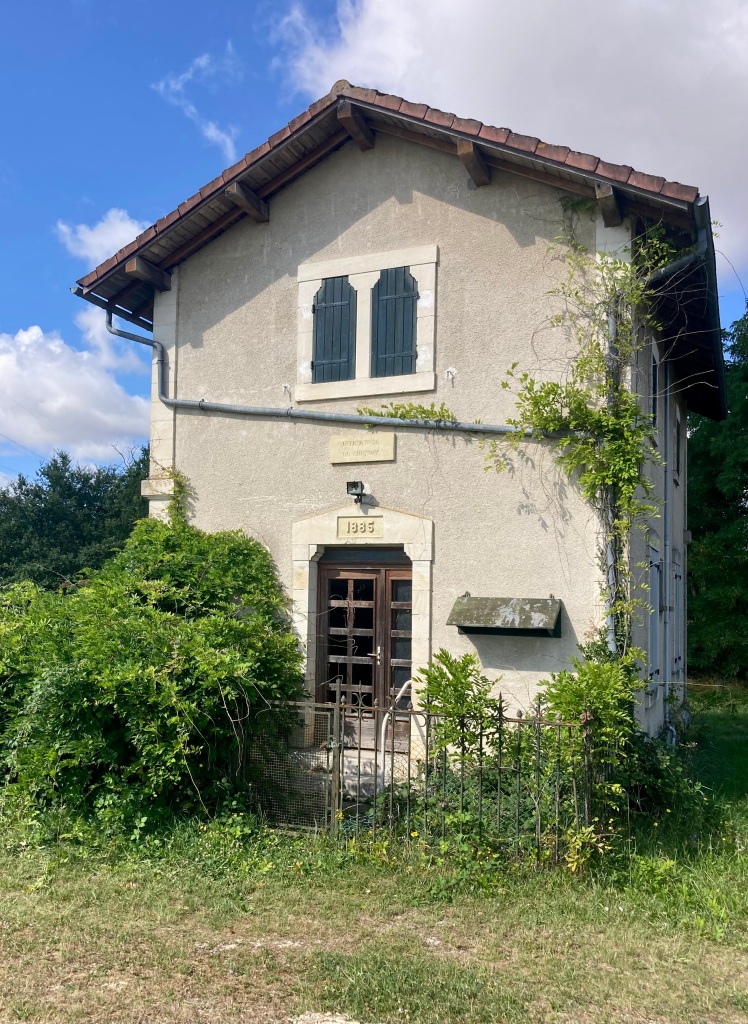
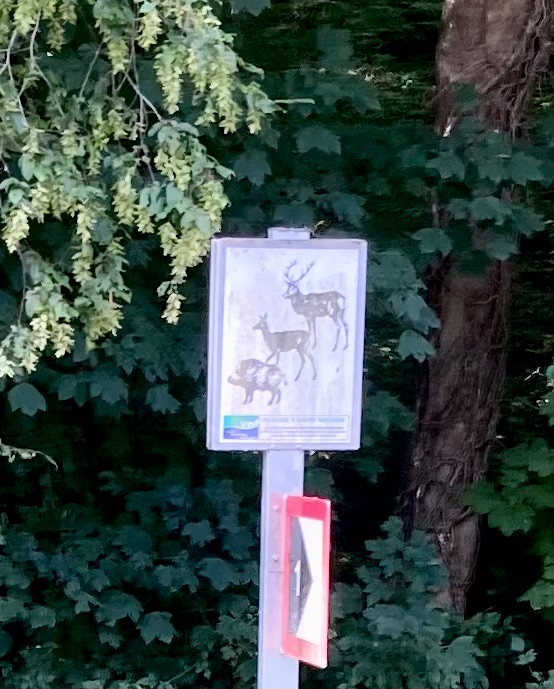
As always in addition to the ever changing landscape we had little interesting features along the way. We had these two canalside signs; the first made us smile as we knew we were detected! That was a good sign as it meant that the next lock knew we were approaching and would be ready for us.
The other sign, on the right, was above a set of ‘steps’ made to allow animals that have fallen into the canal a way to get back out. It looks like two types of deer and wild boar are most at risk.
I included the other photo, taken at lock No28 du Chesnoy to show how these lock keepers houses can deteriorate when no-one lives there; very sad.
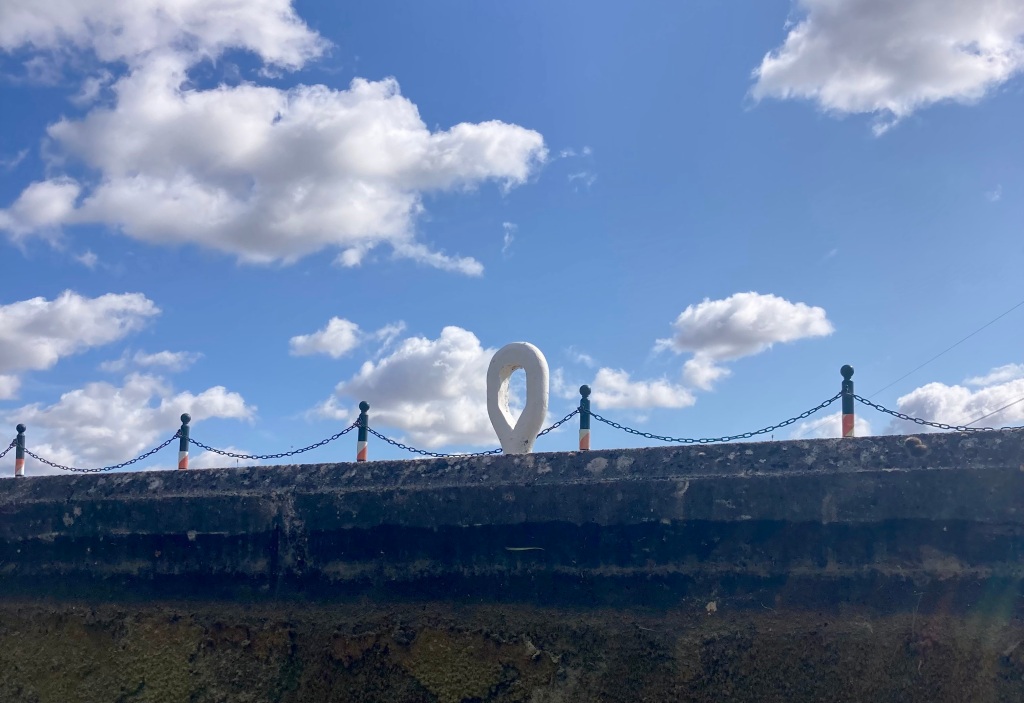
And in a more artistic moment, at the bottom of a lock, I saw this very different type of mooring attachment – a hybrid of a ring and a bollard.
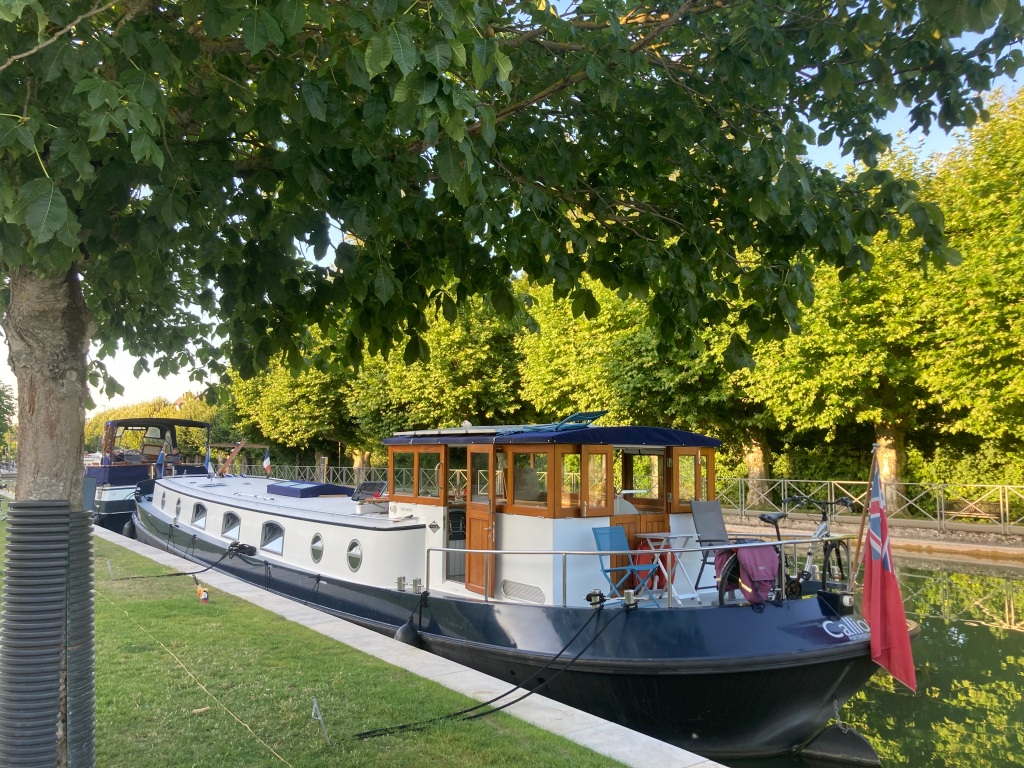
The port at Montargis is in the middle of a major redevelopment. Luckily there is one quay open to passing boats and we were able to take our place at the end of the row. And on quite a hot day we were pleased to be the ones who moored up under a shady tree!
Now we could get to know the town.

Montargis is simply a wonder! It is known as the Venice of the Gâtinais – an old province of France, long since divided up. It has been built on and around the rivers Loing and Vernisson; many small canals have been created between these two rivers, and these with the main Canals Briare and Loing have resulted in their Venice like atmosphere.


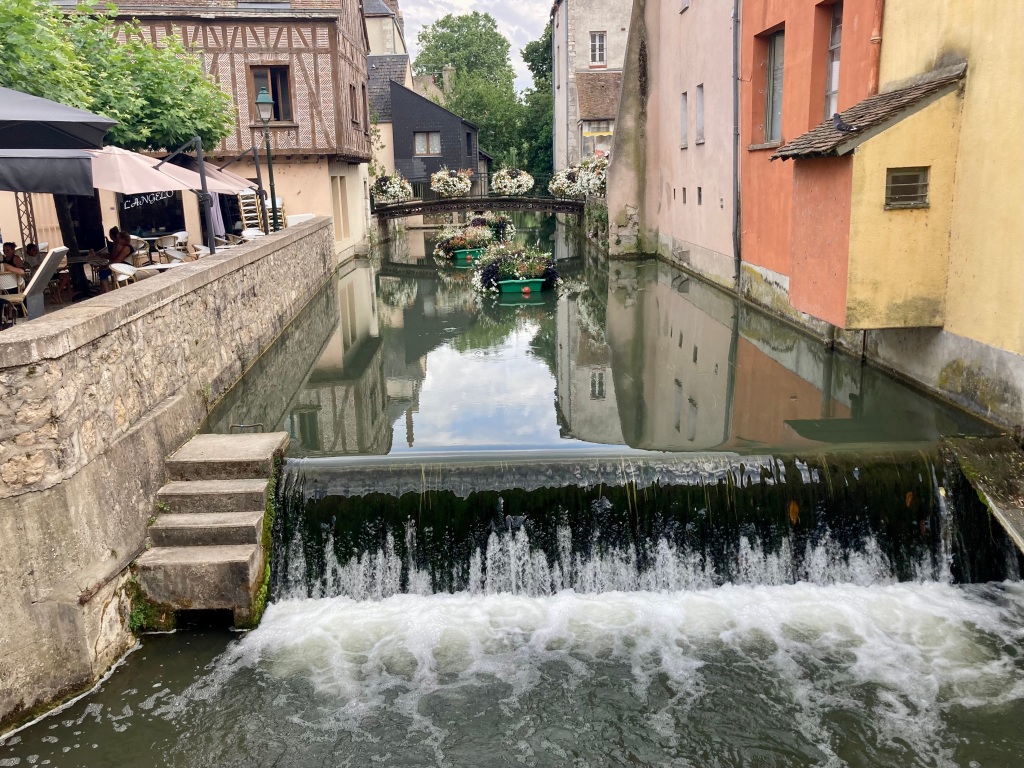
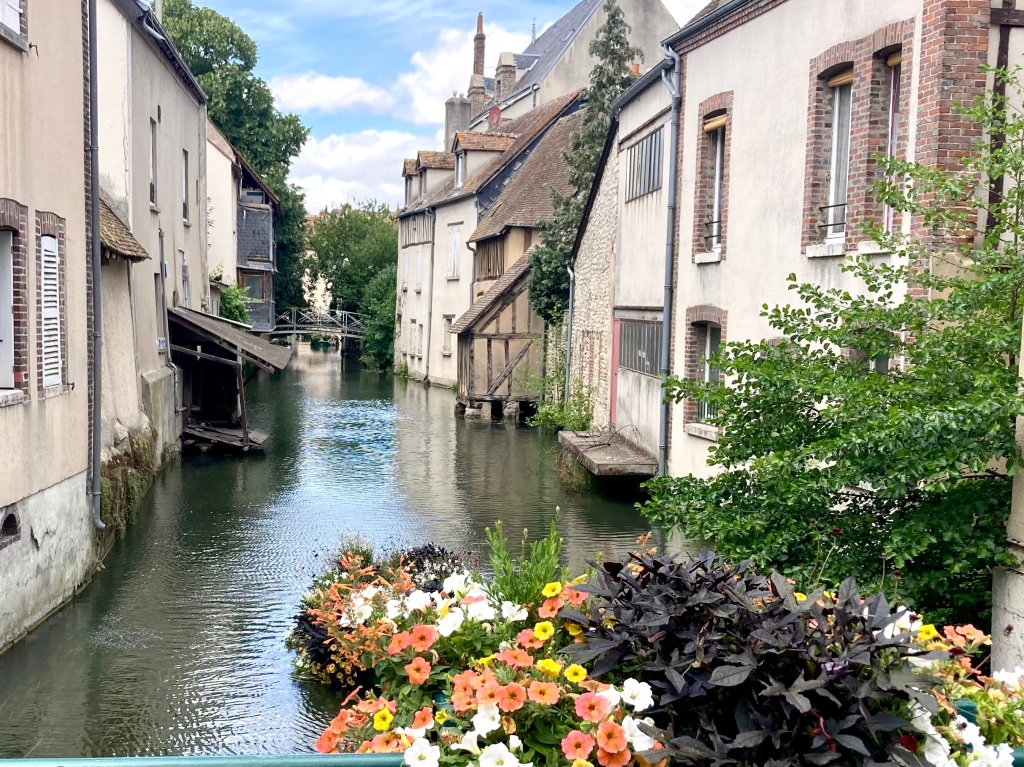
Here is just a flavour of some of these min-canals. Apparently there are over 100 bridges in Montargis – most of them beautifully decorated with flowers.
It is impossible to show all the water in the area. In addition to the rivers, that branch into many smaller ‘rivulets’, the main canal de Briare and all the little canals, there is also the Lac des Closiers. This is a big artificially created lake, using the water of the Loing; it is a great recreational area for all kinds of water and nature related activities.
We spent a little while on its peaceful shores on our way back from a shopping excursion.
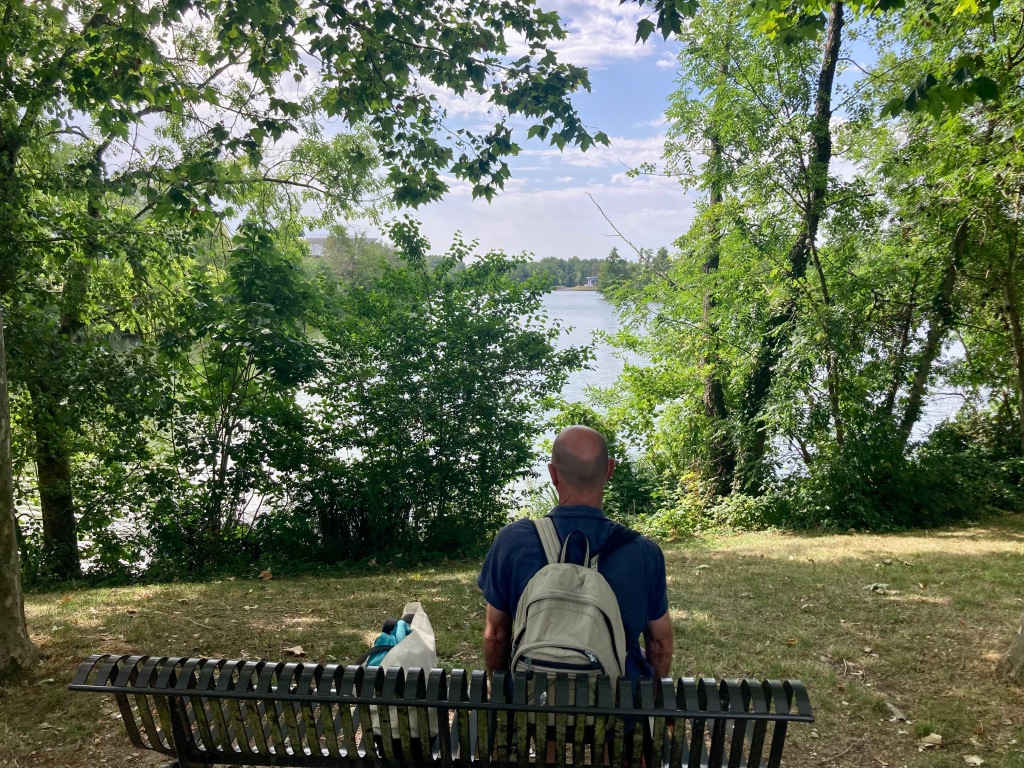
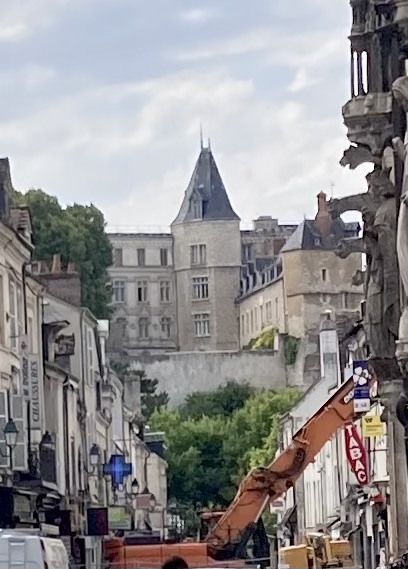
There are many ancient buildings in Montargis too. In our short stay we did not get to see many but here are some.
A chateau overlooks the town, slightly marred by the orange rubble Shute down below.
Here is the magnificent entrance to the hospital
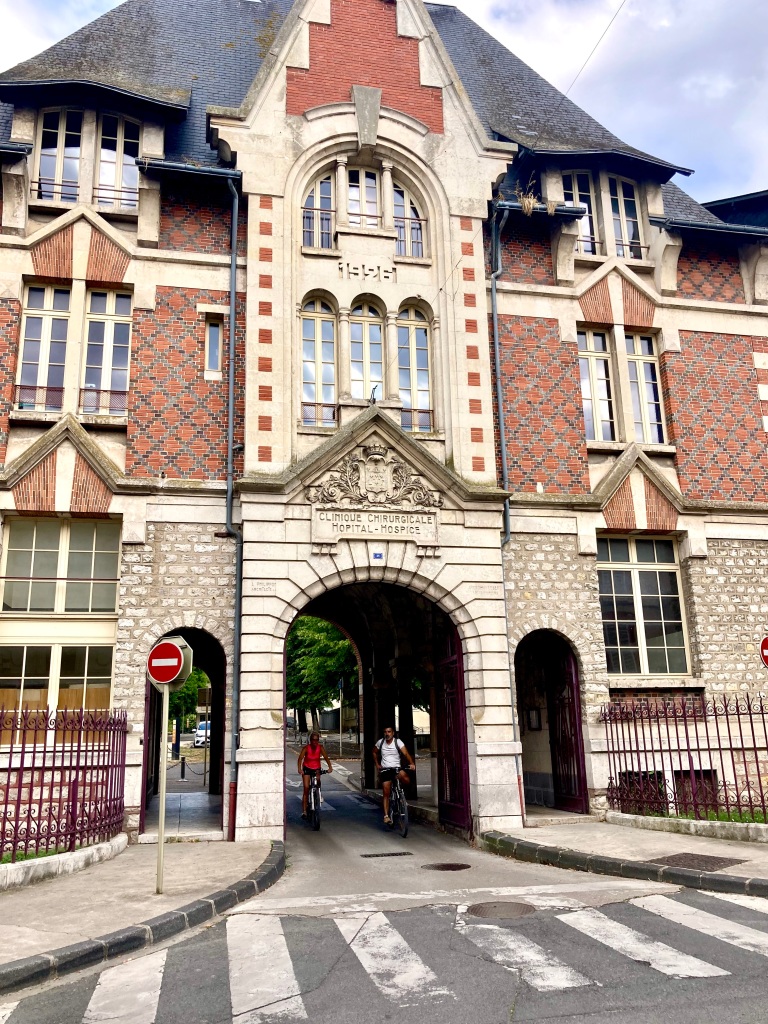
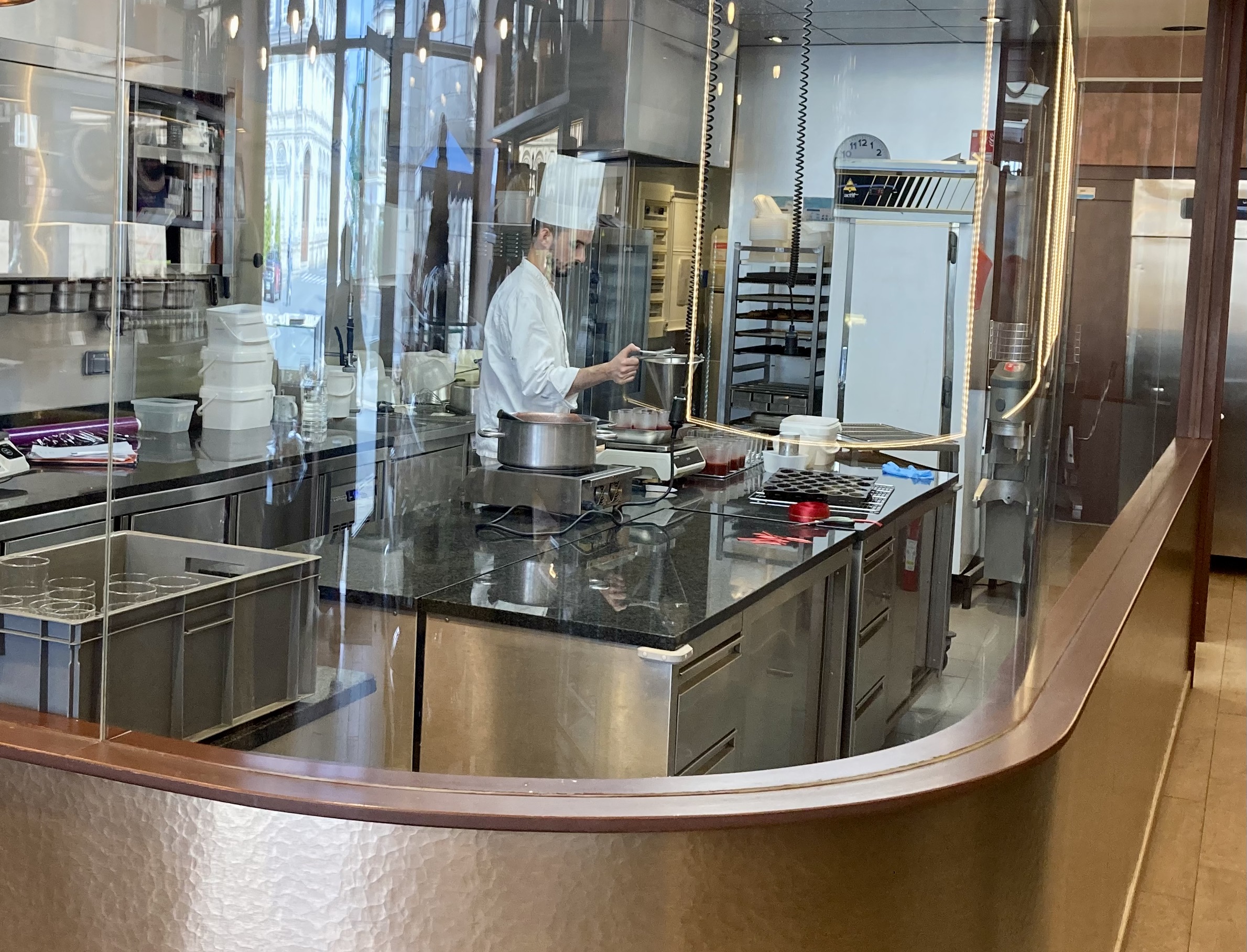
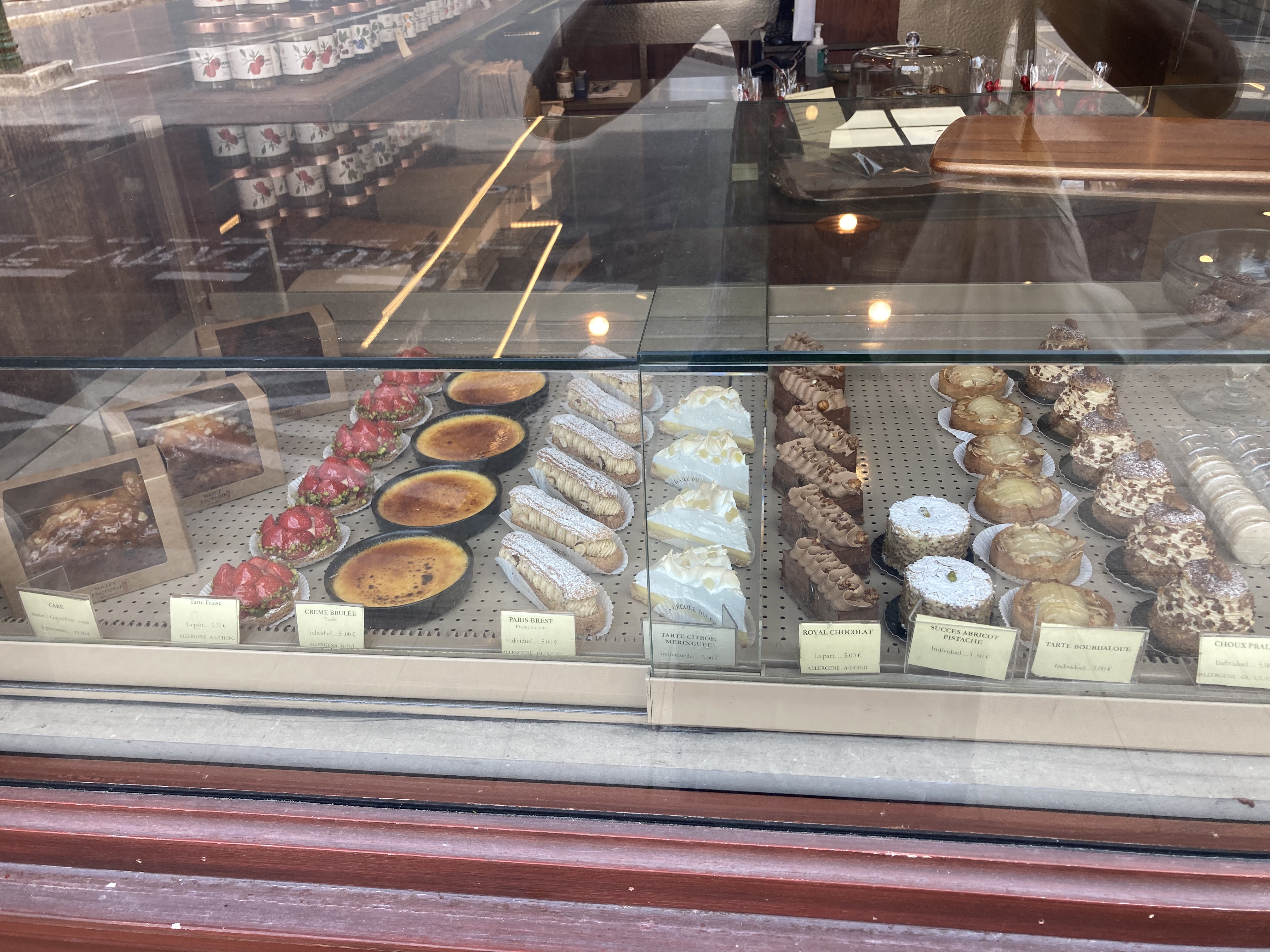

Probably my favourite was the Mazet chocolatier and sweet pastries shop. I watched the master at work in his shiny kitchen and took away some delicacies! It is a shop to seek out if you are in town.
All that sightseeing was thirsty work. We looked around for a typical French square with a bar or two, and were gving up hope until Stewart saw a sign for la Pêcherie. In its working heyday La Pêcherie was probably crowded, smelly and not much fun.
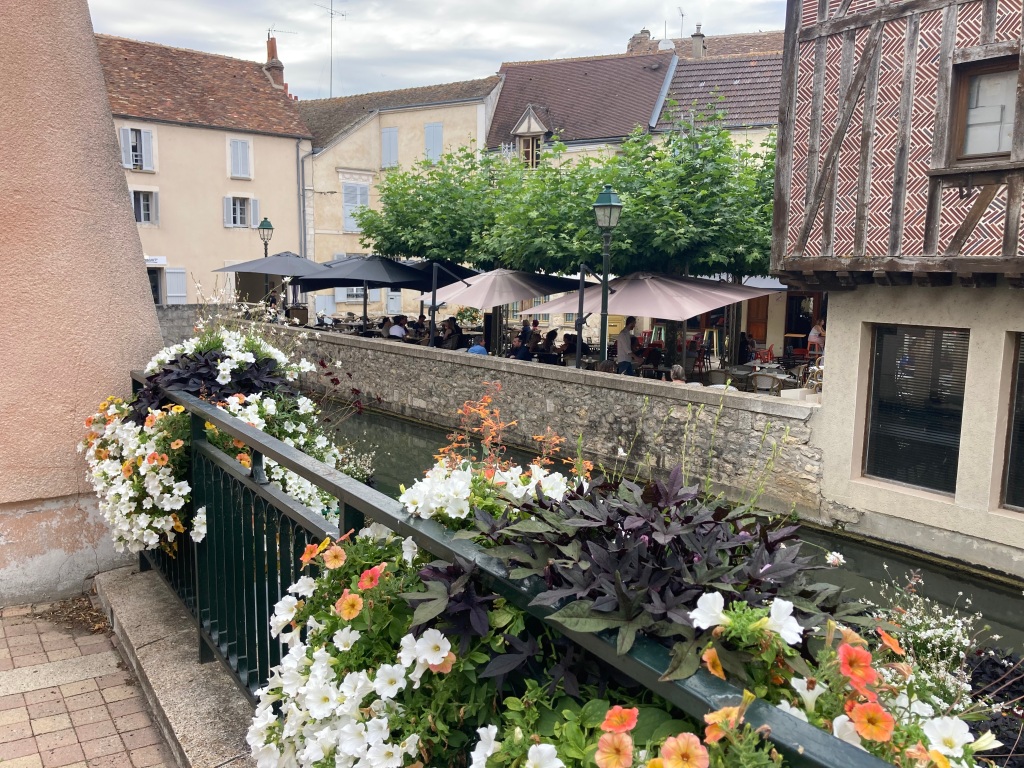
It was the area that the fishing people lived and worked in, moving their boats through the canals out onto the rivers to fish, and then bringing their catch back to be gutted and cleaned in the fresh flowing stream.
Now it is a popular place to eat and drink. A small ‘square’ surrounded by quirky little bars and restaurants, shaded by trees and umbrellas, and all the cooler for the water rushing by.
Looks like the Captain is pleased.
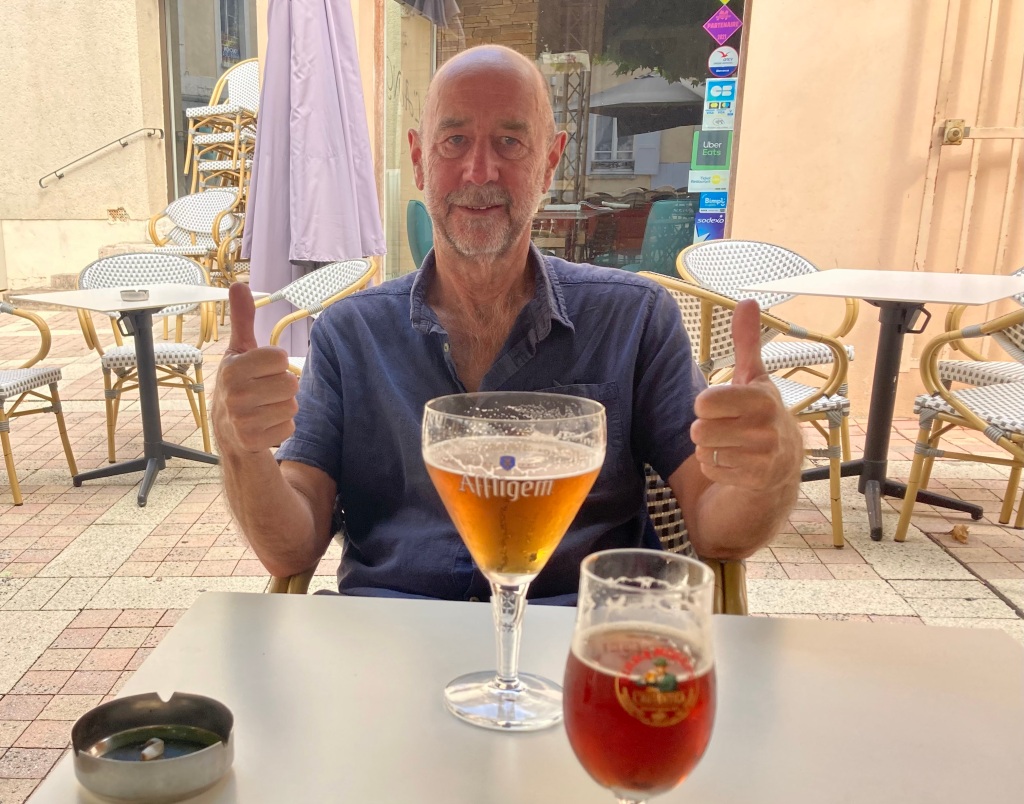
That was at the end of day two in Montargis, and time for us to move on to the Canal de Loing – a simple continuation of the Canal de Briare.
We really enjoyed the Canal de Briare – it was so much more than we expected with its lakes, lavoirs and ancient écluses, its villages and towns, full of surprises, and the countryside in between. A canal that we recommend.
8 days from Chevenon to Briare
2nd to 9th July 2023
The Loire is the longest river in France so I guess it is no surprise that the canal lateral to it is also rather long at 200 kilometres!
I was going to attempt to be a bit briefer with this second half of the Canal Latèral à La Loire – not because it was any less enjoyable – just that I risk boring you all. But it has had so many lovely and interesting moments that in the end it is as long as usual.
Just read as much as you fancy and then have a quick look at the photos maybe?
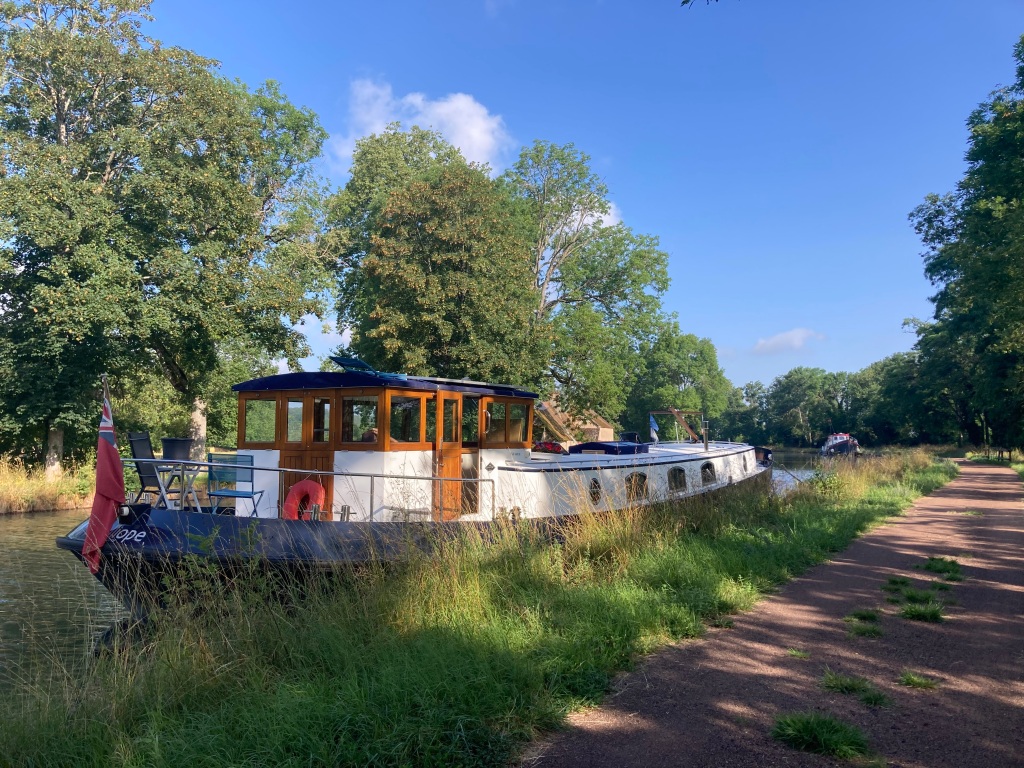
The second half of this canal journey begins at Chevenon, a delightfully shady and quiet spot where we spent the night and had been amazed by the medieval chateau in the village – see Latèral à la Loire part 1.
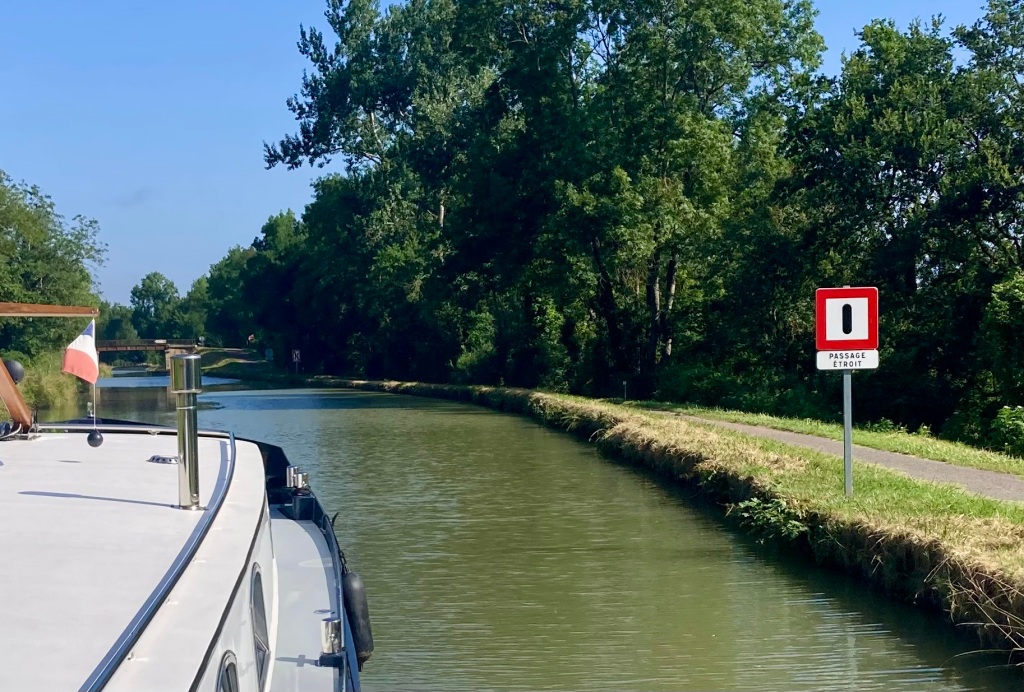
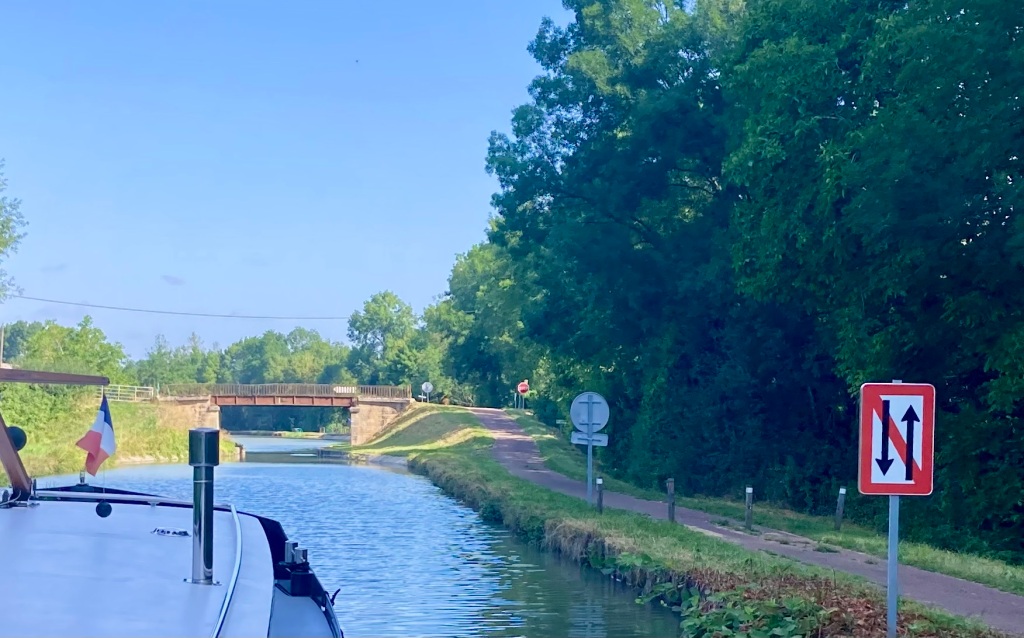

Various markers and ‘hazards’ we found along the way to our next mooring were these:- the signs for narrow (étroite) sections, one-way only sections, and the occasional fisherman or woman.
The latter sometimes requires the crew to sound the alarm with a cheery ‘Bon jour’. Some people are so engaged in their fishing, or asleep, that they don’t see us coming. We need to them to keep their lines away from the boat, otherwise they may get caught round the propellor, losing them their line (and maybe their rod), and causing us a bit of a mess to be cleared.
The next set of photos is a record of our descent through the double lock at Le Guétin.
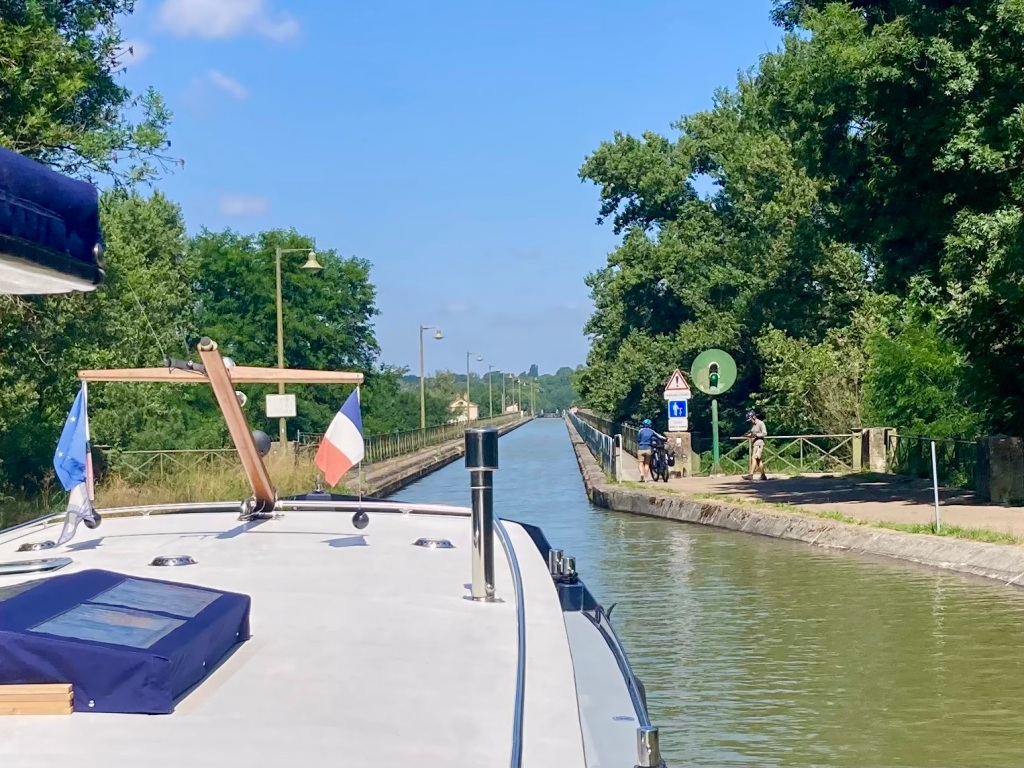
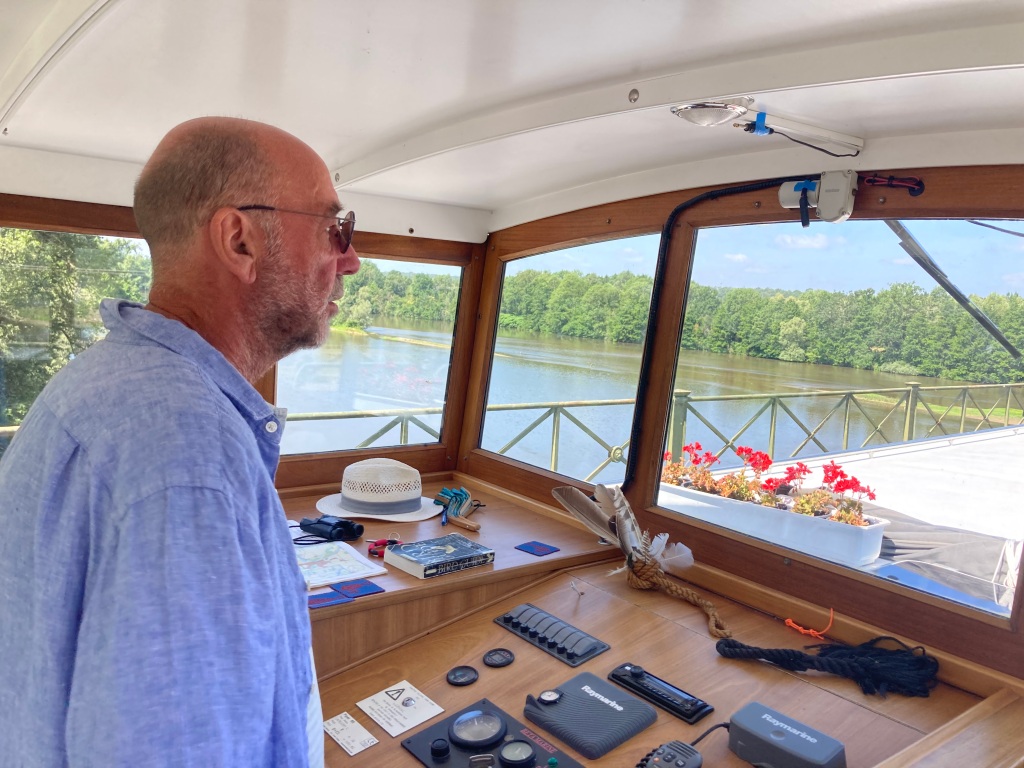
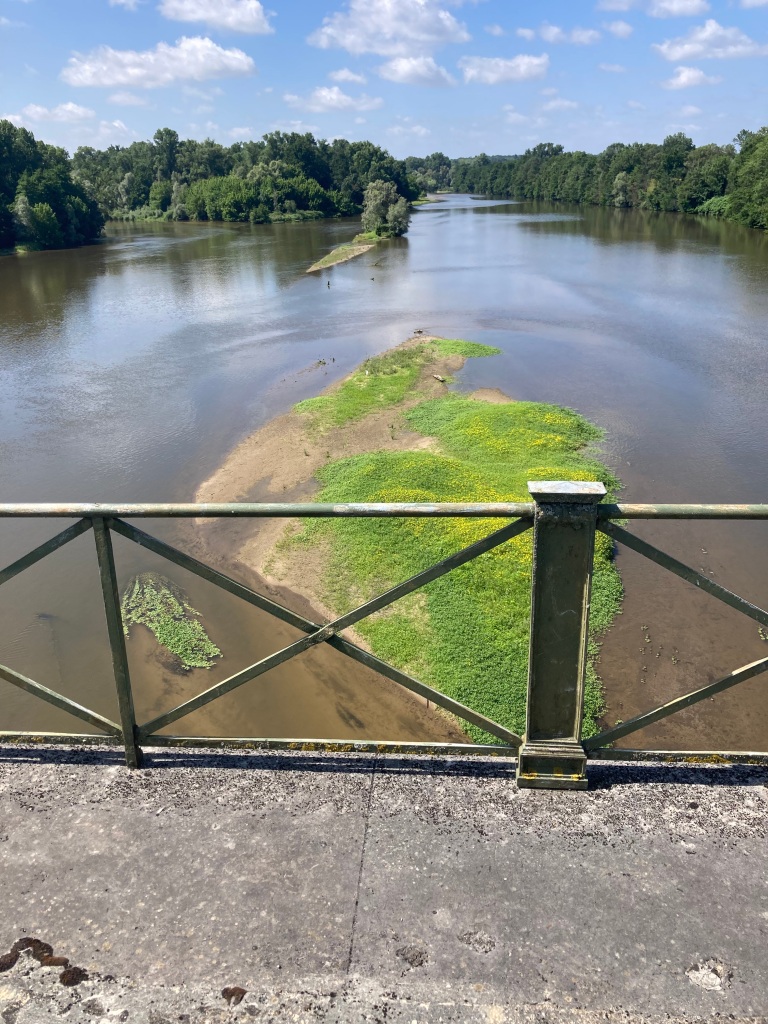
First there is an aqueduct over the Allier river, which joins the Loire a couple of kilometres downstream. While the Captain concentrates on the fairly narrow waterway across the aqueduct I could enjoy looking down on the river.
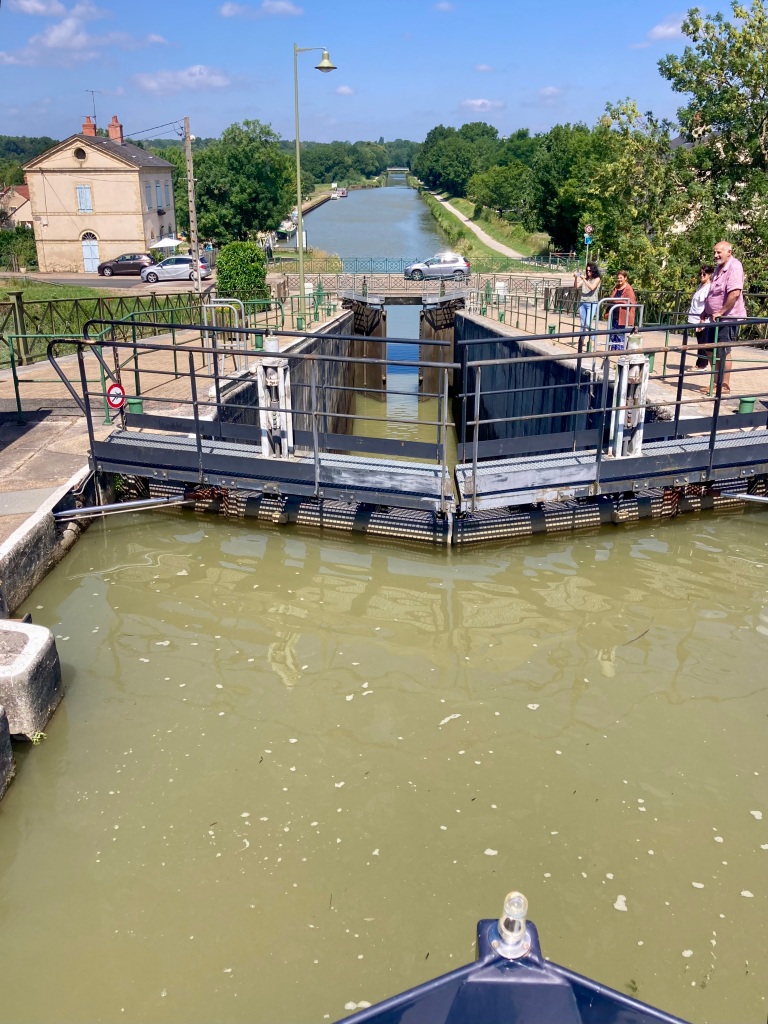

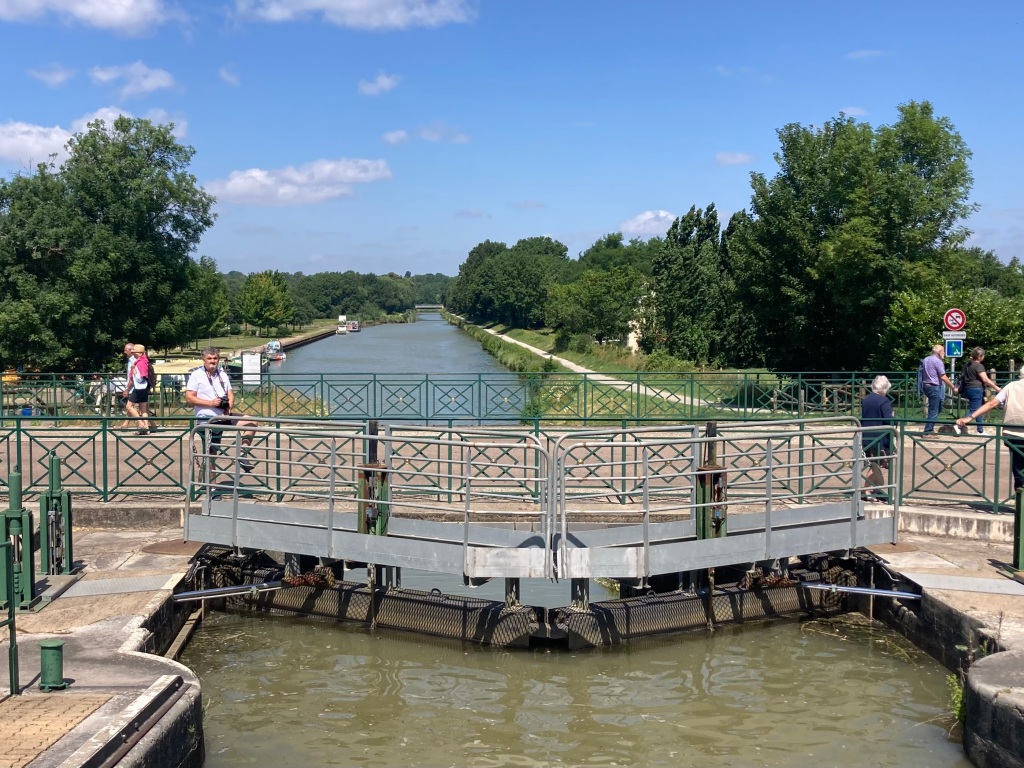
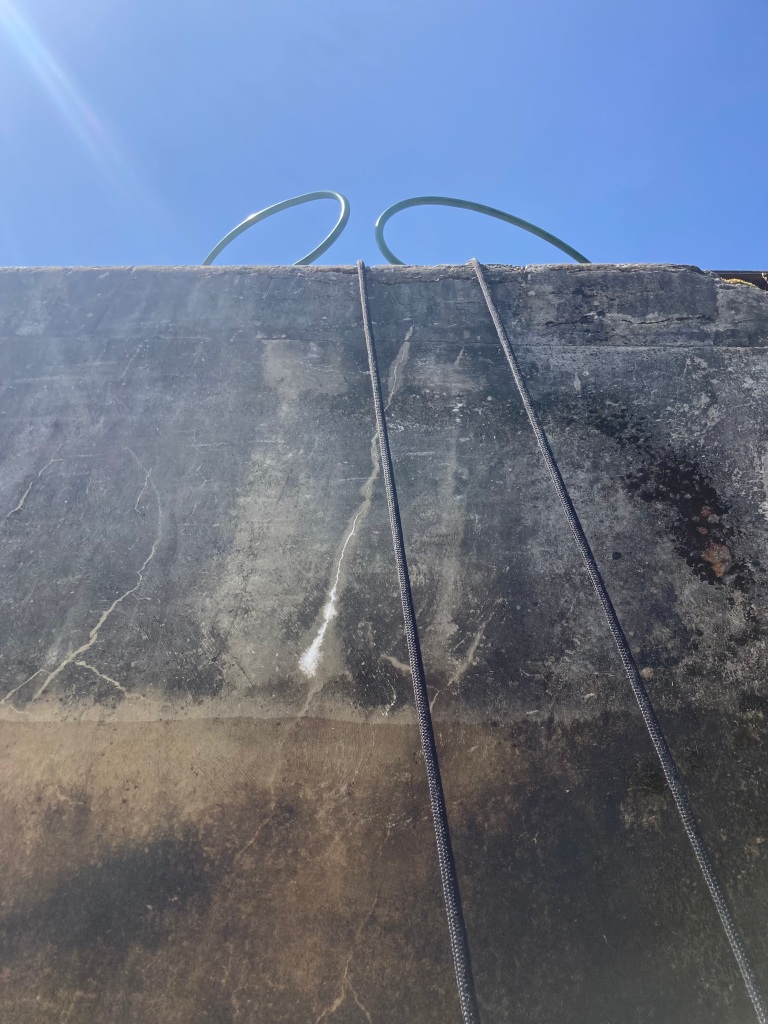
From the top lock you can see onto the empty second lock, and beyond to a nice empty quay wher we wanted to moor.
The top lock (1) empties into the bottom lock (2), dropping Calliope down to the level of water now in lock 2. The gates open and we move into lock 2. From there it is even easier to see all the space waitinfg for uis to moor up.
I also include a photo of my ropes. In this lock the bollard is quite a way above me and it is hard to see it, let alone throw a rope round it, but here is an invention I had not seen before. The railings round the lock at this point are shaped to drop your rope down around the bollard! It worked. Although had I missed the éclusier (lock keeper) – a pleasant helpful lady in this case, was on hand to help.
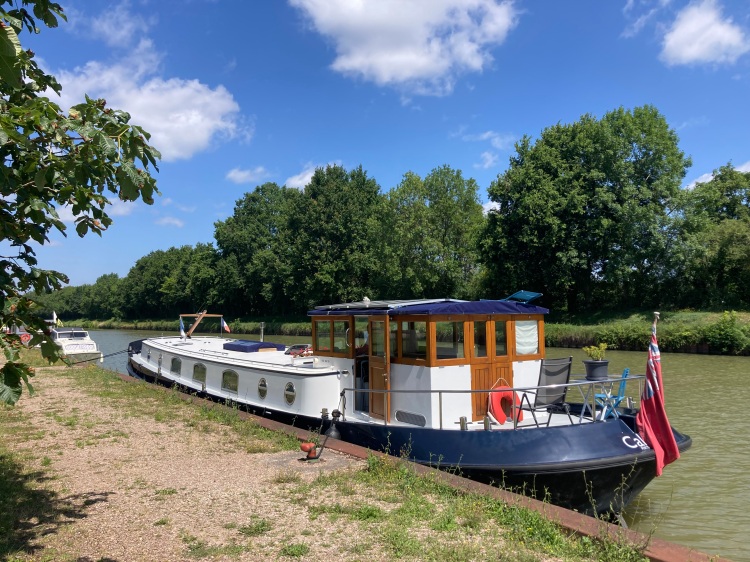
Three minutes after leaving the lock we were tied up and ready for lunch.
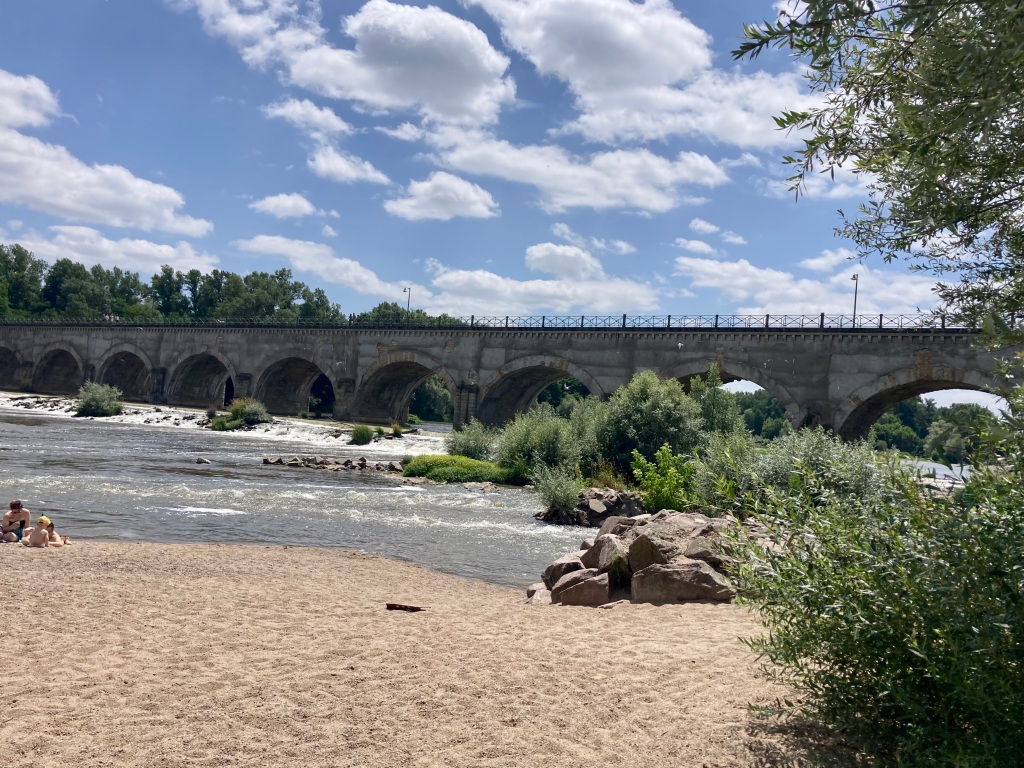
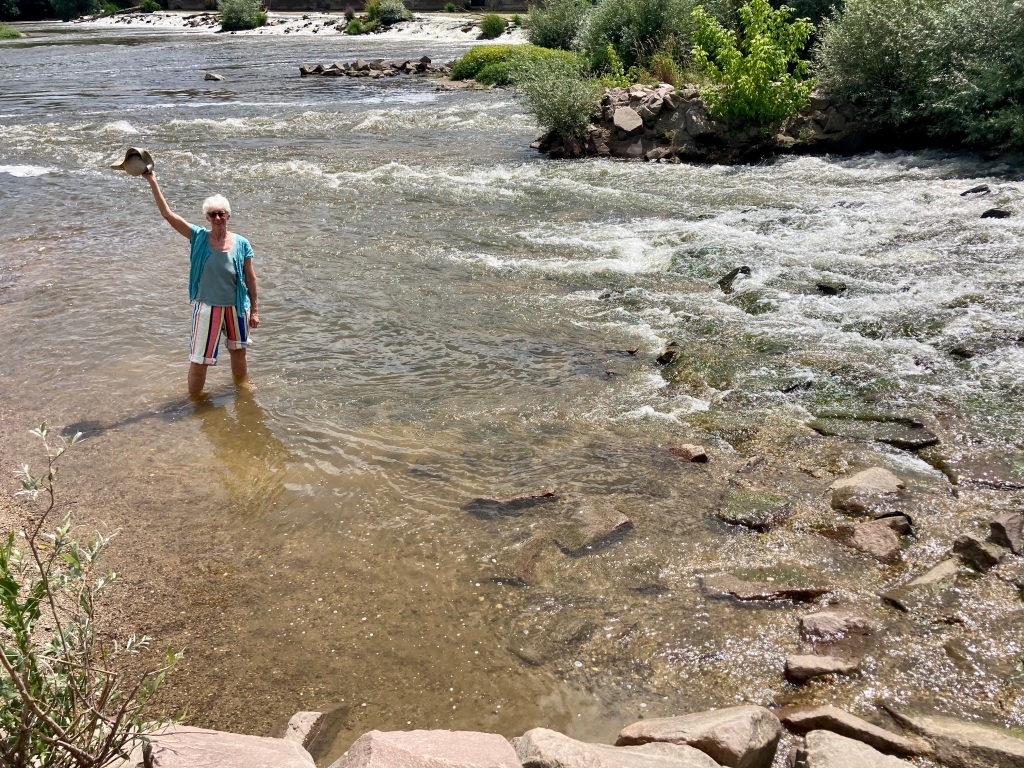
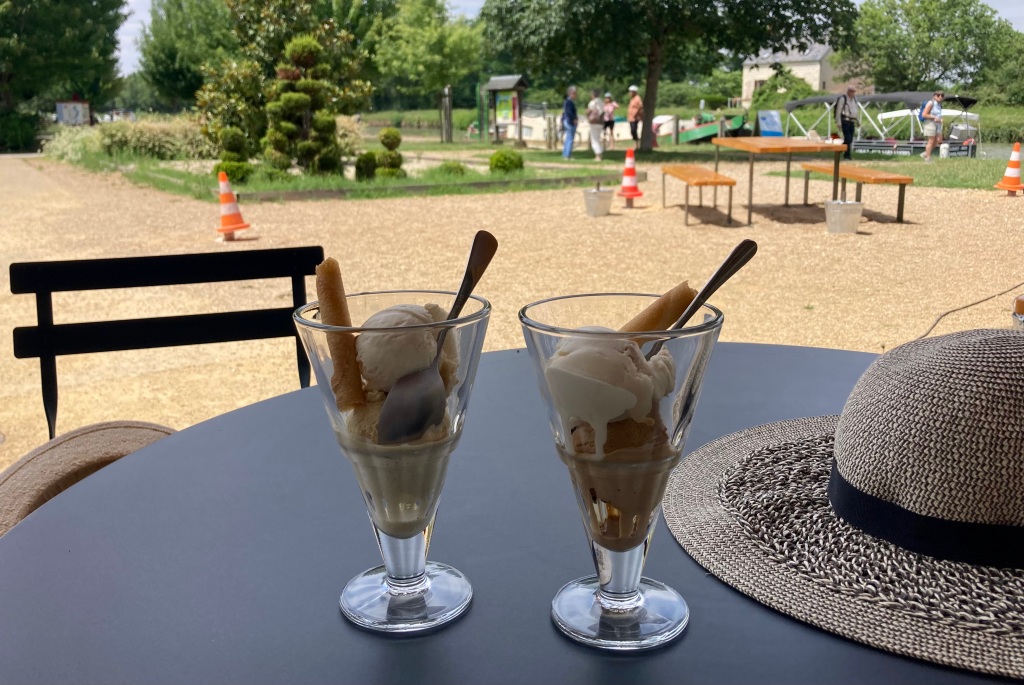
And a couple of hours later, after a snooze, we were ready to explore the small village of Le Guétin. Sadly it is a place that has almost as many houses and businesses closed up as there are open, though there are a couple of restaurants and a café near the mooring where we decided to fill glasses with ice cream instead of wine for a change.
The ice cream came after a trip to the beach at the edge of the Allier river. In the winter it must be covered up, but right now a sandy beach is revealed, next to some lovely shady trees. It is very popular with families for picnics, swimming, parties and, for me, paddling.
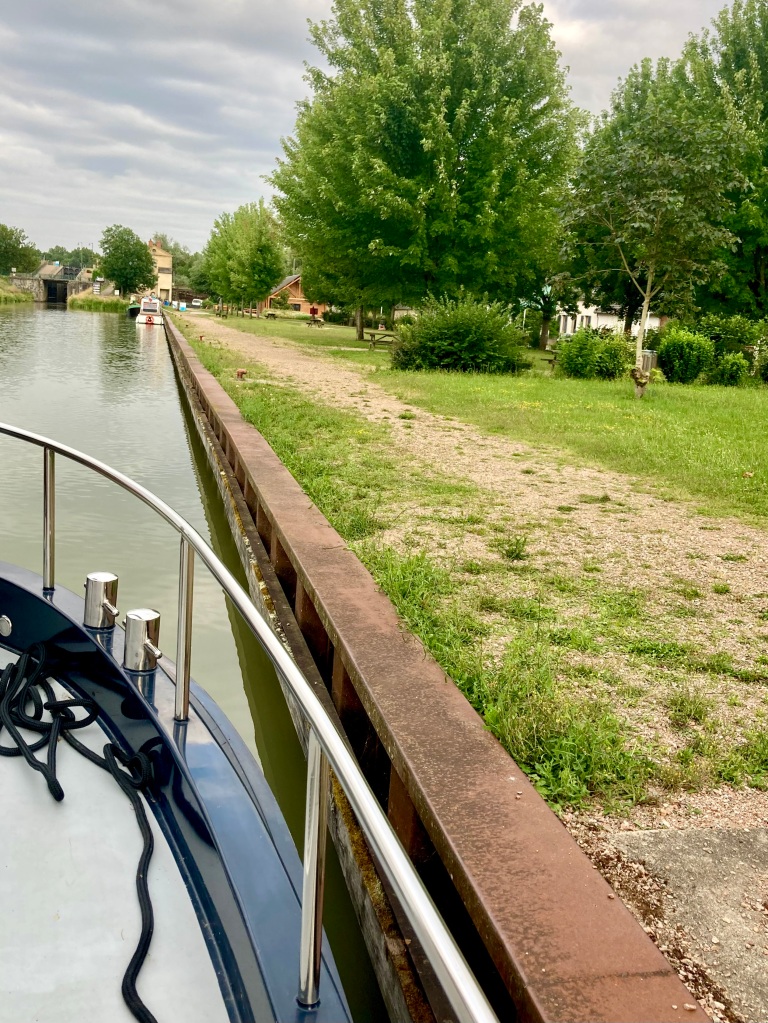
Back to Calliope for a gentle evening aboard, amazed that no other boats have turned up to moor along this long quay for the night.

It was quite grey when we set off from Le Guétin. But not so dim that I missed the joining of another Embranchement – this time an out of use one , the Lorrains Branch canal.
It leads to an unusual round lock which once led into the Allier river.
Along the way we saw many examples ofd these ‘deer steps’.
Deer often fall in the canal, or jump in and cannot get out, until they reach one of these steps. We are so glad they exist!
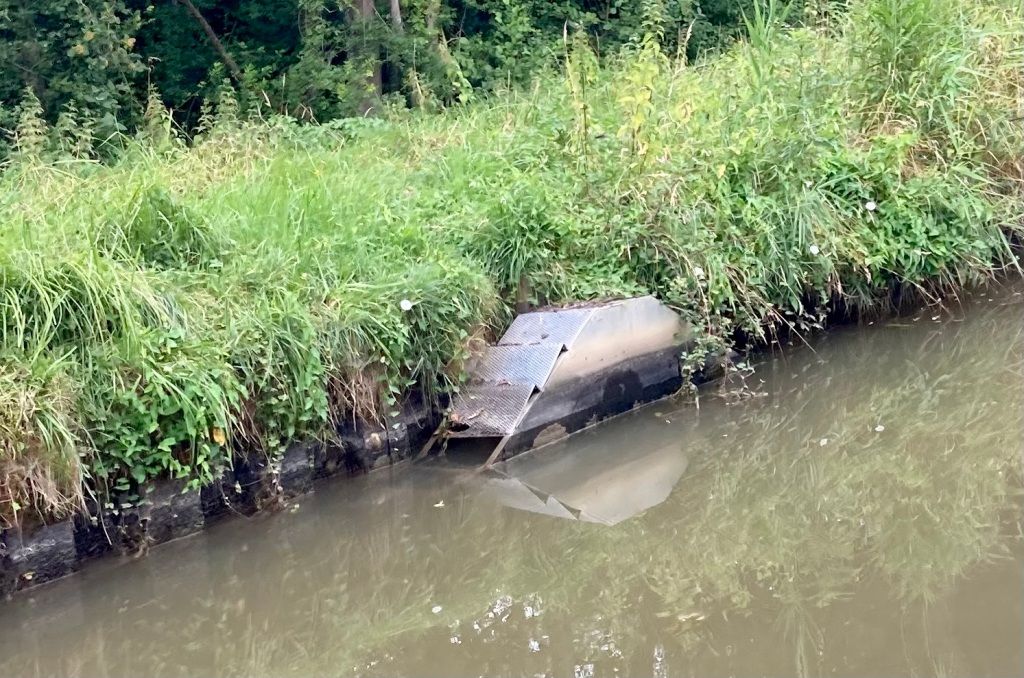
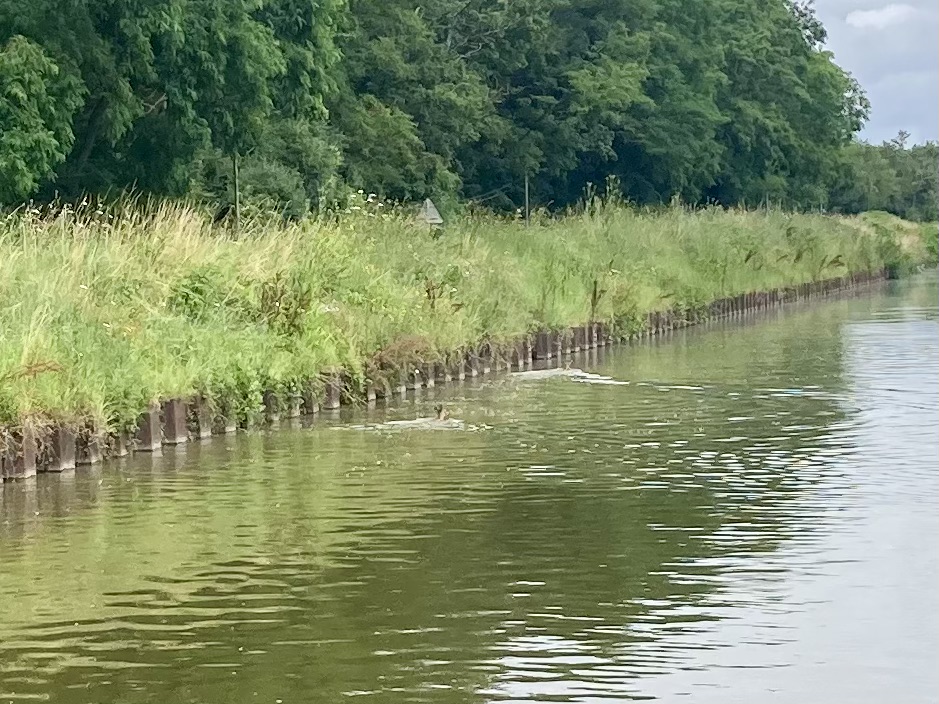
In fact a few days later we came across two deer swimming in the canal – you can just see them in the photo by the wake following them as they swim.
Only a few yards further one they were able to climb out. Phew!
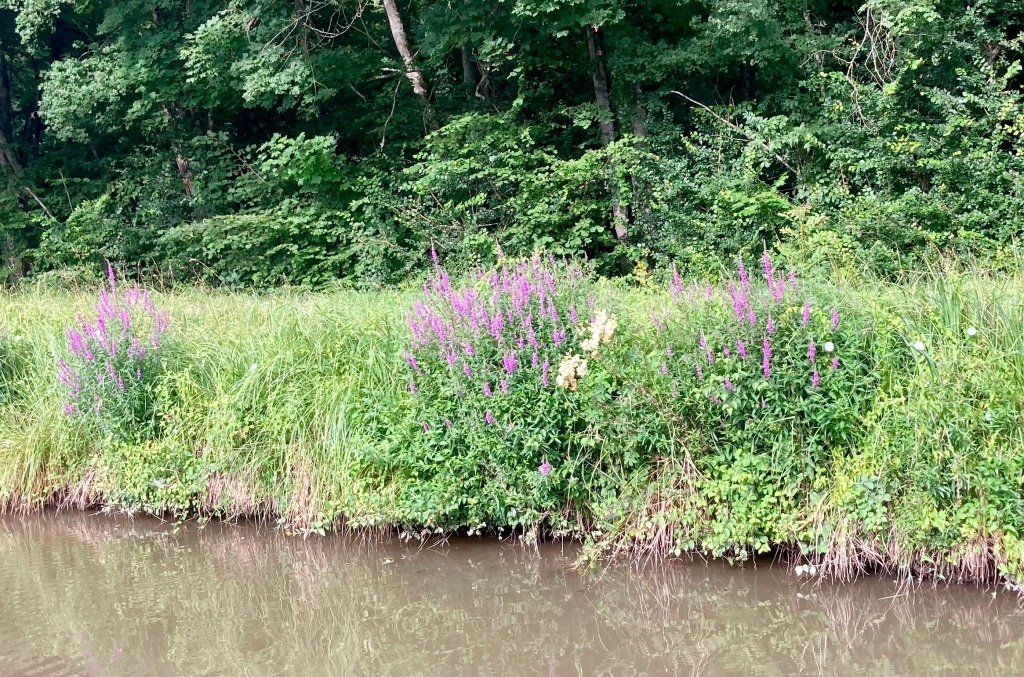
Everywhere there were flowers – I can only capture an idea of what not is like to travel along such an elongated garden! I cannot get the flowers in focus as we move, so this is almost a Monet-esque representation.
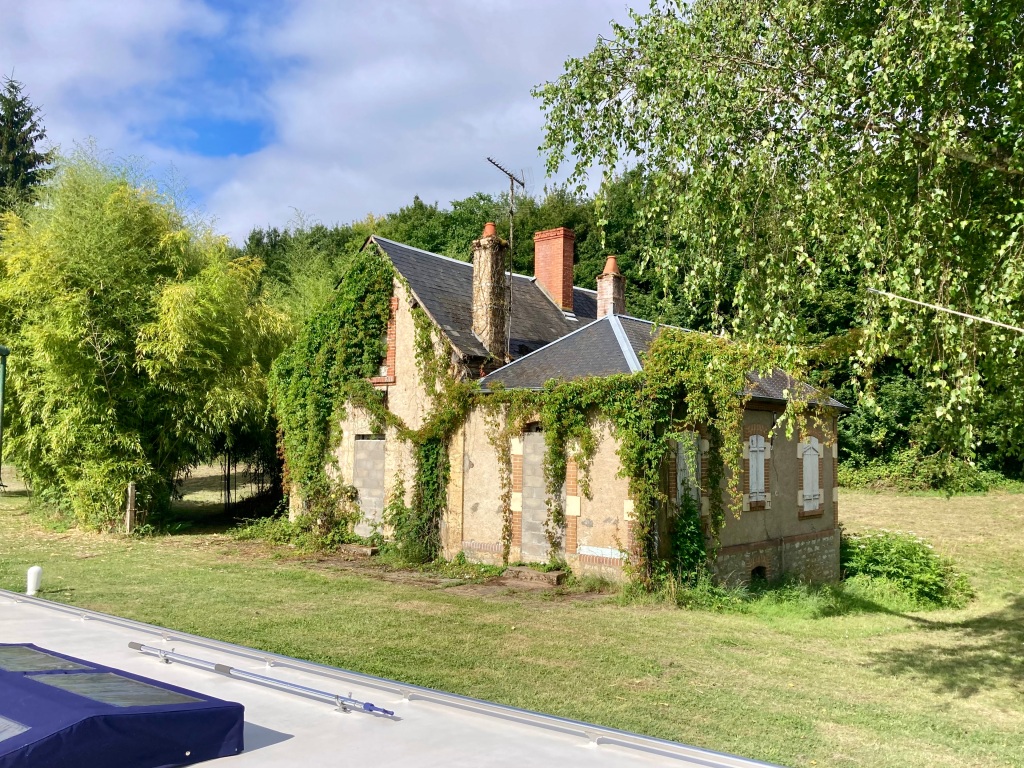

5 kilometres after starting out that morning we were at our first écluse (lock), Laubray. The old éclusier’s house managed to look attractive, despite the bricked up entrances. The functional hut provided for today’s éclusiers was less so, but it was good to see the original blue sign from the house now attached to the hut.

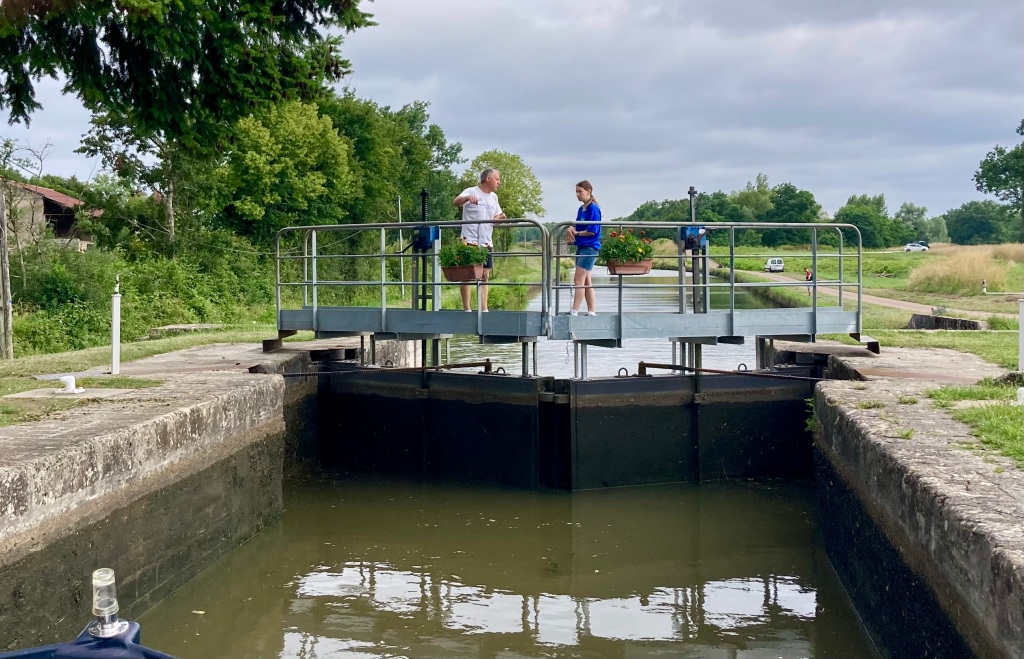
At this time of year, summer, students are brought in for temporary work as éclusiers during their holidays. At Laubray we met one being trained – her first day. It took a bit longer than usual to go through the lock, but it was interesting hearing her instruction – some of which our French was able to understand!
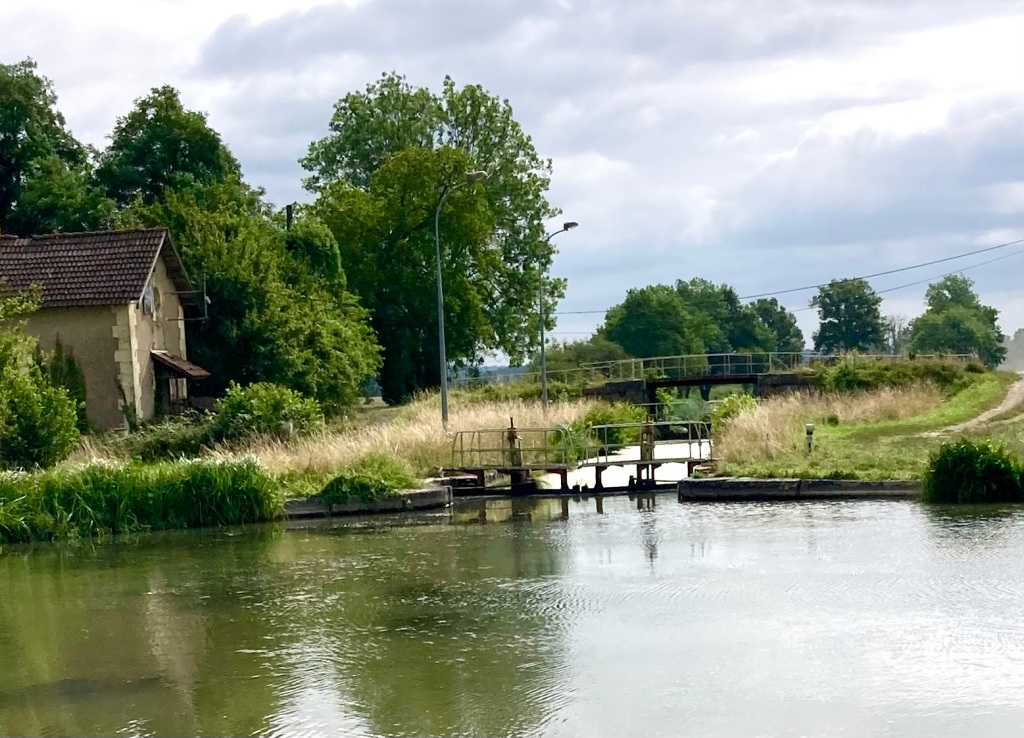
As we continued downstream we passed yet another Embranchement – this time one that was a short 2kms bief (stretch of water) to the Loire. How wonderful to be able to go out on the river! Apparently, despite its dilapidated look it is still possible to call up he VNF and ask to be let through the lock. My VNF Navi app tells me the lock is available and gives me a phone number.
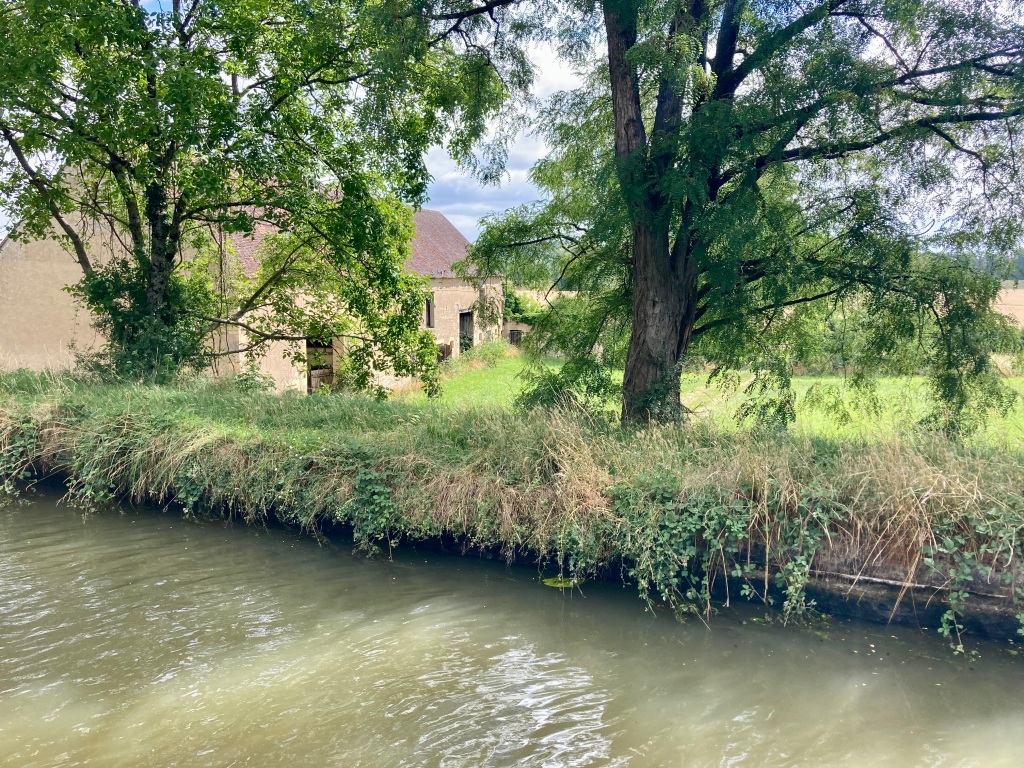
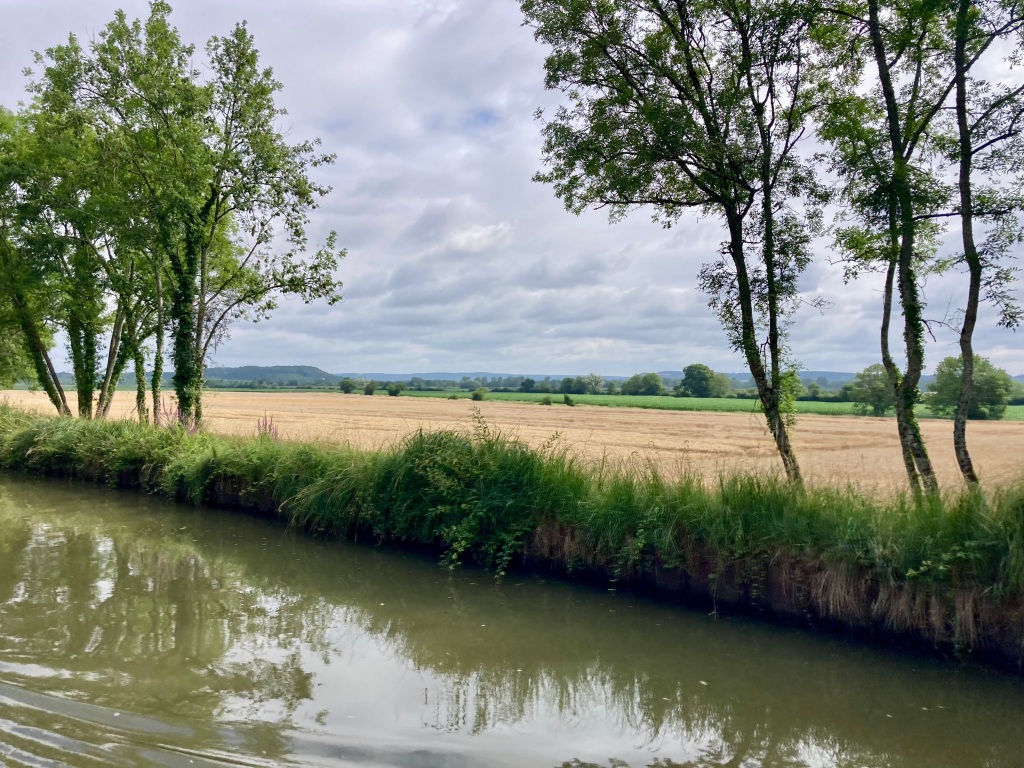

The farming world was opening up before us, both buildings and fields. Most of the farmhouses still appear to be lived in, with tidy farmyards around them.

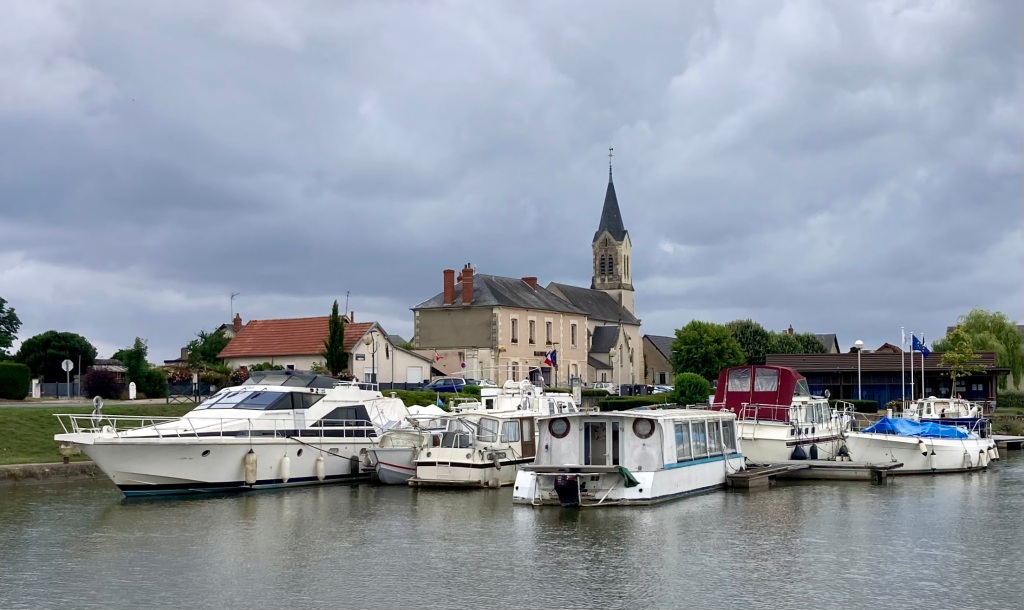
And then a change again as we came into Marseilles-les-Aubigny, a surprisingly big port in the middle of the countryside. In addition to mooring for many older barges, mostly converted into homes, there was a port de Plaisance for leisure boats.
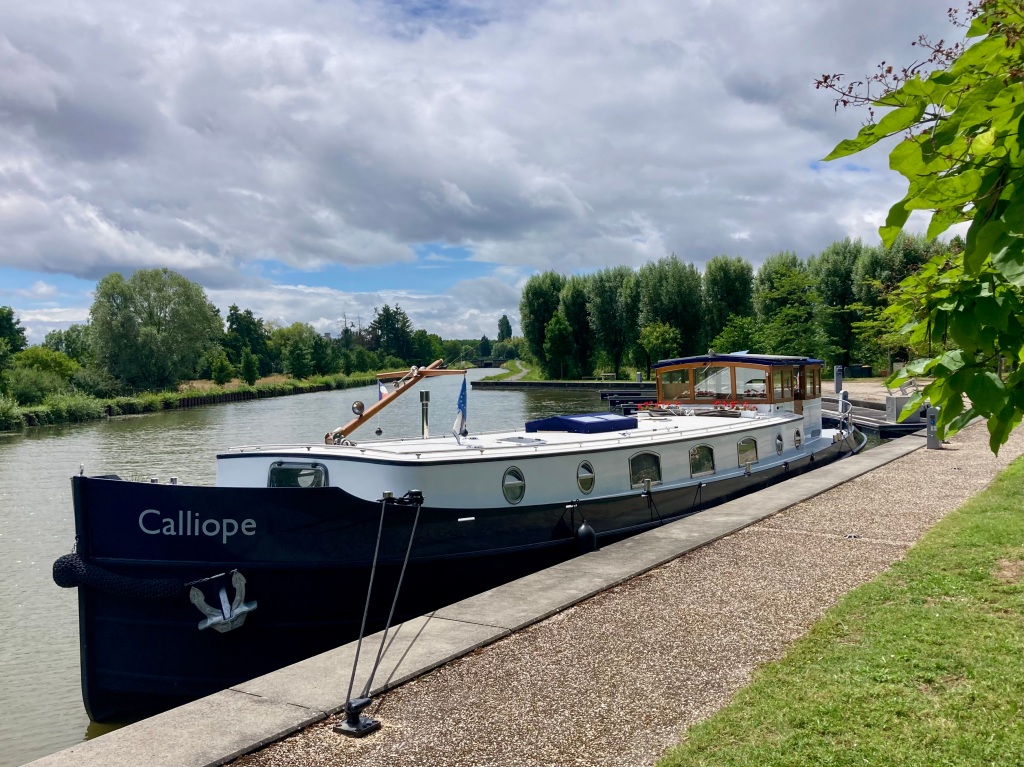
We continued for another couple of kilometres though to spend the night at a quieter village called Beffes and enjoyed a pleasant and more rural mooring.
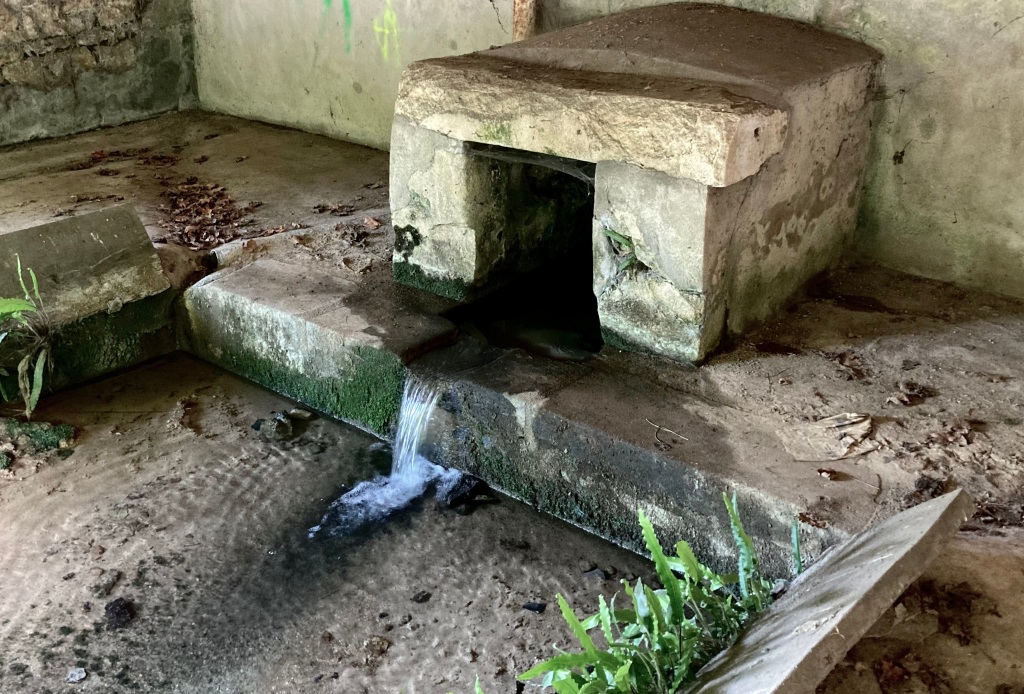


A walk into the village unveiled another lavoir for me to photograph. It was obviously built around a stream that was still tumbling in at one end, through quite a monumental entrance! Also good to see one of the old original drying rails still in place.
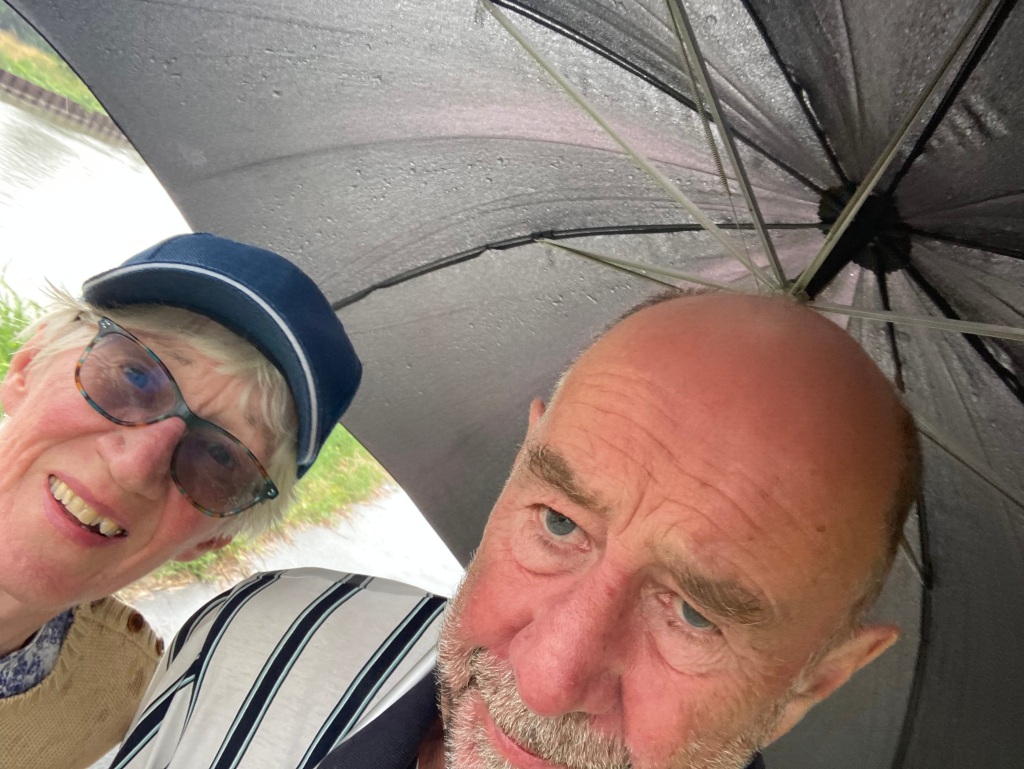
On the way back from our walk, where we discovered that the recommended restaurant was now sadly closed, though the boulangerie and Proximarche were happily still going strong.
It then began to pour with rain – not the Captain’s idea of a fun walk!
Undeterred I ventured back out later to the other side of the canal and the rest of Beffes village ….
…. where I found another lavoir! This time more modern and brutalistic in design.
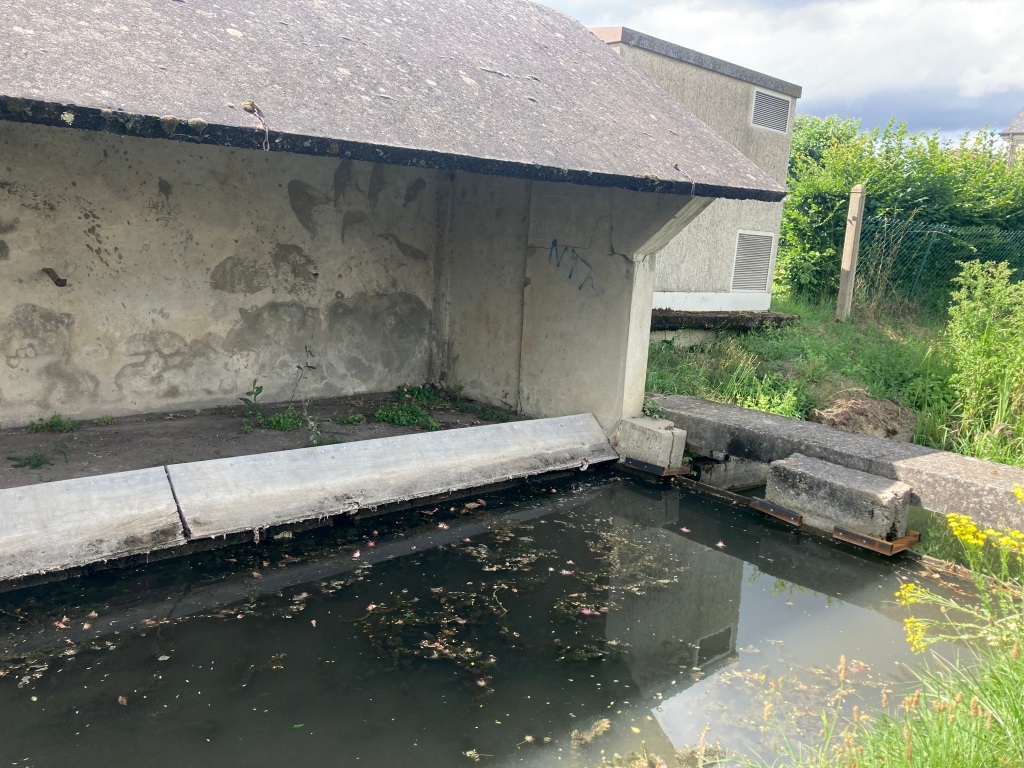
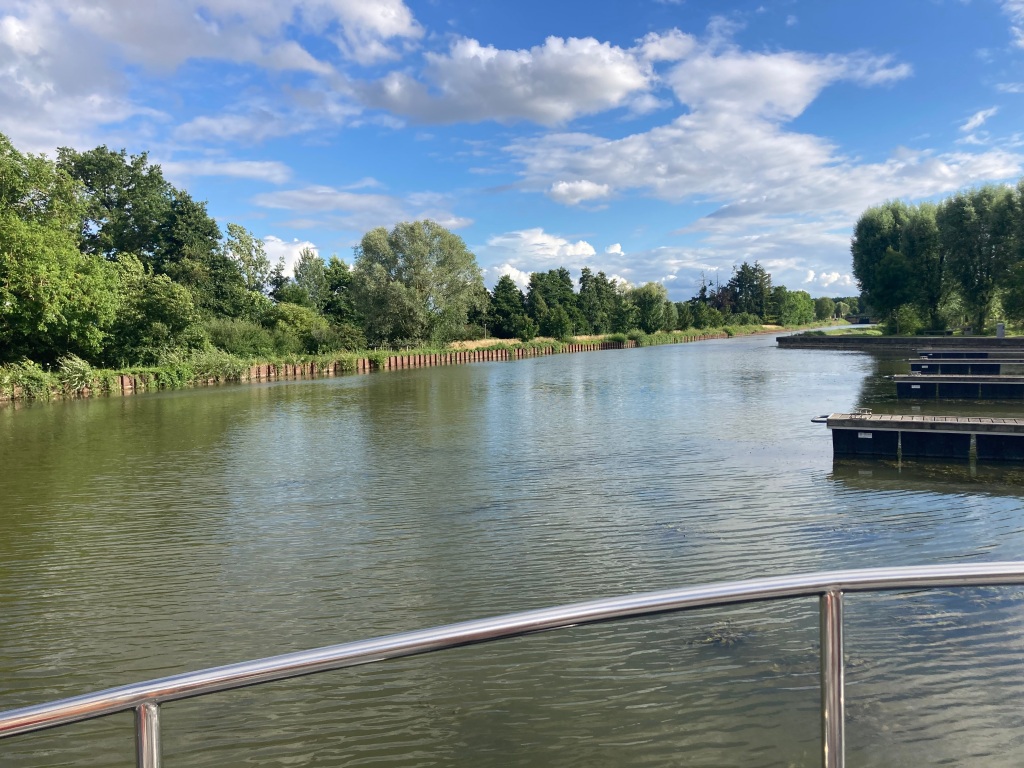
The sun returned an hour or so later and the day ended pleasantly on the back deck.
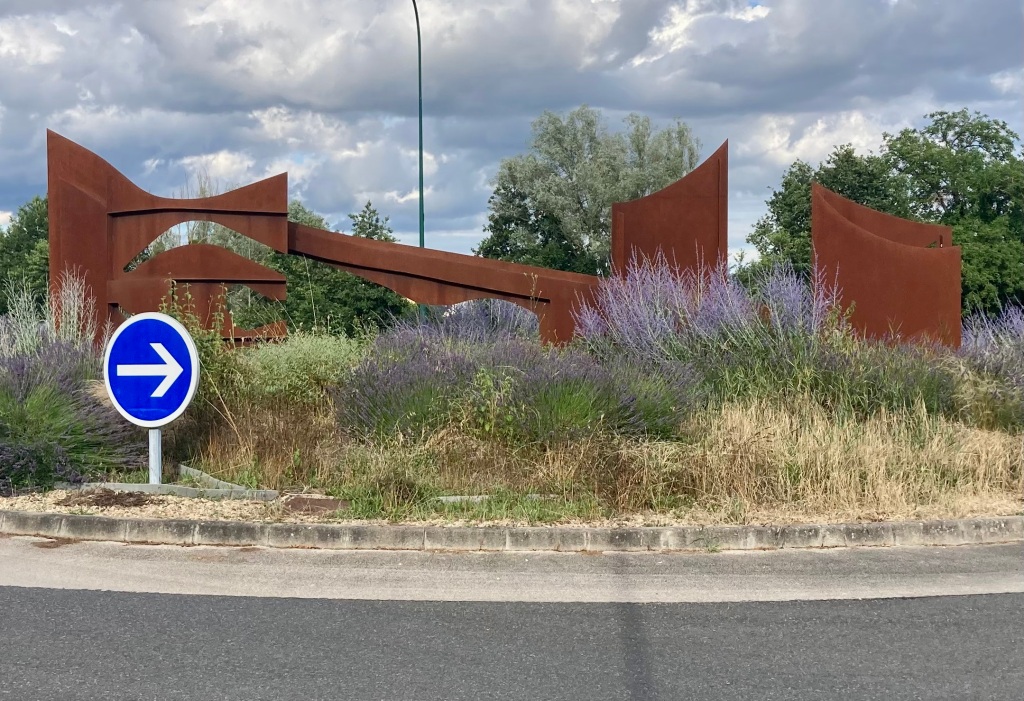
Just one more thing before we leave Beffes. The aforementioned roundabout had a huge metal sculpture amongst its flowers.
We were not entirely certain what it represented, maybe a barge?
When the engine was started in the morning the Captain thought that our starter battery, after 9 years good use, was nearing the end of its best life. He thought it should be replaced now, rather than waiting until it died and we suddenly found ourselves stranded. We pondered on how to accomplish this as we moved on to Herry.
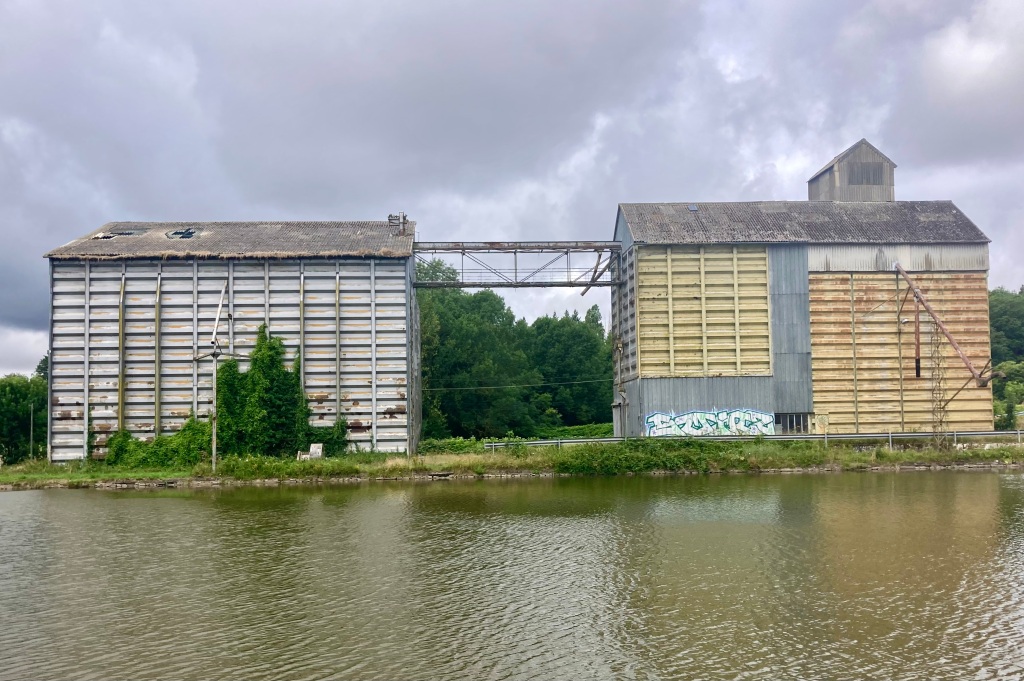
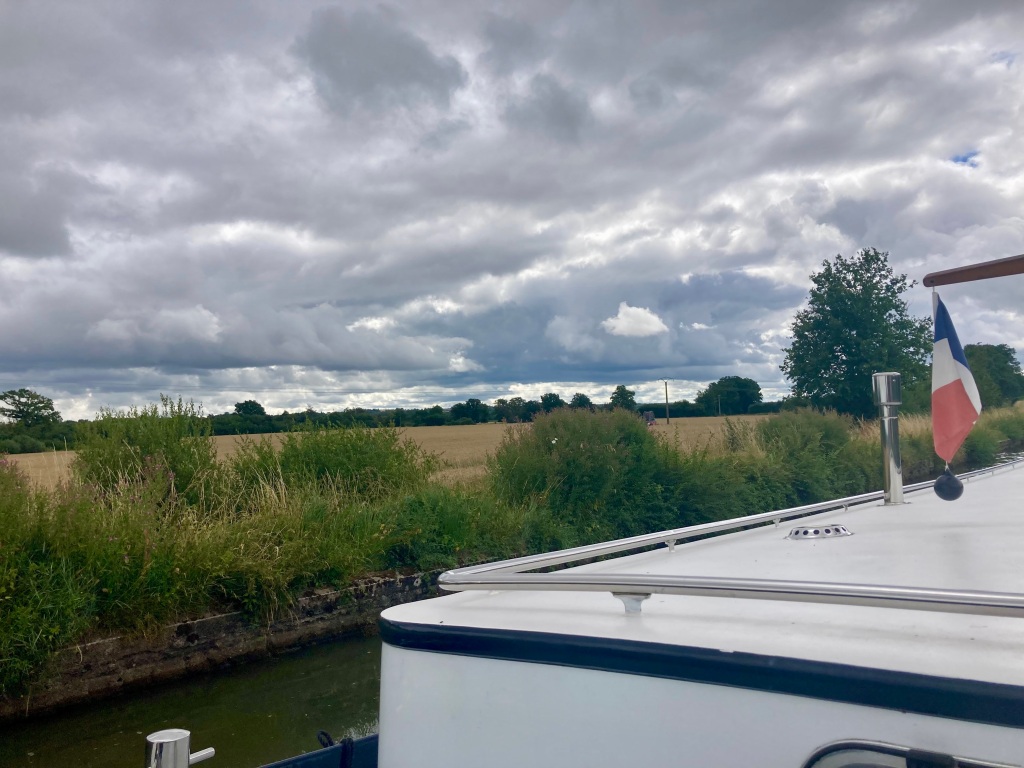
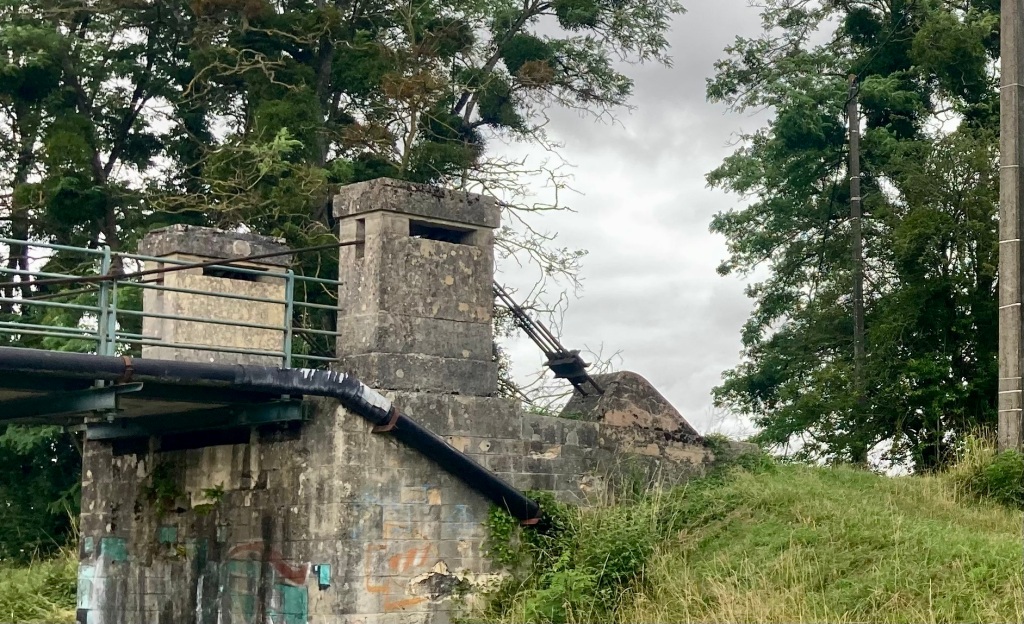
The canal had various characters that day – some old industrial buildings, now defunct; farm land reaching to the horizon; old bridges, some with unusual suspension.
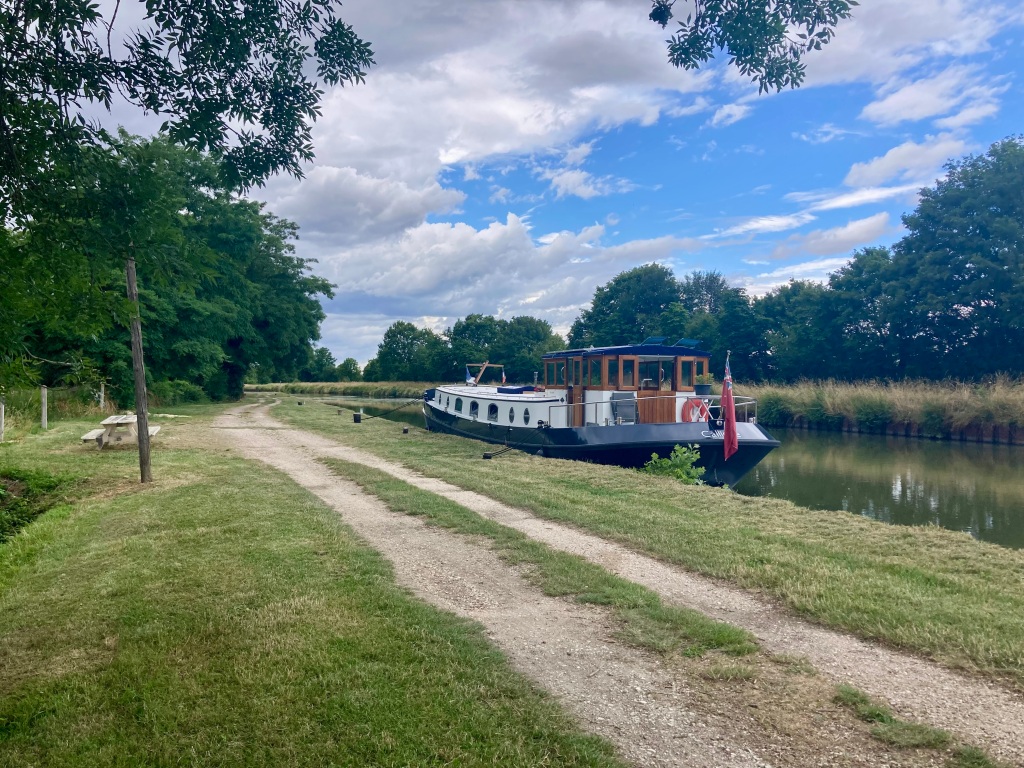
When we got to Herry we had another quiet rural grassy place to tie up for the night. It was lunch time so as usual I was off to the boulangerie.
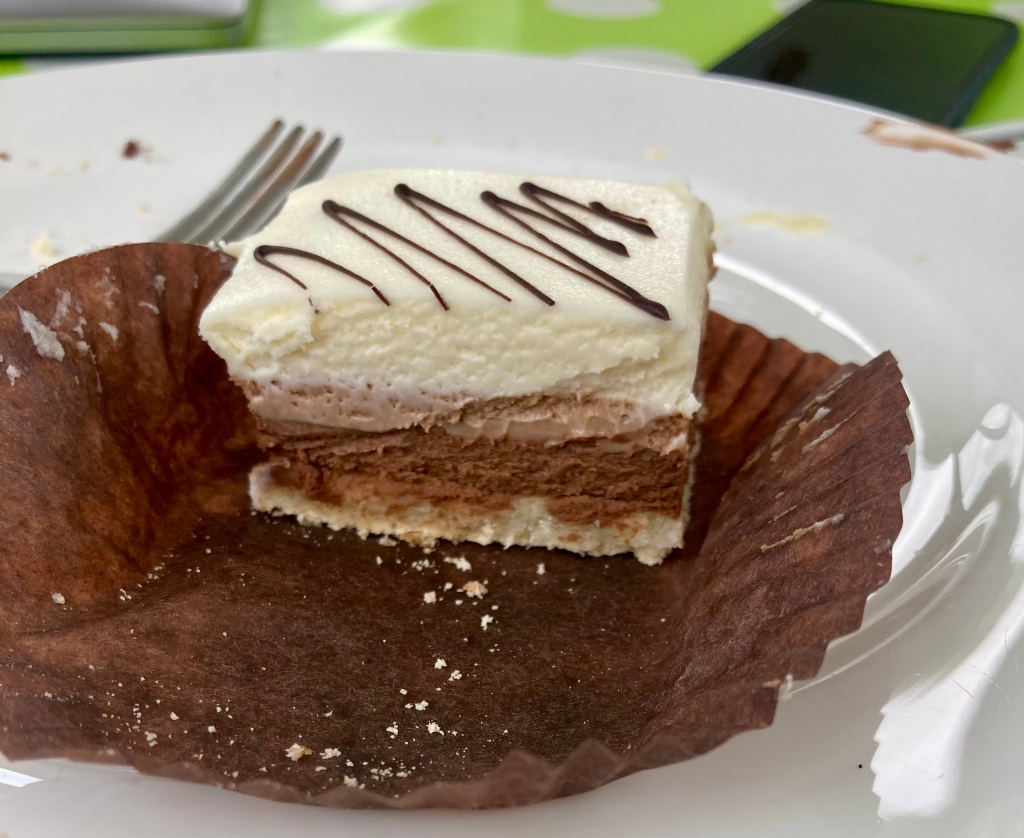
And because it was the 37th anniversary of the day we moved in together to start our lives as a couple, I bought an anniversary cake to share in celebration!
Three layers of different chocolate mousses – it was a good cake!
Now we turned our minds to the battery again, I remembered that when we passed through Marseille-les -Aubigny we noticed a chantier business (boat building and repairs). I gave them a call, although it turned out to be easiest to communicate by text message where we could both use Google to translate what we wanted to say! It worked and a new battery was ordered to arrive next morning.

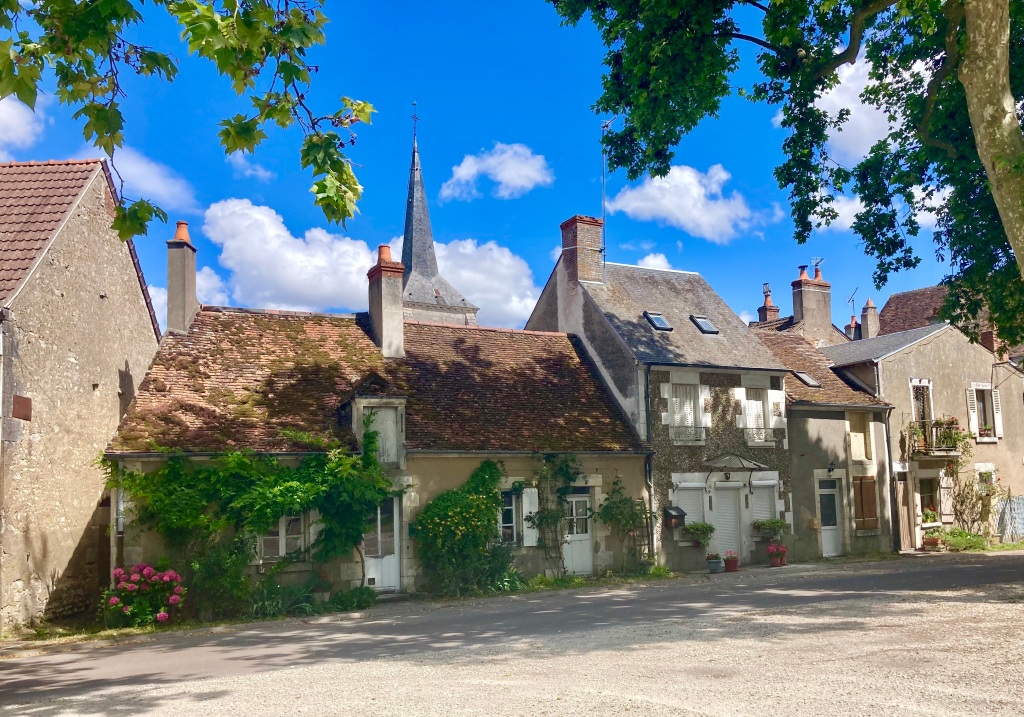
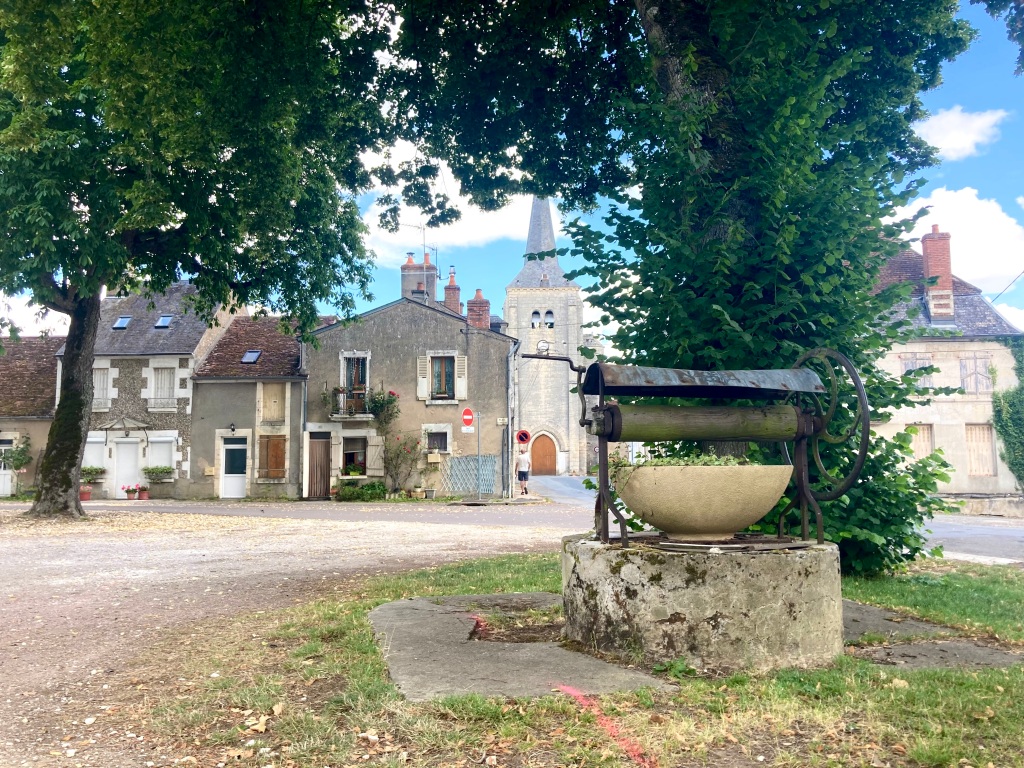
In the meantime we had time to walk around the village, which in the past looked like it was very an important and thriving commune. There are still quite a few grand houses, but sadly many of the smaller ones are now empty. The old priory (above) is still there, attached to the church.
There is still a school, a church, a post office, tabac and of course a boulangerie, so some vitality remains.
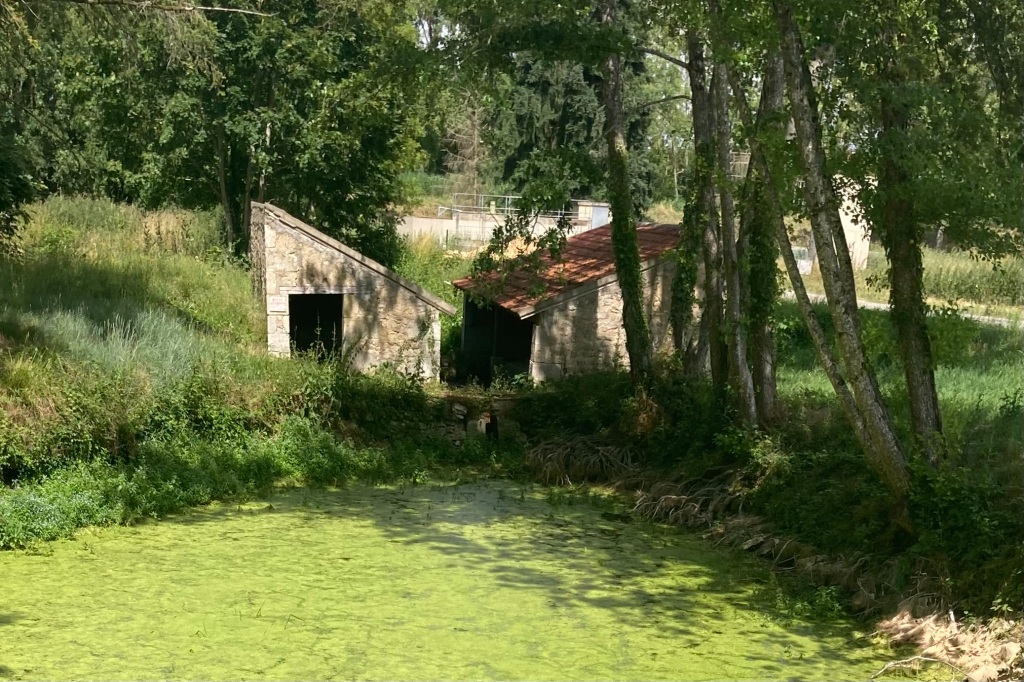

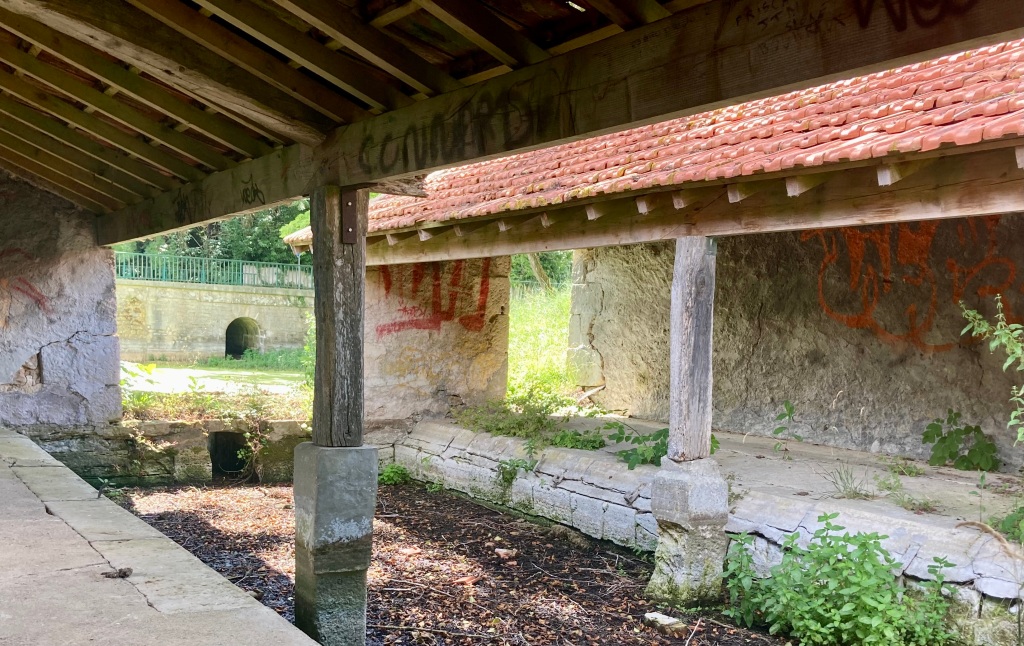
There was also the remains of an old lavoir which we spotted from the canal due to its two sloping roofs pointing down at what had been a stream. It was now a shallow pond covered in bright green algae, none of the water flowing into the lavoir itself – all a bit sad to be honest.

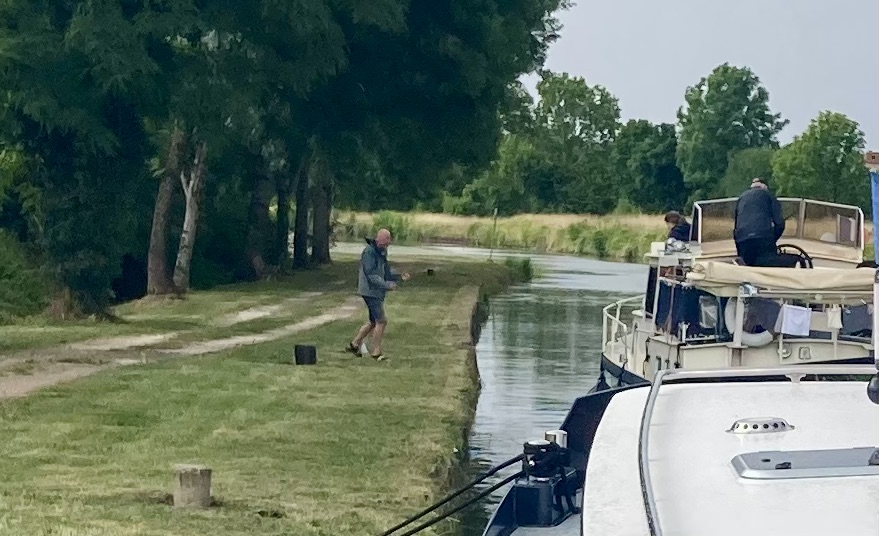
Back at the boat, we were expecting to be alone, but as evening drew in a Danish couple arrived on their boat. Stewart jumped down, in the rain, to help them. Gradually, over a succession of days and shared moorings we became friends and hope to find ourselves moored up with them again some day.
And before the day was out a phone call from Remé of Chantier Naval Ebezard announced that the battery was coming 12 hours early! He soon arrived and had it installed in no time. We were very grateful; they are heavy things to move around!
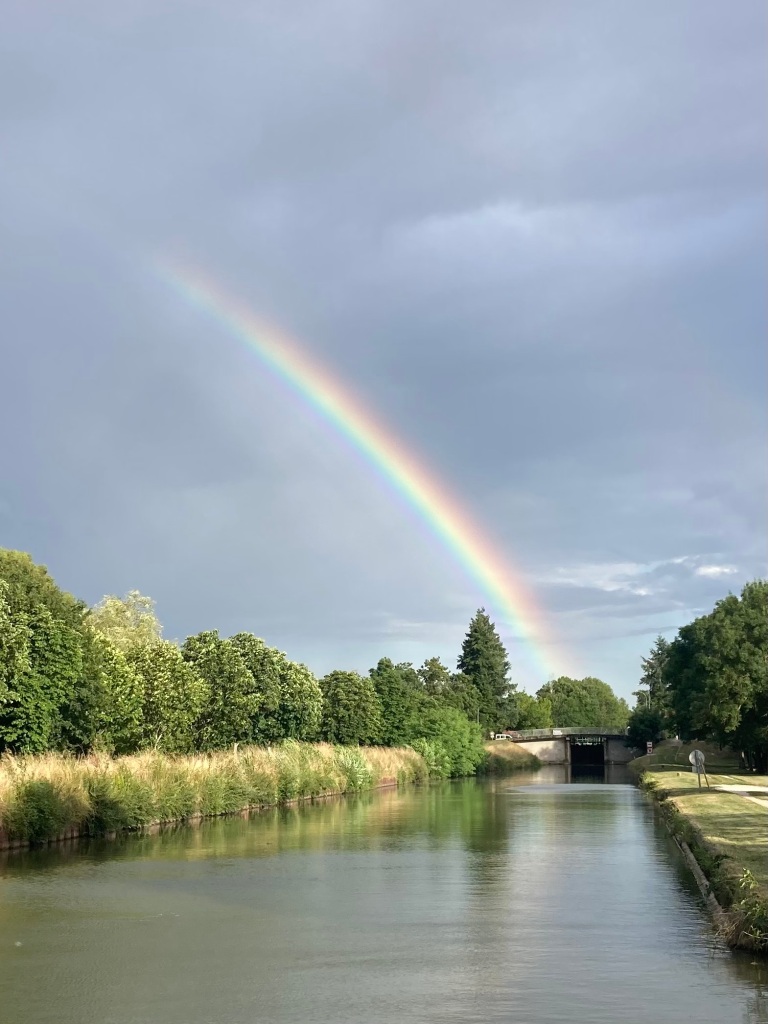
So all in all it was a happy end to an anniversary day, and with rain easing off we were treated to a rainbow as well.
On Thursday morning, bright and early (well, 9.15 to be precise) we were off to cover the 14 kms to Ménétréol-sous-Sancerre.
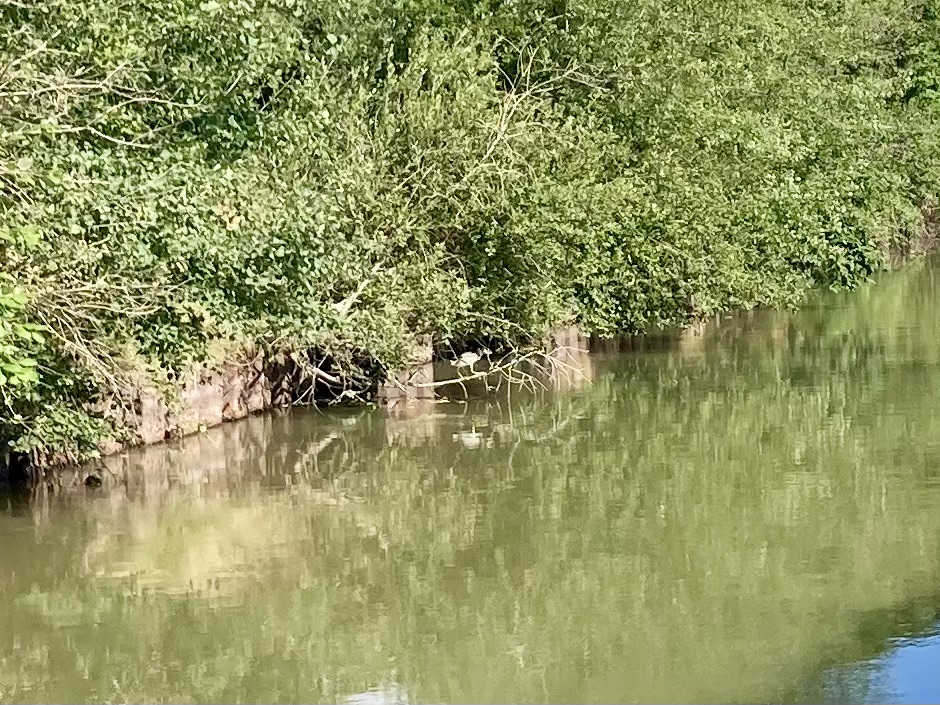
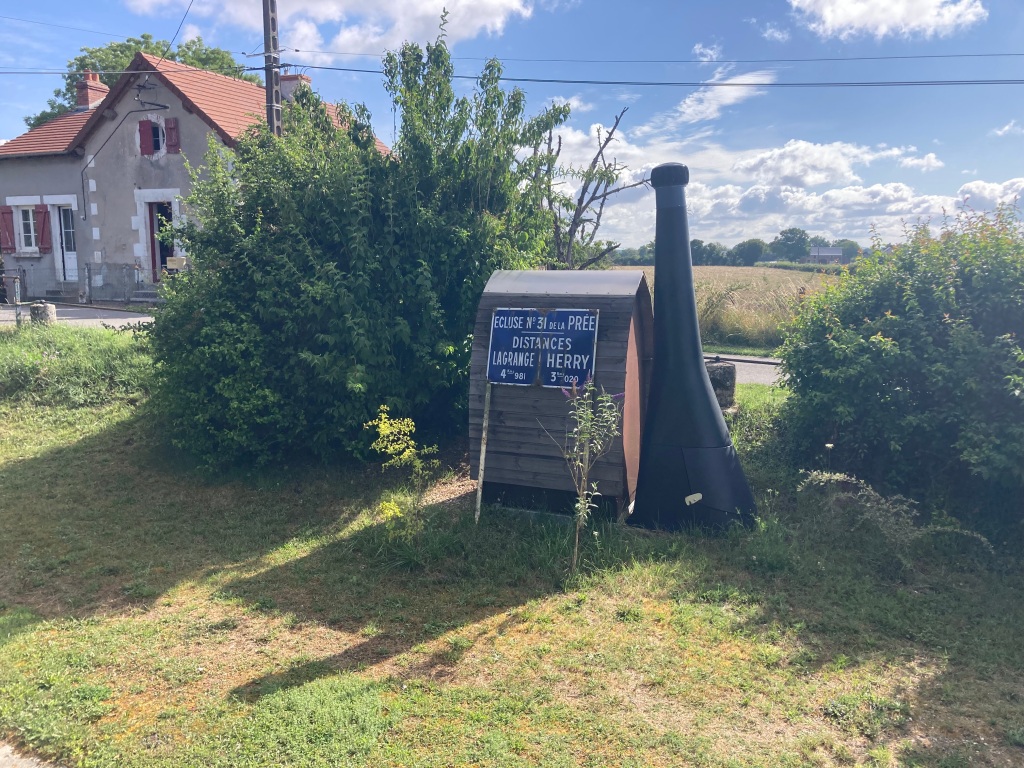
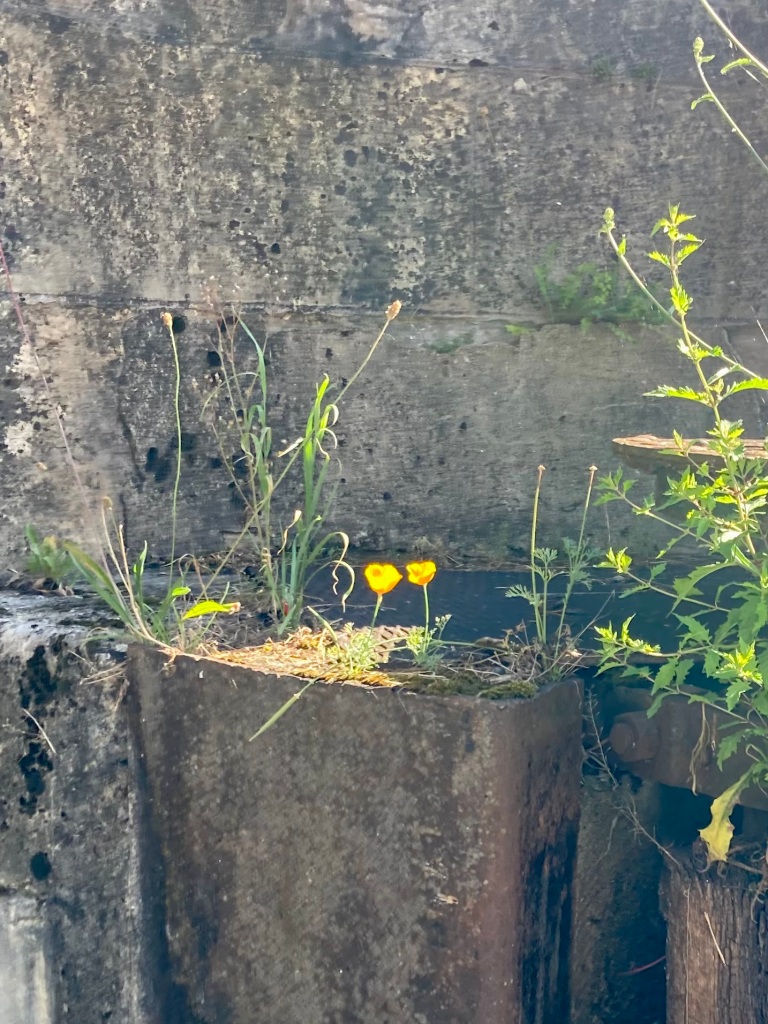
As always there were things to see along the way. Just a sample here – a night heron perched on a branch just above the water (you can just see it in the photo); a’dry’ toilet, one of a series installed at locks along the way for passing walkers and cyclists; some little golden flowers that had decided to adorn the side of a lock gate.

By now we were seeing fields of sunflowers in full bloom, splashing their sunshine colours across the landscape.
And someone has been busy along this section planting roses at each lock entrance.
So splashes of red and pink to enjoy as well as the splashes of yellow.


I was amused by our mooring in Ménétréol-sous-Sancerre. There we are peeking out at the zebra crossing. It was a quiet road, and a pleasant place to moor.
Ménétréol was a real surprise to us ; we found a lovely village, full of fascinating old buildings, narrow streets at odd angles, and with a huge unexpected German built viaduct marching through the centre!
And it is below Sancerre, with vineyards now covering the slopes.
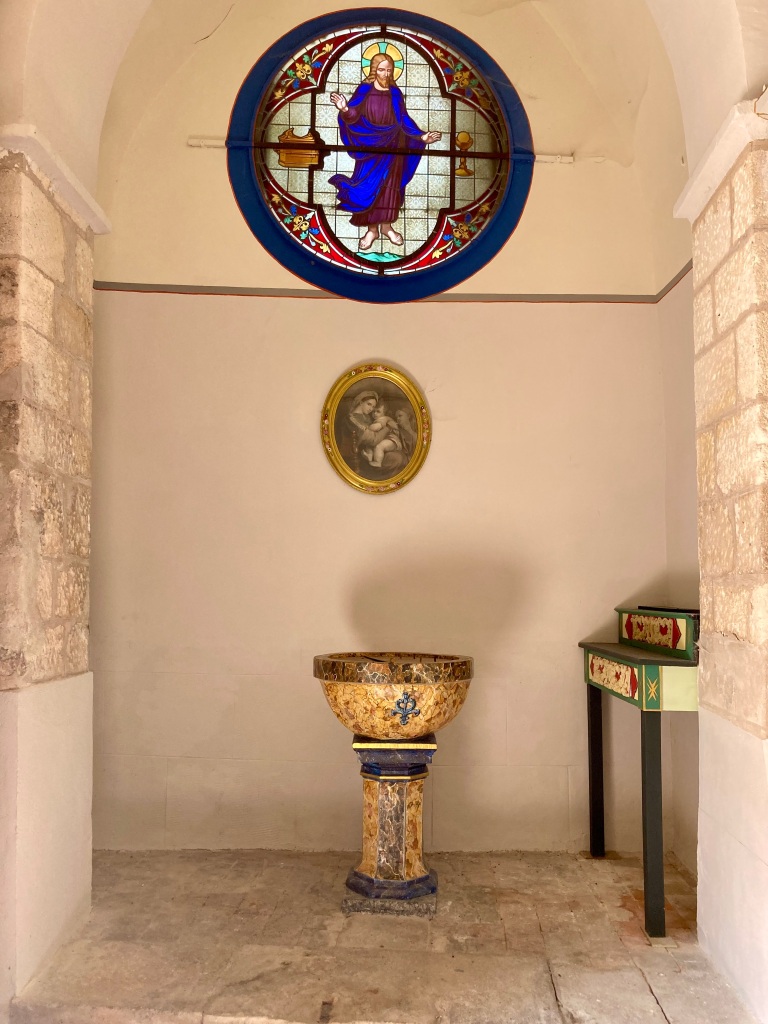

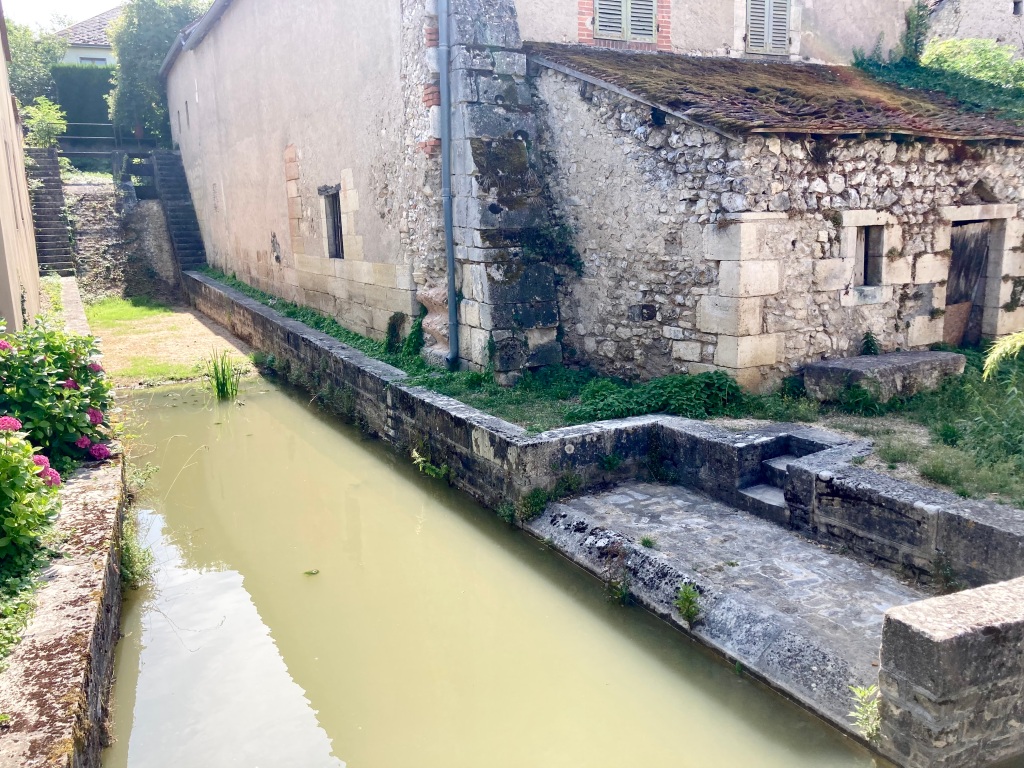
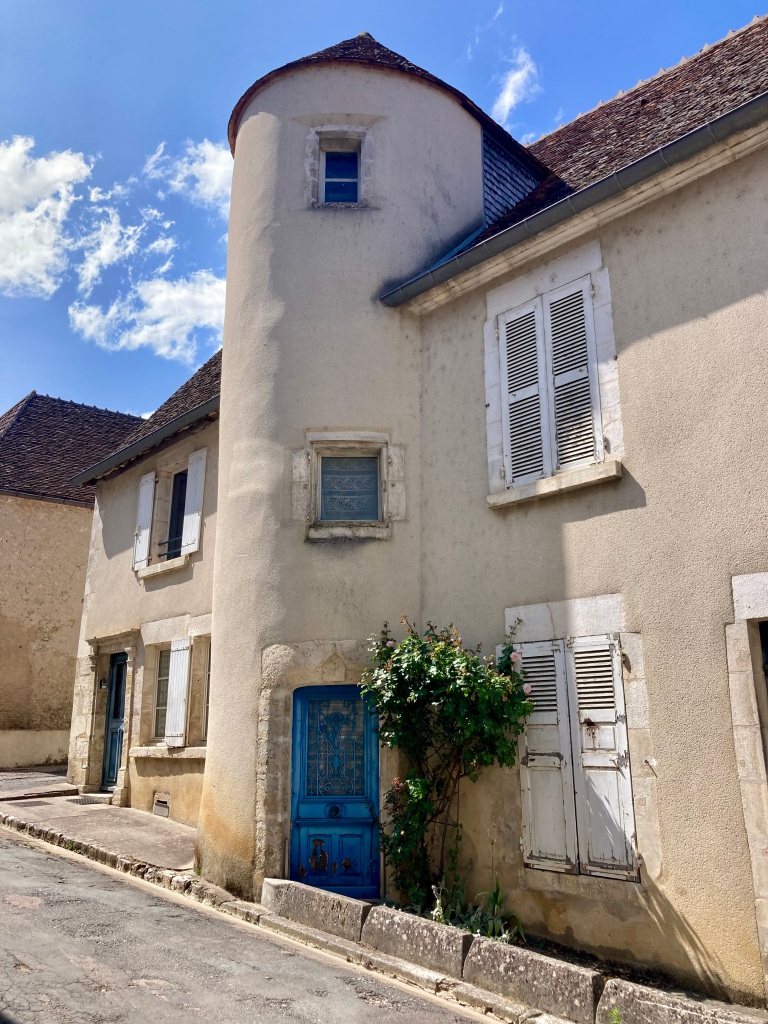
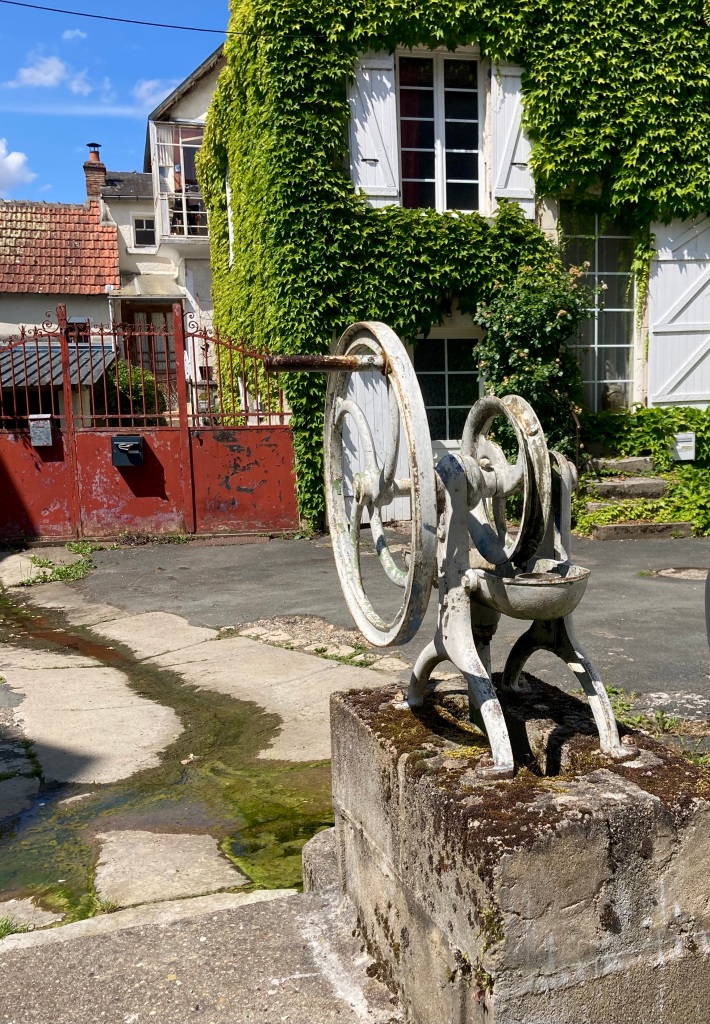
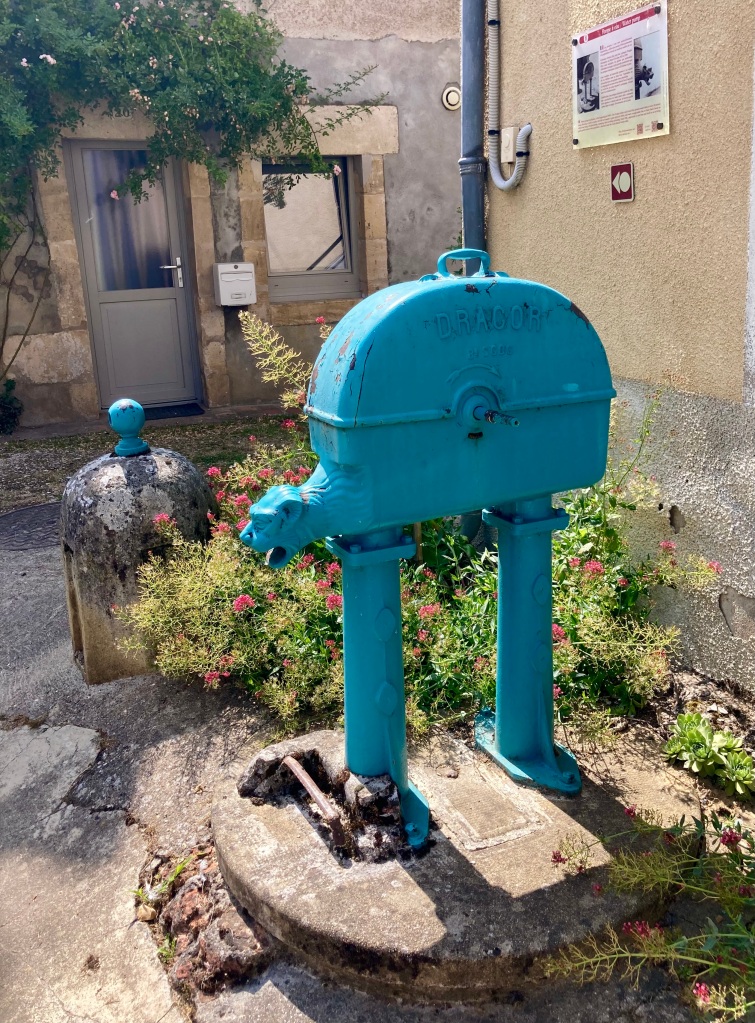
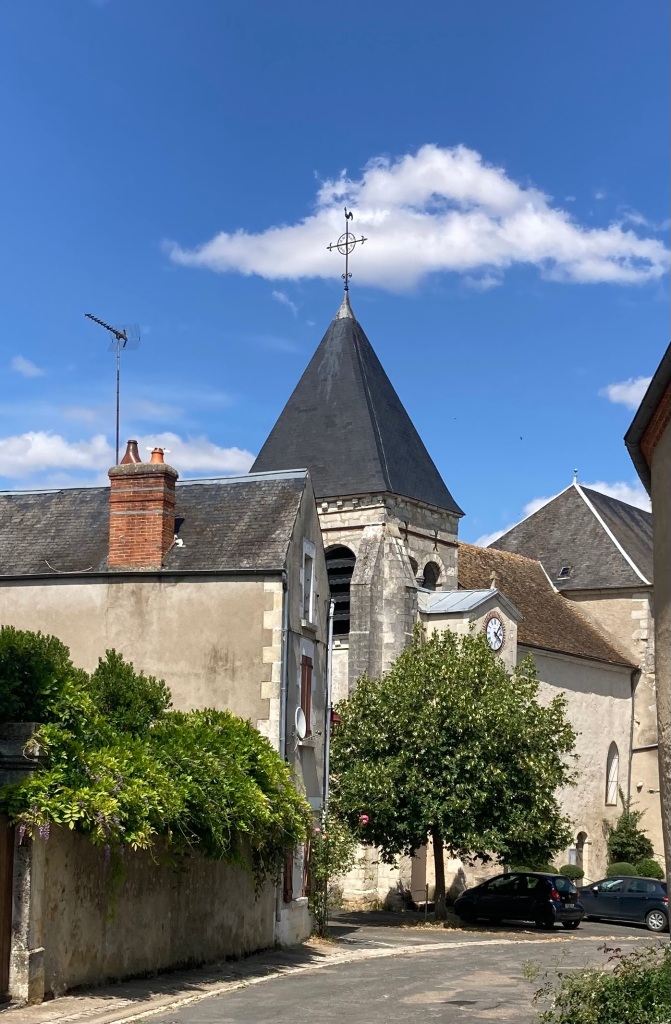

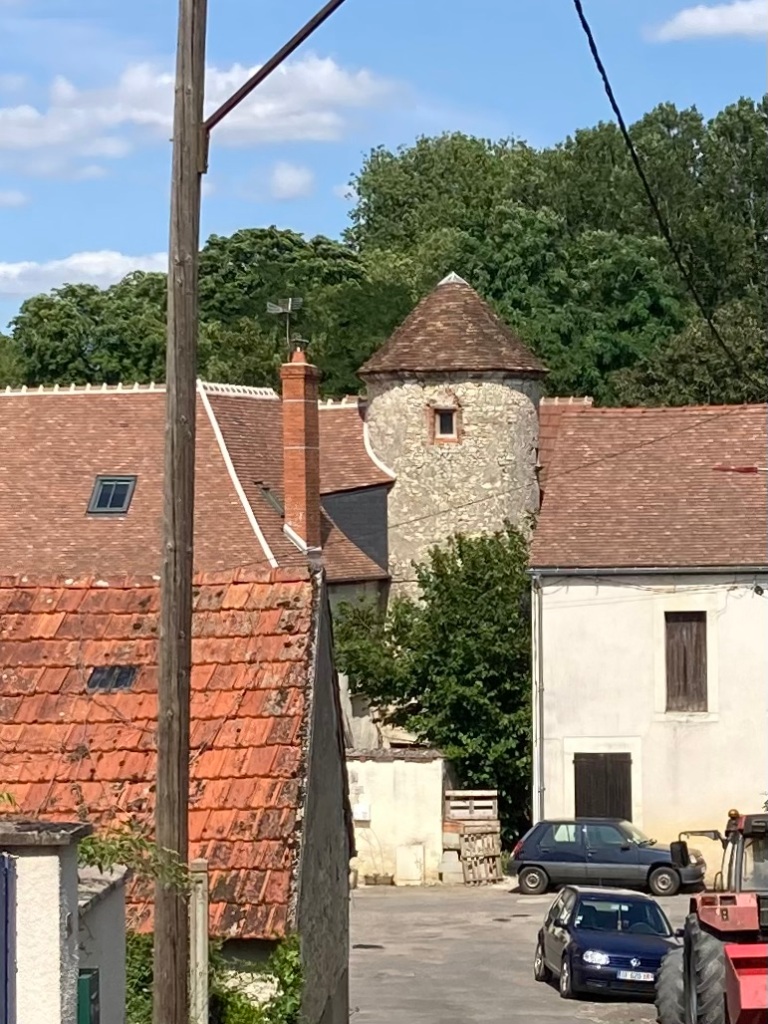
We had quite a good look round. Amongst the photo selection above are the very colourful font in the church, a simple lavoir by the old mill, a couple of methods to raise water, and quite a few views amongst the houses.
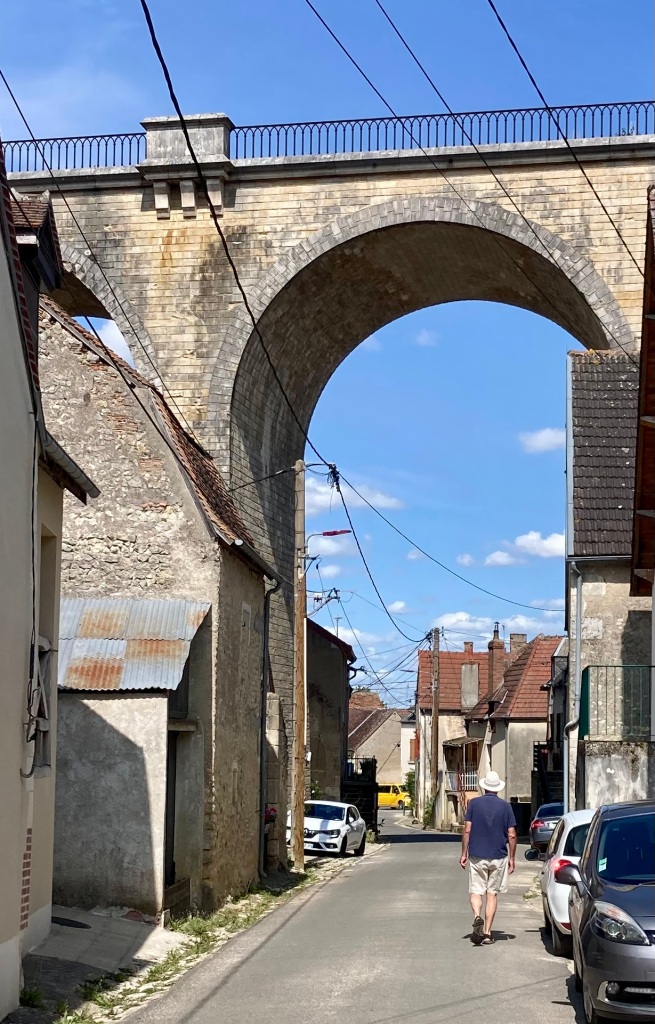
Here is the infamous viaduct, straddling roofs and streets.
Apparently it was built as part of a supply route to the front line, but never used.
It is now a walk way, with stunning views across the valley and over to Sancerre.

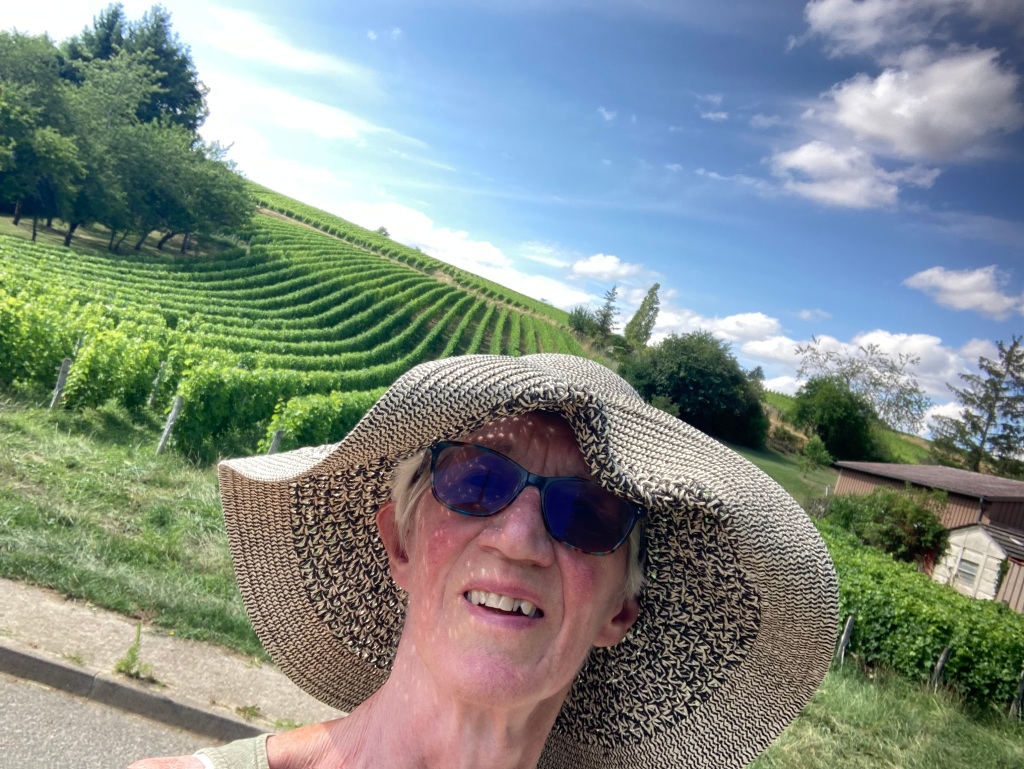
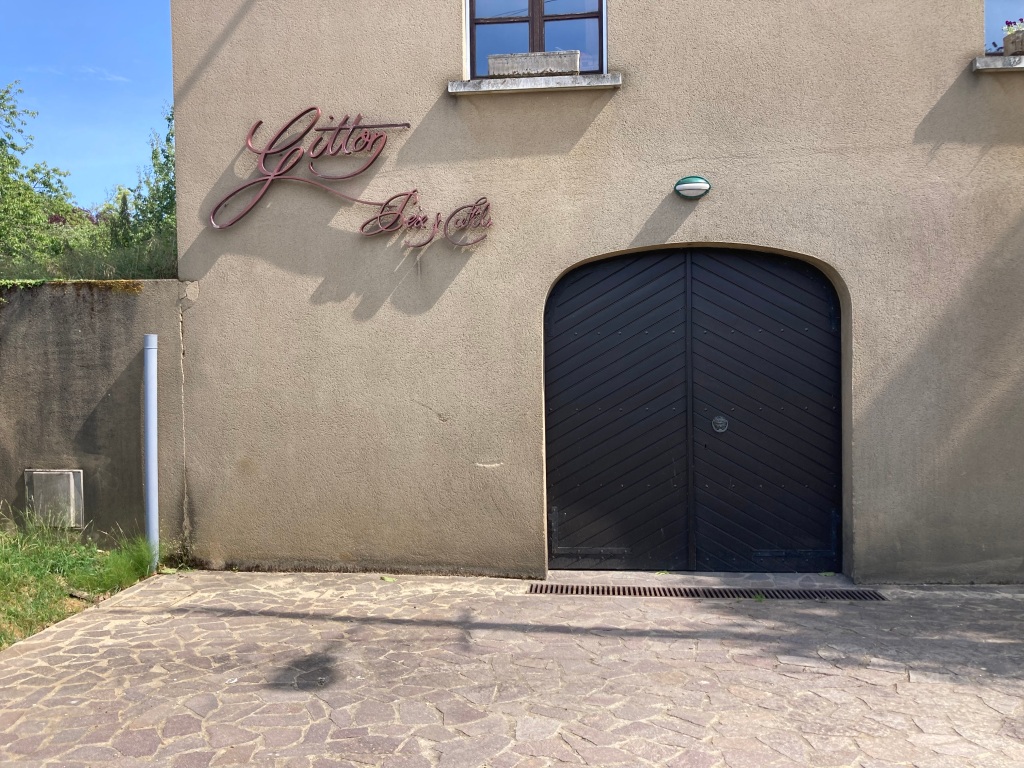
Our walk took us up above the village to a Sancerre vineyard which we were told had a shop – unfortunately closed.
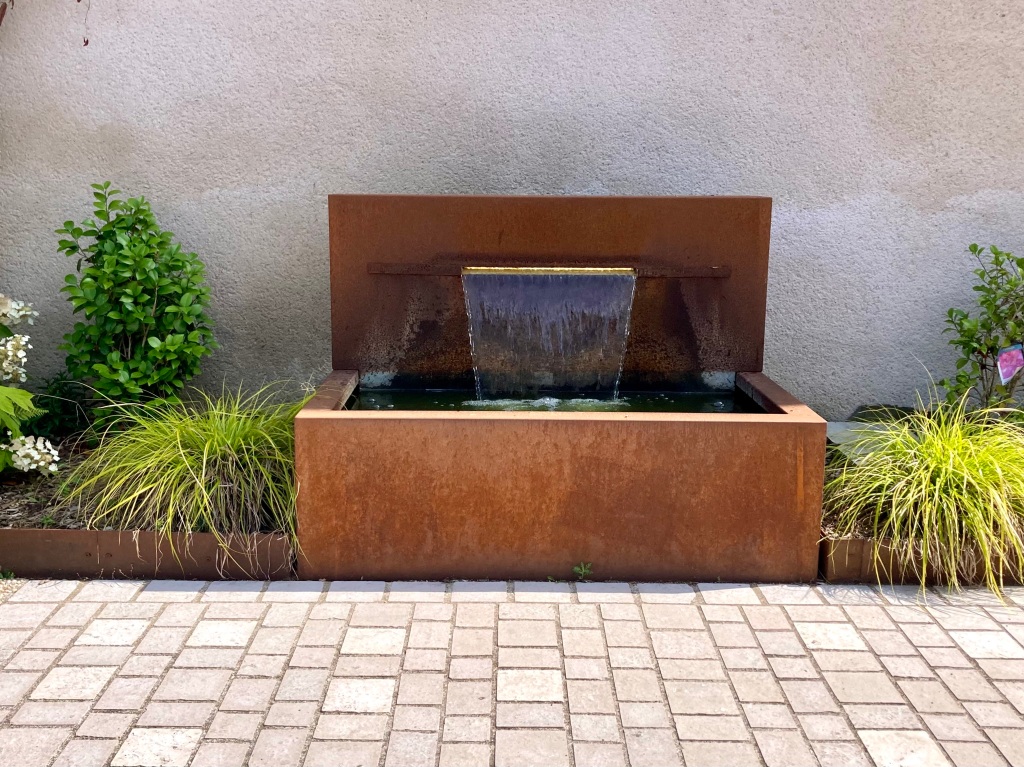
As a foil to all the antiquity there was also a very modern little square with this fountain, in memory of a man who was mayor of the village for about 40 yearts, if my memory serves me well.
It would have been easy to stay there an extra day or two, getting to know the bar and boulangerie better, as well as the buildings and the history.
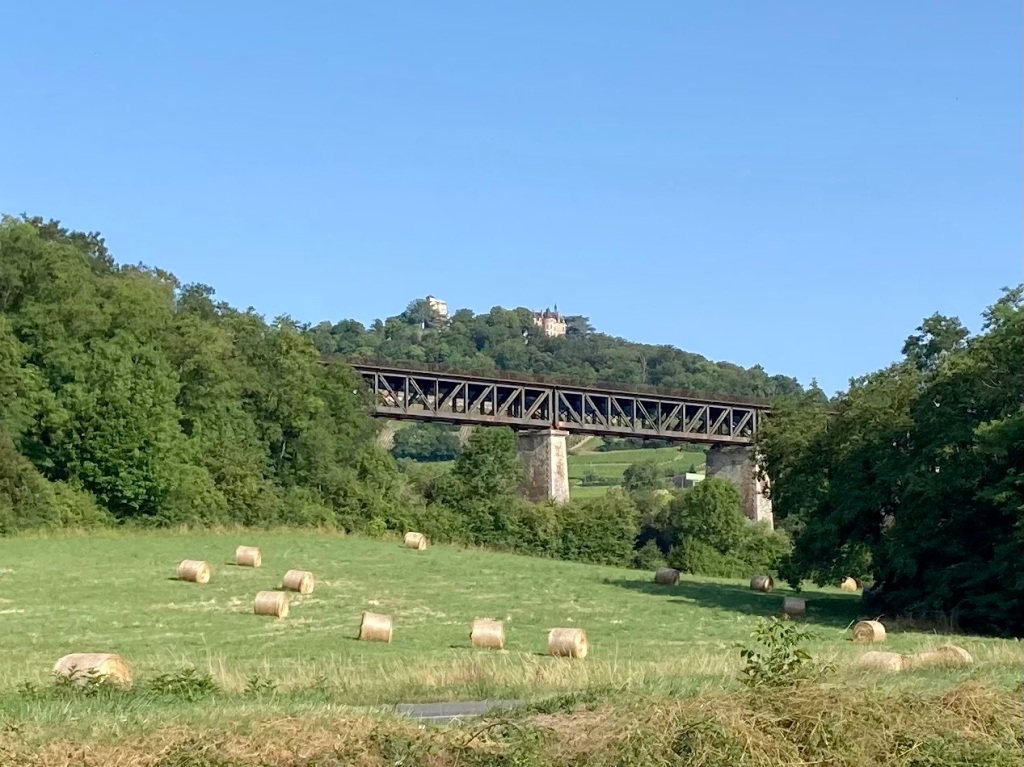
Instead we set off, leaving Sancerre village on top of the hill to our left, with part of the viaduct continuing on its route march.
We were quite keen to reach Briare, still 4 days away at our gentle slow pace, so we slipped our ropes and headed for Belleville-sur-Loire, 22 kms further downstream.

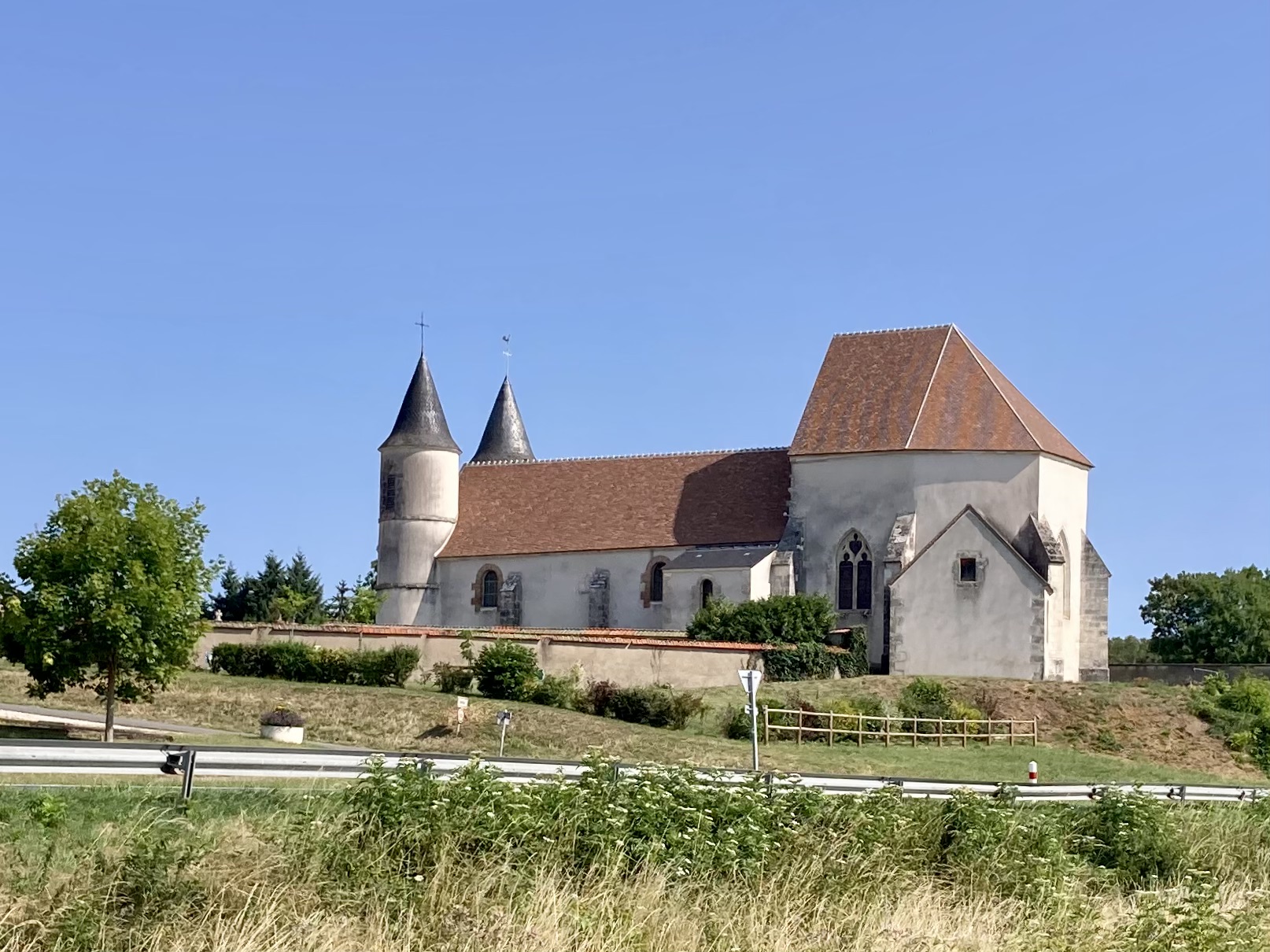
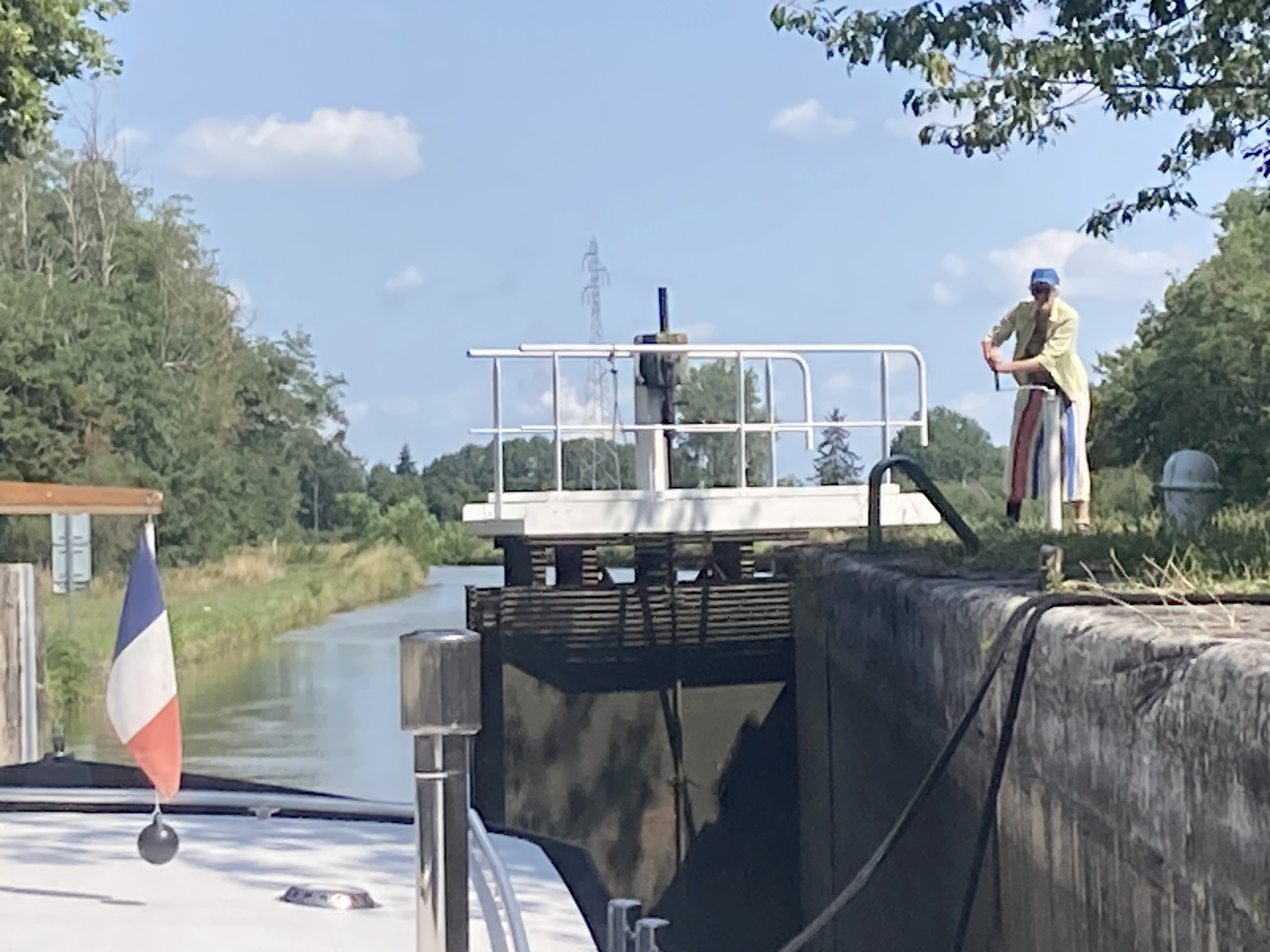
A couple of points of interest along the way – the écluse (lock) at Bannay had been a Bureau of Declaration. As far as I can make out that means it was some kind of customs post in the past, but so far my research has not told me more.
Just before the lock at Bannay we passed an old fortified church, its roof shape making its mark on the skyline.
And the next écluse saw crew (me!) jump ashore to help the éclusier open the gates. There was quite a mix of manual and automatic locks along here.
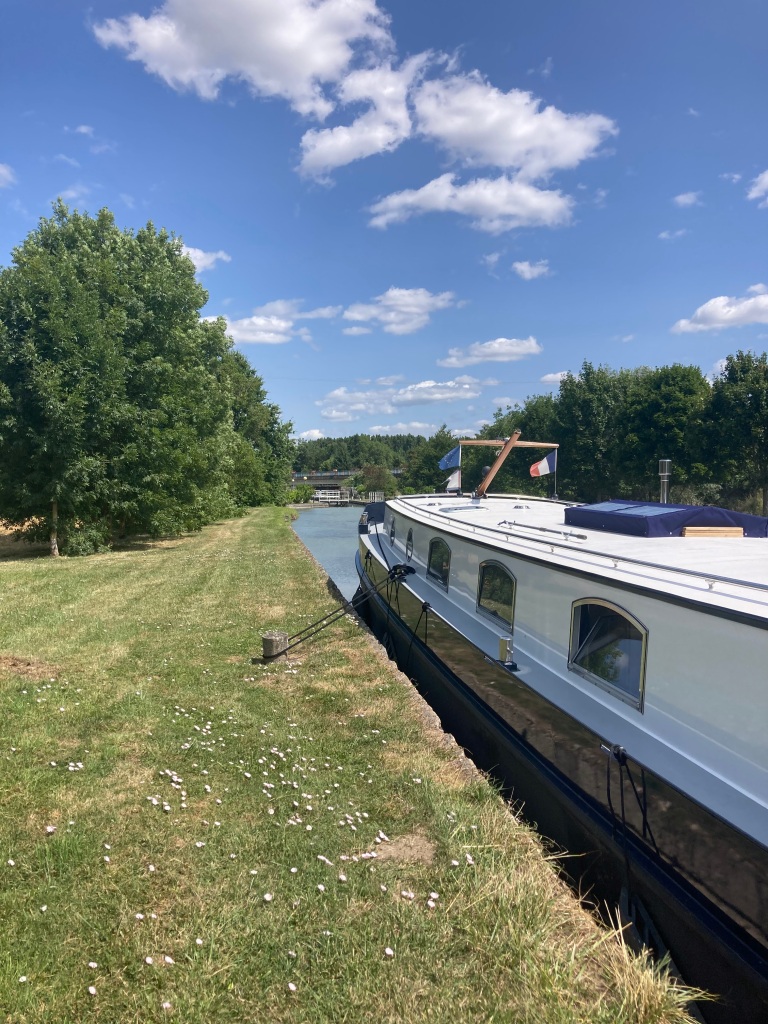
We realsied that we would not complete our journey by the noon cut off time for éclusier lunch.
The Du Breil map book showed a mooring at Léré and we arrived there just about on the dot on midday, so moored up and had our lunch too.
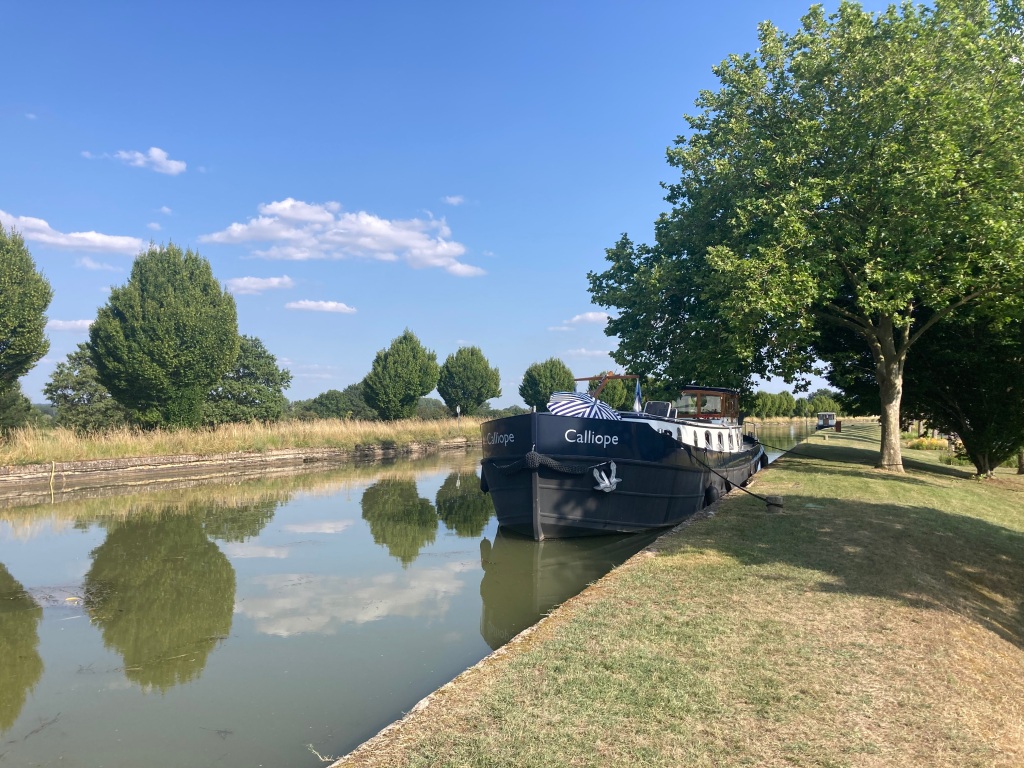
Belleville has a pleasant port below the lock, but as we were heading towards the lock and wondering if there would be spacxe for us we noticed a mooring right under a tree – in fact almost in a tree! It was a hot day and due to get hotter so this looked a perfect place to stop.
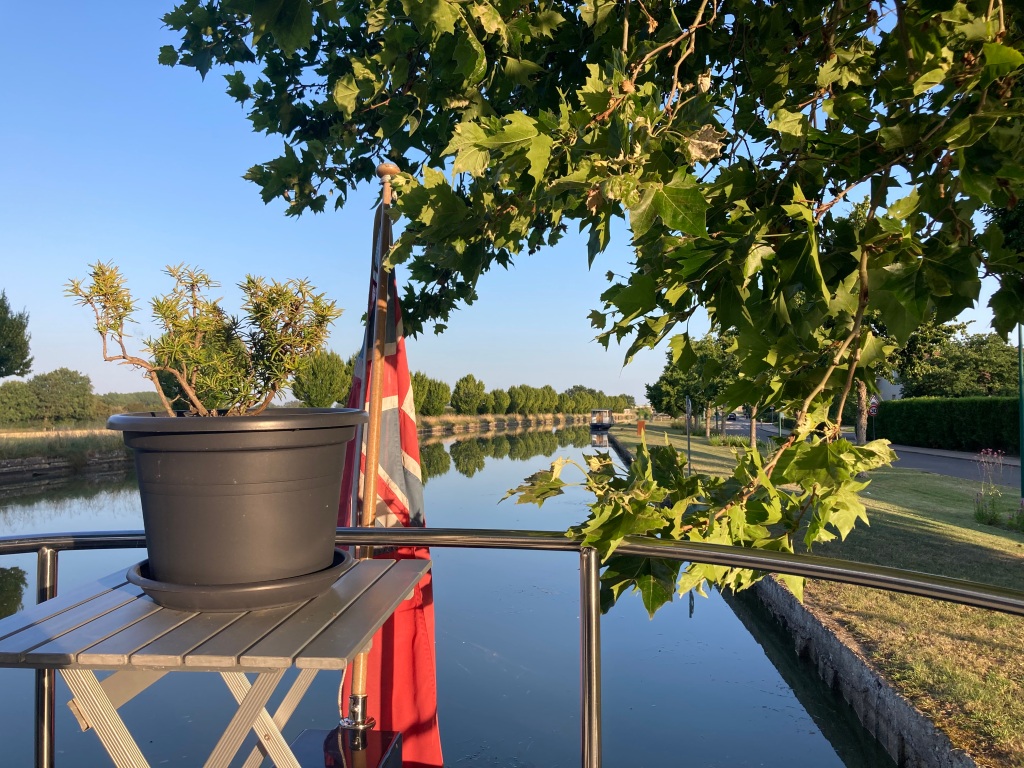
We would also be closer to the little supermarket where we planned a pick up of essentials. This was accomplished after lunch.
Then we could sit in the shade of our tree and relax.
Stewart quickly realised that this was the village we had stayed at over 10 years before when looking for a barge. Walking up towards the hotel in early evening we saw a bar with small restaurant right opposite and it called out to us with its cool beer and good menu!

So that was supper sorted for the evening, in an interesting bar full of guitars. It turns out that the owner is/was a jazz guitarist and apparently on other evenings live music takes over.
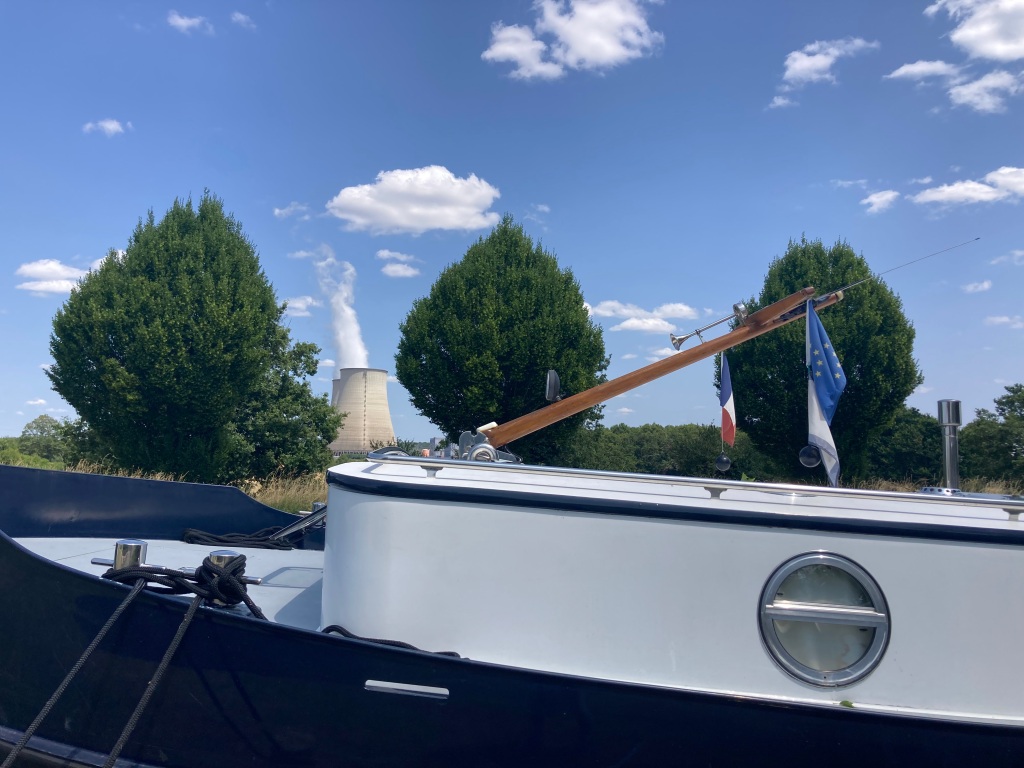
I think I should ashare with you our other view from the mooring – across to EDF’s nuclear power station !
It wasn’t unpleassant to be honest.
We had thought to stay two nights in Belleville, and I even told the bar owner ~I would be back next night for my isle flottant dessert, having been too full for one the previous evening.
But a mix of being a bit too caught up in the tree at our Belleville mooring, and thinking that the port below the lock was full, we decided to go a full 4kms (!) on to Beaulieu.
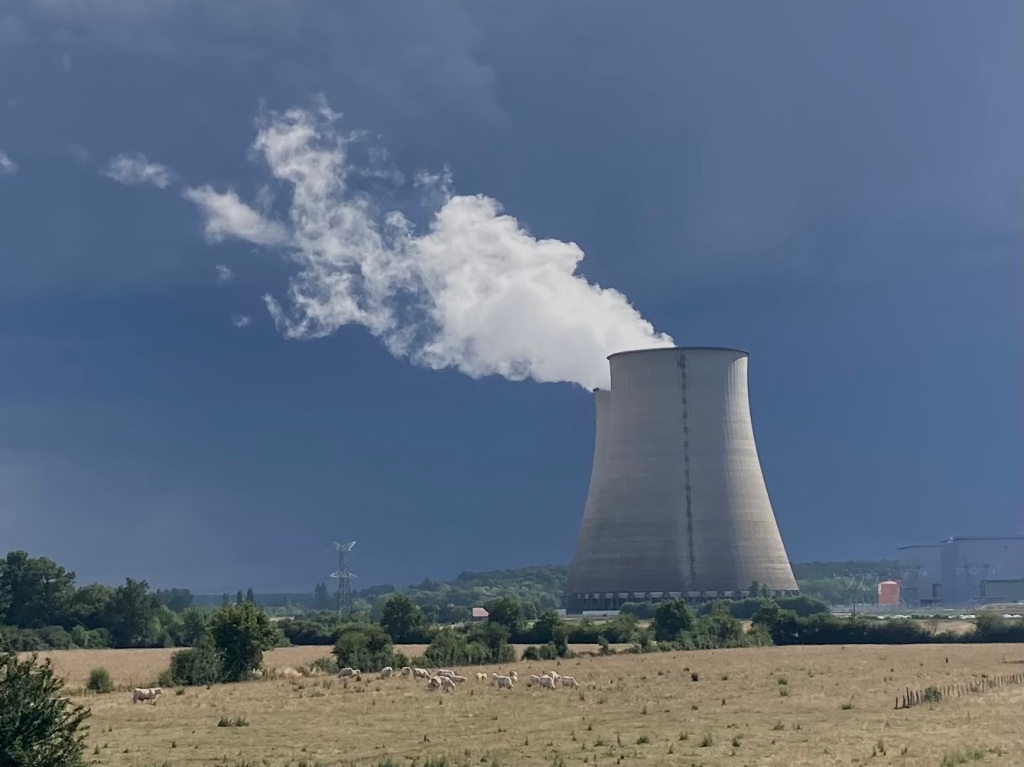
The morning brought a very different colour sky, a great dark canvas for the power station steam. I love the cows grazing unconcerned below.
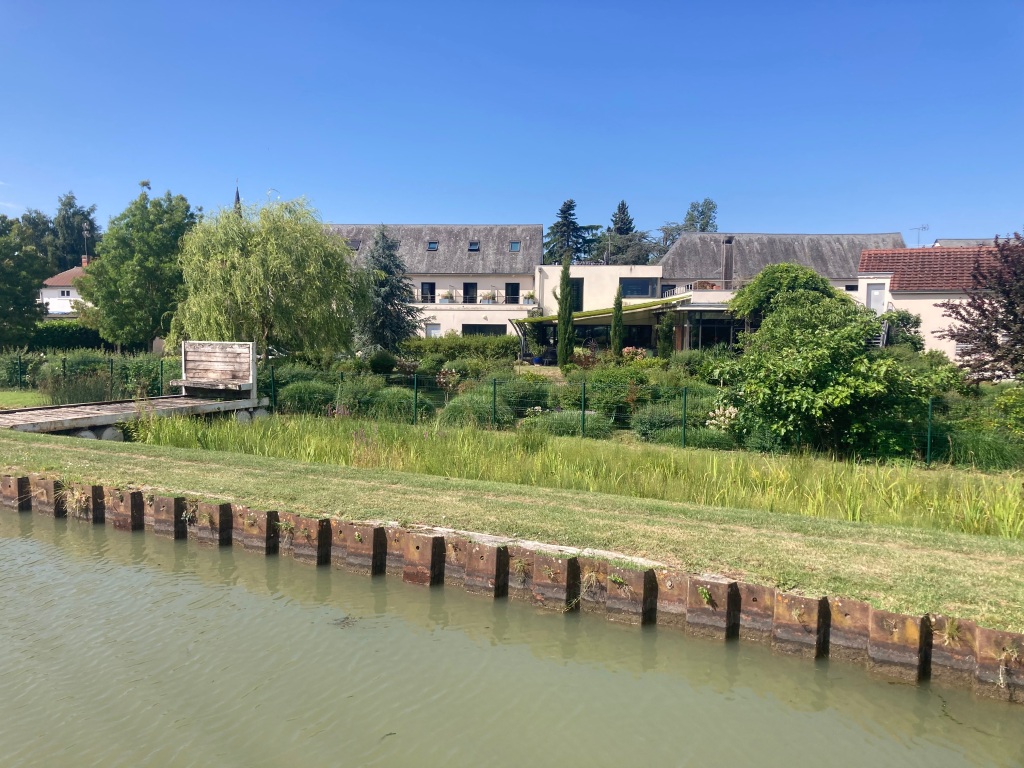
Then as we left town we passed the hotel I mentioned earlier – part of our odyssey to find a barge, and now here we are 10 years on cruising past!
The skies ahead were blue, and once more we enjoyed the flowering efforts of people who have gone before us, planting such colour by bridges and locks.
And we were lucky to be there at the best tine if year by the look of it.

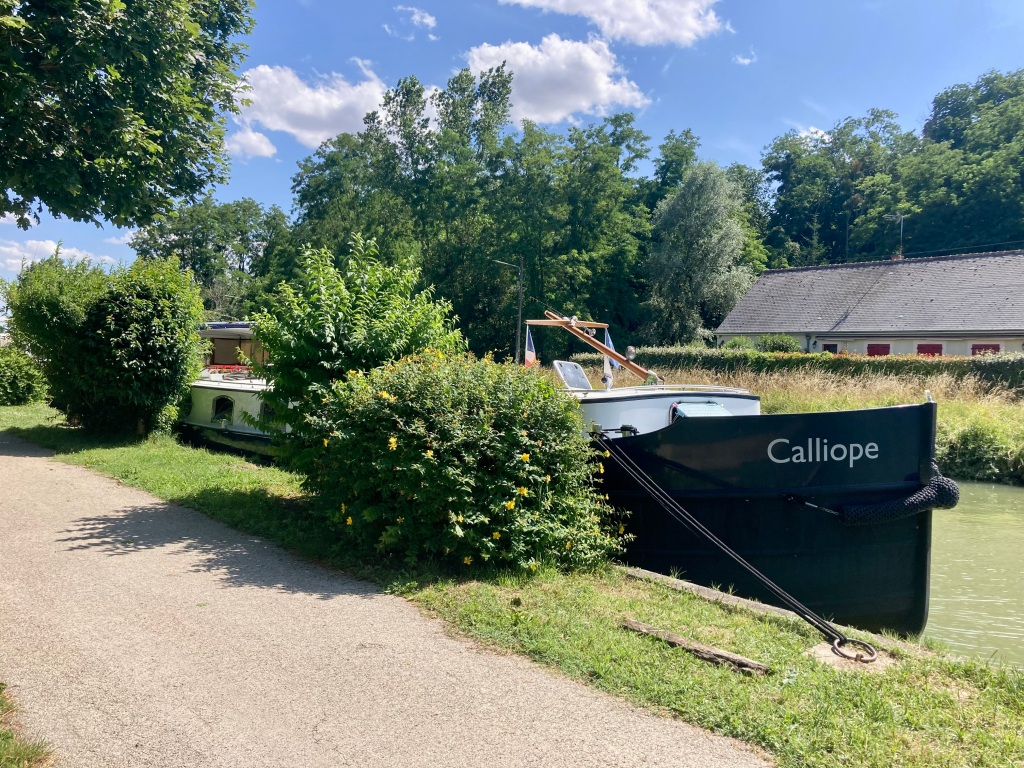
It was a good decision to move on. We found ourselves on another green mooring, below the village of Beaulieu , which is up on a hill. I walked up (it was rather hot) to find us some bread for lunch.
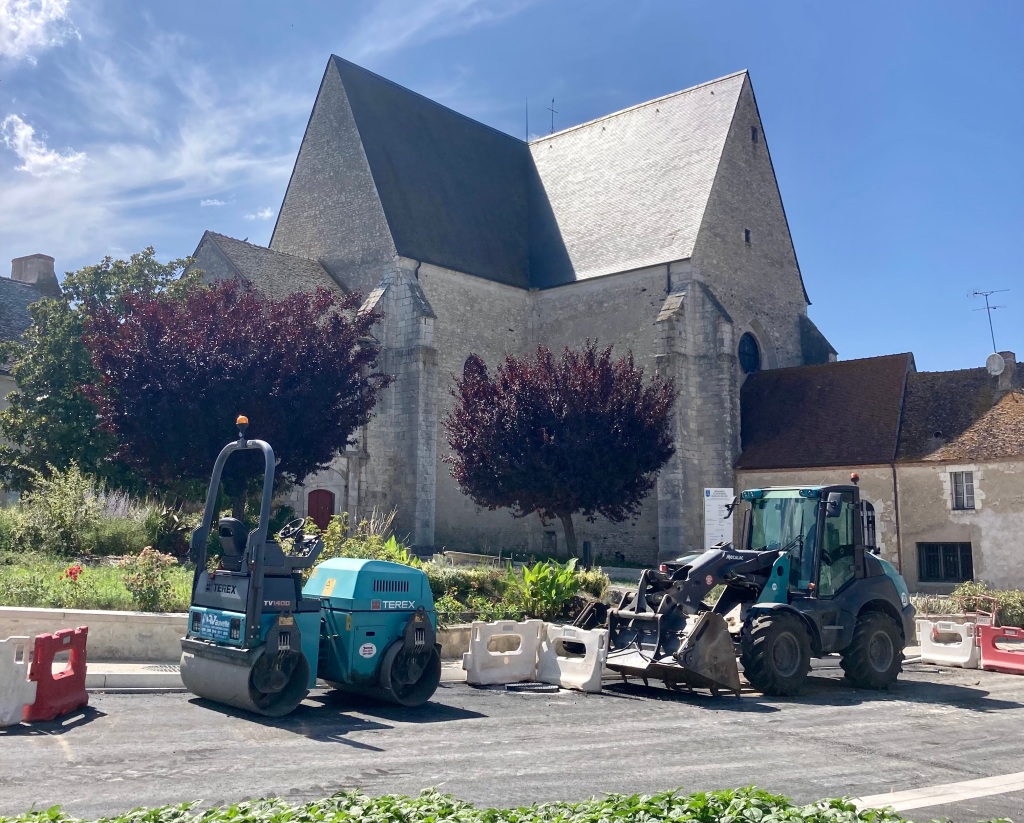
I did find bread, and in addition I found a village turned upside down with the entire centre being re-surfaced.
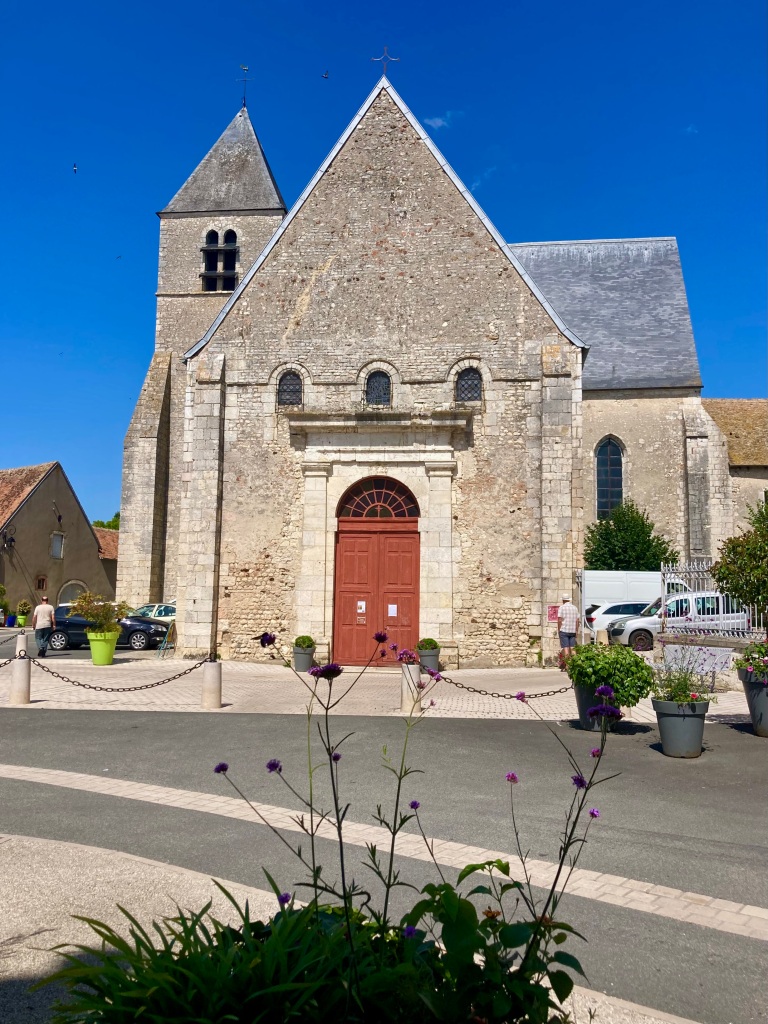
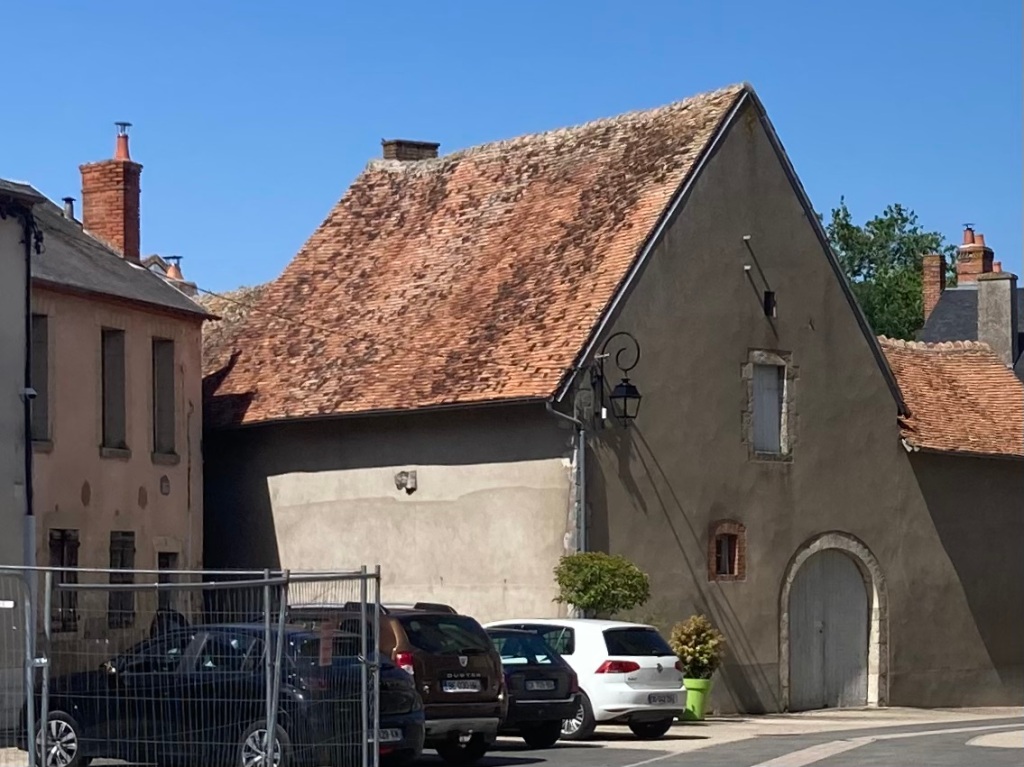
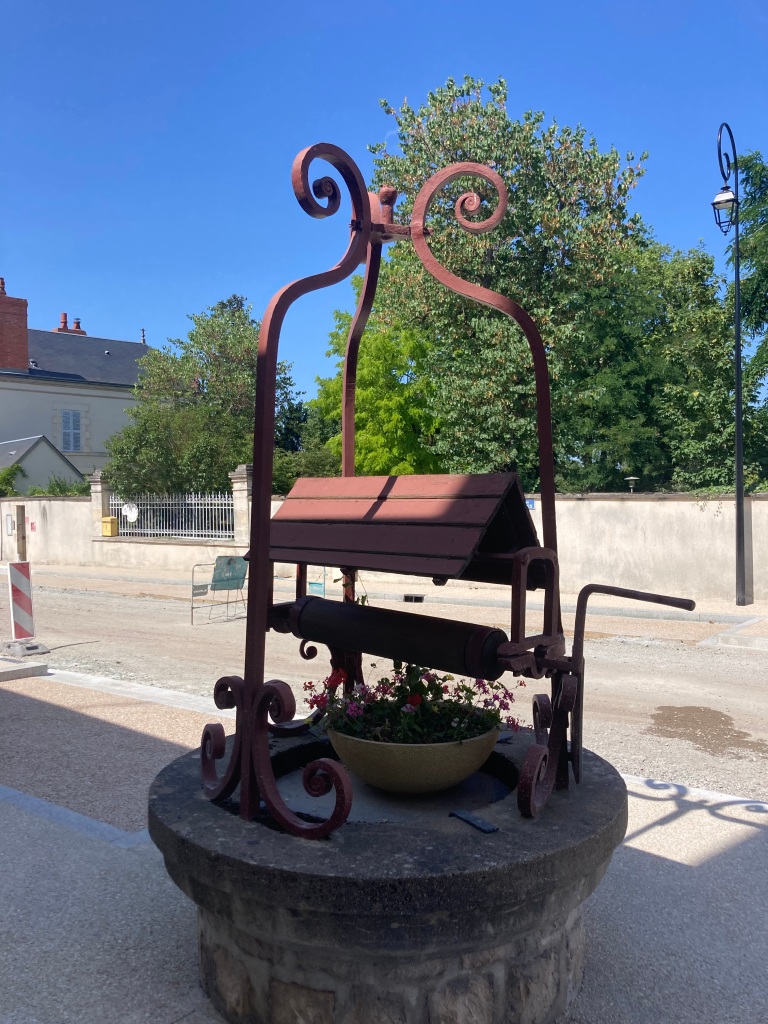
Despite the road works it was possible to admire the church and a few other old houses.
Later. after Stu and I had walked back up in the afternoon, we found back at canal level the ‘fountain’ where villagers could come and collect water.
On that hot day ot was a very welcome cool green oasis.
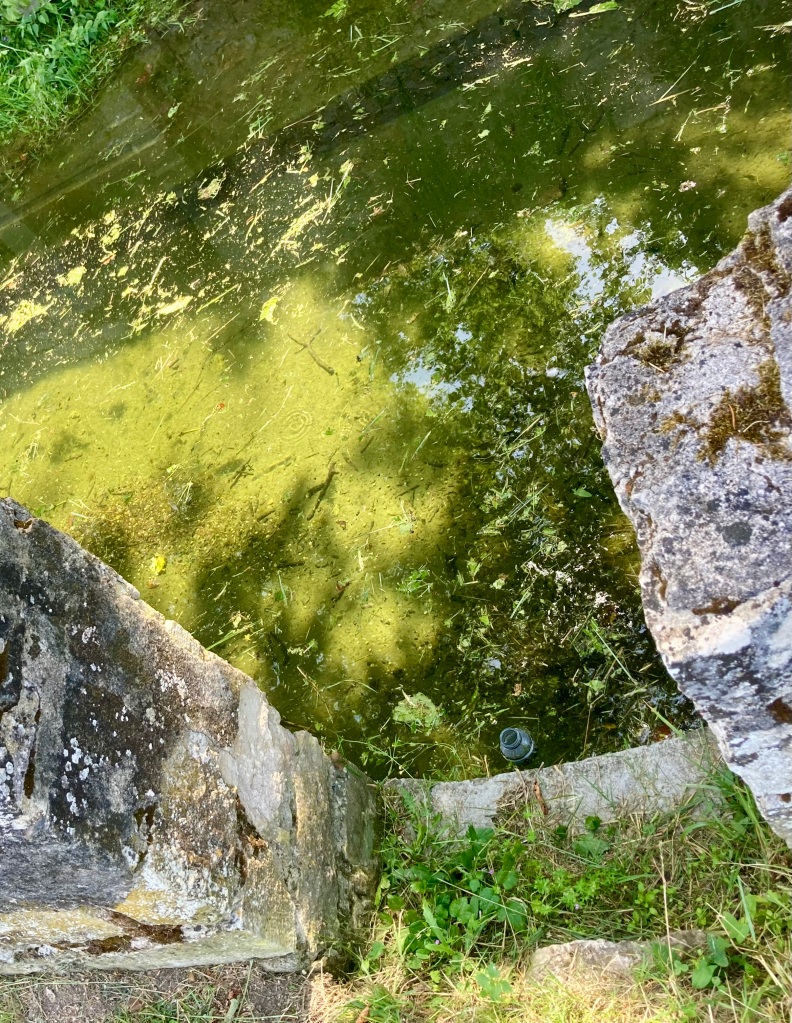
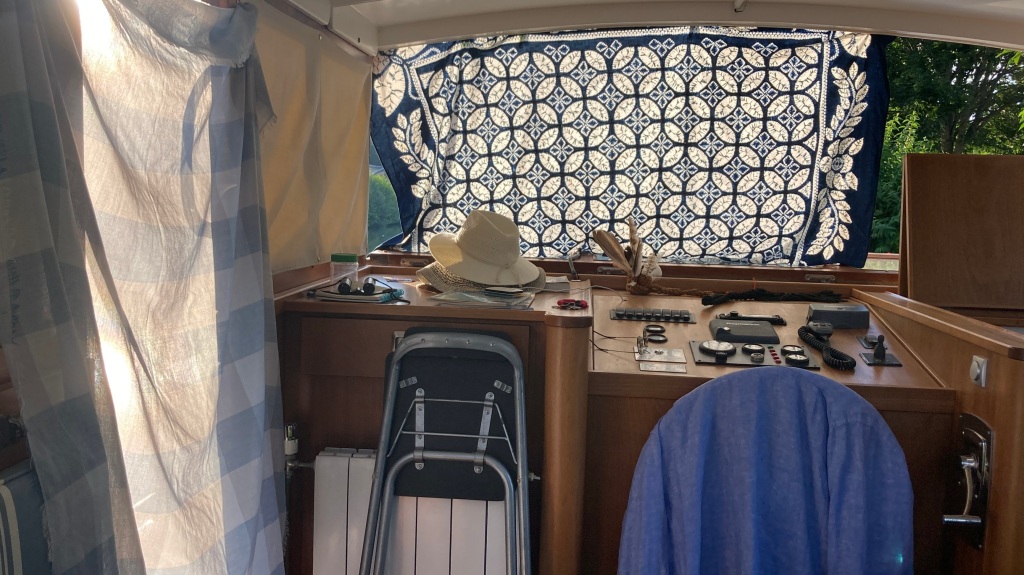
It was one of those 32C+ days, when we make the wheelhouse super shady – parasol on the back deck, and various ‘drapes’ that will move in the breeze, whilst keeping the sun firmly out!
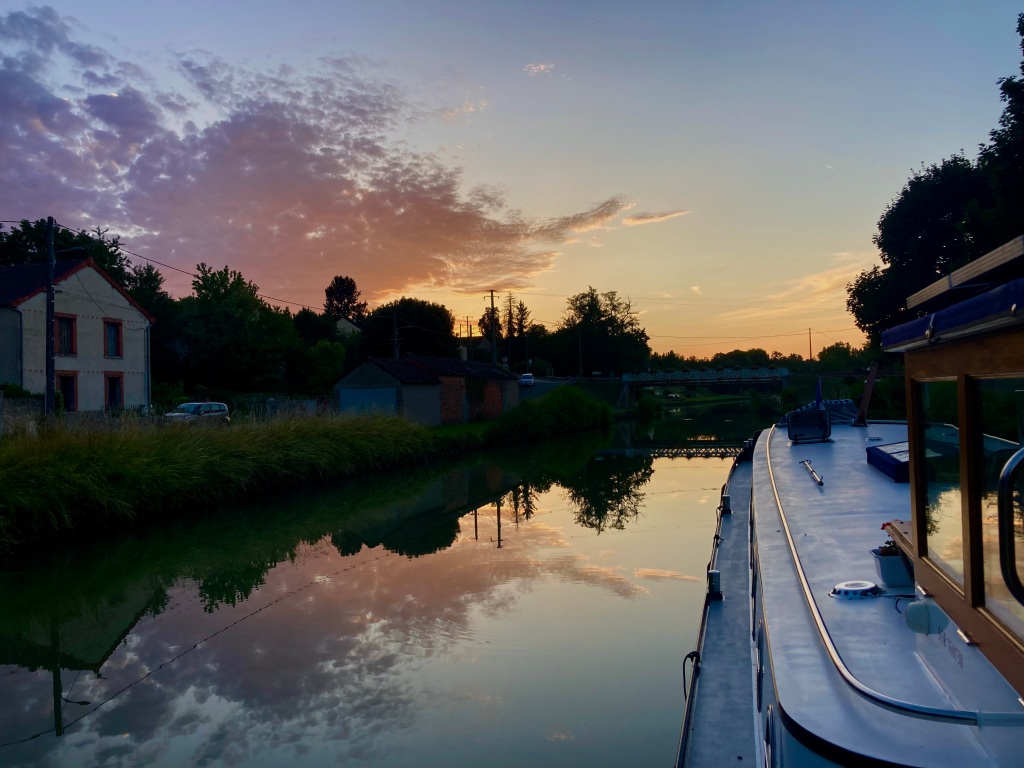
And as the sun went down and the evening temperatures took over, we were treated to another peaceful pink sky.
And then we had just one more stop on the Canal Latèral à la Loire before we reached Briare and the end of this particular stage of our 2023 journey.

Before we left Beaulieu I used the dew on the roof and the lower temperatiures of the morning to give the roof a quick clean.
Then, as we set off, I sat out in the shade of the port side of the wheelhouse, enjoying the fresh air and scenery as we motored along.
Our last stop was to be at Chatillon-sur-Loire . To get there we passed a historic junction, where the original lateral canal went down towards the river. It is now called the Embranchement de Chatillon and runs alongside the current canal.

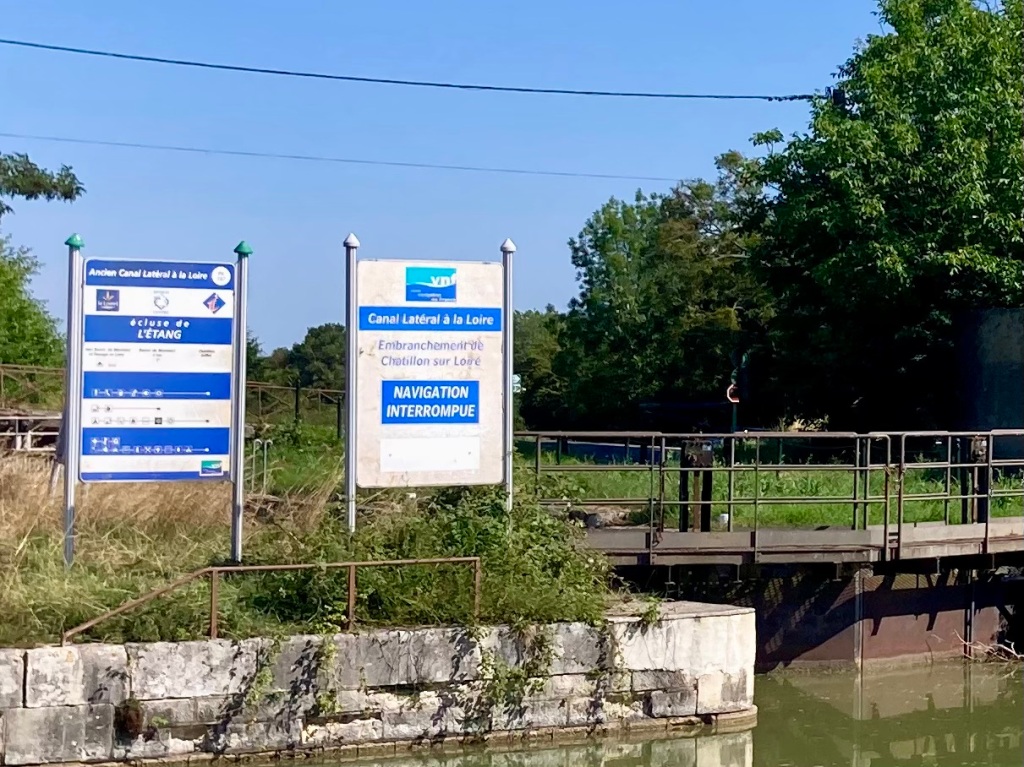
This was the route that barges had to take, then cross the river and rejoin the canal on the other side. This was before the mammoth Briare aqueduct was built – more of that later.
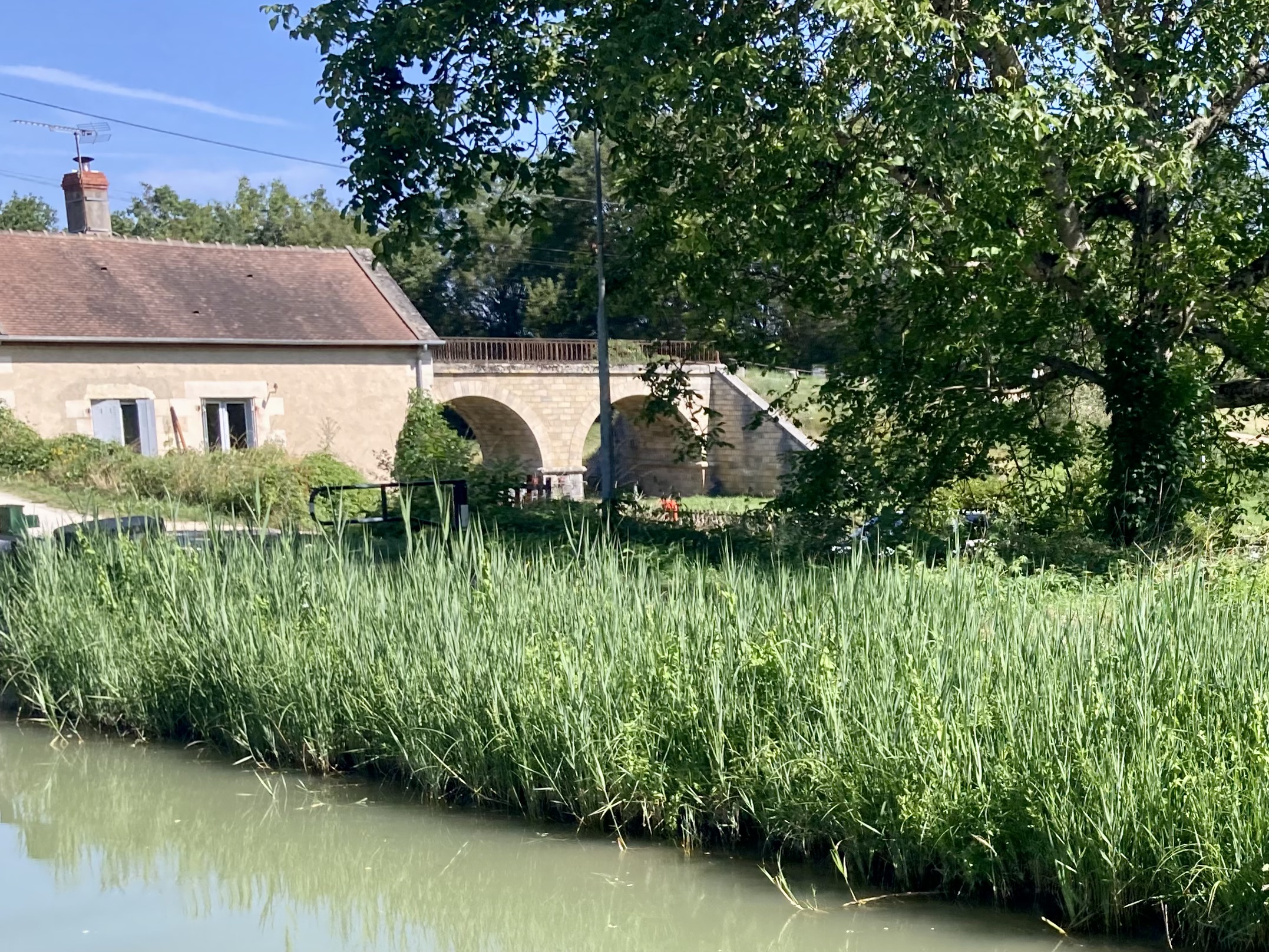
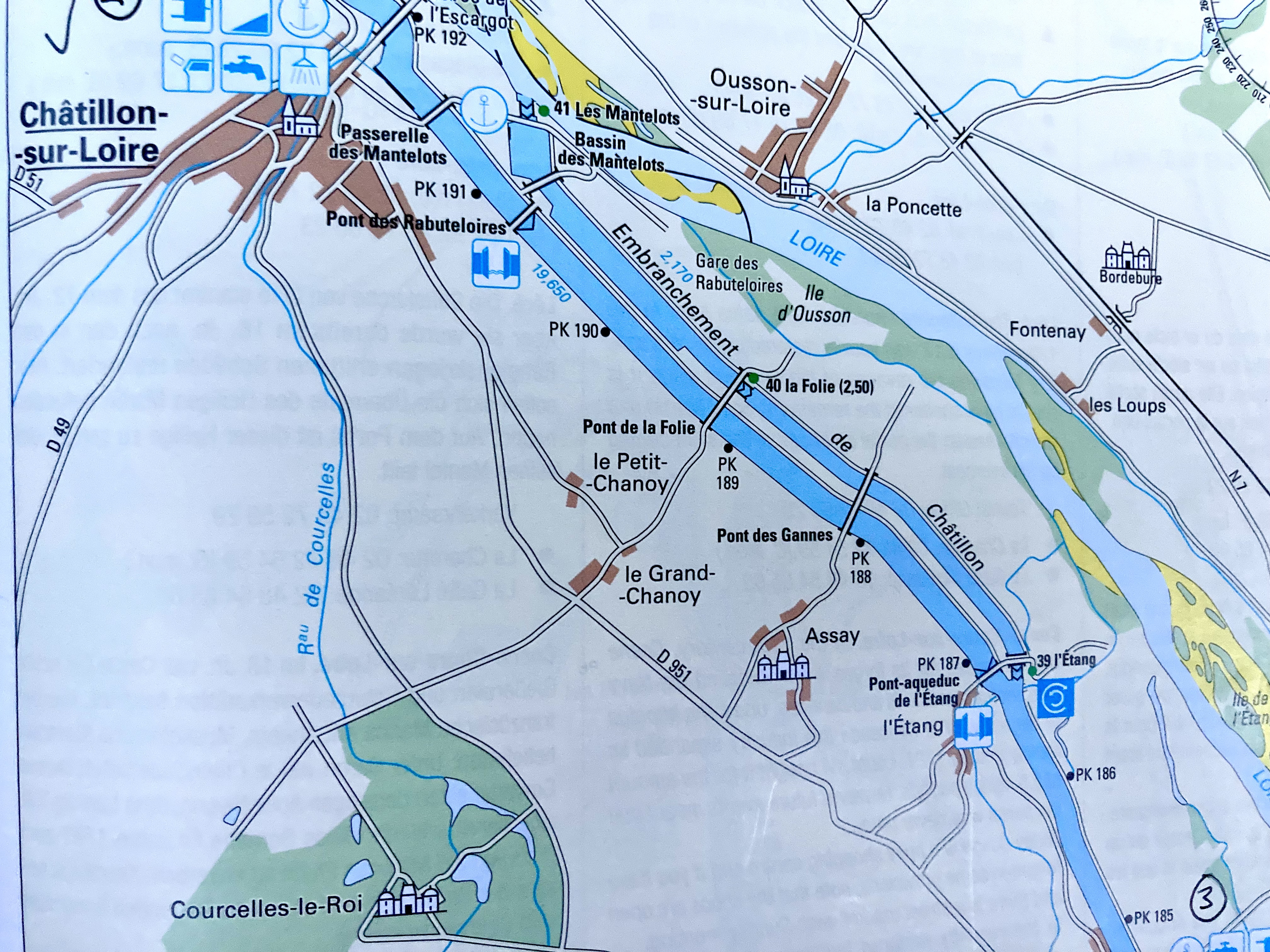
Occasionally we could see the old canal next to us, in this photo passing under a bridge. The map shows their relationship to each other, and also the nearby river Loire itself.
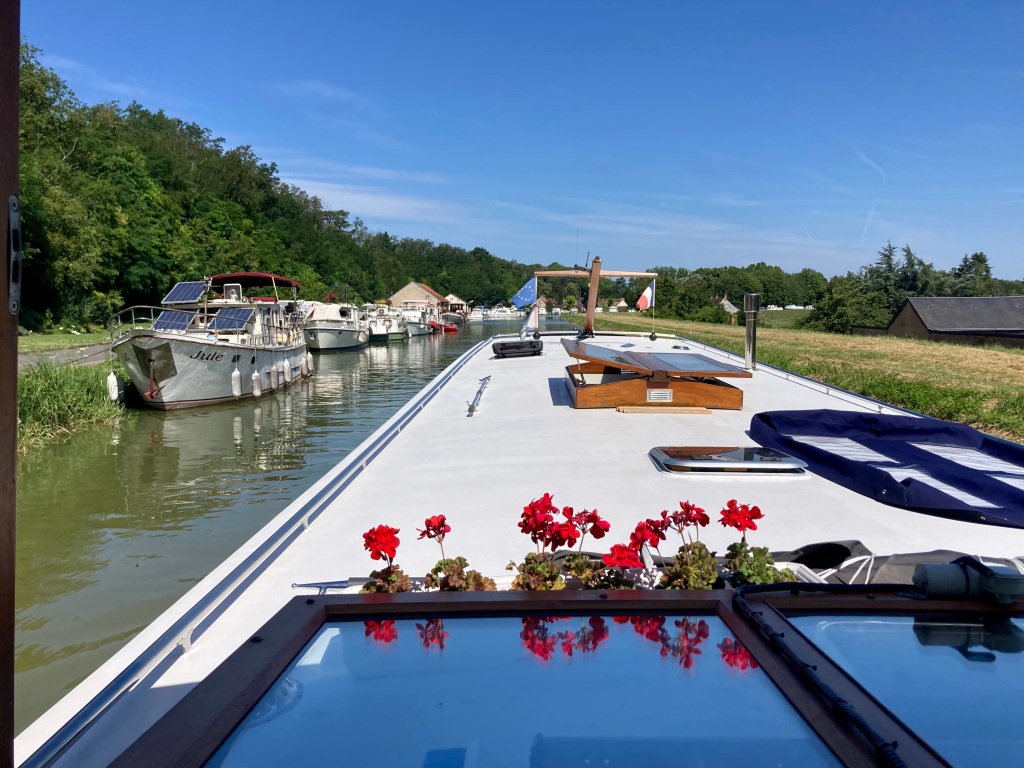
We came into the port at Chatillon wondering if we would find a place to moor. We did, although it was in full sun on what turned out to be rather a hot day. Never mind; we know how to manage that! We could plug into shore power and turn on the AC in the cabin before we went to bed, and during the day, find shady breezy spots on and off the boat.
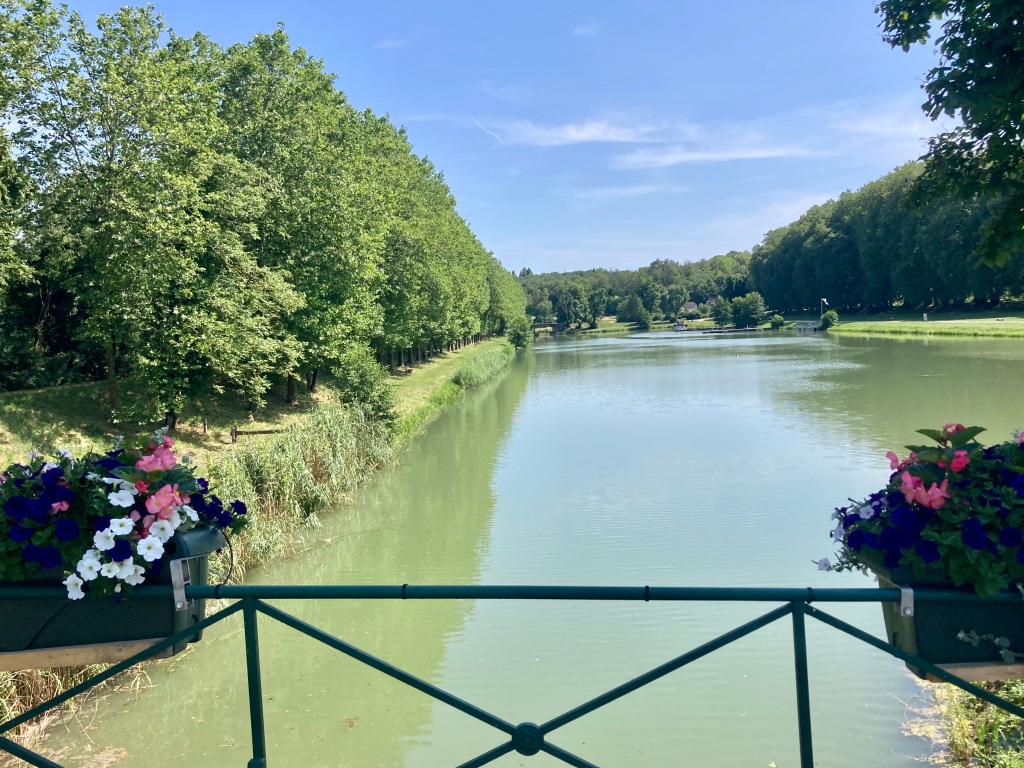
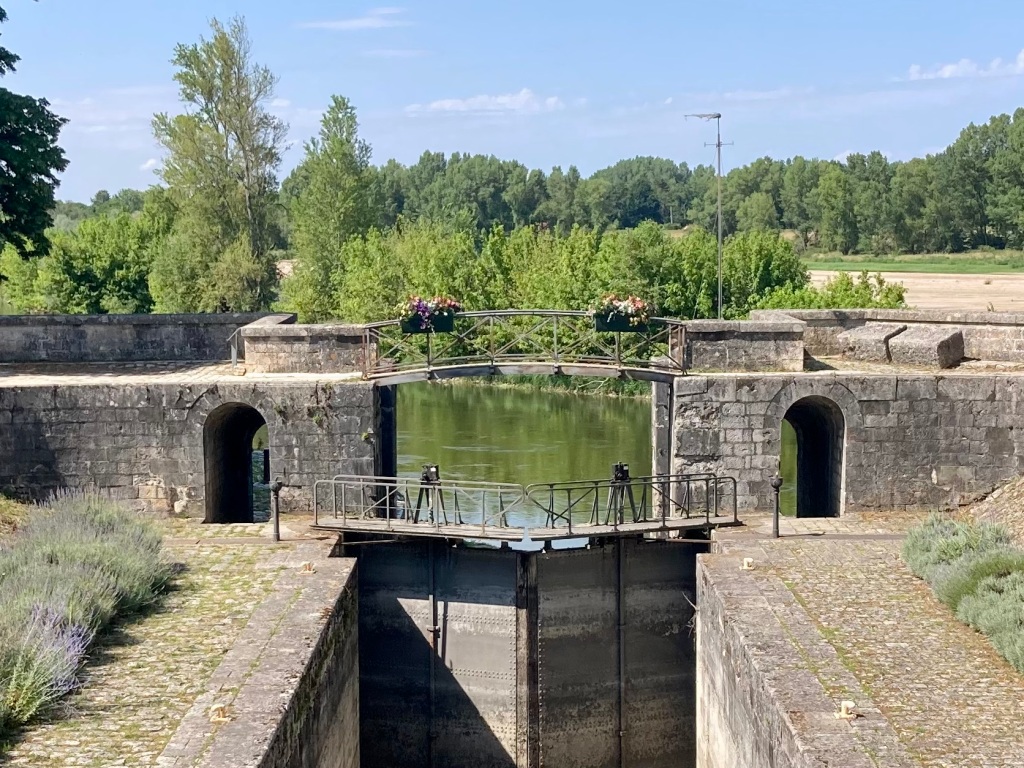
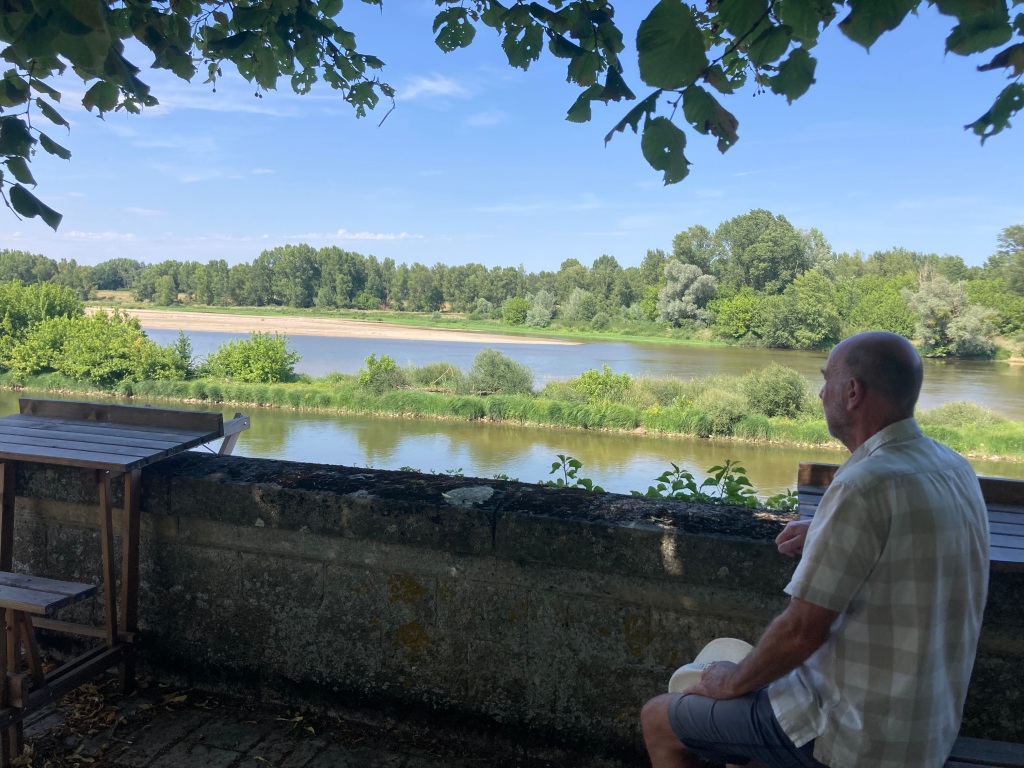
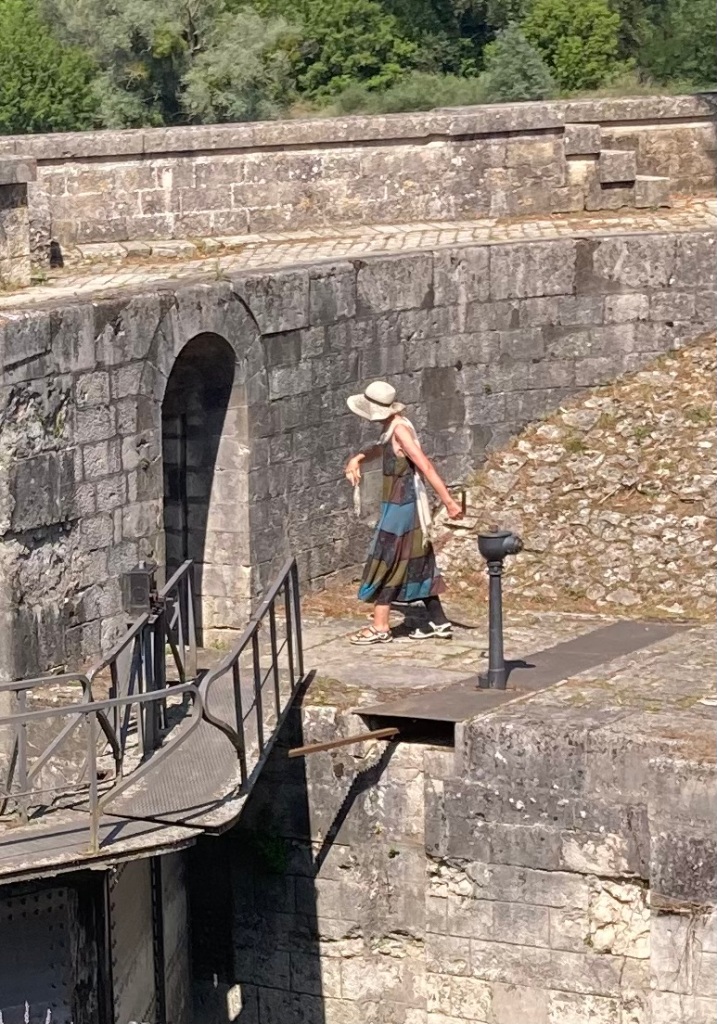
I mentioned there would be more about the old canal and lock onto the Loire. That gave our afternoon walk a special purpose that day. It is a short walk over to see it all.
First you pass by the huge basin where barges would line up and wait for a good day to cross the river – not too much flow or wind! Then we saw the lock itself, a deep lock looking out onto the Loire.
The boats would pick up a pilot here to help negotiate the currents and sandbars on the 6 kilometre journey to the Briare lock on he other side of the big river, before ascending to the Canal de Briare to continue their course to Paris.
Stu found a shady spot to sit and look at the beauty of the river, a tranquil sopace on this summer day. Meanwhile I explored the lock and its ancient arches that allowed éclujsiers to look out and see the comings and goings of barges below.
Below the lock and to one side, on the 200 year old cobbles, was a relic of the tools used to more barges – a means of pulling rope around a roller.
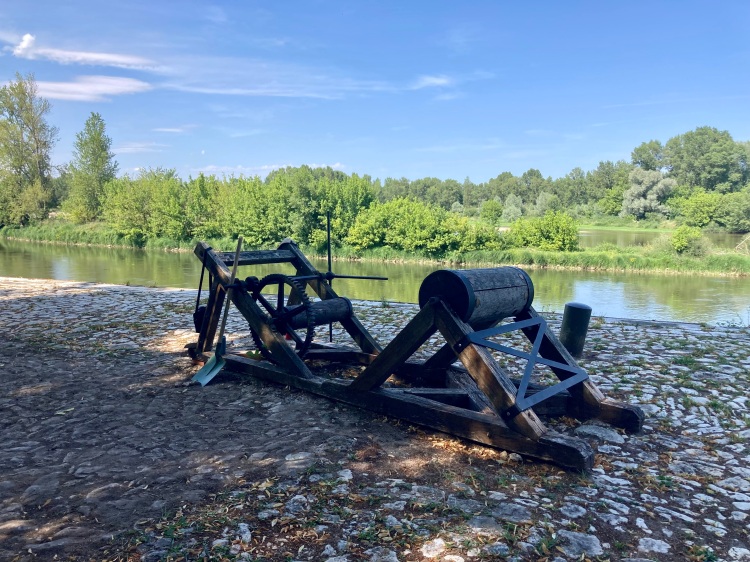
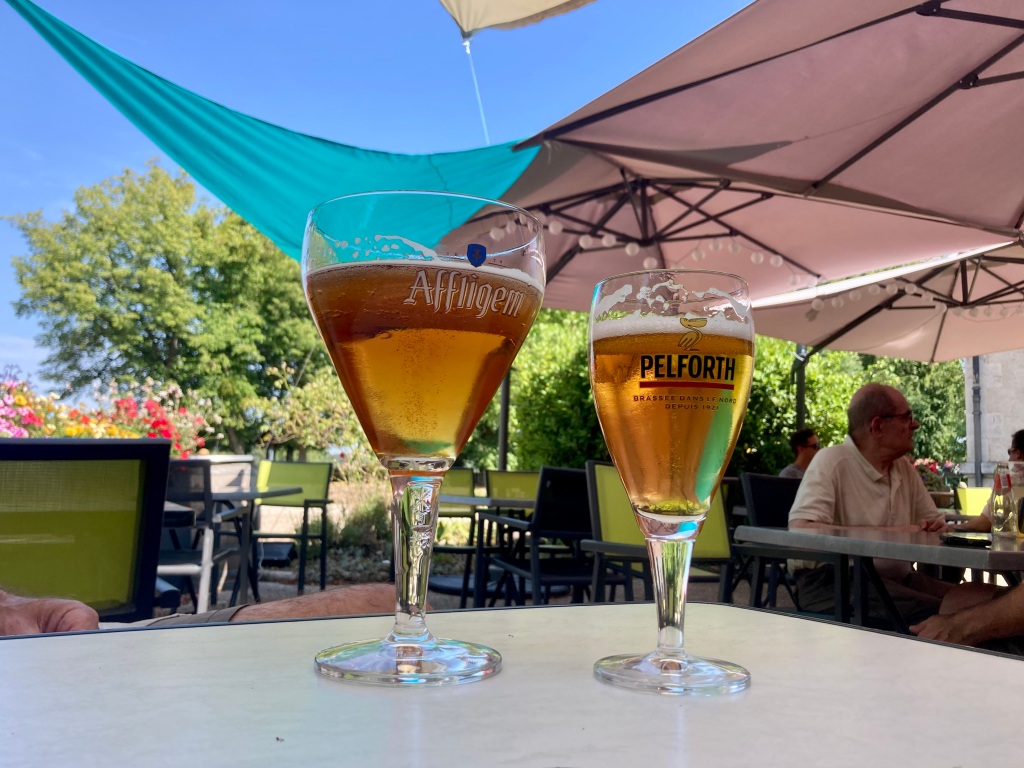
After the exploration the Chambre d’Hôte, restaurant and bar next to the old lock had some very welcome shade and cold beers before we walked back to Calliope..
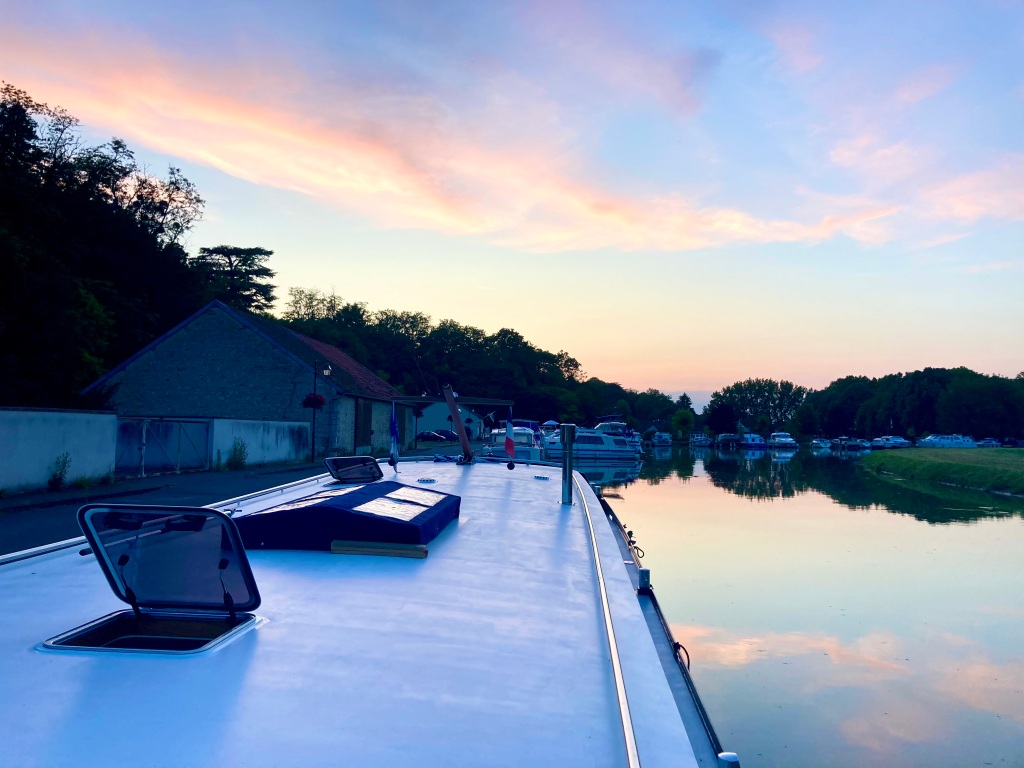
Well before bedtime we were enjoying the shade from the trees alongside the ,boring, and looking forward to an exciting day ahead – crossing the Briare Aqueduct.
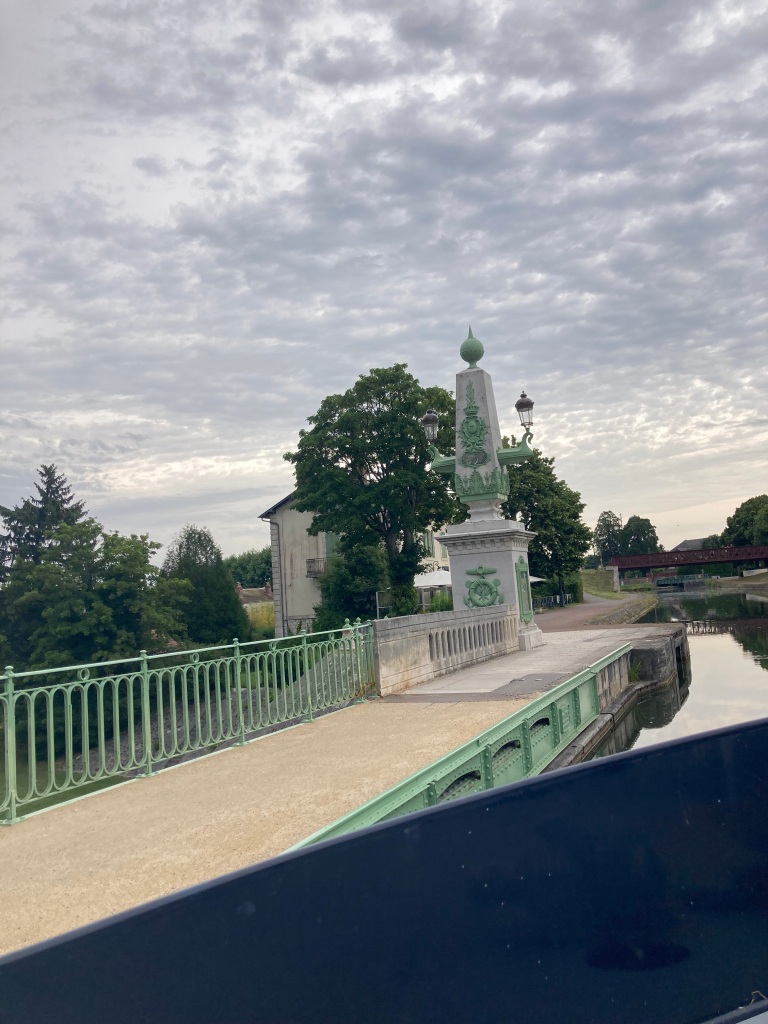
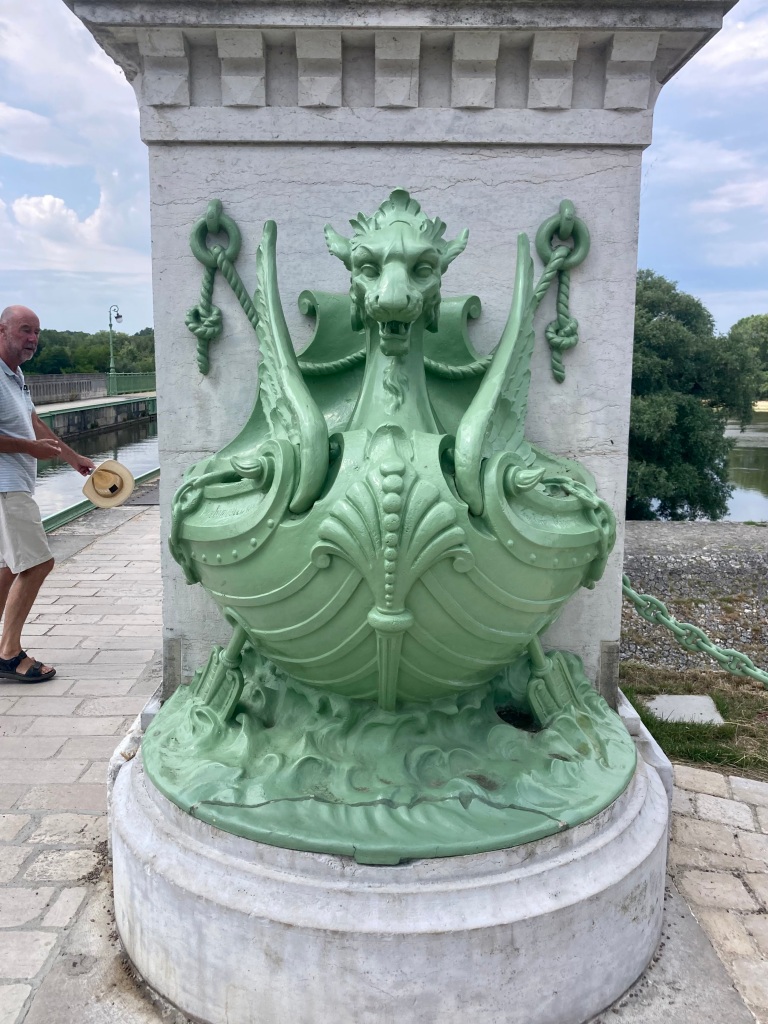
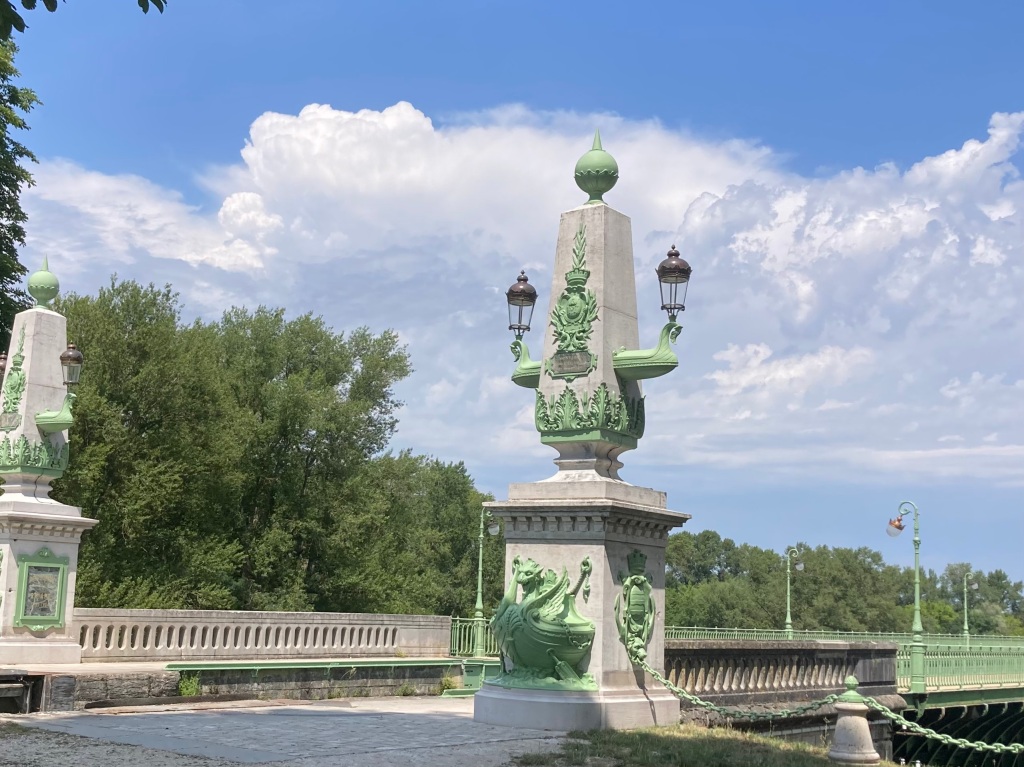
This aqueduct was, for a long time, until 2003, the longest steel canal aqueduct in the world. It is 662 metres long and was designed by the engineers Leonce-Abel Mazoyer and Charles Sigault. The famous Gustav Eiffel was responsible for the masonry abutments and piers.
The aqueduct was inaugurated on 16 September 1896 with the crossing of the boat Aristide, allowing the development of Freycinet gauge transport between the Loire and Seine, ie bigger barges than previously.
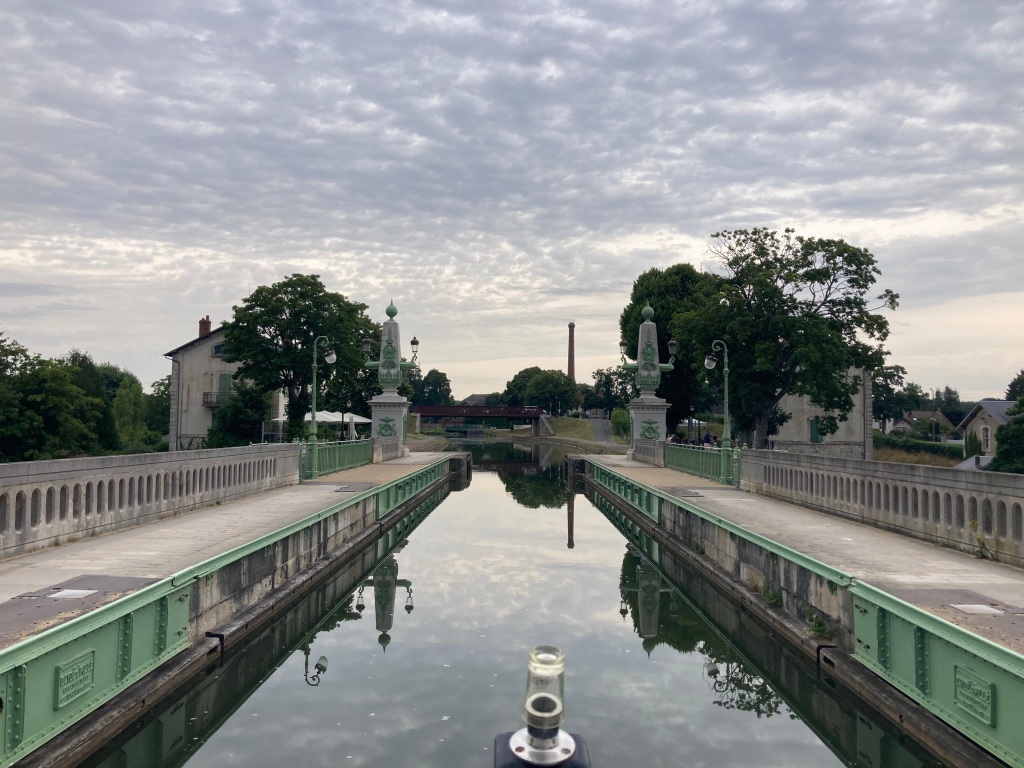
And now it is Calliope’s turn to cross, about 10 years after we walked part way across and dreamt of having our own boat. (Don’t laugh at the little upturned glass over the front flag pole holder – designed to stop spider ands wasp nests!)
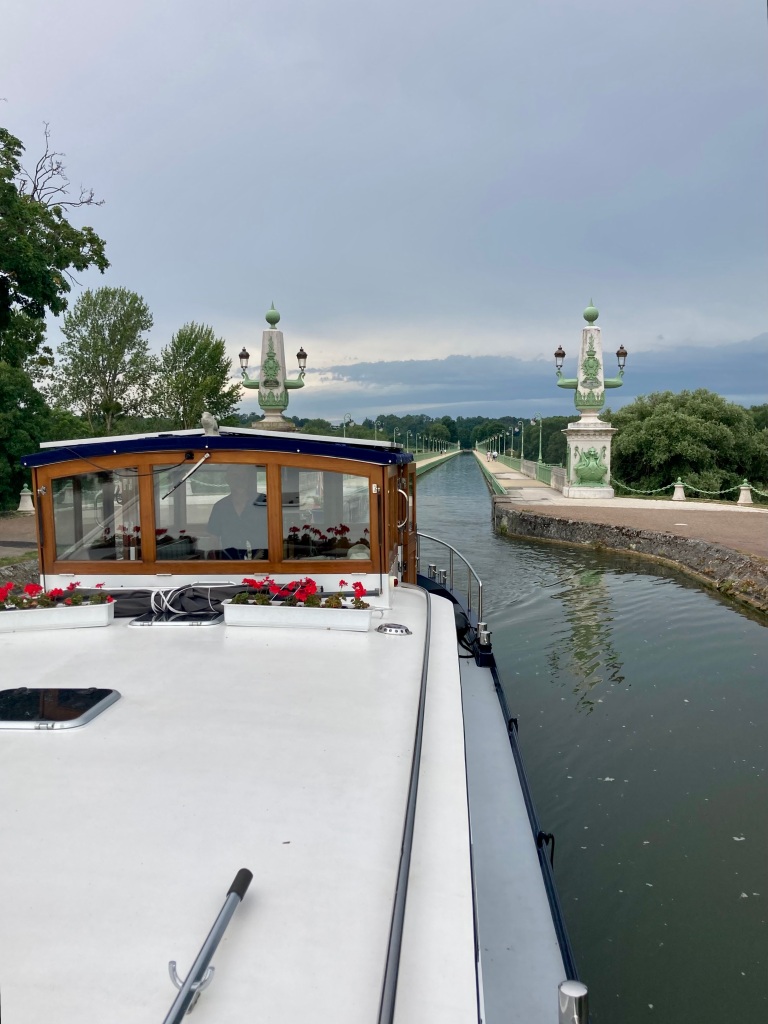
There!
We did it!
Hooray!
How much better for those old barges than having to run the gauntlet of a Loire river in flood
We kind of felt that we had arrived in Briare at this point, but this ‘new’ route to Briare from the other side off the river requires about a further five kilometres, round and above Briare, and then down to the town through a succession of locks.

The true ending of the Canal Latèral à la Loire, its 200 PK mark, is where it joins the Canal de Briare at the junction shown above.
To the left is Lock 1 going down into the town. To the right (out of the picture) is where the Canal de Briare leads North towards Paris.
Both are explored in the next blog of our 2023 adventure!